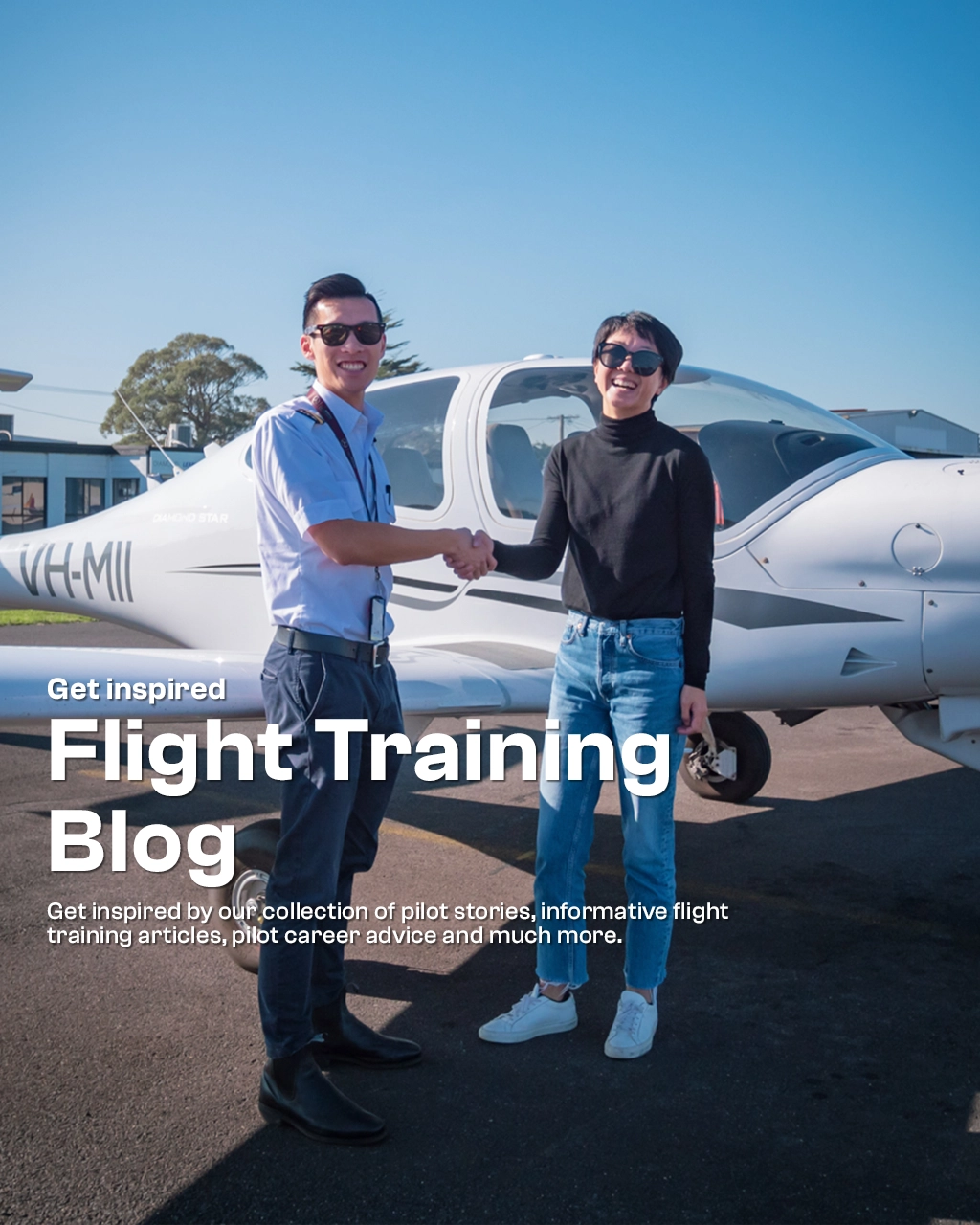
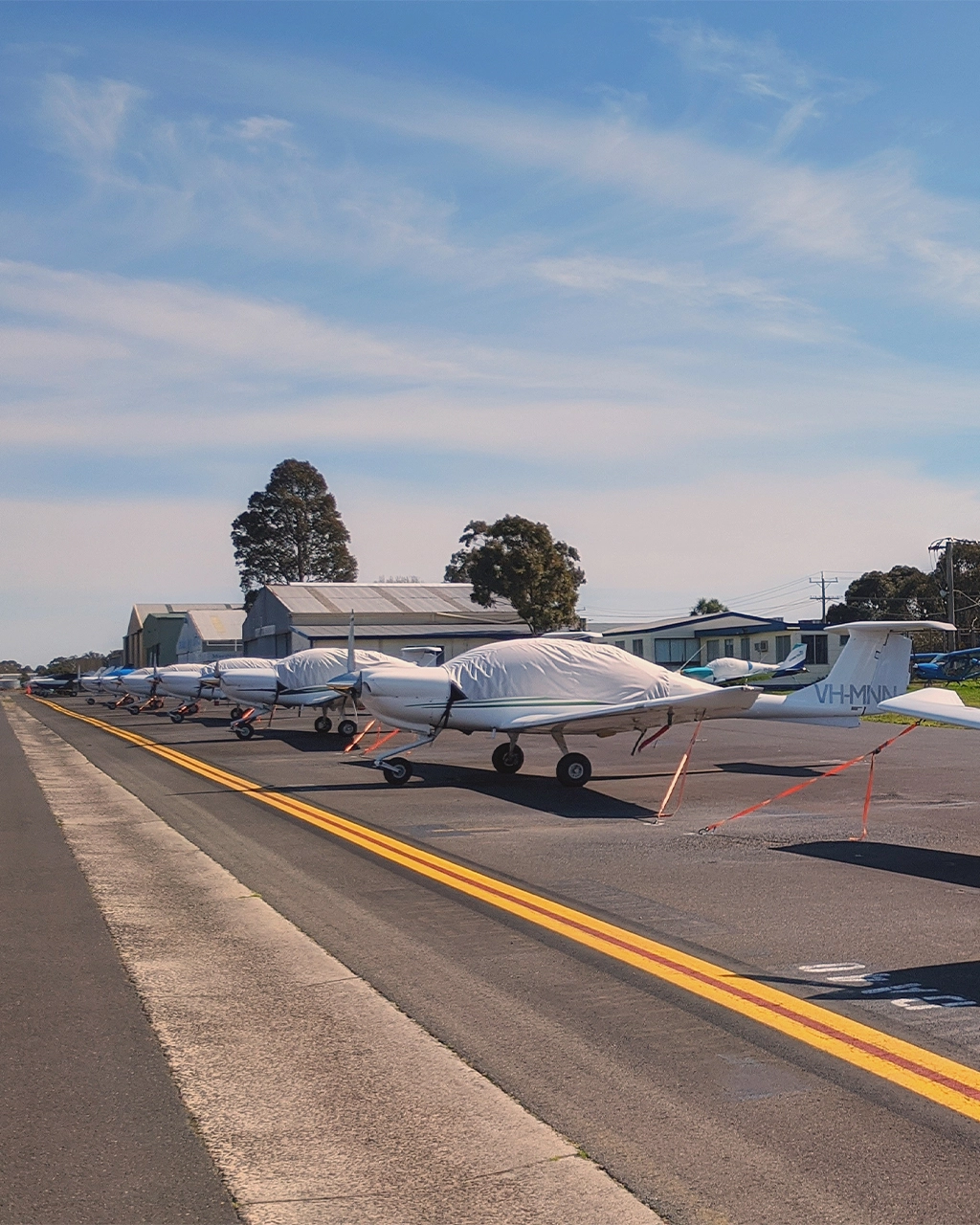
Get inspired
Flight Training Blog
Get inspired by our collection of stories. Browse articles and videos created and curated by Learn To Fly to facilitate flight training.
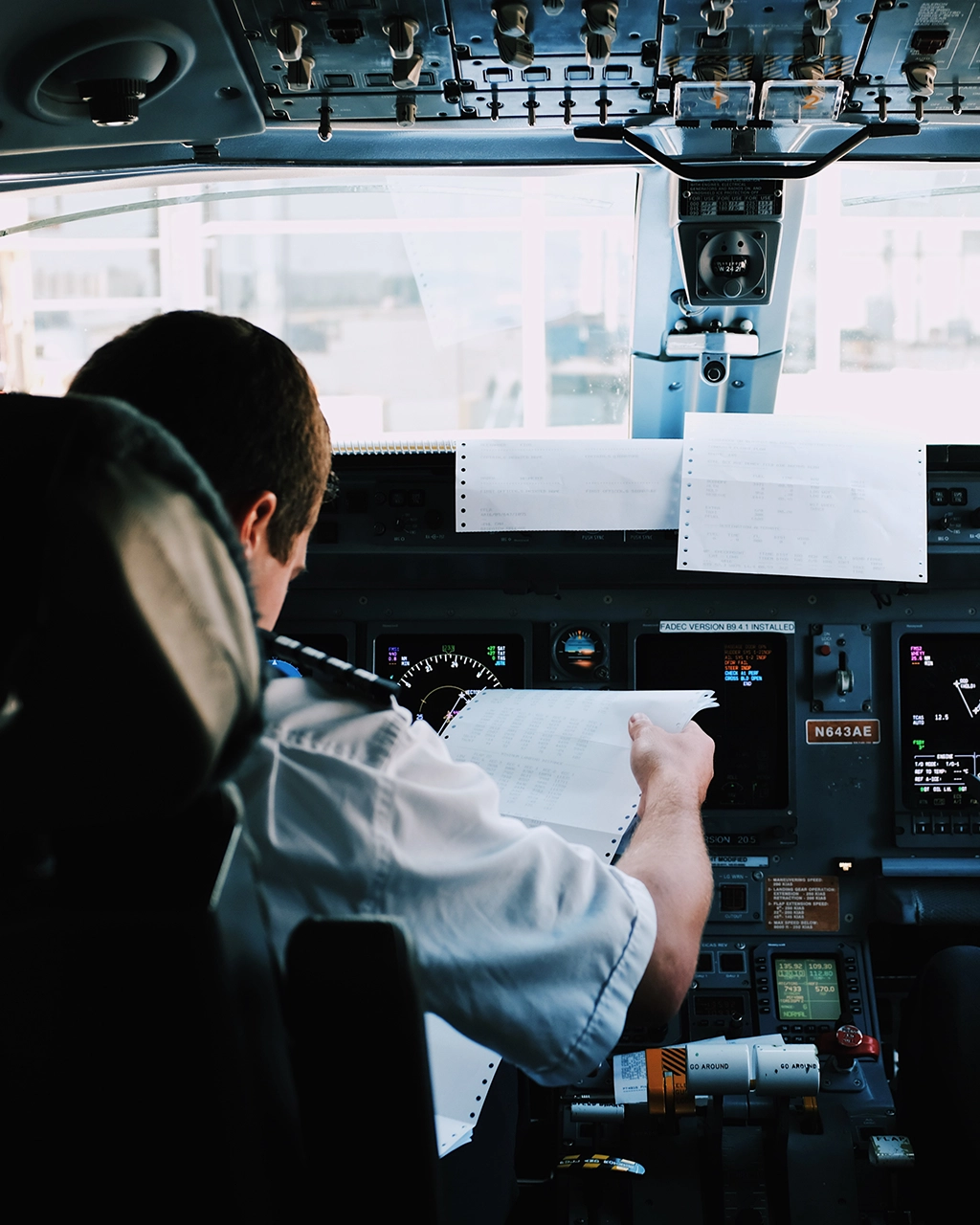
Life as an Airline Cadet: Balancing Intensive Training with Personal Well-being
June 25, 2025
The opportunity for aspiring pilots to join a cadet pilot program marks a dream come true and provides a clear route to the commercial airline...
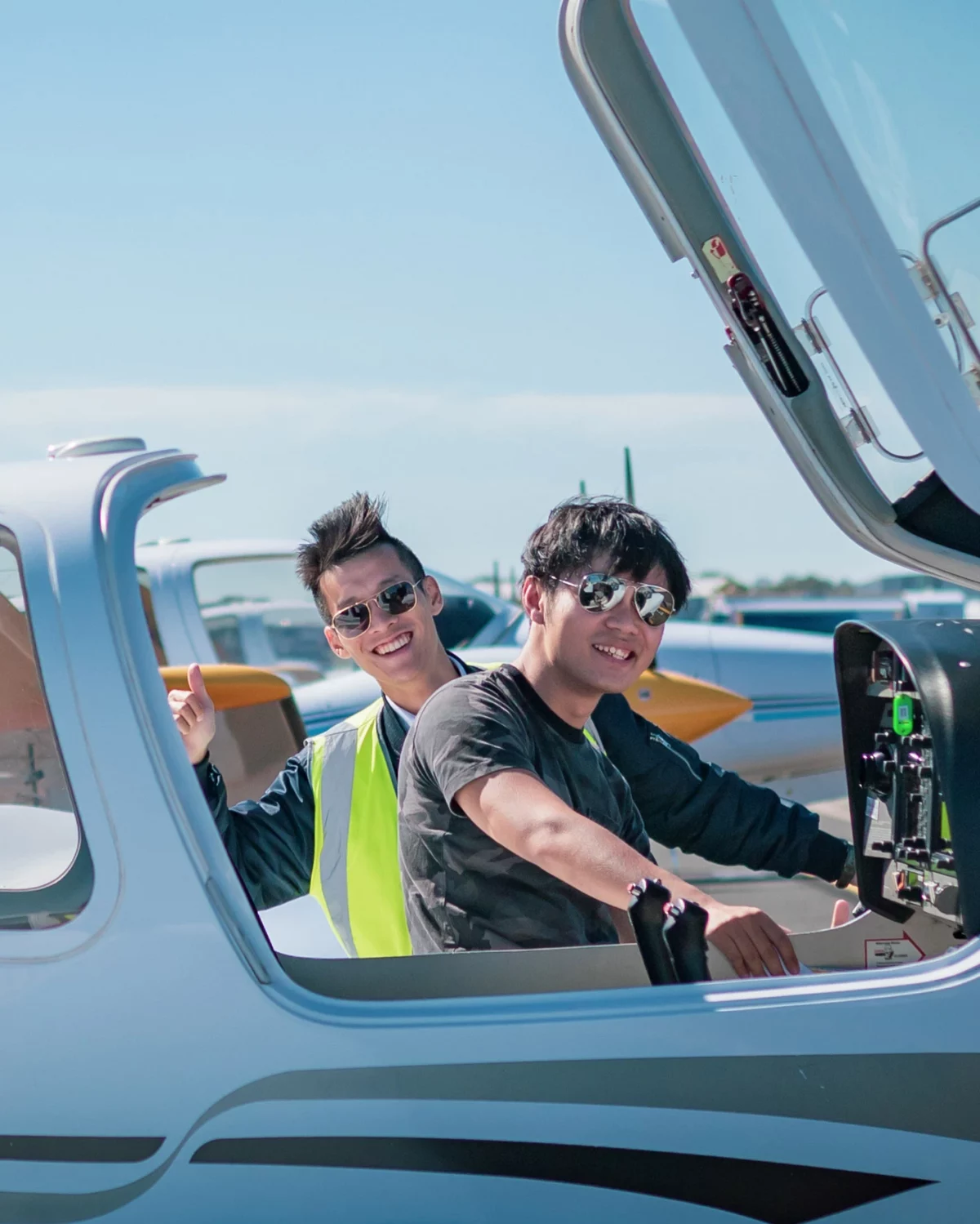
Building Industry Connections to Advance Your Pilot Career Through Networking
May 28, 2025
Technical expertise and pilot certifications remain critical in aviation, yet they alone cannot guarantee success. The most important element for Australian pilots seeking career success...
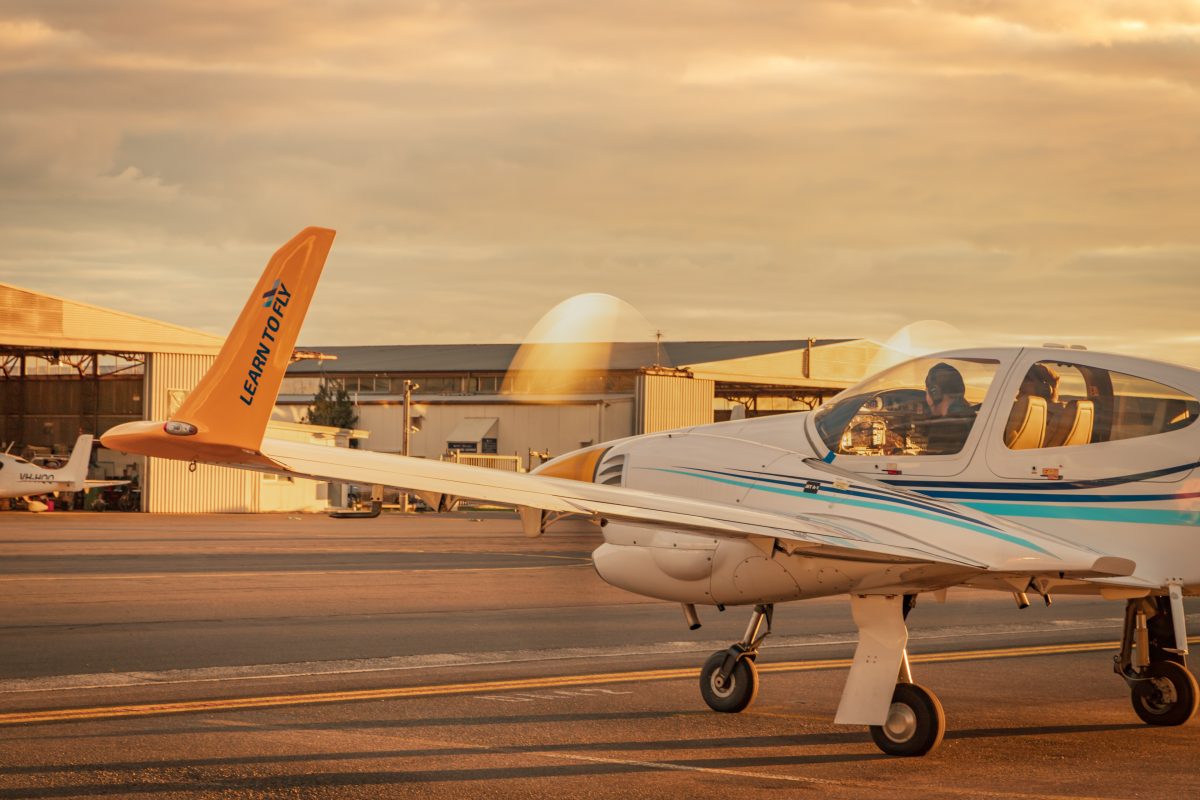
How to Choose the Right Flight School for You
April 28, 2025
Choosing the right flight school is one of the most critical decisions an aspiring pilot will make. Whether your goal is to fly recreationally or...
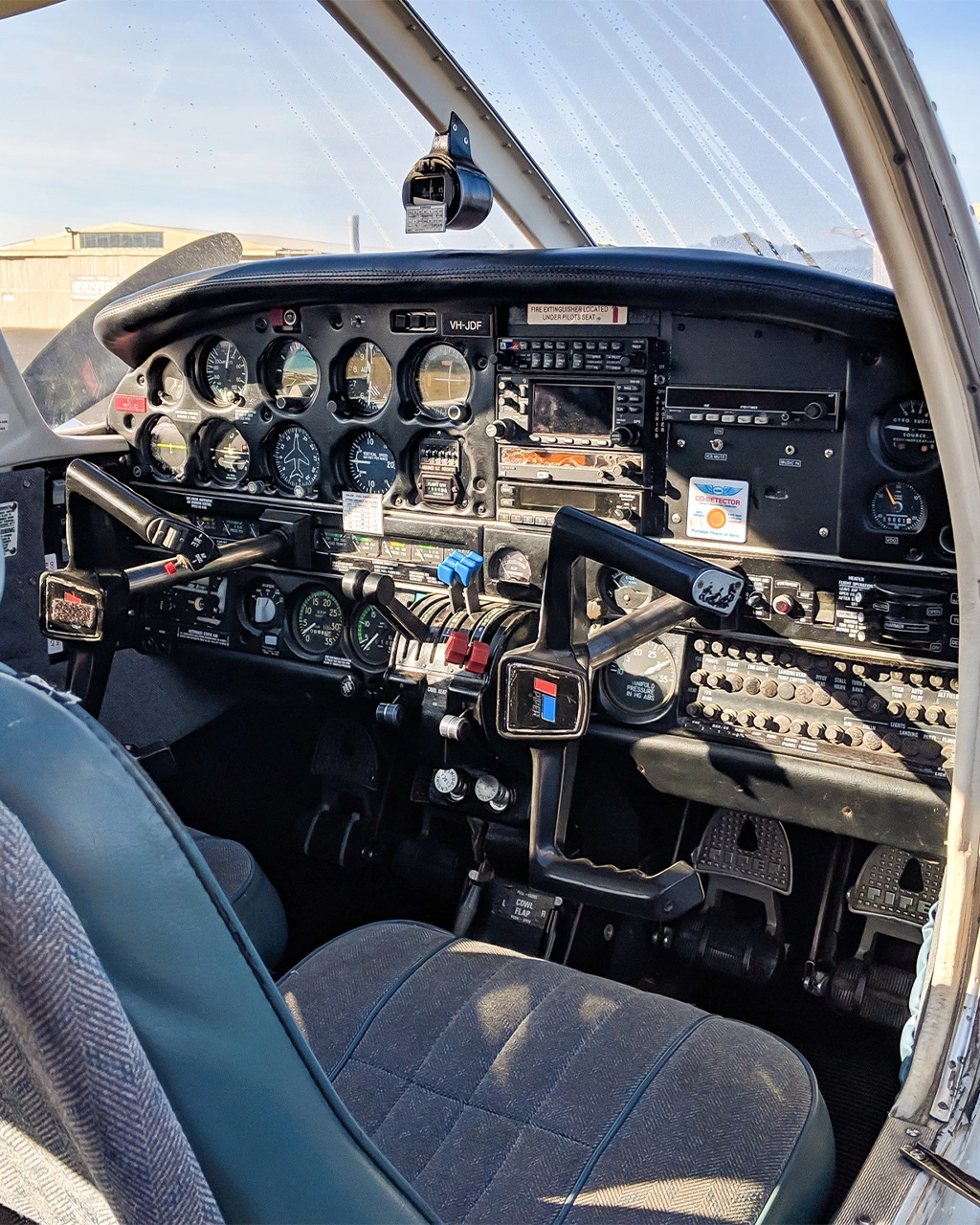
The Role of Type Ratings in Airline Pilot Careers
March 20, 2025
For pilots aspiring to fly for an airline, obtaining a type rating is a crucial step in career progression. A type rating is an additional...
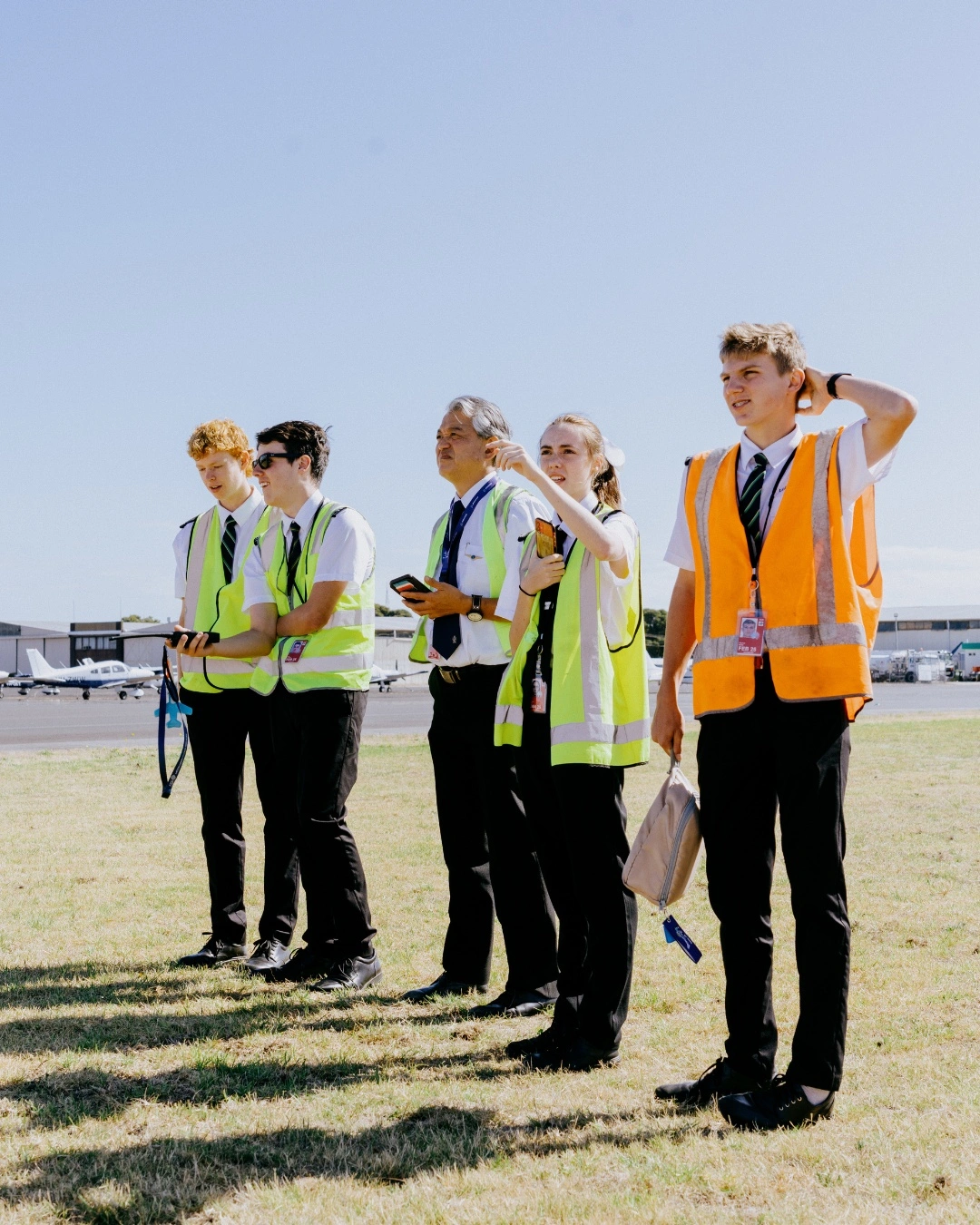
Building a Strong Foundation for Future Career Development as a Pilot
February 26, 2025
A career as a pilot is both exciting and demanding, requiring a solid foundation of skills, knowledge, and experience. Whether you’re just starting your aviation...
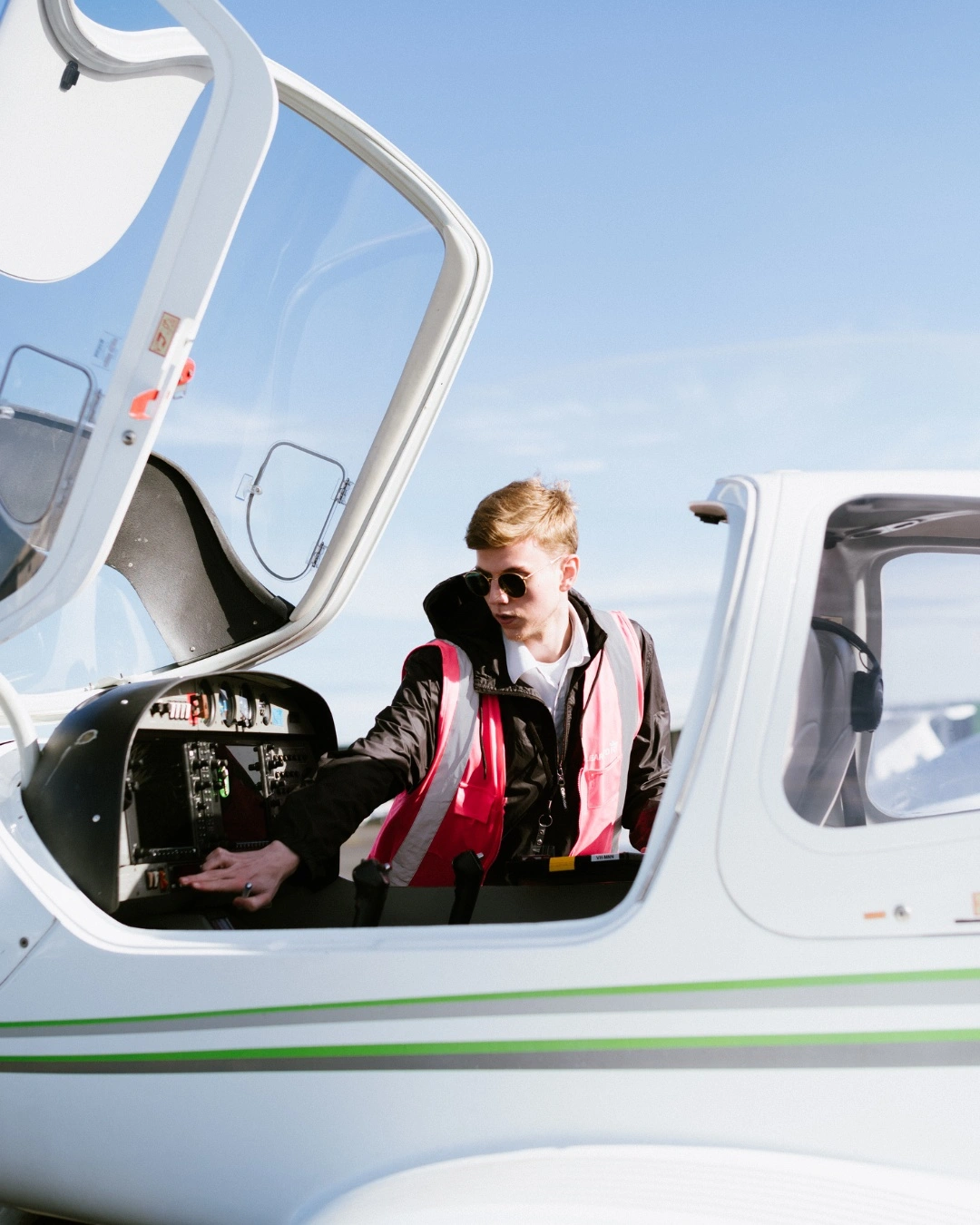
Aircraft Storage and Maintenance Tips for Recreational Aviators
January 09, 2025
Owning or sharing a private plane for recreational flying is a rewarding experience, offering freedom and adventure. However, to ensure your aircraft is always in...
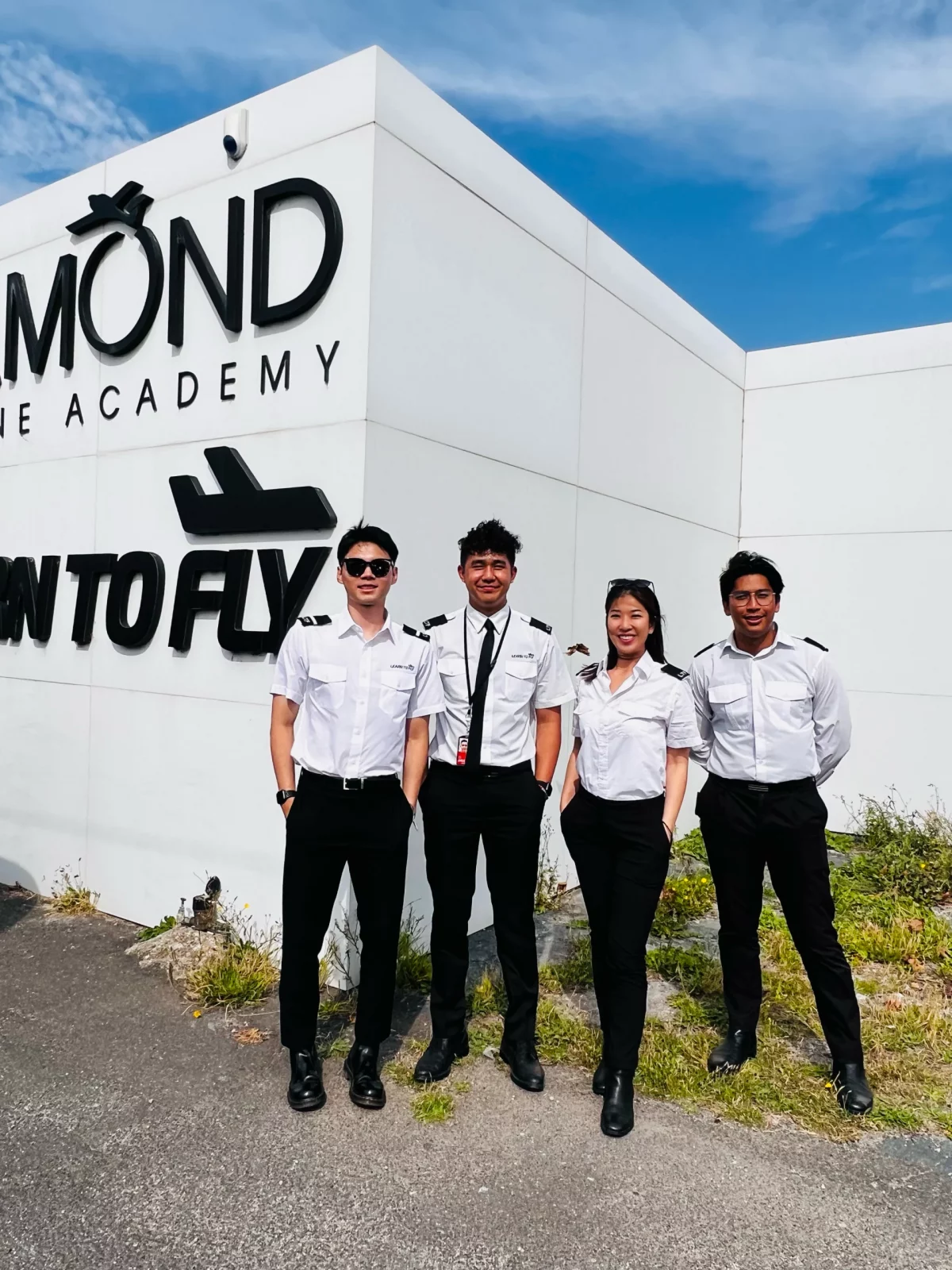
The Impact of Culture on CRM Training
December 13, 2024
Crew Resource Management (CRM) training is one of the most important aspects of aviation safety, aimed at bettering communication, decision-making, and cooperation among members of...
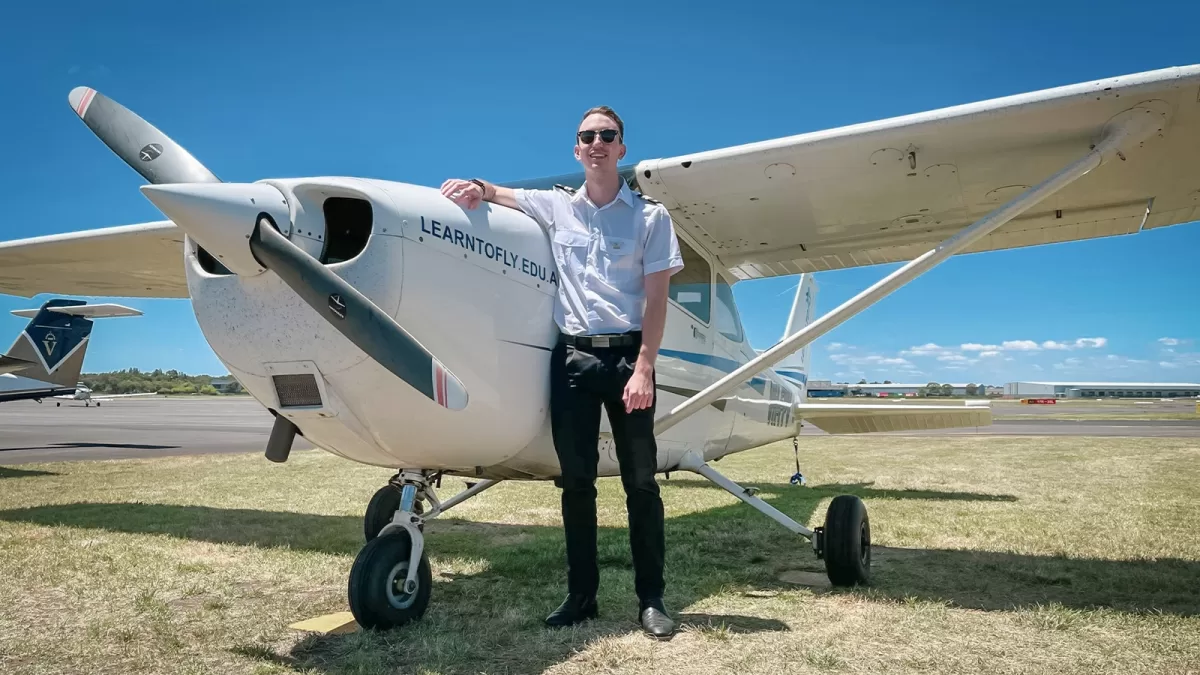
Understanding the Aviation Medical Exam for a Private Pilot License in Australia
November 19, 2024
Obtaining a private pilot license in Australia is a rewarding journey, especially for international students who bring diverse experiences to the skies. For those in...
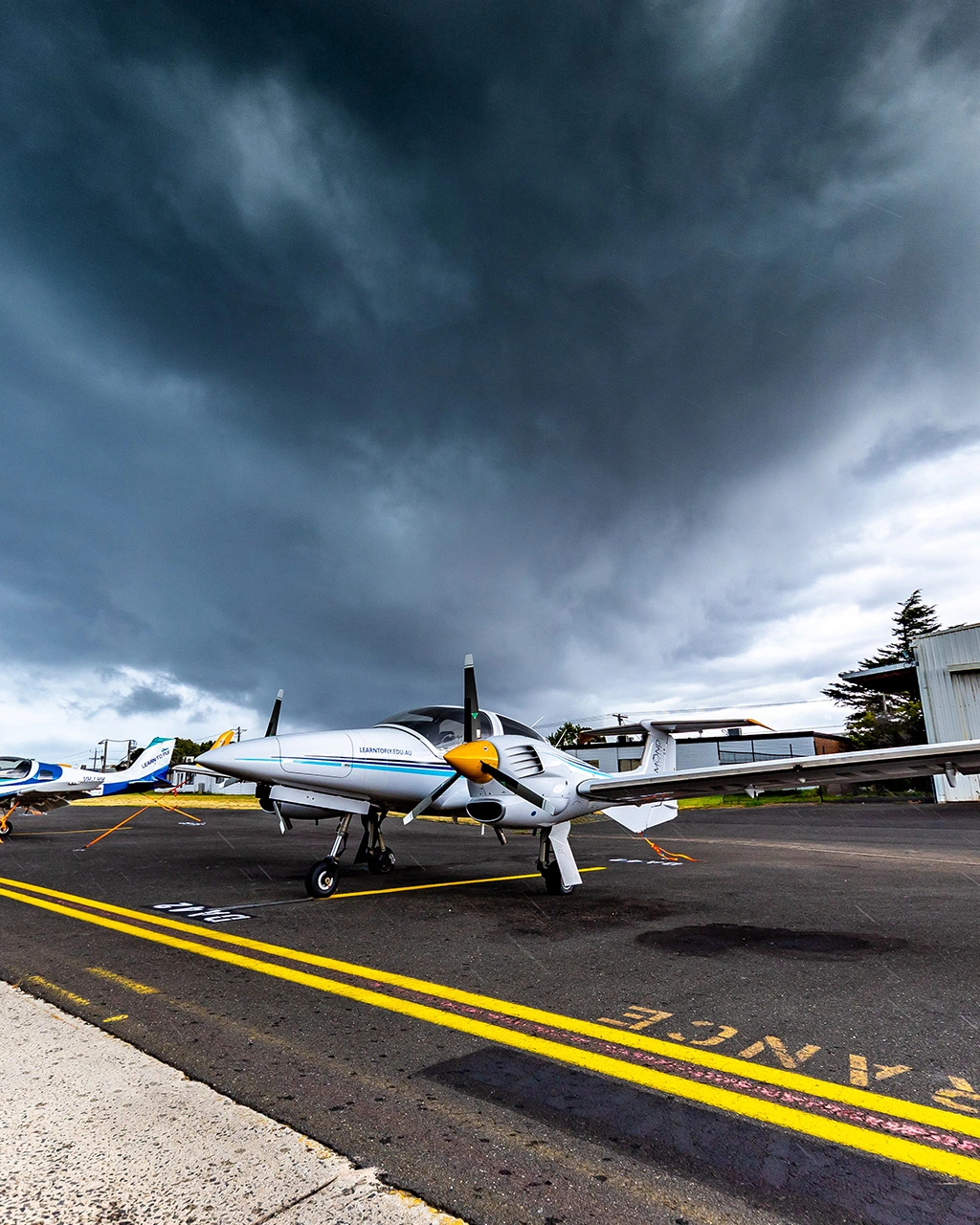
Identifying hazardous weather as an aviator
October 10, 2024
Among all the important components in aviation, weather is one of the most critical. It affects not just the safety of a flight but also...

Ratings and endorsements commercial pilots can secure
September 18, 2024
There is often strong competition among commercial pilots in the aviation industry and many will pursue additional ratings and endorsements to stand out and enhance...

Life as an Airline Cadet: Balancing Intensive Training with Personal Well-being
June 25, 2025
The opportunity for aspiring pilots to join a cadet pilot program marks a dream come true and provides a clear route to the commercial airline...

Building Industry Connections to Advance Your Pilot Career Through Networking
May 28, 2025
Technical expertise and pilot certifications remain critical in aviation, yet they alone cannot guarantee success. The most important element for Australian pilots seeking career success...

How to Choose the Right Flight School for You
April 28, 2025
Choosing the right flight school is one of the most critical decisions an aspiring pilot will make. Whether your goal is to fly recreationally or...

The Role of Type Ratings in Airline Pilot Careers
March 20, 2025
For pilots aspiring to fly for an airline, obtaining a type rating is a crucial step in career progression. A type rating is an additional...

Building a Strong Foundation for Future Career Development as a Pilot
February 26, 2025
A career as a pilot is both exciting and demanding, requiring a solid foundation of skills, knowledge, and experience. Whether you’re just starting your aviation...

Aircraft Storage and Maintenance Tips for Recreational Aviators
January 09, 2025
Owning or sharing a private plane for recreational flying is a rewarding experience, offering freedom and adventure. However, to ensure your aircraft is always in...

The Impact of Culture on CRM Training
December 13, 2024
Crew Resource Management (CRM) training is one of the most important aspects of aviation safety, aimed at bettering communication, decision-making, and cooperation among members of...

Identifying hazardous weather as an aviator
October 10, 2024
Among all the important components in aviation, weather is one of the most critical. It affects not just the safety of a flight but also...
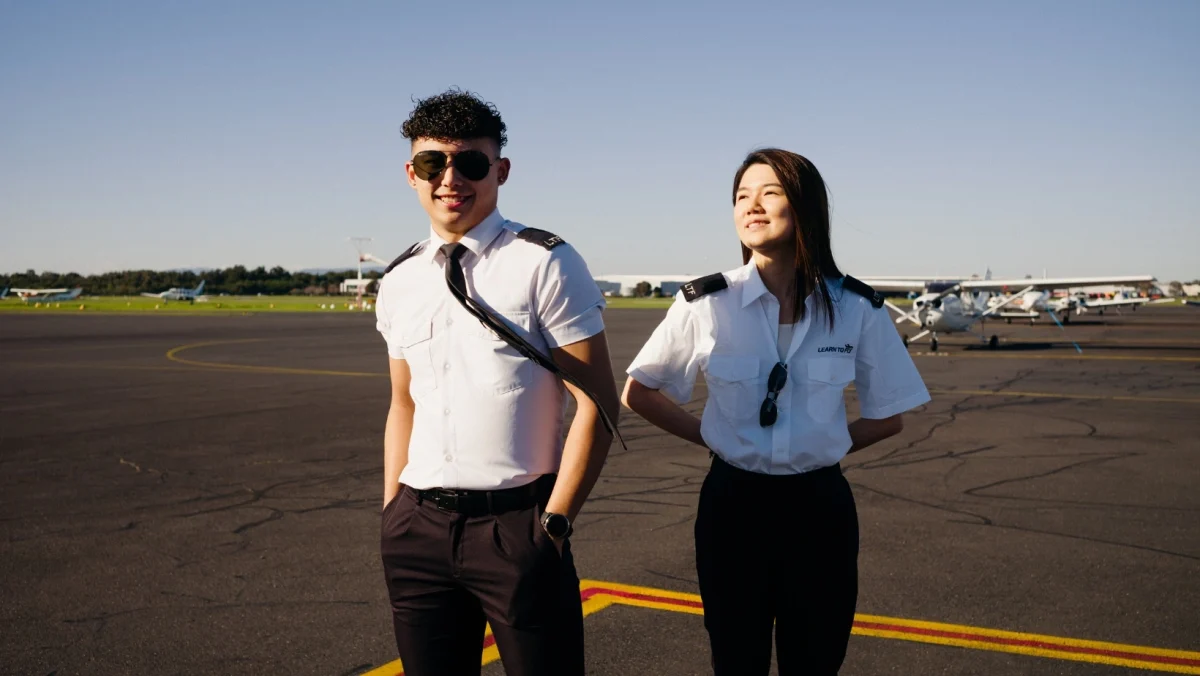
Career Development and Professionalism in Aviation
June 12, 2024
Whether aspiring to become a pilot, air traffic controller, aviation manager, or any other aviation professional, cultivating a mindset of continuous learning and professionalism is...

Financing Your Flying: Gaining Your Commercial Pilot License
October 23, 2023
Obtaining your Commercial Pilot License (CPL) in Australia is one of the best pathways to a rewarding career in aviation. Undertaking flight training overseas can...
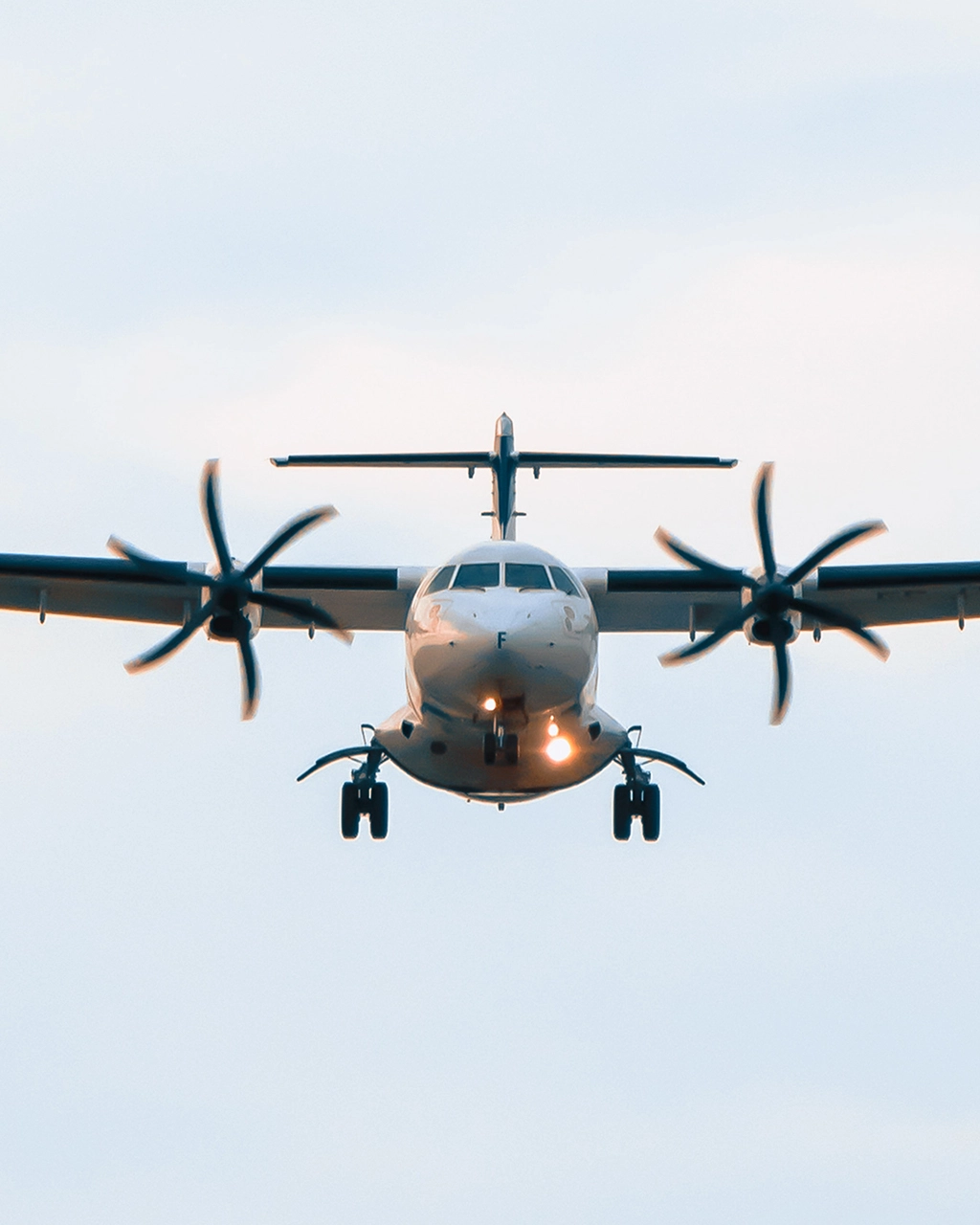
Preparing For Airline Pilot Interviews – Student Pilot Journal Part 4
April 07, 2021
Student Pilot Mickey Wu travelled from Taiwan to Melbourne to train with us at Learn To Fly Melbourne. Despite not being able to fly for...
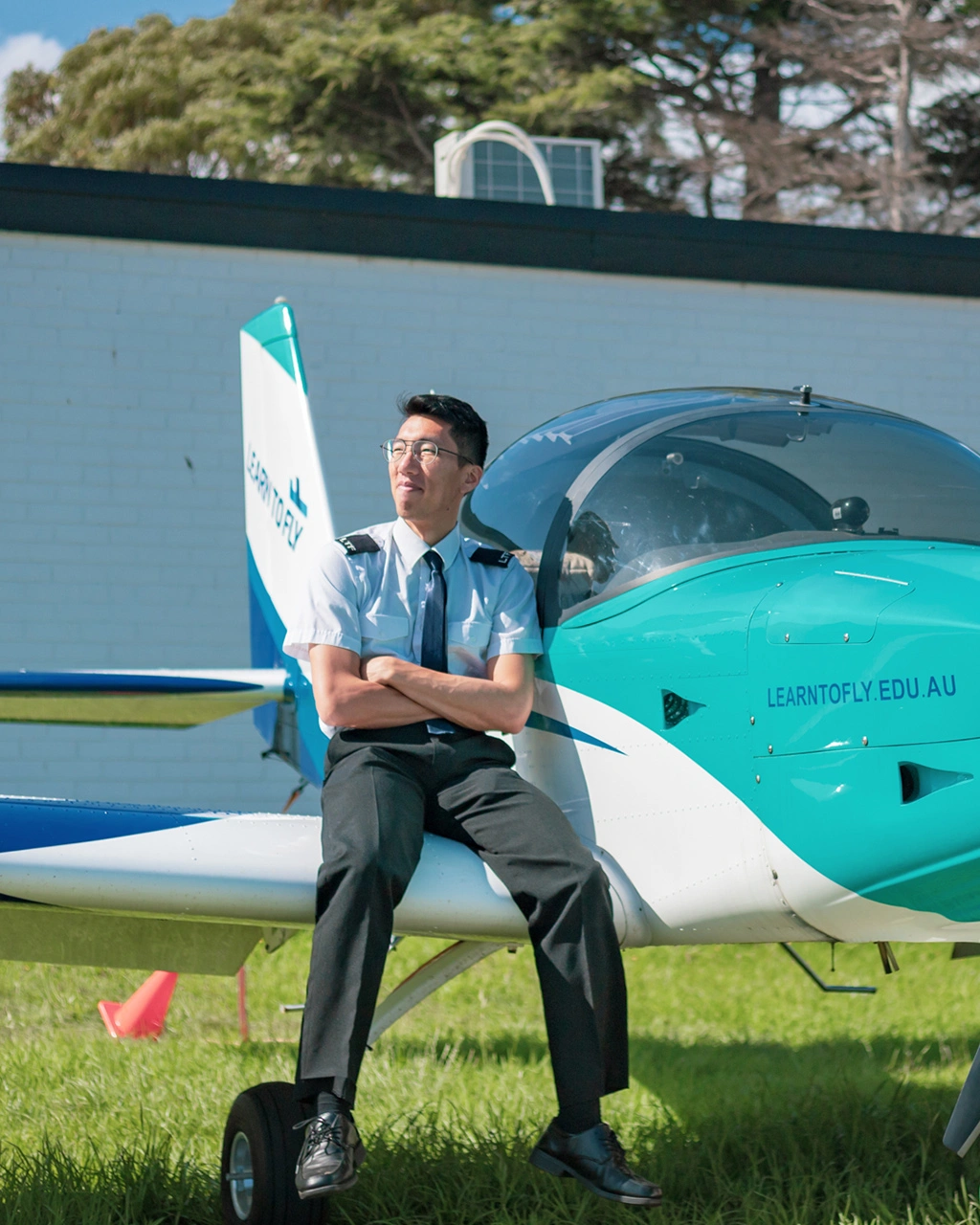
Some Tips For Learning How To Fly – Student Pilot Journal Part 3
March 10, 2021
Student Pilot Mickey Wu travelled from Taiwan to Melbourne to learn how to fly. He returned home to Taipei having completed a CPL, MECIR, Multi-Engine...
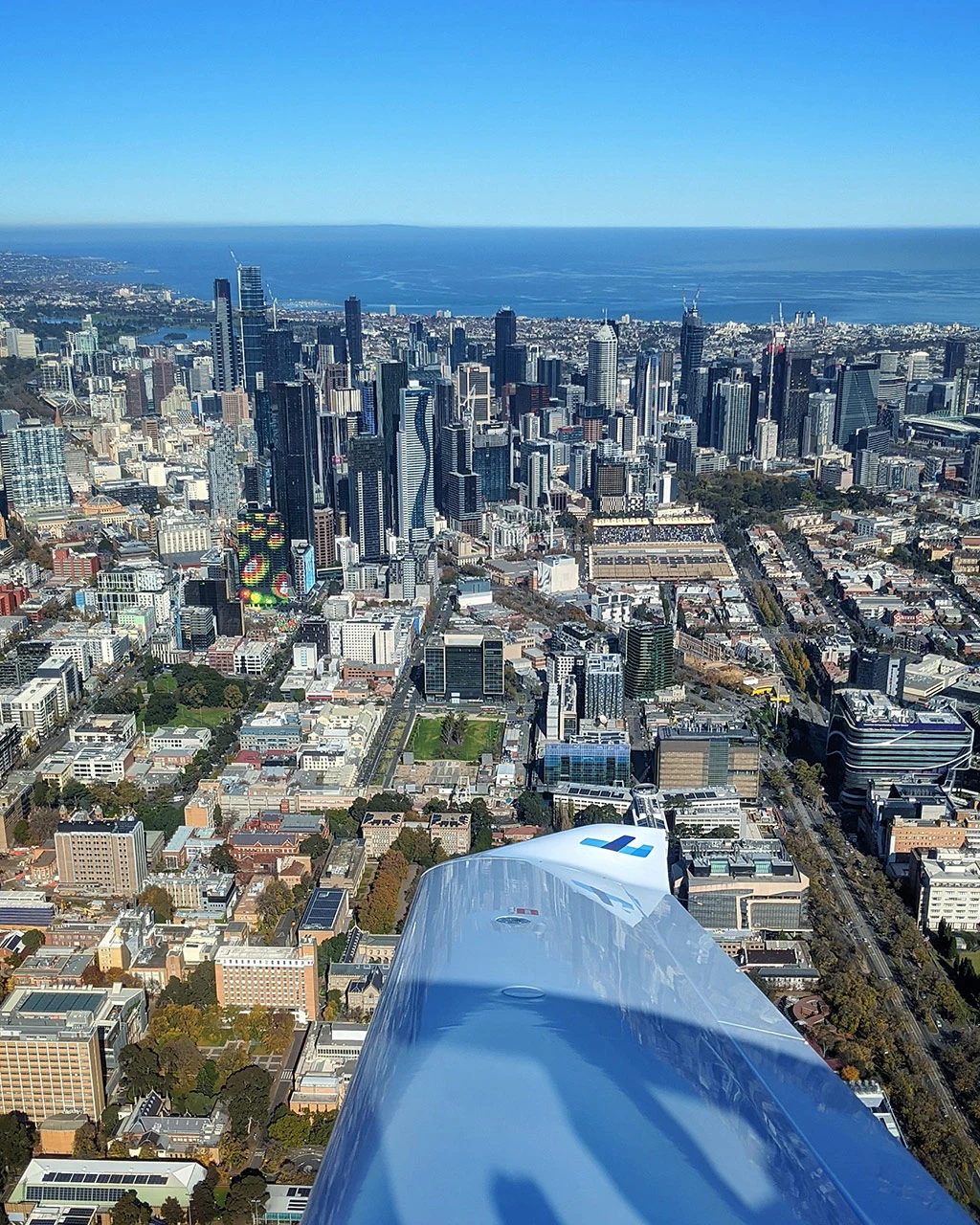
Training with a Melbourne Flight School – Student Pilot Journal Part 2
February 12, 2021
Student Pilot Mickey Wu travelled from Taiwan to learn to fly with a Melbourne flight school. He has now returned home after completing his CPL,...
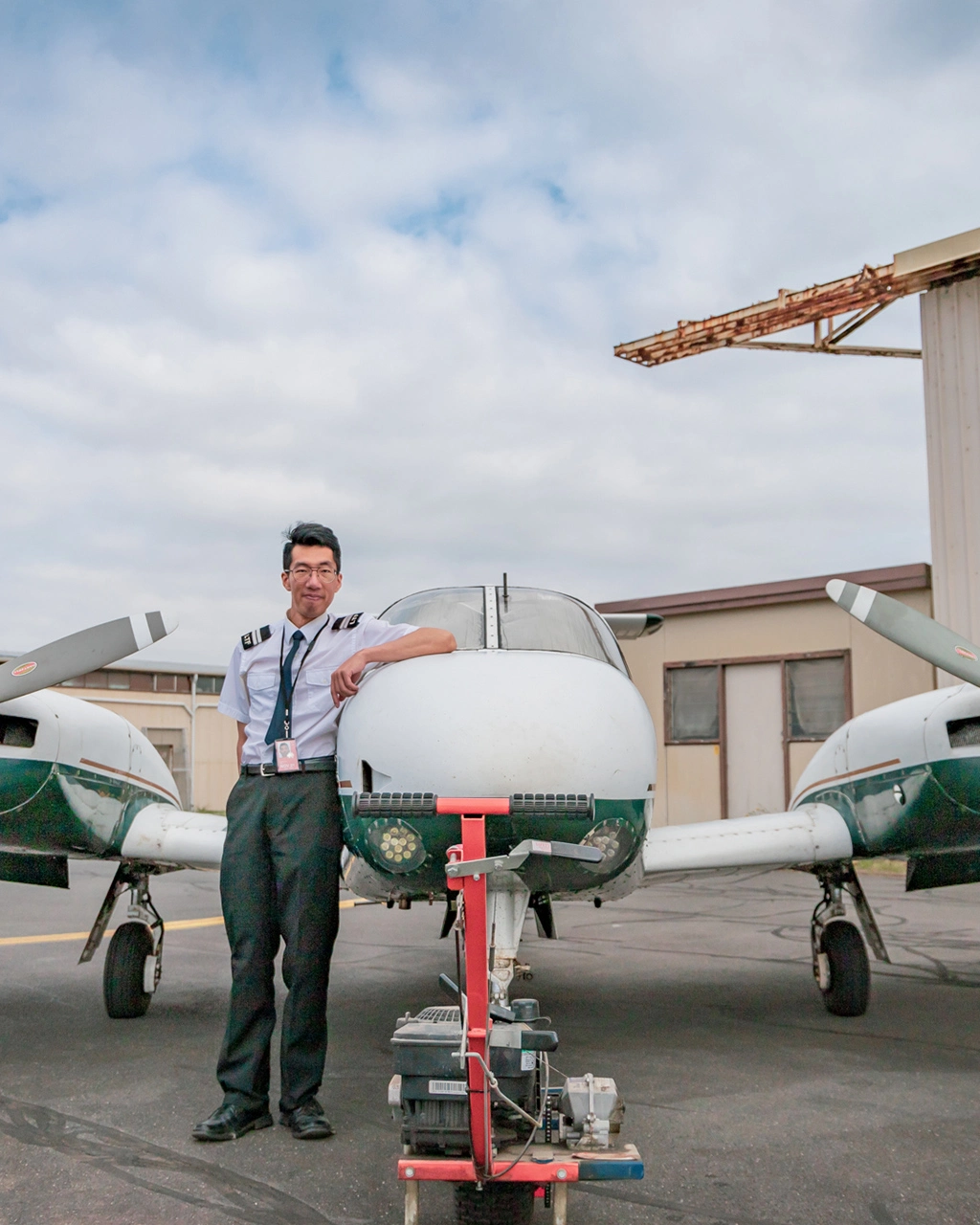
Starting Flight Training in Melbourne – Student Pilot Journal Part 1
January 21, 2021
Taiwanese student pilot Mickey Wu has just returned home after an amazing experience training with us at Learn To Fly. Mickey’s achievements are inspirational to...
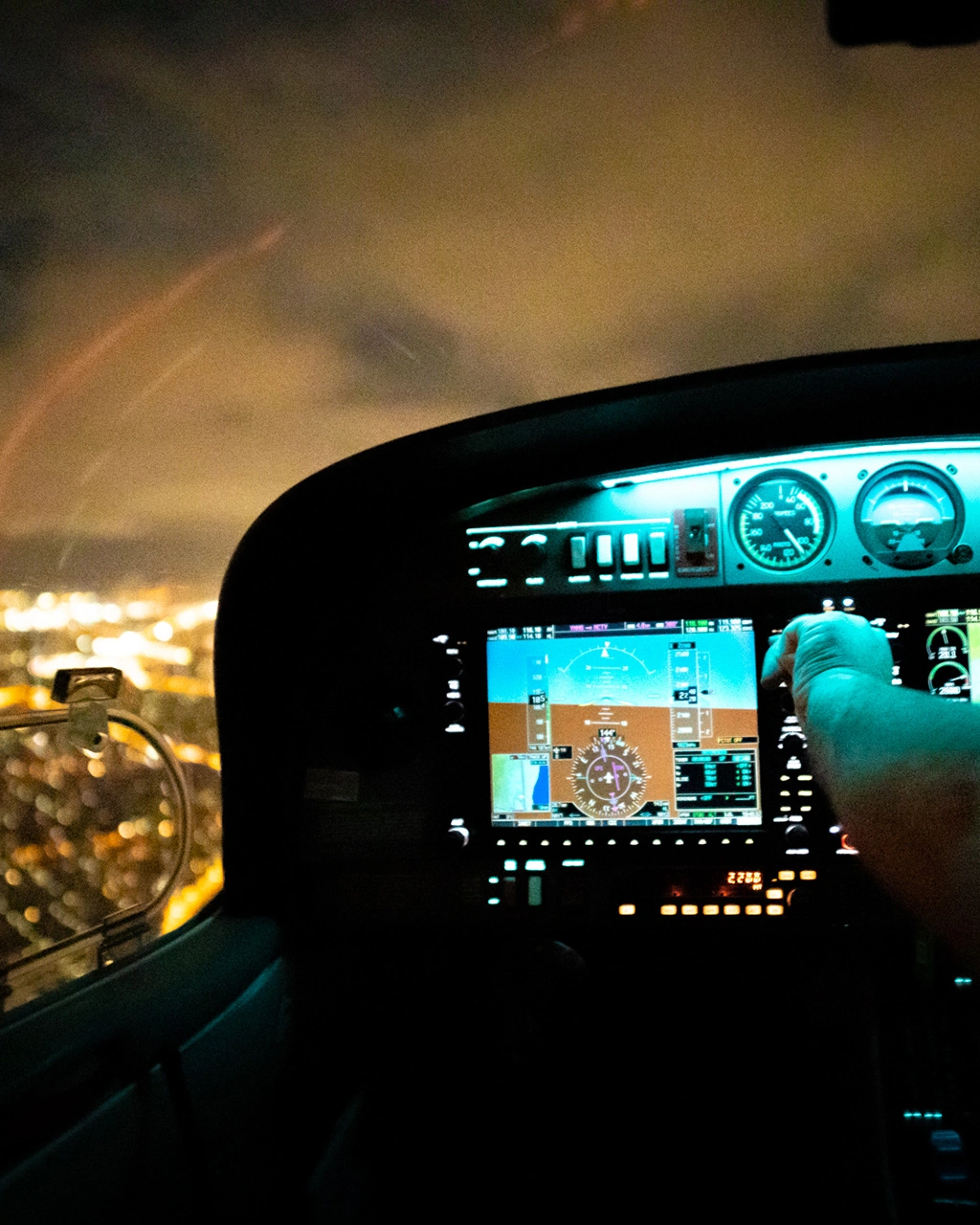
Instrument Rating (IFR) Flight Training – A Whole New World Of Flying
December 23, 2020
We recently published a blog from airline Second Officer Vincent Mok, who talked about how important completing an Instrument Rating (IFR) flight training course was...
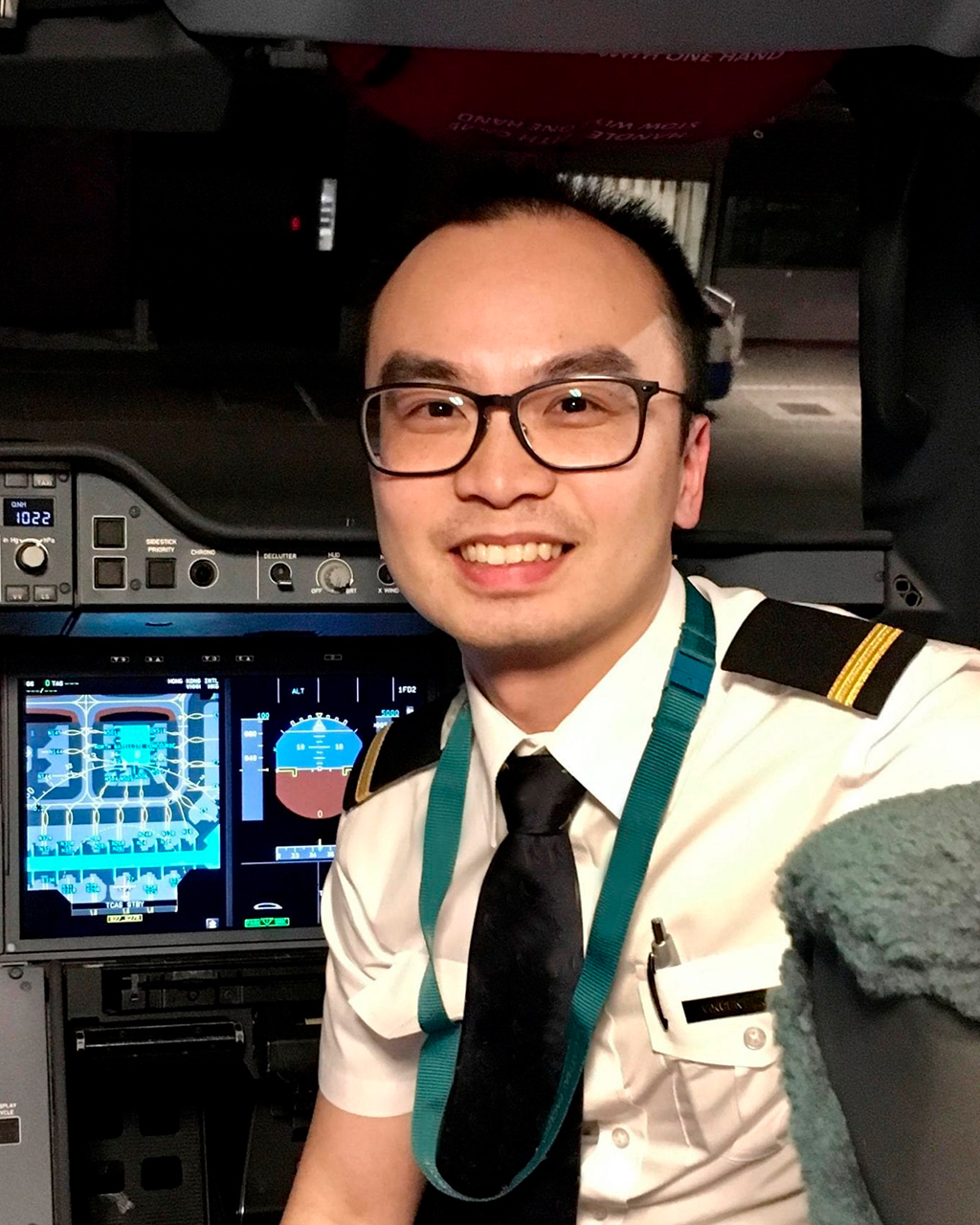
Resilience – An Airline Pilot’s COVID Pandemic Experience
November 17, 2020
We've all seen a lot of news about how the COVID pandemic has affected airlines and airline pilots. Guest blogger and Second Officer Vincent Mok...
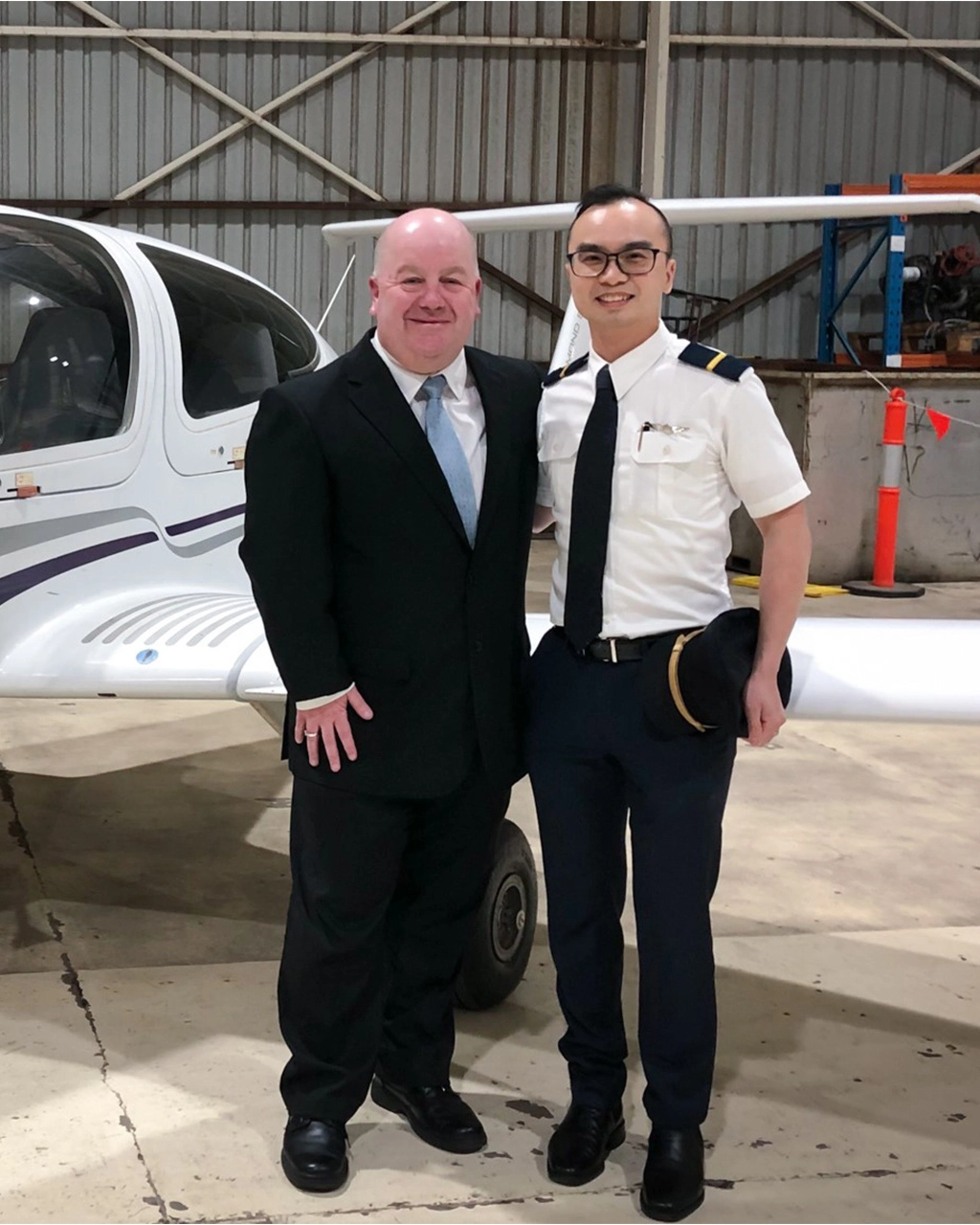
An Airline Cadet Pilot’s Road To The Line
September 10, 2020
Now flying an Airbus A350 for a major international airline, Second Officer Vincent Mok looks back on his airline cadet pilot journey and shares some...

Airline Pilot Guest Blog – Why You Should Consider An Instrument Rating Course
August 12, 2020
Now flying an Airbus A350 for a major international airline, Second Officer Vincent Mok discusses why an Instrument Rating course is so important. He also...
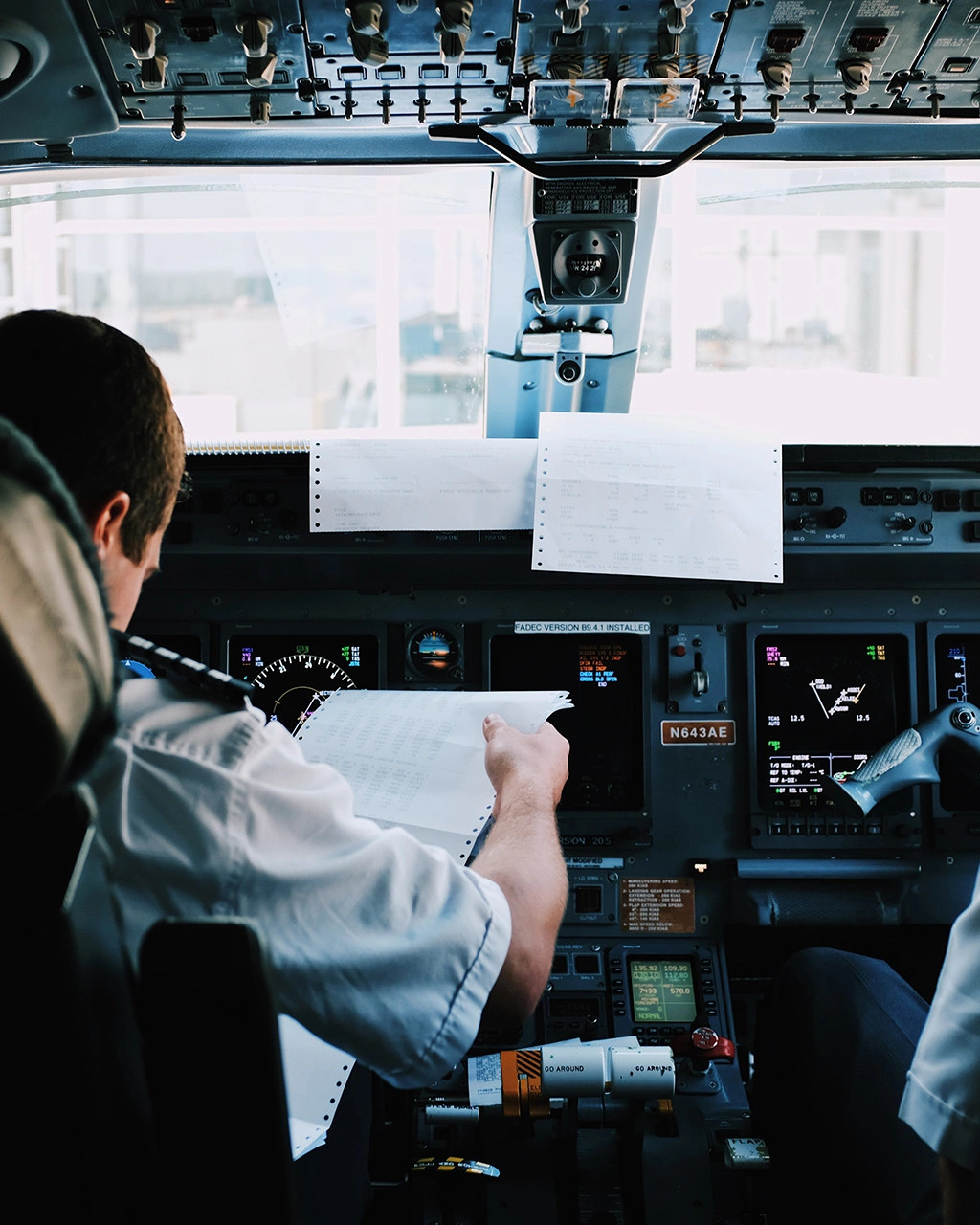
Airline Pilot Guest Blog – Looking Back at Cadet Pilot Training
July 07, 2020
Now flying an Airbus A350 for a major international airline, Second Officer Vincent Mok looks back on his cadet pilot training and discusses some of...

Life is Short. Get Your Pilot Licence.
October 30, 2019
Challenges aren’t stopping David from fulfilling his pilot dream. At 71 years young, he’s studying a Recreational Pilot Licence at Learn To Fly Melbourne. David,...
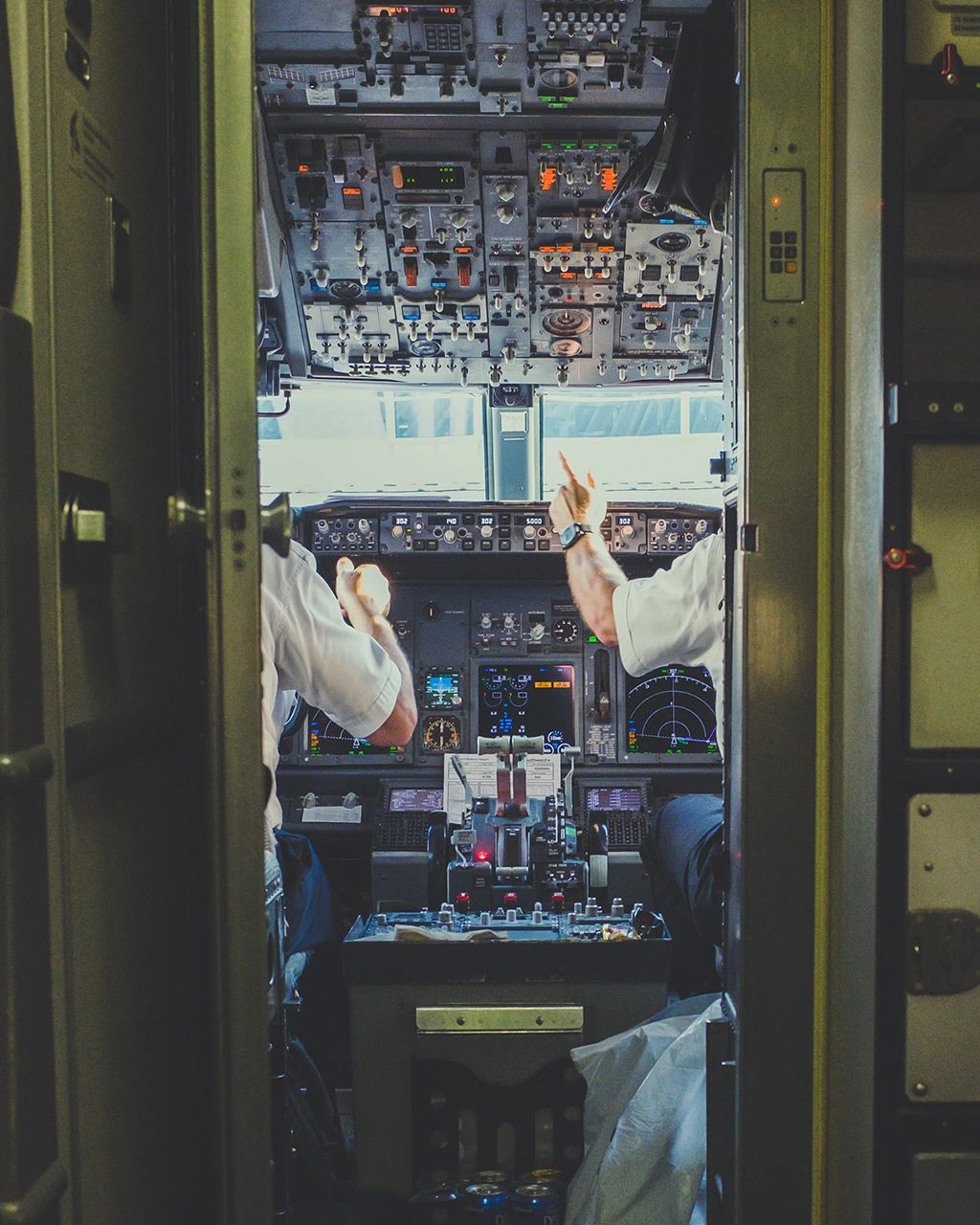
What to Expect in a Cadet Pilot Interview
March 29, 2022
Securing a cadet pilot position can be difficult, even for skilled pilots with flight experience. The cadet pilot interview a very competitive process, designed to...
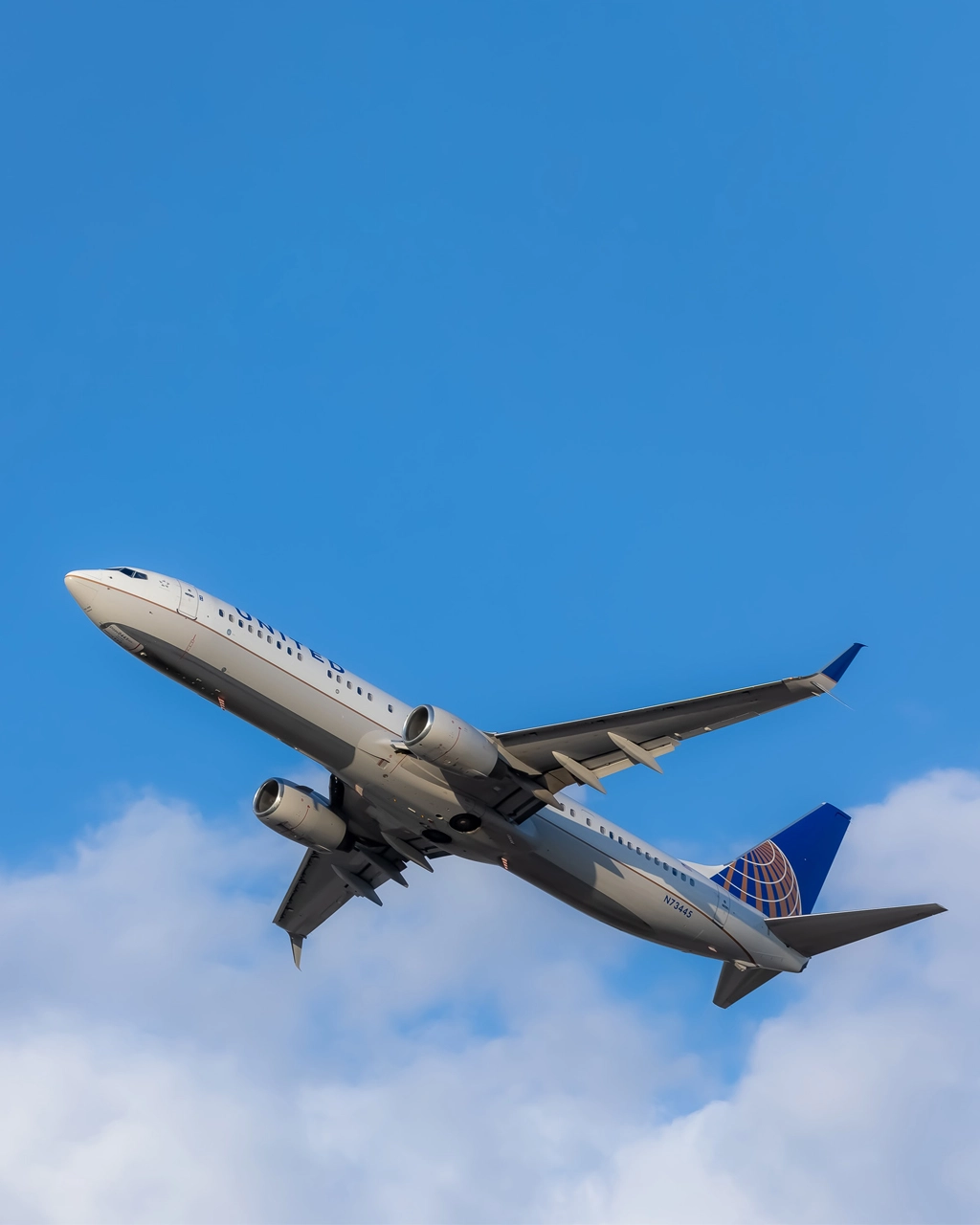
US Airline Jobs for Australian Pilots – What Are the Pilot Prerequisites?
February 17, 2022
Becoming an airline pilot is the ultimate dream for many people thinking about a career in aviation. Being a pilot in Australia, many have found...
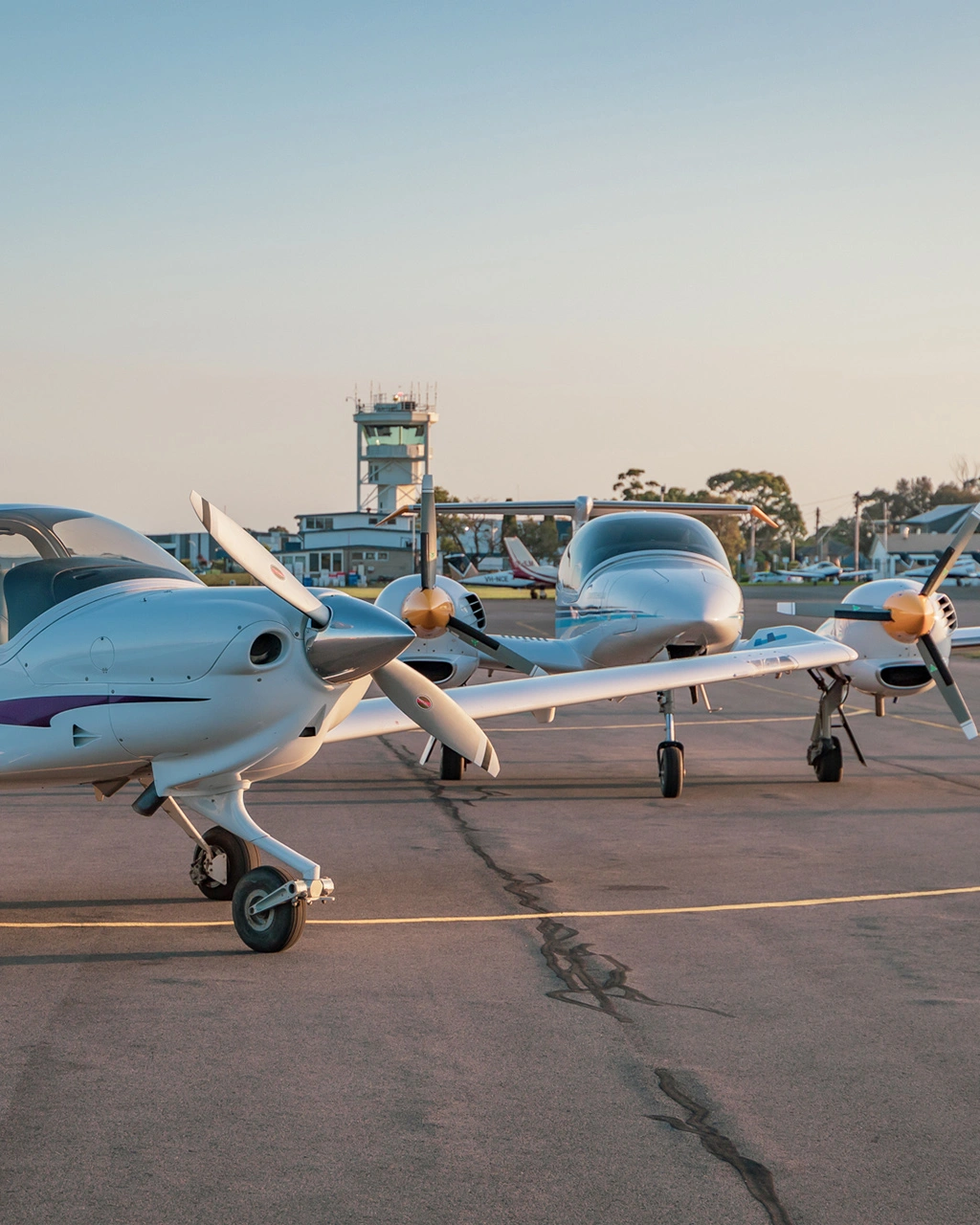
Why Should You Do Your Flight Training With Learn To Fly Melbourne?
August 08, 2021
Welcome to Learn To Fly Flight Training. Our goal is to make your pilot journey as simple as possible, so you focus on the enjoyment...

Preparing For Airline Pilot Interviews – Student Pilot Journal Part 4
April 07, 2021
Student Pilot Mickey Wu travelled from Taiwan to Melbourne to train with us at Learn To Fly Melbourne. Despite not being able to fly for...

An Airline Cadet Pilot’s Road To The Line
September 10, 2020
Now flying an Airbus A350 for a major international airline, Second Officer Vincent Mok looks back on his airline cadet pilot journey and shares some...

Online Airline Interview Preparation Course
April 02, 2020
Our highly successful Airline Interview Coaching Session is now available as an online airline interview preparation course! At Learn To Fly we are committed to...
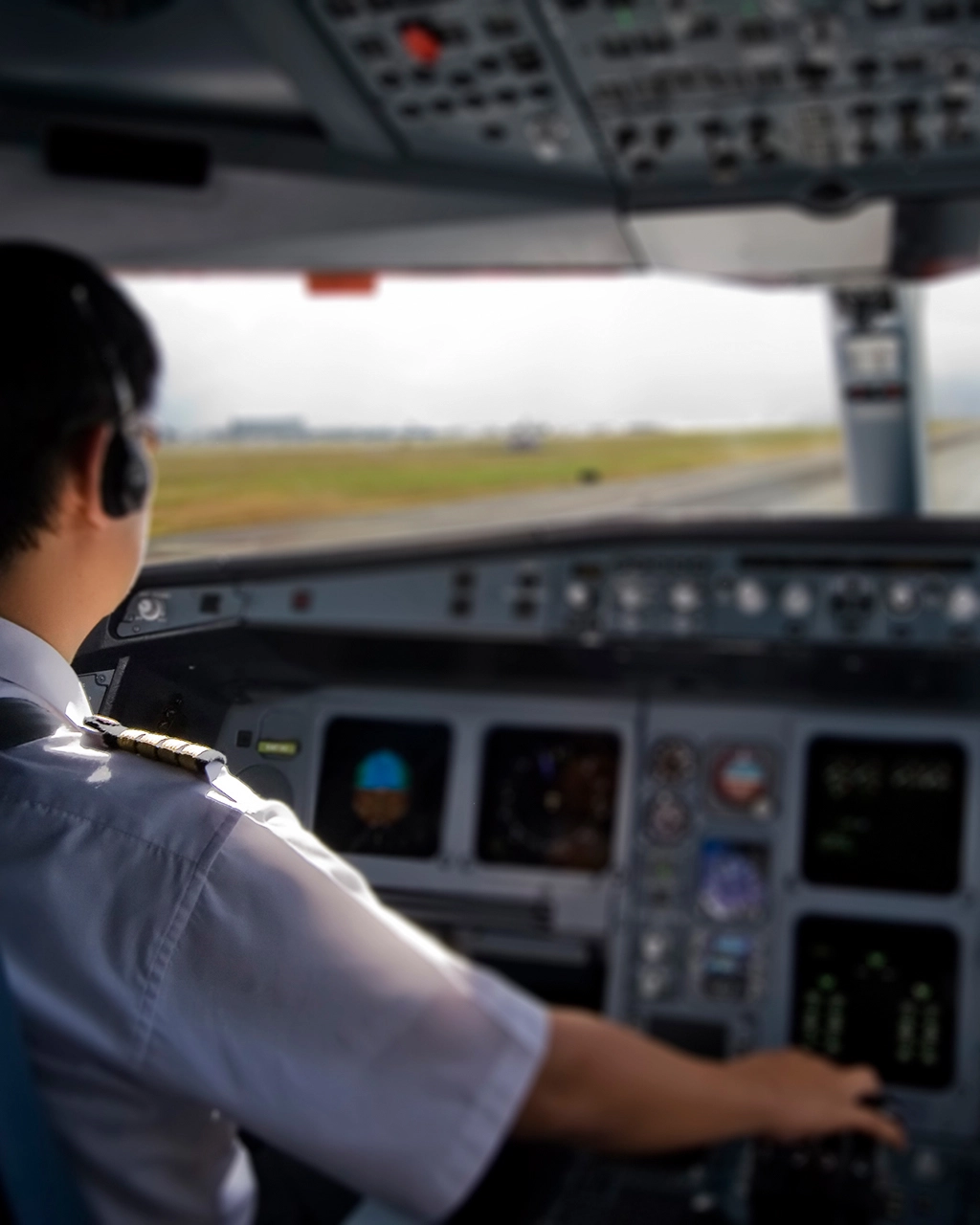
How Do Airlines Select Cadet Pilots?
November 09, 2019
What are airlines looking for when they select their cadet pilots? There are more airline cadet pilot opportunities than ever before, but competition is still...
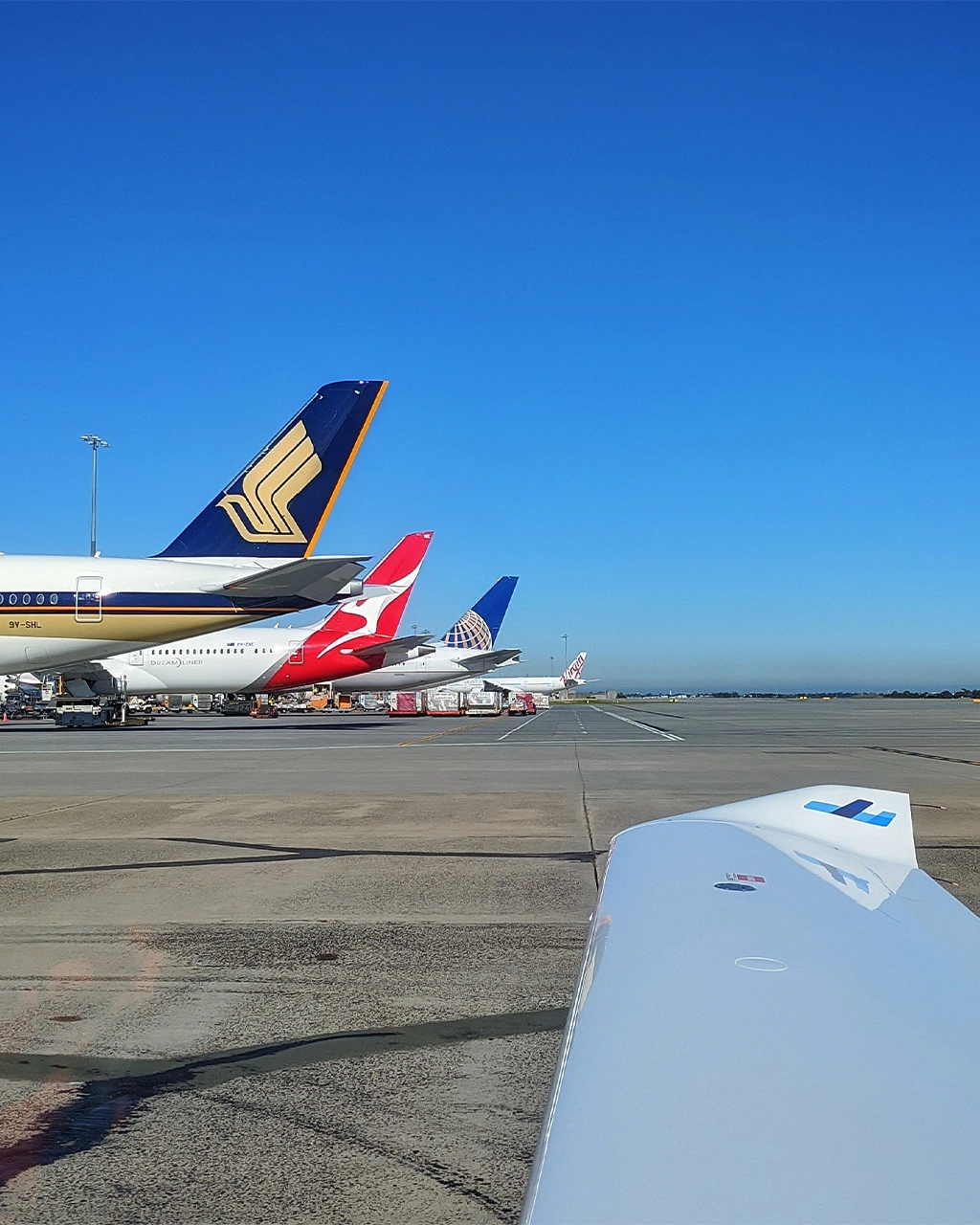
Pilot Recruitment and the Aviation Industry in 2019
November 08, 2019
In this blog, Captain Darren McPherson from ACS – Aviation Consulting Services takes a looks at pilot recruitment and the aviation industry in 2019. Darren...

Step By Step Guide to the Qantas Airline Pilot Selection Process
January 30, 2019
With a global pilot shortage, major carriers are opening up recruitment programs to attract pilots looking for an airline career. Even though there are many...

Singapore Airlines Pilot Selection Process: Step By Step Guide
January 20, 2019
Want to know more about the Singapore Airlines Group pilot selection process (including Singapore Airlines and Scoot)? We also have airline selection process blog posts...

Life as an Airline Cadet: Balancing Intensive Training with Personal Well-being
June 25, 2025
The opportunity for aspiring pilots to join a cadet pilot program marks a dream come true and provides a clear route to the commercial airline...

Building Industry Connections to Advance Your Pilot Career Through Networking
May 28, 2025
Technical expertise and pilot certifications remain critical in aviation, yet they alone cannot guarantee success. The most important element for Australian pilots seeking career success...

The Impact of Culture on CRM Training
December 13, 2024
Crew Resource Management (CRM) training is one of the most important aspects of aviation safety, aimed at bettering communication, decision-making, and cooperation among members of...

Understanding the Aviation Medical Exam for a Private Pilot License in Australia
November 19, 2024
Obtaining a private pilot license in Australia is a rewarding journey, especially for international students who bring diverse experiences to the skies. For those in...

Career Development and Professionalism in Aviation
June 12, 2024
Whether aspiring to become a pilot, air traffic controller, aviation manager, or any other aviation professional, cultivating a mindset of continuous learning and professionalism is...
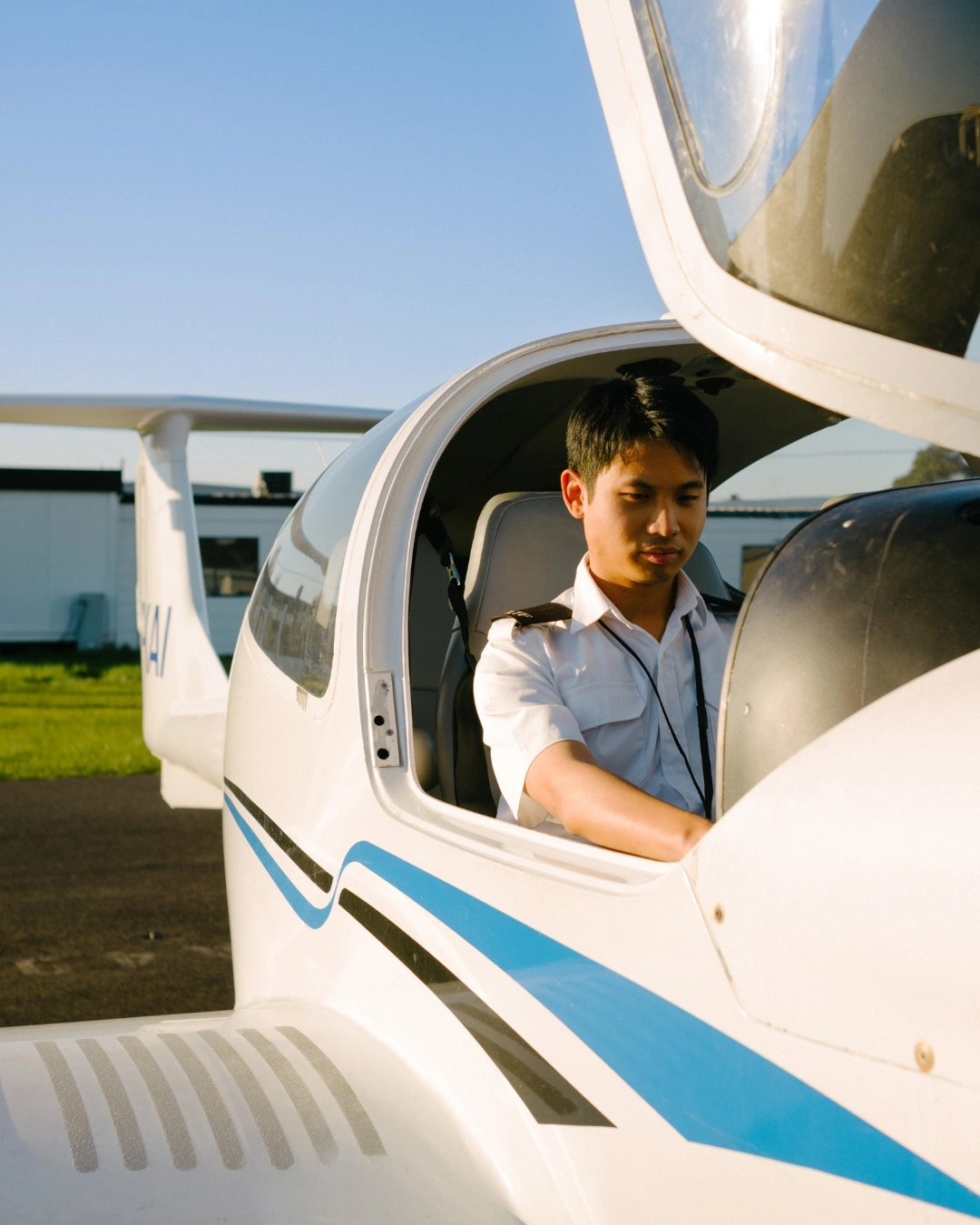
Studying At an Aviation Academy: What to Consider
May 09, 2024
Embarking on a journey to study at an aviation academy is an exciting prospect for aspiring pilots and aviation enthusiasts. There are several key factors...

Financing Your Flying: Gaining Your Commercial Pilot License
October 23, 2023
Obtaining your Commercial Pilot License (CPL) in Australia is one of the best pathways to a rewarding career in aviation. Undertaking flight training overseas can...

The Cathay Pacific Cadet Pilot Selection Process: Tips and Insights
May 25, 2023
The Cathay Pacific Cadet Pilot Programme provides a solid career pathway for aspiring commercial pilot licence holders. By joining the program, you will receive sponsored...
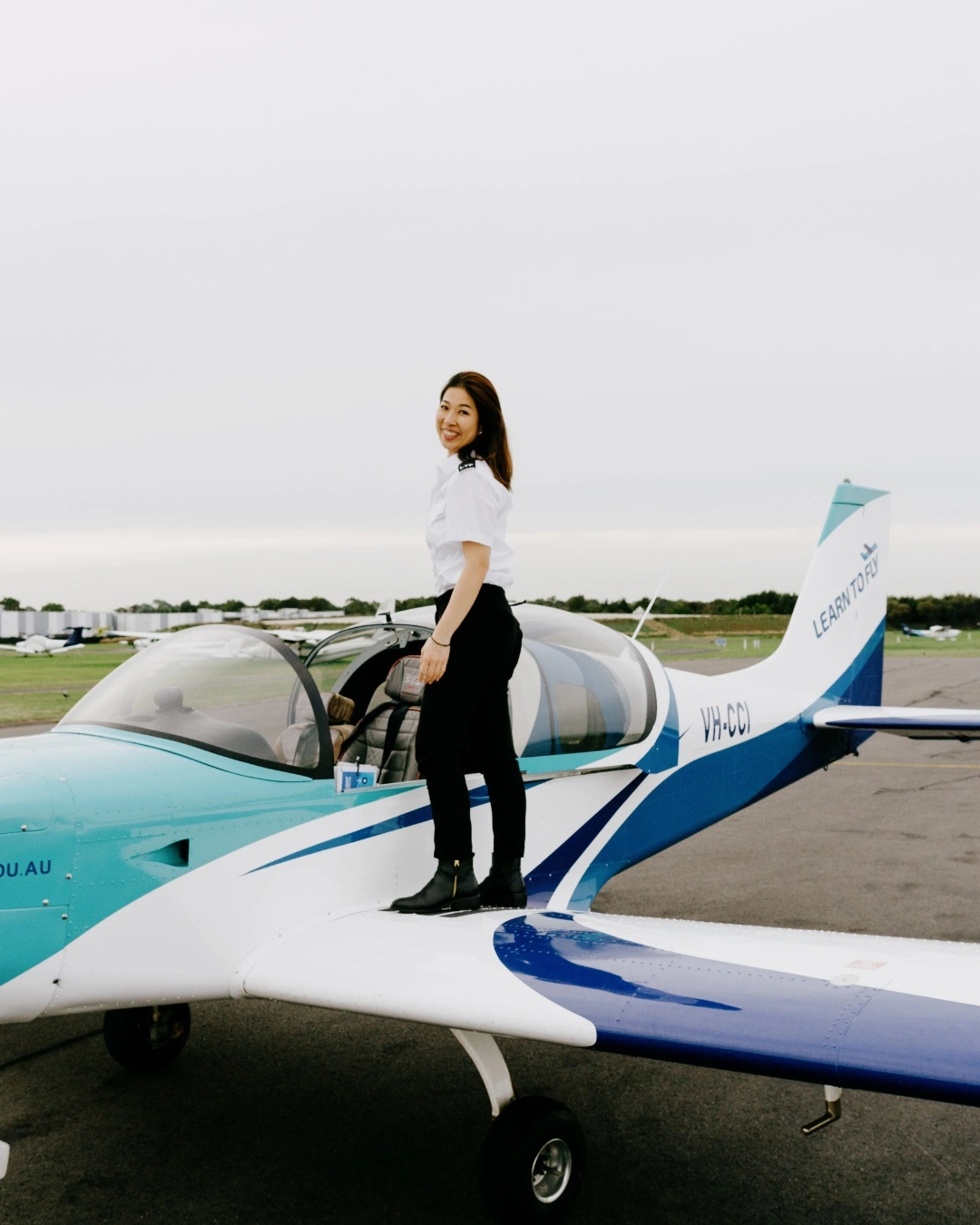
First Solo Flight Student Pilot From Hong Kong – Ivy Yung
May 09, 2023
Learning how to fly and becoming a solo student pilot is a huge accomplishment. Ivy Yung is our student, becoming a commercial pilot has been...
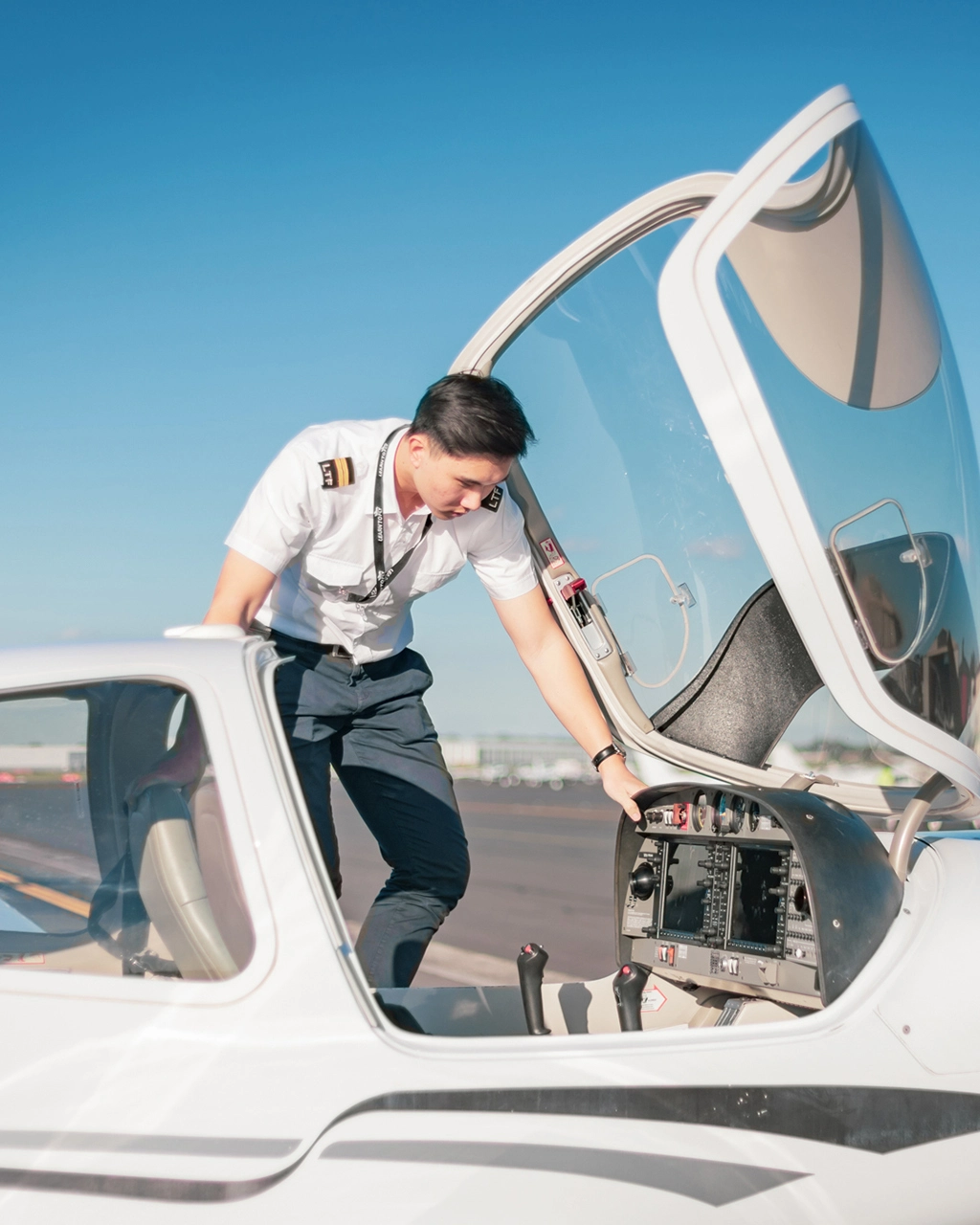
Fulfill Your Dream of Flying with a Diploma of Aviation
November 29, 2021
Many of us wonder what it might be like to be in the cockpit of a plane. Well, dream no more. Studying for a Diploma...

Life as an Airline Cadet: Balancing Intensive Training with Personal Well-being
June 25, 2025
The opportunity for aspiring pilots to join a cadet pilot program marks a dream come true and provides a clear route to the commercial airline...

Building Industry Connections to Advance Your Pilot Career Through Networking
May 28, 2025
Technical expertise and pilot certifications remain critical in aviation, yet they alone cannot guarantee success. The most important element for Australian pilots seeking career success...

How to Choose the Right Flight School for You
April 28, 2025
Choosing the right flight school is one of the most critical decisions an aspiring pilot will make. Whether your goal is to fly recreationally or...

The Role of Type Ratings in Airline Pilot Careers
March 20, 2025
For pilots aspiring to fly for an airline, obtaining a type rating is a crucial step in career progression. A type rating is an additional...

Building a Strong Foundation for Future Career Development as a Pilot
February 26, 2025
A career as a pilot is both exciting and demanding, requiring a solid foundation of skills, knowledge, and experience. Whether you’re just starting your aviation...

Aircraft Storage and Maintenance Tips for Recreational Aviators
January 09, 2025
Owning or sharing a private plane for recreational flying is a rewarding experience, offering freedom and adventure. However, to ensure your aircraft is always in...

Understanding the Aviation Medical Exam for a Private Pilot License in Australia
November 19, 2024
Obtaining a private pilot license in Australia is a rewarding journey, especially for international students who bring diverse experiences to the skies. For those in...

Identifying hazardous weather as an aviator
October 10, 2024
Among all the important components in aviation, weather is one of the most critical. It affects not just the safety of a flight but also...

Ratings and endorsements commercial pilots can secure
September 18, 2024
There is often strong competition among commercial pilots in the aviation industry and many will pursue additional ratings and endorsements to stand out and enhance...

Studying At an Aviation Academy: What to Consider
May 09, 2024
Embarking on a journey to study at an aviation academy is an exciting prospect for aspiring pilots and aviation enthusiasts. There are several key factors...

Life as an Airline Cadet: Balancing Intensive Training with Personal Well-being
The opportunity for aspiring pilots to join a cadet pilot program marks a dream come true and provides a clear route to the commercial airline flight deck.
These cadet programs provide expedited training to become first officers by blending academic intensity with practical flight instruction. The polished uniforms and simulator sessions conceal a demanding atmosphere where students need to excel academically and maintain emotional strength along with personal discipline.
Understanding the Cadet Journey
Airline cadet programs demand full-time participation for periods ranging from 12 to 24 months based on the specific curriculum and airline partnership. The programs are structured to condense extensive training into a concentrated path that usually involves:
- Theoretical knowledge instruction (ground school)
- Basic and advanced flight training
- Multi-crew cooperation (MCC) and jet orientation
- Simulator sessions
- Some programs provide line training with an airline.
Cadets enter these programs with varying backgrounds. A portion of the cadets start with a PPL license from Australia, and others enter the program with no prior aviation experience. All cadets must meet strict standards throughout their training, regardless of how they entered the program.
The Demands of Cadet Training
Cadet programs demand high levels of work, which can overwhelm participants. A typical day might include:
- Cadets spend 8 hours each day in classroom lessons or operating flight simulators.
- Cadets must balance homework assignments with study sessions and flight preparation during their non-classroom hours.
- Physical fitness sessions (depending on the airline)
- Progress testing at regular intervals
- The curriculum advances rapidly and allows minimal time for postponement.
The training requirements force numerous cadets to operate at maximum cognitive and physical capacity. Cadets face program termination when they fail either theoretical exams or flight checks, which generates substantial performance pressure.
Managing Mental and Physical Health
Cadet training centres appropriately on performance and proficiency, but mental well-being and physical fitness remain essential for achieving long-term success.
1. Sleep is Non-Negotiable
Cadets frequently fail to recognise how essential quality sleep is to their performance. Memory retention and decision-making abilities decline because fatigue disrupts cognitive functions.
Make sleep a top priority:
- Your sleep schedule should remain consistent throughout the week, including weekends.
- Limit screen time before bed
- Avoid stimulants late in the day
2. Nutrition Supports Brain Function
Avoid skipping meals or substituting them with energy drinks. Select whole grains and lean proteins along with complex carbohydrates to boost concentration and stamina. Maintaining proper hydration levels is essential, particularly when participating in extended simulator sessions.
3. Schedule Recovery Time
Create frequent short pauses throughout your study sessions. The Pomodoro Technique, which includes 25 minutes of work followed by 5 minutes of rest, helps to prevent burnout. Preserve weekly rest days as sacred time because they take precedence over social engagements.
Coping with Academic and Emotional Stress
Stress remains inevitable in environments with high stakes. Developing emotional resilience and regulation skills stands as the fundamental element.
1. Build a Support Network
Don’t isolate yourself. Engage with fellow cadets because they likely face the same stressors as you. A cohort that allows you to exchange insights and challenges helps lighten emotional burdens.
2. Use Mental Health Resources
Various flight schools and airlines provide cadets with access to performance coaches and psychological support services. You should access these services when dealing with anxiety, panic attacks, or feelings of depression.
3. Reframe Failure
Many trainees encounter setbacks during the training process. The failure of a theory exam or a checkride should be seen as a chance to better yourself. Approach setbacks analytically, not emotionally.
Time Management for Cadets
Every airline cadet needs to develop strong time management skills as a fundamental ability. Your skills in managing study time alongside flight preparation and personal responsibilities will determine your performance level.
Recommended Tools:
- Daily Planning Apps: Track your daily objectives by using productivity tools such as Notion or Todoist.
- Study Schedules: Break down each week’s topics with deadlines.
- Priority Matrices: Master the skill of identifying tasks that require immediate attention and those that hold more significance.
- Establish daily routines to automate tasks like uniform preparation and meal planning, which will enable you to focus your mental energy solely on training.
Personal Life and Social Balance
The most difficult adjustment for cadets involves sharing their time between personal interests and social engagement. Cadets must make sacrifices, but they need to maintain a balanced lifestyle.
- Communicate with Loved Ones: Set expectations with family and friends early. Share your schedule and specify the support system you require.
- Keep a Hobby: When time is limited, you should continue with hobbies such as reading, drawing or light sports to stay rooted.
- Avoid Social Media Traps: Seeing other people’s curated successes through media exposure leads to both burnout and comparison anxiety.
Financial Pressure and Planning
Cadet programs require substantial financial commitments that include tuition fees along with living costs and occasional relocation expenses. Proper planning becomes crucial because financial stress has the potential to impact your training performance.
- Create a Budget: Your budget should cover tuition expenses and extend to housing costs as well as meal expenses, while also setting aside funds for transportation and emergency savings.
- Look for Sponsorships: A few airlines provide their pilots with partial sponsorships or financial repayment arrangements after they complete their training.
- Avoid Lifestyle Inflation: Maintain financial discipline by living within your means and postponing luxury purchases until after your training period.
Preparing for Airline Culture
Cadets receive training that covers technical skills and airline cultural components like discipline, grooming standards, communication protocols and crew resource management (CRM).
Tips for Integration:
- Practice Professionalism Early: Act as an airline member from your very first day when interacting with both instructors and fellow cadets.
- Learn CRM Concepts: Assessments measure how well crew members work together and make decisions while communicating during stressful situations.
- Study the Airline’s SOPs: Begin learning their operating procedures immediately when you train through an airline-specific cadet program.
Building Long-Term Habits
Successful cadets distinguish themselves through their development of sustainable habits rather than academic intelligence alone. Establish daily routines now that will benefit your career as a professional pilot.
- Consistent study and briefing practices
- Daily physical exercise
- Reflection journals to document lessons learned
- Resilience-building activities like meditation or breathwork
A cadet pilot program evaluates candidates beyond aviation knowledge through an extensive assessment of their discipline, focus, resilience, and emotional intelligence. A successful and long-term aviation career demands the integration of rigorous training with personal well-being practices.
Regardless of whether you begin cadet training with a ppl license in Australia or start from scratch with zero hours, you must commit to personal growth and technical excellence to define your journey. The habits developed during high-pressure training periods will determine your future success and identity as an airline pilot.
When cadets focus on structure while maintaining well-being and active learning, they will succeed under stress to graduate and confidently enter commercial aviation prepared for future obstacles.
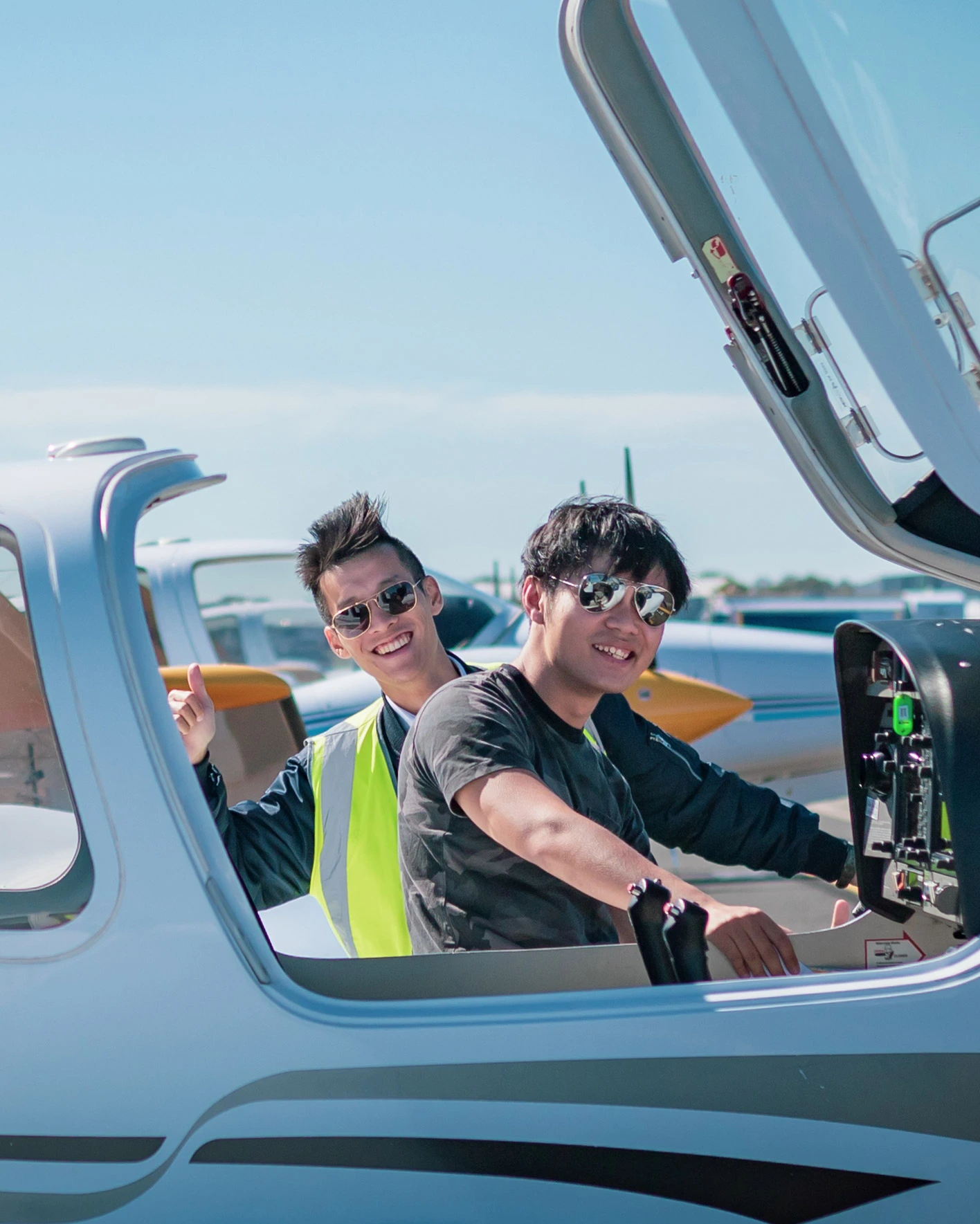
Building Industry Connections to Advance Your Pilot Career Through Networking
Technical expertise and pilot certifications remain critical in aviation, yet they alone cannot guarantee success. The most important element for Australian pilots seeking career success is their industry connections. Networking serves as a robust tool that provides access to new opportunities and valuable industry insights that remain hidden without proper connections.
Aspiring pilots who hold a recreational pilot license in Australia or students pursuing advanced pilot training courses should prioritise building a strong professional network because it makes sense strategically.
Why Networking Matters in Aviation
The aviation industry stands out because it maintains a strong network among its relatively small group of professionals. In aviation, personal referrals, industry reputation, and trusted recommendations play a key role in hiring procedures for both general aviation and commercial airlines. Networking can:
- Gain advanced knowledge about future job vacancies before they reach the public domain.
- Offer mentorship from experienced pilots and instructors
- Networking enables you to establish connections with employers and recruiting professionals or HR personnel.
- The networking process assists you in learning about job market patterns and airline prerequisites while evaluating flight school standing.
- Ensure you receive continuous updates about regulatory modifications and technological advancements together with professional development possibilities.
Networking serves dual purposes for aviation professionals by assisting in job acquisition while also expanding their professional knowledge through connections.
Start Early: Network While You Train
Your flight training phase is a frequently neglected time to start building your professional network. You will find numerous networking opportunities during your flight training, whether you seek a recreational pilot license in Australia or professional advancement toward commercial qualification.
Here’s how to get started:
- Engage with Your Instructors: Your flight instructors serve as more than just check ride helpers because they bring extensive professional experience along with strong connections in the aviation industry. Make time to inquire about their career journeys as well as the insights and guidance they can share.
- Form Relationships with Fellow Students: Your classmates are your future colleagues. During pilot training courses, keeping good relationships with classmates creates opportunities for future professional referrals and partnerships.
- Attend In-House Events: Australian aviation schools frequently organise seminars while hosting alumni talks and employer visits. Potential employers meet and job market positioning information gathering occur during these prime opportunities.
Leverage Aviation Industry Events
By participating in events such as aviation expos and professional conferences you can drastically grow your network. Some major Australian events to consider include:
- Australian International Airshow (Avalon Airshow)
- RAAus NatFly serves as a key gathering for those who enjoy recreational and sport aviation.
- Educational institutions and aviation employers host Careers in Aviation expos to connect job seekers with industry professionals.
- CASA or training providers sponsor aviation industry panels and meetups.
When attending events:
- Attend events with prepared questions or discussion subjects in mind.
- Attend events with business cards and a printed copy of your pilot résumé.
- Be professional but personable—relationship-building takes authenticity.
- It is important to send new connections from events a courteous message or LinkedIn request after your initial introduction.
Make the Most of Online Networking
Your networking efforts in today’s digital era should primarily occur through online platforms. Both LinkedIn and pilot-specific forums like PPRuNe (Professional Pilots Rumour Network) provide effective means to establish connections within the aviation industry.
LinkedIn Best Practices:
- Your profile should display your current qualifications alongside your most recent flight hours.
- Monitor aviation employers and airlines while keeping up with flight schools and industry groups.
- When you comment on posts with thoughtfulness, you can increase your visibility.
- Connect with industry professionals through a customised message. For example, As a student pilot training in Queensland, I found your recent post about moving from general aviation into charter operations very insightful. I would enjoy connecting with you to gain insights into your experience.
Aviation Forums and Groups:
- Get involved with Facebook groups or forums which focus on Australian aviation.
- Post your training updates and request feedback while asking questions.
- Your online reputation requires the same level of professionalism as your real-world reputation.
Build a Mentor Relationship
A mentor can serve as a transformative force throughout your journey in aviation. A mentor can give career advice while assisting you through tough decisions and potentially recommend you to hiring managers. To find a mentor:
- Look for mentors who are both approachable and experienced in your chosen area of aviation.
- Direct your questions to specific areas of interest instead of asking about your career broadly. What characteristics do charter operators usually seek in their new pilots and how can I understand these better?
- Maintain your connection through thoughtful questions and periodic updates once you establish contact.
- Mentorships develop during networking events and online interactions as well as throughout flight school training.
Networking Etiquette and Long-Term Strategies
Networking should never feel transactional. Our objective should be to establish long-lasting connections instead of merely requesting employment opportunities. That requires consistency, respect, and professionalism.
Some long-term networking habits to adopt:
- Maintain regular contact with your networking contacts by sharing updates about your flying achievements and relevant news items.
- Provide assistance or share knowledge whenever possible and before asking for anything, especially when you’re beginning your career.
- Show appreciation to people by thanking them for both their time and guidance.
- When someone offers assistance to you, it’s important to follow up on their help and inform them about the result. It shows maturity and appreciation.
- A single brief positive interaction holds the potential to result in a referral many months or years later.
Whether you’re just starting with a recreational pilot license in Australia or advancing through pilot training courses, take the time to engage with your community. Show up to events, reach out online, and cultivate relationships with integrity and purpose. Over time, these connections can become the bridge between training and your first cockpit job—and many more opportunities beyond.
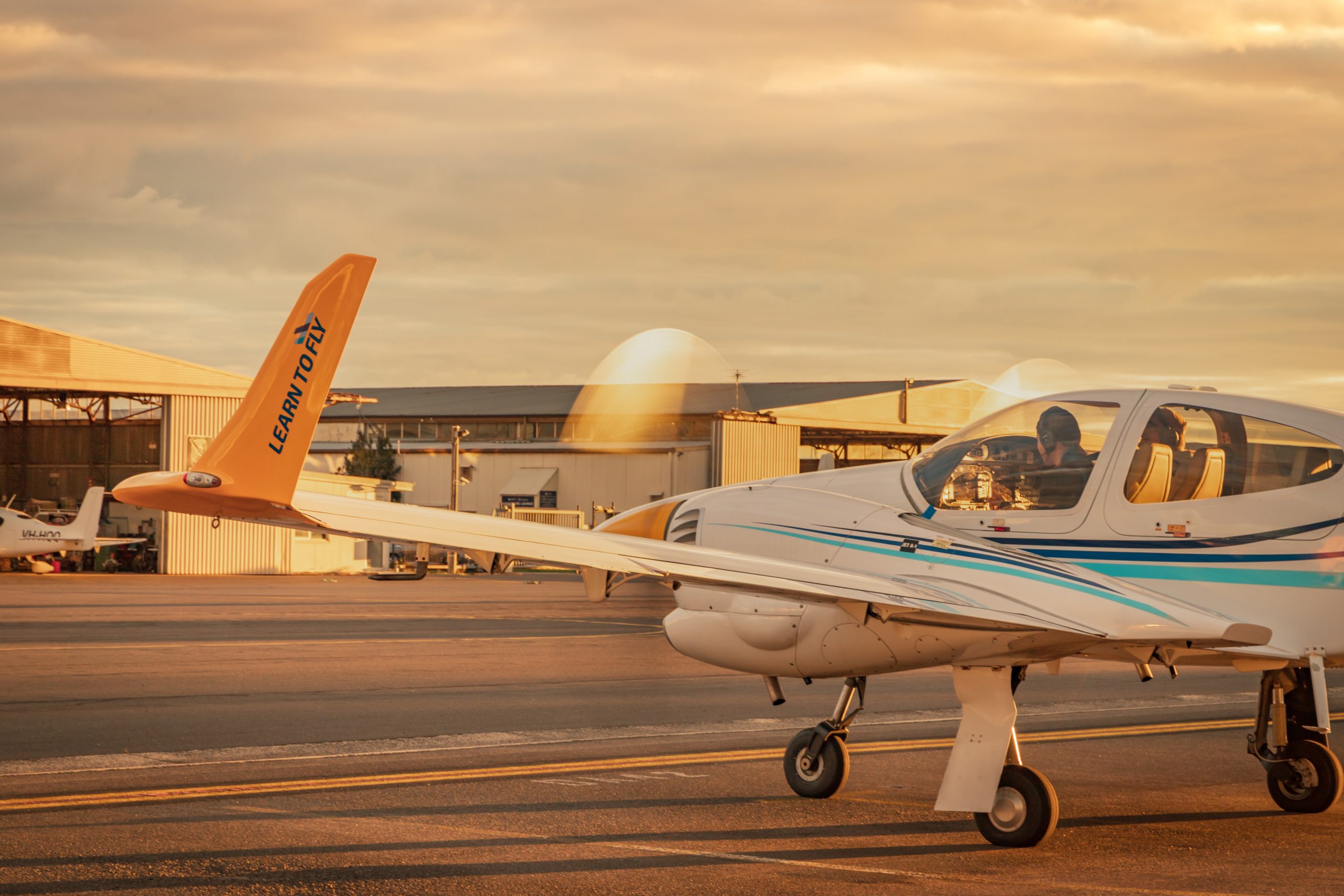
How to Choose the Right Flight School for You
Choosing the right flight school is one of the most critical decisions an aspiring pilot will make. Whether your goal is to fly recreationally or pursue a career in commercial aviation, the quality of training you receive will significantly impact your skills, employability, and overall experience. With numerous options available, selecting a school that aligns with your career goals, budget, and learning preferences requires careful consideration.
For those pursuing a Private Pilot License in Melbourne, selecting a flight school that offers structured training, experienced instructors, and well-maintained aircraft is essential. Similarly, pilots aiming for a CPL course in Australia must ensure their chosen program provides the necessary hours, qualifications, and airline pathways to succeed.
1. Understanding Your Training Goals
Before choosing a flight school, it’s crucial to define your aviation goals. Are you looking to fly recreationally, become a commercial airline pilot, or explore specialized fields like aerobatics or bush flying? Your goal will determine the type of training required and influence your choice of school.
Flight Training Pathways:
- Recreational Pilot Training – Ideal for hobbyists and those looking for limited flying privileges.
- Private Pilot License (PPL) – Provides unrestricted flying rights (except for commercial purposes).
- Commercial Pilot License (CPL) – Required for professional flying, including airline and charter work.
- Airline Transport Pilot License (ATPL) – The highest certification for captains and airline pilots.
Understanding these pathways helps narrow down flight schools that offer the specific training you need.
2. Comparing Integrated vs. Modular Training
Flight training programs typically follow integrated or modular structures:
Integrated Flight Training
- Full-time, structured program with a fast-track pathway to a CPL.
- Often includes multi-engine and instrument ratings.
- Higher upfront costs but completed in a shorter time (12-18 months).
- Common in airline-focused academies with job placement support.
Modular Flight Training
- Flexible, pay-as-you-go approach.
- Ideal for students balancing work, studies, or financial constraints.
- Takes longer but allows trainees to progress at their own pace.
- Can be completed at different schools to optimize costs.
For those aiming for a CPL course in Australia, integrated training may provide a more structured approach, while modular training offers financial flexibility.
3. Flight School Accreditation and Reputation
Choosing an accredited flight school ensures your training meets industry standards and is recognized globally. Look for:
- CASA (Civil Aviation Safety Authority) approval – Ensures compliance with Australian aviation regulations.
- RTO (Registered Training Organization) status – Necessary for diploma programs linked to aviation.
- International Recognition – Some schools partner with major airlines, enhancing career opportunities.
Reputation is equally important. Research school reviews, instructor experience, and alumni success stories. Connecting with past students can provide insights into the school’s training quality and job placement rates.
4. Quality of Flight Instructors
A flight school’s instructors significantly impact your training experience. Look for:
- Experience and Ratings – Instructors should hold commercial and instructor certifications, with multi-engine and instrument experience preferred.
- Instructor Availability – Schools with high student-to-instructor ratios may delay training.
- Teaching Style and Mentorship – An instructor’s ability to provide constructive feedback and mentorship is crucial for skill development.
For pilots pursuing a Private Pilot License in Melbourne, finding an instructor who provides personalized guidance can enhance learning efficiency.
5. Aircraft Fleet and Maintenance Standards
The type and condition of aircraft used for training play a significant role in your flight experience. When evaluating a school’s fleet, consider:
- Variety of Aircraft – Schools should offer basic trainers (e.g., Cessna 172) and advanced aircraft (e.g., Piper Seminole for multi-engine training).
- Aircraft Age and Technology – Schools with modern, well-maintained aircraft featuring glass cockpits provide a better transition to airline operations.
- Maintenance Standards – A strong in-house maintenance team ensures safety and reduces flight cancellations due to mechanical issues.
For CPL students, gaining experience in advanced aircraft improves employment prospects.
6. Training Costs and Financial Considerations
Flight training is a significant investment, and costs can vary based on location, program type, and aircraft used. Consider:
- Hourly Aircraft Rental Fees – Schools charge per flight hour, with multi-engine training costing more.
- Simulator Training – Reduces costs while improving instrument and procedural skills.
- Hidden Fees – Check for additional charges like landing fees, theory exams, or uniform costs.
Some schools offer scholarships, financing options, or government-backed student loans for those pursuing professional training. Planning finances early prevents disruptions during training.
7. Career Pathways and Job Placement Support
For aspiring commercial pilots, job placement support is a crucial factor when selecting a flight school. Some academies offer:
- Airline Cadet Programs – Direct pathways to airline employment.
- Internships and Instructor Roles – Opportunities to build flight hours post-training.
- Career Guidance and Networking – Connections with airlines, charter companies, and general aviation operators.
Choosing a school with strong airline partnerships increases the likelihood of securing employment after obtaining a CPL.
8. Location and Weather Conditions
Training location significantly impacts training duration and costs. Consider:
- Weather Patterns – Locations with stable weather conditions ensure uninterrupted training.
- Air Traffic and Airspace – Training near controlled airspace enhances radio communication and operational awareness.
- Proximity to Home – Reduces accommodation and travel expenses.
For students considering a Private Pilot License in Melbourne, choosing a school with access to diverse airspace (including controlled and regional airports) provides a well-rounded experience.
9. Flight Training Culture and Learning Environment
The overall learning environment can influence motivation and success. When visiting schools, assess:
- Student Support Services – A structured support system improves retention and performance.
- Training Schedules – Availability of aircraft and instructors for consistent progress.
- School Culture – A positive and professional atmosphere enhances the learning experience.
Attending trial flights or discovery sessions helps determine if the school’s culture and teaching methods suit your learning style.
10. Evaluating Training Success Rates
A school’s success rate is a strong indicator of training quality. Look for:
- Pass Rates for Exams and Flight Tests – High pass rates suggest strong instruction and preparation.
- Alumni Success Stories – Testimonials from past students provide insights into post-training career opportunities.
- Industry Recognition – Schools with a strong reputation are often preferred by employers.
Comparing multiple schools based on these factors ensures you select a program that maximizes your chances of success.
Choosing the right flight school is a critical step in your aviation journey. Whether aiming for a Private Pilot License in Melbourne or enrolling in a CPL course in Australia, selecting a school with strong accreditation, experienced instructors, a well-maintained fleet, and solid career pathways ensures a smoother training experience.
By carefully evaluating training programs, costs, aircraft quality, and career placement options, aspiring pilots can find the best-suited school to achieve their aviation dreams. The right choice will not only provide quality education but also open doors to a successful career in aviation.

The Role of Type Ratings in Airline Pilot Careers
For pilots aspiring to fly for an airline, obtaining a type rating is a crucial step in career progression.
A type rating is an additional certification that allows a pilot to operate a specific aircraft type beyond the basic licences, such as a Commercial Pilot Licence (CPL). Given that modern commercial aircraft vary significantly in their systems, performance, and handling characteristics, type ratings ensure that pilots receive thorough training before being entrusted with passengers and cargo.
What Is a Type Rating?
A type rating is a qualification added to a pilot’s licence, granting them the authority to operate a specific aircraft type. In many cases, larger commercial jets and complex aircraft require a type rating due to their advanced systems and handling requirements. The International Civil Aviation Organisation (ICAO) mandates type ratings for aircraft that exceed a certain weight or have complex systems, such as jet engines, multi-crew operations, or advanced avionics.
Why Type Ratings Are Necessary
Unlike general aviation aircraft, commercial airliners have complex automation, high-speed operational requirements, and specific safety protocols. Type ratings ensure that pilots:
· Understand the aircraft’s flight characteristics and limitations
· Are proficient in emergency procedures and system failures
· Can manage advanced avionics and automation systems
· Work efficiently as part of a multi-crew cockpit environment
For pilots transitioning to a CPL, obtaining a type rating is a significant milestone that moves them closer to full airline operations.
How Type Ratings Fit into Airline Pilot Training Programs
Airline Pathway to Type Ratings
Most airline pilot training programs include a structured pathway toward type ratings. After completing the foundational stages—such as private pilot training, CPL, and multi-engine/instrument ratings—pilots looking to enter the airline industry must undergo further training, which may include:
· Multi-Crew Cooperation (MCC) Training: Essential for working in a two-pilot cockpit environment.
· Jet Orientation Course (JOC): Prepares pilots for handling jet aircraft dynamics.
· Airline-Specific Type Rating Training: Focused on the airline’s fleet type.
Cadet Programs and Sponsored Type Ratings
Many airlines offer cadet programs where type rating training is provided as part of the curriculum. These programs streamline the transition from a newly licensed commercial pilot to a first officer on a commercial aircraft. Some airlines even sponsor the cost of the type rating, though this often comes with contractual commitments, such as a minimum service period.
For pilots who do not enter airline-sponsored programs, self-funded type ratings are another option. These can be expensive, but they offer pilots the flexibility to apply for airline positions requiring that particular type rating.
What to Expect in Type Rating Training
Ground School (Systems Training)
The first phase of type rating training is ground school, where pilots undergo an in-depth study of the aircraft:
· Aerodynamics and handling characteristics
· Flight control systems and hydraulics
· Navigation and avionics
· Pressurisation and electrical systems
· Emergency procedures and troubleshooting
This phase typically lasts between two to four weeks and concludes with theoretical exams.
Cost and Duration of Type Rating Training
How Much Does a Type Rating Cost?
The cost of obtaining a type rating varies based on the aircraft type, location, and whether the training is self-funded or airline-sponsored. On average:
· Narrow-body aircraft (e.g., Boeing 737, Airbus A320): AUD 30,000 – 50,000
· Wide-body aircraft (e.g., Boeing 777, Airbus A350): AUD 50,000 – 100,000
These costs include ground school, simulator sessions, and line training but may not cover accommodation and additional fees.
How Long Does It Take?
The typical duration of a type rating program ranges from 4 to 8 weeks, depending on the aircraft type and regulatory requirements.
Challenges of Obtaining a Type Rating
High Financial Commitment
For self-sponsored pilots, the cost of a type rating can be a barrier. Some pilots take loans or seek financial assistance to cover training costs.
Strict Performance Requirements
Type rating training demands high levels of discipline, adaptability, and quick decision-making. The pass rate is not 100%, and pilots must demonstrate exceptional skill to pass final assessments.
Maintaining Currency
A type rating is not a lifetime qualification. Pilots must undergo regular proficiency checks and recurrency training to maintain their certification. Airlines conduct these checks every six to twelve months to ensure operational readiness.
Career Benefits of Having a Type Rating
Faster Employment Opportunities
For newly licensed commercial pilots, holding a type rating on an in-demand aircraft (such as the Boeing 737 or Airbus A320) can make them more competitive in job applications.
Higher Salary Potential
Pilots with type ratings on wide-body or long-haul aircraft tend to earn higher salaries, especially as they progress to captaincy roles.
Greater Career Flexibility
Once a pilot holds a type rating, they can apply for positions with multiple airlines operating the same aircraft type. This provides career flexibility and mobility in a competitive industry.
A type rating is a critical step for pilots moving from general aviation or initial airline pilot training programs into commercial airline operations. Whether obtained through an airline cadetship or self-sponsored training, type ratings ensure pilots are fully competent in operating complex aircraft safely and efficiently.
For pilots transitioning from a Recreational Pilot License (RPL) to commercial aviation, understanding the requirements and challenges of type ratings can help in planning a long-term career strategy. While the financial and training demands are significant, the career benefits—ranging from better job prospects to higher salaries—make type ratings a worthwhile investment for any aspiring airline pilot.

Building a Strong Foundation for Future Career Development as a Pilot
A career as a pilot is both exciting and demanding, requiring a solid foundation of skills, knowledge, and experience.
Whether you’re just starting your aviation journey or looking to advance after earning your Commercial Pilot License (CPL), strategic planning is essential to achieving long-term success.
1. Beginning Your Journey: Laying the Groundwork
Choosing the Right Flight School
Selecting the right training institution is critical to your success. Look for a school with a strong reputation, experienced instructors, and well-maintained aircraft. For those considering international options, a Taiwan flying school will offer comprehensive training programs with modern facilities, making it an excellent choice for aspiring pilots in Asia.
When evaluating schools, consider factors such as accreditation, student-to-instructor ratio, and the variety of aircraft available for training. Research testimonials from alumni to gain insight into the quality of education and support provided.
Understanding Licensing Requirements
Before embarking on your training, familiarise yourself with the various pilot licenses and endorsements, including the Private Pilot License (PPL), CPL, and additional ratings such as instrument or multi-engine endorsements. In regions like Australia, completing a CPL course Australia opens doors to opportunities in commercial aviation, charter services, and flight instruction.
2. Maximising Opportunities During Flight School
Build a Diverse Skill Set
While flight school primarily focuses on technical skills, broadening your expertise can make you a more versatile pilot. Consider gaining experience in areas such as:
- Cross-Country Flights: These build navigation skills and expose you to different airspaces and weather conditions.
- Simulated Emergency Training: Learning to manage in-flight emergencies is crucial for enhancing decision-making and confidence.
- Night Flying: This certification is often a stepping stone to more advanced ratings and increases your employability.
Networking and Mentorship
Networking is an essential aspect of career development. Engage with instructors, peers, and industry professionals to build valuable connections. Many schools host guest lectures or industry events where you can interact with airline recruiters and experienced pilots.
Seek mentorship from senior pilots who can offer guidance on navigating challenges and making informed career decisions. Their insights can help you identify opportunities and avoid common pitfalls.
Participate in Extracurricular Activities
Many flight schools offer additional programs, such as aviation clubs or internships, which can enhance your learning experience. These activities provide hands-on experience in areas like aircraft maintenance or airport operations, giving you a competitive edge when applying for jobs.
3. Gaining Momentum After Your CPL
Building Flight Hours
After earning your CPL, accumulating flight hours is a priority. Most airlines and charter companies require a minimum number of hours for entry-level positions. Here are some effective ways to build hours:
- Flight Instruction: Becoming a certified flight instructor (CFI) is a common path for new pilots to gain experience while earning an income.
- Charter Flights: Working for a charter company allows you to build hours while experiencing diverse flight operations.
- Bush Flying: For the adventurous, flying in remote areas can accelerate hour accumulation while honing your skills in challenging conditions.
Pursue Advanced Ratings and Endorsements
Expanding your qualifications improves your employability and prepares you for specialised roles. Popular endorsements include:
- Instrument Rating (IR): Enables you to fly in various weather conditions, a requirement for airline roles.
- Multi-Engine Rating (MER): Necessary for flying larger aircraft.
- Type Ratings: Specific training for operating particular aircraft models.
Networking and Career Development
Stay connected with industry professionals through aviation expos, online forums, and alumni networks. Joining organisations like the Aircraft Owners and Pilots Association (AOPA) can provide access to job listings, mentorship programs, and industry updates.
4. Long-Term Career Planning
Targeting Airline Cadet Programs
Many airlines offer cadet programs designed to train and hire new pilots directly. These programs often include structured training pathways, mentorship, and job placement opportunities. Aspiring pilots should monitor openings and prepare by meeting prerequisites such as medical certifications, language proficiency, and a minimum number of flight hours.
Continuing Education
The aviation industry evolves rapidly, with advancements in technology and regulations shaping pilot requirements. Staying informed through continuing education, workshops, and online courses is vital for career longevity. Advanced programs, such as leadership training for captains, can also prepare you for management roles.
5. Overcoming Challenges in Pilot Careers
Managing Financial Investments
Aviation training is a significant financial commitment. Plan your budget carefully and explore scholarships, grants, or loans. Some employers reimburse training costs after a specified tenure, so investigate such opportunities during job applications.
Balancing Work-Life Demands
The life of a pilot can be demanding, with irregular hours and frequent travel. Maintaining physical and mental well-being is essential for long-term success. Practices such as mindfulness, regular exercise, and staying connected with loved ones can help manage stress.
Adapting to Industry Changes
Economic fluctuations, technological advancements, and regulatory changes can impact the aviation industry. Flexibility and a willingness to adapt are crucial traits for navigating such challenges. For instance, understanding emerging trends like sustainable aviation fuels or autonomous flight technologies can position you as a forward-thinking professional.
Building a successful career as a pilot requires strategic planning, dedication, and adaptability. By starting strong with the right training and taking advantage of opportunities during flight school, you can lay a solid foundation for your career. Pursuing advanced qualifications, networking, and staying informed about industry trends will help you maintain momentum and achieve your professional goals.
Whether you’re training at a Taiwan flying school or completing a CPL course in Australia, investing in your development is key to unlocking a rewarding and dynamic aviation career. Embrace lifelong learning and remain open to new challenges to soar to new heights in the ever-evolving world of aviation.

Aircraft Storage and Maintenance Tips for Recreational Aviators
Owning or sharing a private plane for recreational flying is a rewarding experience, offering freedom and adventure. However, to ensure your aircraft is always in top condition and ready for safe flights, diligent maintenance and proper storage are essential.
1. Follow a Detailed Maintenance Schedule
Regular maintenance is critical for keeping your aircraft airworthy. Recreational aircraft owners should adhere to the manufacturer’s recommended schedule for inspections, oil changes, and part replacements. Maintenance tasks like checking the engine, landing gear, and avionics are essential even if the aircraft is not used frequently. If you have a recreational pilot license in Australia, you’ll know the importance of logbook updates, which should include every maintenance activity performed.
2. Conduct Pre-Flight and Post-Flight Inspections
Every flight should start with a thorough pre-flight inspection and end with a post-flight check. Inspect critical systems like control surfaces, fuel levels, tyre pressure, and propellers. After each flight, examine the aircraft for any signs of wear or damage caused during operation, and address any issues immediately.
3. Use High-Quality Engine Oil and Fuel
Ensure your aircraft is always filled with clean, high-quality fuel suitable for its engine type. Regular oil changes—typically every 25-50 hours of operation—are essential for engine longevity. Contaminated or old oil can lead to engine corrosion, especially when the aircraft is stored for extended periods.
4. Protect Against Corrosion
Corrosion can significantly impact an aircraft’s structural integrity and performance. To prevent it:
- Store the plane in a dry, climate-controlled hangar.
- Use corrosion inhibitors in fuel systems and engine oil if the aircraft will remain unused for weeks or months.
- Regularly clean the exterior and interior of your plane to remove dirt, salt, and moisture that may accelerate corrosion.
5. Keep Tyres and Landing Gear in Good Condition
Check tyre pressure and landing gear regularly to avoid flats or structural damage. Keep the tyres properly inflated to the manufacturer’s specifications and inspect the landing gear for signs of wear, cracks, or leaks. When storing the aircraft for extended periods, consider using tyre covers to protect against UV damage and reducing pressure slightly to prevent flat spots.
6. Use a High-Quality Aircraft Cover
Protecting your aircraft from the elements is critical, especially if hangar storage is not an option. Invest in a durable, UV-resistant cover that fits your plane snugly. A high-quality cover shields your aircraft from sunlight, rain, snow, and debris, preventing premature wear on paint, windows, and seals.
7. Ensure Proper Battery Care
Batteries are susceptible to damage when left unused for long periods. Disconnect the battery if you won’t be flying for several weeks, or use a trickle charger to maintain its charge. Periodically test the battery to ensure it holds power effectively and replace it when it no longer meets performance standards.
8. Maintain Avionics and Instruments
Keep avionics and cockpit instruments in peak condition by performing routine checks and keeping them clean. Dust and moisture can interfere with displays and switches, so protective covers should be used on instrument panels during storage. For more advanced maintenance, consult professionals who specialise in avionics systems.
9. Choose the Right Storage Location
A secure, climate-controlled hangar is the best place to store your aircraft. Hangars protect planes from weather conditions, temperature fluctuations, and vandalism. If hangar space is unavailable, tie down the aircraft securely on an outdoor ramp, but be aware of additional risks such as UV exposure, ice, and strong winds. Consult other owners about local options; many recreational pilots in Australia, for example, find shared hangar space an economical and reliable solution.
10. Stay Updated on Regulations
Maintaining compliance with aviation regulations is as important as physical maintenance. Aircraft owners must stay updated on airworthiness directives (ADs) issued by aviation authorities and ensure any necessary modifications or repairs are completed promptly. Those with a pilot license in Australia are already familiar with these requirements, but recreational fliers sharing ownership should ensure everyone involved is aware of their regulatory responsibilities.
Benefits of Proper Maintenance and Storage
- Enhanced Safety: Meticulously maintained aircraft are less prone to mechanical failures, ensuring a safer flying experience for recreational pilots.
- Cost Savings: Addressing minor issues early can prevent expensive repairs later, extending the life of your aircraft.
- Higher Resale Value: An aircraft with a detailed maintenance history and excellent storage conditions will retain its value better than one neglected over time.
- Peace of Mind: Regular maintenance and proper storage provide confidence that your aircraft is always ready for your next adventure.
Common Mistakes to Avoid
- Neglecting Storage Environment: Storing aircraft in unsuitable conditions, such as areas prone to high humidity or temperature extremes, can accelerate deterioration.
- Skipping Maintenance Intervals: Delaying maintenance may save time in the short term but often results in more significant problems later.
- Improper Handling of Fuel: Failing to drain water-contaminated fuel or neglecting to fill tanks fully before storage can cause condensation and fuel system damage.
Advanced Tips for Enthusiasts
- Enroll in Workshops or Seminars: Recreational pilots can benefit from attending workshops focused on maintenance best practices. These events often feature updates on the latest tools and techniques in general aviation.
- Consider Advanced Certifications: Obtaining further training, such as a private pilot license or specialised courses, equips you with the knowledge to manage your aircraft better and collaborate effectively with maintenance professionals.
Owning a recreational aircraft is a unique privilege that comes with the responsibility of diligent maintenance and careful storage. Whether you’re a seasoned aviator or a newer pilot, adopting a proactive approach to care will ensure your aircraft remains a reliable companion for every adventure.
From selecting the right hangar to staying on top of regulatory updates, these best practices will safeguard your aircraft and maximise the joy of recreational flying. Remember, investing time and effort into maintenance is not just about compliance—it’s about preserving the freedom and thrill of taking to the skies.
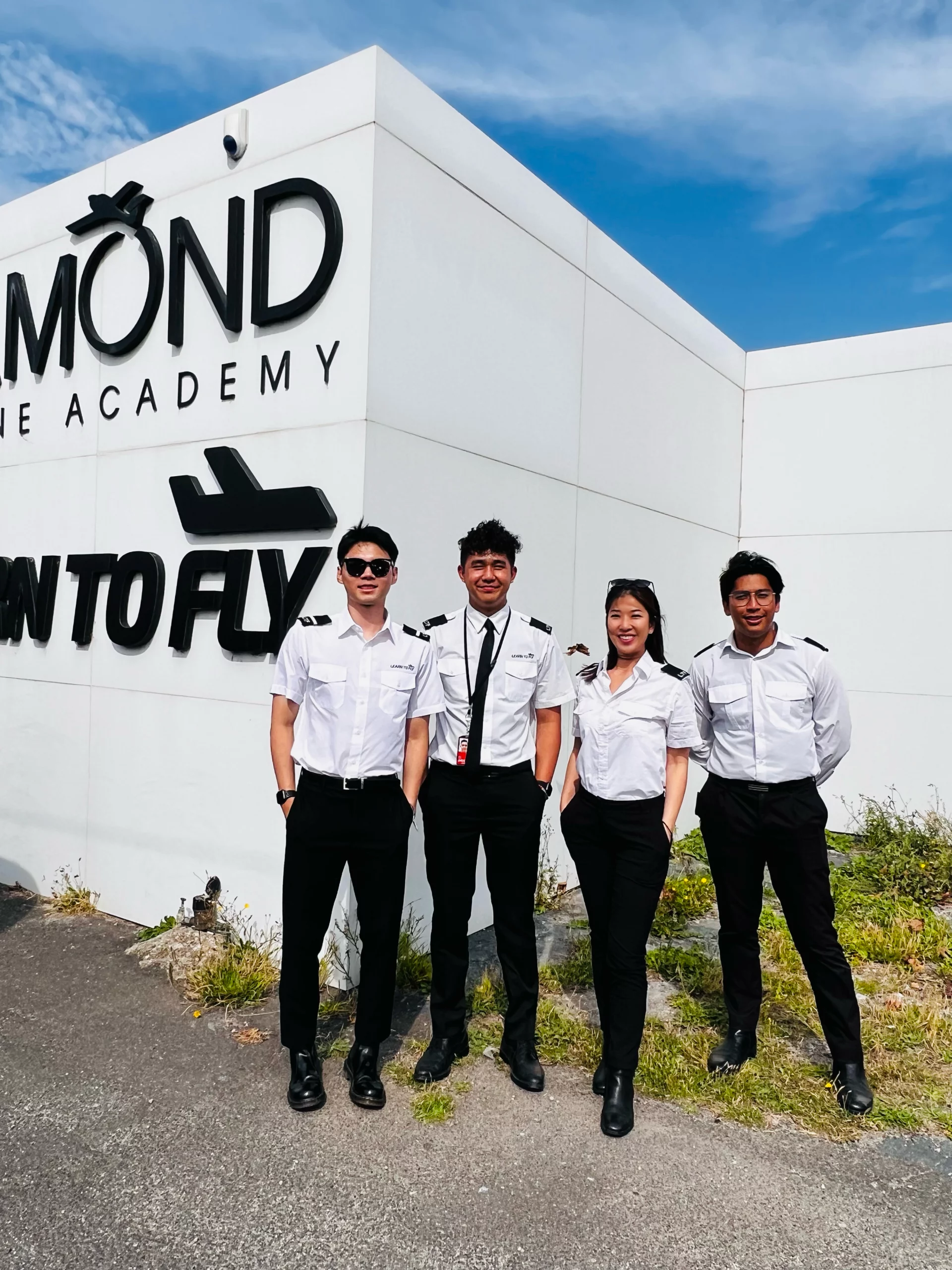
The Impact of Culture on CRM Training
Crew Resource Management (CRM) training is one of the most important aspects of aviation safety, aimed at bettering communication, decision-making, and cooperation among members of an aviation team.
While the principles of CRM remain universally the same, how these principles are taught and applied might differ considerably in different cultural contexts. Knowledge of cultural differences and their reconciliation in CRM training is central to the development of programs that work for diverse aviation environments.
Culture forms the way people communicate, resolve conflicts, and work as a team.
In aviation, where teamwork is paramount, there are implications of cultural differences on how pilots and crew interpret and implement CRM principles. Hofstede’s dimensions of culture, such as power distance, individualism versus collectivism, and uncertainty avoidance, provide a framework by which differences can be understood.
Power Distance
High power distance cultures will tend to show a great deal of emphasis on hierarchy and authority. In such environments, even when the situation is critical, subordinates may be unwilling to challenge superiors. In low power distance cultures, open dialogue and challenge are part of teamwork. Therefore, CRM training in high power distance cultures needs to focus on assertiveness and speaking up for safety.
Individualism vs. Collectivism
The former is an individualistic culture that emphasises personal responsibility and initiative; the latter is a collectivist culture that emphasises group harmony and collective decision-making. CRM programs in individualistic cultures may focus on empowering individuals to take decisive actions, while those in collectivist cultures might stress consensus-building within the crew.
Uncertainty Avoidance
High uncertainty avoidance cultures prefer clear rules and structured procedures. Hence, CRM training programs should really focus on standard operating procedures (SOPs) and predictability in such environments. Cultures with low uncertainty avoidance may show more acceptance of flexibility; hence, CRM programs need to teach adaptability alongside structure.
Customising CRM for Different Environments
Because of the strong influence of culture, CRM training needs to be specifically designed to meet the particular requirements of the crew and operation environment. Here’s how this cultural adaptation boosts CRM effectiveness:
Contextual Communication
Second, CRM training in high-context cultures should relate to ways of interpreting subtle messages because communication involves using few words and relying on non-verbal aspects. For low-context cultures that value using explicit and direct communications, CRMs that emphasise clarity and eliminating ambiguities are relevant.
Role of Leadership
Leadership styles can diverge significantly across cultures. In hierarchical societies, CRM training may spur leaders to actively seek input from subordinates to create a more open cockpit environment. In contrast, within egalitarian societies, CRM programs might focus on balancing authority with collaborative decision-making.
Scenario-Based Learning
Scenarios that are culturally appropriate make CRM training relatable and impactful; for example, emergency simulations include local norms and challenges, enabling trainees to connect the training with their day-to-day operations.
Language Considerations
Language barriers can prevent good communication among multicultural crews. CRM programs should emphasise how to overcome language differences by using standard aviation phraseology and techniques for clarification of misunderstandings.
Challenges in Multicultural CRM
It is not that easy to implement culturally sensitive CRM training:
Resistance to Change
CRM concepts may also be resisted to the extent that they run counter to cultural norms. For example, junior crew members in high power distance cultures may take some time to feel comfortable speaking up.
Misinterpretation of Behaviors
Behaviors interpreted as disrespectful or passive in one culture may be normal in another. Trainers must understand these nuances to avoid misjudging participants’ engagement.
Balancing Global Standards with Local Adaptation
While global aviation standards demand uniformity, CRM training also has to respect cultural distinctions. Striking this balance requires careful planning and execution.
The Need for Cross-Cultural Competence
This would also be an important development of cross-cultural awareness for CRM trainers and participants. Aviation is an inherently global industry; most often, crew members are from different backgrounds. Cross-cultural training prepares professionals to handle differences and develop a harmonious team.
· Fostering Mutual Respect: Encouraging mutual respect for cultural differences promotes harmony within the crew, enhancing overall CRM effectiveness.
· Improving Conflict Resolution: Cultural misunderstandings could lead to conflicts in high-stress situations. CRM training with conflict resolution techniques, tailored for multicultural settings, helps avoid such risks.
· Strategic Decision-Making: Recognising cultural influences on decision-making processes allows crews to work collaboratively and make sound judgments, even under pressure.
Implications for Pilot Training Programs
Such CRM training has wider implications in pilot training programs, which include those in a CPL course in Australia or even those attending a cadet pilot training program. These need to include such modules in their syllabi as a way to prepare pilots adequately for the realities of the global aviation industry.
· Holistic training implies that technical training includes cultural awareness, so pilots become competent not only in their profession but also as team players in any diverse environment.
· Global competitiveness. Such cross-cultural CRM training will enable pilots to work with any international airline, thus increasing their chances of being employed.
· Safety and efficiency. A culturally aware CRM program reduces miscommunication and allows for a much safer, more effective operating environment.
Cultural differences have a lot to do with reshaping the dynamics of CRM training. The industry can enhance the effectiveness of CRM principles through tailoring programs reflecting diverse aviation environments, which in turn is expected to improve safety outcomes. Whether doing a CPL course in Australia or being part of a cadet pilot training program, one has to understand and address cultural influences while flying in today’s global aviation arena. Being professionals in aviation, the embracing of cultural diversity within CRM training encourages better teamwork and communication while preserving the industry’s commitment to safety and excellence.
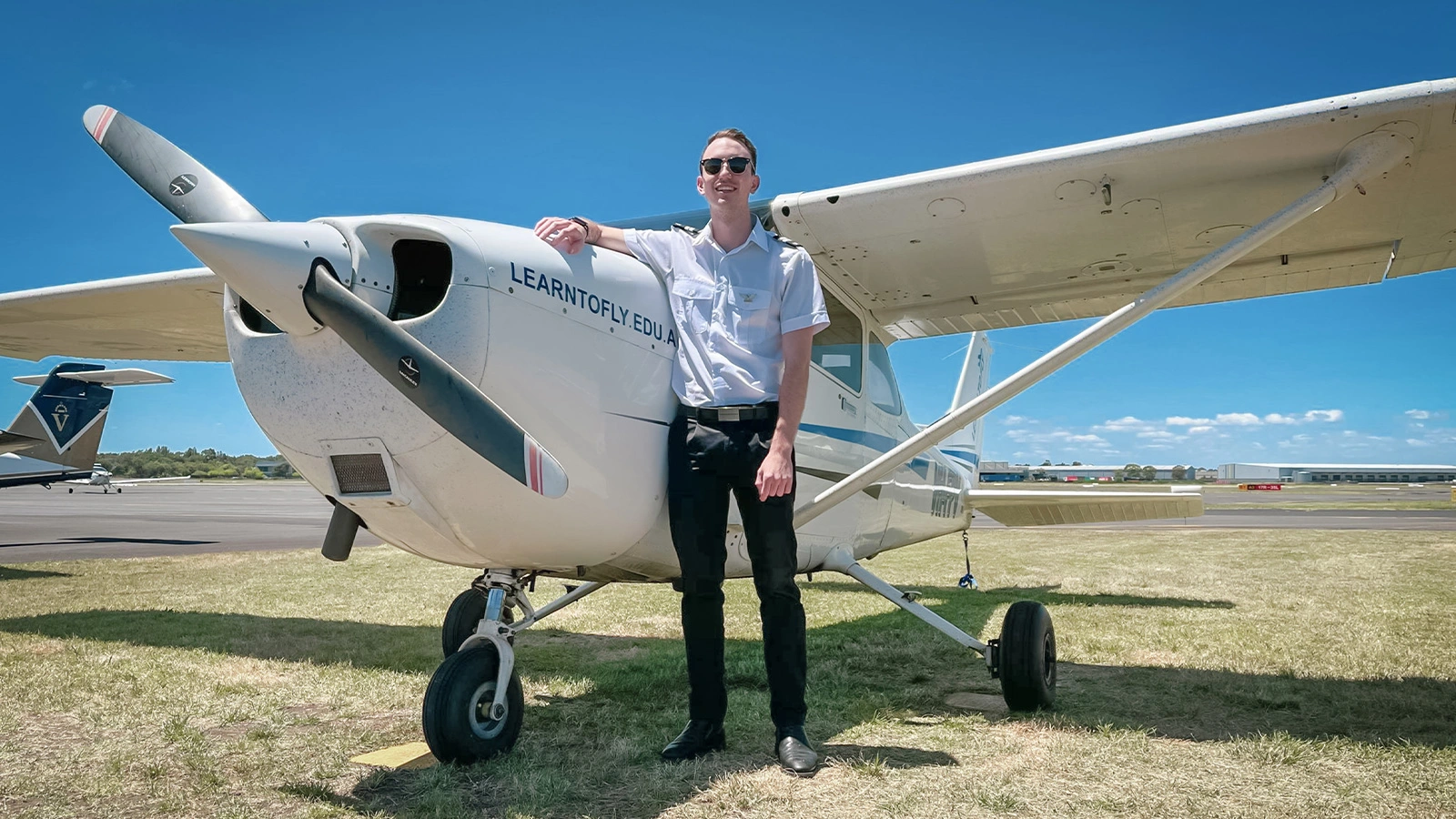
Understanding the Aviation Medical Exam for a Private Pilot License in Australia
Obtaining a private pilot license in Australia is a rewarding journey, especially for international students who bring diverse experiences to the skies. For those in aviation training in Taiwan aiming to achieve this, one crucial step is passing the aviation medical exam.
In this blog, we’ll discuss the medical standards, exam process, tips for preparation, and resources to help Taiwanese students navigate this essential requirement.
Why is the Aviation Medical Exam Important?
The aviation medical examination is a requirement for persons applying for a private pilot’s license in Australia. CASA has put in place such requirements since it is expected that all pilots should have health and fitness markers that are quite vital for safe flying.
Unlike a standard health check, the aviation medical exam provides an assessment of specific health markers relevant to the physical and mental demands of flying.
Levels of Medical Certification
Australia has two primary classes of aviation medical certification for pilots:
- Class 1 Medical Certificate: Typically required for commercial pilots.
- Class 2 Medical Certificate: Required for private pilot license applicants and recreational pilots.
Since this blog is focused on students pursuing a private pilot license in Australia, we’ll concentrate on the Class 2 Medical Certificate.
What Does the Class 2 Medical Certificate Cover?
The Class 2 Medical Certificate requires a comprehensive medical check, which includes evaluations that might not be part of regular health exams. The primary areas assessed include:
- Vision: Ensuring good eyesight is essential for pilots, as clear vision is needed for tasks like reading cockpit instruments, observing runway conditions, and maintaining situational awareness.
- Hearing: Good hearing is vital for understanding communications with air traffic control and ensuring clear in-cabin communication.
- Cardiovascular Health: The test screens for any potential heart issues that could pose risks while flying.
- Neurological Health: CASA requires screenings for neurological health to ensure that no conditions (such as epilepsy) could impair a pilot’s ability.
- Mental Health: Cognitive and psychological evaluations ensure that the applicant is mentally fit for the demands of piloting.
These tests help CASA ensure that each pilot is fit to handle both the physical and mental requirements of flying.
Preparing for the Aviation Medical Exam: Steps for Taiwanese Students
It is very important for international students, especially those from Taiwan who would not be familiar with the Australian aviation regulatory environment, to prepare for the aviation medical exam. The steps below should help Taiwanese students do so.
1. Familiarise Yourself with CASA’s Medical Standards
CASA offers detailed information about the medical standards required for a Class 2 Medical Certificate. Take some time to review these standards, which are available on CASA’s official website. Understanding the requirements will help Taiwanese students identify any health concerns they may need to address before travelling to Australia.
2. Schedule a Medical Exam with an Approved Designated Aviation Medical Examiner (DAME)
The aviation medical examination should be done by a CASA-approved DAME. Since these doctors are eligible to perform aviation-related check-ups, it would be better to refer to CASA’s list of DAMEs in Australia. Most Taiwanese students just arrange for the examination once they arrive in Australia, for simplicity.
Tip: This appointment needs to be booked well in advance as some examiners have longer waiting times, especially in larger cities such as Melbourne.
3. Review Your Medical History
Your medical history is crucial for the aviation medical exam. CASA requires detailed medical records, so gathering these documents before leaving Taiwan can save time. Consider having them translated into English if necessary to avoid misunderstandings or delays in the assessment process.
4. Vision and Hearing Tests: Tips for Preparation
Since vision and hearing are critical aspects of the medical exam, it’s a good idea for students to get checked by their local doctors in Taiwan before travelling. If you wear glasses or contact lenses, ensure your prescription is current, and bring a copy of it with you to Australia.
Common Health Challenges and How to Address Them
Some health conditions that are not bothersome in daily life will, nevertheless, keep a pilot grounded and unable to get a license. Here is a discussion of some common health issues and some tips on how best to approach them.
Cardiovascular Health
Some others might require further testing of cardiovascular health, including an electrocardiogram. A healthy lifestyle with a good diet and enough exercise gives people better cardiovascular health and therefore helps pass this part of the examination.
If you’ve had heart-related issues in the past, discuss this with the DAME to understand how it might impact the certification process.
Mental Health Considerations
You need to have mental endurance and stability while flying an aeroplane. That does not rule out a person if a student has a history of psychological issues, but he may be required to give more information or even undergo further evaluation. CASA approach is sensitive in the mental health evaluation and engenders both the safety of the pilots and accessibility.
Tip: Be open about your history of mental illness, and seek an opinion from a mental health professional in Taiwan if you feel anxious about scheduling the exam.
Drug and Medical Waivers
Some medications are restricted under CASA’s regulations, so students should inform the DAME about any current prescriptions. In some cases, exemptions may be available, but these must be approved by CASA. Having your medication documentation ready and explaining any treatments you’re undergoing can help smooth the process.
What Happens After the Medical Exam?
Once the aviation medical exam is completed, your DAME will submit the results to CASA for review. The processing time for certification can vary, so it’s essential to plan this exam early in your aviation training in Taiwan. Here’s what to expect after the exam:
- Review Period: CASA will assess your medical exam results and may request additional information if there are concerns.
- Outcome Notification: CASA will notify you of your certification status. If approved, you will receive your Class 2 Medical Certificate, which is valid for two years.
- Re-examinations and Monitoring: In some cases, CASA may require pilots to undergo periodic health assessments, particularly if a health condition is noted that could change over time.
Tips for a Successful Medical Exam
Achieving a successful outcome requires good preparation and understanding of what the medical exam entails. Here are some additional tips:
- Get Adequate Rest: A restful night before the exam helps ensure accurate results, particularly for blood pressure and heart rate measurements.
- Hydrate: Drinking water can aid in smoother blood work, which is part of some medical exams.
- Avoid Stimulants: Avoid caffeine and other stimulants before the exam, as these can artificially raise blood pressure and heart rate.
Resources for Taiwanese Students
Here are some resources to help Taiwanese Students prepare better for the aviation medical exam and overall private pilot license in Australia journey:
- CASA’s Website: CASA’s official website provides full details on medical standards, including if there have been any updates to the certification process.
- Guidance and Support: Learn to Fly provides students with guidance and support throughout their training, from consulting with their instructors or administrative team to assist with scheduling exams, gathering any documents required, or understanding the aviation medical standards in Australia.
- Online Aviation Communities: Several international aviation student online forums or Australian pilot training forums can be found which provide prospective students with further information and accounts from other students first-hand.
The aviation medical examination is one of the important milestones in obtaining a private pilot’s license in Australia. To Taiwanese students, knowing the requirements of the process, preparing early, and using available resources will make it truly effective and efficient. From reviewing CASA’s medical standards to organising all documents and maintaining good physical health, with every step, the student will be putting themselves forward toward successful aviation training.
Passing this exam brings them a step closer to their dream of flying while ensuring that they meet the stringent safety and health requirements needed to confidently take to the skies.

Identifying hazardous weather as an aviator
Among all the important components in aviation, weather is one of the most critical. It affects not just the safety of a flight but also comfort. Indeed, one of the important skills a pilot must acquire is the ability to understand and recognise hazardous weather conditions. Be it flying on small aircraft or jets, it is of great importance for a pilot to identify possibly hazardous weather conditions, interpret forecasts, and make informed decisions in view of maintaining flights safely.
Whether you’re training at a Taiwan flight school to become an aviator or you already hold a private pilot license, the fundamentals of interpreting weather patterns are significant for successful flying.
Weather patterns and fronts
Highs and fronts are major factors that determine the state of the atmosphere because they affect temperature, wind, and sometimes even precipitation. A pilot who can recognise and forecast such changes in weather conditions will know how to avoid hazardous situations.
High-pressure systems
High-pressure systems are associated with stable and clear weather. The air within a high-pressure system descends and spreads out at the surface. This creates, for the most part, fair skies, light winds, and low precipitation. While high-pressure areas offer good flying conditions, they also can be associated with temperature inversions that may cause haze or fog in certain areas.
Low-pressure systems
Low-pressure systems have the opposite effect, and as air rises, it cools. More often than not, cloud formation and precipitation mean unstable weather. These usually bring cloudy skies, strong winds, and a chance of thunderstorms. Flying through or near low-pressure systems, for their part, requires much more caution from pilots since they may be the cause of turbulence, poor visibility, and other hazards.
Weather fronts
Where two air masses with different temperatures and characteristics meet, there is a boundary known as a front. The principal fronts are warm fronts and cold fronts.
A warm front is when a mass of warm air is moving over a mass of colder air, its movement causes the leading edge to rise, a process that is done slowly, changing the weather changes gradually. Associated with warm fronts are steady rains or snow with reduced visibility. Clouds of many types can exist hundreds of miles in advance of the front and produce persistent weather problems for pilots.
Cold fronts are when a cold air mass pushes into a warmer one, the result is a cold front. Cold fronts bring sudden changes in weather, including thunderstorms, turbulence, and gusty winds. These can be associated with the rapid uplift of warm air to form cumulonimbus clouds and severe thunderstorms.
Understanding these systems assists pilots in anticipating weather over the course of a flight and in avoiding unsafe areas.
Reading weather charts and forecasts
Some of the most valuable resources available to make predictions about weather patterns and hazards are various types of weather charts and forecasts. Proper interpretation of these resources will enable pilots to plan routes that minimise risks and ensure safe flights.
Surface Analysis Charts
The surface analysis charts indicate current weather at ground level: high and low-pressure systems, frontal boundaries and the direction of wind flow. Symbols to be associated with:
- H: High-pressure system; usually good weather
- L: Low-pressure system; generally poor weather
- Isobars – Lines connecting equal pressure points. Closely packed isobars indicate strong winds.
Upper-Air Charts
Upper-air charts Upper-air charts are weather charts depicting the features at higher levels of the atmosphere where the pilot spends most of his time. These charts are essential for understanding jet streams, turbulence, and wind shear, which can greatly affect flight performance. Pilots must be especially aware of these upper-air conditions when planning their flight path.
Identifying adverse weather
Besides, the pilot needs to be aware of how to recognise dangerous weather phenomena and estimate the potential of the flight under dangerous weather conditions.
The most hazardous weather phenomena are the following:
- The most serious hazard to flight is thunderstorms. Turbulence, lightning, hail, and even tornadoes are potential hazards. Flight through a thunderstorm can be perilous because severe turbulence and wind shear may be encountered: extreme turbulence can cause loss of control or structural damage.
- Turbulence is the product of airflows of different speeds and directions colliding with one another. This can be due to weather conditions, such as storms, or the simple act of flying over mountains-what is called clear air turbulence. Moderate to severe turbulence can cause an aircraft to become unstable; therefore, passengers or crew may get injured, making it very important to avoid areas where turbulence will probably occur.
- Ice on the wings or fuselage of an aircraft can seriously impair its aerodynamics and performance. Icing conditions occur when moisture in the air freezes upon contact with aircraft skin. This usually occurs in clouds or precipitation. Icing can result in engine failure, loss of lift, and handling difficulties.
- Low visibility, due to fog, heavy rain, or snow, makes it difficult or impossible for the pilot to conduct the flight by visual references. Low visibility can also contribute to disorientation, especially through loss of horizon or surrounding terrain references, which increases the possibility of an accident.
Aviation is completely at the mercy of even treacherous weather conditions. With proper training and knowledge, however, pilots will be able to ply the skies safely. Grasping weather patterns, reading forecasts, and monitoring during flight are the principles leading to recognising hazardous situations and making judicious decisions. Identification and reaction to hazardous weather are integral parts of becoming a safe and competent pilot, either training here in a Taiwan flight school or building hours toward a private pilot license. Always train in safety, and never underestimate the power of weather in aviation.

Ratings and endorsements commercial pilots can secure
There is often strong competition among commercial pilots in the aviation industry and many will pursue additional ratings and endorsements to stand out and enhance their career prospects.
These specialised certifications expand their skill set, enabling them to operate different types of aircraft, manage complex flight operations, and take on more diverse flying roles.
In aviation, a rating is an authorisation that allows a pilot to operate a specific type of aircraft or to conduct certain types of operations. An endorsement is a notation added to a pilot’s license, often indicating proficiency in a specific skill or capability.
Both ratings and endorsements are crucial for pilots looking to advance their careers, as they signify a higher level of expertise and broaden the scope of their flying opportunities.
Let’s look at a few of the ratings and endorsements pilots can pursue during their careers.
Instrument Rating (IR)
The Instrument Rating (IR) is one of the most sought-after ratings for pilots. It authorises pilots to fly in conditions where visual references are limited or unavailable, such as in clouds, fog, or heavy rain. With an IR, pilots can rely on their instruments for navigation and flight control, significantly enhancing their ability to operate safely in adverse weather conditions.
Many commercial operations, including airline and charter flights, require pilots to have an IR. It is often a prerequisite for more advanced ratings and is essential for career progression.
An IR equips pilots with the skills to handle challenging weather conditions, reducing the likelihood of accidents due to poor visibility.
Pilots with an IR can fly under Instrument Flight Rules (IFR), which allows for more direct routing and reduces delays caused by weather.
Pilots typically undergo specialised training that includes both ground school and flight training. The training focuses on understanding and using flight instruments, IFR navigation, and flying solely by reference to instruments.
Multi-Engine Rating (MER)
A Multi-Engine Rating (MER) allows pilots to operate aircraft with more than one engine. This rating is crucial for pilots aiming to work with airlines, charter companies, or any operation that involves multi-engine aircraft.
Most commercial aviation jobs, especially those involving larger aircraft, require a multi-engine rating. Multi-engine aircraft generally offer better performance, such as higher speed, altitude capabilities, and reliability, particularly over long distances or in challenging environments. Almost all airline pilots operate multi-engine aircraft, making this rating a critical step towards an airline career.
Training for an MER involves theoretical knowledge and practical flying experience in a multi-engine aircraft. Pilots learn about the aerodynamics of multi-engine planes, engine-out procedures, and how to manage asymmetric thrust. The training culminates in a practical test where pilots demonstrate their ability to handle multi-engine aircraft under various conditions.
Type Ratings
A Type Rating is a certification to operate a specific aircraft type, typically required for larger or more complex aeroplanes, such as jets and certain turboprops. Each type rating is specific to the make and model of the aircraft, such as the Boeing 737 or Airbus A320.
Type ratings are mandatory for pilots who wish to fly specific types of commercial aircraft. Airlines often provide type rating training as part of their employment packages. Pilots with type ratings are highly specialised, often leading to better job security and higher salaries. Gaining a type rating involves in-depth training on the aircraft’s systems, performance, and handling characteristics, making the pilot an expert in that specific model.
The process involves extensive ground training, including systems knowledge and simulator sessions, followed by in-flight training in the specific aircraft. Pilots must pass a comprehensive check ride to obtain the type rating.
Flight Instructor Rating
The Flight Instructor rating allows commercial pilots to teach and train student pilots. It is a common pathway for pilots looking to build flight hours and experience while earning an income.
Instructing is one of the fastest ways for new commercial pilots to accumulate the flight hours needed for more advanced positions. Teaching others deepens a pilot’s understanding of flight dynamics, regulations, and best practices, making them more well-rounded aviators. They can work at flight schools, offer private lessons, or even operate their own flying school.
Pilots must first complete additional training focused on teaching methods, lesson planning, and how to effectively communicate complex concepts. They must also demonstrate their teaching ability during a practical exam with an examiner.
Seaplane Rating
A Seaplane Rating allows pilots to operate aircraft equipped for water landings and take-offs. While not as commonly required as other ratings, it opens up unique flying opportunities in regions with significant water bodies.
Pilots with a seaplane rating can work in specialised sectors such as tourism, firefighting, and remote area supply. Flying seaplanes require advanced piloting skills due to the challenges of water operations, making it a valuable addition to a pilot’s credentials.
Training typically involves a few hours of flight time in a seaplane, focusing on water take-offs, landings, and taxiing. Pilots must pass a practical test to earn the rating.
Securing additional ratings and endorsements is an essential part of a commercial pilot’s career progression. Each certification expands a pilot’s skill set, opening up new job opportunities and potential career paths. Whether through aviation training in Taiwan or other advanced training programs, pursuing these qualifications requires dedication, continuous learning, and a commitment to safety and excellence. As commercial pilots advance their careers by getting a commercial pilot license and beyond, these additional ratings and endorsements are pivotal in achieving long-term success in the aviation industry.

Career Development and Professionalism in Aviation
Whether aspiring to become a pilot, air traffic controller, aviation manager, or any other aviation professional, cultivating a mindset of continuous learning and professionalism is crucial.
Career development and professionalism are a vital aspect of any role in any industry but in aviation, it goes beyond obtaining certifications and licenses. It involves ongoing education, skill enhancement, and career advancement opportunities. Pursuing higher education, such as a bachelor of aviation in Melbourne or training at prestigious institutions like the Hong Kong Aviation Academy, can open doors to diverse career paths within the aviation industry.
Continuous learning and training
Continuous learning and training are essential for aviation professionals to stay updated on industry advancements. Whether it is new technologies, updated regulations, or evolving best practices, staying informed is crucial for maintaining competence and ensuring safety. This involves participating in workshops, seminars, and specialised training programs tailored to the specific needs of aviation roles. By investing in ongoing education, professionals can enhance their skills, adapt to changes in the industry, and uphold the highest standards of safety and professionalism in their work.
Networking and professional connections
Networking and building professional connections are invaluable for career advancement in the aviation industry. Professionals can access mentorship, collaboration, and career development opportunities by cultivating a robust network. Attending industry events, joining professional associations, and participating in online forums enable individuals to connect with peers, mentors, and potential employers. These connections provide insights into job opportunities, industry trends, and best practices, ultimately supporting career growth and success in aviation.
Adhering to ethical standards
Professionalism in aviation encompasses adhering to ethical standards and codes of conduct. Aviation professionals are entrusted with the safety and well-being of passengers and crew, making these decisions a core part of their responsibilities. Upholding integrity, honesty, and accountability builds trust and credibility within the aviation community.
Developing leadership skills
Leadership skills are vital for career advancement in aviation, as they empower professionals to inspire, guide, and motivate teams towards shared goals. Effective leadership cultivates collaboration, enhances communication, and sustains a culture of excellence within aviation organisations. Developing leadership skills involves honing abilities such as decision-making, problem-solving, and conflict resolution, which are essential for navigating the aviation industry.
Aviation professionals can cultivate leadership capabilities through mentorship, training programs, and hands-on experience in managerial roles. By investing in leadership development, individuals enhance their career prospects and contribute to the overall success and resilience of aviation operations. Strong leadership enables organisations to adapt to challenges, innovate, and achieve sustainable growth.
Embracing diversity and inclusion
Embracing diversity and inclusion in the aviation industry supports innovation, creativity, and collaboration. With professionals hailing from diverse backgrounds and cultures, the industry benefits from a broad spectrum of perspectives and experiences. By creating inclusive work environments where all individuals feel valued and respected, aviation professionals can harness the full potential of their teams. Embracing diversity enriches organisational culture and enhances decision-making processes. In the aviation sector, embracing diversity is essential for driving progress, meeting challenges, and achieving sustainable success.
Maintaining professionalism in challenging situations
When faced with adverse conditions or emergencies, such as severe weather or technical malfunctions, pilots, air traffic controllers, pilots and ground staff must remain composed and focused on executing their duties with precision.
Clear communication, adherence to standard operating procedures, and swift decision-making are crucial for resolving crises and ensuring the safety of passengers and crew. Professionalism extends beyond technical competency to encompass empathy, teamwork, and a commitment to excellence. By upholding these values in the face of adversity, aviation professionals mitigate risks and inspire confidence among passengers and colleagues.
Ultimately, maintaining professionalism in challenging situations is a testament to the dedication and integrity of individuals in the aviation industry.
Investing in personal growth
Investing in personal growth is an essential aspect of career development and professionalism in aviation. Beyond technical expertise, aviation professionals should prioritise the cultivation of soft skills such as effective communication, critical thinking, and leadership. These skills improve job performance and facilitate collaboration, decision-making, and conflict resolution in diverse work environments. Investing in personal well-being sustains resilience and managing stress in high-pressure aviation roles. Engaging in activities like mindfulness meditation, regular exercise, and pursuing hobbies outside of work promotes mental and emotional balance, thereby enhancing overall job satisfaction and performance. By actively seeking opportunities for personal growth and self-improvement, aviation professionals can continue to evolve and excel in their careers while contributing positively to the industry.
Career development and professionalism are fundamental principles that underpin success in the aviation industry. Aviation professionals can confidently navigate their careers and contribute to advancement and safety by prioritising continuous learning, ethical conduct, leadership development, and personal growth. Whether pursuing a bachelor of aviation or learning in an airline cadet program, aspiring aviation professionals should embrace the values of career development and professionalism to excel in their chosen fields.

Studying At an Aviation Academy: What to Consider
Embarking on a journey to study at an aviation academy is an exciting prospect for aspiring pilots and aviation enthusiasts.
There are several key factors to know about studying at an aviation academy, from choosing the right academy to navigating visa requirements and exploring academic programs and opportunities.
Choosing the right aviation academy
Selecting the right aviation academy is the crucial first step for aspiring pilots embarking on their journey in aviation. Several factors must be carefully considered to ensure the chosen institution aligns with the student’s goals and aspirations.
Reputation is an important aspect to consider when evaluating aviation academies. A reputable institution is more likely to offer high-quality education, experienced faculty, and comprehensive training programs. Prospective students should research the academy’s track record, alumni success stories, and industry recognition to gauge its reputation accurately.
Accreditation and certification are indicators of an aviation academy’s quality and legitimacy. Students should prioritise academies accredited by reputable aviation regulatory bodies or national aviation authorities. Accreditation ensures that the academy meets stringent standards in curriculum, training, facilities, and student support services. Certification serves as a guarantee of excellence and adherence to industry best practices.
Evaluating the academy’s facilities, faculty expertise, and available programs and specialisations is essential. State-of-the-art training facilities equipped with modern simulators, aircraft, and maintenance facilities contribute significantly to the learning experience. Experienced faculty members with industry expertise, connections and a passion for teaching enhance the quality of education and mentorship provided to students.
Researching multiple academies, reading reviews, and considering factors such as location, cost, and curriculum alignment with career goals are crucial steps in the decision-making process. Finding an institute that supports the student’s requirements and aspirations is vital, as it will serve as the foundation for their career in aviation.
By carefully considering these factors, aspiring pilots can select the right aviation academy to begin their careers.
Navigating visa and immigration requirements for international students
International students must navigate visa and immigration requirements to study abroad. Each country has its own visa policies and procedures, therefore it is essential to research and understand the requirements for the destination country and the specific aviation academy. Seek guidance from the academy’s international student services office or immigration advisors for assistance with visa applications and compliance.
Costs and financial considerations
Studying at an aviation academy involves financial considerations beyond tuition fees, including living expenses, accommodation, travel, and insurance. Research and budget for all associated costs, explore scholarship and financial aid opportunities. Students should also consider factors such as currency exchange rates and the cost of living in the destination country.
Academic programs and specialisations offered
Aviation academies offer a range of academic programs and specialisations tailored to different career paths in aviation.
Whether pursuing a private pilot license, commercial pilot license, or advanced aviation degree, explore the curriculum, course offerings, and training facilities to ensure alignment with career aspirations and learning objectives.
School qualifications and training standards
School qualifications and training standards are critical indicators of the quality of education and training at an aviation academy.
Research the qualifications and experience of the flight school, including their aviation credentials, industry experience, and teaching qualifications. Some schools operate under Part 141 regulations, offering a non-integrated 200-hour Commercial Pilot License (CPL) flight training syllabus. Others are Part 142 certified, providing a 150-hour integrated CPL training syllabus. Opting for a Part 142 school can save you time and money by reducing the required flying hours by 50. Look for academies that adhere to rigorous training standards and employ experienced aviation professionals as instructors.
Campus facilities and resources available to international students
Campus facilities and resources play a significant role in the overall student experience at an aviation academy.
Evaluate the academy’s facilities, including classrooms, flight simulators, aircraft fleet, and training equipment. Consider factors such as safety standards, maintenance practices, and accessibility of resources for international students.
Student support services and cultural integration programs
International students may require additional support and assistance to adapt to a new academic and cultural environment. Look for aviation academies that offer comprehensive student support services, including orientation programs, academic advising, counselling services, and cultural integration programs. These services can help international students navigate academic challenges, cultural differences, and homesickness.
Internship and job placement opportunities for international students
Internship and job placement opportunities are valuable components of aviation education, providing hands-on experience and industry connections. Research the academy’s partnerships with aviation companies, airlines, and employers for internship and job placement opportunities. Consider factors such as the academy’s track record of student placement and alumni success in the aviation industry.
Studying at an aviation academy offers a unique opportunity for aspiring pilots to pursue their passion for aviation and achieve their career goals. By carefully considering factors such as academy reputation, accreditation, visa requirements, costs, academic programs, faculty qualifications, campus facilities, student support services, and internship opportunities, international students can make informed decisions and embark on a successful journey in aviation education.
Whether enrolling at the Hong Kong Aviation Academy or pursuing a commercial pilot license in Australia, international students can pursue their dreams with confidence and preparation.

Building Confidence and Overcoming Challenges at Flight School
Flight school is an exhilarating journey filled with growth opportunities, yet it also presents its fair share of mental and emotional challenges. Aspiring pilots often find themselves grappling with self-doubt, anxiety, and the pressure to perform. However, by understanding and addressing these challenges head-on, pilots can cultivate confidence and resilience to navigate their training journey successfully.
Understanding Mental and Emotional Challenges:
Understanding mental and emotional challenges in flight training is vital for cultivating competent and resilient pilots. Pilots-in-training face psychological obstacles, including self-doubt, fear of failure, and performance anxiety, which can impede their progress. In the intense environment of flying school in Hong Kong, where the responsibility of operating an aircraft becomes significant, these challenges are magnified.
Acknowledging these barriers is the first step toward overcoming them. Techniques such as stress management strategies, mindfulness exercises, and cognitive-behavioural interventions can help aspiring pilots develop resilience and cope with pressure effectively.
A culture of open communication and peer support within flight training communities can normalise discussions around mental health and reduce stigma. Encouraging students to share their experiences and seek assistance promotes a supportive learning environment conducive to personal growth.
Practical Strategies for Building Confidence as an Aspiring Pilot
Addressing mental and emotional challenges in flight training enhances pilot well-being and contributes to safer skies. Pilots equipped with tools to manage stress and maintain emotional stability are better prepared to make sound decisions, handle emergencies, and ensure the safety of themselves and their passengers. Below are practical strategies for aspiring pilots to help build confidence:
Set realistic goals
Establishing clear and achievable goals is essential for maintaining focus and motivation throughout flight training. Break down larger objectives into smaller, manageable tasks, allowing you to track progress and celebrate milestones. Whether it is mastering a specific manoeuvre or completing a solo flight, each accomplishment brings you one step closer to your ultimate goal of becoming a pilot.
Embrace failure as a learning opportunity
Mistakes are inevitable and serve as valuable learning experiences. Instead of viewing failures as setbacks, reframing them as opportunities for growth can help shift your mindset towards continuous improvement. Analyse what went wrong, identify areas for improvement, reach out to instructors to help learn what went wrong and how to succeed next time and approach each challenge with a sense of curiosity and resilience.
Practice visualisation techniques
Visualisation is a powerful tool to mentally rehearse success and is used by athletes, performers, and pilots alike. Take time to visualise yourself performing flight manoeuvres with precision and confidence, imagining every detail from take-off to landing. By repeatedly visualising success, you can build confidence, reduce anxiety, and enhance performance in the cockpit.
Seek support from peers and instructors
Flight training can be a solitary endeavour, but it’s essential to cultivate a support network of fellow students, instructors, and mentors. Surround yourself with individuals who understand the challenges of flight training and can offer encouragement, guidance, and perspective during difficult moments. Whether it’s sharing experiences, seeking advice, or simply lending an empathetic ear, the support of others can make all the difference.
Manage stress through relaxation techniques
Flight training can be inherently stressful, but incorporating relaxation techniques into your routine can help mitigate anxiety and improve overall well-being. Experiment with techniques such as deep breathing, mindfulness meditation, or progressive muscle relaxation to calm your mind and body before, during, and after flight lessons. You can enhance focus, decision-making, and performance in the cockpit by managing stress effectively.
Cultivate resilience
Resilience is the ability to bounce back from setbacks and adversity, and it’s a quality that’s indispensable in aviation. Recognise that setbacks are temporary and setbacks are an inevitable part of the learning process. Instead of dwelling on failures, focus on your strengths, learn from your experiences, and approach challenges with determination and perseverance.
Maintain a healthy work-life balance
Flight training demands significant time and energy, but it’s essential to prioritise self-care and maintain a healthy work-life balance. Schedule regular breaks, engage in activities outside of aviation, and nurture relationships with friends and family. You’ll be better equipped to handle the demands of flight training and perform at your best by taking care of your physical, mental, and emotional well-being.
Celebrate your progress
Don’t forget to celebrate your achievements along the way. Whether it’s passing a milestone, mastering a challenging manoeuvre, earning your private pilot license or a bachelor of aviation in Australia, take time to acknowledge and celebrate your progress. Recognising your accomplishments boosts your confidence and serves as a reminder of how far you’ve come on your journey towards becoming a pilot.
Flight training is as much a mental and emotional journey as a technical one. By understanding the challenges you may face and implementing strategies to overcome them, you can build the confidence and resilience to achieve your aviation goals. Remember that every successful pilot has encountered obstacles along the way – it’s how you respond to them that sets you apart. With determination, perseverance, and a positive mindset, you can conquer self-doubt, manage anxieties, and navigate flight training.

A Brief History of Navigation
There’s no doubt that aviation has transformed the way people move throughout the modern world. With the dawn of passenger aviation, people were suddenly able to traverse the world with ease. In order for air travel to be so successful, navigation systems had to develop alongside aircraft technology.
Pilots and air traffic controllers, the unsung heroes of aviation, rely on sophisticated systems to navigate the vast expanse above. In this exploration, we’ll delve into the intricacies of how pilots and air traffic controllers physically navigate the skies. We’ll trace the history of navigation systems from their simplistic beginnings to the cutting-edge technologies employed today.
Early Days of Aviation
In the early days of aviation, navigation was very simple. Pilots relied on compasses and visual landmarks to chart their course. The lack of advanced technology meant navigating was a challenge, especially in poor weather conditions. As a result, a clear need developed for a more reliable form of aerial navigation. As a result, early aviation pioneers began to lay the groundwork for the systems in use today.
VOR Navigation: A Pillar of Precision
Rise of Radio Navigation
The introduction of radio navigation was a giant leap forward in technology. Following extensive research and development, Very High-Frequency Omni-Directional Range (VOR) navigation emerged as a reliable tool for in-flight guidance. The VOR system operates via a network of stations that transmit signals for aircraft equipment to interpret. This system then allows pilots to determine their radial position from the station. It meant a large improvement in navigational accuracy, with the result that pilots could now follow pre-defined airways and navigate with greater confidence.
Understanding VOR Principles
VOR navigation relies on ground-based stations that are equipped with rotating beacons. These beacons emit signals in all directions, with the aircraft’s onboard VOR receiver determining the phase difference between two signals. This information is then translated into a radial position, providing pilots with a reliable reference point for navigation. While VOR has now been replaced as the standard, a certain amount of VOR stations still operate in most countries. These stations continue to serve as a backup system.
Limitations and Redundancy
While VOR navigation was a significant advancement, it was not without its limitations. The line-of-sight nature of VOR signals can pose challenges in mountainous terrain or areas with tall structures. Recognizing this, modern aviation has embraced a combination of VOR with other navigation systems, ensuring a fail-safe approach to guiding aircraft through the skies.
GPS Navigation: The Technological Revolution
Global Positioning System Unleashed
The invention of the Global Positioning System (GPS) marked a technological revolution in aviation navigation. Developed by the United States Department of Defense, GPS utilizes a constellation of satellites to provide precise location information to users around the globe. In particular, understanding GPS has become a cornerstone of modern pilot training and aviation education.
Unrivalled Precision and Versatility
GPS navigation has transformed the way aircraft navigate, offering unparalleled precision and versatility. Satellites constantly transmit signals that aircraft receivers utilize to calculate their exact position, speed, and altitude. As a result, this real-time data empowers pilots with the ability to navigate through diverse landscapes and challenging weather conditions with confidence, a capability that was inconceivable in the early days of aviation.
Integration with Other Systems
Modern aviation students and cadet pilots learn the importance of integrating GPS with other navigation systems for a comprehensive and robust approach. By combining GPS with VOR, Inertial Navigation Systems (INS) and other technologies, pilots can further ensure redundancy and reliability in their navigation methods. This holistic approach enhances situational awareness and safety, demonstrating the evolution from the simplicity of early navigation to the complexity of modern airspace management.
Conclusion
The evolution of air navigation from its humble beginnings to the present day is a testament to human ingenuity and technological advancement. Aspiring pilots and air traffic controllers undergo training to master systems like VOR and GPS. The aim for students is to understand not only their operational principles but also the importance of redundancy and integration.
In the world of aviation, where every second counts and safety is paramount, a strong system of cutting-edge technology, backed with historical knowledge, ensures that pilots can fly with precision and confidence. As we look to the future, evolving navigation systems will undoubtedly shape the next chapter of aviation, further enhancing the safety and efficiency of air travel for generations to come.

Financing Your Flying: Gaining Your Commercial Pilot License
Obtaining your Commercial Pilot License (CPL) in Australia is one of the best pathways to a rewarding career in aviation. Undertaking flight training overseas can be a thrilling journey. It gives you the opportunity to meet new people, expand your network and fly over some truly stunning terrain. Getting your CPL can be costly, but plenty of options exist to help you achieve your dream. In this blog, we’ll examine the requirements, costs, and benefits of Learn To Fly’s Diploma of Aviation (Commercial Pilot License) course.
CPL Training Overview
Learn To Fly’s CPL training program equips aspiring pilots with the skills and knowledge needed to embark on a career in commercial aviation. Here’s an overview of what the program includes:
Flight Hours
Over the course of a Diploma of Aviation (Commercial Pilot License), you will complete 150.3 Flight Training hours. You’ll receive expert guidance and instruction from experienced flight instructors while you take the controls and gain valuable hands-on experience.
You will also need to complete 3.2 hours in our state-of-the-art flight simulators. Hone your skills in a controlled, simulated environment that will prepare you for real-world scenarios. Simulators allow you to practice specific emergency situations without danger. You can also use simulators to complete flight training when the weather doesn’t allow for flight.
Coursework and Theory
The course is aimed at students with little or no prior flight training experience. The integrated CASA Part 142 training syllabus will teach you key pilot skills. You’ll learn things like accurate and efficient flight planning, safe and accurate aircraft operation, decision-making, enhanced navigation techniques and rules for operating in complex airspace.
Costs of Studying in Australia
As of October 2023, Learn To Fly’s Diploma of Aviation (Commercial Pilot License) program carries a tuition fee of AU$87,950. You will also need to consider the cost of living in Australia for the duration of your stay.
Overseas students studying in Australia need to obtain a student visa from the Australian Department of Home Affairs. Getting a student visa is a simple and streamlined process. To apply, you’ll need to pay an upfront fee and take a medical exam by an approved doctor. Once you’ve got your student visa, there are then cost of living considerations to remember.
You’ll have to account for rent, food, utilities and transport. Typically, students are found to spend between AU$350 and AU$700 per week living in Australia. This cost can vary widely, so it’s important to be prepared for living expenses when studying in Australia.
Is It Worth It?
Pursuing a Commercial Pilot License is an investment in your future. It’s important to consider the potential benefits and career opportunities it can unlock. With Learn To Fly’s training program, you’ll gain the necessary skills and meet an extensive network of aviation professionals. The connections you make can prove invaluable when seeking job placements and advancing your aviation career across the globe.
The Sky Is Calling
Obtaining a Commercial Pilot License in Australia is an exciting journey. It’s one that can open the door to a fulfilling career in aviation. Learn To Fly’s in-depth CPL training program provides aspiring pilots with the skills and knowledge to excel in the industry. While studying for a Diploma of Aviation in Australia can be expensive, your dream of becoming a commercial pilot is within reach. So, take the first step, spread your wings and soar toward a thrilling career in aviation with Learn To Fly.
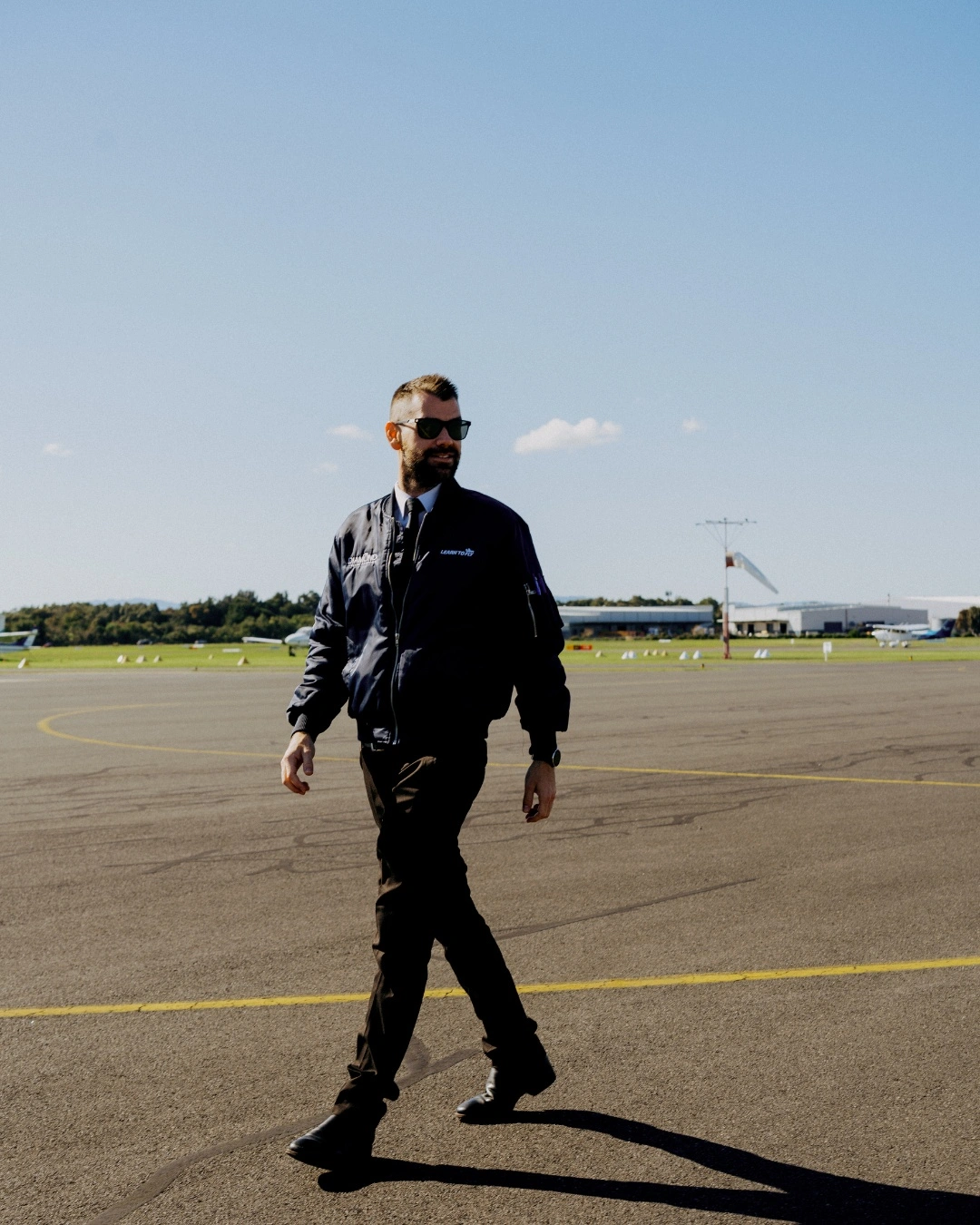
The Future of Pilot Training: Emerging Technologies and Trends
The world of aviation is changing! The future of aviation has been in a spin with emerging technologies and trends. If you’re looking to commence your Diploma of Aviation – or any aviation training – it’s important that you know about these future trends and what you might learn about. Some of these technologies are a result of industrial and technological developments in other fields that transfer into aviation. Having said that, there are also aviation-specific developments that are underway or coming to light, and they’re changing the future of aviation forever. Let’s take a look at some of these emerging technologies and trends to understand the impact and implications they’re having.
What is driving the emerging technologies and trends in future aviation?
If you’re undertaking a Diploma of Aviation, Commercial Pilot Licence Training or any other pilot training or course, let’s first understand the drivers of change.
Saving Money, Making Money
The aviation sector has a number of needs and opportunities that are being fulfilled by emerging technologies and trends. That’s because aviation is known to have high costs and overheads due to compliance and running costs of aircraft and airlines. This means that if there’s any opportunity to save money, there’s an appetite for emerging technologies and trends in the future of aviation. For example, airlines are likely to desire to make running costs cheaper for airlines or introduce cost-effective measures at a consumer level.
In a similar fashion, if there’s scope to provide additional services within the aviation space, there’s an opportunity for someone to make money. This is a key driver of developments in technology and materials, for example.
Time and Convenience
Any opportunity to accelerate construction, development or delivery is attractive to the aviation industry. Emerging technologies and trends in the future of aviation are often aligned with the ability to save time. This could be in manufacturing, running an airline or aviation operation, or saving time for the end consumer.
Lifestyle
Lifestyle has become a big driver of change, and the COVID-19 epidemic seems to have accelerated technological development. For example, developments in private aircraft make aircraft and systems more available and attractive. We’ll touch on some great examples like this shortly.
Safety and Security
Safety and security is a big topic in aviation. That’s because there are inherent risks involved. These risks include the ability to easily cross state, territory and international borders through aviation means. Any opportunity to increase or improve safety in aviation is an opportunity to improve the future of aviation.
What are the major emerging technologies and trends shaping the future of aviation?
Artificial Intelligence and Automation in Aviation
Artificial intelligence (AI) has made leaps and bounds in recent years. More specifically, it is becoming much more widespread and available for everyday use. These developments have even shocked the likes of IT and automation giants, such as Google and Meta. That being said, where does AI fit in aviation? AI and computer-based software have already replaced a number of engineers and crew that formally sat in commercial aircraft.
We are already seeing AI in use through avionics, such as airspace positioning recognition combined with geographic and terrain recognition that is paired with computerised flight inputs or warnings. We haven’t yet mastered driverless vehicles, but we’re close. That means there’s every chance that you’ll see this across aircraft, even at a commercial level, within your lifetime.
In a similar fashion, we are also seeing robotics and automation increasing throughout aviation. This is through AI and also AIoT/IoT (artificial intelligence of things). Not only that, there is more automation coming. Baggage handling, aircraft manufacturing and aircraft maintenance are all areas where employment costs and human error are evident, in which case AI and robotic automation potential exists.
Drones and eVTOL Technology
Radio-controlled drones, such as the DJI range, have changed the aviation sector in a big way. There has been significant development and evolution in the areas of accurate GPS tracking, flight software, electric engines and camera safety management that transposes into private and commercial aviation. For example, this technology is being used directly in drones designed for private aircraft use.
Over the next 10 years, man-made drones and eVTOL Electric Vertical Take-off and Landing) will possibly be the most significant emerging technology and trend in the aviation industry. Single and two-person drones are quickly being developed for commercial and private use beyond the existing military applications, and major influences like the FAA in America are proactively embracing the change. Imagine rolling out your own eVTOL aircraft from home instead of sitting in traffic. We told you the future of aviation was changing!
Internet and Connectivity
Internet and connectivity aren’t particularly new, but it’s constantly being re-discovered for use in new ways. Commercially, connectivity is largely required for consumer comfort and expectations. That being said, it’s also important for security, too. Similarly, behind the scenes of aviation is aircraft tracking and traffic management in airspace which is becoming busier and more complex. Aircraft connectivity and tracking is an area where technologies and trends are shaping the future of aviation. ADS-B in and out is a fundamental example of this, where more aircraft can see other aircraft within their instruments. This helps pilots, but the same technology is assisting control towers to improve the safety and separation of aircraft.
Alternative Fuels & Materials
All transport, energy and manufacturing industries chase alternative energy sources and ma, shaping the future of aviation. The most significant change here is that hybrid and electric aircraft are becoming more common, and materials are becoming faster, stronger or lighter. These emerging technologies are likely to be seen at a smaller scale first, such as private aircraft. As the technology continues to develop and these resources become more available, we’ll also see more alternative resources used in commercial aircraft.
Virtual Reality
Virtual reality and augmented reality have a plethora of applications. Flight simulators have been used in aviation for decades, however, you can now fly aircraft with extremely accurate controls and responses in virtual worlds that simulate amazingly accurate conditions. Plus, you don’t have the same fuel and maintenance running costs. This means you can familiarise yourself with almost any aircraft, in almost any country, and almost any meteorological conditions. What’s the outcome, you ask? Better pilots with more training and experience!
Security and Biometrics
Security and biometrics have created significant safety developments, and more emerging technologies are on the horizon. Facial recognition, fingerprint recognition and biometric forms of identification mean that in airports and aircraft, we have significant leaps in safety. At a lower level is encryption of data transactions, which prevents hacking of data – either personal or aircraft data – which is becoming increasingly risky as connectivity develops.
Are you ready to join the evolving world of aviation?
Chat with one of our flight training specialists to get your pilot training off the ground. Email [email protected] or go to https://drift.me/learntofly/meeting to book a meeting and school tour.
What Else Should I Know?
We’ve compiled a few useful posts that might help you out. Where ever you are on your aviation journey, the team at Learn To Fly Melbourne are here to help. We want you to pass your exams and have an excellent career, so please reach out if we can help support you through your course and studies!
Becoming A Flight Instructor – More Important Now Than Ever Before
We’ll discuss some of the benefits that explain why becoming a flight instructor is more important now than ever before.
Aspiring Career Pilots – Here’s Why You Need a Diploma of Aviation
With so many different types of aviation qualifications out there, which one should you choose? And which Melbourne flight school do you approach? These can be tricky questions to answer, so let us help you out.
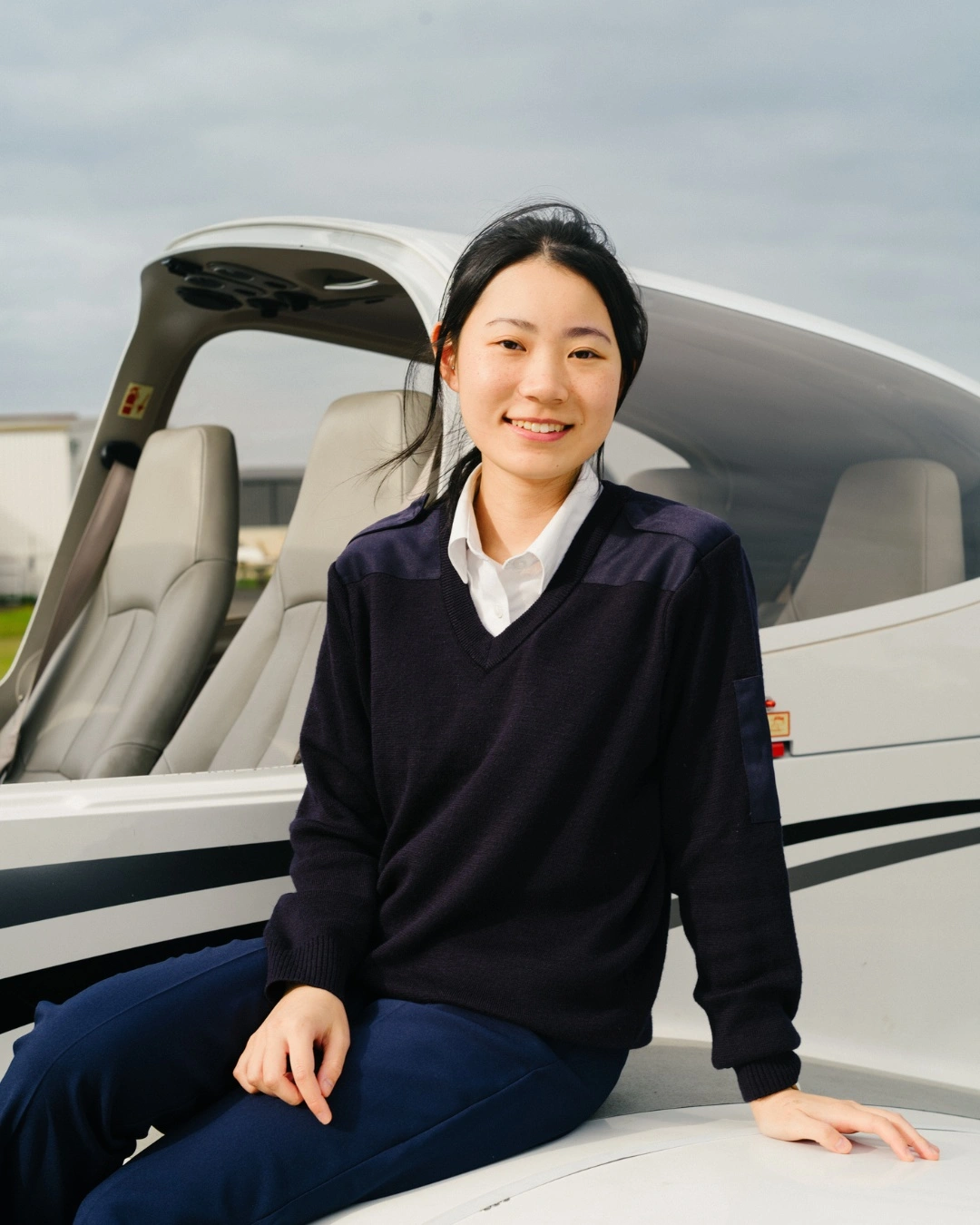
Choosing the Right Flying Schools in Australia
Are you looking to gain your pilot license somewhere overseas? Flight training in other countries can be a cost-effective way to gain your pilot license while enjoying the adventure of international travel! Australia is one of the most respected countries for flight training, equipping you with a private or commercial pilot license that is recognised and regarded worldwide. If you’re looking at different flying schools in Australia, there are a few important things to consider. Let’s take a look!
Programs on Offer
The most important factor to consider when judging flying schools in Australia is the programs they offer. There are a vast number of flying schools in Australia for you to consider, but it’s not until you know what you want to study that you can start narrowing them down.
When choosing a flying school, it’s important to consider not just the initial course you want to study but the offerings beyond that qualification. Does the school offer endorsement training, and if so, what endorsements? Does the school provide training for higher-level pilot licenses, allowing you to continue your training? Try to look for a school that will provide not just a stepping stone but a full pathway to achieving your flying goals, whatever they may be. Not only is it easier to keep training with the same school all the way through your journey, it can be significantly cheaper, too.
Learn To Fly Melbourne offers a wide range of Pilot License and Rating/Endorsement programs, from Recreational to Commercial training. Our range of courses is second to none in Australia, giving you the flexibility to study exactly what you want to, without the hassle of moving between multiple schools. No matter your direction, we can help you get where you want to go in the aviation world.
Available Fleet
Another important factor to consider is the flying school’s fleet. When training, getting a good grasp of various aircraft is important. From full-glass cockpit modern aircraft to more traditional configurations, it helps to understand how multiple aircraft operate. Australia’s airworthiness standards are some of the world’s finest, with flying schools in Australia held to a particularly high standard. No matter where you go, you can be sure your school’s fleet is well-maintained, safe and functional.
When comparing fleets, look for a good range of aircraft. This will allow you to train in various aircraft and gain a more well-rounded training experience. Variety in your school’s fleet will also allow you to discover what aircraft you like to fly, which can help shape your career direction.
Learn To Fly Melbourne’s offers a well-rounded fleet of aircraft for training. We are the only Diamond Aircraft flying school in the state of Victoria, with the single-engine DA40 and twin-engine DA42 both on offer. In addition, we fly a range of Cessna, Piper, Sling, Aeroprakt and Super Decathlon aircraft for all your flying endeavours.
Instructor Qualifications
The best pilots undoubtedly come from the best instructors. A good team of instructors can give you a wealth of knowledge and experience to draw upon in your formative stage as a pilot. When comparing flying schools in Australia, take a look at the instructors’ experience. This can help determine whether you feel they’re a good match for where you want to go in your career.
Our flight training team comes from a diverse range of aviation backgrounds with extensive experience. Our instructors have unsurpassed knowledge across all areas of flying and instructing. We have Grade 1, 2 and 3 flight instructors, and also instructors that specialise in advanced ratings and endorsements training. We also have aviation career specialists who can help guide you on your pathway beyond your initial training.
Flying School Reputation
Sometimes, the best way to get a sense of what a school is like is to hear from its students! The aviation community is a very social place, so you’re bound to come across former students either in-person or online. Take some time to read some reviews and search for feedback online about the flying schools in Australia you’re considering. It could be as simple as reading a school’s Google reviews or jumping onto an online forum and asking around. You’re bound to get a sense of a school’s reputation and a deeper understanding of what you can expect there.
We’re proud of our stellar reputation amongst the aviation community! Learn To Fly is consistently cited as one of the premier flying schools in Australia. This is backed by the approval of hundreds of past students. If you’re looking for flying schools in Australia, get in touch with our friendly team to find out how Learn To Fly could be the perfect fit for you. We can’t wait to hear from you!
What Else Should I Know?
We’ve compiled a few useful posts that might help you out. Where ever you are on your aviation journey, the team at Learn To Fly Melbourne are here to help. We want you to pass your exams and have an excellent career, so please reach out if we can help support you through your course and studies!
Pilot Profile: Chun Ki – From Student Pilot to Flight Instructor
Chun Ki (Peter) Cheung was born in Hong Kong before he moved to Australia with big dreams of aviation. He started his training at the age of 18, completing his CPL, MECIR and FIR training with Learn to Fly. Now he’s a Grade 3 flying instructor! Read on to learn from his achievements.
Becoming A Flight Instructor – More Important Now Than Ever Before
We’ll discuss some of the benefits that explain why becoming a flight instructor is more important now than ever before.
Aspiring Career Pilots – Here’s Why You Need a Diploma of Aviation
With so many different types of aviation qualifications out there, which one should you choose? And which Melbourne flight school do you approach? These can be tricky questions to answer, so let us help you out.
Flight Instructor Training Endorsements – All You Need To Know
In this blog we’ll outline the Flight Instructor Training Endorsements that are available. We’ll also guide you on how each of these endorsements can add value to your role as a Flight Instructor and your progression as a professional pilot.

The Future of Pilot Training
In the ever-evolving world of aviation, staying ahead of the curve is crucial. Aspiring pilots are constantly seeking innovative ways to prepare for their careers and stand out from the crowd. As a result, airline cadet programs and commercial pilot training courses are transforming to meet these demands. The integration of cutting-edge technologies is revolutionizing pilot training, improving efficiency, cost effectiveness and even training capabilities. Let’s take a moment to explore the future of pilot training. We’ll delve into the role of emerging technologies in aviation, and how we are preparing our future airline cadets.
Emerging Technologies
The integration of Virtual Reality (VR) technology into pilot training programs is transforming the way students learn to fly. VR offers an immersive and realistic training environment that allows aspiring pilots to gain valuable experience without leaving the ground. Students can experience various weather conditions, aircraft handling characteristics, and emergency scenarios in a controlled and safe setting.
Flight simulators have been used in flight training for some time. However, the emergence of Virtual Reality allows schools to take this experience a step further. VR has the ability to both enhance the simulation experience, with fully-immersive visuals, and make them more accessible. A simple VR headset and some basic controls can be significantly cheaper than a full simulator setup.
Artificial Intelligence (AI) is another game-changing technology in pilot training. AI has yet to be widely adopted in the world of flight training and airline cadet programs. Seeing its role in other industries though, the possibilities are exciting. AI models are highly adept at data analysis and monitoring. This could allow AI to assess a pilot’s performance in real-time, providing instant feedback and tailored guidance for improvement.
On the administration side, AI algorithms can also help predict maintenance needs and optimize flight routes for fuel efficiency. By harnessing AI, pilot training programs can ensure a more comprehensive and efficient learning experience. With AI we can better prepare students for the complex and dynamic challenges of modern aviation.
Electrifying the Fleet
As the aviation industry strives to reduce its carbon footprint and embrace sustainability, alternative propulsion systems are beginning to emerge. Electric aircraft are poised to revolutionize the way we travel by air, with new aircraft beginning to enter the market. Electric propulsion systems offer quieter, more efficient, and environmentally friendly alternatives to traditional combustion engines. Pilot training must adapt to this shift by incorporating electric aircraft into their curricula.
Learning to operate electric aircraft requires a unique skill set due to differences in power management, battery technology, and propulsion systems. Future pilots need to understand the intricacies of electric aviation to contribute to a more sustainable future. As electric aircraft begin to enter the aviation industry en masse in the coming years, you can expect to see a representative shift in flight school fleets.
Continuous Innovation
In Australia, Learn To Fly stands out as a shining example of a flight school that’s committed to embracing cutting-edge technology in pilot training. We are constantly assessing the changes in the wider aviation industry, and adapting our curriculum to reflect this. We are committed to ensuring that when our students leave us, they are as prepared as possible for a future in the aviation industry.
Learn To Fly works with a number of partners to develop cutting-edge training offerings both in the air and on the ground. Our partnership with Flight Experience Melbourne, for example, gives our students access to a state-of-the-art Boeing B737-800 simulator, that has been endorsed by Boeing themselves.
As AI continues to evolve both within the aviation industry and beyond, we are keeping a watchful eye on where it can be integrated into our training offering. The next decade of technological advancement has the potential to usher in a revolution in the aviation industry, we’re prepared to be at the forefront of it.
Conclusion
The future of pilot training is being shaped by innovative technologies such as virtual reality, artificial intelligence, and electric aircraft. These advancements offer aspiring pilots immersive and efficient learning experiences while preparing them for the evolving challenges of the aviation industry. Learn To Fly is committed to remaining at the forefront of technological innovation in the industry, delivering the most relevant and career-preparing training we can to our students.
As we navigate the skies of tomorrow, aspiring pilots can take confidence in knowing that institutions like Learn To Fly are equipping them with the skills and knowledge needed to excel in this dynamic and exciting field. Embracing technology and sustainability, Learn To Fly is truly the most cutting-edge choice for those who want to obtain their pilot’s license, undertake airline cadet programs and soar to new heights in the world of aviation.
What Else Should I Know?
We’ve compiled a few useful posts that might help you out. Where ever you are on your aviation journey, the team at Learn To Fly Melbourne are here to help. We want you to pass your exams and have an excellent career, so please reach out if we can help support you through your course and studies!
Pilot Profile: Chun Ki – From Student Pilot to Flight Instructor
Chun Ki (Peter) Cheung was born in Hong Kong before he moved to Australia with big dreams of aviation. He started his training at the age of 18, completing his CPL, MECIR and FIR training with Learn to Fly. Now he’s a Grade 3 flying instructor! Read on to learn from his achievements.
Becoming A Flight Instructor – More Important Now Than Ever Before
We’ll discuss some of the benefits that explain why becoming a flight instructor is more important now than ever before.
Aspiring Career Pilots – Here’s Why You Need a Diploma of Aviation
With so many different types of aviation qualifications out there, which one should you choose? And which Melbourne flight school do you approach? These can be tricky questions to answer, so let us help you out.
Flight Instructor Training Endorsements – All You Need To Know
In this blog we’ll outline the Flight Instructor Training Endorsements that are available. We’ll also guide you on how each of these endorsements can add value to your role as a Flight Instructor and your progression as a professional pilot.
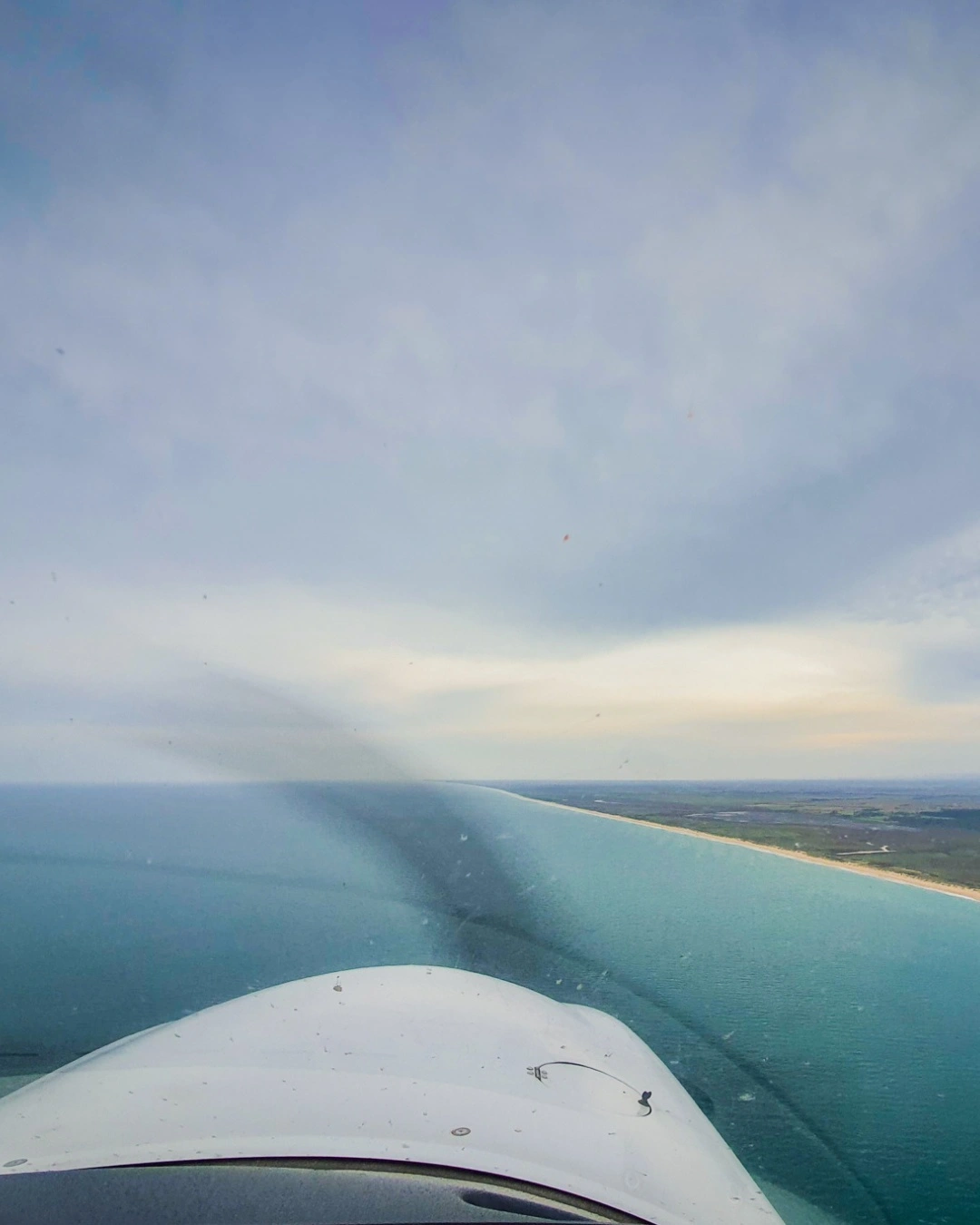
Remote Airstrip Operations in Australia
Australia is a vast and rugged country. The outback is a beautiful place, but it presents myriad challenges for keeping remote communities connected and serviced. That’s where aviation comes in. Flying in remote areas plays a large role in the Australian aviation industry. Pilots fly into the outback for numerous reasons, including passenger transport, medical services, freight and even air mail. There are countless remote airstrips that dot the landscape, servicing outback towns, remote indigenous communities and sprawling stations. When learning to fly with aviation schools in Australia, it’s good to learn about remote airstrip operations. Let’s take a look at some of the most important factors you need to consider when going remote.
Accurate Planning
First and foremost, pilots flying in the outback need a clear, concise and accurate flight plan. It’s vital that you understand the conditions and details of the airstrip you’re flying to. The vast majority of remote airstrips are unsealed and can vary significantly with weather conditions. If the airstrip is private, it won’t appear in the En Route Supplement Australia (ERSA). The ERSA lists airstrip details for all licensed aerodromes and is a helpful tool for Australian pilots. In this case, you’ll need to call your destination or search elsewhere online for airstrip information. Remember that remote, unregulated airstrips are subject to change. Calling ahead to receive real-time information is always your best bet.
Once you know more about your destination, it’s time to develop an accurate flight plan. Your flight plan must ensure you can arrive (and leave) in an efficient and safe manner. The vast majority of remote airstrips do not carry fuel, so it’s vital pilots account for this in their planning. Flying in the outback can also take pilots over seemingly endless rugged terrain. If possible, plan a course that will keep you within the distance of flat terrain should a forced landing become necessary.
Strong Communication Skills
Another important facet of operating in and out of remote airstrips is having strong communication skills. Before and during flying in the outback, pilots should be in communication with various sources, including potential clients at a destination airstrip, other members of your team and even, at times, ATC. In this context, having a strong grasp of radio phraseology and etiquette becomes a necessary skill. Thankfully, aviation schools in Australia all have a strong focus on learning correct radio phraseology.
Poor communication in the outback could have dire consequences. Misheard or misspoken information could be the difference between picking up an urgent passenger on time and landing at an airstrip hundreds of kilometres away. If you’re planning on doing outback flying, either recreationally, professionally or as part of an aviation course, it can be extremely helpful to brush up on your radio calls and other communication skills.
Emergency Preparedness
The outback can be a dangerous place. A forced landing could put you hundreds, if not thousands, of kilometres from help in harsh terrain and weather conditions. If you’re prepared in the case of an emergency when outback flying, it’ll maximise your chance of survival in an emergency situation.
Be aware of the most common types of emergencies that occur in the outback and the issues that arise as a result of these. The extreme heat of the outback, along with airborne dust and sand that can get into an engine, is known to occasionally cause performance issues and even engine failures. Should this occur and a forced landing is required, there are several important factors that can ensure your survival until help arrives.
The golden rule of remote travel, be it by road or by air, is to stay with your vehicle. As pilots, we know it’s much easier to spot a vehicle from the sky than an individual person. Don’t fall into the trap of wandering off to find help.
There are measures to take before you’re even in the air, too. When travelling in the outback, ensure you have a sufficient supply of water on board and ideally a handheld GPS system or satellite phone. All of this can mean the difference between staying safe in the event of an emergency, or potentially dire circumstances.
Choosing Aviation Schools in Australia
No matter your intended career pathway, knowing more about remote airstrip operations is important knowledge to have. Even if your career doesn’t take you into remote areas, the lessons learned and training received can help you be a better pilot, day in and day out.
Importantly, this knowledge is also highly favourable amongst airlines when deciding on cadetships. If you’re looking for aviation schools in Australia that can help you get a better understanding of operating in and out of remote airstrips, Learn To Fly Melbourne can help. Our Future Cadet Pilot Program (FCPP) equips students with a high level of aviation knowledge that is looked favourably on by airlines selecting cadets.
Get in touch with our friendly team to find out more about what Learn To Fly can do for you!
What Else Should I Know?
We’ve compiled a few useful posts that might help you out. Where ever you are on your aviation journey, the team at Learn To Fly Melbourne are here to help. We want you to pass your exams and have an excellent career, so please reach out if we can help support you through your course and studies!
Pilot Profile: Chun Ki – From Student Pilot to Flight Instructor
Chun Ki (Peter) Cheung was born in Hong Kong before he moved to Australia with big dreams of aviation. He started his training at the age of 18, completing his CPL, MECIR and FIR training with Learn to Fly. Now he’s a Grade 3 flying instructor! Read on to learn from his achievements.
Becoming A Flight Instructor – More Important Now Than Ever Before
We’ll discuss some of the benefits that explain why becoming a flight instructor is more important now than ever before.
Aspiring Career Pilots – Here’s Why You Need a Diploma of Aviation
With so many different types of aviation qualifications out there, which one should you choose? And which Melbourne flight school do you approach? These can be tricky questions to answer, so let us help you out.
Flight Instructor Training Endorsements – All You Need To Know
In this blog we’ll outline the Flight Instructor Training Endorsements that are available. We’ll also guide you on how each of these endorsements can add value to your role as a Flight Instructor and your progression as a professional pilot.
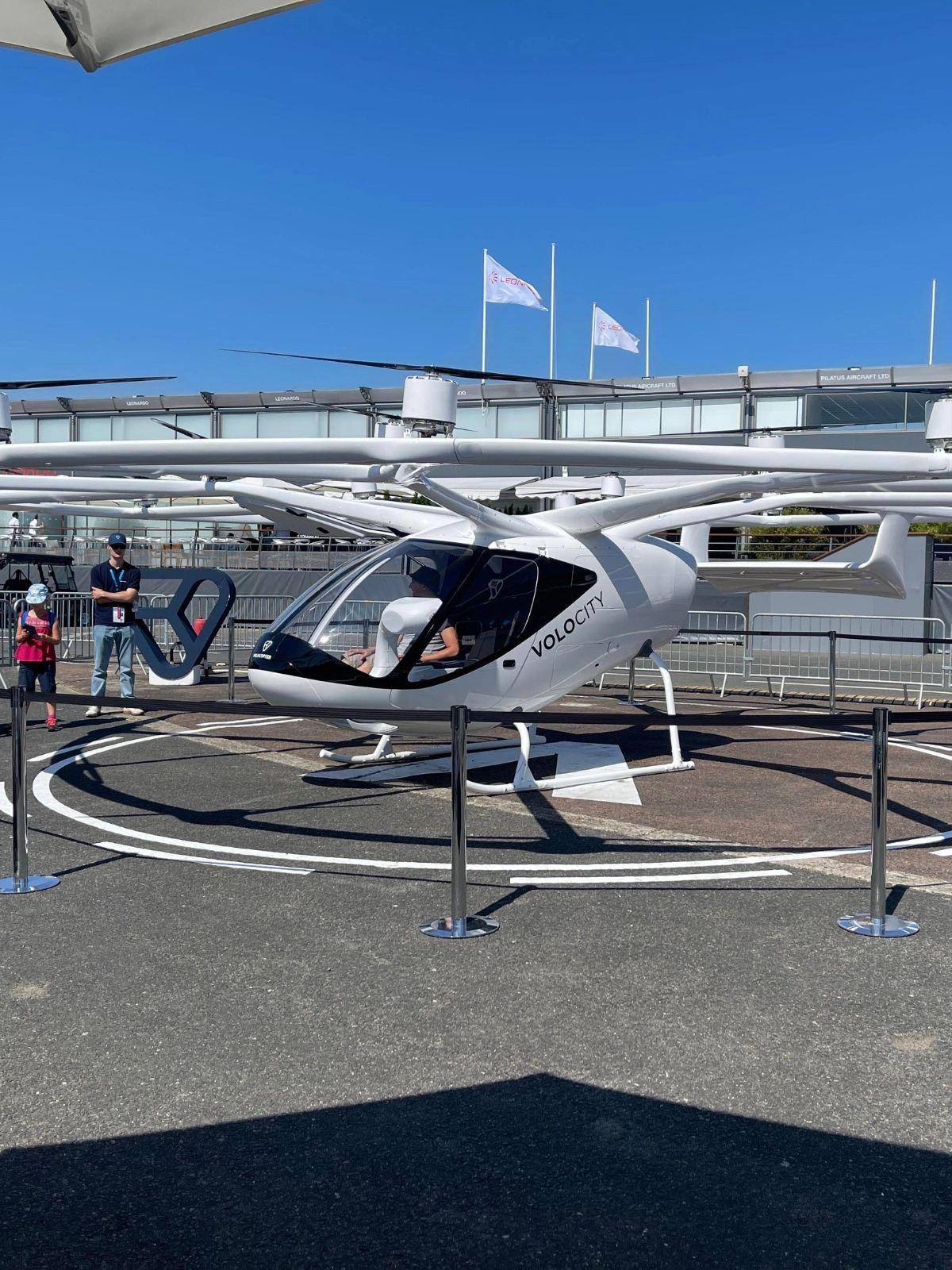
Future of Air Travel: Predictions and Trends in the Aviation Industry
The future of air travel is changing big time! It’s fair to say that the aviation industry is forever changing, but the change is particularly rapid right now. We are seeing some of the most significant technological developments across energy and aircraft. This means it’s a time for pilots to be excited. These air travel developments have hugely positive implications. This is across private pilot licences in Australia, aviation courses in Australia, and air travel in general. Here we will discuss the future of air travel, including predictions and trends in the aviation industry, so you can learn about what’s expected in the future.
Air Transport Demand
Brace for impact, the air transport demand in Australia is growing! The transport industry is integral to society and connection in a more connected world than ever before. Aviation plays a major role in the transport industry, both for passenger transport, private transport, and cargo transportation.
As the world becomes increasingly connected and mobile, the demand for aviation is increasing with it. The most influential force on air transport demand is accessibility. Accessibility includes the availability of aviation transport and infrastructure and affordability, frequency, and comparative transport options.
We are currently seeing significant developments across the energy and fuel sector. This is largely driven by increasing fossil fuel costs and pressure to find environmentally friendly energy sources. As these technologies rapidly develop, the outcome is that there are increasingly accessible air transport options and accessibility.
So, what does this all mean? It means that the future of air travel – including predictions and trends in the aviation industry – surrounds demand. The indications are that the air transport demand is going to reach new record numbers increasingly.
Hydrogen-Powered Planes
Hydrogen as a fuel source can be burnt in a turbine engine or a piston engine. It can also be used as a fuel cell for electric propulsion. This means it has the potential for commercial and private pilot uses.
Hydrogen as a fuel source has a lot of appeal if we can get it right. Because hydrogen is readily available and the usage has zero emissions (fuel cell use), it is environmentally sustainable. This is particularly attractive in a world balancing fossil fuels and environmental impact.
Sustainable mobility in air transport is one of the most significant sets of goals for the international air transport industry. This has big implications for pilots in Australia and internationally. Pilots must maintain training, experience and currency in a quickly changing industry.
This isn’t a new thing, the TU-55 first flew with hydrogen as a fuel source in 1988! It was the first experimental aircraft using hydrogen (it used liquid natural gas later, too).
Other Alternative Air Transport Energy Solutions
Electric energy and fuel cell storage is a technological development leading the charge. Electric Light-Sport Aircraft in Australia took flight in 2023, and more developments are coming. Energy storage has two challenges: the associated weight and the cost. It isn’t just one technological development to achieve improved endurance and accessibility of electric air transport, it’ll be a few. For example, the toroidal propeller development explores innovation in propeller design. It sees reduced noise and better energy use, which could enable better endurance for today’s fuel cell designs.
The race for alternative air transport energy solutions is one of the most significant trends. This is a key point of the future of air travel, including predictions and trends in the aviation industry. It isn’t just the aviation industry, either – it covers road and marine transport, too.
Futuristic Cabin Designs
When it comes to cabin designs, the most significant internal change revolves around comfort and automation. Instead of buttons, dials, and mechanical instruments, there is a constant shift towards digital-based touchscreens and instrumentation. As a species that craves entertainment, we enjoy having control over lighting and the environment. This also extends to our preference for automation, while still having the option for manual override.
These factors propel cabin designs to new heights of comfort and practicality. It makes sense considering the increasing demand for air transport and longer overall flight times, prompting us to seek additional comforts to enhance our travel experience.
On the exterior, aircraft cabins are transforming due to advancements in aerodynamic insights. More aircraft are being developed to cater to diverse markets and specific requirements. Older aircraft models are being replaced with more energy-efficient designs. However, this transition is a gradual process due to its associated costs.
For private pilots and flight training schools in Australia, these advancements offer modern options for aircraft designs. This enables us to travel faster, cover longer distances, and enjoy enhanced comfort—all while reducing our environmental impact.
Air Transport Industry in Australia
Private air travel is trending upward, with a growing appeal among current and aspiring private pilots. This trend is expected to continue as private pilot training becomes more accessible. However, domestic air travel in Australia is recovering from the pandemic in the latter half of 2023. Nevertheless, rising living costs pose a challenge to this recovery, and they also contribute to a slowdown in international air transport demand.
Moreover, there is a significant surge in aviation infrastructure in Australia, catering to the needs of Australian pilots and the growing domestic demand for private air travel. Various government bodies have recognized the potential and momentum of the aviation industry in Australia, leading them to make substantial investments in this sector.
There you have it!
That covers the Future of Air Travel: Predictions and Trends in the Aviation Industry! It’s an incredible time to start or continue your aviation training, as Australian pilots enjoy incredible opportunities. If you’re flying as a private pilot in Australia, or as a commercial pilot in Australia, have a chat with the team at Learn To Fly if you’d like to know more about current aviation trends.
As there are further development and opportunities in Australian aviation, Learn to Fly will be developing new courses and training material to ensure pilots have new and existing skills. Keep checking back for further developments!
Looking For More?
Our social media offers free flight training videos and much more – so, give us a follow at https://linktr.ee/learntoflymelbourne.
What Else Should I Know?
We’ve compiled a few useful posts that might help you out. Where ever you are on your aviation journey, the team at Learn To Fly Melbourne are here to help. We want you to pass your exams and have an excellent career, so please reach out if we can help support you through your course and studies!
Cathay Cadet Pilot Program – Questions & Answers
We received some fantastic questions during our recent webinar on applying for the Cathay Cadet Pilot Program in 2022. We weren’t able to answer them all live, but we have covered the majority of questions and answers here.
Learn To Fly Scholarship Recipient Dean Shing Starts at Cathay Pacific
Our scholarship recipient was Dean Shing, who was accepted into the Cathay Pacific cadetship program. He came to Melbourne to complete his flight training and fly solo, and we caught up with him to talk about the process, as well as his love for flying.
Recommended Pathways for Becoming an Airline Pilot for Overseas Students
There has never been a better time than right now to get into the aviation industry. In this blog, we discuss the pathways available to overseas students with a deep desire in becoming an airline pilot.
The Secret Weapon for 75 Successful Airline Pilot Interview Students
Discover the secret weapon to airline pilot interview success! Learn to Fly is working with Senior Captain Darren McPherson from ACS (Aviation Consulting Services) to provide Airline Interview Training, and together we have helped numerous candidates successfully pass their airline interviews over the past 2 years.
Airline Pilot Career Pathways
Are you serious about an airline pilot career? In this blog we discuss some of the airline pilot career pathways available to you.

The Cathay Pacific Cadet Pilot Selection Process: Tips and Insights
The Cathay Pacific Cadet Pilot Programme provides a solid career pathway for aspiring commercial pilot licence holders. By joining the program, you will receive sponsored training to become a pilot to operate regional, long haul and ultra-long haul flights. Applications to the 55-week Cadet Pilot Programme are open year-round. To help ensure your application is as strong as possible, this post “The Cathay Pacific Cadet Pilot Selection Process: Tips and Insights” is intended to guide you.
Tip #1: Eligibility
Our first tip for the selection process focuses on eligibility. Eligibility for the program is a key part of your application success. As a starting point, make sure that you can check the primary boxes to apply now:
You can apply now if you are:
- A Hong Kong Permanent resident;
- A graduate from secondary school with good passes in English language, Mathematics or Science; a degree in any discipline will also be considered provided you meet the secondary school criteria;
- Physically fit and qualified for a Civil Aviation Department (HKCAD) Class 1 Medical Certificate;
- Able to meet their flight deck reach requirements;
- Have or can achieve ICAO (International Civil Aviation Organization) English Language Proficiency level 4 or above; and
- Aged 18 years or above.
Tip #2: Understand the Cathay Pacific Cadet Pilot Selection Process
Understanding the Cathay Pacific Cadet Pilot Selection Process will help with your application. If Cathay selects you to progress to interview, you can then expect to go through multiple stages to progress your application. The better your understanding of this process, the more preparation you’ll be able to undertake to improve your performance at each stage. The stages include the following:
1. Qualify for application, then apply.
2. Vaccination confirmation
3. English ICAO confirmation (Level 4 or higher)
5. CUT-E aptitude test, maths and working behaviour test
6. HR interview
7. Group exercise interview and flight planning exercise
8. Final interview
9. Medical checks
10. Background check
11. Cadet training sponsorship offer
More recently, it has been noted that the group exercises are not part of the Cathay online interview process so some of the above process is subject to these changes.
Tip #3: Prepare Before You Apply
The competitiveness of cadet pilot positions stems from their openness to applicants with no prior experience. This is combined with a preference for the most experienced and qualified applicants. Consequently, submitting a strong initial application becomes crucial for advancing to the interview stage. Excelling throughout the interview process is equally important.
Preparation plays a vital role, making a significant difference in your appeal as an applicant. While prior flying experience is not mandatory, we highly recommend it for three reasons. Firstly, having flying experience on your CV demonstrates dedication and passion for aviation. Secondly, showcasing your knowledge of flying benefits you during the interview. Lastly, flight training can be intense and demanding. By completing some initial training beforehand, you can alleviate stress during the training phase and significantly enhance your chances of success.
Tip #4: Undertake Airline Interview Coaching Sessions
Presented by an airline interview and career specialist, this Learn To Fly coaching course has been the secret preparation weapon for many successful airline applicants. This course is available to attend in person or via live online distance learning.
Experience has shown us that preparation is the most important factor in successful airline applications and interviews. Our Airline Interview Coaching Session guides you through airline recruitment processes, along with the various elements and phases that make up the interview.
Our Airline Interview Coaching Sessions start with the initial application phase, discussing airline selection process methods and optimal CV presentation. We’ll then look at HR interview skills, technical assessment expectations and group exercises. We focus on perfecting the skills required for optimum performance and analysing techniques in mock interview scenarios.
Check out the Course Guide for more information and booking instructions.
Tip #5: Join Learn To Fly For Our ‘Future Cadet Pilot Program‘
If you want to have your best shot at the Cathay Pacific Cadet Pilot Selection Process, this is a top tip. The Future Cadet Pilot Program (FCPP) is a comprehensive course that integrates aviation theory, practical flight training, and Airline Interview Coaching Session. Initially, it empowers you with the essential knowledge and skills to create and submit a top-notch application. Subsequently, it instils confidence in navigating the interview stages. Lastly, the practical training component enhances your performance during the cadet program’s flight training phase.
The FCPP has three package options available:
Lite: 5 flying hours, 2 LTF sim hours, as well as 1 B737-800 sim hour
Solo: 15 flying hours, 2 LTF sim hours, as well as 1 B737-800 sim hour
RPL: 25 flying hours, 2 LTF sim hours, as well as 2 B737-800 sim hours
Want to know more? Schedule a meeting with us or get in contact, and one of our flight training specialists can answer your questions. It’s a very exciting time for pilots who want to fly for Cathay, and therefore the time to start preparing is NOW!
Read the course guide here.
Looking For More?
Our social media offers free flight training videos and much more – so, give us a follow at https://linktr.ee/learntoflymelbourne.
What Else Should I Know?
We’ve compiled a few useful posts that might help you out. Where ever you are on your aviation journey, the team at Learn To Fly Melbourne are here to help. We want you to pass your exams and have an excellent career, so please reach out if we can help support you through your course and studies!
Cathay Cadet Pilot Program – Questions & Answers
We received some fantastic questions during our recent webinar on applying for the Cathay Cadet Pilot Program in 2022. We weren’t able to answer them all live, but we have covered the majority of questions and answers here.
Learn To Fly Scholarship Recipient Dean Shing Starts at Cathay Pacific
Our scholarship recipient was Dean Shing, who was accepted into the Cathay Pacific cadetship program. He came to Melbourne to complete his flight training and fly solo, and we caught up with him to talk about the process, as well as his love for flying.
Recommended Pathways for Becoming an Airline Pilot for Overseas Students
There has never been a better time than right now to get into the aviation industry. In this blog, we discuss the pathways available to overseas students with a deep desire in becoming an airline pilot.
The Secret Weapon for 75 Successful Airline Pilot Interview Students
Discover the secret weapon to airline pilot interview success! Learn to Fly is working with Senior Captain Darren McPherson from ACS (Aviation Consulting Services) to provide Airline Interview Training, and together we have helped numerous candidates successfully pass their airline interviews over the past 2 years.
Airline Pilot Career Pathways
Are you serious about an airline pilot career? In this blog we discuss some of the airline pilot career pathways available to you.

First Solo Flight Student Pilot From Hong Kong – Ivy Yung
Learning how to fly and becoming a solo student pilot is a huge accomplishment. Ivy Yung is our student, becoming a commercial pilot has been a personal and professional goal for a while. After commencing training with Learn To Fly, Ivy is now a solo pilot and training towards her commercial airline goal. If Ivy’s aviation journey sounds similar to your piloting goals, read “Pilot Profile: Ivy Yung – Solo Student Pilot” and you’ll get to hear Ivy’s top tips and experiences as a student pilot going solo!
What age are you currently?
Ivy Yung:
I’m currently 34 years old, turning 35 in October. And I’m a solo student pilot!
At what age did you have your first flying lesson?
Ivy Yung:
My first flying lesson was towards the end of 2023, after I turned 34. I enjoyed my first flying lesson as a birthday present to myself!
Where were you born, and where are you living now?
Ivy Yung:
I was born, raised and schooled in Hong Kong – I’m a pure ‘Hongkie’, haha! I have since worked with the commercial airline, Emirates, and lived in Dubai for 6 years. When COVID hit, I found life there a bit surreal and decided to move back to Hong Kong in 2021.
What is the appeal of flying for you?
Ivy Yung:
I have been working in the aviation industry for 10 years. What attracts me is the lifestyle and the cockpit view in the sky. I don’t like a routine job. I like travelling and I enjoy new adventures. Flying allows me to explore new places and experiences from a unique perspective. Flying also provides a sense of excitement that is difficult to replicate through other means. I enjoy it a lot whenever I’m in the sky.
What accommodation arrangements did you make for your flight training with Learn To Fly?
Ivy Yung:
I wanted accommodation nearby the airport to make training more accessible. I stayed in the student accommodation of LTF near Moorabbin Airport. Because I want to focus on my training, I believe a good study atmosphere helps me for learning.
The student accommodation is quite nice. I have a spacious room and modern furnishings. There are around 8 students in the house from different countries like Singapore, China, and Hong Kong. Though we are from different parts of the world, we respect and support each other. It’s a very, very good vibe there!
What I like most is the kitchen area. Because during dinner time, my housemates and I will prepare dinner together and chat about the training on that day. Then we will have dinner at the long dining table, filled with laughter. I am so glad that we work and live like a team.
I arranged the accommodation when I confirmed my training course with LTF. I just simply arranged with them via email by providing my period of stay. The LTF team make it very easy, and the staff are really nice.
I have compared the price and location with the surrounding Airbnb options.. However, the student accommodation is cheaper and closer to my training at Learn To Fly. And most importantly, I have a group of peers to share the joys and challenges of flying, which other accommodations can’t provide.
Have you met other student pilots whilst undertaking your aviation training?
Ivy Yung:
Yes! My housemates are all student pilots in LTF, and love it. They are really helpful and supportive. Some of them are not flying the same aircraft type as me, but it is always good to know from their sharing different perspectives and other interesting aircraft.
I was a bit stressed before going solo, but they helped me by sharing their tips and notes, which helped me a lot. Peer influence plays a big role in my learning path and I’m so grateful to have them on my flying journey!
How many hours had you flown when you went solo?
Ivy Yung:
I was at 17.5 hours of logged flight time before my first solo, then I had 18 hours in total once I finished. It was so exciting!
Looking back before your first solo flight as a pilot, was it different to what you had imagined?
Ivy Yung:
Yes. My first solo happened so fast! It was incredible. I was so excited and focused my tears almost burst out after I landed and returned to the run-up bay. The ATC said, “Congratulations on your first solo, CCI (the callsign)”. OMG! I can’t believe that I could fly a plane by myself, and I feel so proud of myself. I can’t describe that moment and my emotions at all, it was just amazing.
What pilot licence are you working your way towards with your aviation training?
Ivy Yung:
My goal is to get into an airline cadet pilot program. My goal is not only a Recreational Pilot Licence (RPL) or Private Pilot Licence (PPL), but also a Commercial Pilot Licence (CPL), Multi-Engine Instrument Rating (MECIR), and Airline Transport Pilot Licence (ATPL).
What aircraft have you been training in with Learn To Fly Melbourne?
Ivy Yung:
With Learn To Fly Melbourne, I have been training in a Sling 2 LSA. This is a single-engine recreational aircraft with great visibility, fuel range and handling for student pilots.
What were you thinking before your first solo flight as a pilot?
Ivy Yung:
When Cam (the instructor) asked me, “Are you confident and ready to fly by yourself?” it was a bit unreal! This is what I have been waiting, studying and aiming for. After taking a 9-hour flight from Hong Kong to Melbourne, twice, I was super, super excited! I remember thinking, ‘please remember this feeling’. The memory will be the perfect motivation in the future for me, even when I face any difficulties in my flying journey.
Completing a normal circuit at Moorabbin Airport, I took off and landed on Runway 17L. I was very focussed, I wanted to make sure I did everything correctly by myself. The 6 minutes of circuit time flew past so quickly during concentration that I had to remind myself to enjoy it, haha!
What about during your first solo, what was running through your mind?
Ivy Yung:
During the final approach, I was making sure I was doing the steps right. I was a bit nervous but mostly excited. All I was thinking about was a good landing. All the instructor feedback was going through my mind. Am I too high or too low? Is the speed appropriate? Am I on the centre line? It may sound a bit stressful, but it was enjoyable. Flying is a balance of safety and fun, am I right? Haha! I touched down on the runway. It wasn’t my most perfect landing, but I DID IT!! I landed a plane by myself, and it was totally worth it!
What would you like to do next with your flying?
Ivy Yung:
I am currently doing some theory courses in Hong Kong. This will prepare me for the interview for the cadet pilot program in Cathay Pacific. I would like to join as a pilot in an airline and fly an A350 or A380. I want to be a professional and knowledgeable airline pilot for the rest of my life… and charming at the same time, haha!
What do your friends say when you tell them you are a pilot?
Ivy Yung:
My friends are so happy for me! They know that this is a goal I’ve been aiming for so long. They keep saying that ‘OMG Ivy, you are soooo cool – this is such a big milestone in your life!!’, and feel jealous of me. Haha! Above all, my friends feel so proud of me and think that I have chosen the right path for my life.
What advice or tips do you have for someone else thinking about becoming a student pilot?
Ivy Yung:
For anyone looking to become a student pilot and fly solo, all they need is to prepare themselves mentally. Flying is not cheap, so treasure every moment and make use of every resource during the learning journey. Classmates, instructors, engineers, ATC – even the guy who helps with refuelling – are all interesting people that are there to help.
Secondly, there will be some challenges along the way when you’re learning to fly. Don’t give up, but use it as motivation. We don’t have to pay for learning If we can land a plane smoothly and perfectly at the beginning, right? That’s why we are here in a flying school, to learn the correct way of doing things.
Thirdly, some preparation before starting training helps. Look up the weather at that airport, and understand the aerodrome, radio calls and flight patterns. All of this you can learn on the Learn To Fly YouTube channel!. This preparation will enhance your learning efficiency. After starting your training, preparation is still helpful. For me, I like to check the ATIS, do a mental or virtual lesson, and focus on a learning goal each day. Setting goals helps to keep me on track for my aviation pathway.
Last but not least, just enjoy and remember the feeling when you’re first in the sky!
So, there it is!
That’s our Pilot Profile on Ivy Yung – Solo Student Pilot. If you’d like to get in touch with Learn To Fly to start your pilot training, chat with one of our flight training specialists by emailing [email protected] or go to https://drift.me/learntofly/meeting to book a meeting and school tour!
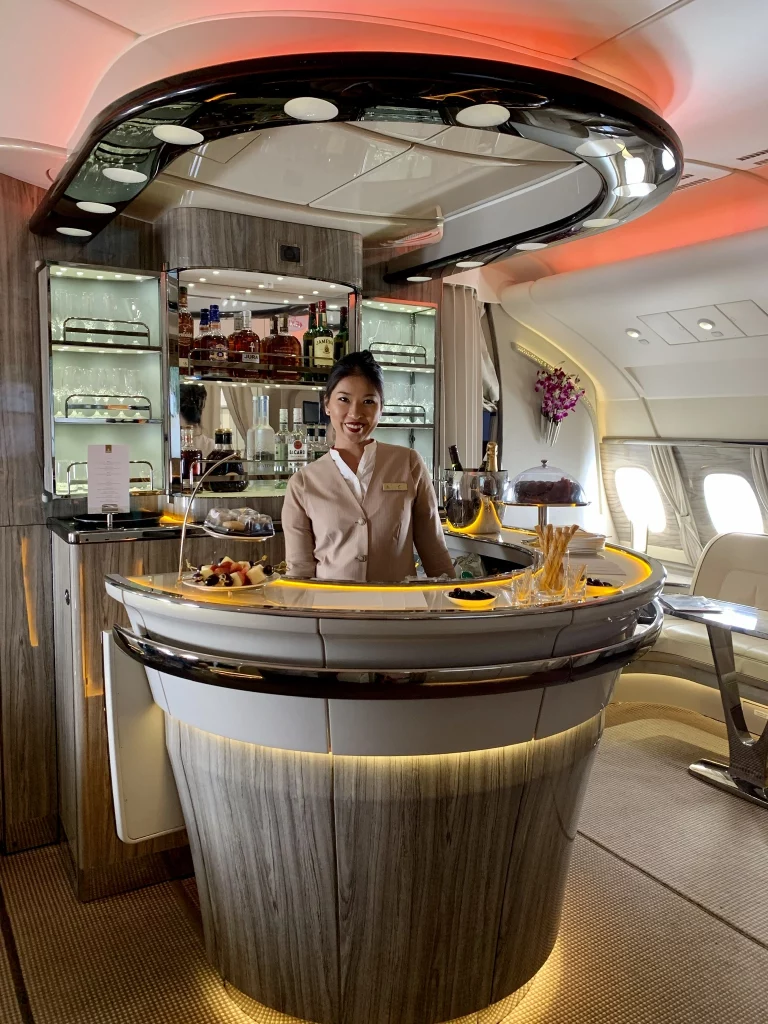
Pilot-Profile-Ivy-Yung-Solo-Student-Pilot-8 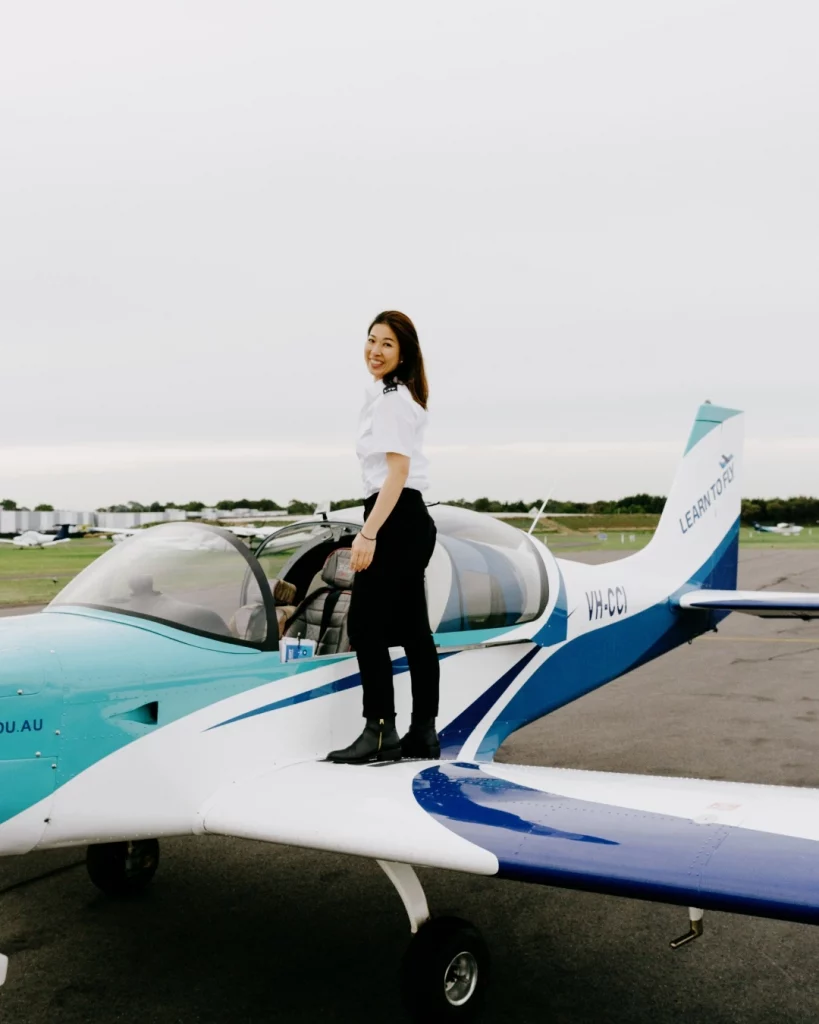
pilot-profile-ivy-yung-first-solo-flight-student-pilot 
Ivy-Yung-enjoying-her-student-accommodation-with-other-pilots-training-with-Learn-To-Fly-Melbourne 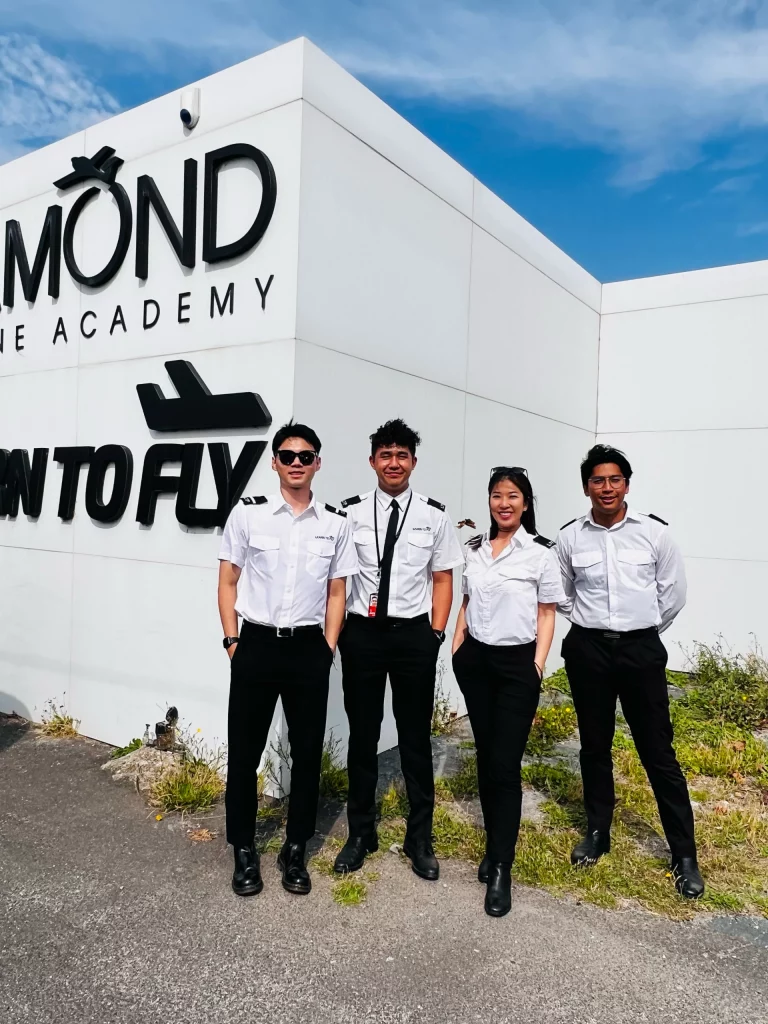
Ivy-Yung-training-with-fellow-aviation-students-training-at-Learn-To-Fly-Melbourne 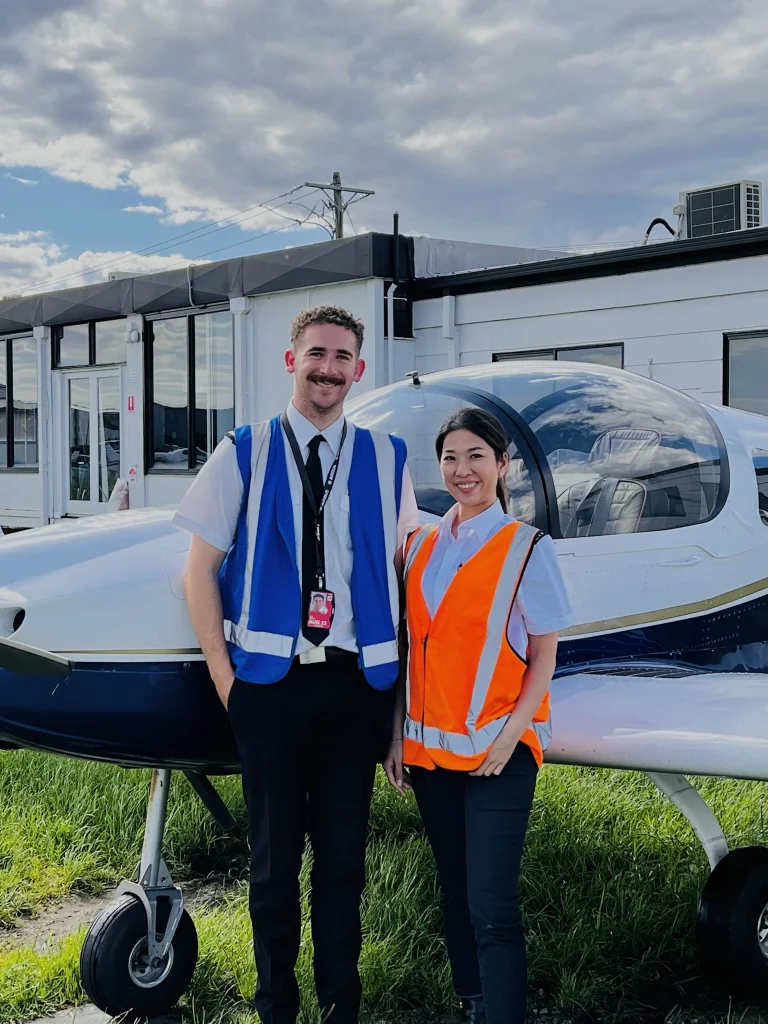
Ivy-Yung-in-front-of-a-Sling-LSA 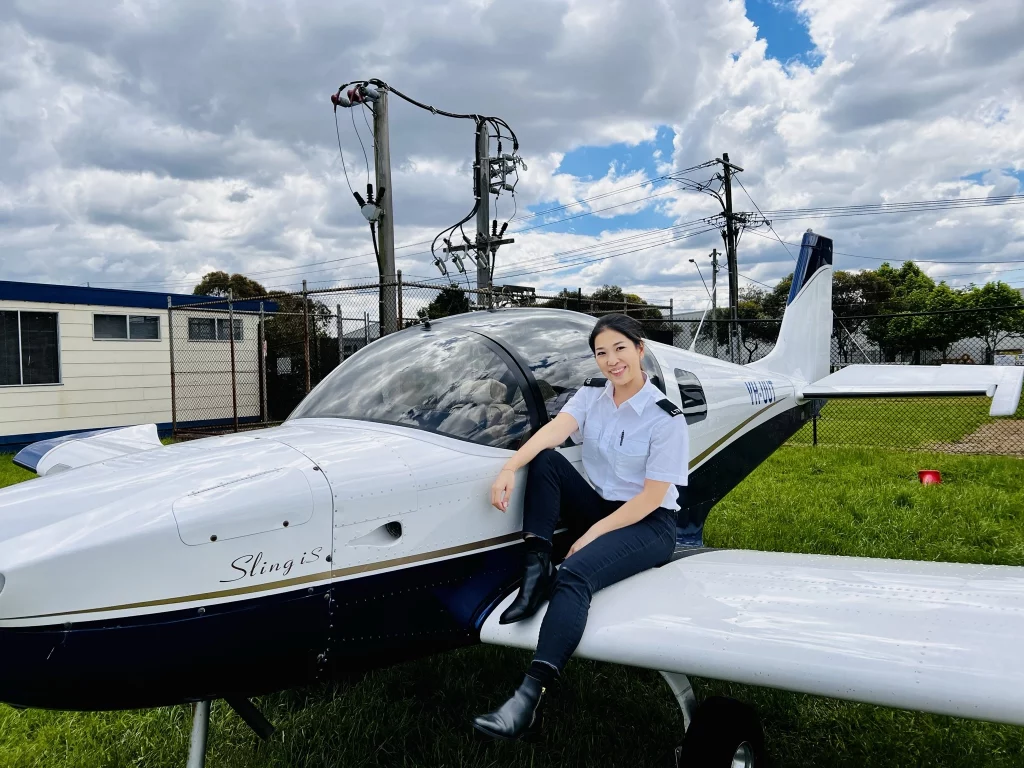
Pilot-Profile-Ivy-Yung-Solo-Student-Pilot-6 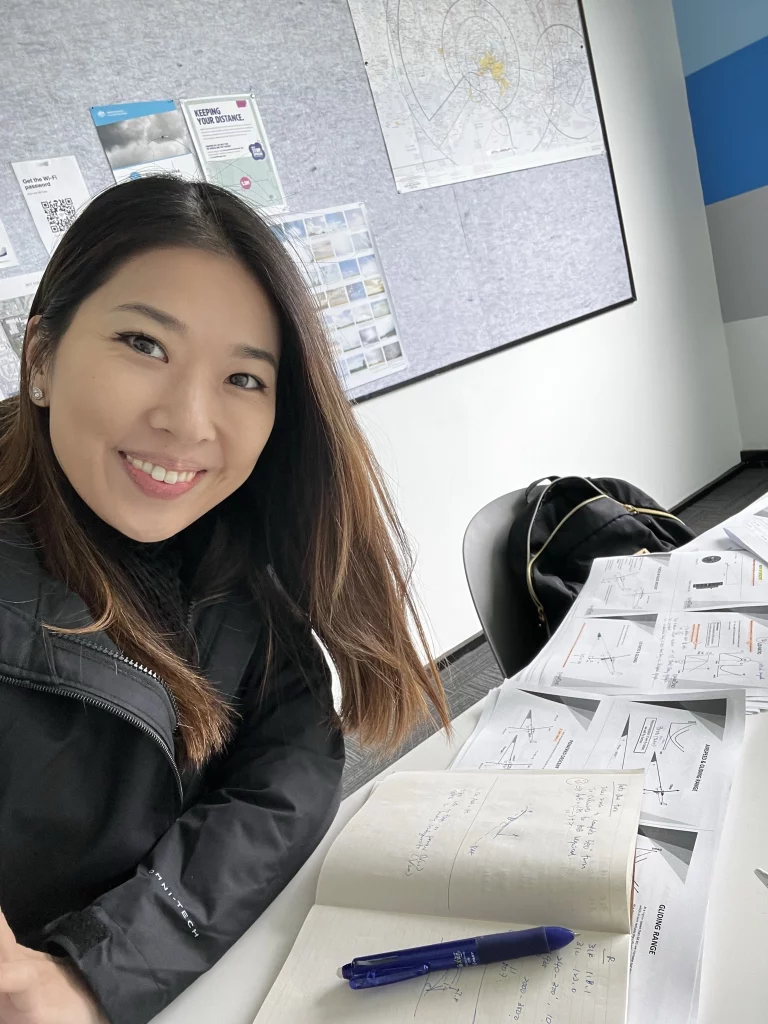
Pilot-Profile-Ivy-Yung-Solo-Student-Pilot-7 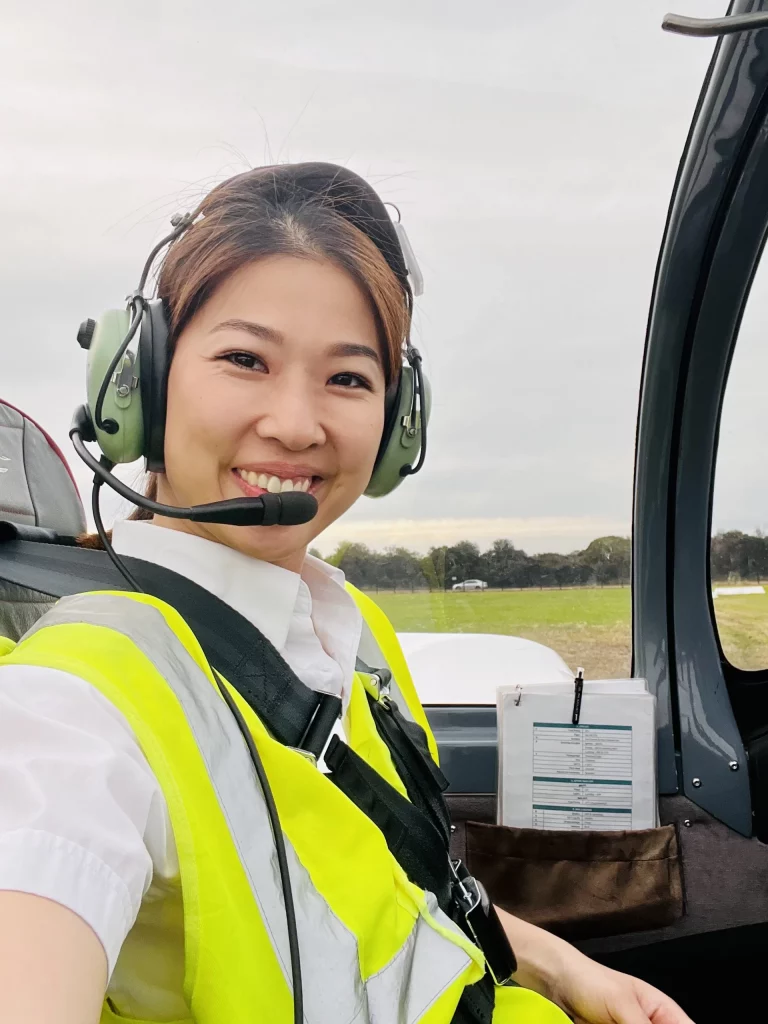
Ivy-Yung-in-a-Sling-2-LSA-cockpit-at-Learn-To-Fly-Melbourne
What Else Should I Know?
We’ve compiled a few useful posts that might help you out. Where ever you are on your aviation journey, the team at Learn To Fly Melbourne are here to help. We want you to pass your exams and have an excellent career, so please reach out if we can help support you through your course and studies!
Pilot Profile: Chun Ki – From Student Pilot to Flight Instructor
Chun Ki (Peter) Cheung was born in Hong Kong before he moved to Australia with big dreams of aviation. He started his training at the age of 18, completing his CPL, MECIR and FIR training with Learn to Fly. Now he’s a Grade 3 flying instructor! Read on to learn from his achievements.
Becoming A Flight Instructor – More Important Now Than Ever Before
We’ll discuss some of the benefits that explain why becoming a flight instructor is more important now than ever before.
Aspiring Career Pilots – Here’s Why You Need a Diploma of Aviation
With so many different types of aviation qualifications out there, which one should you choose? And which Melbourne flight school do you approach? These can be tricky questions to answer, so let us help you out.
Flight Instructor Training Endorsements – All You Need To Know
In this blog we’ll outline the Flight Instructor Training Endorsements that are available. We’ll also guide you on how each of these endorsements can add value to your role as a Flight Instructor and your progression as a professional pilot.
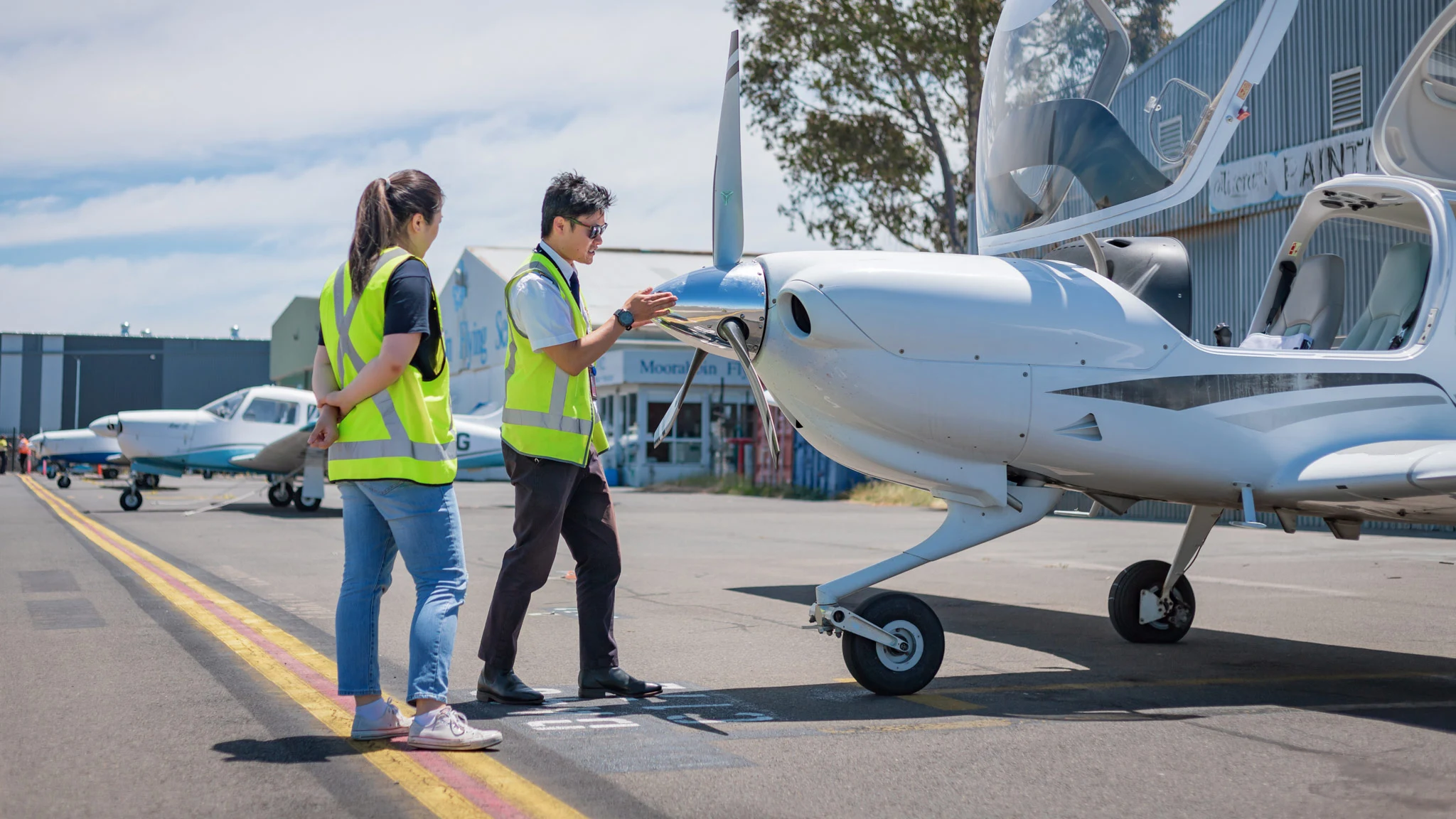
Learn to Fly: For All Your Flight Training Needs
Here at Learn to Fly, we’re passionate about helping all people achieve their aviation dreams. While some of our students are driven to pursue a professional full-time career as a pilot, others may have piloting a single solo flight as one of the top items on their bucket list.
Whatever your aviation journey looks like, Learn to Fly is here to support you with our broad range of flight training courses.
Continue reading to learn a little more about the programs we offer, and questions you should ask yourself when deciding on which type of flight training in Australia is right for you.
Beginner Programs
Ready to kick start your aviation journey? How exciting! Learn to Fly offers a number of different flight training courses that are perfect for beginners.
Trial Introductory Flight
Sitting in the cockpit of a light plane is quite different to being a passenger back in economy. Whether you aspire to be behind the controls yourself one day or just want to experience what it feels like to sit alongside a qualified pilot, our Trial Introductory Flight is the perfect way to get started.
Learn to Fly Starter Set
The Learn to Fly Starter Set is perfect for those who want to get an idea of what it feels like to actually fly a plane before committing to a more comprehensive flight training program. With three package options available, all flying hours will be documented in your logbook and will count towards future flight training. Should you decide you want to continue on your aviation journey, you will have developed excellent basic skills and have already ticked off your first few flight hours!
Learn to Fly First Solo Flight Course
You’ll never forget your first flight as pilot-in-command. Learn to Fly’s team of experienced instructors will provide you with the skills and confidence you need to feel comfortable in control of the cockpit. We’ll teach you the fundamental aviation skills that allow you to take off, climb, turn, fly straight and level, descend, and land. The goal is for you then to take to the skies solo and put what you have learnt into practice!
Pilot Licence Courses
In Australia, the aviation industry is governed by CASA, or the Civil Aviation Safety Authority. CASA offers a range of licences designed to suit the aviation needs of each and every type of pilot.
In line with this, Learn to Fly’s range of pilot licence courses are comprehensive and will provide you with the skills, experience, and flight training hours you need to successfully obtain your desired licence.
Our Pilot Licence Programs include:
Recreational Pilot Certificate (RPC)
Recreational Pilot Licence (RPL)
Private Pilot Licence (PPL)
Commercial Pilot Licence (CPL)
Indian DGCA Syllabus Commercial Pilot Licence (CPL)
ICAO Pilot Licence Conversion
Ratings and Endorsements
Once you successfully obtain your desired pilot’s licence, the journey isn’t over. A range of ratings and endorsements are available to extend your skills and enable you to fly different aircraft, partake in more types of flying activities, or fly in more weather and light conditions.
Learn to Fly’s portfolio of Rating and Endorsement programs include:
Flight Instructor Rating (FIR)
Night Visual Flight Rules (NVFR) Rating
Private Instrument Flight Rating (PIFR)
Multi-Engine Class Rating
Multi-Engine Command Instrument Rating (MECIR)
Formation Flying Endorsement
Aerobatics and Spinning Endorsement
Tailwheel Undercarriage Endorsement (TWU)
Upright Prevention & Recovery Training (UPRT)
Instrument Proficiency Check (IPC) Refresher Course
Diploma of Aviation Courses and Bachelor of Aviation Pathway
If flying as a full-time professional career is your goal, there are many pathways available to get you there. In addition to pilot licence programs, Learn to Fly offers Diploma of Aviation flight training courses, which will take you from complete beginner to experienced aviation expert.
AVI50222 Diploma of Aviation (Commercial Pilot Licence — Aeroplane)
Aimed at students with little to no flight experience, our AVI50222 Diploma of Aviation (Commercial Pilot Licence — Aeroplane) course is a comprehensive training program. Students progress through CASA RPL, PPL and CPL syllabus. There is also additional learning so that students are better prepared to take on a professional role in the aviation industry following graduation.
AVI50519 Diploma of Aviation (Instrument Rating)
Learn to Fly’s AVI50519 Diploma of Aviation (Instrument Rating) combines the Multi-Engine Class Rating and the Multi-Engine Command Instrument Rating (MECIR) syllabus. These are both critical qualifications that will enable you to fly an aircraft with more than one engine, and under Instrument Flight Rules at day or night. If becoming an airline pilot is your goal, this training is a necessity.
Bachelor of Aviation (Griffith University) Articulation Pathway
We are thrilled to offer an articulation program for students wanting to study Griffith University’s renowned Bachelor of Aviation program. By completing both the AVI50222 and AVI50519 Diploma of Aviation courses, you will be eligible to apply for the Griffith University Bachelor of Aviation program with advanced standing (80 credit points).
This pathway offers the ability to complete 5 highly-regarded aviation qualifications (Commercial Pilot Licence, Multi-Engine Command Instrument Rating, 2 x Diploma of Aviation, and Bachelor of Aviation, in just 3 years.
Airline Interview Preparation
Much like any job application process, an airline interview can be a nerve-wracking experience. The secret to success for many applicants has been our airline interview preparation programs, including our Future Cadet Pilot Program and Airline Interview Coaching Session.
These courses are tailored to your needs, and offer crucial tips and training on how to best prepare for a successful interview and application process.
Theory Courses
Being a successful pilot requires a mix of practical skills and theoretical knowledge – but it’s not always practical for pilots to study both together. Learn to Fly’s extensive range of standalone theory courses are offered in a range of delivery methods including in-person or online.
Our Theory Courses include:
Recreational Pilot Licence (RPL) Theory Course
Private Pilot Licence (PPL) Theory Course
Commercial Pilot Licence (CPL) Theory Course
Instrument Rating Examination (IREX) Theory Course
IPC Theory Revision Course
Principles & Methods of Instruction (PMI)
Human Factors Awareness Training Course
Pilot Fatigue Management Awareness Training
As one of the most comprehensive providers of flight training in Australia, Learn to Fly has courses to assist everyone from complete beginners to highly experienced pilots. We offer a well maintained and diverse fleet of aircraft, state-of-the-art facilities including full cockpit flight simulators, and Learn To Fly Melbourne experienced instructors. Contact one of our flight training specialists or book a meeting today to learn more about our programs, and to take the next step of your aviation journey.
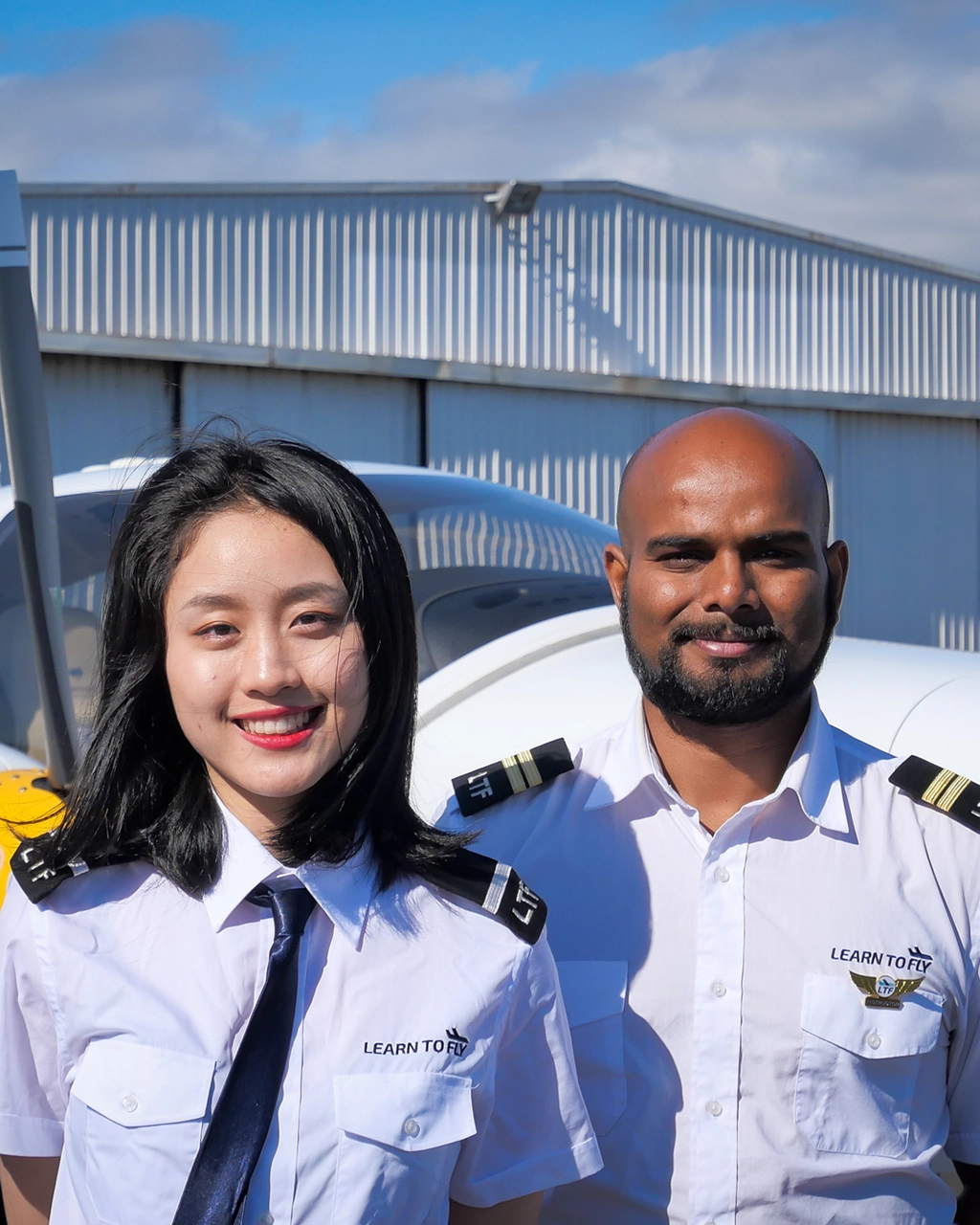
Upcoming Learn To Fly Events
Learn To Fly enjoys being involved in the wider aviation community. Throughout the year we participate in or host a range of events. Check out the upcoming Learn To Fly events below:
Angel Flight Australia – Free Pilot Information Seminar
📅 Date: Friday July 22nd 2022
🕕 Time: Arrive 545pm for 6pm start
📍 Location: Learn To Fly, 22-24 Northern Ave Moorabbin Airport VIC 3192
Angel Flight is a charity that coordinates non-emergency flights to assist people living in rural areas of Australia in accessing specialist medical treatment that is often located a long distance away, and only reachable by air transport.
They operate Australia-wide with a growing network of pilots who volunteer their time, and are subsidised for a wide range of costs associated with the flights (like fuel and landing fees etc).
In this free seminar, you will hear from Marjorie Pagani (Angel Flight CEO/Pilot) and Alexandra Zollner (Angel Flight Deputy CEO) about the important service that Angel Flight provides, how it works for pilots, and how you can get involved.
Please book to confirm your attendance so that we can gauge numbers appropriately.
CLICK/TAP HERE TO REGISTER FOR YOUR FREE TICKET
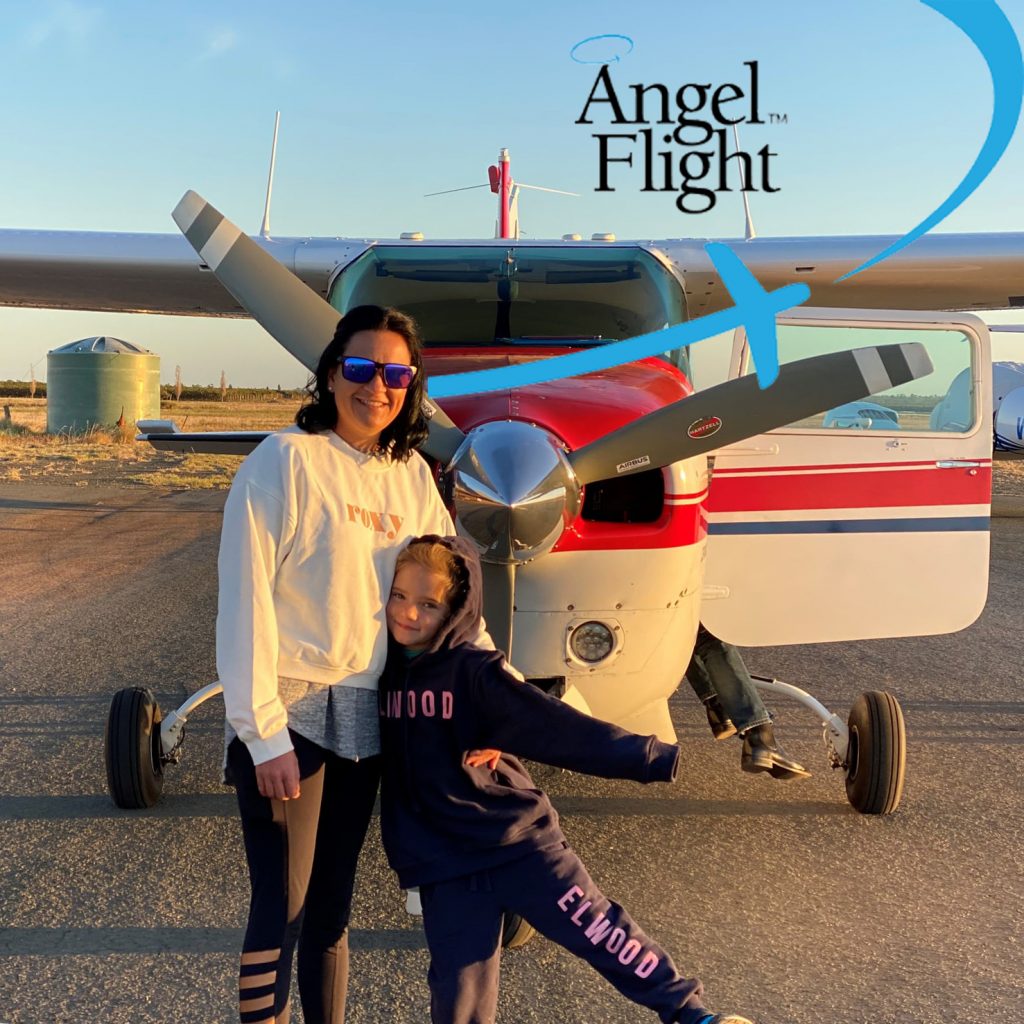
Aviation/Aerospace Australia NGN Professional Online Career Seminar
📅 Date: Wednesday July 27th 2022
🕕 Time: 6pm
📍 Location: Online / Zoom
To get ahead professionally, you need to think ahead.
The A/AA NextGenNetwork (NGN), has brought together industry and government representatives to give you the head start, including our very own LTF Principal Executive Officer, Sarah Steele
Whether it be career planning, landing your first role, an internship position or a graduate program, our speakers will give you the tools, tips and insight you need to take off in the aviation, aerospace and space sector.
Industry Speakers:
Ruth “Rocket Woman” Harrison: Senior Project Recruiter at CAE Parc Aviation & Women in Aviation/Aerospace Australia (WA/AA) QLD Sub-Committee Member
Lee Turnley: Manufacturing Engineer at Boeing Aerostructures Australia & NextGenNetwork (NGN) Committee Member at Aviation/Aerospace Australia
Sarah Steele: Principal Executive Officer at Learn To Fly
CLICK/TAP HERE TO REGISTER YOUR FREE ATTENDANCE
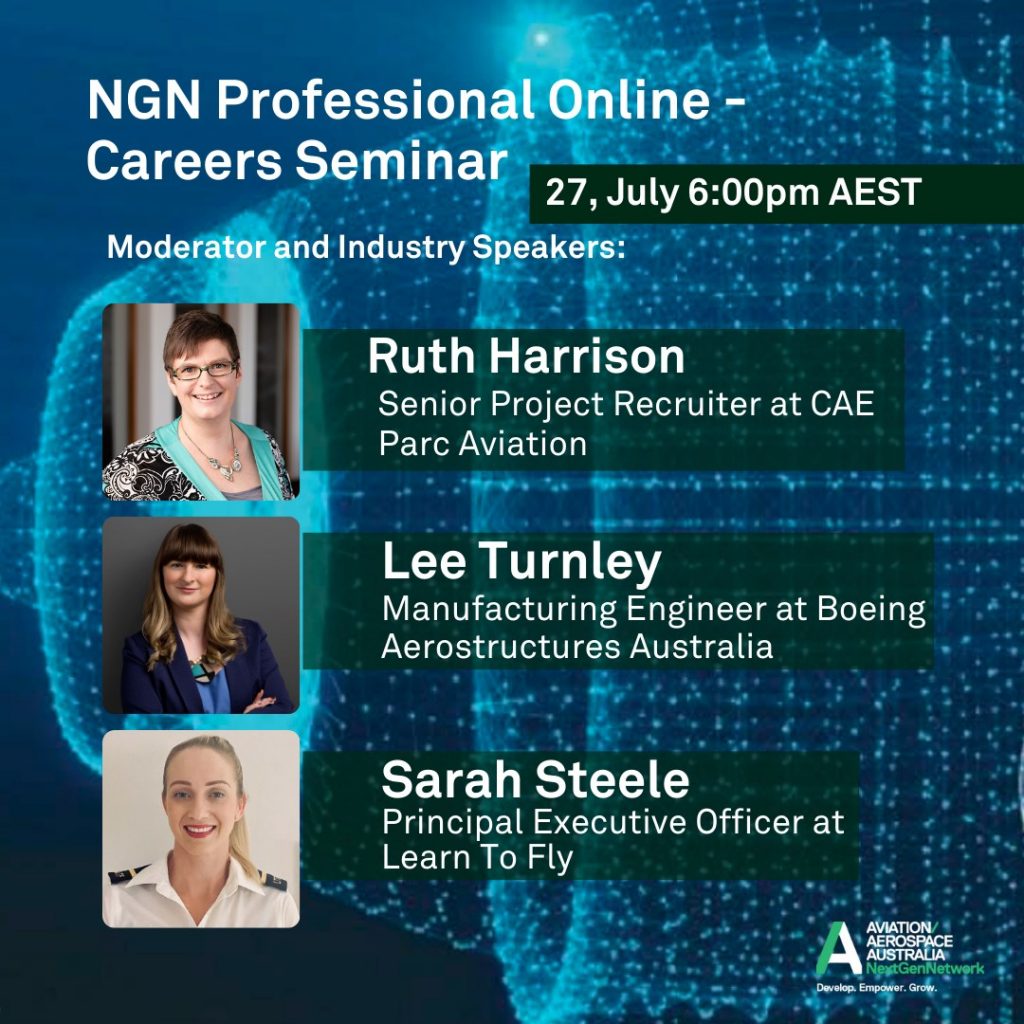
Stay tuned for further Learn To Fly events!
If you would like to find out more about learning to fly, you can email our flight training specialists at [email protected]. You can also visit https://drift.me/learntofly/meeting to book a meeting and a tour of our Moorabbin Airport training base.
Follow us on social media at https://linktr.ee/learntoflymelbourne
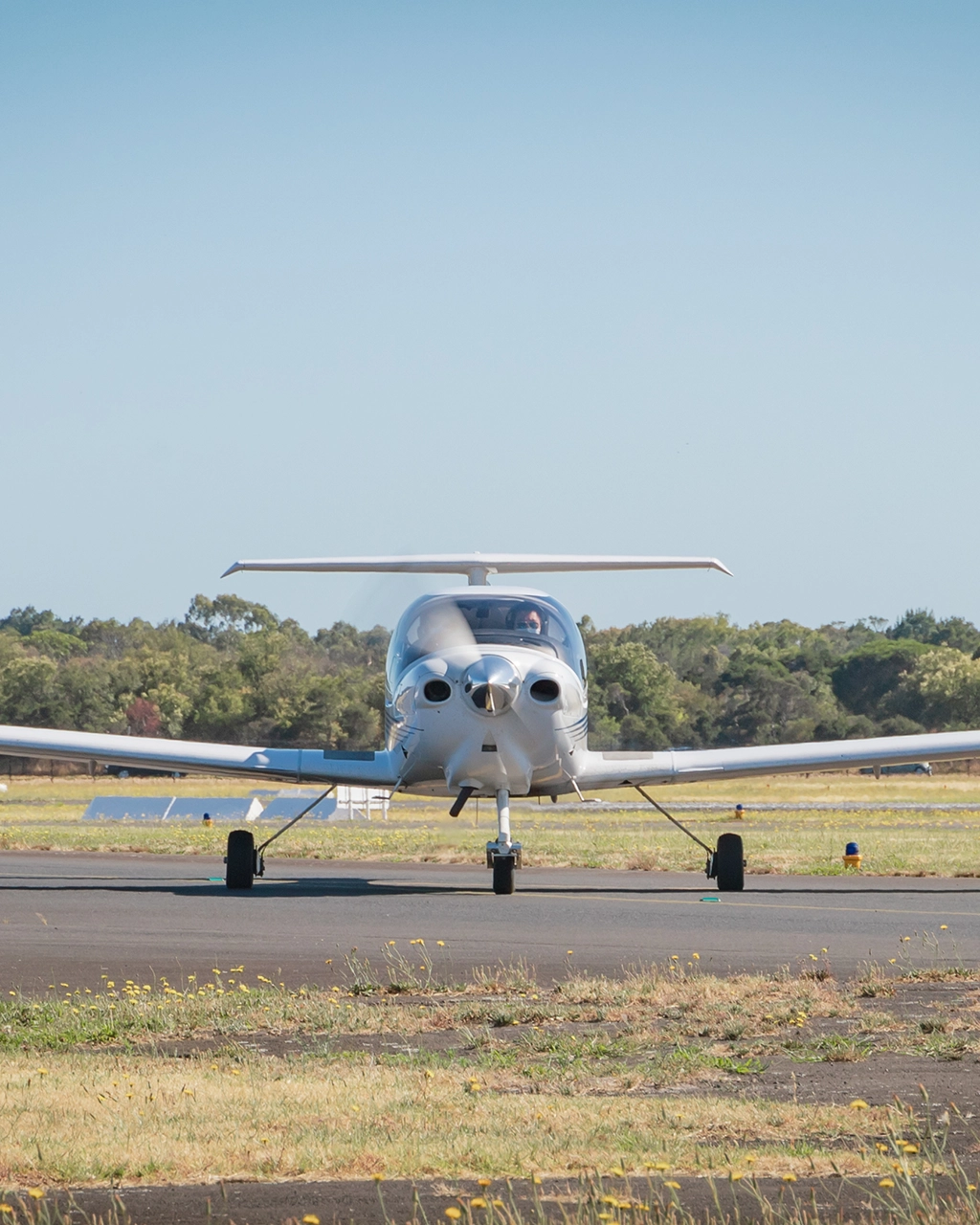
What Qualifications Do I Need to Become a Pilot?
There are many pathways to becoming a fully qualified pilot. There are also plenty of different types of pilots. Therefore, the qualification you choose to pursue — be it a Recreational Pilot Licence or a Diploma of Aviation — really comes down to what your long-term aviation goals are and the amount of time you have to dedicate to your dreams.
Here at Learn to Fly, we think there’s no better job than that of a pilot. Imagine getting paid to explore the skies. Your office is the clouds, your desk chair is the cockpit, not to mention your office view! Now, let’s find out about what qualifications different pilot types need.
Types of pilots
Not all pilots are qualified to control all types of aircraft. Several classifications dictate the type of plane you can fly, how far you can venture from your departure point, and the conditions you are able to fly in.
Firstly, let’s look at the simplest pathway to earning the title of ‘pilot.’
A Recreational Pilot Licence (RPL) is the first step in the journey for any pilot. If your main goal is to just get up into the air and experience the sensation of being in control of a small light plane, the Recreational Pilot Licence is for you. This licence is the most basic licence, and RPL holders must stay within 25 nautical miles of their departure aerodrome.
Next in the progression of pilot classifications, we have the Private Pilot Licence (PPL). The PPL builds on skills learned during RPL training, and then adds navigation. The PPL qualification enables you to both plan and conduct flights anywhere in Australia.
Finally, there is the Commercial Pilot Licence (CPL), ideal for those who dream of becoming a professional pilot. Having obtained your CPL, you will be able to pursue a number of different pilot career paths. These include airline pilot, cargo pilot, agricultural pilot, flight instructor, as well as many others.
I want to become a full-time pilot: what do I need to do?
To fly professionally you will need a CPL. One of the best ways to get your CPL and fulfil your dream of becoming a full-time pilot is with a Diploma of Aviation course.
The AVI50219 Diploma of Aviation (Commercial Pilot Licence – Aeroplane) course follows CASA’s Commercial Pilot Licence syllabus, with the added bonus of additional subjects to help best prepare you for the competitive aviation industry. Upon completion of the course, students will receive both a Commercial Pilot Licence and a Diploma certification.
The course is run at Moorabbin Airport in Melbourne and takes approximately 60 weeks of full-time study. This includes flight training hours, hours in our state-of-the-art full cockpit flight simulators, and onsite theory classes. Students must be at least 18 years old, meet English language standards, and have passed an aviation medical exam.
Learn To Fly Australia is proud to be a VET Student Loans approved course provider (RTO 45684) for the AVI50219 Diploma of Aviation (Commercial Pilot Licence – Aeroplane) course.
Wherever you’re from and whatever your background, the Diploma of Aviation is an excellent option to consider. It provides a fantastic pathway to those looking to pursue their passion and enjoy a full-time aviation career. We also offer the AVI50519 Diploma of Aviation (Instrument Rating) course, which is highly recommended as an additional step before starting your career – as well as an articulation pathway towards achieving the Bachelor of Aviation with Griffith University.
Why Learn to Fly?
Learn to Fly is one of Australia’s leading flight schools. We offer a broad range of courses to meet the needs of every type of aviation student. We are passionate about making flight training affordable and accessible with modern aircraft, state-of-the-art facilities, and highly experienced flight instructors.
Our instructors train everyone from hobbyists to professional pilots:
– Flexible course options to ensure everyone can achieve their aviation aspirations
– Realistic pathways allowing students to achieve their flying goals.
– Diverse international student base
– Student accommodation facilities located just 15 minutes from our Moorabbin Airport training base
For more information about our Diploma of Aviation courses as well as information on how to enrol, contact our Learn to Fly flight training specialists today.
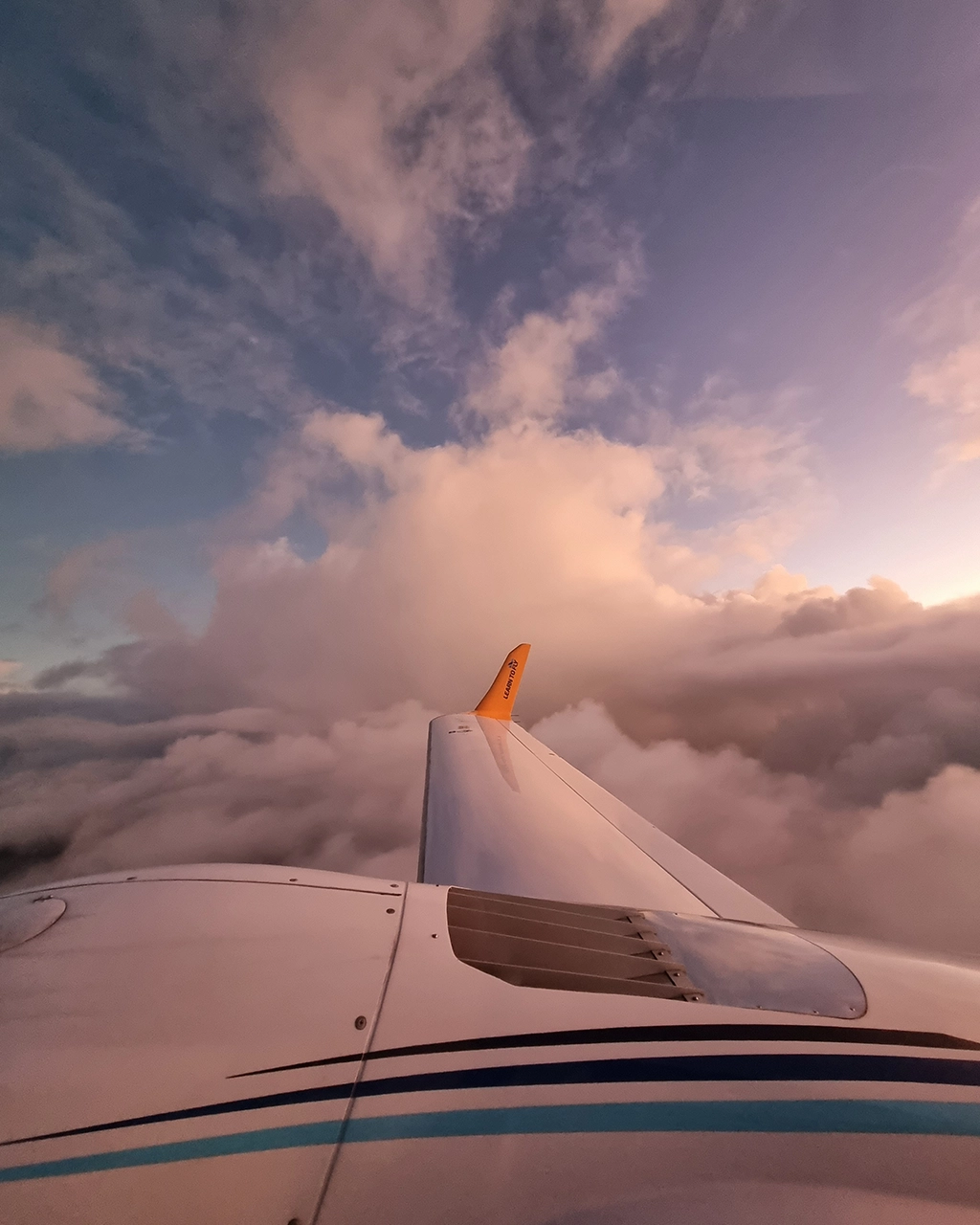
Instrument Flight Rules (IFR) versus Visual Flight Rules (VFR) – What is the Difference?
If you have researched flying, you have likely heard the terms Instrument Flight Rules and Visual Flight Rules before. Or possibly their abbreviations – IFR and VFR. Essentially, these are 2 different sets of “rules” that determine when you can fly. But what do they mean, and what are the differences?
What Are Visual Flight Rules (VFR)?
Visual Flight Rules (VFR) refers to flights that can occur in conditions that allow the pilot to fly using visual cues outside of the aircraft. The pilot must be able to maintain visual reference to the ground and be able to visually see and avoid obstructions, and other aircraft.
Such conditions are referred to as Visual Meteorological Conditions, or VMC. The required VMC are slightly different in different airspace classes. See the graphic below for more information, taken from CASA’s Visual Flight Rules Guide (VFRG). This is a great online resource that any pilot can download.
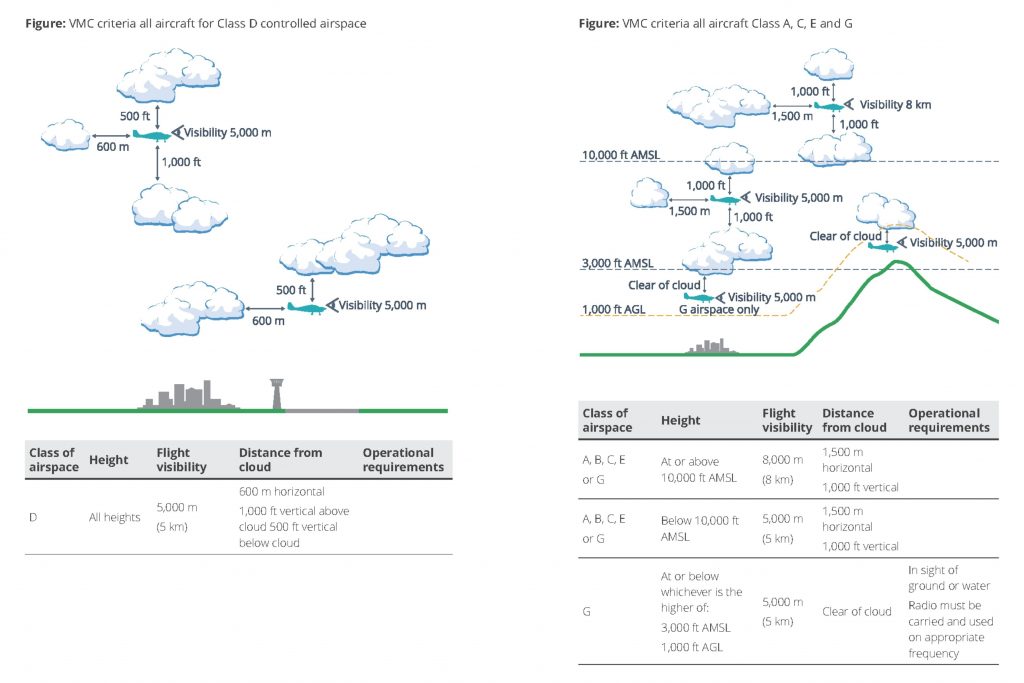
What Are Instrument Flight Rules (IFR)?
When VMC are not present and flights cannot be conducted under VFR, then they must be conducted under IFR. Instrument Flight Rules (IFR) are rules which allow properly equipped aircraft to be flown in non VFR-conditions, under what are known as Instrument Meteorological Conditions (IMC).
IMC are conditions where pilots cannot rely on visual cues, so they need to be able to fly using the aircraft’s instruments. This includes flying after dark, as well adverse weather conditions like heavy cloud and/or heavy rain. As a very broad and general rule, if it’s not VFR, it’s IFR.
Some exceptions can apply, such as Night VFR and Special VFR. Night VFR allows you to fly at night as long as other VMC are present. Special VFR can be requested when some but not all VMC exist for the proposed flight – this is usually used for training flights around an aerodrome and must be approved by ATC.
Flight Planning for VFR and IFR Conditions
As you might expect, flight planning is greatly affected by whether the flight will be conducted under VMC or IMC. Flying VFR affords the pilot far more freedom in planning. The pilot can choose the route and altitude of their flight – of course taking into account other airspace restrictions.
All IFR flights must be planned, with a pre-determined route that has been cleared by ATC. IFR flying involves set procedures for en-route, departure and approach. You will also obviously need an aircraft that meets IFR requirements.
When choosing whether to fly IFR or VFR, pilots generally consider the goals of the flight as well as the conditions. For a training flight that requires flexibility, VFR makes more sense. For longer or more direct flights, pilots may plan for an IFR flight even though conditions are potentially appropriate for VFR. This is due to the efficiency and added safety that IFR flight planning provides.
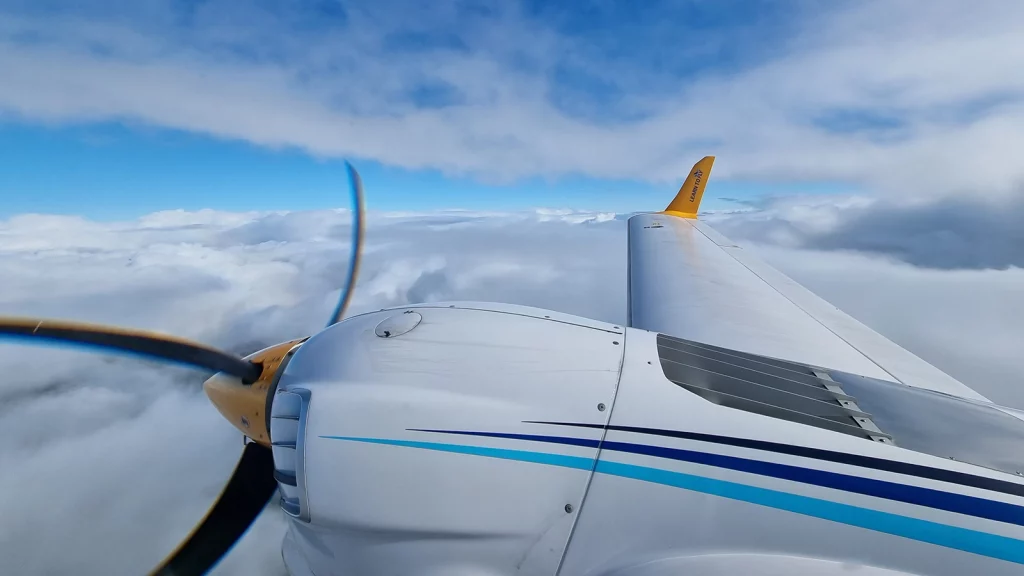
Flight Training for Instrument Flight Rules
As mentioned above, most training flights require a level of flexibility. That means that the majority of flight training needs to occur under VFR conditions. Whilst basic instrument flying forms part of initial flight training, it does not allow you to fly under IFR.
To be able to fly under Instrument Flight Rules, you need to obtain an Instrument Rating. Instrument Rating training teaches you how to fly using your instruments, without relying on visual cues outside the aircraft. To start instrument training, you must hold at least a Private Pilot Licence (PPL) or Commercial Pilot Licence (CPL).
Instrument Rating training includes en-route, departure and approach endorsements – which is what you will need to have when planning IFR flights. A lot of instrument training can be done in flight simulators, like our Alsim AL42 full cockpit synthetic trainer. This allows you to fine tune your procedures on the ground.
Our Private Instrument Flying Rating (PIFR) course is great for private pilots requiring IFR. It allows you to choose just the specific endorsements you require. For pilots who want to fly professionally, the Multi-Engine Command Instrument Rating (MECIR) is an essential choice as it includes both instrument and multi-engine training.
If you would like to find out more, you can email our flight training specialists at [email protected]. You can also visit https://drift.me/learntofly/meeting to book a meeting and a tour of our Moorabbin Airport training base.
Follow us on social media at https://linktr.ee/learntoflymelbourne

Flying at Night – Should You Get a Night VFR Rating?
Flying at night is a fantastic experience. Seeing a sprawling ocean of twinkling lights below is quite spectacular, especially if you live in a big city like Melbourne. To be able fly at night, you need to undergo specific training that must be done on top of your standard pilot licence, be that a Private Pilot Licence or Commercial Pilot Licence. There are 2 pathways you can take – the Night Visual Flight Rules (NVFR) pathway or the Instrument Flight Rules (IFR) pathway.
As a leading Australian flight school, Learn to Fly offers a huge range of pilot training courses, including the popular Night VFR Rating, as well as Instrument Rating courses.
Night VFR vs. IFR
The VFR in Night VFR stands for Visual Flight Rules which is a category of flying where flights can occur in meteorological conditions that are clear enough to see in. As a basic guide, pilots must have visual cues available to them during VFR flight.
IFR stands for Instrument Flight Rules. When weather conditions are not appropriate for flying by sight (ie thick clouds), flights may only be able to proceed under IFR. During IFR flights, a pilot relies on their instrumentation rather than visual cues.
Night VFR, therefore, refers to conditions in which a pilot can still have enough visual cues present even though it is dark. Night VFR is generally less common than Night IFR due to the combined added complexities associated with both flying at night and flying VFR. In fact, in CASA’s own words:
“CASA strongly recommends that NVFR operations take place only in conditions that allow the pilot to discern a natural visual horizon or where the external environment has sufficient cues for the pilot to continually determine the pitch and roll attitude of the aircraft”
Which pathway should you choose?
The pathway you choose should ultimately depend on the type of flying you are intending to do in the future. However, Night VFR training is a lot more straightforward than completing an Instrument Rating, so this may be a consideration.
There are a couple of options for an Instrument Rating. A Private Instrument Flying Rating (PIFR) is a course that you can tailor to the types of instrument flying you want to do. A Multi-Engine Command Instrument Rating (MECIR) covers all instrument flying, and also then allows you to fly aircraft with more than one engine.
Instrument Ratings also require all pilots to successfully complete the CASA Instrument Rating Exam (more commonly known as IREX).
Night VFR training is simpler and less costly. However, relying solely on VFR conditions will restrict the number of night time flying opportunities. In addition, the Instrument Rating itself obviously adds to the amount of daytime conditions you can fly in as well!
What to expect when flying at night
Before taking your first night flight, whether you’re in charge of the cockpit or simply accompanying a more experienced pilot, it’s a good idea to read up on what to expect. Firstly, it is worth noting that your aircraft must be adequately fitted in order to fly at night. This is the case regardless of whether the flight is under Night VFR or IFR rules. CASA strictly regulates this, with a number of lights (internal and external), radio equipment, and navigational aids required.
Be aware that it can take up to 30 minutes for your eyes to fully adjust to your surroundings. Before and during this time, it’s important that lighting inside the cockpit remains at an appropriate level. Red cockpit lighting can also help in this regard.
Similar to day flying day flying, the types of conditions you can expect when flying at night will vary dramatically. There may be situations where you are fortunate enough to have a full, unobscured moon to guide you. From a visual perspective, flying in these conditions may not be too different from flying during the day. Cloud cover may mean that your view below is obscured completely – this would obviously be considered an IFR flight. Pilots should always be aware of the conditions they are flying in but this is even more important at night.
Whilst somewhat uncommon, pilots flying at night do sometimes experience what are known as night flying illusions. Autokinesis, the black hole effect, flicker vertigo, false horizons, and sloping terrain illusions are all common illusions that pilots, both beginner and experienced, need to watch out for.
Night flying courses
Check out the links below to find out more about our night flying courses:
Private Instrument Flying Rating (PIFR)
Multi-Engine Command Instrument Rating (MECIR)
Flight Instructors can also complete a Night VFR Training Endorsement, that allows them to teach the Night VFR Rating course syllabus to students.
If you would like to find out more, you can email our flight training specialists at [email protected]. You can also visit https://drift.me/learntofly/meeting to book a meeting and school tour.

Flight Instructor Rating – The Perfect Start For New Commercial Pilot Graduates
When you finish your Commercial Pilot Licence (CPL) training, you can begin your pilot career. As a new professional pilot graduate though, what is the best way to get started and set yourself on the right career path for your dream pilot job? In our opinion, it all starts with a Flight Instructor Rating. Let’s find out why!
About the Grade 3 Flight Instructor Rating Training Endorsement
As we have discussed in an earlier blog, the Flight Instructor Rating (FIR) course itself just allows you to teach student pilots. You then add Training Endorsements, and they are what determine what types of things you can teach. If you haven’t read that blog, we highly recommend clicking here to check it out.
Why is the Grade 3 Flight Instructor Rating Training Endorsement the Best Way to Start Your Career?
The Grade 3 Flight Instructor Rating Training Endorsement gives you the largest initial scope of what you are able to train. This scope includes basic RPL, PPL and CPL course syllabus. It allows you to teach both theory and practical flight training under VFR conditions.
This means that you can start to build your instructing and flying hours across a broad range of curriculum straight away. While you are doing that, you can gradually add further Training Endorsements that will allow you to expand the type of instructing you can do. This can include more aircraft types, more flight activities, and being able to fly in more conditions. And, you can do this while you are earning money as a Flight Instructor!
Most importantly, as the world recovers from the pandemic, flight training is booming. This means that there are plenty of job opportunities for Flight Instructors. So, as an initial starting point for your pilot career, this is a great move. Let’s take a look at how you can progress your career from there.
Your Career Path as a Grade 3 Flight Instructor
Start: Grade 3 Flight Instructor
Build your flying hours while earning money as a Flight Instructor. Add Training Endorsements to allow you to fly more often.
200 Hours Ab Initio Instructing: Grade 2 Flight Instructor
Once you have at least 200 hours of Ab Initio instructing, you can complete further training and a flight test to become a Grade 2 Flight Instructor. This ups your pay scale and allows further responsibilities, which means you can fly/instruct more, and therefore build hours even faster.
500 Hours Ab Initio Instructing: Grade 1 Flight Instructor
When you have accumulated at least 500 hours of Ab Initio instructing, you can complete the Grade 1 Flight Instructor course. Grade 1 Flight Instructors can supervise Grade 2 and Grade 3 Flight Instructors. Again, this ups your pay and provides more flying opportunities.
12 Months as Grade 1 Flight Instructor: Flight Examiner
When you have worked as a Grade 1 Flight Instructor for at least 12 months (plus at least 1,500 overall hours as Pilot in Command and at least 100 hours of RPL/PPL instructing in the 12 months prior, you can sit a flight test to become a Flight Examiner. Flight Examiners can command impressive fees, making this a potentially lucrative career in itself.
Charter/Private Pilot
The majority of private or charter pilot jobs will have a minimum flight hour requirement, as well as likely requiring extended flying experience (such as multi-engine, instrument flying etc). Working even just as a Grade 3 Flight Instructor will allow you to reach these minimum hours much faster. You will also have the opportunity to complete additional Ratings, Endorsements and Training Endorsements, all while you earn money.
Direct Entry Airline Pilot
If you want to apply for direct entry airline pilot jobs, you will need to meet minimum hourly requirements. Different airlines have different requirements, and as with charter/private pilot jobs they will also likely require extended flying (multi-engine and instrument at a minimum).
On top of the benefit of being able to earn while you build your hours, airlines regard applicants that have Flight Instructor experience very highly. This is because being a Flight Instructor builds your interpersonal skills, your ability to manage, and your ability to work within a team environment. These are all qualities that airlines desire in a pilot.
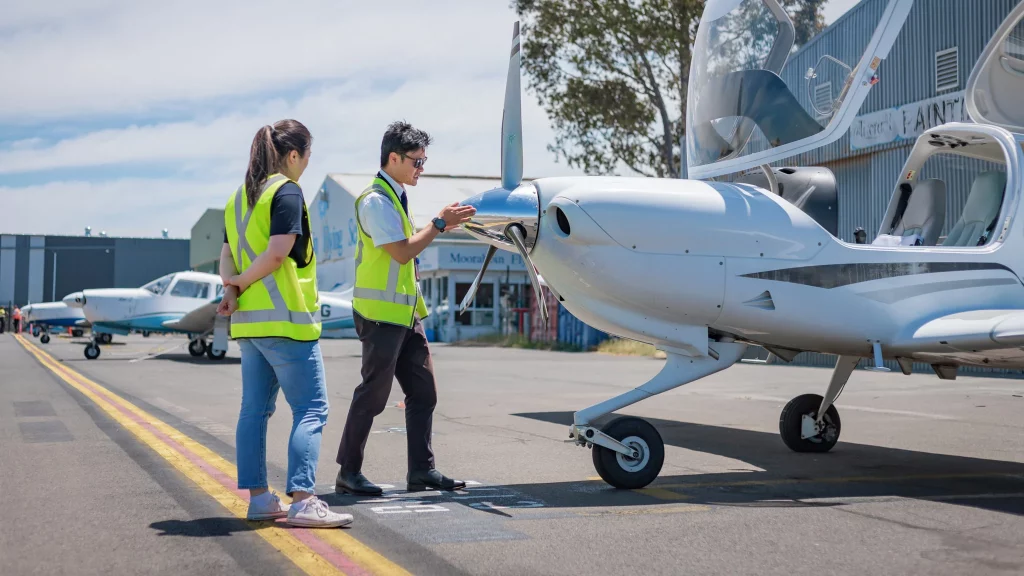
It’s certainly possible to step into a number of professional pilot jobs immediately after completing your CPL. However, it’s important that you give yourself the best possible platform to start from. Starting off with a Grade 3 Flight Instructor Rating Training Endorsement provides you with the widest range of opportunities to grow your skills and experience and, in turn, gives you more career avenues to explore.
You can complete our Flight Instructor Rating course with a Grade 3 Training Endorsement. We also offer a wide range of further Training Endorsements. Email [email protected] or visit https://drift.me/learntofly/meeting to book a meeting and school tour.
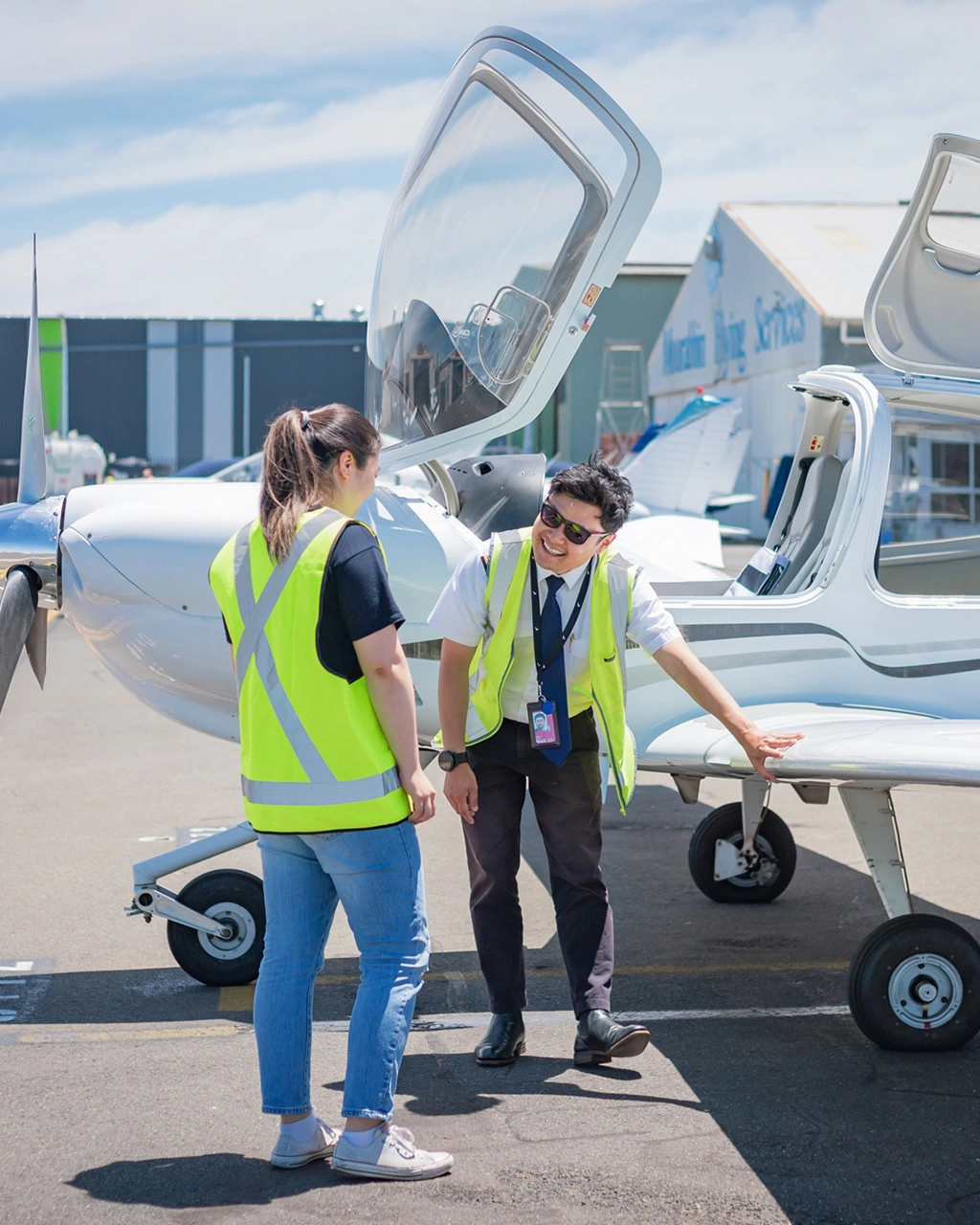
Thinking of Learning to Fly? Here’s What You Need to Know!
Are you thinking of learning to fly? Regardless of your final goal, it’s important to do your research before you start. There are questions you should ask yourself before looking at flying schools. And then, when you are looking at flying schools, it’s important to know what to look for. In this blog, we’ve put together some handy information to make doing your research easier. Here’s what you need to know.
What is my reason for wanting to learn to fly?
If you are thinking of learning to fly, the first thing to consider is why you are doing it. What is your goal? Are you wanting to simply experience flying, or maybe experience solo flight? Do you want to fly for a career, or fly for fun? If you are flying for fun, how far do you want to fly?
The answer to these questions will help you choose the right course pathway. Also, it will help you choose between flying schools.
If you want to fly for fun but aren’t 100% sure if you’ll like it, you can look at a beginner course. Our beginner courses include the Learn To Fly Starter Set and Learn To Fly First Solo Flight Course. Beginner courses introduce you to flying, without the commitment of a full pilot licence course. Any training you do in a beginner course will be counted if you do decide to continue your training.
If you are ready to commit to a licence, a Recreational Pilot Licence (RPL) teaches you the basics and allows you to fly up to 25nm from your departure aerodrome. A Private Pilot Licence (PPL) adds navigation and allows you to fly anywhere in Australia. If you want to fly for a career, you’ll need a Commercial Pilot License / Licence (CPL).
Want to get a taste of flying first before committing to any of the courses? Start with a TIF (Trial Instructional Flight, also known as a Trial Introductory Flight).
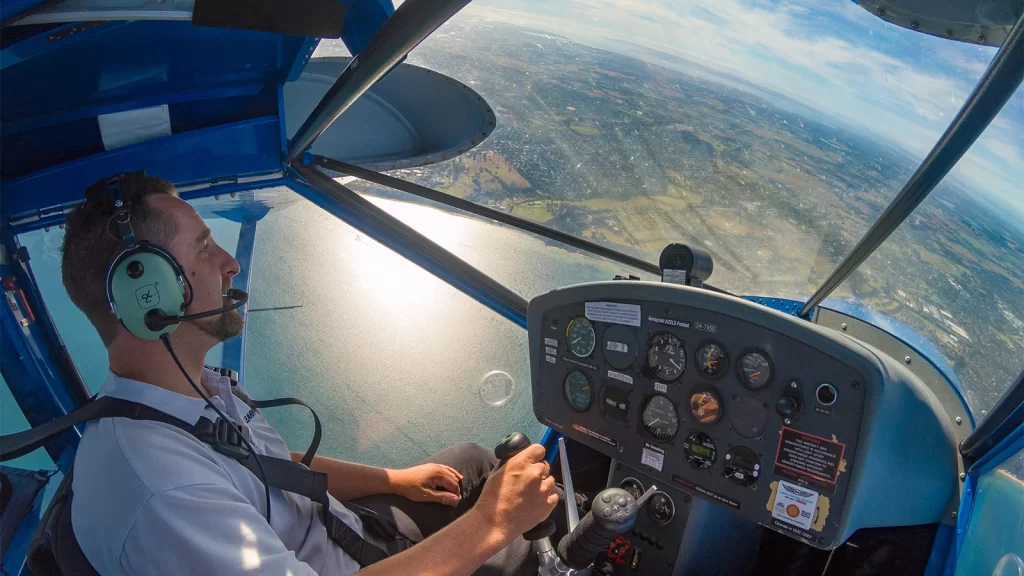
Should I do a TIF (Trial Instructional Flight) first?
Regardless of your ultimate goal in learning to fly, a TIF (Trial Instructional Flight) is a great first step. A TIF is a short flying experience, often 30 or 60mins in duration. It allows you to take the controls of an aircraft under the guidance of an instructor.
This is great for people wanting to know what it feels like to control an aircraft. You can then decide if you want to continue your training with a beginner or pilot licence course. It can also be handy for pilots that might have already flown, but want to see what flying a different aircraft type is like.
How do I choose between flying schools?
There are many flying schools out there, especially in a large city like Melbourne. Choosing the right one is very important, and could be the difference between your failure and success as a pilot. It will also impact how much you enjoy your flying lessons.
So, how do you choose? Here are some key things to look for when considering flying schools:
1. Convenient location
2. Wide range of courses
3. A range of aircraft to choose from
4. Experienced instructors, including Grade 1 instructors
5. Good facilities, including simulators
6. Flexible training options (on-site and distance/online learning)
7. A range of payment options
We tick all of these boxes above – click here to check out our blog on why you should choose to fly with us.
What aircraft should I choose to fly?
There are a few things to consider when choosing which aircraft to fly. There are traditional aircraft like the Cessna 172 or more modern aircraft like the Sling 2 LSA or Diamond DA40.
Traditional aircraft are generally older and have analogue controls/avionics. Modern aircraft are usually fitted out with glass cockpit avionics, which means they include an electronic flight system like the Garmin G1000.
Aircraft availability is worth considering when learning to fly, both during your training and after your training is complete. The aircraft cost is also a factor, as the overall pilot course cost will depend on the cost of the aircraft.
Click here to check out our aircraft fleet.
How much does pilot training cost?
The answer to “how much does pilot training cost” obviously depends on the course you are doing. However, there are other factors to consider as well.
The pilot course cost is generally dictated by the length of the course and therefore how many flying lesson hours there are. Also though, different aircraft cost different amounts to fly and maintain. So, the aircraft you choose will also have an impact on the pilot course cost.
A good flight school will offer payment options. The majority of our courses offer the option to purchase a course package or “pay as you fly”. A course package covers the entire course and has most of your required expenses included. The pay as you fly option is as it sounds – you pay for each flying lesson, theory lesson or exam as you progress.
Many of our course packages can be paid for in interest free instalments via SplitIt. This allows you to split the pilot course cost over monthly payments. Click here to read more about SplitIt.
What are the pilot prerequisites for learning to fly?
Before you start learning to fly, there are pilot prerequisites that you need to meet. These depend on what course you are doing. For example, a pilot licence course will require that you get an Aviation Reference Number (ARN), complete an aviation medical check and meet English proficiency standards.
Age is another consideration. Whilst technically there is no minimum age to attend a flying lesson, you must be at least 15 to fly solo. You must be at least 15 to obtain a Recreational Pilot Certificate (RPC), 16 to obtain your Recreational Pilot Licence (RPL), 17 to obtain a Private Pilot Licence (PPL), and 18 to obtain a Commercial Pilot Licence (CPL).
There are no set pilot prerequisites for a TIF (Trial Instructional Flight or Trial Introductory Flight), but there are recommendations to consider, such as your general health.
Are there differences in pilot licences in Australia to pilot licences overseas?
The structure of pilot licences overseas compared to Australia is quite similar. You may however find some differences in the exact names or the terminology. This is something to keep an eye out for when researching about learning to fly in Australia.
The USA, for example, has both a Sport Pilot and Recreational Pilot Certificate or License, and these are comparable to Australia’s Recreational Pilot Licence (RPL), but with some differences. The USA also has the Private Pilot License and Commercial Pilot License which are again very similar to their Australian PPL and CPL. You may find that overseas licences are called “Certificates” in some countries.
Another note on terminology. Pilot licences in Australia are spelt with a “c” rather than “s” like overseas. For example, Commercial Pilot License in the USA, and Commercial Pilot Licence in Australia.
Want to find out more about learning to fly? Get in touch by email to [email protected]/en or schedule a meeting and school tour at https://drift.me/learntofly/meeting today! Don’t forget to click the button below and subscribe to our YouTube channel where we have a great range of flight training content, as well as free RPL/PPL flying lesson videos!
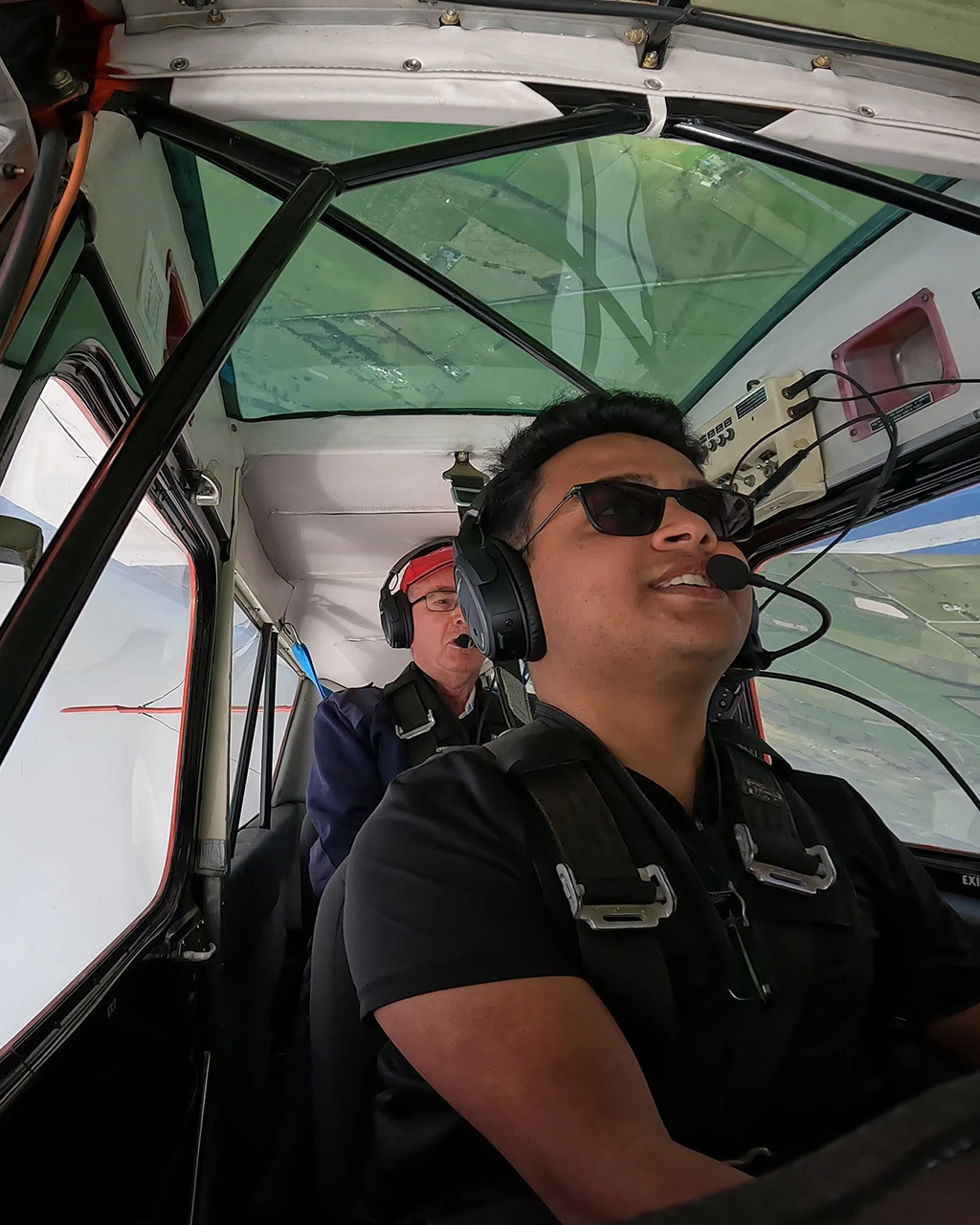
Learning Aerobatics in Melbourne – Adrenaline Pumping Fun & Key Aircraft Handling Skills
Aerobatic flying is spectacular to watch, and a huge adrenaline rush if you’re actually in the cockpit! But on top of the excitement, aerobatics and spinning training teaches you some extremely important handling skills, and also builds your confidence as a pilot. If you’re looking to learn aerobatics in Melbourne, we can help!
Let’s take a look at aerobatic flying itself, and what course you need to complete in order to be able to perform aerobatics.
About Aerobatic Flying
What is aerobatic flying? As a general definition, aerobatic flying involves performing manoeuvres that involve aircraft attitudes not used in normal flight. Aerobatics require precise control of the aircraft, and in addition many manoeuvres create high G and negative G forces.
Aerobatic manoeuvres cause enhanced stresses on the aircraft’s structure, or airframe. For this reason, you require an aircraft that is rated for aerobatics, like our 8KCAB Super Decathlon. The Super Decathlon has 4-point safety harness seatbelts, as well as an airframe that is built to withstand aerobatic stresses between +6g and −5g.
To perform aerobatics, you need to know how your aircraft will handle and perform. But you also need to know how your body is going to react to forces it won’t be used to. Knowing how your body responds to different G forces and learning to cope with them when they occur is an important confidence-building tool.
There are other regulations that must be adhered to for aerobatic flying, such as Visual Meteorological Conditions (VMC), minimum altitudes, and minimum distances from populated areas or public gatherings. If you’re looking at flying aerobatics in Melbourne, Moorabbin Airport is a great training base, with plenty of favourable weather and suitable staging areas close by.
Aerobatics Courses in Melbourne
If you are looking to learn aerobatics, then the course you will need to complete is the Aerobatics & Spinning Endorsement. As the name suggests, this course teaches you how to handle an aircraft during both aerobatic manoeuvres and spins. You’ll complete ground theory and practical aircraft training, followed by an assessment flight.
Our Learn To Fly Aerobatics & Spinning Endorsement course at a glance:
– 5 Hours Ground School
– 7.5hrs Flight Training
– 8KCAB Super Decathlon Aircraft
– Moorabbin Airport
To be eligible to commence the Aerobatics & Spinning Endorsement course, you need to hold a valid Recreational Pilot Licence (RPL), Private Pilot Licence (PPL) or Commercial Pilot Licence (CPL).
Aerobatics & Spinning Endorsement – Course Process
Ground School
Briefings on flight dynamics, spin theory, airframes, and regulations, as well as physiological considerations including G forces and spatial disorientation.
Lesson 1 – Aerobatics
Learn and perform Loop, Barrel Roll, Aileron Roll, Hammerhead (Stall Turn), and Immelmann manoeuvres.
Lesson 2 – Spinning
Learn aircraft spin behaviour, and perfect successful recovery techniques from partial and fully developed spins.
Lesson 3 – Attitude Recovery
Learn how to detect and recover from the unusual aircraft attitudes created by spinning and aerobatic manoeuvres.
Assessment Flight
The Aerobatics & Spinning Endorsement assessment flight is a supervised solo flight where you will demonstrate all manoeuvres and techniques learnt during the course syllabus
Want to find out more about learning aerobatics in Melbourne? Get in touch by email to [email protected]/en or schedule a meeting and school tour at https://drift.me/learntofly/meeting today! Don’t forget to click the button below and subscribe to our YouTube channel where we have a great range of flight training content, as well as free RPL/PPL flying lesson videos!


What to Expect in a Cadet Pilot Interview
Securing a cadet pilot position can be difficult, even for skilled pilots with flight experience. The cadet pilot interview a very competitive process, designed to test every aspect of your suitability. Much like any job interview, you need to prove to your potential employer that you’re the best person for the role.
Don’t let this put you off pursuing your dreams of becoming a commercial pilot. There are plenty of strategies you can employ to help you stand out from the crowd.
Here at Learn to Fly, we believe that preparation is key when working towards a cadet pilot interview. Understanding what to expect from the interview process will give you the best chance possible of demonstrating your suitability and passion. Our Future Cadet Pilot Program (FCPP) is perfect for anyone aiming to secure a competitive role in a cadet pilot scheme. The program covers absolutely everything you need to know and provides you with the tools for a successful interview.
What is a Cadet Pilot Program?
A cadet pilot program is one of the routes available to future pilots to kickstart their commercial aviation career.
These programs are often designed to take those with little to no flying experience from being absolute beginners to experienced professionals. Cadet pilot programs are usually run by airlines and successful applicants will usually be offered a position upon completion of their training. In this sense, cadet pilot programs differ from training courses offered by flight schools. However, they tend to cover similar Commercial Pilot Licence course materials, including practical and theoretical lessons.
In Australia, many of the top airlines offer cadet pilot programs, including Qantas and Jetstar. It’s important to be aware that there are some prerequisites that must be met before applying to a cadet pilot program. You must be at least 18 years old. You must also be capable of holding a CASA Class 1 Medical Certificate and demonstrate minimum levels of English proficiency. Some cadet programs may require that you are a citizen or permanent resident of Australia.
It’s worth checking all of these stipulations before going to the effort of preparing for a cadet pilot interview.
The Interview Process
It can help to think of the cadet pilot interview process as much like any other type of job interview, if not slightly longer and more intense. Exactly what the process entails will depend on which airline you are applying to. All airlines, however, will be looking for some of the same important traits: passion, commitment, and good instincts.
To start with, you can expect the airline to ask you basic questions about your flight experience and why you want to be a pilot. Don’t be too concerned if you don’t have a lot of experience. After all, these programs are designed to cater to beginners. However, it will certainly help if you have spent at least a few hours exploring the clouds. Learn to Fly’s Future Cadet Pilot Program (FCPP) can help give you that extra competitive edge. It includes flight training and simulation training as well as specific cadet application and interview training.
You’ll also likely be asked to participate in a skills assessment. This may include basic questions designed to demonstrate your maths, physics, and aviation knowledge. In addition to skills-based assessments, airlines are also keen to test your problem solving skills. This may also include group-based activities that test your ability to work in a team environment.
Sitting a cadet pilot interview can seem overwhelming. However, it can help to keep in mind that it’s really no different from any other type of job interview.
Tips and Tricks to Prepare
As the adage goes, preparation is the key to success. Many applicants arrive at their cadet pilot interview with the exact same goals, skills, and set of experiences. Being adequately prepared to answer whatever question is thrown at you can be the difference between you and the rest of the pack.
Learn To Fly’s Future Cadet Pilot Program (FCPP) is unique in that it is designed to provide you with practical experience, theoretical knowledge, and interview training, covering every possible base in preparation for your interview. In addition to the flight and simulation training, you will receive extensive airline interview coaching from a highly experienced airline pilot.
We know what each airline looks for in their cadets. We will work with you to ensure you present as a motivated, diligent individual that aligns with the specific qualities they like to see.
We’re confident that our Future Cadet Pilot Program (FCPP) covers every aspect of a cadet pilot interview. This means that you’ll go into the interview room knowing exactly what to expect. To learn more, contact one of our flight training specialists today.
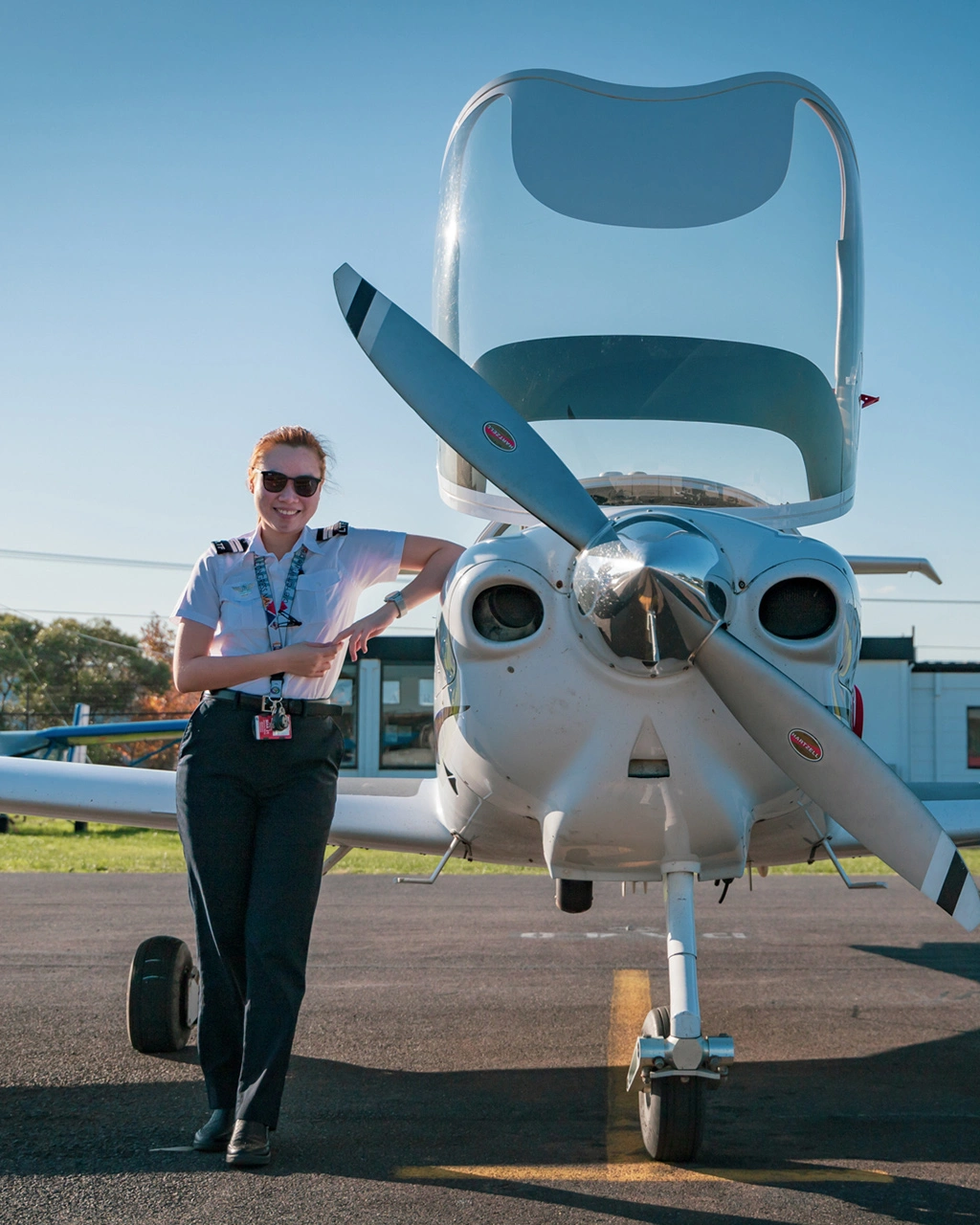
Top Tips to Prepare You for Solo Flight Training
Your first solo flight training experience is an incredibly exciting moment. It can also be quite nerve-wracking though. It’s natural that you might feel a little anxious about what’s about to happen. After all, you’ll be the one in complete control of the cockpit. If anything unexpected happens, it will be your skills and cool, calm head that needs to find a solution.
However, most people find that once they’re safely up in the air, that anxiety turns to complete exhilaration. You’ve been training for this moment for a while now. You know what you are doing, and you’ve finally achieved your dream of flying an aircraft solo!
Here at Learn to Fly, we’ve provided countless students with the skills and confidence they need to safely take to the skies in a solo capacity. In fact, we’ve built a whole course around it — our very popular Learn to Fly First Solo Flight Course. As part of your training, our experienced team will provide you with several strategies you can implement to make solo flight training as enjoyable as possible. Here are some of the top tips:
Be patient
Depending on your age, skills, background, and experience, getting to the point where you feel comfortable undertaking solo flight training may take some time. This is completely understandable; remember how strange it felt getting behind the wheel of a car for the first time without an instructor? And your feet were firmly planted on the ground!
Be patient with yourself and your instructor when preparing for your first solo flight. Flying is a difficult skill. It requires physical finesse and a certain level of theoretical knowledge. Building this skillset takes time. With patience though, along with passion, dedication, and support from the right flying school, you’ve got the best chance of getting there.
Ask questions
Learn to Fly’s First Solo Flight Course is specifically designed to develop your skills to the point where your instructor feels comfortable letting you take to the skies on your own. It involves 15 flight training hours, and these will be flown with an instructor by your side until you are ready.
You should aim to ask as many questions as possible about the plane you’re in, the role and responsibilities of a pilot, and how to handle unexpected, emergency situations. There is no such thing as a silly question. In fact, you’ll be left feeling pretty silly if you don’t ask something and are later left still wondering when you’re in control of the aircraft.
Learn to Fly’s team of experienced and dedicated instructors are as passionate about teaching as they are about flying. They’ll be more than happy to answer any and all of your questions, so ask away!
Don’t rush
Mistakes are usually made because we don’t give ourselves enough time to fully think through a situation. This is true in all contexts but is particularly important regarding solo flight training.
Your flight instructor will only okay you to fly solo if they truly believe you are ready. Once you’ve got that tick of approval, you can be confident that your skills and knowledge are up to the task of being in command of the cockpit.
The trick is to not let nerves get the better of you. Your instructor has confidence in you, so you should have confidence in yourself. Don’t allow anxiety to dictate how quickly you move through your pre-flight checklist. And don’t let nerves tell you that you’re going to have difficulty making the landing. Trust in your training and knowledge, and everything will go smoothly.
If you find yourself rushing, take a moment to look out the window, enjoy the view, and acknowledge that you’re a solo pilot. Not many people can say they’ve had that experience!
Enjoy yourself!
Finally, remember to enjoy yourself. You’ve put in a lot of time, effort, and study to get to this point. Maybe this is the fulfilment of a lifelong dream. Or perhaps it’s only the first step in going on to obtain your Recreational Pilot Licence, Private Pilot Licence, or Commercial Pilot Licence. Maybe one day you’ll be piloting a jet airliner, and you will look back and remember that very first time you took to the skies on your own!
Here at Learn to Fly, we are passionate about helping our students fulfil their dreams. We know that flying can be both exciting and overwhelming, which is why we recommend our First Solo Flight Course for those looking to commence solo flight training. The course is designed to provide you with all the practical and theoretical skills required to safely take-off, handle the aircraft in the air, and then safely touch down again. Our students come from a wide variety of backgrounds and are equally as passionate as you about achieving their aviation goals.
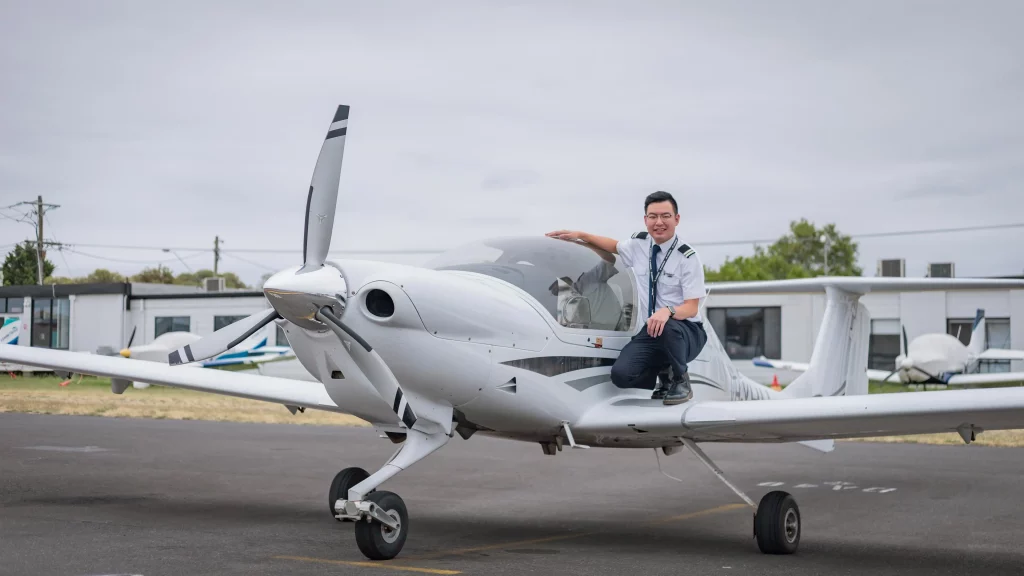
Contact our friendly team today to find out more about our course options and programs.

US Airline Jobs for Australian Pilots – What Are the Pilot Prerequisites?
Becoming an airline pilot is the ultimate dream for many people thinking about a career in aviation. Being a pilot in Australia, many have found that the Australian airline market is competitive. But what about airline jobs overseas? And what are the pilot prerequisites?
It’s no secret that Australia is seen by the rest of the world as a fantastic place for pilot training. This means that commercial pilots that have trained and qualified here in Australia already have an advantage when looking at roles in other countries. So, what makes US airline pilot jobs such a great opportunity?
The US airline pilot shortage
As the world starts to reopen post-Covid, US airline pilot jobs provide a very real and achievable career opportunity for Australian pilots. Recently we have seen articles from major US carriers like United and American Airlines talking about having to cancel services and routes simply because they don’t have enough available pilots to fly them.
As air travel was so severely disrupted during the pandemic, many airline pilots were stood down, while other more senior pilots opted to accept packages and retire. Consequently, many of these pilots are not returning to the industry. This, coupled with the speed at which air travel has bounced back, has quickly created a significant shortage of pilots.
US airlines have always been quite proactive in looking at Australian pilots. Now especially though, being a pilot in Australia means that you may well be in demand as a pilot in the USA! For Australian Citizens, getting an E-3 visa to work in the USA is also quite a straightforward process.
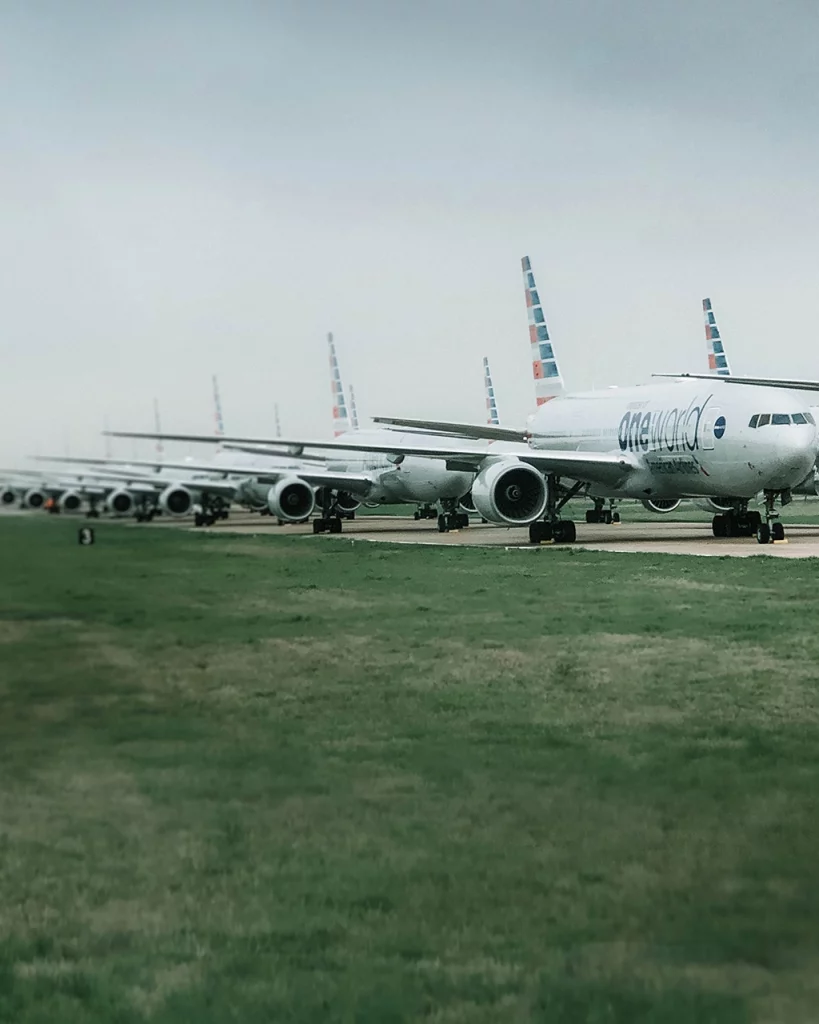
What are the pilot prerequisites for US airline pilot jobs?
Different airlines in the USA have different pilot prerequisites depending on the role. As an example, Commutair are currently actively recruiting Australian pilots for direct entry First Officer roles with the following requirements:
1. Airline Transport Pilot (ATP) certificate or Commercial Multi-Engine Land Pilot’s License with current Instrument Rating
2. Current First Class Medical
3. FCC Radio Operator’s Permit
4. Valid Australian Passport
5. Meet FAA ATP minimums (1,500 total flying hours),and at least:
– 100 hours night flying
– 75 hours instrument flying
– 200 hours cross country flying
– 50 hours multi-engine flying
There are other requirements you will need to meet such as the ATP theory exam, which is typically done before line check. There is also aircraft type training for successful applicants. But these things are usually organised by the airline.
With those additional requirements aside, you could potentially meet the pilot prerequisites with as little as 1,500 flying hours.
What is the E-3 visa process?
The E-3 Specialty Occupation visa allows Australian Citizens to work in “specialty occupations” in the USA. To be eligible for an E-3 visa you must demonstrate that you:
– Are a national of Australia
– Have a legitimate offer of employment in the United States
– Possess the necessary academic or other qualifying credentials
– Will fill a position that qualifies as a specialty occupation
An aviation Bachelor or Diploma would likely automatically qualify you for meeting the necessary academic qualifications. However, “qualifying credentials” can also include relevant work experience. So, if you meet the pilot prerequisites required for acceptance into the US airline job itself while being a pilot in Australia, you will likely meet this criteria based on “equivalent experience”.
The visa application process will be initiated by the employer once you have accepted their job offer.
What is the best way to meet USA airline job pilot prerequisites?
If you think that flying for an airline in the USA sounds like a good career move, we can help you to get there. Here’s how:
1. Complete a Commercial Pilot Licence (CPL) or AVI50219 Diploma of Aviation (Commercial Pilot Licence – Aeroplane) course. Approx 12 months
2. Complete a Multi Engine Command Instrument Rating (MECIR) or AVI50519 Diploma of Aviation (Instrument Rating) course. Approx 6 months
3. Complete a Flight Instructor Rating (FIR) course. Approx 4 months
4. Build your flying hours while working as a Flight Instructor (this way you can get paid while you build hours, and instructing experience is always viewed in high regard by airline employers)
5. Complete an Airline Interview program like the Airline Interview Coaching Session. This highly successful course will help you to prepare your application and also to prepare for the interview itself
We also have a wide range of Ratings and Endorsement courses available. Adding Ratings and Endorsements to your licences can greatly increase the number of hours during which you can fly. For Flight Instructors, you can add Training Endorsements that allow you to instruct in a wider range of flight scenarios.
Want to learn more? Get in touch by email to [email protected]/en or schedule a meeting and school tour at https://drift.me/learntofly/meeting today!
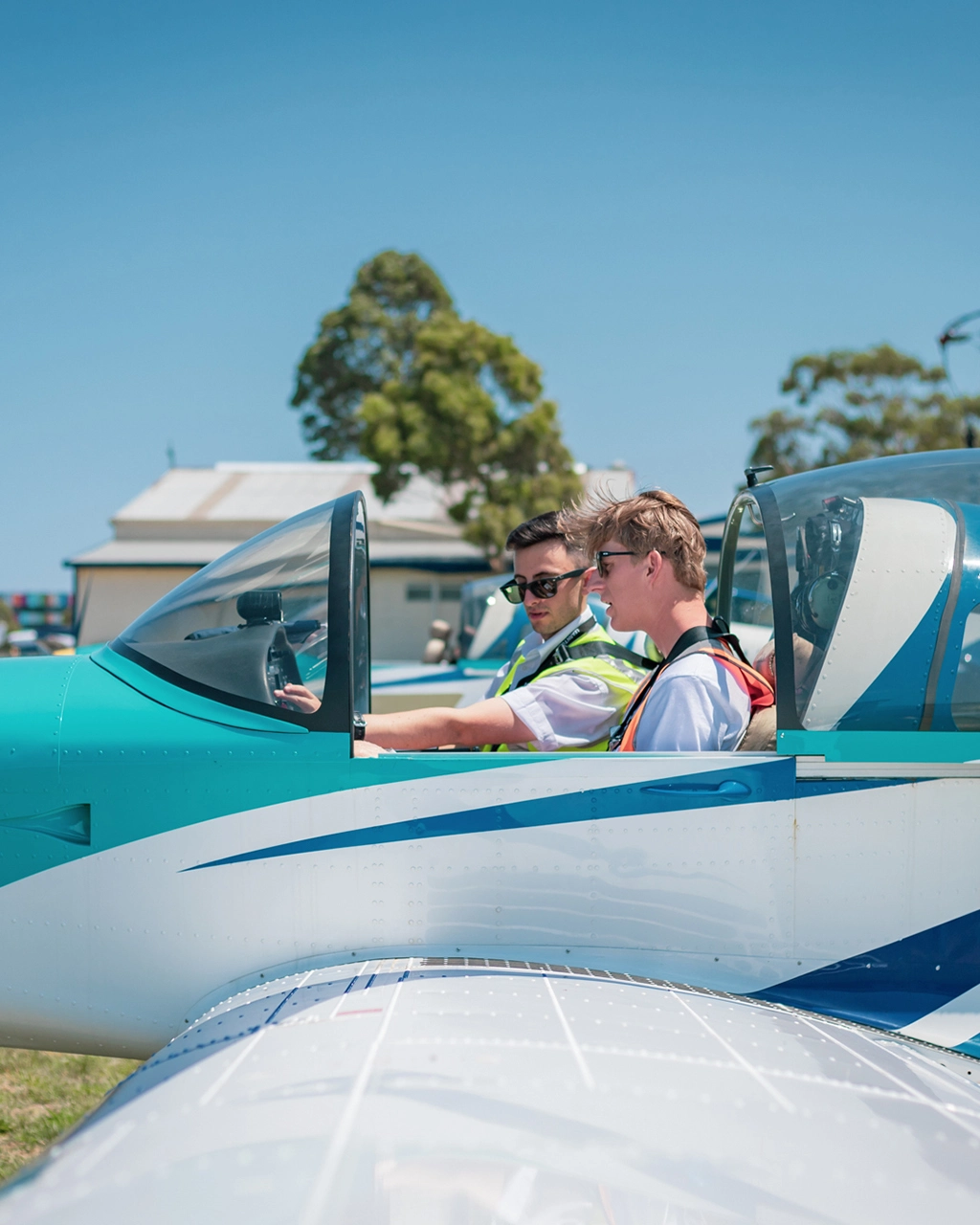
Frequently Asked Questions About Flight Training
If you’ve never flown a plane before, the idea of being the person in control of the cockpit might seem like a far off dream. Pilots are cool, calm, and collected — it can seem like they were born to take to the skies. In reality, they’ve just spent a lot of time training and have the confidence, skills, and knowledge to take on any and all situations. Anybody new to flying will have a lot questions about flight training.
Before even signing up to flight training in Australia, it pays to do your research. The pathway to achieving your goal can be quite different depending on what that goal is. Here at Learn to Fly, we’ve helped countless people with a range of different goals fulfil their dream of taking to the skies.
For some, a Trial Introductory Flight (TIF) is all they need to tick an item off their bucket list. For others, their goal of flying for fun might see them looking towards a Private Pilot Licence. If you want to fly professionally one day, a Commercial Pilot Licence or Diploma of Aviation is your pathway to success.
Whatever your aviation aspirations are, Learn to Fly is here to help. Here, we answer some of the most common questions about flight training. If, after reading this article, you still have any questions, you can always get in touch with one of our flight training specialists.
How old do I have to be to fly?
This is by far one of the most common questions that people ask. Here at Learn to Fly, we’re proud to offer a full range of flight packages and experiences designed to help people of all ages achieve their dreams.
As per regulations set out by the Civil Aviation Safety Authority (CASA), you must be at least 15 to fly an aircraft solo. You can commence flight training prior to this, but until you are 15 you will always need to fly with an instructor. You need to be 16 to obtain a Recreational Pilot Licence (RPL), 17 to obtain a Private Pilot Licence (PPL), and 18 to obtain a Commercial Pilot Licence (CPL).
If you are younger than 15, our Trial Introductory Flight (TIF) is the perfect opportunity to experience what it is like to fly a plane before deciding on whether you want to commit to further training. We also offer a range of simulation packages, which provide an enjoyable, realistic experience for all ages.
What are the steps to becoming a professional pilot?
This is one of the most common questions about flight training. To fly professionally, you will need to obtain your CPL. To start on CPL training you must first have completed and obtained your RPL and PPL.
For pilots who are yet to start any training, a great option is the AVI50219 Diploma of Aviation (Commercial Pilot Licence – Aeroplane) course. This course includes RPL, PPL and CPL training as well as additional learning aimed at better preparing pilots for entering the industry once they graduate. This course is also approved for VET Student Loans (VSL) for eligible students. This means that you can train now, and only need to start paying back your course fees once you are earning money.
Once you have obtained your CPL, you are able to work professionally as a pilot. Depending on what kind of pilot role you want to work in, it may be of benefit to complete further training, like an Instrument Rating for example.
Learn To Fly has a range of additional Rating and Endorsement courses that allow you to upskill and give yourself the best chance at landing your dream pilot job.
Are there any prerequisites I must meet to fly?
As mentioned, CASA has a minimum age limit on who can undertake solo flights. There are a number of other prerequisites that must be met before completing flight training in Australia. These include a medical check, security clearance, Aviation English Language Proficiency (AELP) test, and registering for an Aviation Reference Number (ARN) with CASA.
You can contact Learn to Fly if you have any questions about how to meet the requirements to fly.
What aviation careers are available to me?
Many people become pilots with the dream of flying for an international airline, but that is not the only option. In reality, there are actually a wide range of career paths that pilots can choose from. You might choose to ferry cargo from one airport to another. Perhaps you’re interested in pursuing a career in the medical aviation industry, which is a very worthy endeavour. There are also always openings for agricultural pilots.
One of the best pilot career options is to become a Flight Instructor. Becoming a Flight Instructor is a rewarding career path on its own. In addition, it can be a fantastic stepping stone to another role, as it allows you to build flying hours and experience while you earn money.
Learn to Fly is passionate about helping all our students achieve their dreams, while also opening up doors that you may not have previously considered.
How much does flight training cost?
The answer to this question depends on a number of different factors. The cost of a course will depend largely on the number of flying hours it requires. Aircraft choice is another factor in determining how much training will cost.
If you are an international student, you will need to factor in the cost of your student visa plus living in Australia on top of your course fees.
Learn To Fly offers a range of payment options on our courses. We offer inclusive flight packages to give you a better indication of the overall cost upfront, and many of these can be split into interest-free monthly instalments. There is also the option to “pay as you fly”. Our Diploma courses have been approved for VET Student Loans (VSL) for eligible students.
We are dedicated to making flight training in Australia accessible to as many people as possible. We strive to make flight training more affordable, making it easier to achieve your dreams. Flying is a wonderful experience, and regardless of what your flying goals are, we look forward to welcoming you to our school. If you have any questions about flight training, don’t hesitate to get in touch!
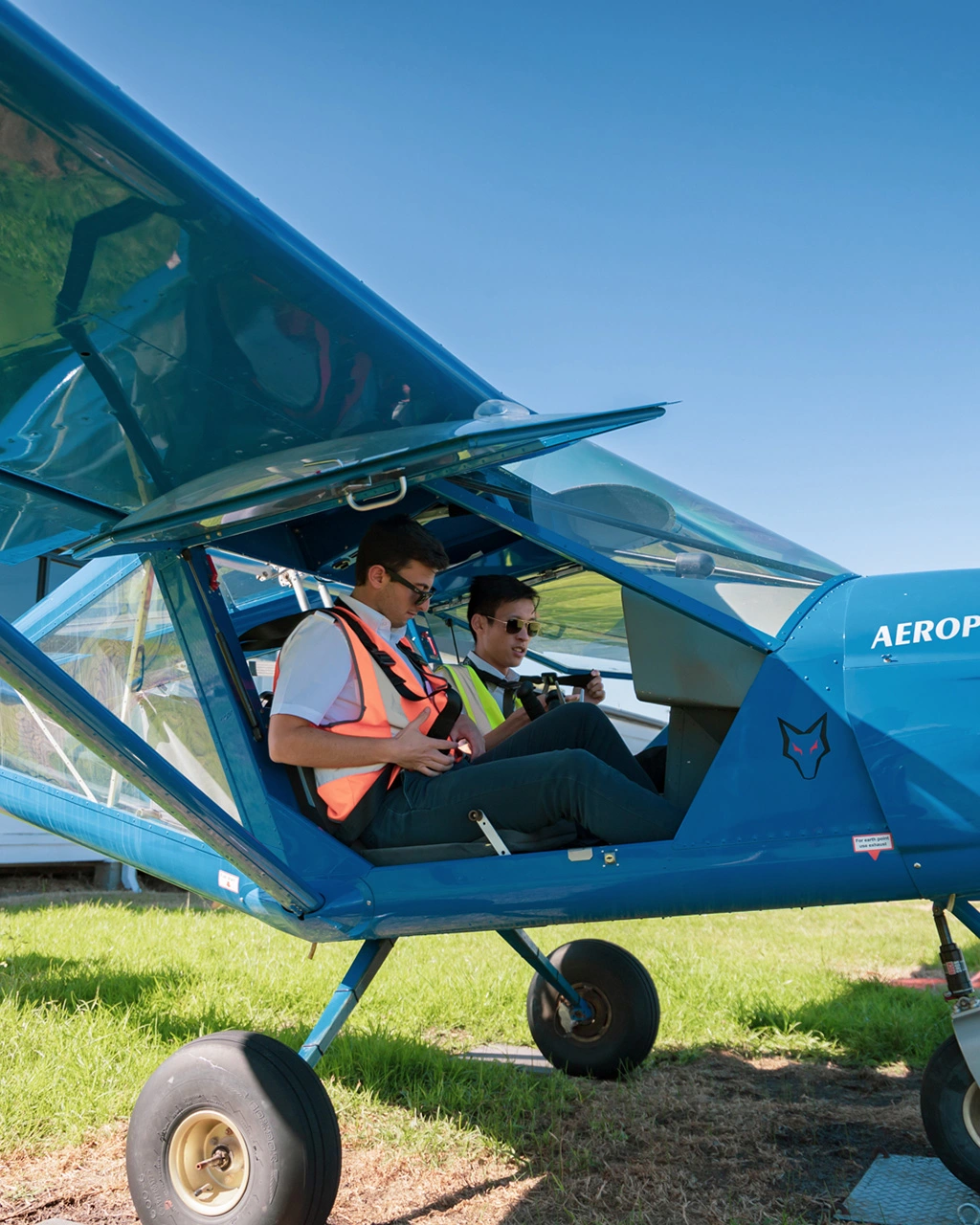
Soar into the New Year with a Trial Introductory Flight
Oftentimes, the dreams on our bucket list never quite make it to reality. Maybe they require you to quit your job and move to a country on the other side of the world. Perhaps fulfilling a lifelong ambition requires too much time, money, or simply seems completely unrealistic. Well, as another new year approaches, one dream that CAN be fulfilled is taking the controls of an aircraft! Learn to Fly’s Trial Introductory Flight (TIF) gives you a first-hand experience of what it’s like to pilot a light aircraft.
This awesome experience can be enjoyed by people of all ages and abilities. By choosing Learn to Fly, you can also complement the experience with a range of additional features and add-ons.
What to expect
Here at Learn to Fly, we know that some people undertake a trial flight as a one-off experience, perhaps to tick another item off their bucket list. Others may be considering a career as a professional pilot but first want to really make sure that this is a calling they feel passionate about and can see themselves succeeding in.
As such, our trial introductory flights are designed to suit a wide range of audiences. The flight will start with your instructor giving an introduction to the type of plane you will be flying in. At Learn to Fly, we have the resources at our disposal to provide you with a choice of what aircraft you want to go up in — the Foxbat OR Sling, or the Diamond DA40.
Following the introduction, where the pilot will outline how the controls work, you will be taken through a pre-flight checklist. This is the standard procedure that all pilots follow every time they fly, the trial introductory flight being designed to capture as closely as possible the real thing.
Now, it’s time to take to the skies. The pilot will, of course, be the one to control take-off, but having shown you a few basic manoeuvres, they may even let you have a go at putting your hands on the controls.
At Learn to Fly, we offer trial introductory flights of either 30 or 60 minutes — it’s completely up to you how long you want to spend exploring the clouds.
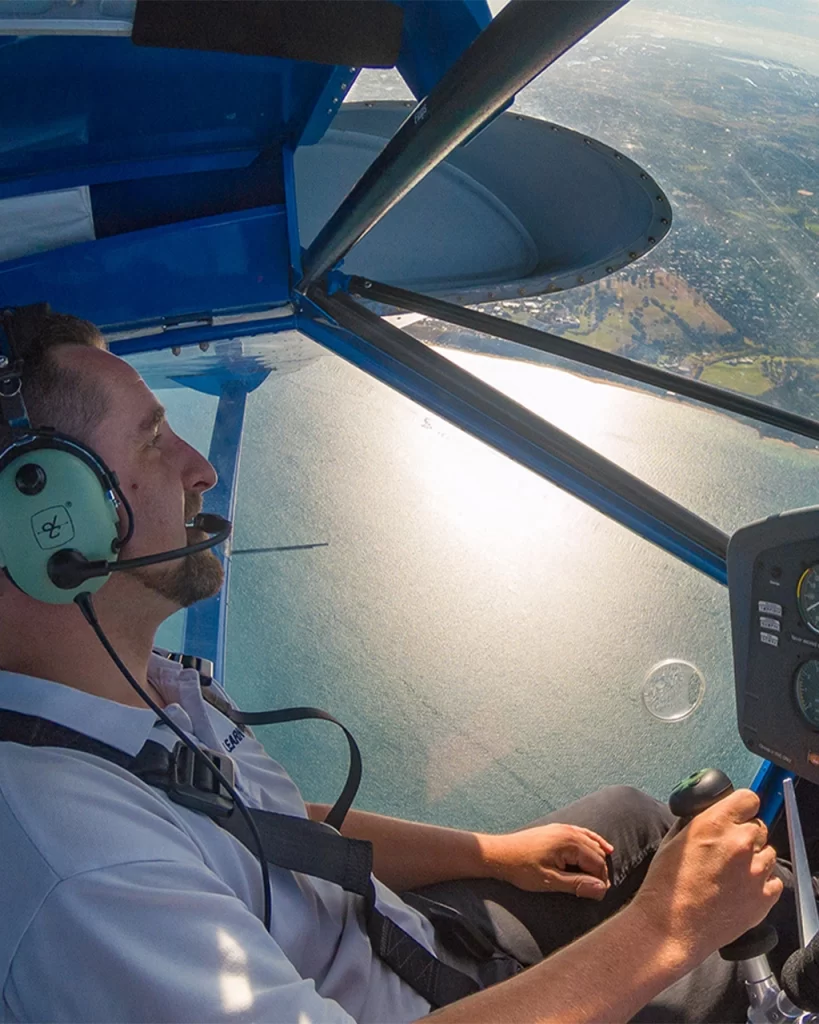
Eligibility
Unlike some other types of flight training, there is no age limit on a trial introductory flight. This experience is designed for everyone!
However, you may be asked if you have any pre-existing health conditions that could interfere with your ability to safely control a plane or put other flight occupants at risk.
If you really enjoy your trial introductory flight experience, ask your Learn To Fly flight instructor about further training. The flight incorporates actual flying lesson content, meaning your time in the air will count towards additional training.
How to Book
Booking your trial flight couldn’t be easier. Simply visit the Learn to Fly website and select your plane, flight length, and preferred date. If you want to give a friend or loved one the ultimate present, we also offer a gift certificate option.
Add-ons
We know many of our trial flight participants have dreamed about this moment their whole life. With that in mind, we’ve put together a range of add-ons designed to make the day even more memorable.
While your time spent soaring amongst the clouds will no doubt remain firmly implanted in your memory, our video packages provide you with the perfect opportunity to relive your trial flight. All our aircraft are fitted with GoPro mounts, which allows your friends and family to join you in the skies.
For those wanting to go a step further, we even offer a 360 degree video option. This gives you a fully interactive recap of your flight from all angles!
For a small fee, we can also provide you with a laminated certificate, commemorating your very first flight! All the important details are featured, including your name and the flight details. Imagine how special this piece of paper will become once you’re fulfilling your life’s dream of piloting commercial airliners!
Finally, if the trial flight experience leaves you hungry for more, why not try our 737 Simulation? The simulator uses real instruments and systems to accurately capture what it’s like to be an international airline captain. What an experience!
The best way to start the new year is seeing what life is really like amongst the clouds. Contact Learn to Fly today to learn more about our trial introductory flight options and book yourself in for a once-in-a-lifetime opportunity today.

Fulfill Your Dream of Flying with a Diploma of Aviation
Many of us wonder what it might be like to be in the cockpit of a plane. Well, dream no more. Studying for a Diploma of Aviation with Learn To Fly will provide you with the knowledge, skills, and qualifications to become a certified pilot. Next time you’re jetsetting from Melbourne to New York, you could be the one in control of the plane!
Of course, obtaining a Diploma of Aviation takes considerable time and effort, as does going on to become an airline pilot. However, all who have studied with Learn to Fly would agree that it’s certainly worth the many hours you put in. After all, most of these hours will see you soaring through big blue skies or among the clouds. What more could you ask for?
Continue reading to learn a little more about what to expect from the Diploma, who is eligible, and how to apply.
AVI50219 Diploma of Aviation program summary
There are quite a few courses out there that offer pilots the opportunity to obtain their Commercial Pilot Licence (CPL), which is what you need to earn a living from flying. So what makes the AVI50219 Diploma of Aviation different?
Don’t let your beginner status get in the way of your dream to fly for a career. The 150 flying hour training syllabus will teach you everything you need to know to go from complete beginner to experienced pilot.
Upon successfully completing the course, you will receive both a Commercial Pilot Licence and a Diploma certification. However, the program is not just about you having the right pieces of paper. It not only teaches you all the practical skills you need to know to take to the skies with confidence. This includes flight planning, safe and accurate aircraft operation, operational decision making, navigation techniques, and how to safely operate in a busy and congested flight space.
The Diploma of Aviation flight training program follows the Civil Aviation Safety Authority’s Commercial Pilot Licence syllabus, and then the extended syllabus prepares you for actually working in the aviation industry. This means that the Diploma requires the participant to undertake theory classes and exams across a broad range of subjects, from aerodynamics to meteorology. Upon successful completion, you will be fully qualified and present as a highly competitive candidate to obtain your dream pilot job.
As a professional pilot, you may be responsible for the safety of a number of crew and passengers. Having finished the Diploma, you will have confidence in your skills and ability to make informed decisions to ensure the safety and security of all.
Eligibility
The Diploma is aimed at people with little to no flight experience. However, that doesn’t mean that just anyone can apply. There are prerequisites to ensure your safety and the safety of others around you.
You must be at least 18 years old to commence the program. Whilst Learn to Fly welcomes international students from all over the world, there is still an English language requirement. You must also organise an Aviation Reference Number.
How to apply
The application process for the AVI50219 Diploma of Aviation is relatively simple. It is also designed to make sure you are aware of the course demands. To start with, you must first check that you meet all eligibility requirements, as outlined above. You can then complete an Expression of Interest form. This will request some basic information about your aviation experience, career aspirations, and understanding of the obligations of a pilot.
Once this EOI is approved (more information may be requested by the selection committee), you can then complete the enrolment form. Your journey to becoming a qualified pilot will commence with a student orientation and induction session.
Why Learn to Fly?
With so many flight schools out there, why sign up with Learn to Fly?
Well, as a highly established and experienced flight school in Melbourne, we believe our passion for providing affordable and accessible flight training truly sets us apart. We understand that the cost of flight training can often be a prohibitive factor in people achieving their dreams. As such, we strive to provide high-quality, accessible training that enables you to reach your goals in an efficient manner.
Our fleet includes an array of different planes, including the single-engine Diamond DA40 and the twin-engine Diamond DA42. Our state of the art training facilities in Moorabbin are unparalleled and large enough to accommodate a significant number of students at one time. We have provided training to people from all types of backgrounds. Our graduates have gone on to achieve great things in the aviation industry. Our wide range of additional courses also allows you to expand your skillset and abilities.
The Diploma of Aviation is one of the best pathways to achieving your flying dreams. So, contact us today to take the first step towards your dreams of becoming a commercial pilot!
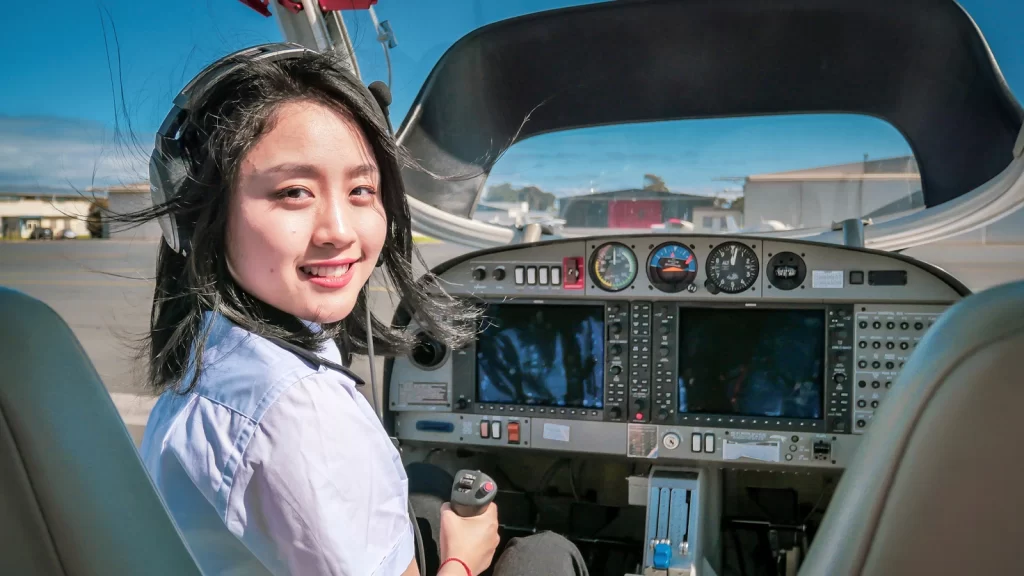

Commercial Pilot Licence (CPL) Training – What to Expect
To be able to fly a plane for a career, you first need to progress through Commercial Pilot Licence (CPL) training. In this blog we outline what to expect from the course.
Is this the right time to start training?
With a roadmap out of lockdown finally in place and borders likely to open in the upcoming months, most of us have started dreaming about taking to the skies again. Whether it’s to spend the sunny Christmas and New Year holidays on the stunning beaches of Cairns or on the gorgeous Phillip Island, we all have big plans for the summer break!
But with Australia getting ready to travel in large numbers again, the prospect of a pilot shortage again looms. Many pilots have retired or been stood down during the pandemic, and it’s predicted that a lot of them may not return to flying. If you’ve been thinking about a career as a pilot, this is good news, and now is the time to start training towards your dreams!
Commercial Pilot Licence (CPL) training prerequisites
The Civil Aviation Safety Authority (CASA) has strict rules and regulations for future pilots looking to gain a Commercial Pilot Licence. This is to ensure the safety of the pilot, the passengers flying with them, as well as those on the ground. Before you can successfully get your licence, you must meet the following criteria:
– Be at least 18 years of age at the time of CPL issue (you can start training at any age but must be at least 15 to fly solo).
– Complete in-flight training. For a CPL, this equates to at least 150 command hours, with 70 flown solo.
– Complete Recreational Pilot Licence (RPL) and Private Pilot Licence (PPL) training (you will progress through this syllabus as part of the CPL course).
– Pass the CPL theory exams
– Pass the CPL flight test with a CASA accredited testing officer.
Medical requirements
A healthy pilot is a safe pilot. When flying commercially, it is not just your wellbeing you are responsible for. You’re also responsible for every other passenger and crew member in your plane. As such, it is important for you to meet certain CASA mandated medical requirements before you can get your CPL.
Before you commence your Commercial Pilot Licence flight training, it is essential for you to get a Class 1 medical certificate. This test typically tests your vision, hearing and heart health, as well as any family history for heart problems. You will need to answer questions about your general health and any medication you may be taking. You may also need to provide urine and blood samples. The purpose of this test is to ensure you are physically and mentally capable of piloting an aircraft.
Once you successfully attain the Class 1 medical certificate, this certificate will be valid for one year. The certificate requires regular renewal, for which you will have to provide updated medical results. Testing frequency is based on your age. For example, an ECG test will be first required at the age of 25, then at 30, then every two years until you turn 40, after which you will need to get tested annually.
Commercial Pilot Licence (CPL) training process
Even if you have never previously piloted a plane or stepped inside the cockpit of a plane, you may still excel at becoming a commercial pilot. Learn to Fly’s CPL training program takes you through the basics of flying a plane, from learning about aerodynamics and the characteristics of the plane you are going to fly, through to learning new languages like radio speak and textual weather and learning new advanced maneuvering techniques.
Our Commercial Pilot Licence course will set you up for your career as a professional pilot. You will progress through the following training process:
Recreational Pilot Licence (RPL):
The first step to getting started on your commercial pilot career is successfully getting your Recreational Pilot Licence (RPL). This course will take you through the fundamentals of aerodynamics, basic manoeuvering, how to manage stalling and what to do in emergency situations. Once you have an RPL, you will be able to fly with up to 3 passengers within 25 nautical miles from your departure point.
Private Pilot Licence (PPL):
Second, you will progress through the requirements of getting a Private Pilot Licence (PPL). This course builds upon the skills you learnt in the previous course. It then takes them a few steps further by teaching you more navigation skills. You will also develop an understanding of Class C and Class E airspace procedures. This will enable you to fly further than 25 nautical miles. With a PPL, you can fly anywhere within Australia carrying up to 5 passengers.
Commercial Pilot Licence (CPL):
Finally, you will move on to your Commercial Pilot Licence training. In this course, you will learn more advanced aviation theory, conduct more navigation exercises and work on building your command hours. Getting a CPL means you are now a fully qualified commercial pilot and can use your skills to build a career.
With a Commercial Pilot Licence, you can choose out of several career options. From being a charter pilot, commercial airline pilot, flight instructor to an agricultural flying operator, the sky’s the limit for you!
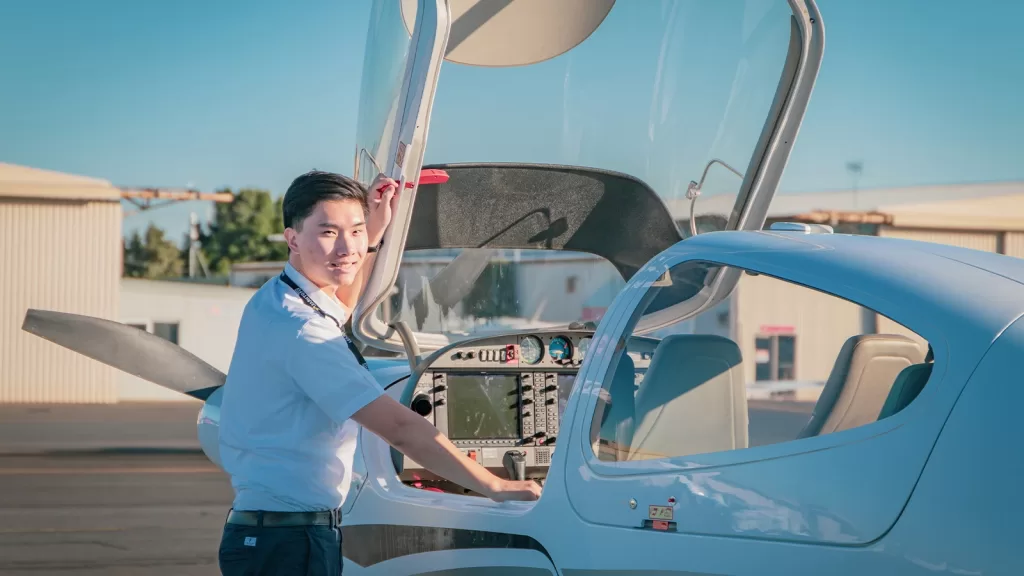
Not sure if a career in aviation is for you? Try our Trial Introductory Flight (TIF) to get a taste of flying. See the world as a pilot sees it!
Want to find out more about Commercial Pilot Licence training? Email [email protected] or visit https://drift.me/learntofly/meeting to book a meeting and school tour.
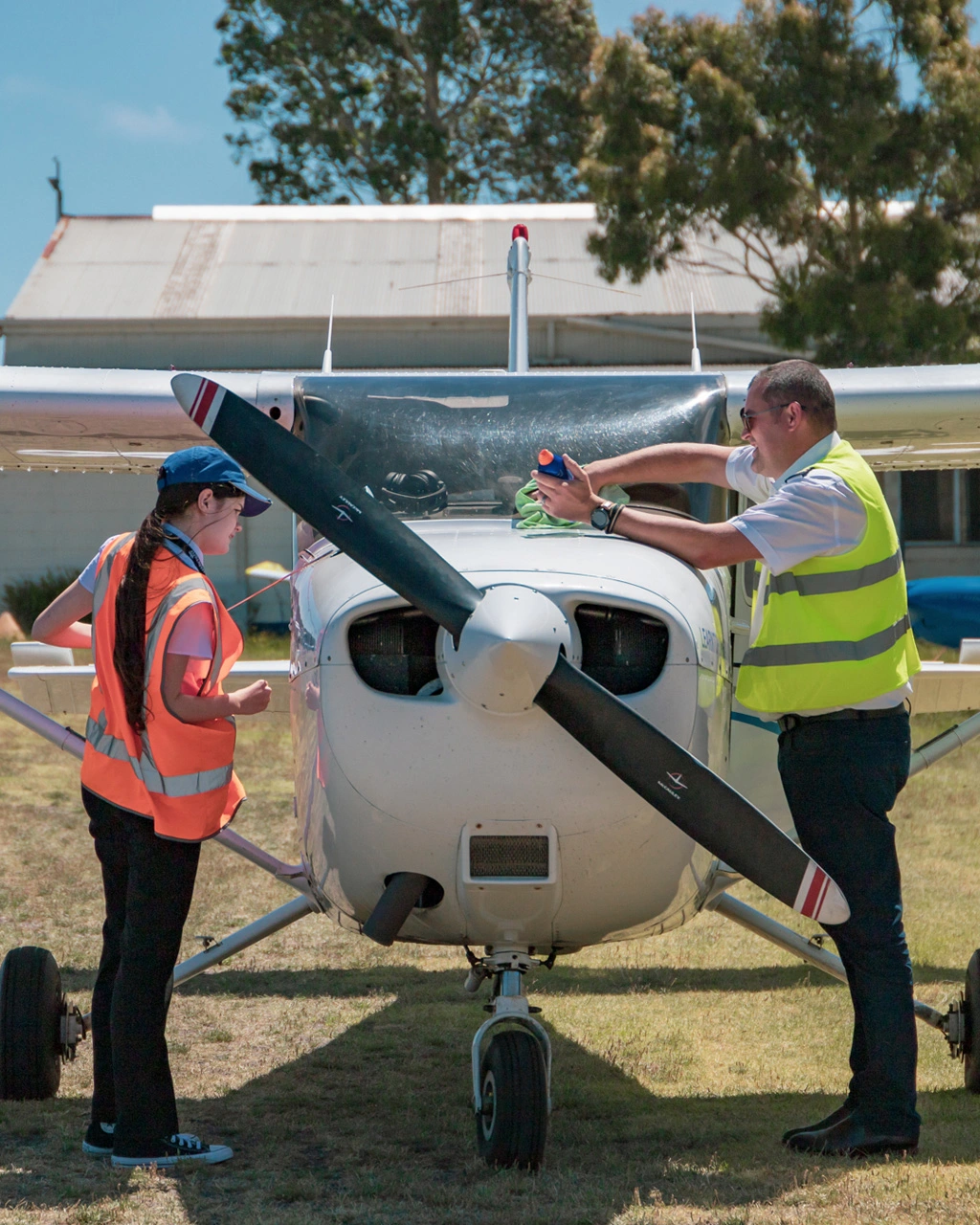
Flight Instructor Training Endorsements – All You Need To Know
When you first complete a Flight Instructor Rating course, you will also need to complete at least 1 Flight Instructor Training Endorsement. So what are Flight Instructor Training Endorsements? In this blog we’ll outline the Flight Instructor Training Endorsements that are available. We’ll also guide you on how each of these endorsements can add value to your role as a Flight Instructor, and your progression as a professional pilot.
What are Flight Instructor Training Endorsements?
Flight Instructor Training Endorsements are endorsements that allow you to instruct specific flight training syllabus. Essentially, a Flight Instructor Rating alone teaches you how to instruct pilots. The training endorsements then dictate exactly what you are able to instruct on. So when you complete a Flight Instructor Rating, CASA requires that you also complete at least 1 training endorsement.
Most new trainee Flight Instructors opt to complete a Grade 3 Training Endorsement first. Read on to find out why, and to look at what other endorsements are available from there.
Grade 3 Training Endorsement
There are 3 levels of Flight Instructor, starting at Grade 3 and progressing through to Grade 1 (the most senior). A Grade 3 Training Endorsement allows you to instruct student pilots for the basic RPL, PPL and CPL course syllabus. It allows you to teach both theory and practical training. You are only able to instruct under VFR conditions, and on aircraft that don’t have features that require additional training (such as multi engine).
To achieve Grade 2 and Grade 1 status, there are minimum instructing hour requirements. So, you need to start at Grade 3. It is possible to start with a specific training endorsement (like an Aerobatics & Spinning, Multi Engine or Design Feature Training Endorsement for example). However, that would ONLY allow you to teach the syllabus for that specific endorsement’s scope. And therefore, starting with the Grade 3 Training Endorsement gives you far greater scope to instruct initially.
From there, you can add further training endorsements that will allow you to teach extended course syllabus on more aircraft, for more flight activities, and in more conditions.
Design Feature Training Endorsement
Some aircraft have design features that require additional endorsements. This includes Tailwheel Undercarriage, Manual Pitch Propeller Control (MPPC) also known as Constant Speed Unit (CSU), and more. Just having the relevant Design Feature Endorsement doesn’t allow you to instruct on that feature, which is why you need a Design Feature Training Endorsement. Once you hold a Design Feature Training Endorsement, you can instruct for any of the Design Feature Endorsements you hold.
Multi Engine Training Endorsement
As the name suggests, the Multi Engine Training Endorsement allows you to instruct students in multi engine aircraft for the Multi Engine Class Rating course syllabus. Having this flight instructor training endorsement obviously allows you to instruct on more aircraft, which in turn increases your potential to earn and build hours. To commence this course you need at least 50hrs multi engine flying experience.
Aerobatics & Spinning Training Endorsement
The Aerobatics & Spinning Training Endorsement allows you to teach the syllabus for aerobatic and spinning flight activities. Aside from being a LOT of fun for most pilots, knowing how to handle an aircraft in these situations is a great skill to keep current.
Night VFR Training Endorsement
Obtaining a Night VFR Training Endorsement means that you can instruct the syllabus for the Night VFR Rating course. This obviously allows you to increase the number of hours available to fly and instruct in. Plus, flying at night is pretty spectacular, especially in a city like Melbourne!
Instrument Rating Training Endorsement
Just as obtaining an Instrument Rating opens up a whole new world of flying, an Instrument Rating Training Endorsement opens up a whole new world of instructing. If you are looking to build flying hours, being able to instruct Instrument Rating syllabus is essential. This is even more important if your main training base is in an area prone to inclement weather. On top of that, instrument flying and instructing experience is very highly regarded when you are applying for roles to progress your career – especially airline pilot roles.
Grade 2 Training Endorsement
Progressing your Flight Instructor grade affords you more training privileges and allows you to earn a higher wage. Before you can move on from being a Grade 3 Flight Instructor, you need to accumulate at least 200hrs of Ab Initio instructing. You can then complete the Grade 2 Training Endorsement course.
As a Grade 2 Flight Instructor, you can approve first solo flights and conduct flight reviews for Ratings. You can also assess Knowledge Deficiency Reports (KDRs) for licence and rating grants, and grant endorsements on RPLs.
Grade 1 Training Endorsement
Grade 1 Flight Instructors are the highest level of instructors. As a Grade 1 Flight Instructor, you can expand your capabilities even further by supervising Grade 2 and Grade 3 Flight Instructors when they conduct flight training. Your wage will also increase again. To complete a Grade 1 Training Endorsement course, you must first have completed at least 500hrs of Ab Initio instructing.
Do you want to take your instructing career even further? Achieving Grade 1 Flight Instructor status can also allow you to consider becoming a Flight Examiner. To apply to become a Flight Examiner, you:
– Must have been a Grade 1 Flight Instructor for at least 12 months
– Need to have at least 1,500hrs as Pilot in Command overall; and
– Must have completed at least 100hrs of RPL/PPL instructing in the previous 12 months
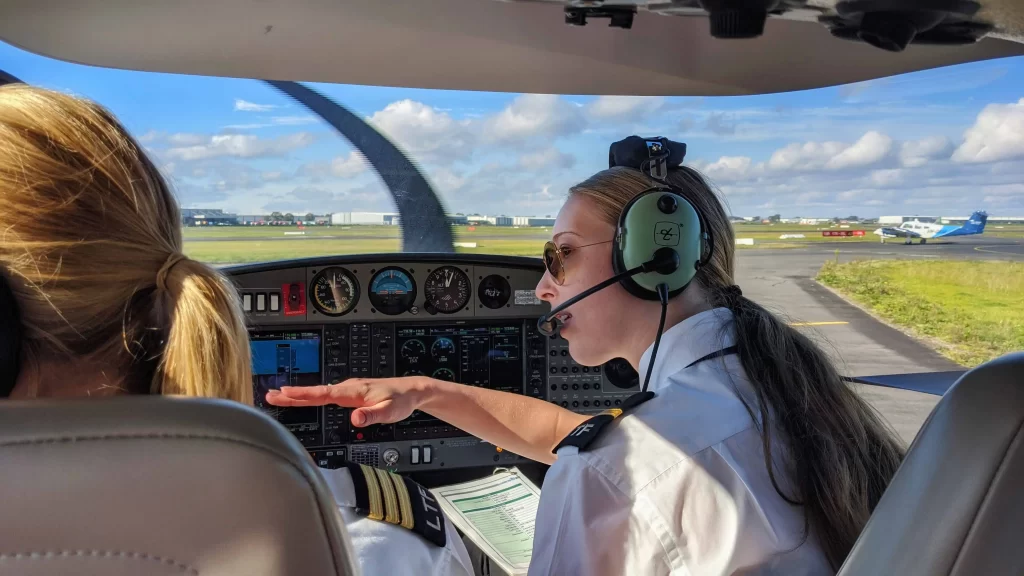
Becoming a Flight Instructor is a great way to build your flying skill set. It’s also a great move for your pilot career, as you can earn money while building your experience and your flying hours in preparation for your next career move. As far as job availability goes, Flight Instructor roles are in demand and will continue to be well into the future.
Want to know more about Learn To Fly’s Flight Instructor Rating or Flight Instructor Training Endorsement courses? Email [email protected] or visit https://drift.me/learntofly/meeting to book a meeting and school tour.
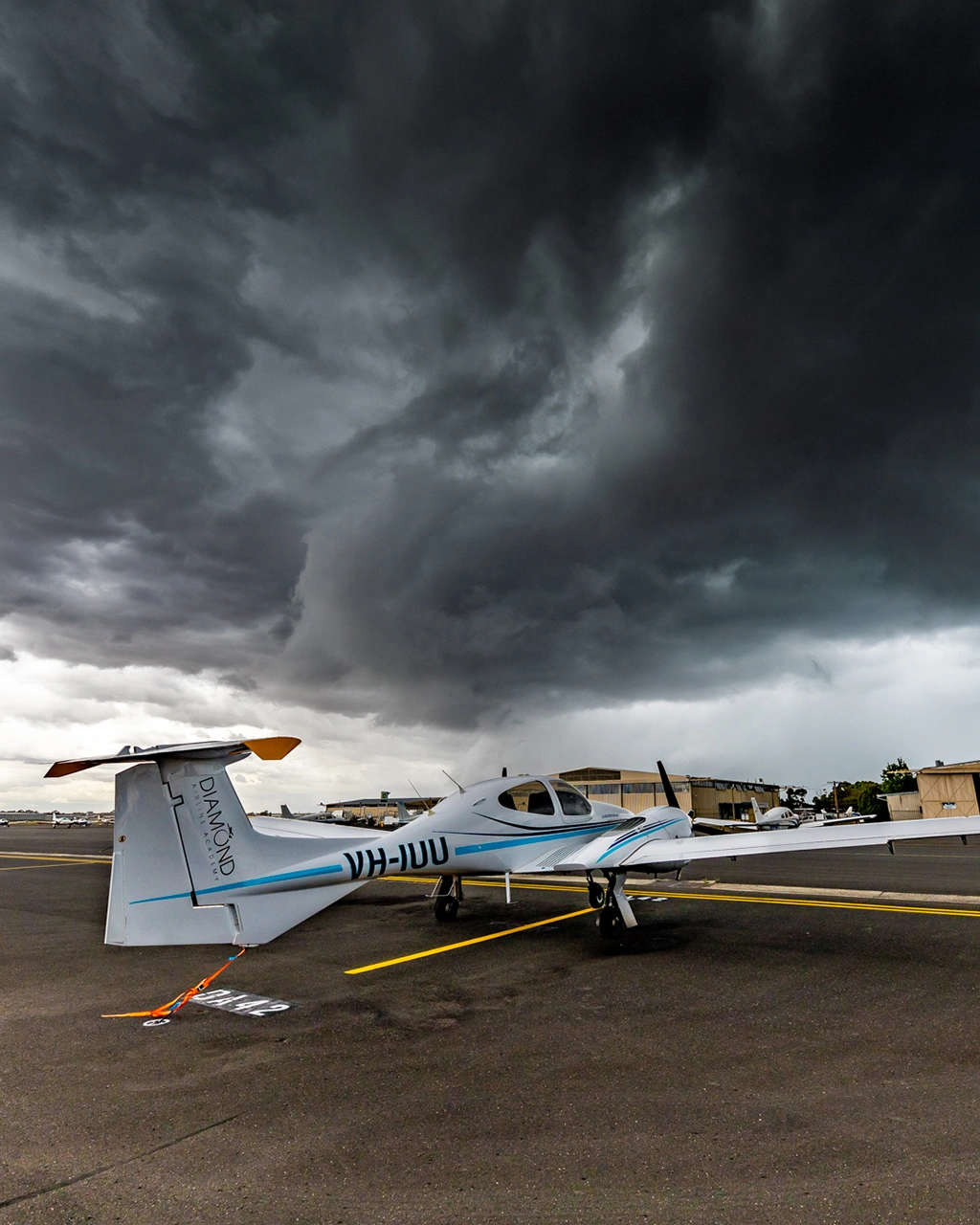
Private Instrument Flight Rating (Private IFR) – Should You Get It?
Flying under Visual Flight Rules (VFR) conditions alone can be quite restrictive for private pilots. Planning around light and weather heavily reduces the amount of time you can fly, especially if you are flying in a place with changeable weather like Melbourne. Having said this, there may only be a handful of situations that require instrument flying privileges, and so completing a full Instrument Rating course might not really be required. The good news is that the Private Instrument Flight Rating (also known as Private IFR or PIFR) course allows you to choose exactly which instrument flying endorsements you need.
This means that obtaining a Private IFR is far faster and less expensive than undergoing full Instrument Rating training. So, is this the right option for you? Read on to find out!
What is the difference between Visual Flight Rules (VFR) and Instrument Flight Rules (IFR)?
VFR and IFR refer to the meteorological conditions that a pilot operates under. The specific rules for each are determined by CASA, and are based on Visual Meteorological Conditions (VMC) minima.
Basically, VFR means that weather (and light) conditions are clear enough for you to fly and navigate entirely visually. So, you must be able to clearly see visual references on the ground. You also need to see clearly enough to avoid other obstacles in the air (including clouds).
Any conditions outside of what CASA determines to be VFR are considered to be IFR. This is because they require you to use your instruments to fly, rather than being able to fly by visual reference alone.
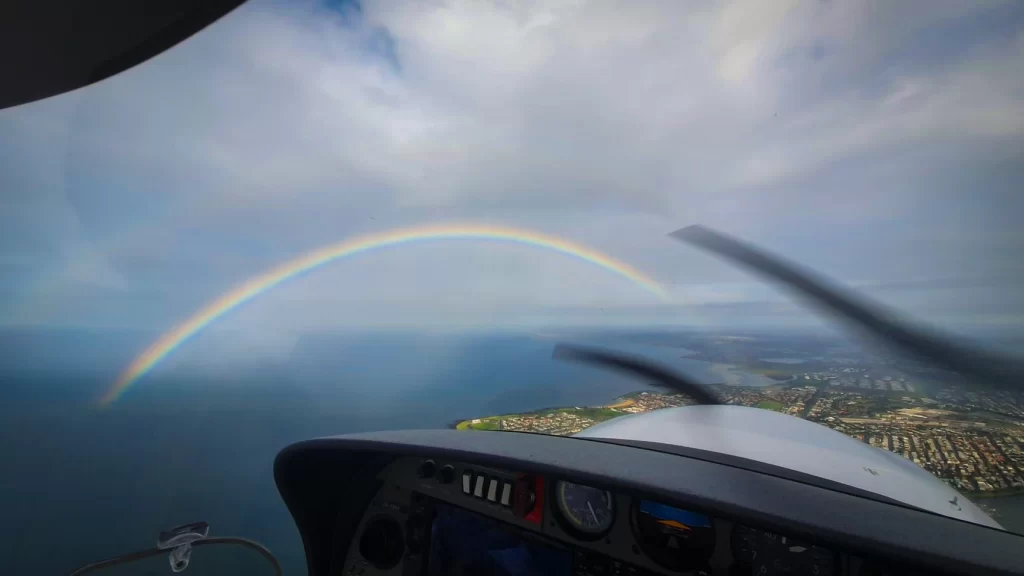
What is a Private Instrument Flight Rating (Private IFR)?
The Private IFR course can be completed in single or multi-engine aircraft. To commence the course you need to hold a Private Pilot Licence (PPL), Commercial Pilot Licence (CPL) or Air Transport Pilot Licence (ATPL). You’ll also need to have passed your CASA Instrument Rating Examination (IREX) before progressing with the flight training syllabus.
A Private Instrument Flying Rating authorises the holder to act as a pilot in command of flights under Instrument Flight Rules (IFR) in a single-pilot aircraft with MTOW of 5700kg or less. However, in its most basic form, a Private IFR still restricts the holder to flying in VFR conditions only when flying under Lowest Safe Altitude (LSALT). So to solve this issue, there are a range of endorsements that you can add. You can base these on the type of flying you want to do, and also the aerodromes you will likely be flying to/from.
What Endorsements can you add to your Private IFR?
Endorsements allow you to conduct specific flight activities under IFR conditions including en-route navigation procedures, approach and arrival procedures, departure procedures and night flying.
En-route Navigation Endorsements
En-route navigation endorsements allow you to fly under IFR conditions using ground-based navigation aids. They include:
– NDB En-route (for eligible aircraft)
– VOR / LLZ En-route
– GNSS En-route
Approach Endorsements
Instrument approaches are set procedures that allow you to approach an aerodrome under IFR conditions. They apply from the start of the approach through to either when you land or reach a point where are able to continue the landing visually. They include:
– STAR
– NDB Approach (for eligible aircraft)
– VOR / LLZ Approach
– DME or GNSS Arrival Procedure
– RNP ACHP 2D / RNAV Approach
– ILS Approach
Departure Endorsements
An endorsement is required to be able to take off and depart an aerodrome under IFR conditions. There are some aerodromes that have specific departure procedures though, and these are known as Standard Instrument Departure (SID) procedures. A Non-Standard Instrument Departure (NSID) Endorsement can cover IFR departures for all aerodromes that don’t have specific procedures. You will need a separate SID Endorsement for each different aerodrome that has specific procedures.
Night IFR Endorsement
A basic PIFR will only allow you to fly under IFR conditions in the situations granted by your en-route, approach and departure endorsements during daylight. So, to be able to fly at night, you will need to add a Night IFR Endorsement.
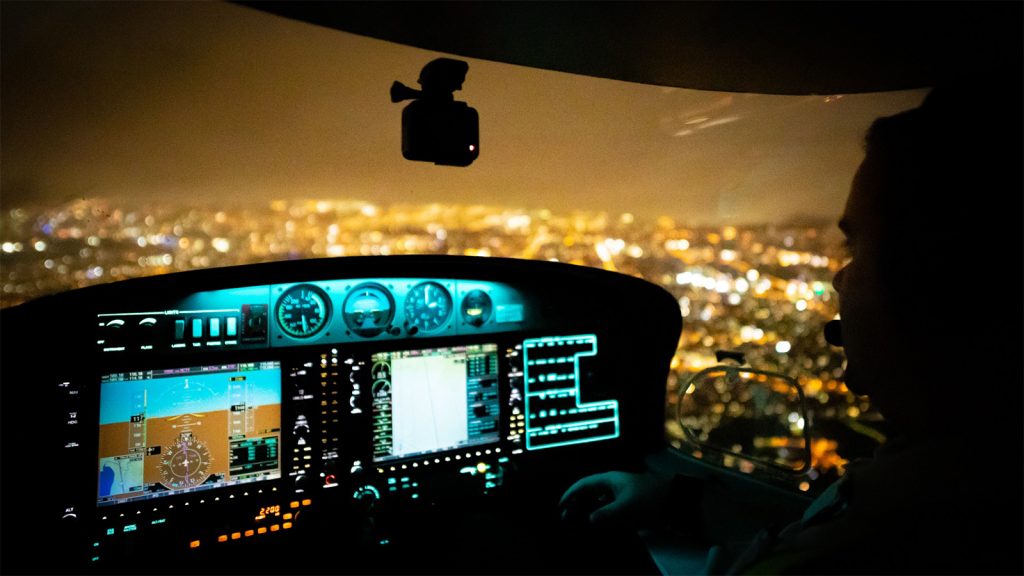
What does the LTF Private IFR course include?
A full Instrument Rating course will train you in the vast majority of the endorsement options mentioned above. But you might not need ALL of those things. Subsequently, this is where the PIFR can be a great option.
We utilise practical aircraft training as well as training in our state-of-the-art Alsim AL42 or TRC472 flight simulators. Integrating simulation allows you perfect your techniques on the ground and make the most of your time in the real aircraft.
LTF’s Standard PIFR course package includes:
– 10Hrs Dual Flight Training
– 9Hrs Dual Simulation Training
– Ground School and Briefings
– IREX Theory Course Online Subscription
– VOR/LLZ, GNSS, NDB En-route Navigation Endorsements*
– RNP 2D Approach Endorsement (RNAV)
– NSID (Non-standard Instrument Departure) Endorsement
– 2 Approach Endorsements (STAR, NDB, VOR/LLZ, DME/GNSS, ILS)*
– 1.5Hrs PIFR Flight Test Solo Hire
– PIFR Flight Test Fee
The following aircraft are available from our fleet for this course:
– Cessna 172
– Diamond DA40
– Piper Seminole
– Diamond DA42
*NDB not available for Diamond DA40/DA42
We offer a Standard + Night PIFR package as well that includes all of the above plus a Night IFR Endorsement. We can also offer face to face IREX theory classes for those would would prefer to learn in person. In addition to this, we are able to offer packages for additional PIFR individual endorsements.
Do you want to find out more about our Private IFR course? Email [email protected] or visit https://drift.me/learntofly/meeting to book a meeting and school tour.
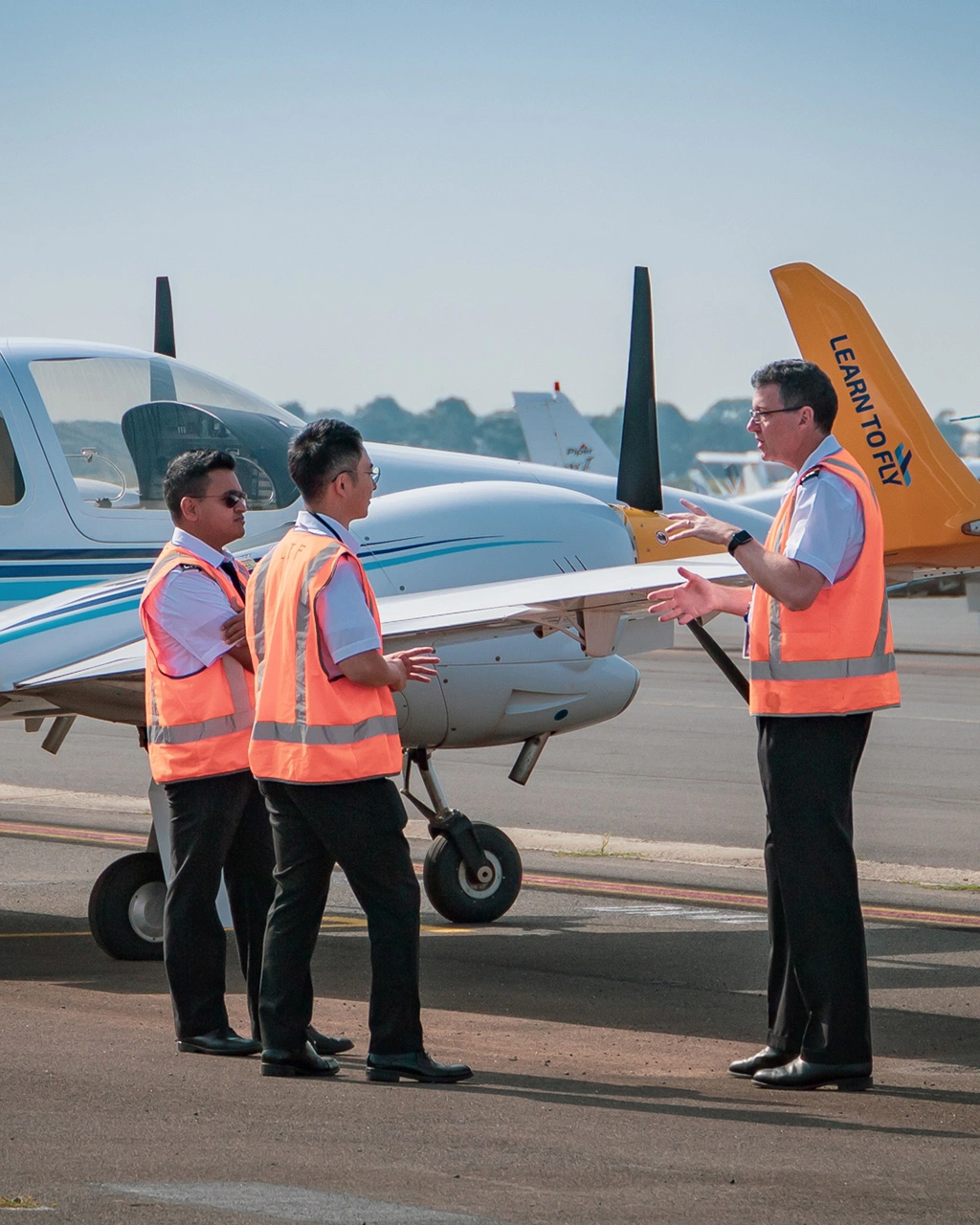
Learn To Fly Student Life: Starting Flight Training in Melbourne
So you’ve made the decision to learn how to fly! It’s a decision you won’t ever regret. Flying is a wonderful experience, and knowing how to pilot an aircraft is an amazing skill. But the learning journey itself is something that you should enjoy, and choosing the right flying school makes all the difference. Our students love flying with us, and so we thought we would give you some insight into Learn To Fly student life.
This blog looks at your first day, when you arrive at our Learn To Fly Melbourne training base.
Arriving at Learn To Fly Melbourne
Do you remember your first day at school, or at a new job? New place, new people, feeling a little unsure? As you get older, ‘first days’ get a little easier, but they can still be daunting.
On your first day when you arrive, you’ll be greeted by our HR team who will welcome you and take you through our enrolment procedures. They’ll show you around our state-of-the-art facilities and give you a bit of information about Moorabbin Airport and the surrounding area.
We’re lucky to have a lot of great retail, food and transport options available nearby. This makes things a lot easier, especially if you are new to Melbourne. We have a lot of international students, and many of them have only just recently arrived in Australia. Having some local knowledge really helps, and this is your opportunity to ask about anything you need to know.
You’ll be spending a lot of time at LTF’s training facility while you become a pilot, so we want you to feel like this is home. Learn To Fly student life starts the moment you step through the door!
Meeting Your Flight Instructor
Having the right flight instructor is so important. The right instructor will bring out the best in you, and make your flight training journey enjoyable right from the start. Flight instructors are as much a part of Learn To Fly student life as the students themselves.
Our LTF instructor team has a huge amount of flying experience, from diverse backgrounds around the world. We have Grade 1 instructors through to Grade 3, as well as instructors with specific skill and knowledge areas such as IFR training, multi-engine training – even down to aerobatics and formation flying.
Just as important as flying knowledge and experience is an instructor’s ability to connect with you. Everybody has different learning styles, so you need an instructor that you can connect with. At LTF you will be allocated a primary instructor and a secondary instructor to look after you and your training progress. But if it turns out that there’s another instructor that may be better suited, our large team means that you’ll have the opportunity to change.
On your first day you will meet your primary instructor, and they’ll have a chat to you about your flight training journey. They’ll show you through the features of our online student portal, and how our training model works – including our huge range of online training options.
Moorabbin Airport and the LTF Flight Training Fleet
There’s a lot to learn about the airport you will be training at, and Moorabbin Airport is quite complex. With a complex taxiway and runway layout, high aircraft movements, and ATC tower, there’s definitely more to learn here than at many other aerodromes.
Whilst this may seem daunting at first, it’s actually going to be a huge benefit to your learning. And don’t worry, your flight instructor has got your back! On your first day they’ll spend time going over the layout and procedures with you. Of course, you’ll learn more in your first lesson.
The LTF flight training fleet has a great range of modern and traditional aircraft. This means you can choose between learning on analogue instruments or in a glass cockpit aircraft with advanced Garmin avionics and screens. If you are beginning your Recreational Pilot Licence (RPL) training, you can choose between the sporty Sling 2, the modern Diamond DA40, or the classic Cessna 172. We also have the A22LS Foxbat for RA-Aus RPC training.
It’s likely that you will have already chosen which aircraft you are going to fly before you start, but it’s good to know that you can always change throughout your training.
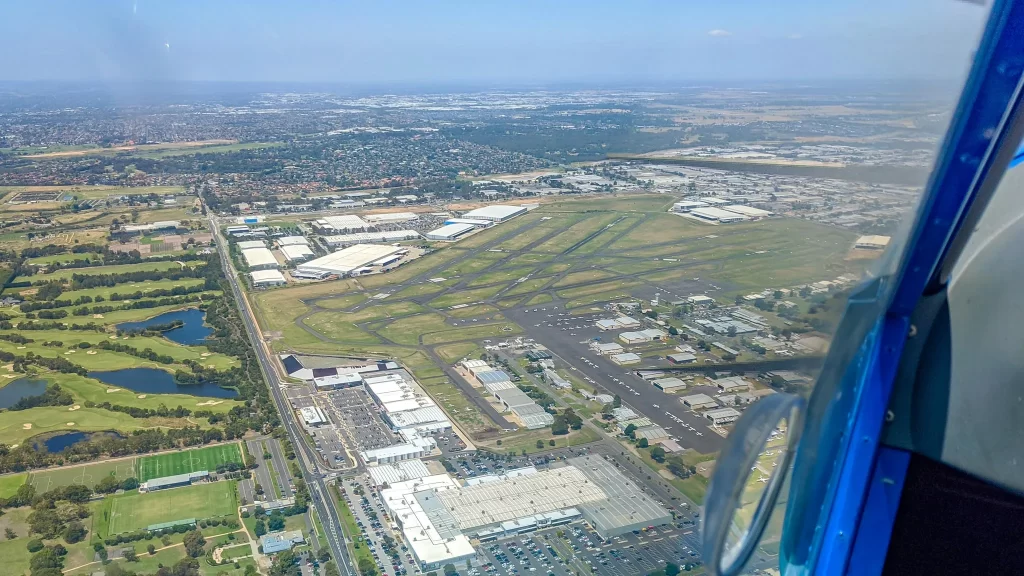
Your First Flying Lesson
Do you want to know what the BEST part of Learn To Fly student life is…? That’s really easy. It’s FLYING!
When you start flight training, your first lesson will be Effects of Controls and Straight and Level Flying. Your instructor will brief you in one of our briefing rooms, before showing you how to pre-flight check your aircraft. And then it’s time to head towards the runway, and begin your love affair with the sky!
Student Culture at Learn To Fly
One of the things that we are really serious about – other than safety of course – is ensuring that we create an inclusive learning environment, and a just culture. What that means is that we engage in open and honest conversations at all levels, from our students all the way up to our CEO and Chief Flying Instructors.
Our students and our flight training team support each other, and we have seen many fantastic friendships form over the years. Learn To Fly student life is a lot of fun, and we can’t wait for you to be a part of it!
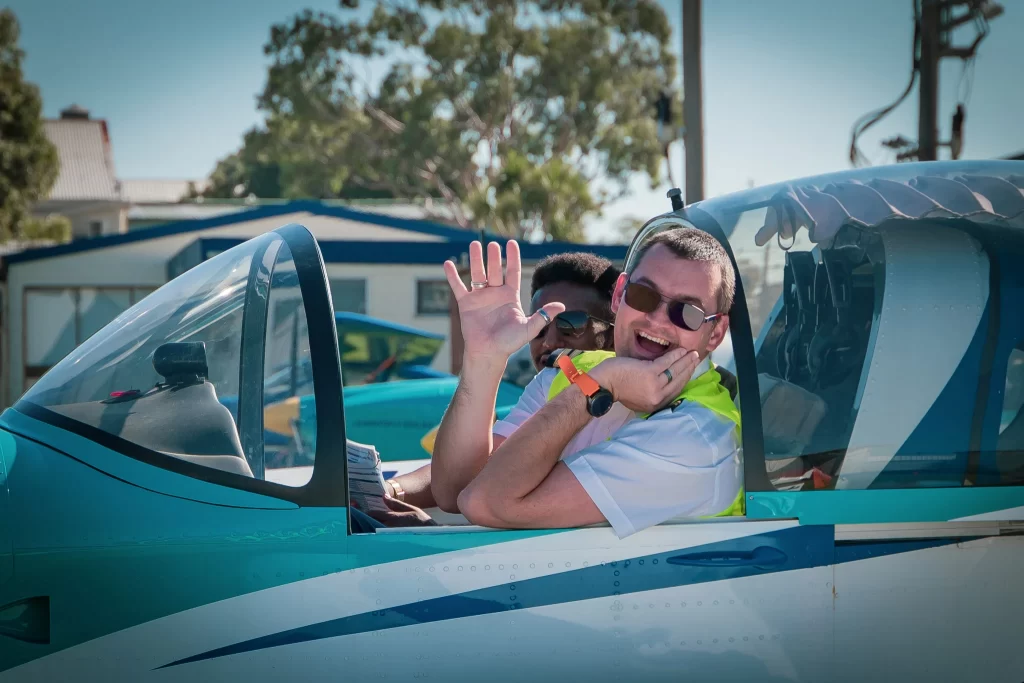
If you are interested in finding out more about our learning to fly with us, email [email protected] or visit https://drift.me/learntofly/meeting to book a meeting and school tour.
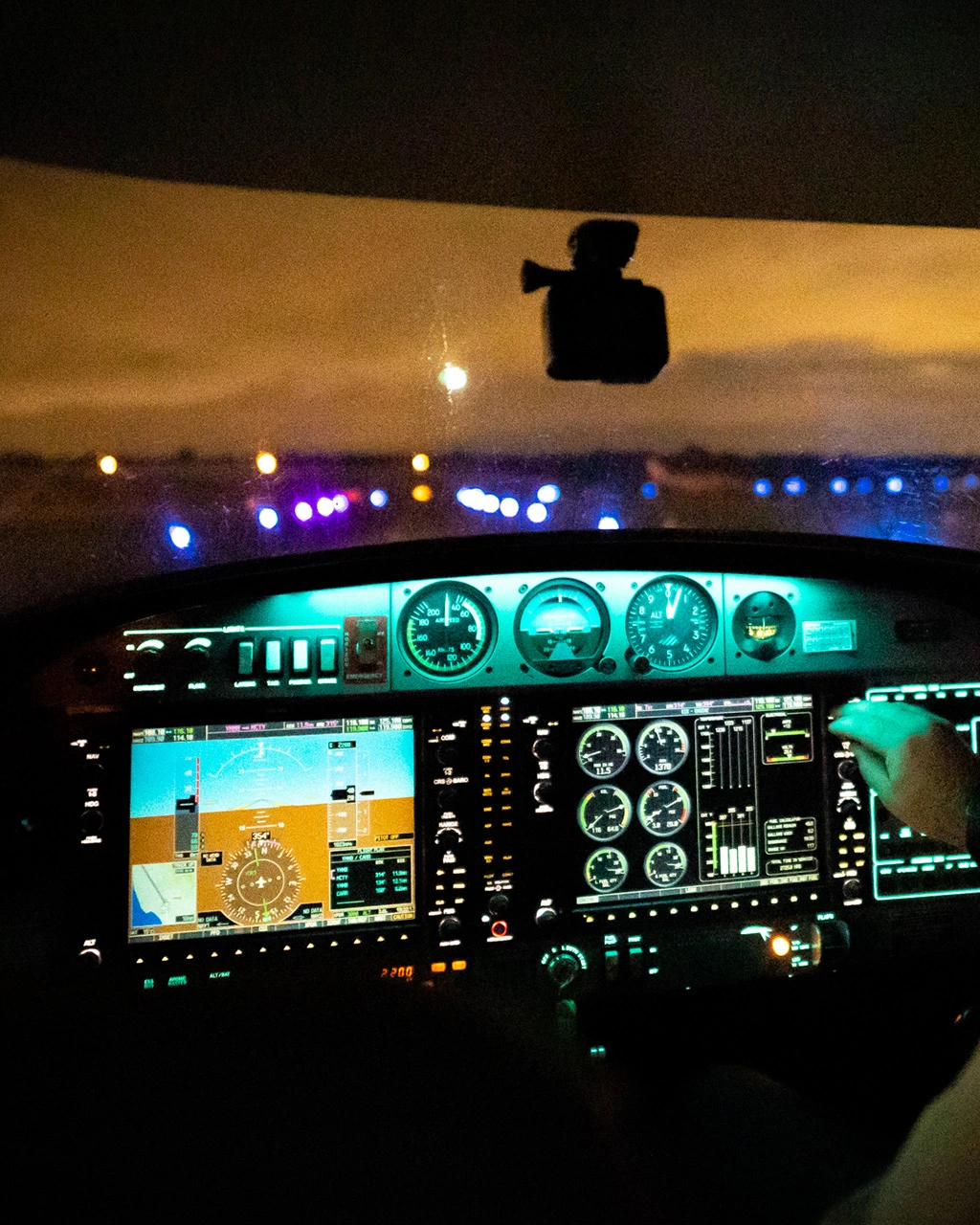
Getting a Night VFR Rating: What You Need to Know
Night flying is a great skill for a pilot to have in their arsenal. A Night VFR or Night Visual Flight Rules Rating allows you to fly your aircraft at night. You do however, need other VFR weather conditions to be present.
It gives you the freedom of not being limited by time when flying cross-country. You can also take passengers flying to see the beautiful city lights of Melbourne from the sky. It’s a sight not to be missed!
Not only is flying at night exciting and thrilling, but having this skill also generally makes you a better pilot. Here’s a quick look at getting a Night VFR Rating on your pilot licence and what you should expect:
Eligibility Criteria:
In order to successfully get a Night VFR rating, the pilot must have:
– A Private Pilot Licence at the minimum, but can also have a Commercial Pilot Licence or Air Transport Pilot Licence,
– At least 10 hours of night flight time training under a supervisor, either in an aircraft or in an approved flight simulator,
– At least 5 hours of dual cross-country night flight time training included in the above 10 hours,
– Successfully cleared the Night VFR flight test.
Why Get a Night VFR Rating
Melbourne winter days are short, with the winter solstice this year clocking just 9 hours and 53 minutes of daylight. Having a Night VFR Rating gives you the flexibility to make longer trips. This is especially handy during the short daylight hours in winter. You can start your flight before sunrise and end it late without having to cut your trip short before sunset. Furthermore, you could even end the day by taking in magnificent views of the city from the air.
Air traffic also tends to be lower in the nighttime, which means you will have a smoother, easier flight. And if you are flying on a night with a full moon, it will not be much different than flying in the day owing to all the light coming from the moon!
Finally, for pilots who aim to fly commercially, having a Night VFR rating and a significant amount of night command time is a necessity, as commercial pilots often need to fly at night. Many airlines looking for professional pilots require the pilot to have at least 100 hrs of flight time at night in order to even be considered for the position!
What to expect from Learn to Fly’s Night VFR Rating Course
Enrolment and Orientation
When signing up for our Night VFR Rating Course, you will get a Training Starter Kit. This will contain all relevant course materials. It will also contain detailed information on the processes of your course and access to shared online resources.
On the day of orientation, you will be introduced to your instructor. They will take you around the airport, airspace and our facilities. You will also get to learn about the processes Learn to Fly follows.
Night VFR Ground School
Once you have successfully settled in, the first part of the course will include some ground training and instructions. These are typically conducted in the form of theory classes where you will learn of the fundamental concepts of a Night VFR Rating. You will also learn what to expect during the actual night circuit training.
Night VFR Flight Training
In this step of the course, you will learn different landing techniques, approaches and what to do in emergency situations. You will also familiarise yourself with common navigational aids. These include NDB (non-directional beacon) and VOR (Very high-frequency omnidirectional range) as well as the use of pilot activated light (PAL) and other runway lighting equipment.
Night Solo Training
Once you have successfully mastered the last step, your instructor will determine if you are ready for your first solo night flight. The first solo flights will involve circuit flying. Once these have been mastered, you will then move on to navigation training. This form of training makes you a more independent pilot, as it involves planning and executing a number of navigational flights at night, helping you prepare for the next and final step.
Night VFR Flight Test
Approximately 3 hours in duration, the Night VFR Flight Test is conducted in a CASA approved aircraft under the supervision of a CASA approved instructor. This test will include take-off and landing as well as navigation skill assessment and the correct use of navigational aids. Finally, the test will also assess some nighttime emergency procedures and how prepared you are to handle them. Once you successfully pass this test, you then get your Night VFR Rating. Congratulations!
Why Choose Learn to Fly
At Learn to Fly, all of our flight training courses, including the Night VFR Rating course, involve simulation training. This allows students to become familiar with the controls and behaviour patterns, procedures and systems of the aircraft they choose whilst still on the ground. We have a range of simulators available. This includes full cockpit synthetic trainers like the Alsim AL42, replicating the cockpit of our Diamond DA42 twin-engine aircraft.
Learn To Fly offers an innovative training model, so you can continue learning online even while you are at home. We have state-of-the-art facilities at our Moorabbin Airport base in Melbourne, experienced instructors, and a range of aircraft to choose from.
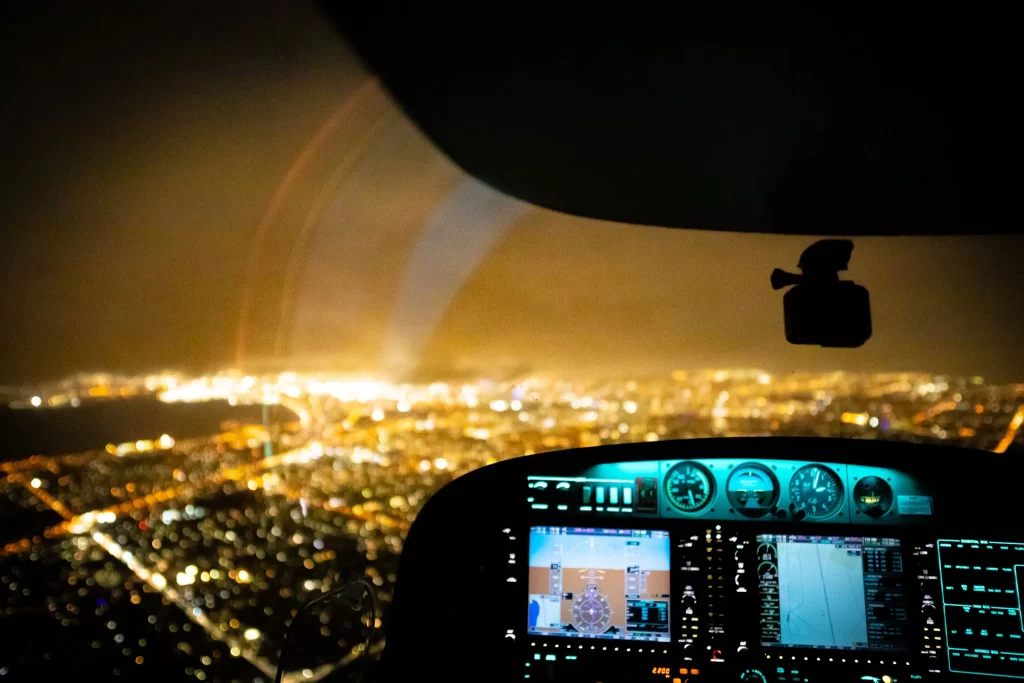
To find out about our Night VFR Rating course, email [email protected]. You can also visit https://drift.me/learntofly/meeting to book a meeting and school tour. For more great flying tips and the latest flying videos, click below and subscribe to our YouTube channel!

Why Should You Do Your Flight Training With Learn To Fly Melbourne?
Welcome to Learn To Fly Flight Training. Our goal is to make your pilot journey as simple as possible, so you focus on the enjoyment of flying. We train professional pilots, and pilots who just want to fly recreationally. We have a huge range of courses available, from beginner programs all the way through to obtaining your Commercial Pilot Licence. In addition to this, we have advanced ratings and endorsements, and even airline interview preparation.
But there are plenty of flight schools out there. So, why should you choose Learn To Fly for your flight training?
Innovative Training with CASA Part 142 Accreditation
We are constantly innovating our Learn To Fly flight training model to provide students with flexibility, and more opportunities to learn. Embracing modern technology, we utilise modern flight simulation, and the theory components of many of our courses can now be studied online. Our Moorabbin Airport training base facilities are state-of-the-art, enhancing your learning experience.
In addition to this, our modern online portal allows students to track their course progress and access essential course materials and content from wherever they are, including 360 degree virtual cockpit environments.
As a CASA Part 142 accredited flying school, we are able to offer integrated training syllabus. This means that you can study your theory and practical flight training concurrently. Integrated training saves you time and allows you to reach your flying goals faster.
Our training model is goal focused, whether you want to fly professionally or for fun. If you are hoping to work as a pilot, our aviation training and career specialists can customise your training to suit your career goals.
Emphasis on Safety
At Learn To Fly Melbourne, safety is and always will be our number one priority. A cornerstone of our operation is to ensure that we maintain a positive and transparent safety culture.
A part of the safety culture at LTF is the acknowledgement that flight training does involve risk. It is therefore vital that students and instructors alike are well educated about these risks, and the processes involved in risk minimisation. Our support team includes dedicated Safety Managers that oversee all aspects of our operation.
This focus on safety has been present since the school’s founding, and its importance only grows as we continue to expand.
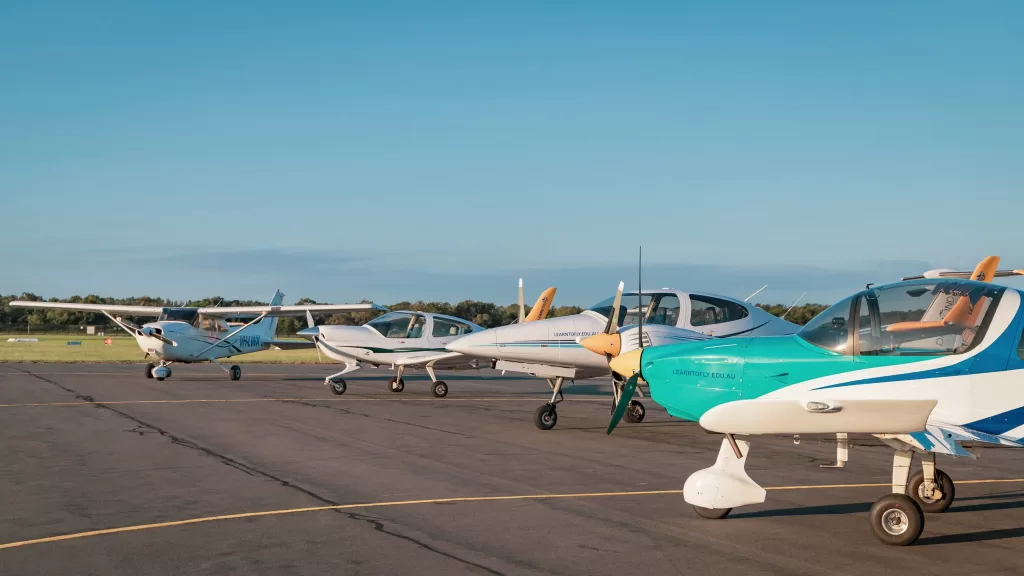
Modern Aircraft Fleet and Flight Simulators
Learn To Fly’s aircraft fleet provides students with a range of options for most of our flight training courses. We are the only flight school in the state of Victoria offering training in modern glass cockpit Diamond aircraft, and our fleet includes single engine Diamond DA40s as well as twin-engine Diamond DA42s.
The sporty Sling 2 is a fantastic beginner aircraft, and we operate the largest fleet of these in Australia. We also offer more traditional aircraft with analogue avionics like the classic Cessna 172 and Piper Seminole. In addition to this, we have an A22LS Foxbat for RA-Aus programs, and a Super Decathlon for aerobatics, spinning and tailwheel training.
All of our aircraft are stringently maintained in line with our safety policies. We have our very own maintenance hangar located next to our main training facility.
We have a range of simulator options, and integrate flight simulation into our innovative training model. Alongside our state-of-the-art Alsim AL42 (Diamond DA42) and TRC 472 (Cessna 172) full cockpit synthetic trainers, we have a full motion Xplane simulator with aircraft controls and Garmin avionics.
Professional Experienced Instructors
The best instructors bring out the best in you. Our Learn To Fly flight training team is highly experienced, with a diverse range of aviation backgrounds from multiple countries. We have Grade 1, 2 and 3 instructors, as well as instructors certified to teach a huge range of additional ratings, endorsements and advanced training endorsements. In addition to this our team includes in-house Flight Examiners. This means that you can complete many of your flight tests on-site.
Experience has shown us that student pilots find the process of completing their training and entering the aviation industry difficult. Our support staff includes aviation career specialists who can guide you on your pilot pathway beyond graduating from your training, and even assist with airline applications.
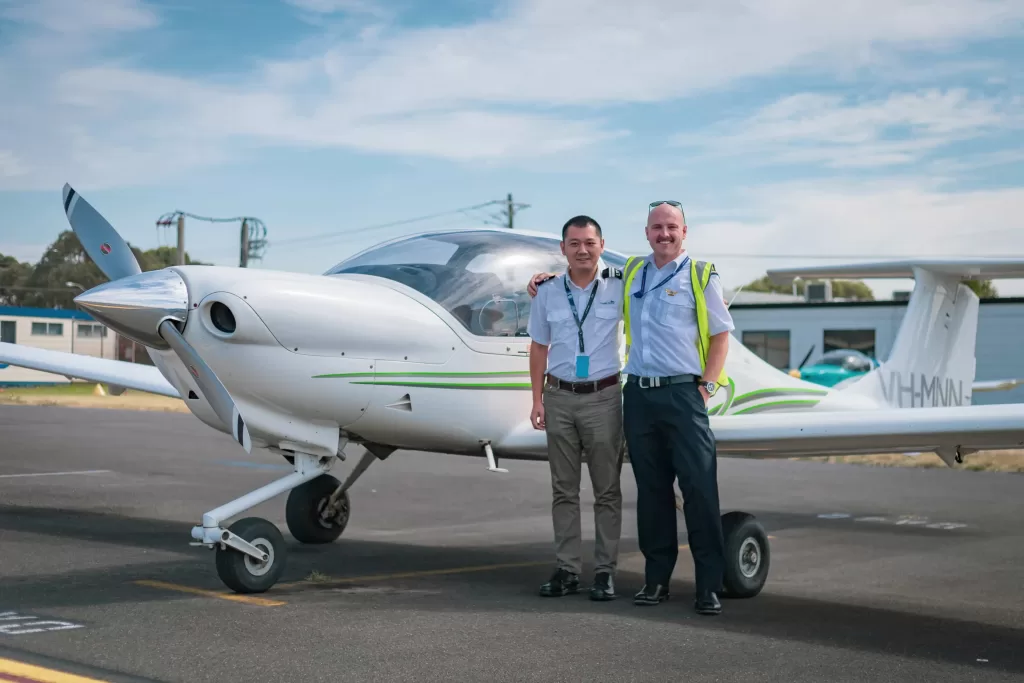
Airline Interview Specialists
Want to know the secret weapon for success in airline interviews? It’s us. We have a range of programs specifically developed to help you not only prepare for airline interviews, but to then pass them with flying colours.
Airline Check and Training Captain Darren McPherson from ACS Aviation Consulting Services is our aviation career specialist. His airline interview preparation programs are highly successful, helping hundreds of pilots to be accepted into wide range of airlines around the world. Our success stories have joined their new airlines at Cadet level as well as First and Second Officer direct entry roles.
International Flying School
Learn To Fly is an international flight school that offers flight training in Melbourne, Singapore, Hong Kong and Shanghai. Our innovative training model means that we are able to offer distance learning options on a broad range of courses. This makes our reach truly global.
Our home training base is located Melbourne’s Moorabbin Airport, one of Australia’s busiest airports with >250,000 aircraft movements per year. This makes it an excellent place to learn. Our student pilots are able to master a greater scope of experience than at smaller aerodromes.
In addition, we have partnered with airlines based in a number of countries. This offers global career options to our students and graduates.
To find out more about Learn To Fly Flight Training, email [email protected]. You can also visit https://drift.me/learntofly/meeting to book a meeting and school tour. Click below to subscribe to our YouTube channel for regularly updated flying lessons and flight training content.
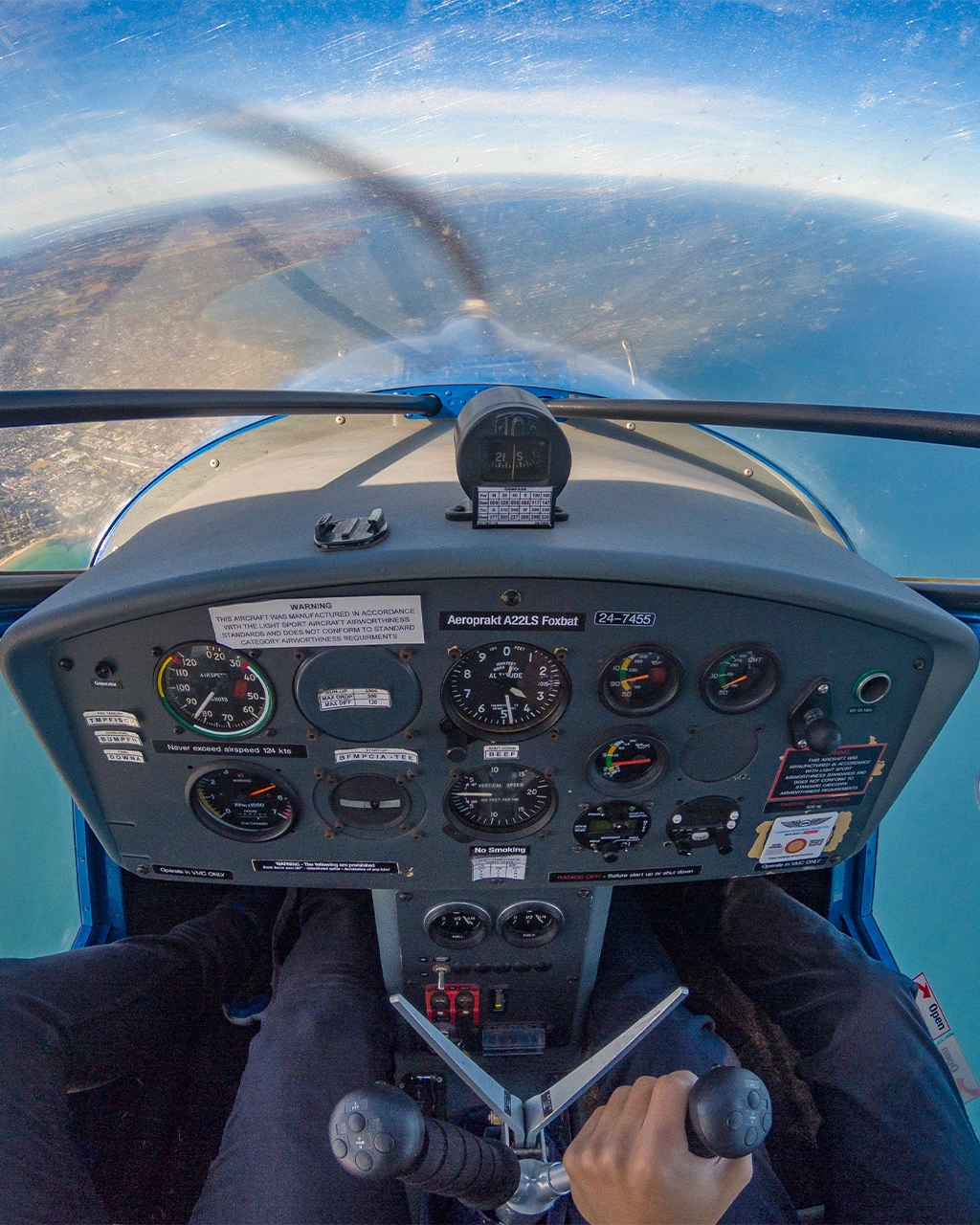
What to Expect from a Trial Introductory Flight (TIF)
Learning how to fly can be as scary as it is exhilarating. If you’ve been on the fence about whether flying is for you, why not book yourself a Trial Introductory Flight (TIF) to get a taste of what flying is like before you move on to getting your Recreational Pilot’s Licence (RPL), Private Pilot’s Licence (PPL) or Commercial Pilot’s Licence (CPL).
What is a Trial Introductory Flight (TIF)?
A TIF is exactly what it sounds like. A low-stakes, fully supervised opportunity to take to the skies in a trial flight with a licenced instructor to see if flying is really something you want to do.
The very first flight you take sitting in the cockpit will undoubtedly be something to remember all your life. But before investing in a long, expensive flight training course, it is important to be absolutely sure flying is something you truly want to do, whether recreationally or commercially. This is where a Trial Introductory Flight comes in handy. Most future pilots can tell if they want to continue learning how to fly after this first TIF based on the knowledge they get during the experience.
What to expect from your TIF
Pre-flight briefing and inspection:
Your Trial Introductory Flight will start with a brief but thorough introduction into the workings of an airplane. You’ll learn about aerodynamics and what to expect during your flight. After this, your instructor will conduct a thorough physical pre-flight inspection of the plane with you. You are welcome—and invited—to ask the instructor any questions that may come to mind and to participate in the pre-flight inspection. The more you know about the aircraft, the better of a pilot you will be!
Duration of flight:
The typical TIF lasts around 30 to 60 minutes.
Hands-on training:
During the flight, the highly trained instructors will demonstrate flying methods, manoeuvres and skills. You’ll then be able to attempt them yourself under full supervision. This is a great, low-stakes way of getting a feel of being in the cockpit and flying a plane yourself. It can also be an excellent method to treat someone who has always expressed a desire to fly but doesn’t want to commit to getting a flying licence.
Final assessment:
Want to know how you went and whether you have a future in the aviation industry? No worries! After the flight is over, your instructor will conduct a full debriefing session to talk about how you did, your ability to follow instructions, understand directions and complete tasks. While most of these skills can be further perfected in the more thorough, detailed licence programs, it can be useful to get an idea what your chances of success are if you ever decide to pursue it professionally.
Who should try a Trial Introductory Flight?
Anybody! Taking a TIF is a fantastic opportunity to see the land from the lens of a pilot in a cockpit. You’ll experience the thrill of flying a plane without any long-term commitments. Fairly inexpensive, it is also a terrific present to give to the airplane enthusiast in your life, or to get them started on a career in aviation. Flight time during your trial introductory flight can also count towards getting a pilot licence should you decide to pursue it any further. The possibilities are limitless!

Take to the skies today by booking your very first Trial Introductory Flight (TIF) and experience a world like no other! Want to chat to a flight training expert? Email [email protected]. You can also visit https://drift.me/learntofly/meeting to book a meeting and school tour. For more great flying tips and the latest flying videos, click below and subscribe to our YouTube channel!
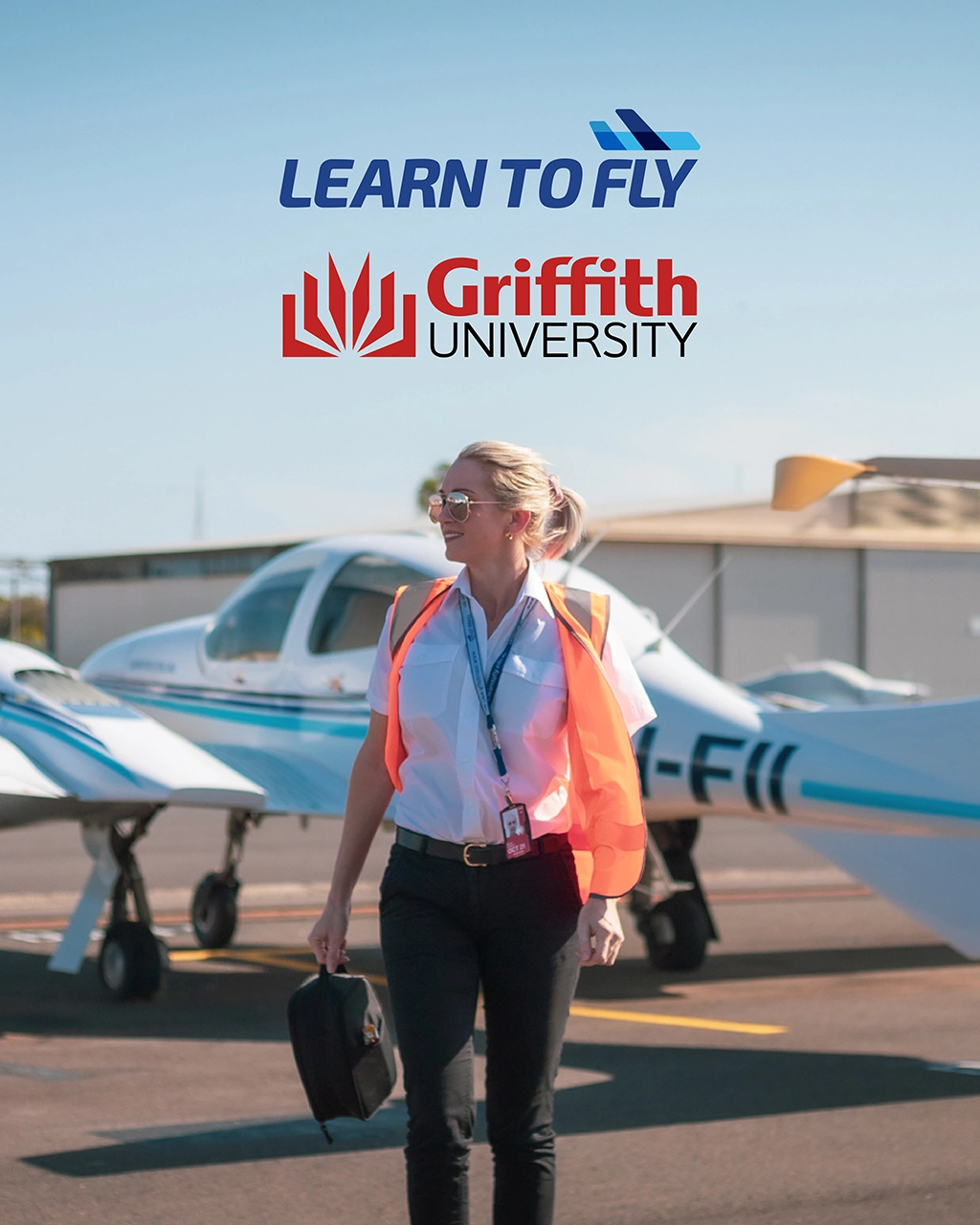
Bachelor of Aviation – Learn To Fly Launches Articulation Pathway with Griffith University
Learn To Fly is proud to announce a new articulation pathway with Griffith University for students wanting to complete a Bachelor of Aviation program.
Australia’s Most Recognised Aviation Program
Griffith University is one of Australia’s most prestigious universities and offers Australia’s largest and most recognised aviation teaching program. For over 25 years, Griffith has worked closely with aviation industry experts to develop programs that meet the demanding requirements of current and future pilots. They are known worldwide for providing exceptionally well trained and high-quality commercial pilot graduates.
With strong industry ties as well as a large presence in aviation research, the Griffith University Bachelor of Aviation program is the perfect stepping-stone to your career as a pilot.
About the Bachelor of Aviation Course
A Bachelor of Aviation qualification is the perfect preparation for becoming a professional pilot. Your comprehensive training includes theory in a range of subjects as well as simulation training.
Choosing this pathway for your aviation training can mean that you are able to be ready to start working professionally in a wider range of aviation jobs sooner.
The Ideal Pathway to Becoming a Professional Pilot
Completing the AVI50219 Diploma of Aviation (Commercial Pilot Licence – Aeroplane) and AVI50519 Diploma of Aviation (Instrument Rating – Aeroplane) courses with Learn To Fly Melbourne allows you to apply for the Griffith University Bachelor of Aviation program via Advanced Standing (with 80 credit points). The diploma courses can be completed in 18 months at Learn To Fly’s Melbourne training base at Moorabbin Airport.
Griffith’s Bachelor of Aviation program requires a total of 240 credit points for completion. This takes most full-time articulation students another 18 months to complete, based on 15-20 hours per week of scheduled classes. What this means is that you could potentially complete 3 highly regarded aviation qualifications (Commercial Pilot Licence, Multi-Engine Command Instrument Rating and Bachelor of Aviation) within just 3 years.
When you graduate from this training pathway you will be ready to start your career as a pilot. In addition, these 3 qualifications could mean that there are many more job opportunities available to you.
Extend Your Career Advantage Even Further With Learn To Fly
To be able to participate in formation flying, you’ll need a Formation Flying Endorsement. The
Learn To Fly offers a wide range of additional flying courses. You can complete these courses concurrently whilst studying for either the Diploma courses or the Bachelor of Aviation program. These courses can improve your standing as an applicant to potential employers even further. They will also give you the training to be able to consider a wider range of commercial pilot roles post-graduation.
It’s no secret that aviation employers industry-wide hold applicants with a Flight Instructor Rating (FIR) in high regard. Our Flight Instructor Rating (FIR) course is seen as one of the most comprehensive flight instructor courses in Melbourne.
If you are considering a career as an airline pilot, then you should definitely consider our Airline Interview Preparation courses. Facilitated by international Airline Check and Training Captain and aviation career specialist Darren McPherson from ACS Aviation Consulting Services, these courses have helped nearly 200 pilots to achieve success in their applications to a range of renowned airlines around the world.
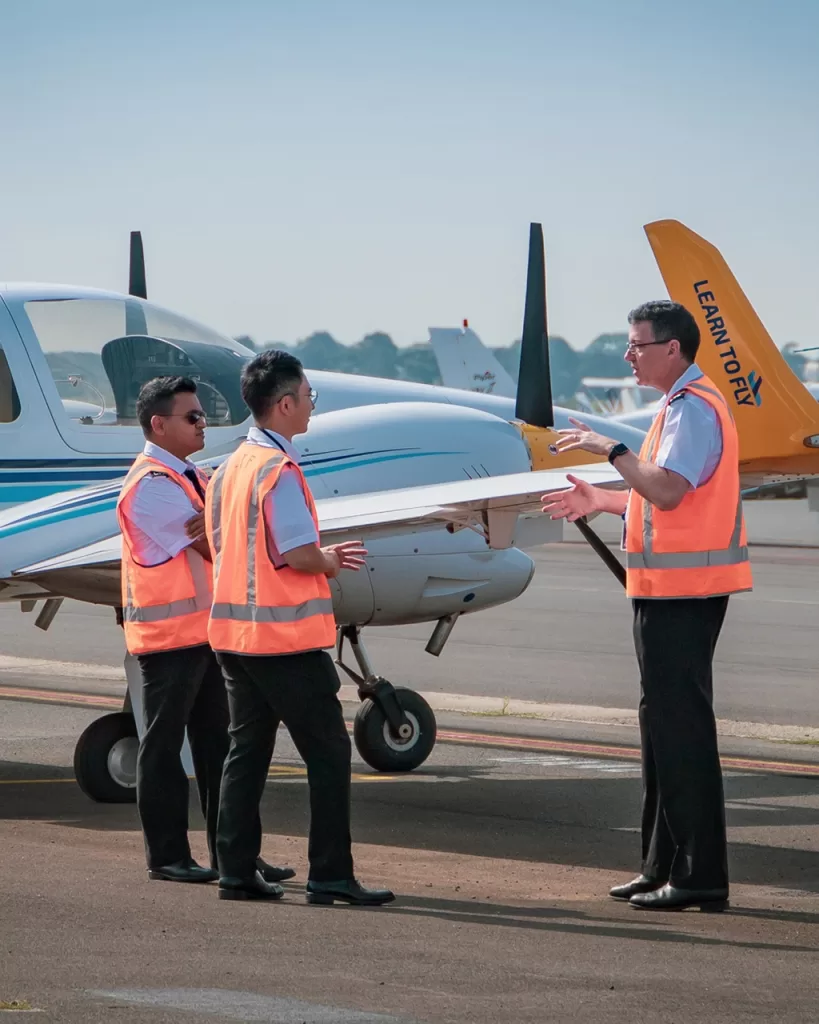
To register your interest in the Bachelor of Aviation articulation pathway, email [email protected] or visit https://drift.me/learntofly/meeting to book a meeting and school tour.
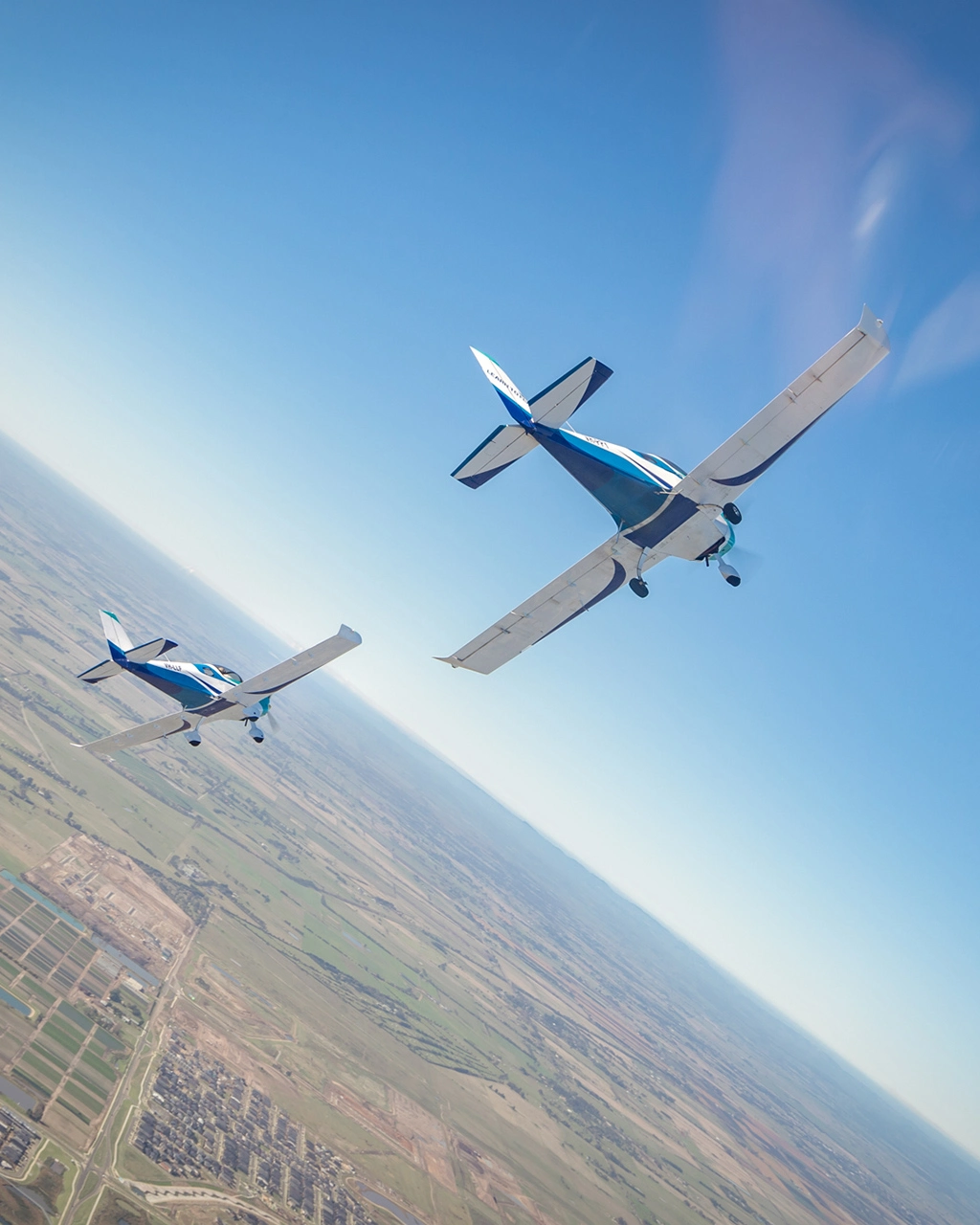
Formation Flying – A Thrilling Experience For Any Pilot!
Formation flying is a unique experience and one that captivates even the most accomplished of pilots. There is something undeniably exciting and almost surreal about flying side by side with another aircraft so close by or moving as one through turns and other manoeuvres.
Even from the ground, seeing aircraft flying together is captivating. From the cockpit, it’s something else altogether. Looking across and seeing your wingman right there with you, close enough to see the facial expressions of the other pilots, it’s just such a great buzz!
Read on to learn a bit more about why it’s such a fun and rewarding experience for any pilot!
What is Formation Flying?
Formation flying is when 2 or more aircraft fly close together in an organised manner. There is a designated lead aircraft, and the other aircraft are known as the “wingmen”. Yep, just like “Top Gun”. It is actually worth noting, as jokes aside, flying in formation has been developed over time mostly for military purposes.
These days formation flying is commonly used for aerial displays and air-to-air photography.
There are a number of different formation types or “orders”, and depending on the number of aircraft, the formation can also be arranged into multiple groups, known as “elements”. Some of the more common formation orders include Echelon, Line Abreast and Line Astern.
Formation flights must be well planned and briefed prior to departure, to discuss what formation types and manoeuvres will be involved. A detailed briefing is obviously also important to discuss safety considerations and emergency procedures.
What Skills Do You Need For Formation Flying?
Apart from being a lot of fun, flying in formation is also a great activity for honing your pilot skills. Flying close together with other aircraft requires a high level of concentration and precise control inputs. You need to know your aircraft and how it performs at various speeds and angles of the bank.
It also requires excellent communication and of course, a level of understanding and teamwork between pilots. These are all skills that are of great benefit to any pilot.
Can Anybody Fly In Formation?
To be able to participate in formation flying, you’ll need a Formation Flying Endorsement. The course teaches you how to maintain and change positions in a range of formation types. You’ll also learn how to take off and land in formation, perform manoeuvres together in unison, and perform other manoeuvres such as the exciting break and rejoin.
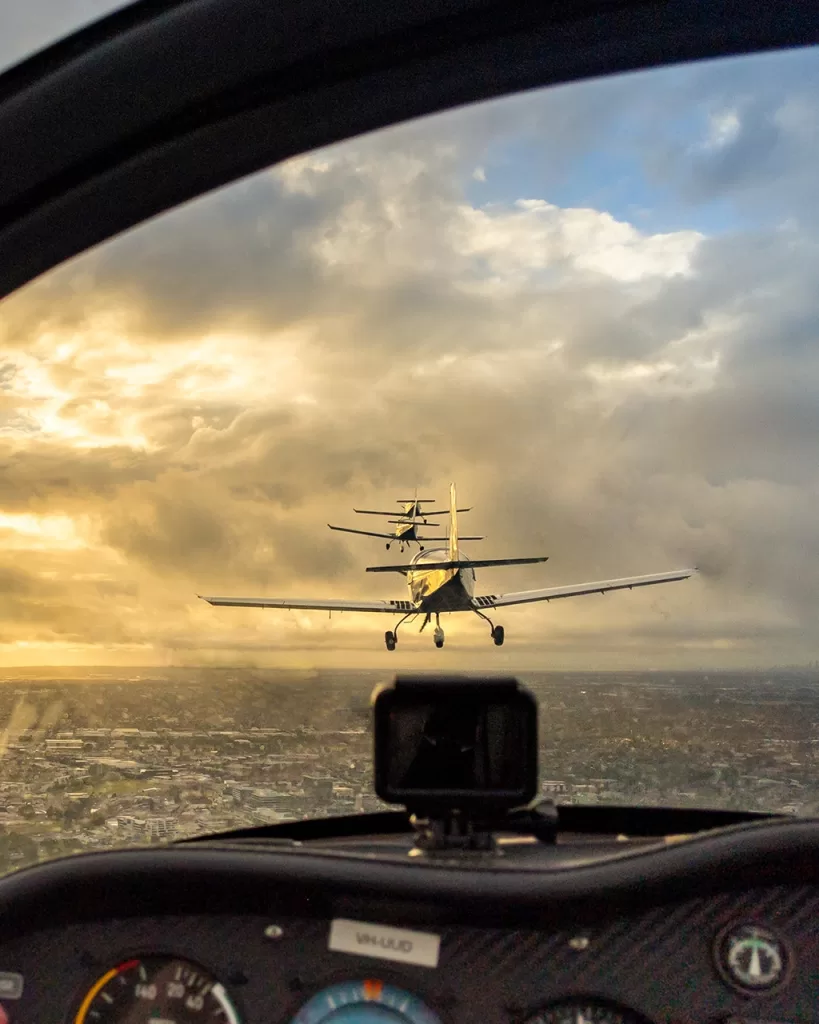
Learn To Fly’s Formation Flying Endorsement Course
Learn To Fly’s Formation Flying Endorsement includes all ground theory as well as 6 hours of flying. To be eligible to complete the course you will need to hold a valid RPL, PPL or CPL. Since we need at least 2 aircraft flying for the practical side of things, we recommend completing the course with another pilot.
We offer this course in a Sling 2 or Diamond DA40 aircraft from the LTF fleet, but there is also the option to complete it in your own aircraft! We have just recently completed a Formation Flying Endorsement with other than YouTube aviation legend Stef Drury, in his Cirrus SR22.
Contact [email protected] or visit https://drift.me/learntofly/meeting to book a meeting and school tour.
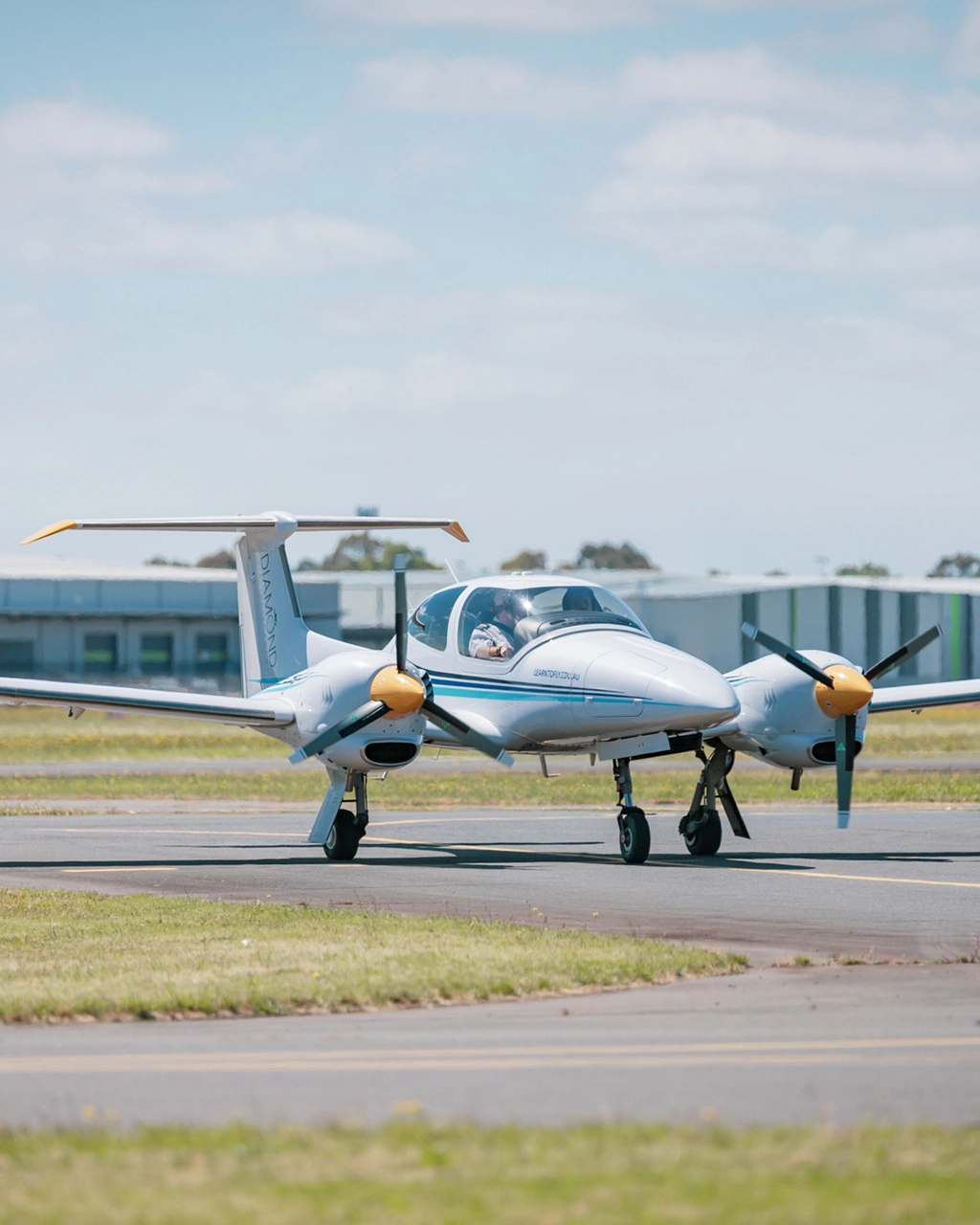
Take Off With an AVI50519 Diploma of Aviation Course
If you are wanting to become an airline pilot, or thinking about one of the many amazing pilot career options, the AVI50519 Diploma of Aviation course is the comprehensive training and preparation that you need.
Learning to fly is as complicated as learning to drive. When a person is learning to drive, the first thing they feel is fear—and excitement. When they begin, they don’t know the right way to turn around a corner, or how to parallel park. But with time, practice and the right instructor, they will pass the dreaded driving test and hit the road. What once seemed so foreign now seems like second nature, and turning and parallel parking both become muscle memory. Learning to fly is much the same. With the right training and practice, becoming a pilot becomes accessible for anyone! Recreational flying and flying commercially however are two very different things and require different levels of expertise. For example, you may be responsible for the safety of hundreds of passengers on a plane as a commercial pilot.
Why choose Learn to Fly Melbourne for your AVI50519 Diploma of Aviation
Transparency & Affordability
Stay away from schools that ask you to pay for the whole course upfront without telling you exactly what they’re charging you for, without a thorough breakdown. Make sure they mention additional ancillary you may have to pay (like landing fees at other airports, for example). The flight school you choose should tell you the cost per hour for each aircraft. They should also give you the cost for theory sessions, as well as exams. They should be able to advise you on how much time it usually takes a student to master the skills taught in the course.
At Learn to Fly we want everybody to have the opportunity to learn to fly, without affordability being a barrier. We believe in total transparency, which is why we give you a full payment schedule when you’re enrolling with us. This breaks down the cost of every single component of the course. It includes pay when you apply items, non-flying components, pay as you fly items, as well as any additional requirements you may need to pay for.
About Learn To Fly
We are the only Victorian flight school offering flight training in Diamond aircraft. We also have the largest training fleet of Sling 2 aircraft in Australia. Our entire fleet includes Sling 2s, Diamond DA40s, Diamond DA42s, Cessna 172s, a Piper Seminole, a Foxbat and a Super Decathlon. A wide range of aircraft gives students the opportunity to fly older aircraft with analogue avionics or modern aircraft with glass cockpit features like the Garmin G1000.
Learn To Fly leads the way in simulation training, with 3 full cockpit synthetic trainers as well as an immersive 3-screen Xplane sim with responsive aircraft throttle and rudder controls plus Garmin instrumentation. We pride ourselves on state-of-the-art facilities and training options. Our AVI50519 Diploma of Aviation students have access to fully digitised classrooms, and an industry-leading online portal offering fully remote online training and 360 degree virtual cockpit procedural training.
Highly Experienced Instructors
Our highly experienced instructor team boasts a diverse range of aviation backgrounds. These include specialised niche areas, making them experts in specific aspects of flying. Our instructors love giving backing to the students by imparting their knowledge and training to the next generation of pilots. Some of our Grade 1 instructors have well over 10,000 hours of professional flying experience. We have close ties to aviation career specialists who provide invaluable guidance on entering the industry after completion of training.
Get your AVI50519 Diploma of Aviation from Learn to Fly Melbourne and get started on your career in the skies today!
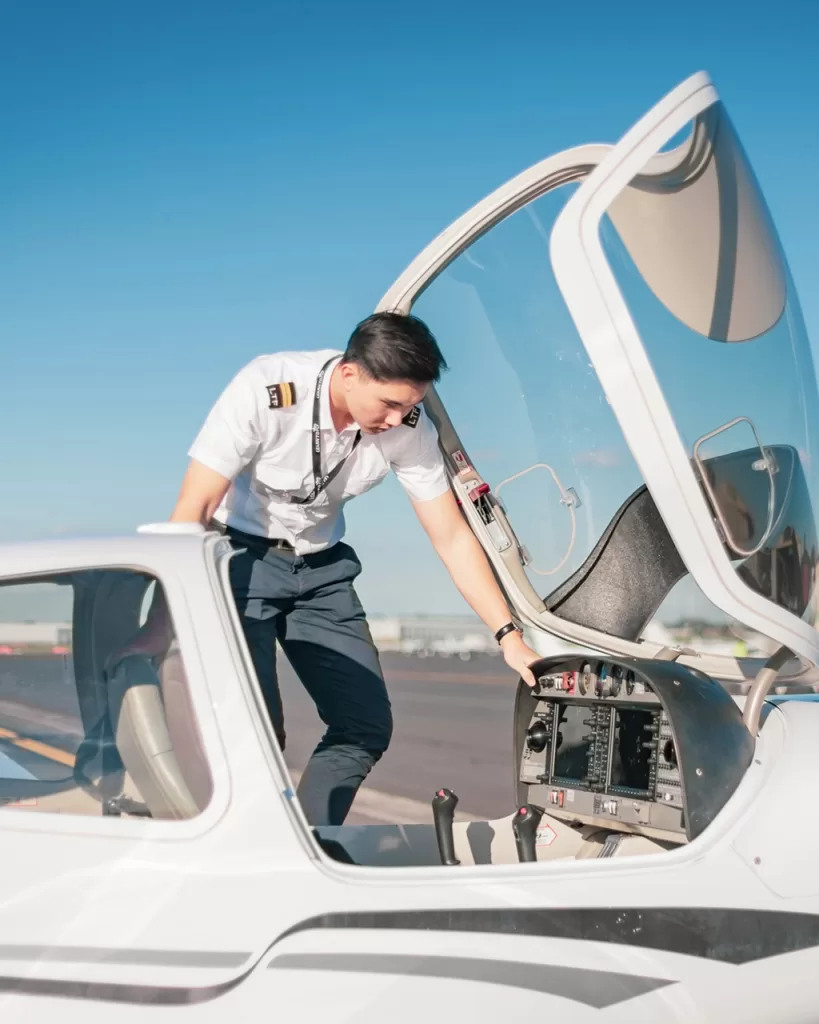
To register your interest in our Diploma of Aviation courses, email [email protected] or visit https://drift.me/learntofly/meeting to book a meeting and school tour.
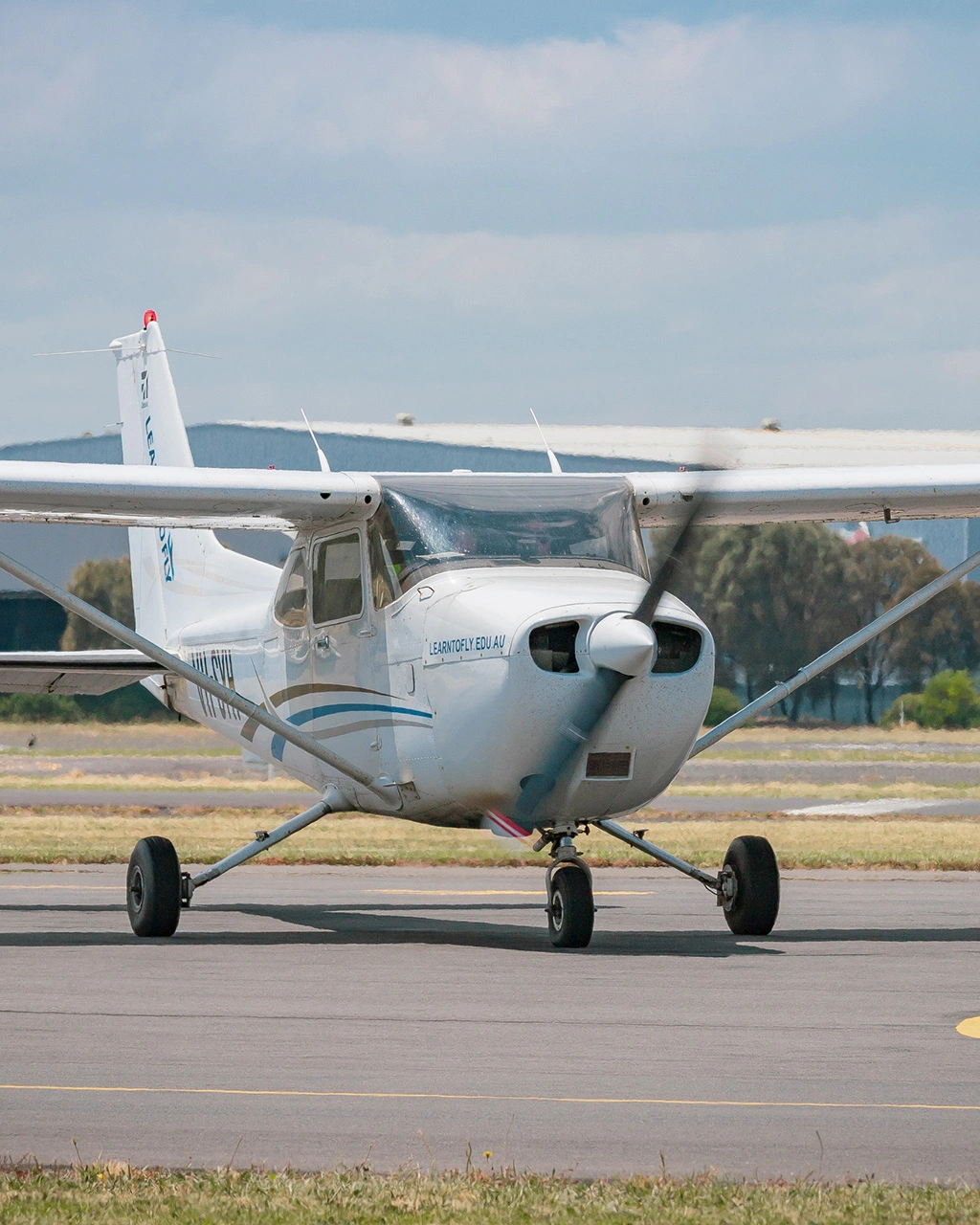
Should You Do Your Flight Training in a Cessna 172?
Planes are beautiful pieces of machinery. They take us up above the clouds and help us travel great distances in a short period of time. With so many planes out there nowadays, you may wonder which one is the best one to learn in. If you ask around at flight schools or among pilots, there is a good chance they will tell you that flight training in a Cessna 172 is the best way to go.
This single-engine plane is easily the most popular plane in the world. There have been more than 44,000 Cessna 172 ‘Skyhawks’ manufactured since 1956, and they are still in production today. Impressively, while there have been some technology upgrades since the original, the overall design is remarkably similar to the original. The latest models have integrated cockpit avionics like the Garmin G1000 which has an improved graphical interface, powerful hardware, high-resolution displays, increased functionality for situational awareness, and wireless technology.
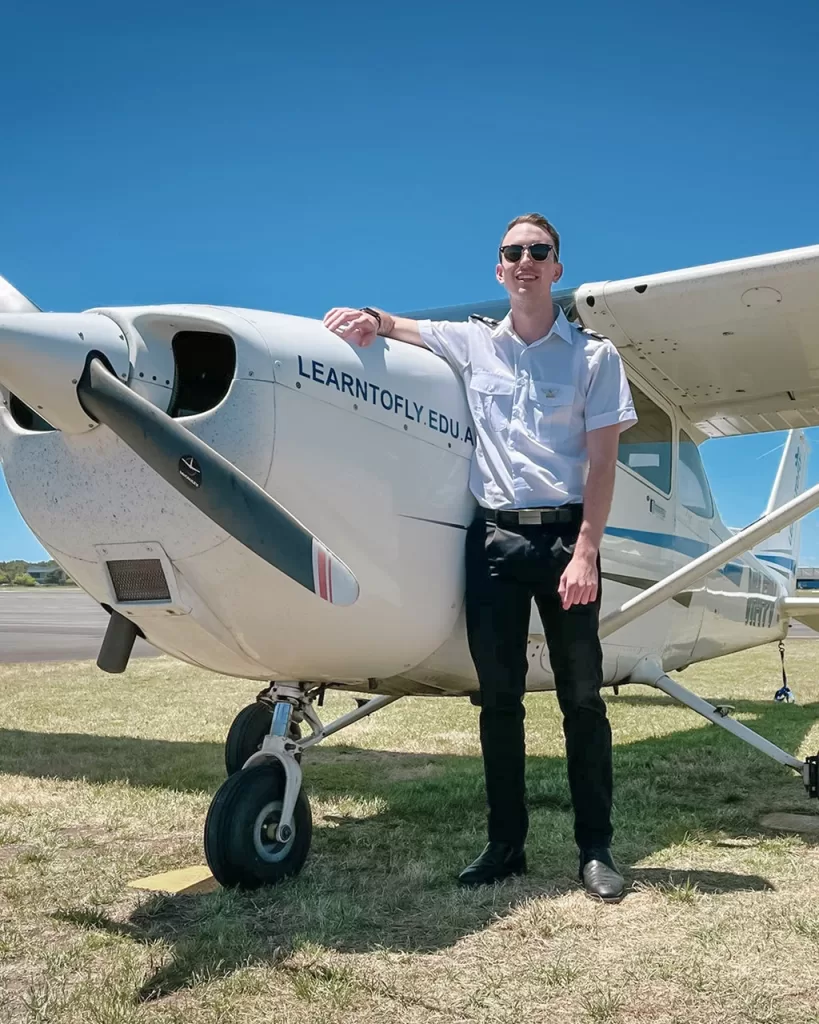
The Best Plane in the World?
Most pilots that have done their flight training in a Cessna 172 find that the ease and simplicity of operation make it a great beginner plane, regardless of whether it’s a new or old C172 model.
The Cessna 172’s high wing design is also a stand out feature. This design is different to much other training aircraft, as the wings are above the fuselage rather than below it. This gives greater visibility of the world outside the plane for beginner pilots. Also, the higher wings allow for a larger door and better access to getting into the cockpit.
The Cessna 172 is a fantastic aircraft to learn how to perfect your takeoffs and landings. It’s sometimes even jokingly nicknamed the “Land-O-Matic” by pilots. The tricycle landing gear layout means that the centre of gravity sits in front of the main wheels. If you are learning and your landing is crooked the centre of gravity will naturally pull the plane straight. The C172 also has a great balance between speed and stability in flight. It is a lot easier to recover from spinning situations than a lot of other training aircraft. This is obviously a great attribute for an aircraft to have for beginner pilots.
Here at Learn to Fly we love seeing our students learn and grow in arguably the best light plane ever made. When you are learning to fly in a trusted aircraft design, and a plane you feel comfortable in, you can focus more easily on the more advanced concepts of flight training. When you are ready to become a pilot, Learn to Fly has you covered with flight training with a Cessna 172. Enquire with us on how to make it happen today!
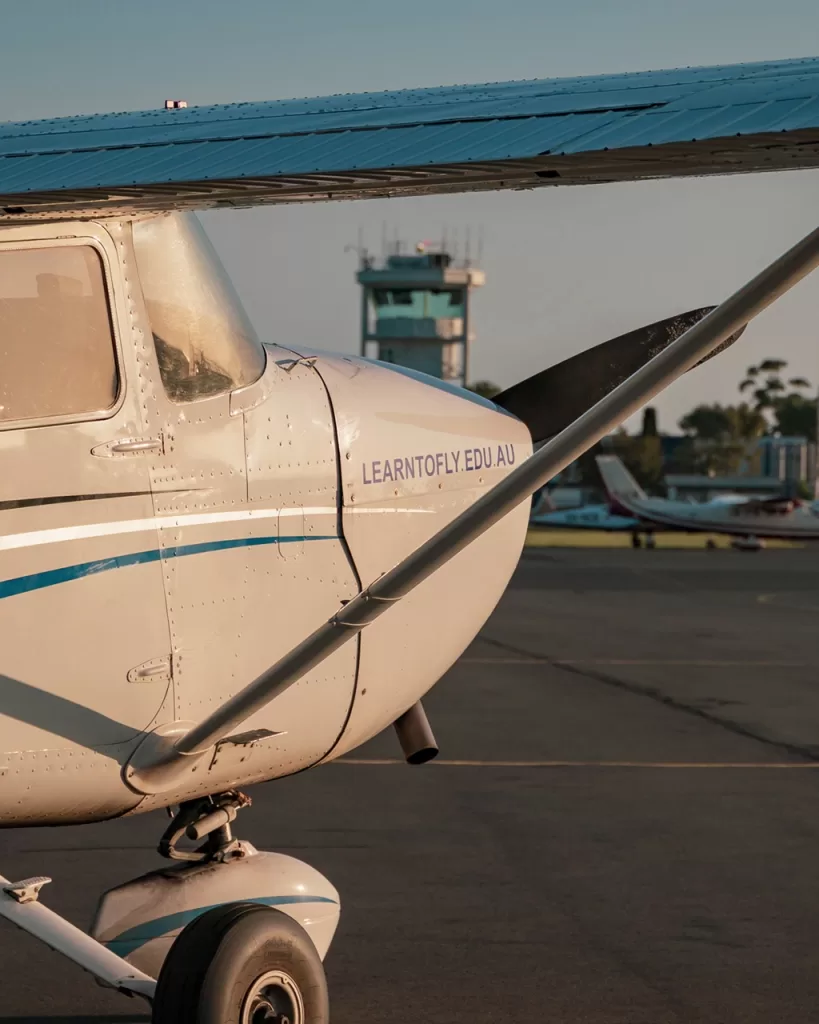
To find out more, email [email protected] or visit https://drift.me/learntofly/meeting to book a meeting and school tour.
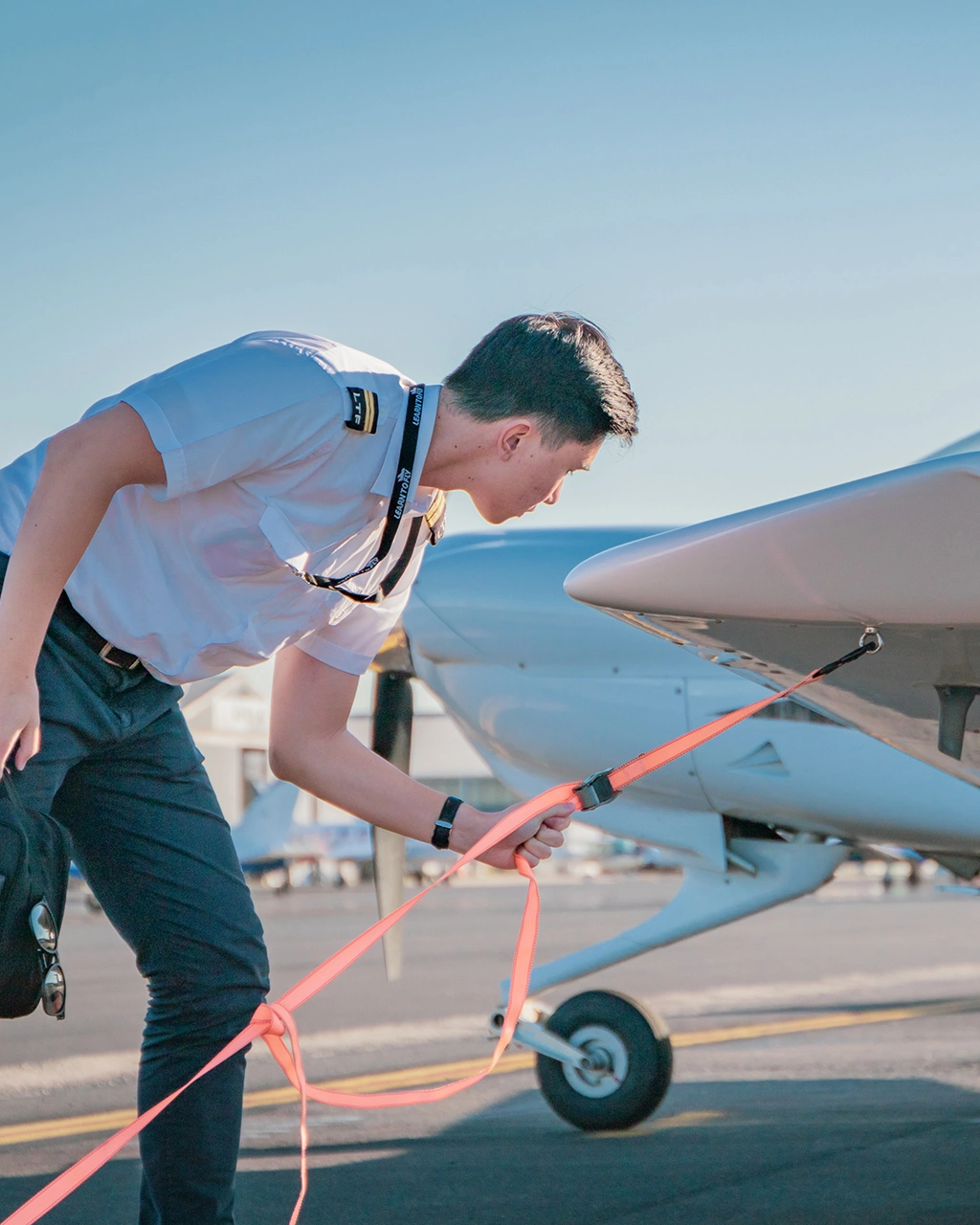
Pilot Job Guarantee Program: Are You Ready For Take-off?
The Learn To Fly Pilot Job Guarantee Program is your pathway to the runway, clearing your aviation career for take-off. Successful applicants are guaranteed a Flight Instructor role and at least 300 flying hours. This means that you’ll be ready to step into a career as a commercial pilot.
But how does the LTF Pilot Job Guarantee Program work, and are you eligible to apply? We will answer those questions and more in this blog. We will also chat to Chun Ki (Peter) Cheung, our Pilot Job Guarantee Program graduate, to learn about his story and hear how he is going in his Flight Instructor role.
About the Learn To Fly Pilot Job Guarantee Program
Eligibility: To be eligible for the Pilot Job Guarantee you must be between 18 and 35 years old and have little to no previous flying experience. You will also need to meet the English proficiency and CASA medical requirements.
Process: Accepted candidates will progress through CPL training (which includes RPL and PPL as well). You will then complete a Flight Instructor Rating (FIR). You will then be able to start work as a Flight Instructor at Learn To Fly.
Your Pilot Career: Whilst we guarantee that you will at least pass 300 flying hours whilst working as a Flight Instructor at LTF, it doesn’t end there. There are many options to widen your career choices by completing a range of ratings and endorsements as you go. You could choose to upgrade your instructor status. Or you could look at some of our Airline Interview Preparation courses and start getting ready for airline applications.
Why Apply for the Learn To Fly Pilot Job Guarantee Program?
With the recent global COVID19 pandemic, the job landscape for pilots especially has become far more difficult to navigate. The industry will bounce back, but when will that be? The requirement for flight training will rapidly expand in the coming years. However, this still doesn’t guarantee everybody a job as a Flight Instructor when they finish their training.
The Learn To Fly Pilot Job Guarantee Program allows you to bypass that crucial first worry of wondering whether you can get a job when you finish CPL training. As you grow your skills, knowledge and flight hours as a Flight Instructor while working with LTF, you will find yourself in greater demand as a commercial pilot.
Of course, training and working with us means that you will also have access to our state-of-the-art facilities as well as our comprehensive and modern aircraft fleet, and our team of highly experienced Flight Instructors. This gives you the best start to your career possible!
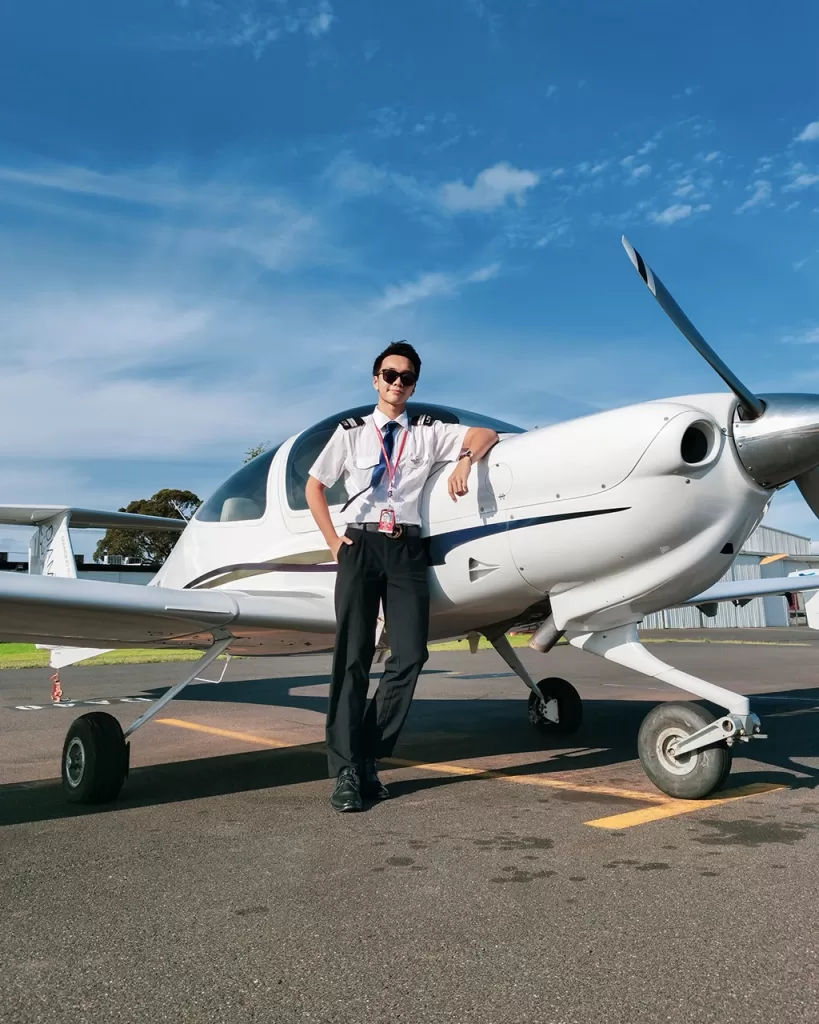
Meet Our Pilot Job Guarantee Program Graduate: Chun Ki (Peter) Cheung, Age 20
Why did you want to become a pilot?
I always captivated and fascinated by the sky. Why should we be limited to the ground when there is so much more to explore in the sky? I couldn’t stop thinking about it, and one day I told myself that flying is what I want to do!
Tell us about your pilot journey:
Originally from Hong Kong, I went to Melbourne Australia straight after I graduated from high school when I was 18. I was offered a university degree after I finished school, but my real dream was to become a pilot! There is a lack of training facilities in Hong Kong, so I decided I would learn in Melbourne. I booked accommodation and a flight, and I just went! It was a bit scary to just do it. But fear doesn’t stand a chance if you have a huge passion and a dream to chase.
I was accepted into the LTF Pilot Job Guarantee Program, and started my flight training with LTF in July 2018 in a Sling 2 aircraft. I flew my first solo, RPL and PPL in a Sling 2, moving to the Diamond DA40 aircraft to complete my CPL and FIR. My Multi-Engine Class Rating was completed in a Piper Seminole, and my MECIR in a Diamond DA42.
How have you found moving from student to Flight Instructor?
I am so excited to move from being a student at LTF to being able to teach the next student pilots. Like many pilots my dream is eventually to work for an airline. However, I am enjoying every step that I am going through to get there. At the moment, I am focused on how to be a great Flight Instructor, like those who taught me at LTF!
Wherever my career takes me, starting with the Learn To Fly Pilot Job Guarantee Program was perfect. If you have a dream to fly, you should apply. An 18-year-old with no flying experience can move to a new country and do all the above, so why not you too?!
To register your interest in the Learn To Fly Pilot Job Guarantee Program, email [email protected] or visit https://drift.me/learntofly/meeting to book a meeting and school tour.

Preparing For Airline Pilot Interviews – Student Pilot Journal Part 4
Student Pilot Mickey Wu travelled from Taiwan to Melbourne to train with us at Learn To Fly Melbourne. Despite not being able to fly for 3 months due to Covid lockdown, he managed to complete a CPL, MECIR, Multi-Engine Class Rating, and 5 ATPL exams. Now back in Taiwan, Mickey talks about preparing himself to be the best possible candidate for airline pilot interviews.
“What kind of pilots are the airlines looking for?”
People are called by the sky for different reasons. Some people want to be an instructor to pass down the fun of flying, while some simply fall in love with flying and want to keep it for themselves. For me, I want to be an airline pilot.
In order to prepare myself as an employable airline pilot, I decided to ask myself a few questions every day. The first thing I asked myself is:
“What kind of pilots are the airlines looking for?”
Before I started my training, I consulted a few experienced airline captains. One of them told me a story about a candidate that they interviewed years ago. This candidate built 300 hours within 8 months, and got his CPL and MECIR. And he knew all the settings and speeds of the Boeing B777 and Airbus A320, which were the aircraft in the fleet at the time.
“If we don’t hire him, we are making a big mistake”
That was the comment from one of the interviewers. I want to be just like this candidate.
Looking for a pilot job is about a mindset. We are hired to help solve problems. As Steve Jobs once said in an interview:
“Good employees are self-managed. They know the system well, and they know what they can do with the system. You put them together and they just know what to do”
I believe that applies to aviation as well. They don’t actually expect us to know everything. But having said that, the least we can do is to make them believe that we have the potential. And that brings us to the second question I asked myself.
“What can I do to make myself irresistible?”
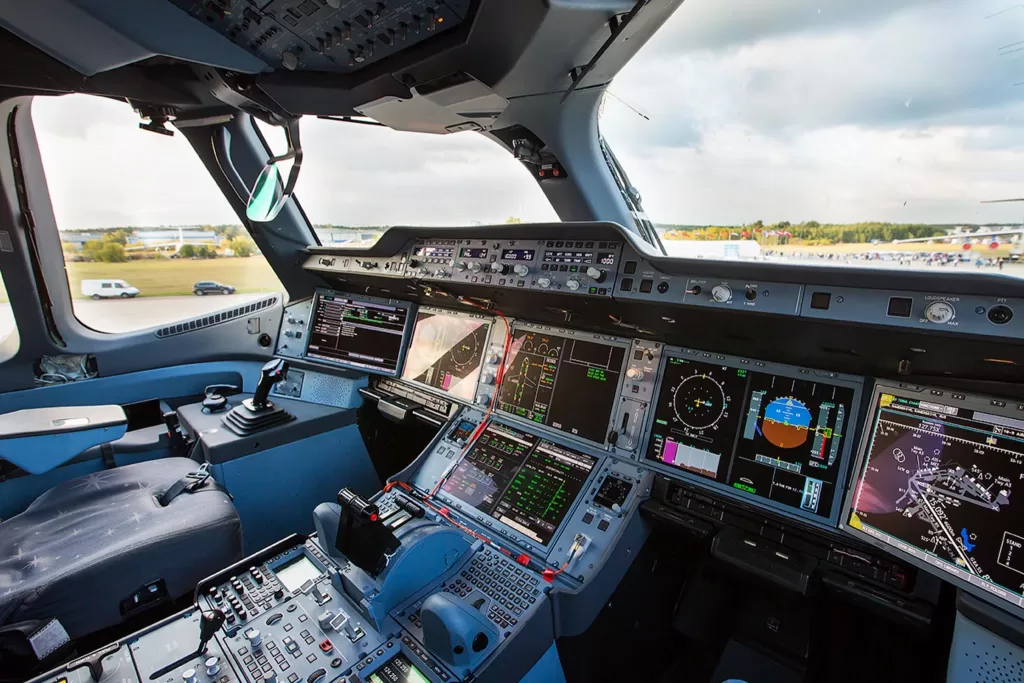
“What can I do to make myself irresistible?”
Based on the anecdote that the captain told me, airlines are looking for someone who knows what to do already. Or who knows enough to take the initiative and work the rest out. So how do we make ourselves closer to that standard to prepare for airline pilot interviews?
The systems on a big jet airliner are different from that of General Aviation training aircraft. A good thing to start with is the ATPL subject “Aerodynamics & Aircraft Systems (AASA)”. CASA uses the Boeing B727 as an example, so the candidates are able to have more tangible material to work on.
It’s similar to the Aircraft General Knowledge theory (CSYA) for CPL, except that AASA is for larger jets. So if you have finished the 7 CPL theory exams and are just building your flying hours, AASA theory is definitely worth spending your time on. AASA and the Boeing B727 syllabus can give you a good general idea about the operation on a big jet airliner.
Realistically, the manual of the actual aircraft we are hired to fly will be the most useful tool to make us more eligible. After passing the CPL flight test, there will be a long period of time during which you are getting ready to apply for airline jobs. This is the phase I am in right now. So now is the time to do some research on the fleet of the airlines I am hoping to apply to, and get familiar with the aircraft inside and out.
While I am preparing myself to be an eligible candidate for airline pilot interviews, the next question I ask myself every day is:
“Is what I am doing now taking me closer to my goal?”
“Is what I am doing now taking me closer to my goal?”
In order to fly properly, we always monitor our altitude, heading, and speed. We are constantly making corrections. Likewise, when we are shaping ourselves to be an employable pilot, it’s a great idea to monitor ourselves constantly. This allows us to keep everything on the right track.
I always try to compare myself to airline cadets. As my friend in Eva Air (Taiwanese Airline) told me, life during their training was pretty intense, and it felt quite similar to serving in the military. They get up at six or seven in the morning for self-study, and the classes are scheduled from eight to five in the afternoon. They will do some exercise after the class and end the day with more self-study. That’s five days a week.
If that is what it takes to succeed as an airline cadet, then this is what I will do to prepare myself to be an eligible airline pilot interview cadidate. So when I was in Melbourne, I kept a fixed schedule, pretending as though I was in the military or studying as an actual airline cadet. I even did this during the 3 month Covid pandemic lockdown in Melbourne.
I made my schedule six days a week, because honestly, if I were as good as those cadets then I would have been one of them. But I was not. So I figured that I would have to work at least a little bit harder than they did. I got up early and studied, cooked, and then studied more. Sometimes the daily Covid announcements kept me company in the afternoon. Sometimes it was the Taipei Tower on Live ATC.
Does it work? I don’t 100% know yet. We’ll find out. But I have faith!
We would like to thank Mickey for contributing these journals on learning how to fly, and on preparing for airline pilot interviews. To get an even greater advantage over other applicants, check out our Airline Pilot Interview Preparation courses hosted by Airline Check and Training Captain Darren McPherson.
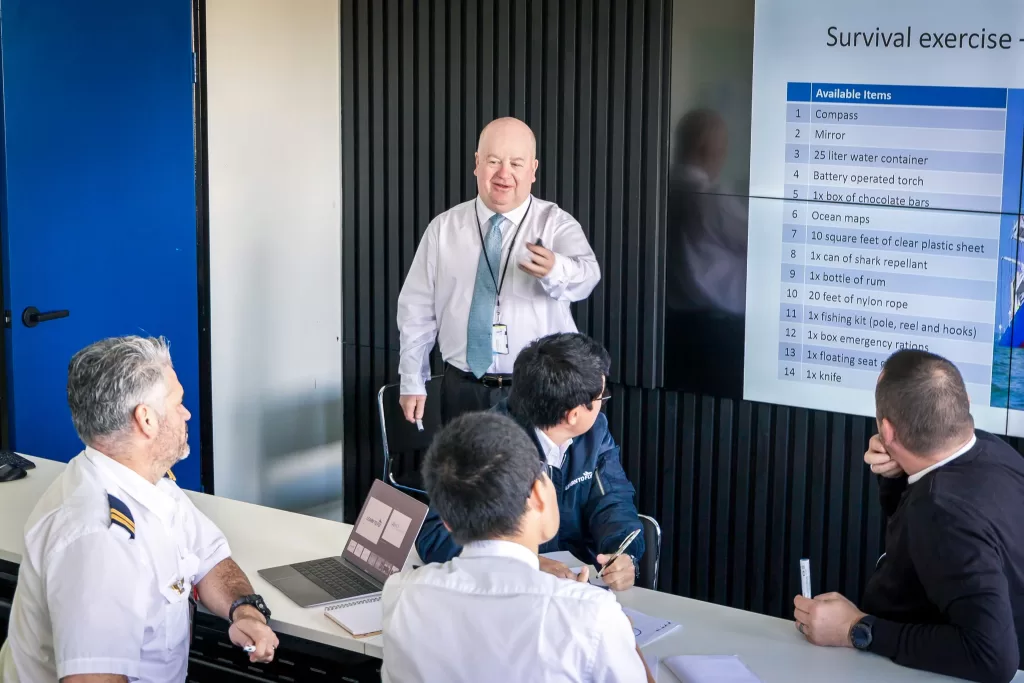
Contact [email protected] or visit https://drift.me/learntofly/meeting to book a meeting and school tour.

Some Tips For Learning How To Fly – Student Pilot Journal Part 3
Student Pilot Mickey Wu travelled from Taiwan to Melbourne to learn how to fly. He returned home to Taipei having completed a CPL, MECIR, Multi-Engine Class Rating, and 5 ATPL exams. In his third journal instalment, Mickey talks about finding the right attitude for straight and level flying, and teaching his mum how to fly using a simulator!
Challenge Accepted
Written on January 15th, 2021
Let’s bring the storyline back to the current day. Well, current at the time of writing. January 2021 in Taipei, Taiwan.
I bought a used set of Logitech controls and Microsoft Flight Simulator 2020. I wanted to stay sharp. The practice was alright, but without expecting to do so, I actually ended up teaching my Mum how to fly. I found that teaching someone how to fly is not an easy task. The reaction of the aircraft after each input has become second nature to me, but it’s not like that for those who are just starting to learn.
Me: “Mum, this is not straight and level flying. Are you going up or down?”
Mum: “……down.”
Me: “Good. So do you push the control or do you pull to fix it?”
Mum: “……push.”
Me: “Okay, let’s see what will happen.”
Mum (five seconds later): “Hey Mickey, the houses are getting bigger and bigger really quick!!!”
Me: “Tell me about it.”
Warning on the screen two seconds later: “You just damaged your landing gear.”
Just the landing gear?! Wow, that is forgiving!
My instructor once said that sometimes you have to let go and let the learner see the consequence of his or her action or inaction. Obviously, they didn’t let me learn this in a real aircraft, and so my landing gear (and the houses) were safe!
But it’s interesting to see that the way my Mum and I learn things is so similar. Like mother like son. But I have faith in her. My goal is to take her to her first solo on Microsoft Flight Simulator 2020. I give it two months. Challenge accepted!

The Right Attitude
Written on January 17th, 2021
The “attitude” of an aircraft is an abstract idea to me. It can look like it is straightforward on the aircraft’s artificial horizon, but in terms of the real visible horizon, it’s quite intangible. But it’s obviously very important when learning how to fly, especially for straight and level flying.
LTF Instructor Shannon taught me to judge the attitude with the position of the visible horizon in relation to the dashboard. For instance, on a cruise climb in a Sling 2 we position the horizon on the dashboard. To climb at Vy (the abbreviation for the best rate of climb), the horizon goes through the top of the PFD (Primary Flight Display). And to climb at Vx (the abbreviation for the best angle of climb), the horizon cuts through the middle of the PFD.
It may sound weird, but it works quite well. And for straight and level flying, we put four fingers on the dashboard and the visible horizon stays at the top finger. For a cruise descend, we put five fingers instead. Last but not least, for an approach, we use a “half-land-half-sky” attitude. Of course, we have to adjust the power setting accordingly.
It’s hard to judge the attitude at the beginning when you’re learning how to fly, for straight and level flying and for climbing and ascending. I even had doubts about the whole idea, considering that my visual perspective is different from that of Shannon’s. In addition to that, my four-finger attitude is not the same as that of LTF Instructor Alexey (Alexey is very tall and has huge hands).
But the key is to have a mental snapshot when your instructor says, “OK, this is the straight and level flying attitude.” Memorise what this attitude looks like from your perspective, and set it that way next time you need it. Trust me. It works!
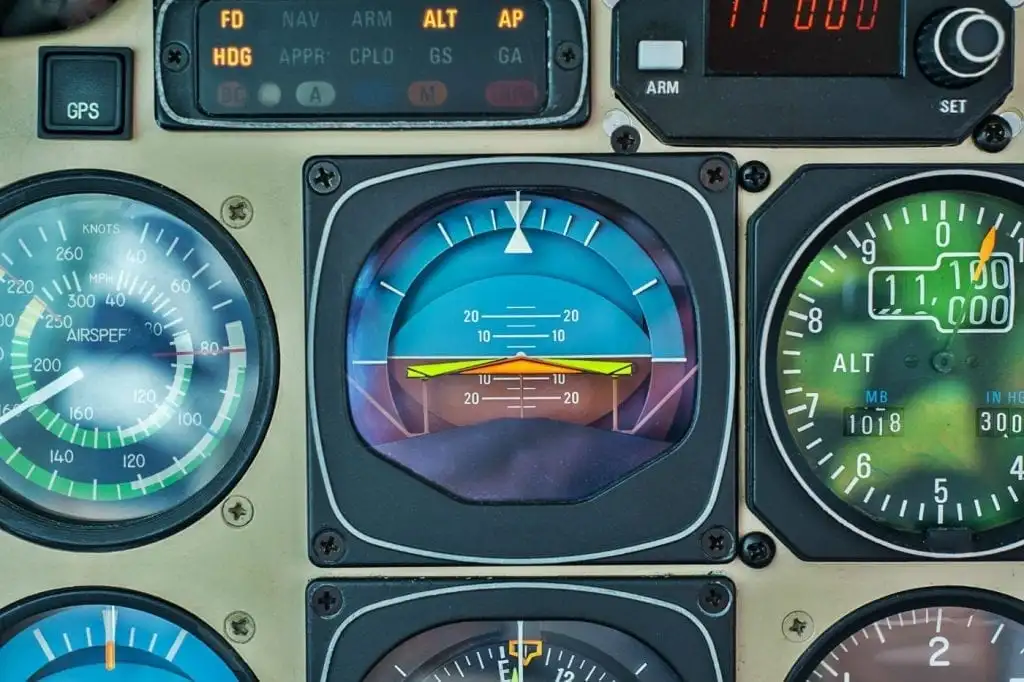
We would like to thank Mickey for contributing these journals on learning how to fly in Melbourne. Stay tuned for the next journal entry!
If you are interested in finding out more about our flight training courses and online learning options, email [email protected] or visit https://drift.me/learntofly/meeting to book a meeting and school tour.

Training with a Melbourne Flight School – Student Pilot Journal Part 2
Student Pilot Mickey Wu travelled from Taiwan to learn to fly with a Melbourne flight school. He has now returned home after completing his CPL, MECIR, Multi-Engine Class Rating, as well as 5 ATPL exams. Mickey is sharing his flight training experiences with us in a series of journals.
Hidden Tiger, Crouching Dragon
Written on January 1st, 2021
Learn To Fly, my Melbourne flight school, is a place full of so much talent. The Flight Instructors are the ones who set up the framework and foundation. And sometimes it is my classmates that inspire me and help to build my own character.
My classmate Terry is an exceptional pilot. He flew the Sling 2 and converted to a Diamond DA40 later on. He is very devoted, and creates his own system to take in and digest the knowledge from the textbooks. Terry also takes flash cards with him everywhere he goes, so he can review VMC (Visual Meteorological Conditions) requirements or air laws whenever he wants.
His notes on airspeeds and the use of the CR-3 (Jeppesen CR-3 Flight Computer) are so concise and accurate. I wish I had taken a screenshot of it. I admire the way he answers his Flight Instructor’s questions. He can quote the rules in the AIP (Aeronautical Information Publication) with the right reference, not missing a single word. And when he says it, he beams with confidence.
Brandon is another hero. He has flown the Cessna 172 all the way from the beginning. I would say Brandon is a born pilot. There were more than six months that he wasn’t able to fly, when pilots were unable to attend their Melbourne flight school due to the coronavirus lockdown. But once he came back, he flew as if he had never been away.
Preparing for a flight is not an easy task. Measuring distance and track, checking the weather, drafting a fuel plan, submitting the flight plan… you name it. What makes Brandon incredible is that he has three jobs to support himself flying. And he makes it all work. Every time when I felt lazy, I thought of Brandon. And that helped me to pull myself together and do what had to be done.
Terry is the best advocate for practice makes perfect, and Brandon’s story always motivates me to keep going at the right pace. I never tell them, but to me, they are the tiger and dragon.

You Have To Leave Something Behind To Move Forward
Written on January 4th, 2021
At certain points of life, you may feel that the burden on your shoulders is so heavy that you cannot breathe. The pressure from your workload keeps you awake at night and makes you reluctant to get up in the morning. But then it is time to hop in a Sling 2 and go for a spin. Well, not really a spin.
The Sling 2, designed and built by Sling Aircraft, is a one-of-a-kind aeroplane. It’s like a sports car in the sky, light and agile. The real-time response to the control inputs builds confidence in the pilot. It’s like an iPhone 5, sharp and smart. The intuitive touch screen interface integrates all the information you need. The exchange of information between the aircraft and the pilot is so instant, it’s as if the pilot were the brain and the aircraft were the extension of his or her body. At 55 knots, slightly faster than what you usually do on the M1 highway, you can defy gravity and take to the sky.
With a Melbourne flight school, you don’t even have to fly far to enjoy the experience of flying. A trip from Moorabbin Airport to Portsea on the Mornington Peninsula to see the shimmering water of Port Phillip Bay is just as good as an orbit around Melbourne’s CBD to feel the vibe of the city from above.
The point is, once airborne, you feel that the worries that have been occupying your mind are left in oblivion far behind. The pressure that was suffocating you becomes so trivial, far below. And that is the magic of flying, because you can savour the purity of the blue sky, and all your troubles are left on the ground.
It’s Just Like Making A Cup Of Coffee
Written on January 6, 2021
“Once airborne, you feel that the worries that have been occupying your mind are left in oblivion far behind.”
That was what I wanted to say about flying. And, well, that is partly true. The fact is, there were moments when I found myself so task-saturated that I actually didn’t have time to worry or even think about anything else.
Shannon helped me to overcome this ‘tunnel vision’ mindset. One day when we were flying back towards Moorabbin Airport, he asked me:
“Mickey, who is your favourite athlete?”
I replied “Lewis Hamilton” without even thinking.
I was so immersed in the pre-landing checks that my brain didn’t actually have time to think about anything else. Shannon took over control, and said:
“I think that you can see the mindset that you need to have when flying in some professional athletes. They are very calm when they play, but you can tell they are still thinking. You can tell from looking at their eyes. They play with their brain. Good pilots are no different.”
He then explained that if we visualize and actually think through the situations we might experience before the flight has even started, then we can focus on more things during the flight.
That problem had been haunting me for a long time. It was not until a couple of months later that I fully realised this philosophy. I was coming inbound from Brighton, and I was thinking about how stunning the beach was. I was also on top of everything else I needed to think about in the plane. It was at this point that I actually started to reap the fun of flying.
Learning how to fly is like making a nice cup of coffee. It takes some skill and some pressure to make the crème, and it takes some time to get the grind and drip right. But it is worth the wait, and when done properly, it tastes delicious!

We would like to thank Mickey for contributing these journals on learning how to fly in Melbourne. Stay tuned for the next journal entry!
If you are interested in finding out more about our flight training courses and online learning options, email [email protected] or visit https://drift.me/learntofly/meeting to book a meeting and school tour.

Starting Flight Training in Melbourne – Student Pilot Journal Part 1
Taiwanese student pilot Mickey Wu has just returned home after an amazing experience training with us at Learn To Fly. Mickey’s achievements are inspirational to other pilots. His time in Melbourne was affected by a COVID19 lockdown that meant he couldn’t fly for 3 months, however he still managed to complete his Commercial Pilot Licence (CPL), Multi-Engine Class Rating, Multi-Engine Command Instrument Rating (MECIR), and 5 Air Transport Pilot Licence (ATPL) theory exams. Mickey has been kind enough to share his experiences in a student pilot journal series. In part 1, he talks about starting flight training in Melbourne.
Tap the Brakes, Positive Rate, Gears Up
Written on December 30, 2020
Light shower of rain, 11°C. In other words, a typical winter day in Taipei, Taiwan. Now I am sitting in front of the window, staring off towards the south in the distance, as if Moorabbin Airport were right there behind the overcast clouds. I can see Carrum, and I can see runway 35L. There is the windsock by the northern run-up bay, and I see the Diamond DA40s parked on the apron. It was an amazing year of flight training in Melbourne – I think I miss the sky there already.
I went from piloting the single-engine Sling 2 to the twin-engine Piper Seminole, and from flying circuits around Moorabbin Airport to as far away as Ninety Mile Beach in Gippsland.
There were frustrating moments for sure, like having trouble with radio calls or actually getting lost during lost procedures. Sometimes I even sat in my car for hours, thinking I would never make it. But my Flight Instructors always said, “don’t worry – we’ll get you there”, and that is all you need to hear when you have days like this.
Bob Tait (one of the most respected authorities for aviation theory) says long-term memories are subject to errors. Sorry Bob, but I beg to differ. I’ll say, these memories are vividly engraved in my mind, and just like a good wine, they taste even sweeter afterwards.
This is my adventure starting flight training in Melbourne with Learn To Fly at Moorabbin Airport. It is the adventure of an ordinary guy with an extraordinary dream. So, fasten your seatbelt. Tap the brakes. Positive rate. Gears up.
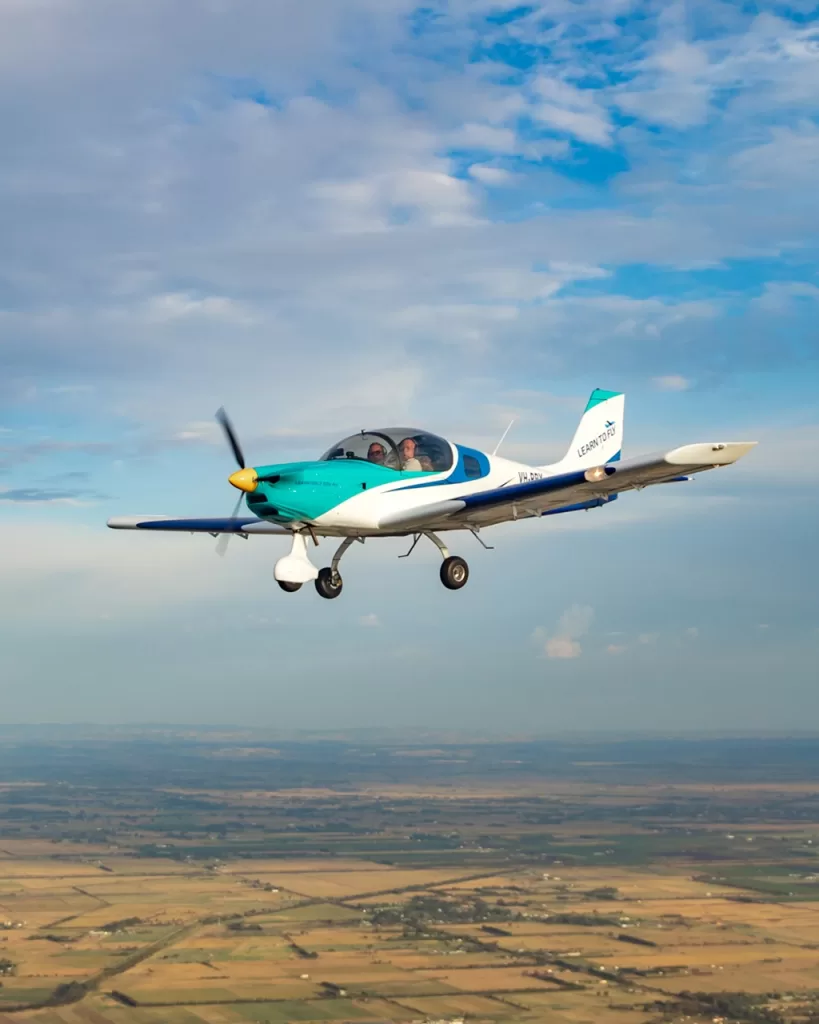
Day One, Meeting My Flight Instructor
Written on December 31st, 2020
Just like college tutors, Flight Instructors come from different backgrounds and vary in their fields of aviation expertise. For example, at my school, Learn To Fly in Melbourne, some instructors are experts at flight theory, and some specialise in Instrument Flight Rules (IFR) operations. They are all great instructors, and they all have a unique teaching style. This means that they are able to help different students in their own ways.
On my first day of flight training in Melbourne, I met my first Flight Instructor, Shannon. Shannon is a composed and knowledgeable pilot. On the first day of flight school, he showed me how to read the weather forecast. I loved the way he put together bits and pieces of weather information. It started with mean the sea-level pressure map on the Bureau of Meteorology website, so we had a big picture of what was going on with the weather. Following that, he explained how the weather on GAFs (Graphical Area Forecasts) corresponded to what was on the pressure charts. Then he referred to the TAFs (Terminal Area Forecasts) of the aerodromes on our planned route for a more close-up look. Just after that brief, I already felt that I could give a more persuasive forecast than most of the weather reporters do on TV.
Shannon may seem calm and composed on the outside, but he actually also has a warm and playful heart with a great sense of humour. The first aircraft I flew was the Sling 2 and as I recall, when Shannon demonstrated the pre-flight check, this was what he said:
“Now to measure the fuel quantity, we use what I call a high-tech measuring device.”
With a complete poker face, he took out a wooden stick with a measuring scale drawn on it. The corner of his lips lifted – in other words, he knew that his joke totally got me. There were times when I just did not get his punch lines. I could sense his disappointment in the awkward silence. However, it never stopped him from bringing some fun to the flight!
I feel lucky that Shannon was my first ever Flight Instructor, because that gave my flying career a really good start.
We would like to thank Mickey for contributing these journals on learning how to fly in Melbourne. Stay tuned for the next journal entry!
If you are interested in finding out more about our flight training courses and online learning options, email [email protected] or visit https://drift.me/learntofly/meeting to book a meeting and school tour.

Instrument Rating (IFR) Flight Training – A Whole New World Of Flying
We recently published a blog from airline Second Officer Vincent Mok, who talked about how important completing an Instrument Rating (IFR) flight training course was to his career. An Instrument Rating really does open up a whole new world of flying for you. It allows to you to plan and fly in a far greater range of light and weather conditions. No longer restricted to daylight and clear skies, it can also drastically reduce the time it takes you to build flight hours.
What is Instrument Flight Training?
Under Visual Flight Rules (VFR) conditions, the weather and light must be better than the visual meteorological conditions (VMC), as specified by CASA. You must be able to operate the aircraft with visual reference to the ground, and by visually avoiding obstructions and other aircraft.
Instrument Flight Rules (IFR) Flight Training teaches you to fly using the aircraft’s instruments rather than relying on visual cues. You will become an expert at communicating with Air Traffic Control (ATC). All of your aircraft’s procedures will become second nature to you. You will read your instruments as though you were actually looking at the information they provide physically.
During Instrument Rating training, pilots learn on both the simulator and in the actual aircraft. At Learn To Fly we have both the TRC 372 (Cessna 172) simulator and the Alsim AL42 (Diamond DA42) simulator. Both of these simulators recreate the full cockpit environment of each aircraft with highly realistic features and accurate instruments.
Learning in the simulator is a very effective method of training. Simulator hours are far less expensive that flying an actual aircraft. You can save money by perfecting procedures on the ground, which means there’s less chance of having to repeat them in the air. Simulators obviously also provide a highly safe environment to learn unfamiliar procedures.
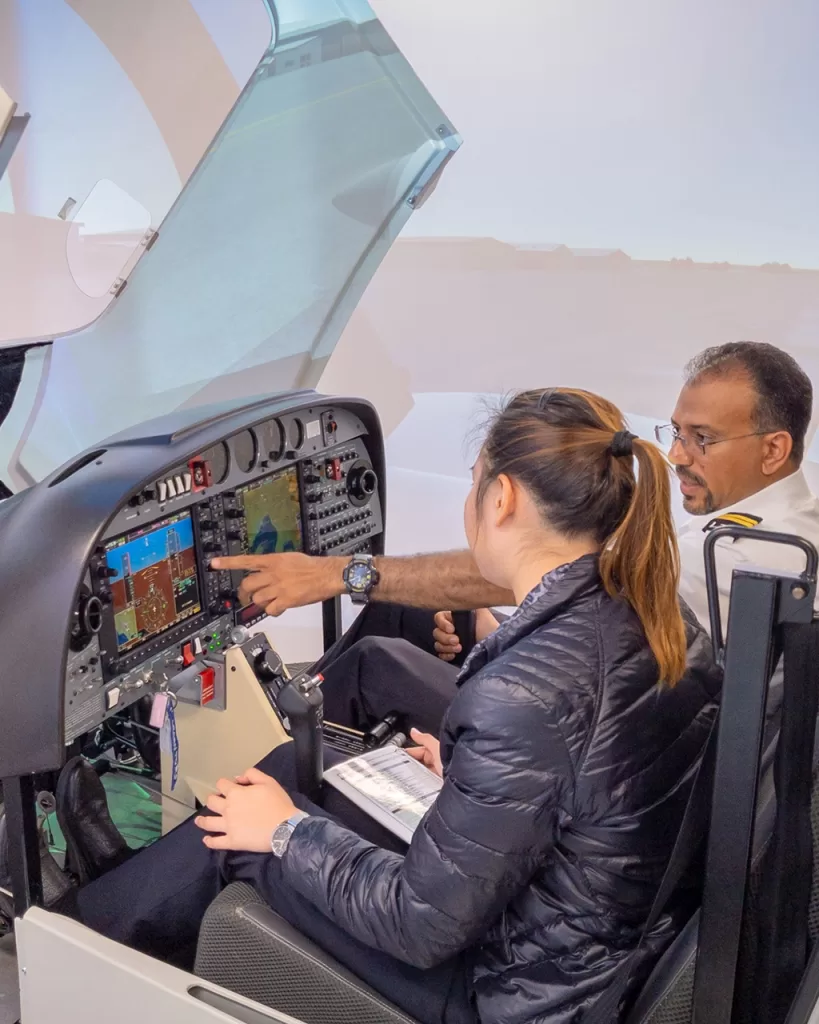
What Are the Benefits of Completing Instrument Flight Training?
Having to fly VFR means that you are limited with the number of hours you can fly, often based on things that are out of your control. When you are trying to build flight hours, it can be frustrating when changes in the weather cancel your flights. It can also be frustrating when other flights are delayed and you run out of daylight hours to go flying.
Completing an Instrument Rating training course will allow you to fly in the dark, and in most weather conditions. This means that you will be able to fly when others can’t, and you will build your flight hours far more quickly.
Pilots with IFR training are far more desirable to employers in most pilot roles. In fact for many pilot roles, including airlines, having an Instrument Rating is required.
Aside from the skillset and career benefits mentioned above, instrument flight training means that you can fly in some stunning conditions. You can enjoy the amazing sensation of soaring both through thick cloud, and above it. You can watch colourful sunsets from the sky, and cruise above sparkling city lights.
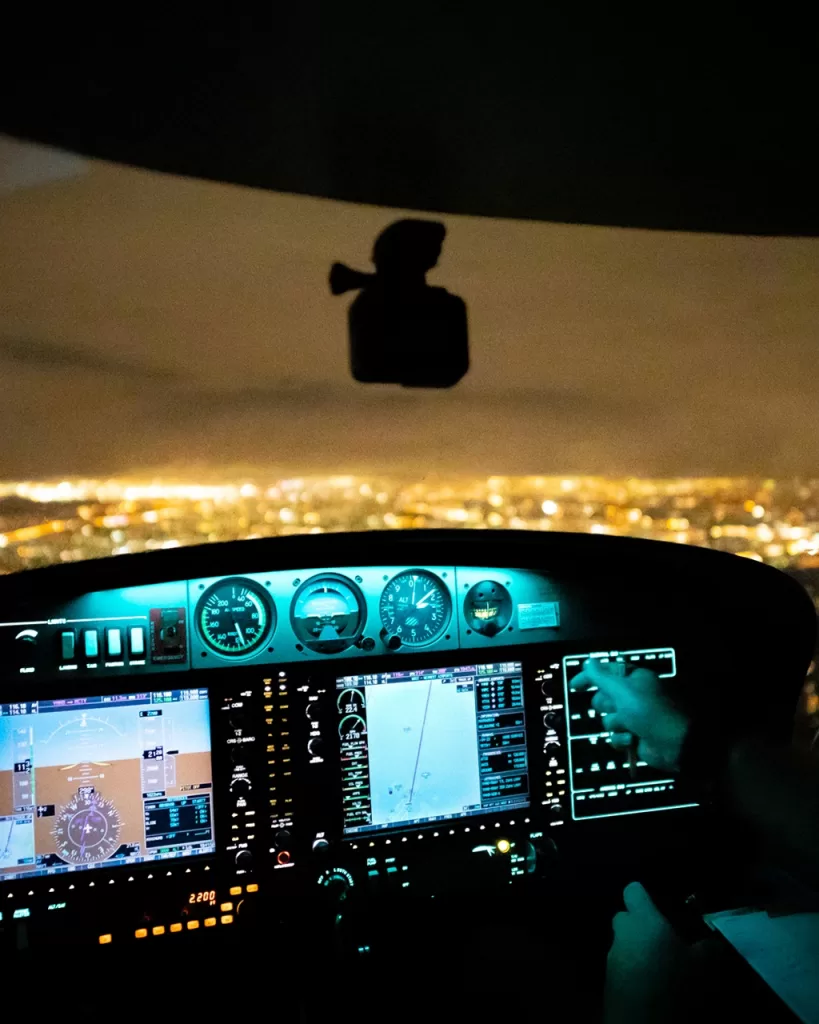
Meet Instrument Rating Training Graduate Mickey Wu
Taiwan student Mickey Wu has just completed his Commercial Pilot Licence, along with a Multi Engine Class Rating and Multi Engine Command Instrument Rating (MECIR), as well as 5 ATPL theory exams. He completed this in just 14 months, and he was unable to fly during 3 of those due to our forced coronavirus lockdown.
Following his amazing achievements, and before he jumped on a plane back to Taiwan, we had a chat to Mickey about his IFR training and his thoughts on the MECIR course.
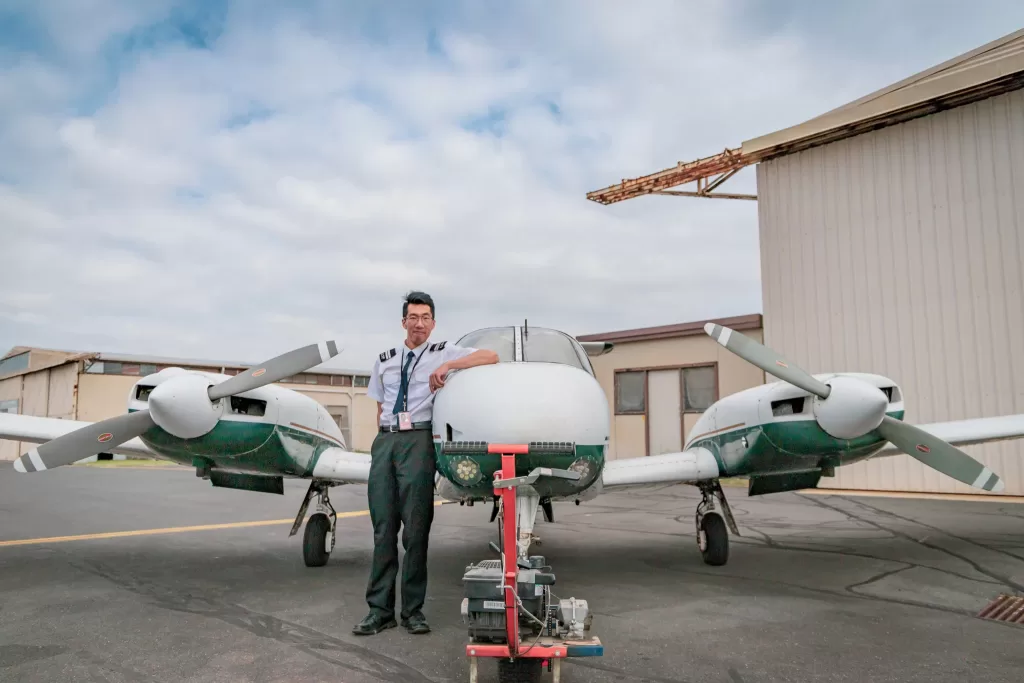
What are the main differences in flying during instrument flight training?
Instrument flight training is simpler, but not easier, if that makes sense. This is because it is all process and procedure based. Your planning is simpler. ATC provides you with more information. Learning all of the procedures is hard, and it feels like you are going right back to square 1 at the start. Once you are familiar with them however, everything just feels simpler. You feel like a real airline pilot.
What new skills have you learnt during IFR training?
I have developed a much larger understanding of ATC terminology. My communication skills and the my relationship with ATC has really improved. Instrument Rating training gives you hands-on experience with a lot of things that you learn in theory. Some of these things you might not use a lot in VFR flight. It’s a great feeling when you realise it’s not “just theory” anymore and you put your knowledge into practice.
How have you used the simulators to help with your training?
On the simulators you can train different types of approaches, and some are much harder than others. When you are training in a sim and you make a mistake or you want to do it again, you can just restart. It’s far more costly to do this in an actual aircraft. With my LTF instructor, we trained on the Alsim AL42 simulator as well as the G430 X-Plane simulator.
What are the benefits of completing an Instrument Rating?
Completing an Instrument Rating will allow me to build more hours quickly by flying in more conditions. It is required by the airlines, which is my ultimate goal. It will also make me more employable in other pilots roles, including becoming a Flight Instructor which I will find very rewarding.
Why would you recommend choosing Learn To Fly to complete an Instrument Rating course?
I have had the best year of my life in Australia at Learn To Fly. I really enjoyed the people and the atmosphere. The instructors are very supportive and come from a wide range of experience and backgrounds. At LTF you can choose from a range of reliable aircraft. You can choose to fly in a glass cockpit aircraft like the DA42, or an analogue cockpit like the Piper Seminole.
If you are interested in finding out more about our flight training courses and online learning options, email [email protected] or visit https://drift.me/learntofly/meeting to book a meeting and school tour.

Resilience – An Airline Pilot’s COVID Pandemic Experience
We’ve all seen a lot of news about how the COVID pandemic has affected airlines and airline pilots. Guest blogger and Second Officer Vincent Mok shares an airline pilot’s COVID pandemic experience.
“Resilience”
There were 20 round tables in a classroom the size of a basketball court. We found the specific light switch for the ceiling light at the front, leaving the rest of the room in a dark void.
“Don’t bother with name tags” the CRM instructor said.
This time last year, the same room was buzzing with activity and smelled like perfume and cologne as second officers, first officers, captains, junior flight attendants, flight pursers, senior pursers, chief customer managers and CRM instructors made introductions, all keen to find out what hypothetical in-flight emergency awaited us. Today, the 5 of us were greeted by the silent hum of the air conditioner as the smell of alcohol rub filled the void.
The CRM instructor wrote one word on the whiteboard.
“RESILIENCE”
A picture of an A350 oleo strut came into my mind. I hadn’t seen one for 2 months.
“What can you tell me about resilience?” the instructor asked.
“The ability to spring back like a landing gear, which I might not see again” I said.
“During these times with lockdowns and job losses, the uncertainty can cause our minds to ruminate into a dark corner.”
The instructor then led a discussion on Unhelpful Thinking Styles and how we could challenge them to become resilient professionals. As an airline pilot during the COVID pandemic, a resilient mindset is so important.
1. Mental Filter
Written on December 31st, 2020
As COVID took hold, flying schedules became scant and people lost jobs, I began to question my career decision to become an airline pilot.
“During times of stress, our minds have a tendency to focus on the negative and filter out the whole picture. This mental filtering is an unhelpful thinking style that can lead to stress, anxiety and depression.”
“You mean tunnel vision?”
“Yes. Instead of focusing on a small part of the situation and ignoring the rest, try to see the whole picture”
Tunnel vision had made me focus on the transient financial insecurity as a pilot during COVID and filtered out my reasons for leaving a high paying secure job. I’d forgotten that I’d left a 9-5 desk job in a little cubicle with no windows to see thunderstorms from above; to feel the rattle of the nose gear as the jet took off; to take my friends, family, strangers, and essential cargo like vaccines safely across the Pacific Ocean. The job satisfaction from airline flying is unique.
2. Jumping to Conclusions
“I realize that I love being an airline pilot, but with all the upcoming job cuts due to the COVID pandemic, I’ll lose my job in the next few months”
“You see, jumping to conclusions is unhelpful thinking” the instructor said. “You become too busy assuming that you fail to see the opportunities in the present.”
He continued to impart his wisdom.
“Rather than jumping to conclusions, focus on what you can control.”
“A resilient airline pilot knows they’re like an elite sportsperson who is ready to perform during competitions and has back-up options in case of injury.”
The opportunity presented to us while flying less is the free time to improve ourselves as pilots by practicing in the procedural trainer, reading operation manuals and learning more about the aircraft we fly. It also gives us the opportunity to pursue back-up options and other interests. Like elite sportspeople, many pilots have a second vocation to fall back on during economic lows while waiting to return to an airline job. I know of pilots who pursued their fitness goals, learned hydroponic farming, and built their CV through teaching.
“You don’t want to jump to conclusions then give up”.
3. Catastrophising
“OK, you’ve widened my perspective to see the positives and the opportunities. But with all the parked aircraft and no end in sight, I feel that the aviation industry is dying and it’ll never recover!”
“Don’t you think this is catastrophising? It is unhelpful thinking to blow things out of proportion. Instead try to look at the facts rationally.”
Aviation has suffered many setbacks throughout its history, from the Wright Flyer crash in 1908, to September 11 2001, and also the Global Financial Crisis in 2008. Although flying would never be the same after each crisis, it consequently led to advancements in efficiency and safety. Aviation will continue to evolve through each challenge, and pilots will always be there as safeguards.
Furthermore, history has shown that all pandemics end. There are already promising advancements with vaccines and scientists are also building their knowledge on COVID at a rapid pace. When it is safe to do so, people will return to the skies and the industry will bounce back.
“Aviation is dynamic. Resilient pilots stay rational through crisis and therefore prepare themselves for disruption through devotion to learning and self improvement”.
Looking To The Future
During these unprecedented times, resilience has never been so important. Part of it is in recognizing and also mitigating unhelpful thinking styles. When encountering a crisis, it helps to step back and look at all the evidence instead of mental filtering, jumping to conclusions and catastrophising. Adopting a positive attitude and eliminating unhelpful thinking styles helps us build resilience. This keeps us moving forward, not just as an airline pilot during the COVID pandemic, but in life as well.
For flying students, try to see the opportunities in the increased availability of aircraft. Think about the uncongested airspace, or unique experiences like being able to fly into Melbourne International Airport while a jet’s at the holding point. On one of my recent flights out of Sydney, ATC cleared us to overfly the Sydney Harbour Bridge. This is something that would usually only be reserved for special events (such as the recent Qantas Boeing B747 farewell flight).
As for the commercial future of airlines and airline pilots, there’s no doubt the world still needs aviation, and it will bounce back. There will be changes, which will most likely include more stringent health requirements for passengers. Initially, it’s likely that the first sectors to bounce back will be the domestic and cargo markets. Australia is similar to China in that COVID outbreaks have been well controlled. Post-COVID, China has actually seen an increase in domestic passengers already compared to last year. It’s looking very likely that Australian domestic flights will bounce back strongly very soon.
There is light at the end of the tunnel. In my opinion, there has never been a better time to pursue recreational flying or flight training.
We’d like to thank Vincent very much for providing this valuable insight into an airline pilot’s COVID pandemic experience. If you are interested in finding out more about our flight training courses and online learning options, email [email protected] or visit https://drift.me/learntofly/meeting to book a meeting and school tour.

Should I Start My Pilot Training During COVID?
The current pandemic has had an enormous negative impact on the aviation industry, so should you start your pilot training during COVID?
It’s obviously a fairly tough time for current pilots, with huge disruptions to domestic and international travel. Major carriers like Qantas, Singapore Airlines and Cathay Pacific have had to stand down thousands of employees. Sadly this has included even experienced airline pilots. Many people may think that starting pilot training now is risky, but we think the future is bright. Read on to find out why!
So if the aviation industry is struggling, why is it a great time to start your pilot training?
Firstly, becoming a pilot doesn’t happen instantly. It usually takes 15 to 18 months to be able to complete your pilot training to achieve your Commercial Pilot Licence (CPL). But that is just the initial training. If you are looking to become an airline pilot, you may need to have up to 1,500 hours of flying experience before you apply.
We anticipate that airlines will most likely start recruiting again in 3 to 4 years. Let’s break that down a little further to put it in some perspective:
First, let’s start with the 15-18 months CPL pilot training.
Once you obtain your CPL, most pilots will look for work (such as flight instructor) in the General Aviation Industry to gain experience and build hours. Let’s assume that you are able to work/fly 500-600 hours per year. To reach 1,500 hours might take you 3 years in itself.
We don’t yet know exactly what minimum hourly requirements airlines will have for direct entry positions when the industry peaks again. But whatever that minimum requirement is, starting your pilot training now during COVID gives you the best chance to be ready!
Why do we think that the industry will bounce back and that airlines will start recruiting again in 3-4 years?
There are a number of factors that indicate to us that the aviation industry will bounce back strong in the post-COVID world. In Australia, regional and domestic holiday hotspots are booking out. Those who are able to travel are travelling in high numbers. With higher vaccination rates, lockdowns will become a thing of the past. As more borders open, people will look to travel further abroad.
In China, reports indicate that the domestic aviation market has actually already recovered to surpass traffic numbers from before the pandemic struck. This will only continue on an upward trajectory. While international air travel may take longer to recover, demand for domestic flights is likely to bounce back very quickly in many places.
Another factor to consider is the retirement of older pilots. The International Air Transport Association (IATA) has remained consistent with their predictions of increased retirements over the next 5 to 15 years. It’s possible that the pandemic may actually accelerate these figures, with a number of pilots stood down deciding not to return to the industry.
But what about finding work straight after finishing pilot training during COVID?
Looking outside the airline industry, we are also confident that there will be many opportunities for pilots in General Aviation. Many students have had to put their pilot training on hold during COVID, but we are starting to see more enquiries from potential student pilots.
What this indicates is that the demand for Flight Instructors will remain strong. It’s likely to get even stronger as student numbers continue to build.
In Australia especially, it’s likely that there will be a boom in local tourism. This means that charter operations will see increased demand, and require pilots. Becoming a charter pilot is a great way to build hours after pilot training. It can also be an exciting career in itself.
How can I start pilot training during COVID?
During COVID we been hard at work to build an extensive online training platform that allows students to access high quality training even if they are unable to physically attend our training base.
Our online student portal has full theory courses available for RPL, PPL, CPL and IREX. These courses are taught by an experience instructor and can be accessed from anywhere in the world. The portal allows students to complete mock practice exams online as well.
In addition to this, we are regularly adding new content to our YouTube channel, We have RPL/PPL flying lessons, aircraft pre-flight check videos, and more. Click the button below to subscribe!
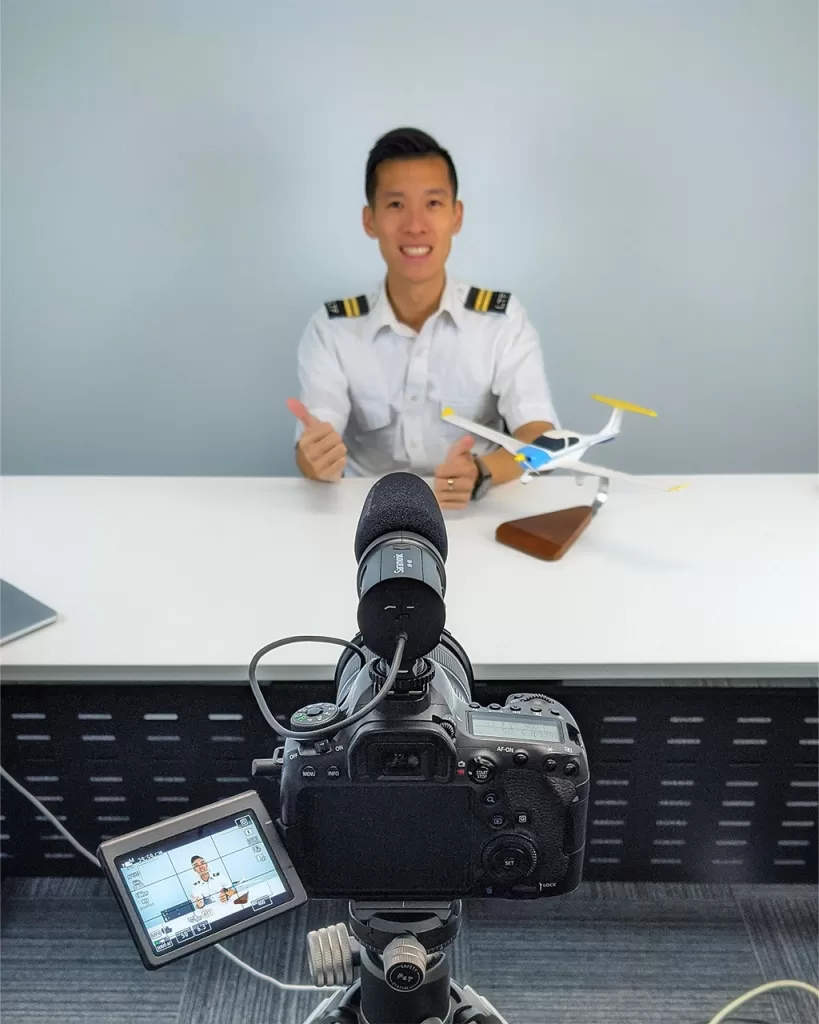
To find out more about pilot training during COVID or to register your interest please email [email protected]/en. You can also go to https://drift.me/learntofly/meeting to book a meeting and school tour.
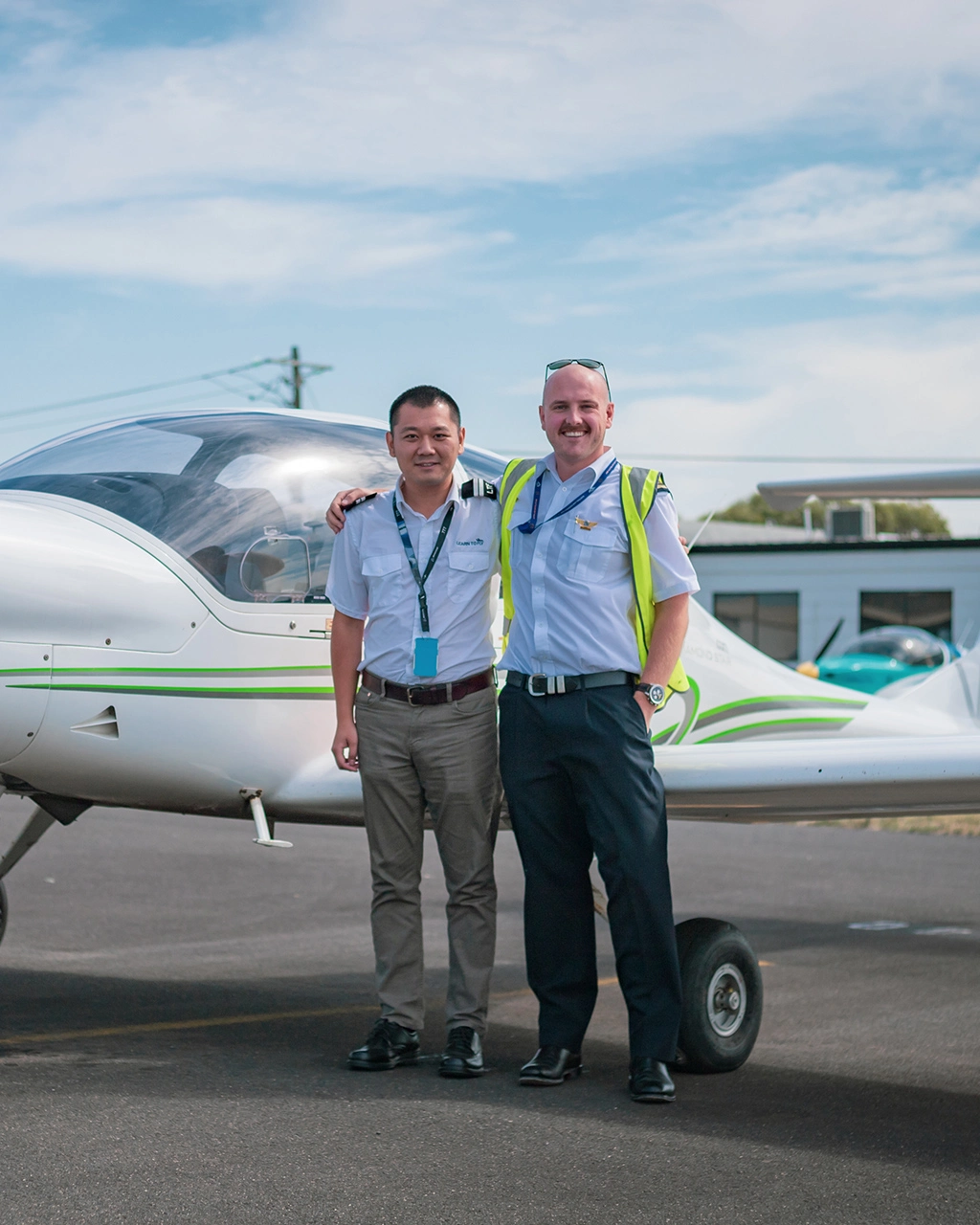
Flight Instructor Rating – A Flying Start To Your Pilot Career
After completing your Commercial Pilot Licence (CPL), you are ready to start your career as a pilot. Whilst there are a range of exciting pathways that await you, the best way to give your pilot career a flying start is by completing a Flight Instructor Rating (FIR) course. In this blog we will talk about the Flight Instructor Rating course itself, and why it is such a great way to give your pilot career the flying start it needs.
What Is A Flight Instructor Rating?
The Flight Instructor Rating (FIR) course teaches you all the necessary skills to conduct flight training and develop the next generation of future pilots. Our course includes 35 hours of flight training as well as comprehensive ground briefing training so that you will be able to effectively instruct in both practical and theoretical settings.
The syllabus includes:
1. PMI Theory
Principle and Methods of Instruction (PMI) is an important part of the syllabus, as it teaches you how to teach. You’ll build your confidence as both a person and a pilot, learning how to effectively deliver training in the classroom and in the air to range of personality types, and to students with different learning profiles. It also includes a mandatory CASA PMI exam.
2. Flight Instructor Rating Ground Theory
Ground theory involves conducting long briefs, pre-flight briefings, formulating lesson plans and using training aids (like multimedia/PowerPoint) to conduct interesting and effective lessons based on real flight training syllabus and utilising the techniques learnt during PMI. Students receive detailed feedback from classmates and highly experienced flight instructors throughout.
3. Flight Instructor Rating Practical Flight Training
During practical flight training students will conduct 35 hours of dual flight instructor training that includes a highly experienced instructor role playing as your student. You need to demonstrate that you are able to analyse student responses, provide appropriate feedback and determine when to take corrective measures, as well as conducting pre-flight briefings and post-flight debriefings.
4. Aerobatics/Spinning Endorsement & Optional Qualifications
The LTF course includes aerobatics and spinning endorsement manoeuvre training in an aerobatics-rated aircraft. You can also opt to include additional training endorsements like Multi-Engine, Instrument rating, and/or Night VFR.
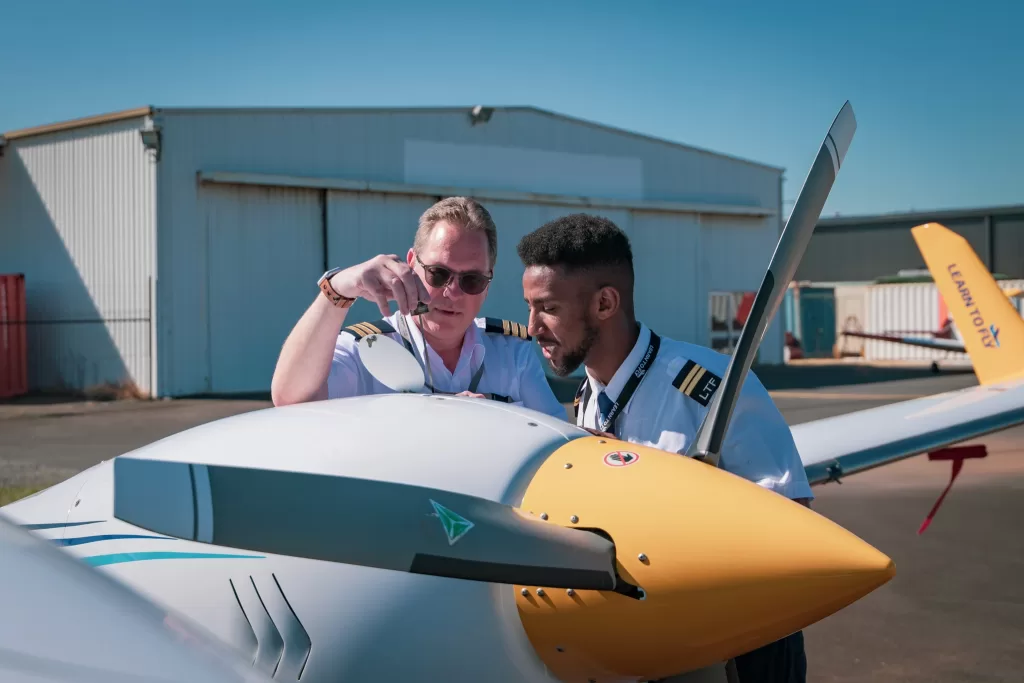
How Can The Flight Instructor Rating Kickstart Your Career?
Obtaining a Flight Instructor Rating (FIR) is a rewarding and exciting challenge for any pilot. The skills you learn will not only make you an effective flight trainer, but a better pilot in general. On top of that, a FIR can really open up your pilot career opportunities, and not just in flight training. Here’s how:
1. Get Paid To Build Flight Hours
Many popular pilot career options require that have a minimum number of flight hours under your belt. This includes airlines, private and commercial charter work and air ambulance roles to name a few. Becoming a Flight Instructor is one of the easiest and quickest ways to build your flight hours in preparation for the next step in your career. And the best part about it? You actually get paid to do it!
2. More Job Opportunities
A Grade 3 Flight Instructor role is an easy role for you to step into straight away after your training. Job availability is also generally higher than many other pilot jobs. We have a number of LTF instructors who completed our Flight Instructor Rating course, then joined our flight training team. Flight Instructor work is also a highly desirable asset to have on your resume when you are looking at the next step in your career – airlines in particular will look for it.
3. Professional Development
While working as a Flight Instructor you will have varied training experiences. You can also further expand your qualification and skillset by completing additional ratings, endorsements, and training endorsements. On top of that, you can progress yourself as a trainer by moving up to Grade 2, Grade 1 and even Flight Examiner level.
4. More Job Security
With the 2020 COVID19 pandemic, aviation was thrown into chaos. During this time, Flight Instructors saw far greater job security than other pilot roles. If you have a Flight Instructor Rating but have moved on in your career to other things, there is nothing stopping you from coming back to flight training if you need to. We saw many experienced pilots (including airline pilots) stepping back into instructor roles during the pandemic.
Can Flight Instructing Be A Career?
1. Grade 1 & Grade 2 Flight Instructor
You will start as a Grade 3 instructor after completing your Flight Instructor Rating, but you can progress your career by moving on to Grade 2 and then Grade 1 status respectively. As you progress through each grade you can take on more roles and responsibilities, which also expands the options available to build flying hours.
2. Additional Training Endorsements
While working as a Flight Instructor, you have the opportunity to undertake a range of training endorsements, allowing you to teach students in more varied flight activities including Night VFR, Multi-Engine, Instrument Rating, Aerobatics & Spinning and Design Features. This even further expands the ways in which you can build hours.
3. Grade 1 & Grade 2 Training Endorsements
Grade 1 and Grade 2 Training Endorsements offer you even more flexibility in your role as a Flight Instructor, by allowing you to teach other flight instructors at higher levels. They also allow you to take on more supervisory roles within a flight school.
4. Flight Examiner
Once you have been a Grade 1 Flight Instructor for a year and meet certain other CASA requirements, you can apply to become a Flight Examiner. Being a Flight Examiner means that you can conduct final licence flight tests for student pilots. This increases your earning capacity and gives you another avenue to diversify in your flight training career.
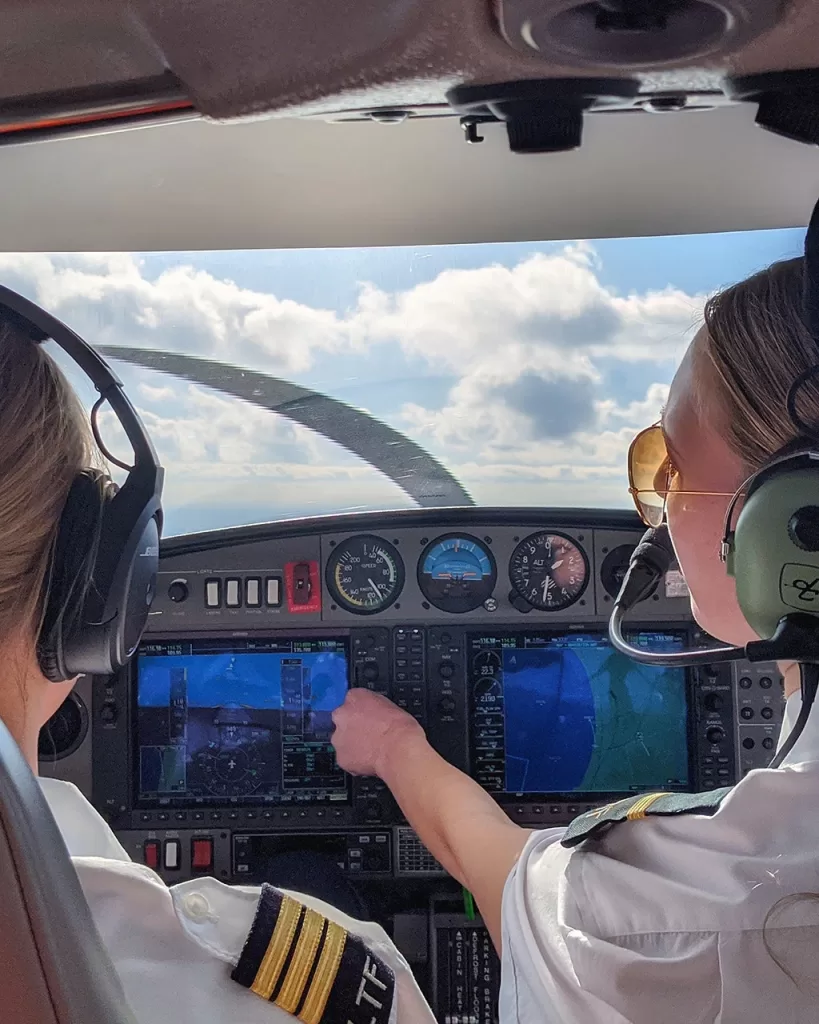
To register your interest in a Flight Instructor Rating with Learn To Fly, email [email protected] or visit https://drift.me/learntofly/meeting to book a meeting and school tour.

An Airline Cadet Pilot’s Road To The Line
Now flying an Airbus A350 for a major international airline, Second Officer Vincent Mok looks back on his airline cadet pilot journey and shares some of his experiences. In his first guest blog, he talked about his airline cadet pilot training. If you missed that you can read it here. In this edition, he discusses the next step – the road to the line!
Week 1: “The Honeymoon”
Within the space of a week, barely enough time to recover from the graduation party, we went from being the most respected gold-bar-on-the-shoulders seniors at airline cadet pilot school, to the most junior fresh pilots at the airline headquarters. It took 20 weeks to transform into a line pilot.
Day one at the airline started with a buffet breakfast with the chief pilots. With the same hands that commanded many heavy jets around the world, they opened a small envelope and brought out a piece of paper with the company logo at the top.
“Who’s Vincent?”
I put my hand up and gulped down the partially chewed fried egg in my mouth.
“Airbus.”
It was no longer flying the Slings, Foxbats, Diamond DA40s, Cessna 172s or the Diamond DA42 Twinstar. The link between my fingers and the ailerons will no longer be a few mechanical rods. Instead, a twitch of my finger will send digital signals through a myriad of wires connecting stacks of computers conferring at the speed of light whether they will grant the wish of that finger twitch. I’d be flying the Airbus A350.
There were two days of Safety School during the Honeymoon week. We trained for evacuation through various tasks:
1 Retrieve Snoopy the dummy from a smoke-filled cabin mock-up after donning a smoke-hood
2 Operate aircraft doors
3 Jump down an inflated 2-storey-high slide (which isn’t as easy as the “safety cards in the seat pockets in front of you” suggest)
4 Drag a classmate across a 25m swimming pool
5 Drag the same classmate from the pool into an inflatable life-raft
6 Set up shelter in the life-raft
The last day of the Honeymoon week was “new joiners’ day”. We broke ice with new joiners from other departments. We played games, toured the simulator building and maintenance hangars.
“Your accent sounds funny,” said the maintenance hangar tour-guide.
“I grew up in Australia”.
“People will start thinking you’re a pilot with that accent”.
Instead of saying “you’ve just met a pilot”, I grinned nervously. The upcoming schedule was ruminating in my mind.
Weeks 2 – 3: Ground School
At airline cadet pilot school, we had 20 weeks to digest ATPL theory. The Airbus ground school was 2 weeks. We had to put everything we’ve learned, from airline interview preparation to cadet school theory classes, to full use.
Tip: Take the time to completely understand the aviation theory taught at interview training and airline cadet pilot school. Your future self will appreciate it.
The course consisted of:
- Computer based training on a dedicated laptop where a monotonous voice explained the operation of all the A350 systems.
- Study guide of questions, all of which we need to answer before the end of the course.
- Technical briefings by our instructor, an experienced Airbus engineer.
- Use of a fixed base procedural trainer where we learned Standard Operating Procedures and dissected the function of all the buttons and switches.
I once thought the Diamond DA40 Aircraft Flight Manual was extensive until I started studying the airline manuals. To list a few of them:
- Flight crew operating manual (7000 pages FCOM)
- Flight crew techniques manual (500 pages FCTM)
- Quick Reference Handbook (90 pages QRH)
- Minimum Equipment list (2000 pages MEL)
- Operations Manual: Policy, Procedures and Requirements (1000 pages)
Tip: You don’t have to be a “walking FCOM”. Memorise the safety critical information and know where to find the rest.
Weeks 4 – 10: Simulator Training
Simulator training commenced at 10pm the day after we passed our ground school exams.
The first session was in a full motion A350 simulator and is similar to the “Effects of Control” lesson. The most challenging aspect was handling the momentum during landing. If we flared like a DA40, the jet will float and run out of runway. If we flared too little too late, our buttocks would learn a lesson as if the instructor hit them with a paper FCOM.
The remainder of the simulator sessions consisted of normal and non-normal training, each lasting 4 hours.
Tip: Spend plenty of time rehearsing each lesson in advance on a “paper flight deck”
The goal of normal procedures training was to learn the Standard Operating Procedures and associated manual handling. There were:
- 4 sessions in the fixed based procedural trainer
- 4 sessions in a full motion simulator
The non-normal training included handling failures (e.g. engine failures, electrical failure, hydraulic failure, decompression) including their associated ECAM actions, decision making and manual handling. There were:
- 3 sessions in the fixed based procedural trainer
- 5 sessions in a full motion simulator
Our final two airline cadet pilot simulator sessions consisted of low visibility operations and performance based navigation training and general revision for the upcoming type rating and instrument rating.
For our type rating and instrument rating in the simulator, we had to demonstrate to the senior training captain our proficiency in rejected take off, takeoff, go-around, diversion, hold, and landing in manual flight as well as with automatics (autopilot and autothrust).
Weeks 11 – 20: Line Training
“Where’d you go for lunch today?”
“I went to Korea”
The observation flight you do will be one of the most memorable of your career. You’ve trained for 14 months as an airline cadet pilot and finally get to sit back and observe the masters at work over a sandwich or two. I went to Seoul. After observing the first sector, I had a Bibimbap over a 2 hour lunch and bought some Kimchi with my meal voucher. I was a school kid on my first excursion.
Line training is about learning to fly safely, legally and efficiently in a multi-crew operation. It consisted of 10 sectors and took me to multiple exciting destinations including:
- Auckland
- Melbourne
- Sydney
- Barcelona
- Washington DC
- Brisbane
The 17 month journey from the beginning of airline cadet pilot school to the line check was full of challenges and triumphs. I made many lifelong friends and learned a lot about resilience, persistence and comradery.
I was lucky to have the ongoing support of my mentors including Darren McPherson from ACS – Aviation Consulting Services as well as my family and friends. Realising my dream would have been impossible without them. If your dream is to be an airline pilot, certainly consider the airline cadet pilot pathway.
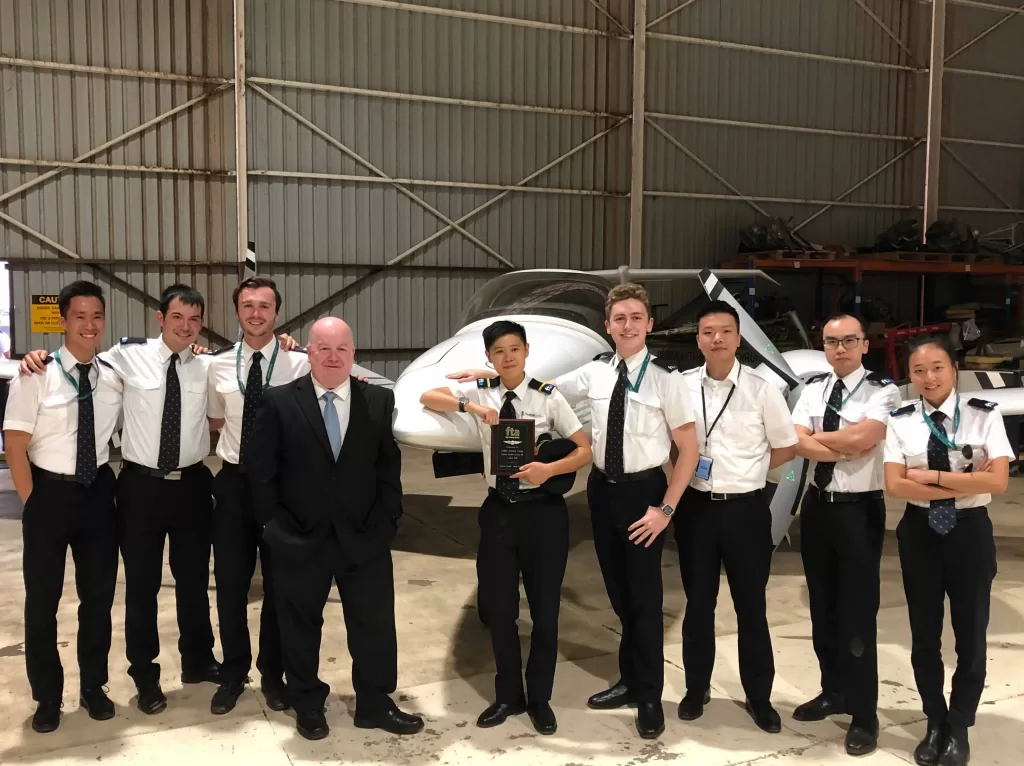
We’d like to thank Vincent very much for contributing these fantastic blogs on his airline cadet pilot journey. If you are interested in finding out more about our flight training courses and online learning options, email [email protected] or visit https://drift.me/learntofly/meeting to book a meeting and school tour.

Flight Training With Microsoft Flight Simulator 2020
The wait is finally over! Microsoft Flight Simulator 2020 was released globally today (August 18th 2020), and it is packed with some pretty amazing features to further your flight training.
Flight simulation has advanced a LOT – in the last 10 years especially – and what was once considered a bit of a fun game is actually now very useful for actual flight training. In this blog we take a look at some of the things Microsoft Flight Simulator 2020 offers. We will also look at how you can use it to further your flight training.
System Requirements
To be able to make the most out of the Microsoft Flight Simulator 2020 experience, you’ll need a pretty powerful PC. Microsoft recommends an Intel i5-8400 or AMD Ryzen 5 1500X CPU, Nvidia GTX 970 or AMD Radeon RX 590 graphics, 4GB of VRAM, 16GB of RAM, and a 20Mbps download speed. For more info head to https://www.windowscentral.com/microsoft-flight-simulator
There will also be a simplified version released on Xbox, with further details on that available soon. Virtual Reality (VR) support is also on the way, which will make both the experience in general and the training possibilities even greater.
Aircraft in Microsoft Flight Simulator 2020
Microsoft Flight Simulator 2020 boasts an impressive list of aircraft. We’re thrilled to see that the Diamond DA40 aircraft that we train with has been included, along with the Cessna 172. The cockpit environments are highly realistic and detailed, which makes this program even more valuable for flight training.

For the more adventurous, you can take the controls of a Pitts Special aerobatics aircraft. Or how about a Boeing B787 Dreamliner? For a full list of aircraft, check out this article https://www.tomsguide.com/news/microsoft-flight-simulator
Airports & Environments
Now let’s talk about airports, because this is where it gets REALLY impressive. You can take off and land from over 37,000 airports around the world. What excited us the most was that the airport list includes our very own Moorabbin Airport (YMMB) in Melbourne.
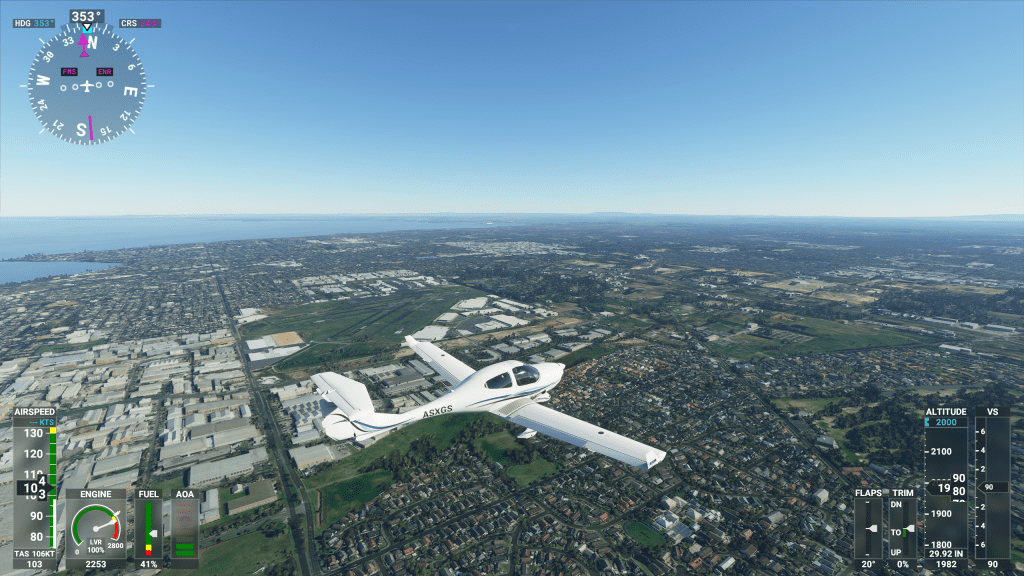
The level of detail for airports and their surrounding environments in Microsoft Flight Simulator 2020 are a sight to behold. Of course, the weather effects are also exciting. You can fly in a full range of light and visibility conditions across day and night. Weather has a significant and highly realistic impact on the performance of your aircraft (including turbulence).
Check out this awesome video of a Melbourne City Orbit flight from YMMB in a Diamond DA40.
Using Microsoft Flight Simulator 2020 For Flight Training
To give you the best information on exactly how Microsoft Flight Simulator 2020 can be used for your actual flight training, we asked Learn To Fly Flight Instructor David Marien:
“I find flight simulators extremely useful, particularly for maintaining existing skills. I personally use them to practice my instrument approaches and approach plates, briefings and instructing methods. Students can use a simulator to revise and perfect processes and checks for manoeuvres they have already learned with their instructor in an actual aircraft. Circuits, practice forced landings and precautionary search are all excellent examples of procedures where frequent practice on an advanced simulator is highly beneficial to training. Flight simulation also allows you to keep the pilot mindset active until you can return to real flying. Until then, Microsoft Flight Simulator 2020 is a highly realistic and highly valuable flight training tool”
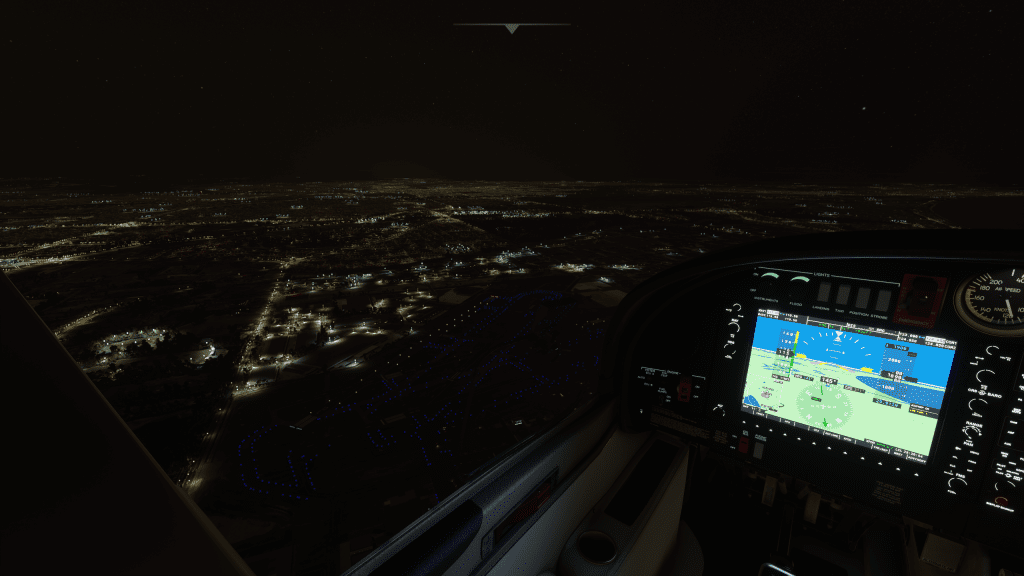
Take Your Flight Training To The Next Level Online
With the COVID-19 pandemic still affecting life, we have no guarantees on when flight training will be back to normal. For our overseas students in particular, there are doubts over exactly when it will be possible to travel to Australia for flight training.
We have been working hard to develop our state-of-the-art Online Student Portal, which allows students to continue their training at a level not yet offered by any other flight schools in Australia. We are Australia’s first flight school to adopt the hi-tech V360E virtual cockpit procedural training platform. RPL, PPL, CPL and Airline Pilot Interview theory course can now also be completed online.
When you combine the training available on our portal with a highly realistic flight sim like Microsoft Flight Simulator 2020, there are many opportunities to both keep your skills sharp, and advance your training even further from the comfort of your own home.
To find out how our online training options can help you, please email [email protected]/en or visit https://drift.me/learntofly/meeting to book a meeting and school tour.
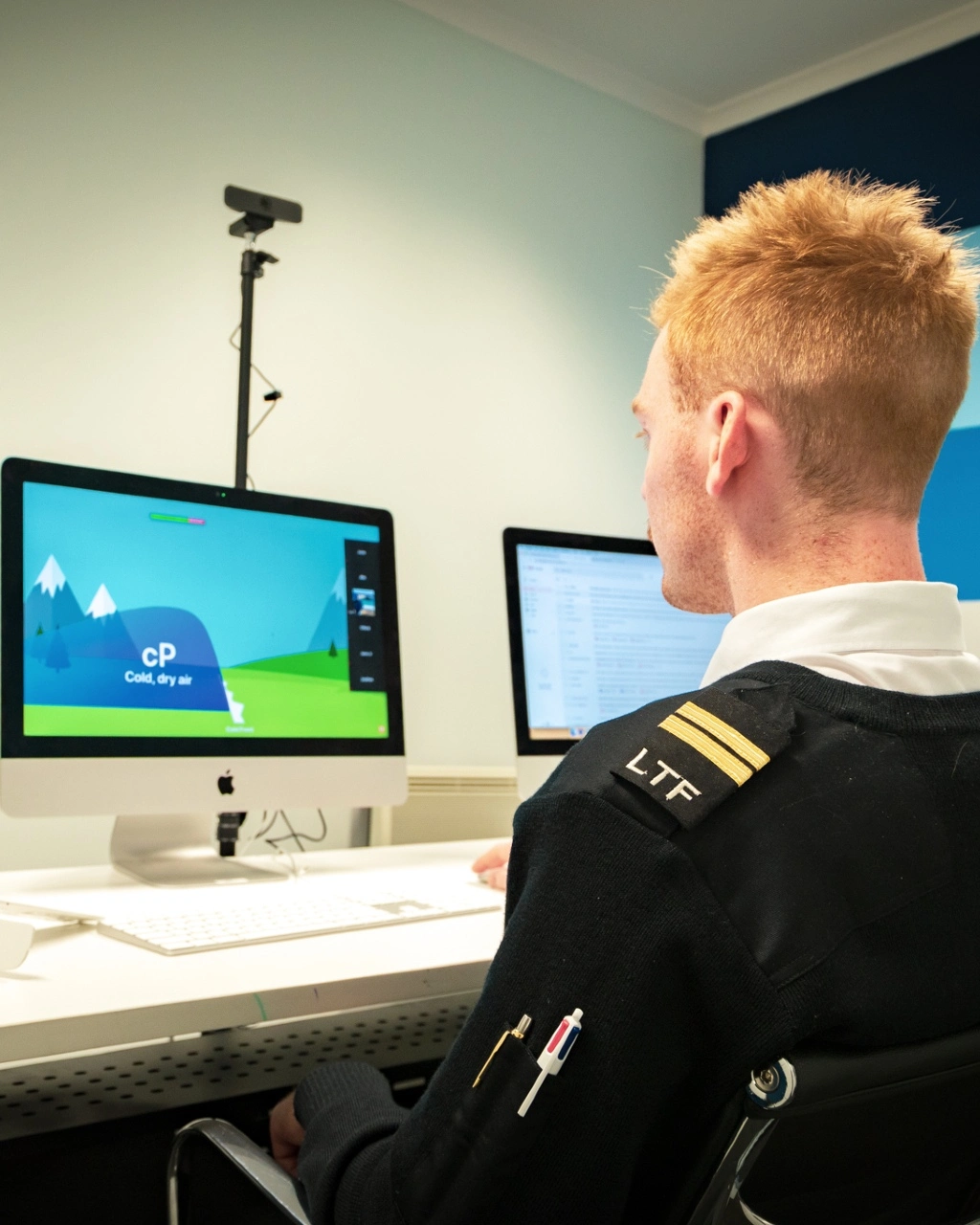
Enter The World Of Online Flight Training
Check and Training Captain Darren McPherson from ACS – Aviation Consulting Services discusses how modern technology is changing the game for student pilots, with a range of new options for online flight training.
Many define learning as a “change in behaviour from previous experience”. This definition has existed for as long as teachers have been teaching and as long as students have been learning. This approach continues to be one of the longest and most established definitions when we take part in any form of education.
Moving With The Times
As times advance so do technologies, and the standards and methods by which we learn also continue to evolve. The traditional concept of learning in a physical classroom setting with your teacher and classmates has moved forward. The classroom of the future is very much digital, with modern flight training technology providing great opportunities for flexible learning.
We can now communicate faster than ever with each other globally from telephones, personal tablets, laptops and other devices from almost anywhere. These devices give us instant and worldwide access via applications such as Skype, Facetime, Whatsapp, as well as more dedicated software that has become widely available.
Zoom Meeting and other similar online software has become increasingly popular during the COVID-19 pandemic and is widely used for video, audio, and file sharing. This software has allowed for crossing of borders and time zones globally with uses ranging from personal chit-chat through to various forms of sophisticated classroom learning.
A Changing Flight Training Landscape
At Learn To Fly, we actively look at ways to further our capabilities, by embracing modern flight training technology and combining it with software such as Zoom Meeting. Whilst the pandemic has presented us with enormous challenges in the education landscape, it has also forced us to find new ways to reach more people.
We now offer online distance learning via Zoom for a wide range of courses. These include theory sessions in a “live online classroom” environment all the way through to the varied and advanced levels of airline interview preparation, technical subject reviews and more recently flight instructor training.
In addition to live online classes, we have entire theory courses for RPL, PPL, CPL and IREX available via online subscription. These courses contain comprehensive video theory lessons presented by an experienced flight instructor. Online flight training subscriptions allow students to access videos for 12 months. Practice exams are also available as part of the subscription package.
These options allow us to provide students with the opportunity to complete online flight training from wherever they are in the world. They also provide a choice for students that may be in a different time zone, or have other time constraints.
The Learn To Fly Student Portal
Our online student portal has evolved to be one of the most comprehensive training experiences offered by any flight school in Australia. The modern flight training technology we offer extends beyond just Zoom Meeting classes and online video subscription.
We have recently become the first flight school in Australia to adopt the Aviation eLearning V360E platform, which provides students with a 360 degree cockpit environment. Within the V360E cockpit, students can run through all of their procedures in the aircraft of their choice. Each step is outlined in detail with imagery/video and text, enhancing both the experience and the quality of the training.
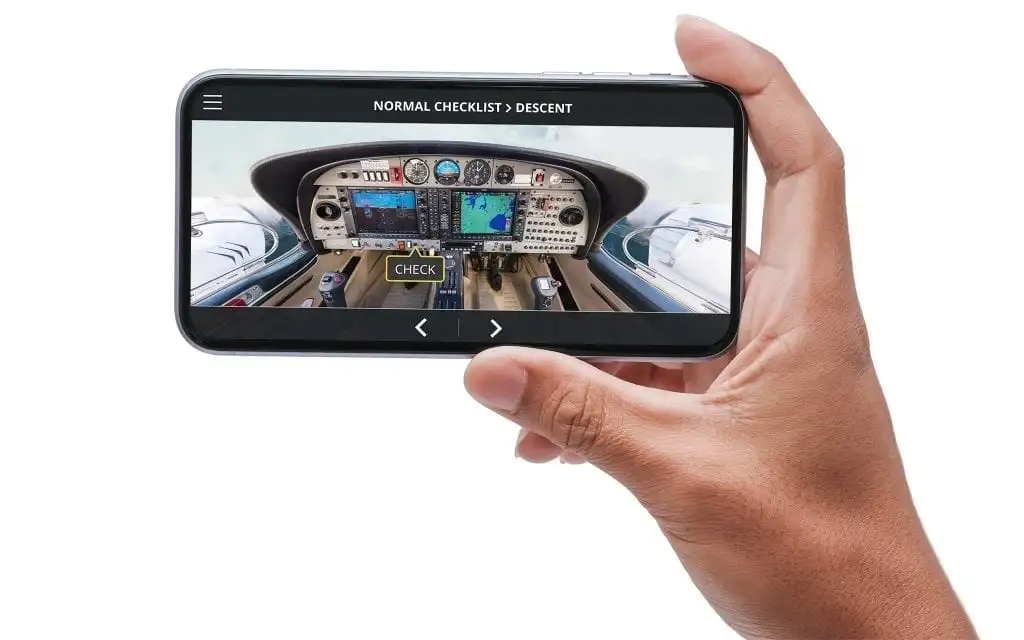
Students that are flying with us can track their progress through both the practical and theory syllabus for each of our courses, and complete mock practice exams before attempting the actual exams themselves. This area of the portal also allows instructors to provide feedback to their students as they learn.
Our reach has extended from Australia outwards to multiple countries within Asia, Africa, Europe, and the United States. We’ve even gone as far as the South Pole!

We will continue to push the boundaries by exploring online flight training technology and distance learning platforms. Whilst the current pandemic has hindered our ability to do many things, don’t let it hinder your future goals and flight training objectives.
Captain Darren McPherson from ACS – Aviation Consulting Services is a Check and Training Captain with a major international airline, with over 30 years of industry experience. We are proud to offer a range of highly successful airline pilot interview preparation courses taught by Darren. For more information head to https://learntofly.com.hk/en/airline-interview-preparation-programs/
To find out more about our online flight training options and our state-of-the-art student portal, email [email protected] or visit https://drift.me/learntofly/meeting to book a meeting and school tour.
Online Flight Training Right On Our YouTube Channel!
Learn To Fly’s YouTube channel is another great source of information for online flight training. Here you can find pre-flight check videos for our aircraft, as well as a range of flying lessons. This is a resource that we will continue to build, so make sure you click below to subscribe!

Airline Pilot Guest Blog – Why You Should Consider An Instrument Rating Course
Now flying an Airbus A350 for a major international airline, Second Officer Vincent Mok discusses why an Instrument Rating course is so important. He also provides some handy tips on the must-have tools to look at before your first lesson.
All pilots should consider completing an Instrument Rating course which will enable them to fly in Instrument Flight Rules (IFR) conditions. Not only is it an essential step in a professional pilot’s career, but also an invaluable skill for every private pilot because of:
1. Safety
Even though entering cloud or flying in reduced visibility should not happen with adequate planning, Visual Flight Rules (VFR) pilots can still make this fatal mistake. Completing an Instrument Rating course gives you the option of upgrading to Instrument Flight Rules (IFR) for an additional margin of safety.
2. Efficiency
Some seasons are bad for VFR flying. An Instrument Rating increases the likelihood of being able to get to your destination all year round. If you are still training or building hours, completing an Instrument Rating course will allow you build hours and experience faster, with more available days to fly.
3. The Views
There’s just something magical about flying next to clouds, and of course those amazing city views at night!
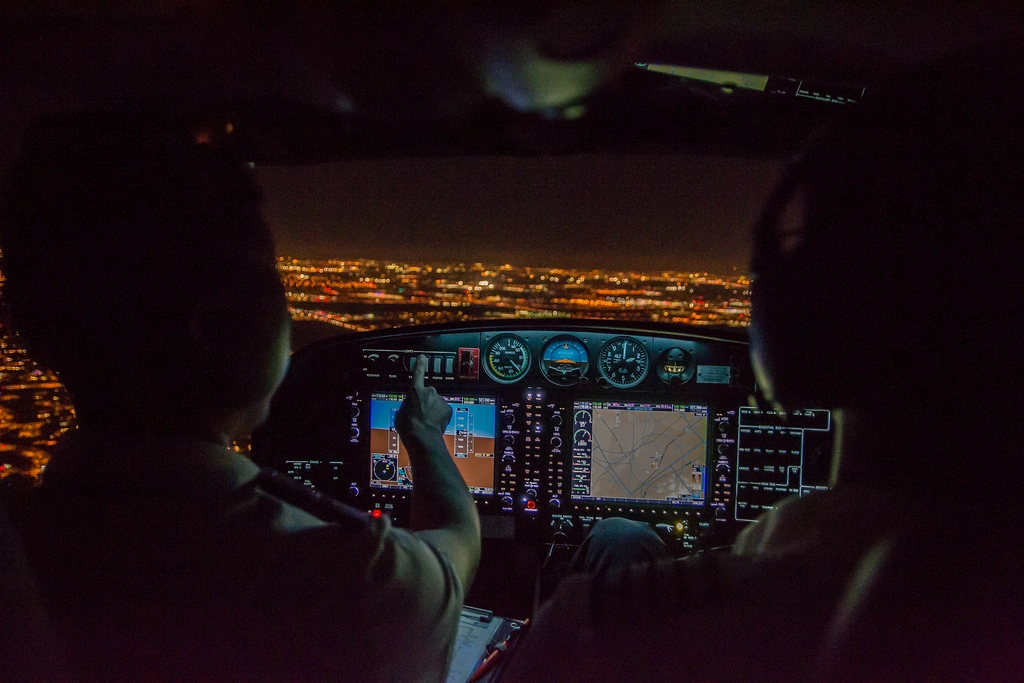
I’d like to share with you the tools I used during cadet pilot school that helped me get the most out of my first Instrument Rating flying lesson. They were also essential for my ongoing progress throughout the Instrument Rating course:
1. IFR Cheat Sheet
This free resource (link: weflyplanes.com.au) will be an invaluable tool for your IFR flying. You should be familiar with the whole document before your Instrument Rating course exam and check flight. However in the meantime, you should focus on the following sections initially:
Phraseology
IFR radio calls are slightly different to VFR but are something you can nail before your first flight. You will get more out of IFR flying if you can communicate with Air Traffic Control (ATC) professionally early on.
Alternate Requirements
Knowing these is crucial for IFR flight planning. Use these to check the TAFs (Terminal Area Forecasts), NOTAMs (Notices to Airmen), and aerodrome charts to make sure it’s safe and legal to fly IFR.
Holding Patterns
A competently flown hold is the bread and butter of IFR flying. You should understand holding patterns and sector entries well enough to teach it to other students!
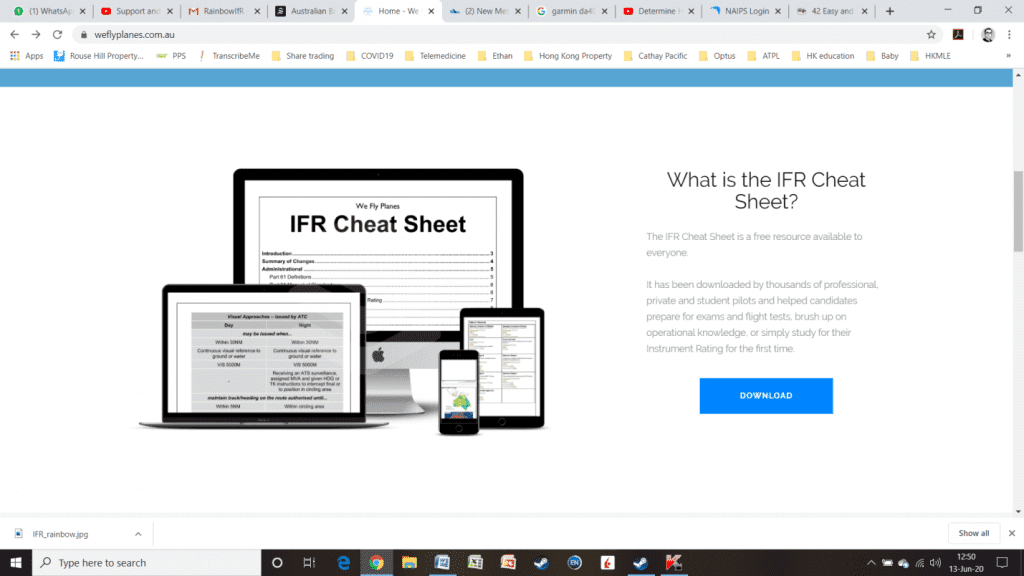
2. Captain Joe’s Sector Entry Tips
While the IFR cheat sheet is great for learning the theory, Captain Joe (link: https://youtu.be/szkZ9VaNfrc) tells you how to fly it. My instructor was amazed at how fast I could work out sector entries during my first IFR flight! Make sure you watch this a few times!
3. G1000 Simulator
Flight simulators are a lot more useful for IFR flights compared with VFR. I practiced sector entries and flew the entire sortie on my laptop before my first IFR lesson. I’d tried X-Plane 11, Flight Simulator X but found the best trainer for IFR procedures was the G1000 Integrated Flight Deck Trainer (link: https://www.mypilotstore.com/mypilotstore/sep/5990).
Learn To Fly also operates a state-of-the-art Alsim AL42 simulator. This simulator provides a highly realistic cockpit environment based on the Diamond DA42 aircraft.
We’d like to thank Vincent very much for contributing this fantastic blog on the importance of completing an Instrument Rating course. Stay tuned for Vincent’s next guest blog on his journey to becoming an airline pilot.
Vincent was successful in his cadet pilot application after completing airline pilot interview preparation courses with Captain Darren McPherson from ACS – Aviation Consulting Services. Darren is a Check and Training Captain with a major international airline, with over 30 years of industry experience. We are proud to offer a range of highly successful airline pilot interview preparation courses taught by Darren. For more information head to https://learntofly.com.hk/en/airline-interview-preparation-programs/
To find out more about completing an Instrument Rating Course, email [email protected] or visit https://drift.me/learntofly/meeting to book a meeting and school tour.
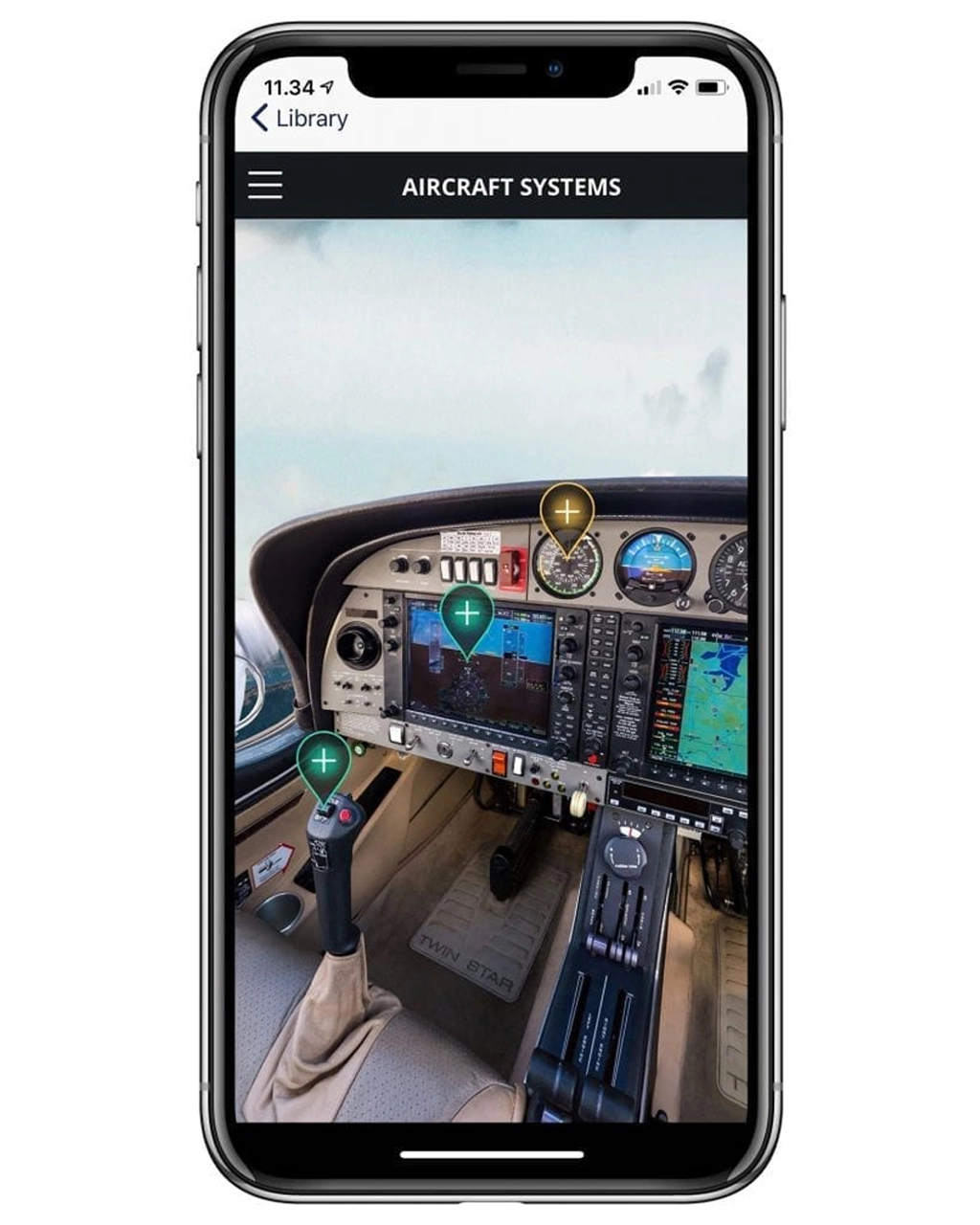
V360E Virtual Cockpit Training Lands In Australia With Learn To Fly Melbourne
Media Release: Aviation eLearning, the Copenhagen-based company behind the Virtual 360E Editor (V360E), gladly announces that V360E has reached Australia. Premier flight school Learn to Fly Melbourne is the first in the region to use V360E virtual cockpit training technology.
Embracing Technology With the V360E Virtual Cockpit Experience
V360E is a platform for creating and distributing virtual flight training modules as well as non-aircraft virtual training. Learn to Fly CEO Kai Li shares that V360E matches the school’s aim to provide cost-effective training that allows aspirants to reach flying goals faster.
“V360E lets us customise our own aircraft procedures. Our instructors love it, and the best part, our students can also access unlimited cockpit experience in the smartest way imaginable, from anywhere in the world”, Kai explains.
Learn to Fly instructors collaborate in the V360E virtual cockpit platform to build their aircraft procedures. Each procedure is set within a 360 degree photo of the exact same aircraft Learn to Fly students use for training. This setup boosts mastery and cognitive abilities which then translate to actual performance.
The V360E virtual cockpit platform is set to become the backbone of Learn To Fly Melbourne’s flight procedure training. They plan for the system to be fully live by September 2020.
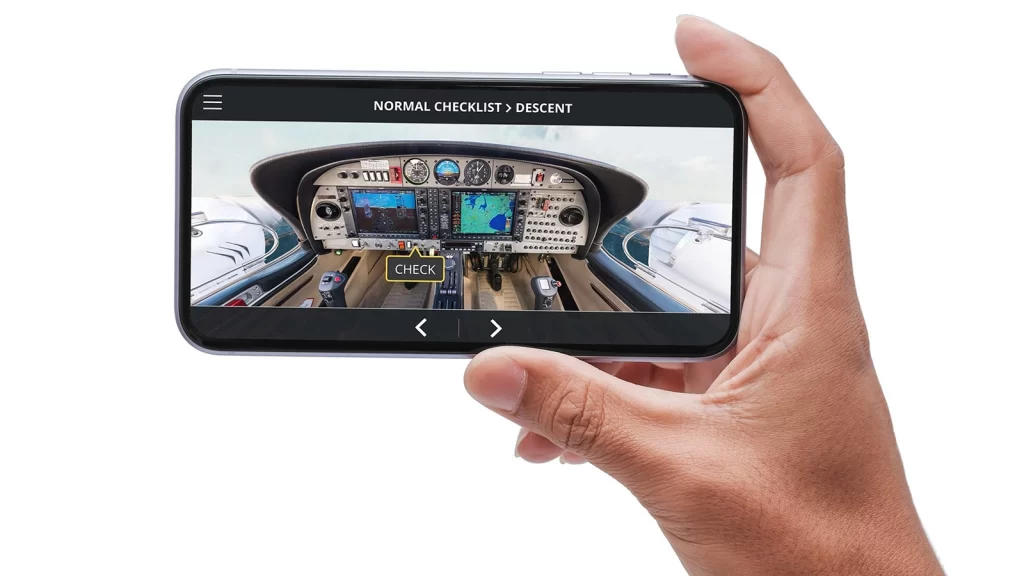
Pro Technology, Pro Student
Digital training is no longer just an option – it is undoubtedly the way forward. Learn To Fly has a clear mission, industry expertise, and a close understanding of student needs, and therefore recognises the important role of technology in producing skilled pilots whether flying for leisure or for a career in aviation.
The V360E virtual cockpit platform comes with the accessory V360E app that students can install on their tablets and smartphones. Whether they are just starting out or are already advanced in their pilot training, all students will be able to access their dedicated virtual cockpit trainers using the V360E app. This incredible capability takes the idea of “anytime, anywhere” flight training to the next level.
“The new generation of pilots demand tech in their education. As a flight school, we strive to provide them with the latest and most effective tools. This is not only to attract students, but also to make sure our offer is the best they can get”, says Kai.
About Learn To Fly
Learn to Fly offers beginner, recreational aviation, general aviation, and diploma programs to student pilots around the globe. It also has the largest fleet of Diamond DA40, Diamond DA42, and Sling 2 aircraft in Victoria. Its home base is at Moorabbin Airport in Melbourne, with satellite offices also in Hong Kong and Singapore.
Join Learn to Fly and be part of the growing V360E virtual cockpit community. Aviation eLearning offers more than three decades of experience in pilot instruction, as well as expertise in helping air training organisations succeed in implementing virtual training in their programs. Contact them for a personalised presentation and a free trial.
Want to find out more about our online flight training options including V360E and our state-of-the-art student portal? Email [email protected] or visit https://drift.me/learntofly/meeting to book a meeting and school tour.

Airline Pilot Guest Blog – Looking Back at Cadet Pilot Training
Now flying an Airbus A350 for a major international airline, Second Officer Vincent Mok looks back on his cadet pilot training and discusses some of the lessons he learned.
While I was backing up my photos, the past year and a half at cadet school literally flashed before my eyes. It’s an amazing journey to go from an office worker to an airline pilot in the space of 15 months. I’d like to share with a few photos with you from my cadet pilot training and the stories behind them. Hopefully they’ll help you in your journey with aviation.
First Solo, First Milestone
The journey to my first solo didn’t go as smoothly as planned. I needed two checks before the training manager was happy to send me up. The night before my first solo check, I had 15 Xiao Long Baos and a plate of noodles at a restaurant notorious for their use of flavoring enhancer (MSG).
I couldn’t sleep because of the flushing and palpitations which didn’t help with the anxiety before the first solo. My final approach profile was inconsistent because my power adjustments were more spasmodic twitches than smooth and decisive.
Lesson Number 1: Healthy eating is as important as checking the weather before a flight
Lesson Number 2: Sleep quality is essential for learning especially in an accelerated environment
That night I had better quality of sleep. My circuit geometry, final approach profile and landings were consistently safe during my second solo check. Alone in the cockpit, while I did my flows and checklists, I saw the windsock pick up a little and started worrying about it approaching my crosswind limit.
“If tower announced a 10kt crosswind, I’d have to do my solo another day”
I taxied to the holding point, did the required checks, lined up and took off after tower clearance.
“200ft AAL, brakes applied, flaps up” I said out loud.
I reached for the flap lever but it was already at its upper stop, realising that I missed a part of the before takeoff flows and checks. If I was on a 737, I would have crashed at the end of the runway and killed 300 people behind me, destroyed a runway and the reputation of my airline. Distraction is the biggest threat in aviation.
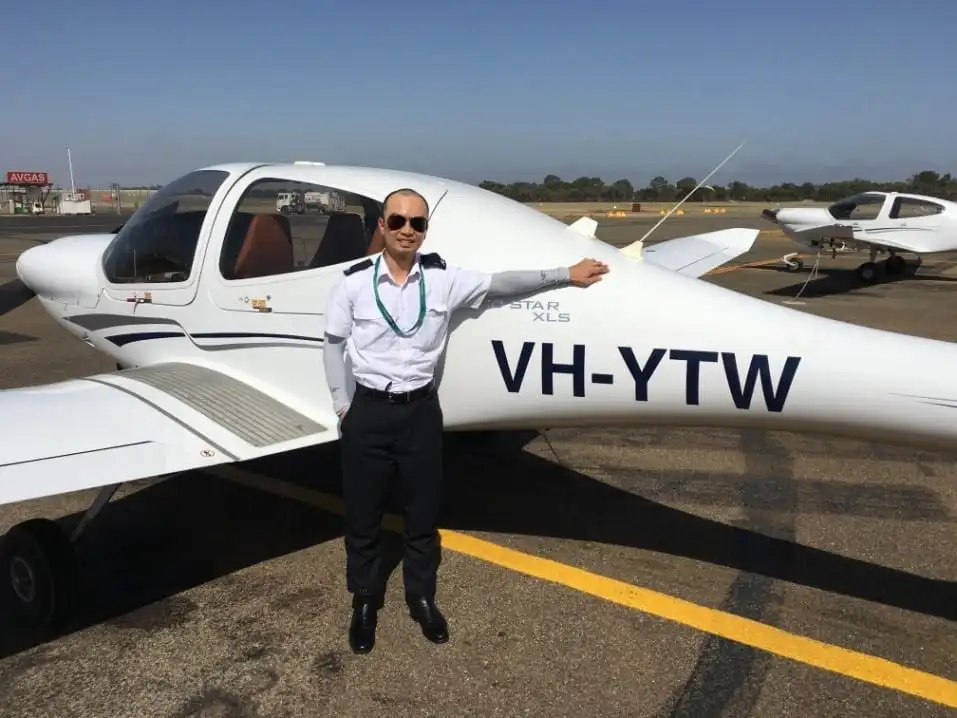
Lesson Number 3: Don’t rush!
In the above photo taken after my solo, behind the smile, half tucked sweat stained shirt and tired legs were multiple lessons that I had learned. I’d been under a lot of pressure because I was the only one in my course without recent flying experience, despite having a PPL from 10 years ago.
After that solo flight, I knew that I had the potential to complete the course.
Memorable Flights
After the first solo, cadets progress through the following hurdles as part of the flying phase:
1 Recreational pilot licence/area solo standard
2 Private pilot licence (PPL) standard
3 Commercial pilot license standard
4 Single engine instrument rating standard
5 Multi-engine command instrument rating standard
6 Upset prevention and recovery training (UPRT)
The flying at each hurdle was both challenging and fun and reaffirmed my passion for aviation. I saw many sunrises, sunsets, coastlines, country airports as well as the world upside down from 6000ft high. I also recall the dread in my stomach during my UPRT but looking back was an utmost invaluable experience and was the most memorable.
“Do you actually get sick, or are you just scared?” My instructor asked while we were upside down in a roll.
“Imagine this was your Airbus and somehow the attitude is like this. Recover.”
Without much thinking, I adjusted the power, rolled wings level, fixed the pitch, and flew straight and level while the chicken I had at mess a few hours ago wanted to fly its way back out.
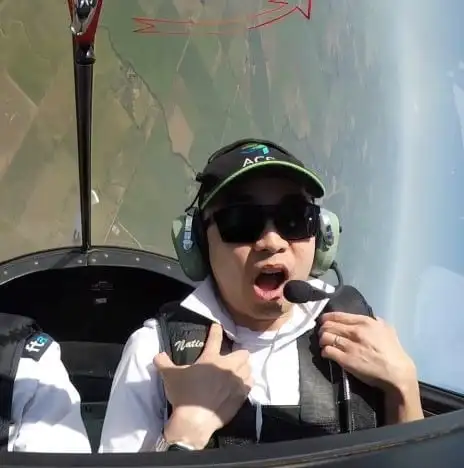
Another time during the PPL training phase, I was admiring the sunrise and the little houses along the coast I could see from 500ft.
“Enjoy it while it lasts”. The instructor said in a mocking manner as I increased the power to climb to 2500ft.
“You’ve just suffered a partial engine failure”. He placed his hand on the throttle and retarded it to a few inches of manifold pressure.
I immediately pitched for best gliding speed and performed trouble checks, then looked for a field nearby.
“You’ve still got thrust, I don’t feel like landing on a vineyard today”
“Oh yeh….Goolwa Airport is in the vicinity and it seems someone just took off from 01”. I turned the aircraft towards downwind, idle power, made a descending turn to base then final.
“You’re way too high. Do a touch and go and we’ll do a diversion after that”
I took flaps and landed around a third of the way down the runway.
“Why’d you make a full stop?”
My bladder had taken over controls and I taxied to the terminal where we all had a toilet break.
Lesson Number 4: While enjoying the beauty of flight, always be prepared for the unexpected
Weight Gain
“Everybody gains weight at cadet school” was a well known fact that our seniors, course mentors, and instructors stated again and again. We had access to buffet style food at the mess for breakfast, lunch and dinner.
The chef nicknamed me “Mr Six Eggs” after my breakfast choice, because there wasn’t enough time in the morning to say “Mr Six Eggs, Two Tomatoes, Bowl of Oatmeal, Scoop of Mushroom, Scoops of Baked Beans, Bowl of Yoghurt”.
Thankfully, one of my coursemates was obsessed with Arnie and I stumbled across photos of “Gympilot”, who used to be overweight but transformed himself into a muscle machine so that he could apply the required 60kg worth of force on a rudder during asymmetric flight on a DA42.
I built lots of friendships (and muscles) at that gym. It became my sanctuary in an otherwise stressful course.
Lesson Number 5: Make exercise a commitment
Cadet pilot training school was one of the most memorable, challenging and fulfilling part of my life. I’d highly recommend any aspiring pilot to consider this path to an airline career. The habits and lessons learned from cadet school lay the foundation for a career as an airline pilot and I attribute the following to my successful completion of the course:
1 Healthy eating is as important as checking the weather before a flight
2 Sleep quality is essential for learning especially in an accelerated environment
3 Don’t rush
4 While enjoying the beauty of flight, always be prepared for the unexpected
5 Make exercise a commitment
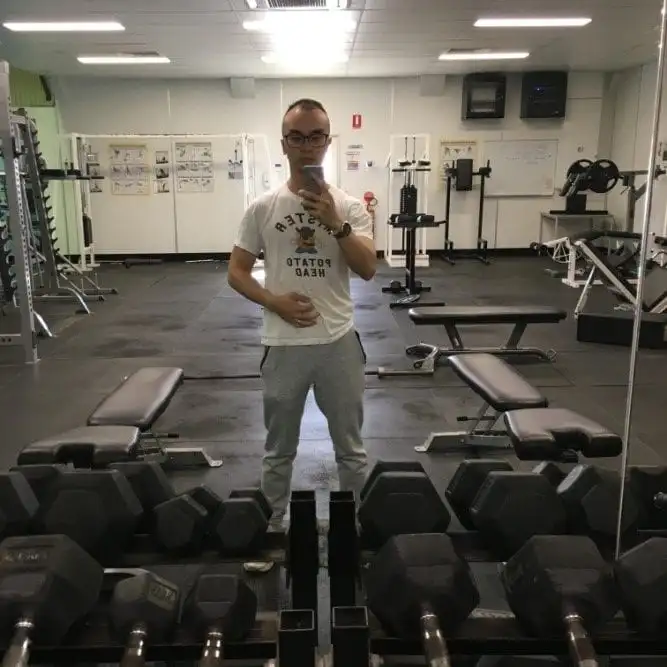
We’d like to thank Vincent very much for contributing this fantastic blog on cadet pilot training. Stay tuned for Vincent’s next guest blog on his journey to becoming an airline pilot.
To find out more about our flight training courses, email [email protected] or visit https://drift.me/learntofly/meeting to book a meeting and school tour.

Online Airline Interview Preparation Course
Our highly successful Airline Interview Coaching Session is now available as an online airline interview preparation course!
At Learn To Fly we are committed to innovating our aviation training model so that student pilots and airline pilot hopefuls can continue to learn. We recently introduced online distance learning for our RPL and PPL theory courses, and we are now excited to launch an online Airline Interview Preparation course together with ACS – Aviation Consulting Services.
ACS – Aviation Consulting Services has been developing and consistently providing quality pilot candidates for a range of operators and airlines globally for over 5 years. The Airline Interview Coaching Session itself has helped candidates to achieve success in their applications to more than 10 major airlines worldwide, at both cadet and direct entry levels.
Are Airlines Still Recruiting Pilots?
During recent months we have seen unprecedented impacts on the aviation and airline industry due to the COVID-19 pandemic. Global airline traffic is nearly at a standstill, but that doesn’t mean that airlines aren’t thinking about their future recruitment.
Some major airlines are still actively recruiting cadet pilots. It is highly likely that the current hibernation period will make the applicant talent pool even more competitive once recruitment resumes for any airlines that are not currently recruiting. Those who use this down time to prepare will be far better placed than those who don’t.
Preparation will always be the single most important factor in giving yourself the best chance of success in airline interview processes. Our online airline interview preparation course gives you access to this crucial preparation knowledge from wherever you are in the world.
How Does the Online Airline Interview Preparation Course Work?
Thanks to advances in technology and software, we are now able to create a truly interactive online classroom environment. Your location no longer prevents you from participating in courses that before you could only attend in person.
This Online Airline Interview Preparation Course uses the same syllabus as our standard Airline Interview Coaching Session. The content has been refined to suit delivery using Zoom online meeting software.
The course contains 5 modules, each of which will run for approximately 90 minutes. We will present each module live in an interactive online classroom across 2 days. The presenter for each session is airline interview specialist and international airline Captain Darren McPherson from ACS – Aviation Consulting Services.
Darren is also available to provide further feedback and interaction with all participants following the course.

Course Outline
The following modules make up the online Airline Interview Preparation course:
Module 1 – The Interview Process
The interview process varies in both format and content for different airlines and operators. This module assists in providing a practical insight into the processes for a range of airlines. Participants also develop a study pathway to assist in structured and ongoing preparation further down the track.
We tailor this module to target the interview process for the specific airlines that course participants will be applying to.
Module 2 – The HR Interview
The HR interview is an important step for most airlines and operators. This also forms a crucial part of the online Airline Interview Preparation course. In this module we examine the human factors that can impact you during this part of the interview process.
We explore the content of the HR interview, and look at interview scenarios and styles for a range of different airlines. This allows you to develop your response methods in order to create the best outcome.
In developing methods for response, we conduct practical planning activities. These teach you how to best respond to airline HR questions using your own strengths and your past work and study experiences. The aim of this module is to help each participant to unlock the ways in which they can showcase their best and most relevant qualities.
Module 3 – Typical Review Questions
Whilst airlines differ in their approach and interview process, there are a number of key themes and areas that are common to all operators. Whilst some of the knowledge areas may seem obvious, the best way to answer these common questions themselves may not be.
In this module we look at those common themes and questions with consideration to the content covered in modules 1 and 2. We will work through each activity in a practical group style format. This way, participants are able to explore their own responses and also develop them further by learning from each other.
Module 4 – Group Skills & Exercises
Airlines place a large emphasis on your ability to work in a team environment. That means that group skills and exercises are an important component of the application process for many.
In this module we discuss the human factors involved in group dynamics, and look at teamwork. We also work through a number of practical team exercises, similar to those you will experience during the interview process.
Finally, we analyse the results of the group exercises. We then conduct an open discussion on how personality factors contribute to the overall outcome.
Module 5 – Technical Knowledge
Even for cadet entry positions, airlines expect that applicants have a level of technical aviation knowledge. During this module in the online Airline Interview Preparation course, we review crucial technical knowledge subject areas.
We take into consideration the differences in what level of knowledge different airlines tend to expect. We also discuss the expected knowledge levels relevant to each individual’s own previous flying and aviation theory experience.
The discussion in this module provides each applicant with an insight into their current knowledge. It also then allows them to plan for further preparation and study if required.
Advanced Training & Further Online Airline Interview Preparation Modules
The Online Airline Interview Preparation course is a standalone 2 day program. However, Learn To Fly and ACS – Aviation Consulting Services have developed a range of individual online modules for more advanced training. For further information or to register your interest in these modules, email [email protected] or visit https://drift.me/learntofly/meeting to book a meeting and school tour.
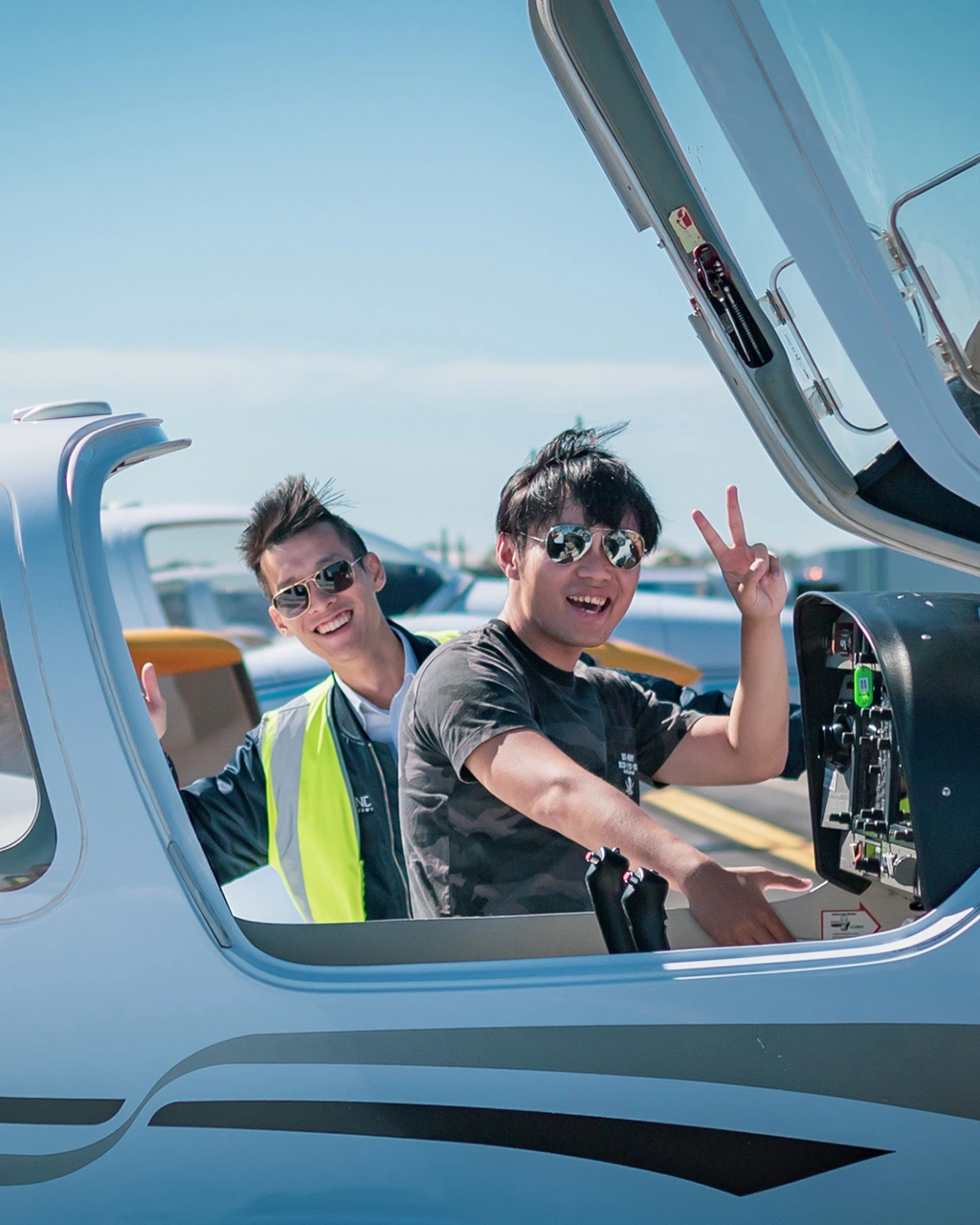
Split Your Flight Training Costs into Interest-Free Instalments from Learn To Fly and SplitIt
Want to make learning to fly more affordable? Split your flight training costs with interest-free instalment payments at Learn To Fly!
Flight training can be an expensive process, especially if you are looking to obtain a Commercial Pilot Licence (CPL) and make flying your career. At Learn To Fly, we are committed to making flight training more affordable and accessible to more people. This is why we have introduced SplitIt, which allows you to split your flight training costs over multiple interest-free payments.
What Is Splitit?
SplitIt is a buy now, pay later solution that lets customers split their payments into manageable parts using a Visa or Mastercard, without paying interest.
Unlike another buy now pay later providers, SplitIt uses your existing Visa or Mastercard credit card levels to cover payments. This means you don’t need to be pre-approved for a line of credit in order to split your flight training costs.
How Do I Use SplitIt?
SplitIt allows you to split your flight training costs for courses that cost between $1,000AUD and $20,000AUD. The following instalment options are available based on the cost of the course:
| Course Price | No. of Instalments |
| $1,000 – $4,000 | 2 Instalments |
| $4,001 – $6,000 | Up to 3 Instalments |
| $6,001 – $10,000 | Up to 5 Instalments |
| $10,001 – $16,000 | Up to 8 Instalments |
| $16,001 – $20,000 | Up to 10 Instalments |
If you are making your purchase online via our online store, you can simply select SplitIt as the payment option and you will be prompted to enter the relevant details.
If your course is not available on the website, or you are confirming your enrolment directly through a Learn To Fly staff member, then we are able to set up SplitIt manually for you.
Since SplitIt does not use a pre-approved credit process, you will need to have the entire purchase amount available on your nominated credit cards at the time of purchase. You can choose to nominate more than one different credit card as well if you do not have the total amount available on the one card.
You will pay the first instalment, and then each instalment will be deducted on designated monthly dates.
There is no need to “sign up” to SplitIt. At the point of sale, you will be given login details to the SplitIt portal using your email address, and you can track your instalments through there.
Example – Using SplitIt To Split Your RPL Flight Training Costs
You want to complete the Recreational Pilot Licence (RPL) course in a Diamond DA40 aircraft. The total course cost is $14,250.
- You can choose SplitIt as the payment method, and split the total cost into 8 equal instalments.
- You will need to have $14,250 available on your credit card (or have that total available on multiple cards)
- Your first payment will be only $1,872 ($14,250 divided by 8 and rounded up)
- You will then pay $1,872 per month on the designated date until the total payment has been made
I think you will agree that being able to split your flight training costs into $1,872 per month is much more manageable than paying $14,250 upfront!
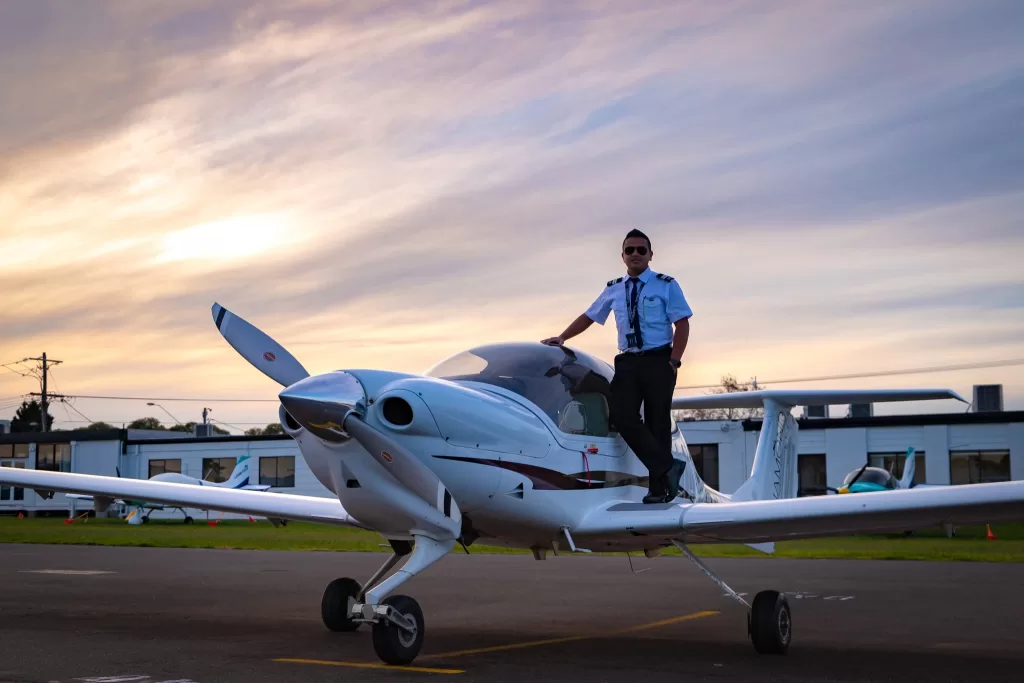
How Much Does SplitIt Cost To Use?
Using SplitIt to split your flight training costs is absolutely free. There are no sign-up fees, and payments are 100% interest-free. SplitIt charges a merchant fee for each instalment, but Learn To Fly will cover that cost.
Whilst SplitIt only requires that you have the entire purchase amount available on your chosen credit card at the time of purchase, you do need to ensure that you have the instalment amount available from then on. If you do not, then the instalment may overdraw your account and result in fees from your bank.
To find out more about how to split your flight training costs with SplitIt, or to find out about our flight training courses, email [email protected] or visit https://drift.me/learntofly/meeting to book a meeting and school tour.
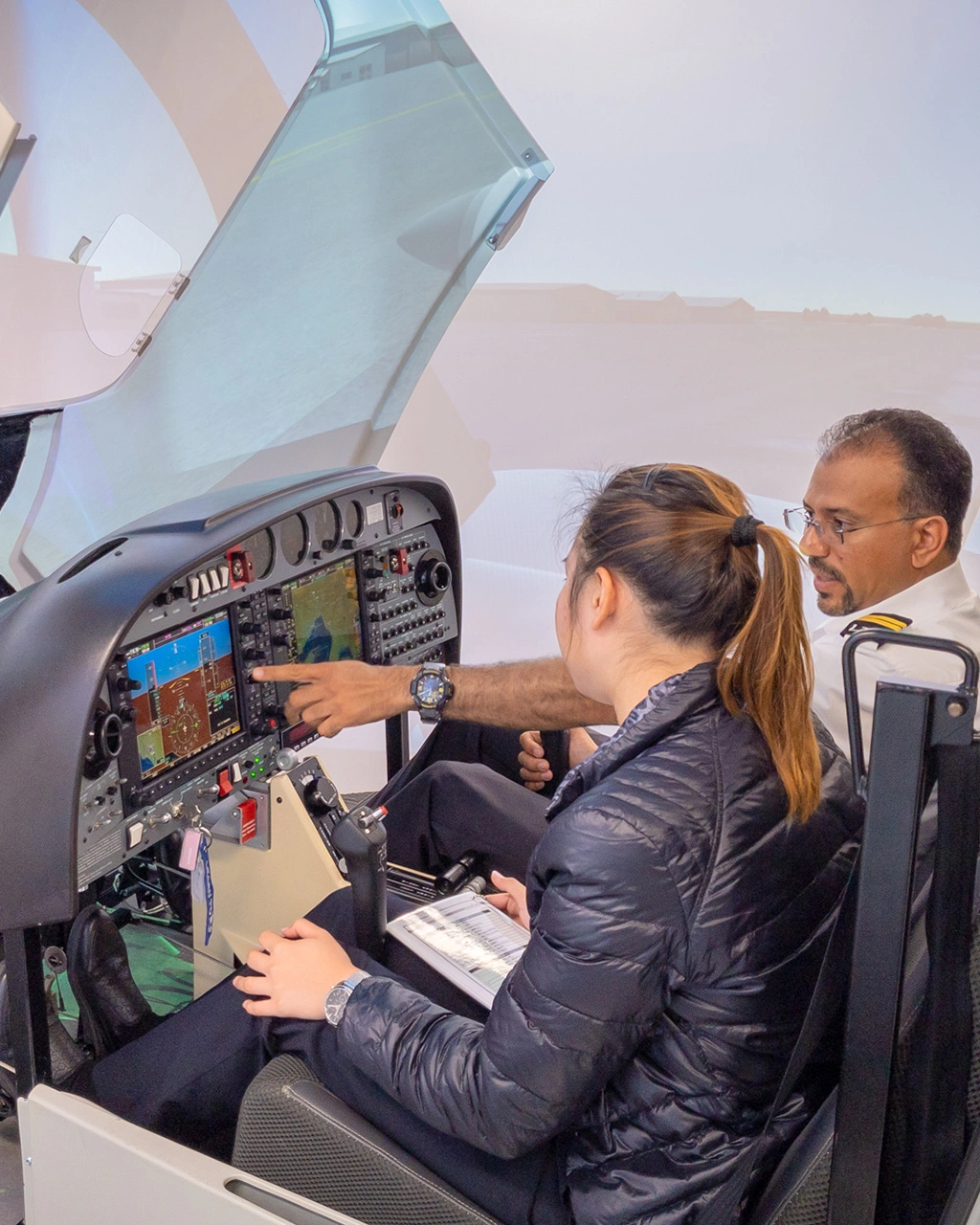
How Can Flight Simulators Advance Your Flight Training?
Thanks to advances in technology, flight simulators have become more and more realistic over time. What was once just a fun game for pilots and aviation fans to play on their computer is now an important tool. But exactly how much can flight simulators advance your flight training?
To find out, let’s learn a bit about flight simulators first, thanks to Nat Crea from NatVIS Simulator Visual Systems. Nat does a great job calibrating simulators to make them as realistic as possible, and recently calibrated our TRC 472 full cockpit Cessna 172 simulator.
The History of Flight Simulators
The Link Trainer debuted in 1929, and is widely recognised as the first flight simulator. It resembled an overgrown toy aeroplane from the outside, with short wooden wings and a fuselage-mounted on a universal joint. Pumps, valves and bellows created a simulator for flight training that responded to the pilot’s controls and gave an accurate reading on the included instruments.
The computer age then arrived, and as a result simulators became far more advanced very quickly. Arcade action style flying games were very popular immediately among games console and computer users at home. Civilian simulators were also popular, with users able to fly advanced jet airliners from their home computers by the early 2000s.
Back in the early days of the first basic flight simulators it was already very clear how valuable they could be to advance actual flight training for real pilots. Even the very first Link Trainer replicated the basic controls and instruments of an aircraft. Today, advances in computers and visual technology make a huge difference in the quality of training that flight simulators provide.
At first, the visual scenery was made only of single white points of light on an otherwise black landscape. Nowadays, simulator landscapes and weather are highly realistic outside the cockpit. Inside the cockpit, technology allows us to replicate almost any type of aircraft, as well as both computer or analogue control systems.
Types of Flight Simulators
There are 3 main types of simulators, and each have different specifications:
Aviation Training Device (ATD):
ATDs provide an approved training platform for both procedural and operational performance tasks specific to ground and flight training requirements for certain pilot licence types.
Flight Training Device (FTD):
This is a more advanced version of a simulator. There are 4 different FTD levels, each with their own requirements for approval. Each level has a different amount of aerodynamic programming, systems modelling, and other technological specifications. Our TRC 472 (Cessna 172) and Alsim AL42 (Diamond DA42) simulators are examples of FTDs.
Full Flight Simulator (FFS):
This is the most advanced type of simulator available, and airlines commonly use them for training. All Full Flight Simulators require some type of motion system, and again there are 4 levels. The two highest levels (levels C and D) must have an outside-world field of view and cockpit sounds in addition to other motion and visual effects.
How Can You Use Flight Simulators to Advance Your Flight Training?
Technology now provides an exceptionally realistic representation of the cockpit, avionics, flight conditions, and also aircraft behaviour.
Flight simulators can advance your flight training exponentially, by allowing you to practice non-standard flight situations under realistic conditions. If adverse weather keeps you on the ground, you can still use a simulator to complete flight training.
Given how expensive flight training is, simulators also offer an extremely economical way to hone your skills. If you are able to spend more time learning your skills in a simulator, then you can use your time in a real aircraft to put those skills into practice.
Learn To Fly’s Flight Simulators
We have a range of flight simulator options, and these can assist with all levels of your flight training:
Fully Immersive XPlane Simulator
Our fully immersive XPlane simulator setup includes TQ6 PLUS throttle controls with reverse, feather and cutoff functions as well as Hall Effect Ruddo PLUS rudder pedals with pressure-sensitive differential brake controls, both from Virtual-Fly. You can also utilise glass cockpit avionics including the Garmin G5 instrument display and G430 navigational display from RealSim Gear.
TRC 372 (Cessna 172) Simulator
Our TRC flight simulator provides an almost exact reproduction of the Cessna 172 Skyhawk cockpit. Every detail is precisely reproduced to exact dimensions. This includes the doors, windshield, seats and also the Garmin G1000 glass cockpit panel.
Alsim AL42 (Diamond DA42) Simulator
The Alsim AL42 is a hi-tech super-realistic flight simulator that directly replicates the cockpit and controls of the Diamond DA42 twin-engine aircraft. This simulator complies with MECIR requirements and therefore enables students to become familiar with the aircraft behaviour patterns, procedures and systems whilst still on the ground.
Flight Experience Boeing B737 Simulator
Students can train on state-of-the-art Boeing 737-800 Full Flight Simulators, thanks to Flight Experience. These simulators are used world-wide for pilot training, and provide a fully immersive FFS experience. They are both certified and endorsed by Boeing.
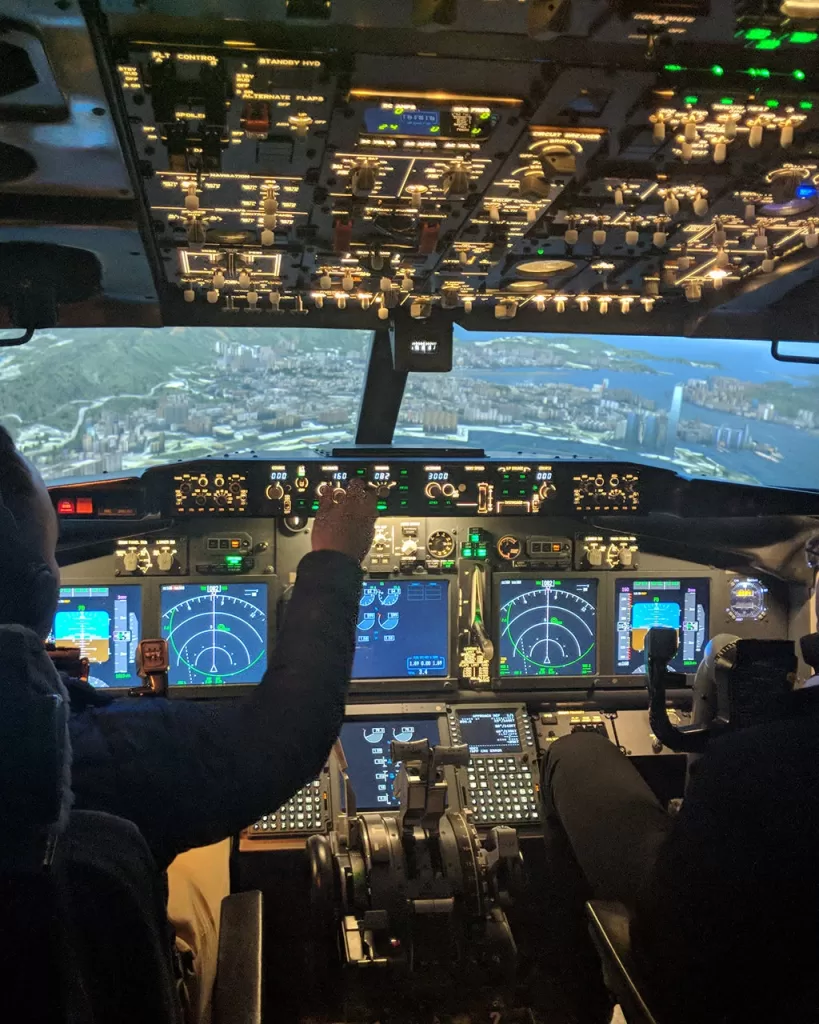
Contact [email protected] or visit https://drift.me/learntofly/meeting to book a meeting and school tour.

How Do Airlines Select Cadet Pilots?
What are airlines looking for when they select their cadet pilots?
There are more airline cadet pilot opportunities than ever before, but competition is still very strong. So how do airlines select cadet pilots? What are they looking for, and what makes you a stronger applicant than others?
Historically, airline pilot candidates were selected based on academic background and relevant industry experience. Over time, airline operators have recognised that there is far more to what makes a good pilot than this alone.
Captain Darren McPherson from ACS – Aviation Consulting Services is our specialist airline interview consultant. He runs our highly successful airline interview courses, which includes the Future Cadet Pilot Program (FCPP) and the Airline Interview Coaching Session. In this blog Darren shares some of the information that has helped guide over 100 airline cadet pilot applicants to success in the last 2 years.
Initial Applicant Screening
Initial screening and selection is a key element in identifying applicants who might be a good fit for a specific airline. It also provides an indication of who is likely to be able to cope with the intensity of a full-time flying training program.
Airlines have their own selection criteria that they adhere to when conducting initial cadet pilot application screening. This can include but is not limited to:
– Age
– Schooling and previous education
– University qualifications, both attempted and/or completed
– Previous flying or aviation-related experience
– Other relevant or additional qualifications
Cadet pilot applicants should check the key selection criteria for the airlines they are applying to. It’s important to know what will be looked at during initial screening.
Aviation English Proficiency (AELP)
Aviation English is the standard global language under ICAO AELP Standards. It is essential that airline cadet pilots can communicate effectively during both their training and their operational careers. This applies in normal day to day operations and more importantly, in emergency scenarios.
Airlines require that applicants pass an AELP test at a minimum of Level 4 proficiency. Even prior to the test, airlines assess an applicant’s English proficiency during initial screening and during the interview process, paying particular attention to:
– Vocabulary
– Overall fluency
– Spoken English and pronunciation
– Comprehension
– Sentence structure
For tips on improving your English skills, check out our previous blog on how to pass your ICAO Aviation English exam.
Group Skills & Exercises
Group skills and exercises form an increasingly important part of cadet pilot recruitment processes for nearly every airline. Airline flight crews feature multiple nationalities, personalities and cultural backgrounds both inside the cockpit and around the flight deck.
One of the most important things you can do in your interview is demonstrate your qualities as a team player that can work effectively with a range of people.
Some of the key things that airlines will look for during group activities include:
– Communication
– Leadership
– Teamwork
– Problem solving
– Decision making
– Situational awareness
– Workload management
Human Resources (HR) Questions
Another key component of how airlines select cadet pilots is the HR Interview. This interview explores your motivation to become an airline pilot, and also your background.
Airline interviewers will ask questions exploring your past experiences with a focus on how you overcame and learnt from past challenges.
Example questions to explore your motivation to become a pilot:
– What interests you the most about becoming an airline pilot?
– Which of your qualities are best suited to becoming a pilot?
– Why do you want to work for our airline?
Example questions exploring your past experiences:
– How did you overcome the challenges that you have experienced throughout your career or life?
– What is the most satisfying part of your career to date?
– What preparation have you done for today’s interview?
HR interviews can also be conducted in a panel format, and may be combined with technical aviation questioning.
Technical Evaluation
Even though it’s not a requirement to have any previous flying experience to apply for airline cadet pilot roles, technical knowledge is one of the best ways to demonstrate your motivation towards an airline pilot career.
The technical evaluation can include practical aspects of flying an aircraft, the role of an airline pilot, and knowledge about the aviation industry in general.
Airline interviewers understand that the level of technical knowledge varies between candidates, but it’s a great opportunity for you to communicate your motivation. Your technical knowledge demonstrates time spent preparing for not just the interview, but towards actually working in an airline pilot role in the future.
A great resource for technical knowledge is the Federal Aviation Authority (FAA) “Pilots Handbook of Aeronautical Knowledge” (2016), which is available through the US Government FAA website as a free download.
What Is The Best Way You Can Prepare?
There are many online tools available to help you prepare for each aspect of the airline cadet pilot interview process, but the best preparation knowledge comes from those who have past experience and success.
Learn To Fly’s Airline Interview Coaching Session has been created specifically to give airline pilot applicants the best possible preparation. The Future Cadet Pilot Program (FCPP) also offers practical flying training, which makes a valuable addition to your technical knowledge.
For further information or to register your interest in these modules, email [email protected] or visit https://drift.me/learntofly/meeting to book a meeting and school tour.

Pilot Recruitment and the Aviation Industry in 2019
In this blog, Captain Darren McPherson from ACS – Aviation Consulting Services takes a looks at pilot recruitment and the aviation industry in 2019. Darren runs our highly successful airline interview preparation courses. This includes the Future Cadet Pilot Program (FCPP) and the Airline Interview Coaching Session. In under 3 years, Darren has helped 162 pilots to achieve success with 16 different airlines internationally. He has also successfully mentored 2 pilots to join the Australian Defence Force.
Many define learning as a “change in behaviour from previous experience”. This definition has existed for as long as teachers have been teaching and as long as students have been learning. This approach continues to be one of the longest and most established definitions when we take part in any form of education.
Pilot Recruitment and the Aviation Industry in 2019
We always find it interesting to look back and review changes and developments that have occurred during the year. It’s important to consider what has happened in the aviation industry for pilots of all levels of experience, from those just taking up flying all the way through to commercial pilots graduating and starting their first professional pilot roles.
More new pilots than ever are starting their flying training. This ranges from introductory courses through to Private Pilot Licence (PPL) and Commercial Pilot Licence (CPL).
It has been a strong year for professional pilots, and the options available continue to grow. We saw an increase in the number of potential positions for pilots both locally in Australia, and further afield. Numerous international airlines have expanded their pilot recruitment campaigns in 2019, and are opening their doors to more people.
Fly Before You Apply?
In 2019 we noticed that more courses are being considered and completed by the next generation of pilots looking to prepare for cadet applications to various airlines.
Through experience from our airline interview preparation courses, it has become apparent that most successful candidates have undertaken some form of flight training prior to airline applications. Prior flight training gives candidates an insight into the aviation industry, and into flying in general. This greatly assists in preparing for the various components of airline interviews.
Airline Pilot Recruitment in 2019
Aviation industry trends show that candidates with experience from as little as 250 flight hours will be considered for airline pilot recruitment. Pilots at the 2,000 flight hour mark are in high demand, and open themselves to many airline opportunities globally. A number of major airlines have significantly lowered their minimum flight hour requirements for Direct Entry positions in 2019.
At Learn To Fly and ACS, we have numerous students and instructors progressing within this buoyant global pilot market. Graduates of our airline interview preparation courses have been successful at a range of levels. These include Cadet Pilot, Direct Entry First Officer and Direct Entry Second Officer positions with airlines across the Asia Pacific region, as well as the United States.
A Range of Opportunities
In 2019 we have seen pilots enjoy exciting opportunities operating in a wide range of aviation areas. Flight Instructors in particular are flourishing, with more students meaning more opportunities to build flight hours.
An increase in Flight Instructor roles has also provided an excellent opportunity for those looking to get their first flying job. In regional areas especially, Flight Instructor roles allow international pilots to build hours in Australia on a work visa.
Rewards For Your Hard Work
Although the aviation industry can at times appear unpredictable, we are seeing excellent results from the hard work of all students and pilots that come through our door.
This year we have seen pilots of many varied levels of experience move into their dream jobs. We have also seen many pilots position themselves that one important step closer towards achieving their goals in this exciting and ever-growing market.
As 2019 finishes, what is certain is that the aviation world continues to develop at an ever-increasing rate.
Contributed by Captain Darren McPherson
ACS – Aviation Consulting Services 2019

Captain Darren McPherson from ACS – Aviation Consulting Services is a Check and Training Captain with a major international airline, with over 30 years of industry experience. We are proud to offer a range of highly successful airline pilot interview preparation courses taught by Darren.
To find out more about our flight training courses, email [email protected] or visit https://drift.me/learntofly/meeting to book a meeting and school tour.

Life is Short. Get Your Pilot Licence.
Challenges aren’t stopping David from fulfilling his pilot dream. At 71 years young, he’s studying a Recreational Pilot Licence at Learn To Fly Melbourne.
David, you’re studying a Recreational Pilot Licence with us right?
Well, yes that is the first step (laughs).
Have you already thought about what you are going to do next?
Of course! I haven’t got time to waste now.
David is 71 and signed up for studying a Recreational Pilot Licence this year. We find out he’s not only a friendly chap who has made an impression on many of the instructors and staff at LTF, but he is also a pretty tough character.
He shares with us how his flight training path has hit some patches of turbulence, and how he has overcome adversity to chase his dreams. There is no stopping David now.
Let’s go back to the beginning. Tell us how you got into aviation and what made you want to get your pilot licence?
I guess it’s like many young teenagers in my day, I was into model planes. I desired to build them and I used to just fly them around in circles. We didn’t have radio control, we just had a couple of wires flying a small model plane. I went onto further studies and other life paths, and I left that aviation interest behind a little bit.
Then one of my uncles was a pilot, he was a radio operator in World War II. He maintained his interest in aviation and gave me the chance to go up with him, flying around northern NSW, back country area
So how old were you at this point?
In my late teens. I loved it. We flew around in a Tigermoth over that area. Such good fun.
Did he let you take the controls?
No, and I don’t think I asked (laughs). I was happy to sit in the front and look at the scenery and checking out the area below – waterholes, cattle, sheep and things like that. I just knew I enjoyed being up there.
A lot of other things happened in my life. Completing school, getting a job, got married, had kids. Becoming a pilot took a back seat. But it was always there in my mind “gee I’d love to learn to fly”. I didn’t have the time and I was making sure my kids got a good education and took care of their needs first.
I used to have a farm but I sold that, so have some money in the bank. What am I going to do? (laughs) Get my pilot licence! Do what I always wanted to do. Now I can afford to get my licence and maybe buy a plane. So it’s a comfortable place to be in.
But the journey getting here has been a bit traumatic for me.
We have a bit of background on that. Are you happy to talk about that with us?
Oh yes, it helps me. My wife when she was alive I encouraged her to fly a helicopter. I bought her a flight as a 50th birthday present. I thought by having the first lesson in a helicopter I hoped she would really like it and continue or maybe want to fly planes too. But it was enough for her just to experience the flight. Unfortunately she passed away from an aneurysm.
As it turns out that is somewhat how I found out I too had an aneurysm. I didn’t have any symptoms though. When I went for my medical I told my doctor had a bad cycling accident and split my head open, broke my leg.
How long ago was that?
30 odd years ago. A long time! But it was a big accident so the doctor said maybe you should check that out. So I went to a radiologist and had a CT scan. The radiologist calls me in and says you should go and see your doctor straight away because you have got a small aneurysm. So I had an operation. A neurosurgeon put a clip on it.
Fortunately, afterwards, the doctor said, ‘You are still good to get your pilot licence’! And that was 3 or 4 months ago.
Wow, so very recent then.
Yes, I’d already started my flying training and I didn’t want to give up. Because I had to get the Grade 1 Medical, it was through those discussions with the doctor about my history, and the bike accident, that she suggested getting checked out more thoroughly.
So how has that been a bit of motivation for getting out there and studying Recreational Pilot Licence?
Yes in some respects. It’s given me something to focus on this and it’s something to work towards achieving. It gets the adrenaline running (laughs) and I am enjoying it. I’m looking forward to when I can take the grandkids! Something exciting to show them. They are a bit young still though. One he is only eight months old and the older one she is four-and-a-half.
How have you found the course so far?
I’ve found the course well-paced and I don’t feel like I’m being pushed. Hopefully, I am reasonably competent in what I am doing. I’m taking it very slowly and carefully. The instruction of the course is well laid out, the stages of it and how it all fits in so I’m enjoying that part.
My instructor is Cam Mitchell and I’ve flown once with Dave Ostler who are both very good. It feels like a bit of a family now. Everyone is supportive and Dips (School Operations Manager) is fantastic. I was checking out the different schools and I found your website and it looked good, so I came in and Dips was so friendly and explained everything well. It was the friendly open approach that attracted me. I’ve felt comfortable coming here.
Have you flown any others?
Not personally. Not yet. But my cousin used to fly in a Cessna 172 ages ago, like forty-odd years ago. A few years ago I went out to Lilydale and thought I might see about doing lessons there and went up in a Victa Air Tourer.
What is the aircraft you are learning in?
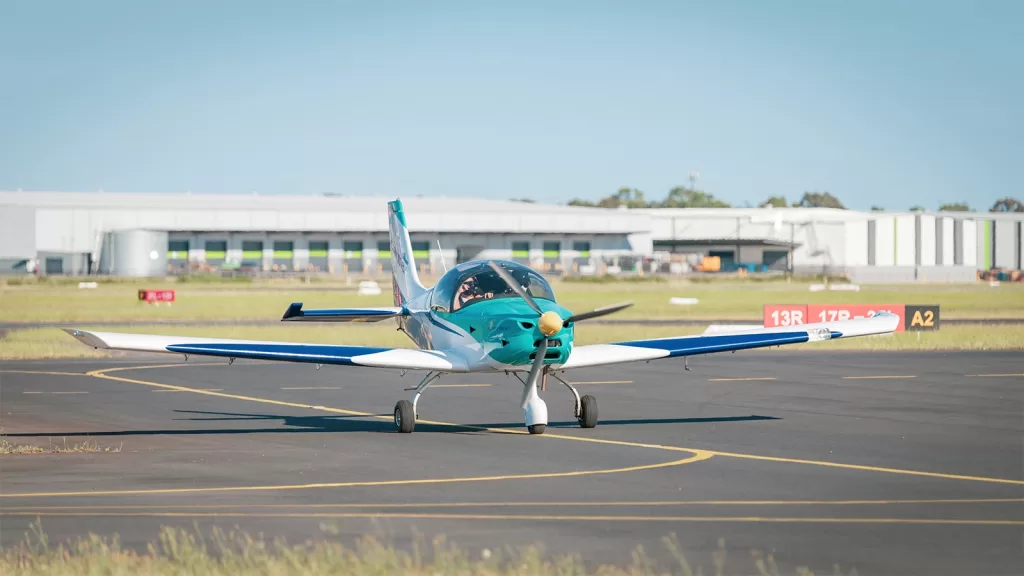
What do you enjoy most about flying?
I like the part where I am pushing myself differently because even though I am a trained teacher and with that, in the past, I did lesson planning, I am still very much a person who just chucks the stuff in and goes. Whereas flying an aeroplane is very different to that so I’m enjoying spending time on the planning and making sure that I do all the checks prior, and weather forecasting and flight planning. I like the discipline that’s involved in controlling an aircraft.
If you were going to buy a plane, have you thought about what kind you would buy?
It would probably be a Foxbat or a Jabiru or one of those types. The reason would be I want a high-wing one where I can see out more easily and if you go camping you can camp under the wing. There are lots of high wing aircraft becoming available. A light plane, high wing, able to carry a small amount of luggage like your tent and picnic essentials.
Do you like tinkering around with the engines as well?
In the past I was mechanically oriented but as I’ve gotten more mature, not so much. Modern engines aren’t so much fun to play around with, computer controls, fuel injection and all that. It’s too specialised. But you know give me a diesel tractor I’ll happily pull that apart to get it working again. I’m not interested in tinkering with aircraft engines though.
You’re having enough fun just flying them?
Yeah, I’m loving flying and the idea of visiting places, as I said, camping under the wing and doing all those things.
Sounds like a perfect way to spend your time.
Australia is a big country and driving takes ages so I think, why not fly yourself in a plane. You can see where you are going if there is bad weather ahead you can just find somewhere to land and try again later.
I’m not a maverick but you know, if there is a dry gravel road down there, check there are no powerlines, no trees, I can just put it down there (laughs).
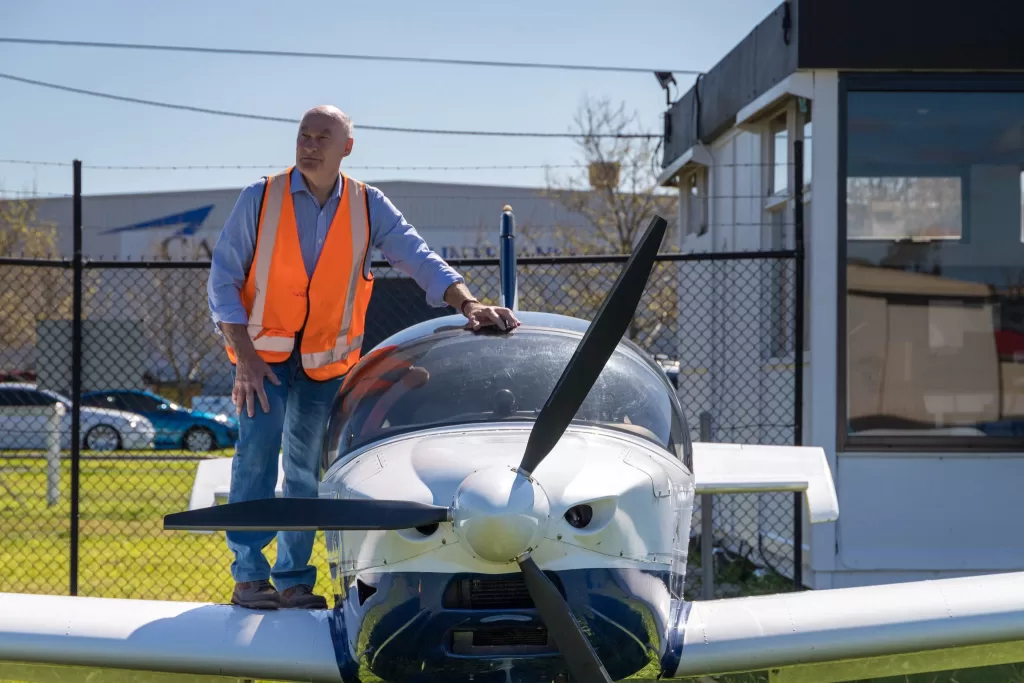
Want to get your Recreational Pilot Licence? Email [email protected] or visit https://drift.me/learntofly/meeting to book a meeting and school tour.
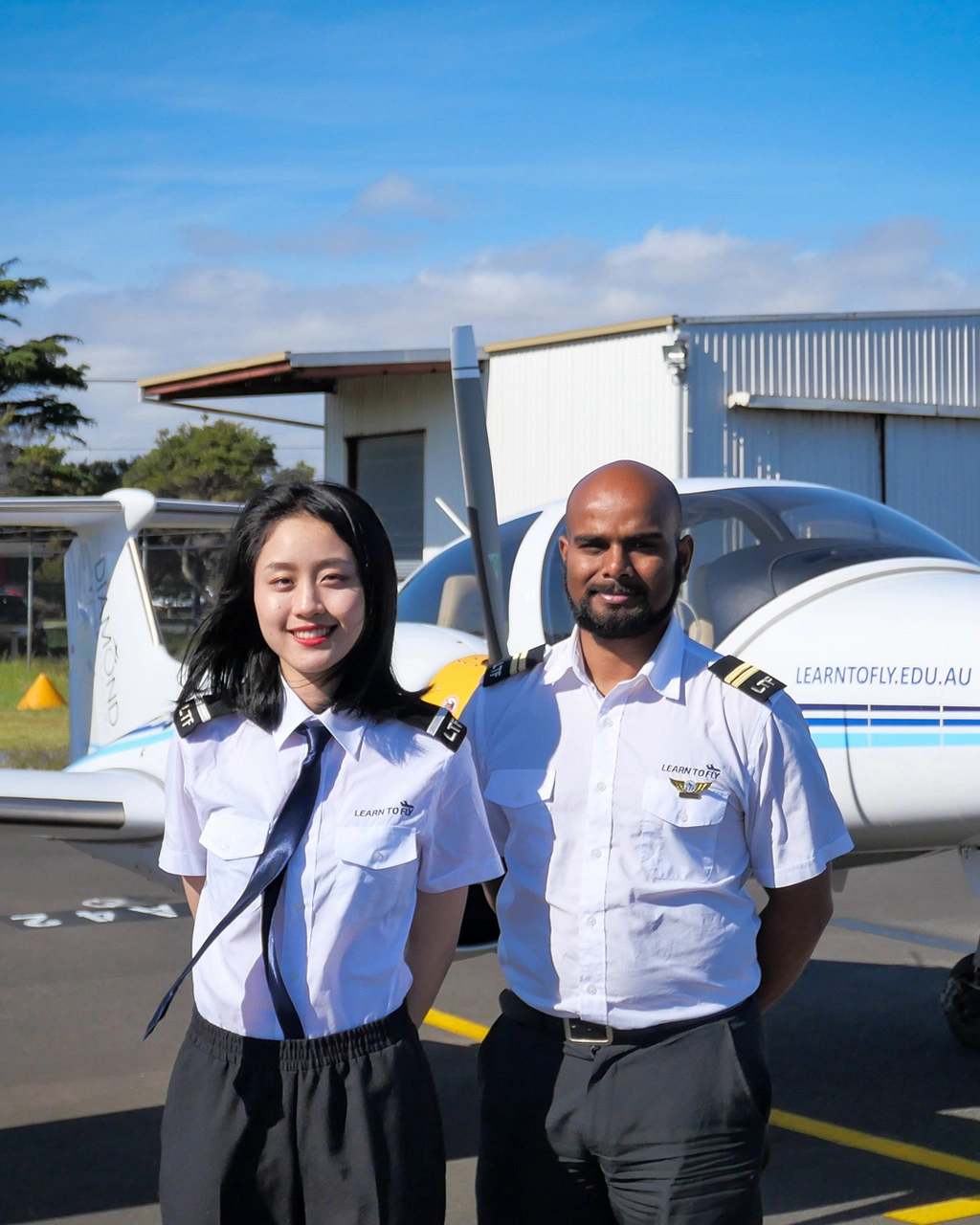
Things to Know Before You Start Flight Training
So you want to be a pilot? That’s awesome! You won’t regret embarking on this rewarding and exciting career. Before you even get to sit in the cockpit and take the controls, there are lots of considerations, particularly around choosing the right flying school. Let’s take a look at things to know before you start flight training.
We’re sure you are aware that becoming a pilot is full of challenges and requires hard work. If it were easy, everyone would do it! Pilot training will test your limits of knowledge, persistence and patience – in a good way.
There are dozens of reasons to do your pilot training in Australia. Australian pilot qualifications are internationally recognised and highly regarded because our education and training standards are some of the highest in the world. We also boast:
– Being a world leader in aviation safety
– Consistently good weather
– Visa options that allow students to also work up to 20 hours a week
– A safe, and politically and socially stable environment to live and learn in
Make sure you love flying!
Enrolling in a flight training course is a commitment, both financially and time-wise. Before you start flight training, it’s a great idea to try it out first. A Trial Introductory Flight (TIF) is an excellent way to get the feel of being in the cockpit of a small aircraft, and trying your hand at taking the controls for some basic manoeuvres under the guidance of an instructor.
We also have beginner courses like the Learn To Fly Starter Set available. These will get you flying and give you enough experience in the air to be able to decide whether it’s for you. All of the training and flight time in these courses can also actually count towards a licence if you decide to commit to a more extensive training.
What are your pilot goals?
Knowing what you want to achieve from your flight training is an important consideration. Do you want to fly for fun, or do you want to think about flying for a career?
The answer to this question will impact the direction you take with your training. Make sure you choose a flying school with a range of courses to cater for your aviation goals. Make sure you talk to the flying school before you start flight training so that they can help you to choose the right path.
What aircraft should I fly?
The cost of pilot training courses is in part reflective of the type of aircraft in their fleet. You can select the training that fits your budget according to not only your pilot aims but the kind of aircraft you want to learn in.
A quality flying school will have different types of aircraft in their fleet to not only suit different budgets, but also to allow for varied flying experiences. Some pilots prefer to train in aircraft with all of the modern technology equipped (like glass cockpit, auto-pilot etc), whilst others gain more out of flying an aircraft where the majority of functions are performed completely manually.
A good flying school will allow their pilots to experience different aircraft, and to “progress” to other aircraft during training. They’ll also have flight simulation options available for extended learning whilst on the ground.
Another very important factor to consider before you start your flight training is the availability of aircraft. Make sure you choose a flying school with a big enough fleet to cater for their students during busy periods, and when aircraft require scheduled maintenance.
Learn To Fly offers a range of aircraft covering both single and multi-engine flight training. Our fleet includes the Sling 2, Cessna 172, Diamond DA40, Piper Seminole, Diamond DA42, Super Decathlon and RA-Aus Foxbat. Check it out here.
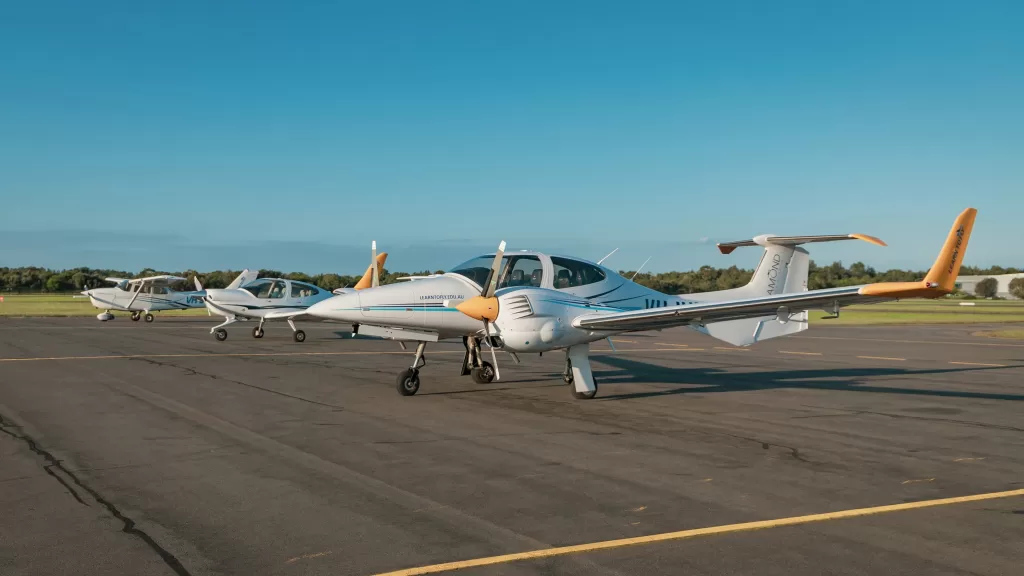
What other facilities do I need?
Remember, you won’t be spending ALL of your time in the air! Every training course has a theory component to it. A good flying school will have modern facilities that provide a good learning and study environment on the ground as well as in the sky.
A school with online training options will allow you to keep learning from wherever you are. This means you can use those spare moments to revise knowledge or sharpen your skills at home instead of watching Netflix!
Flight simulators now form an important part of training. They are actually a great way to hone your skills in realistic flight environments whilst never having to leave the ground. Utilising simulators well can save you money. This allows you to maximise your time in the actual aircraft and reducing the chance of you having to repeat lessons.
Learn To Fly has a range of hi-tech simulators. This includes the full cockpit Alsim AL42 (Diamond DA42) and TRC 373 (Cessna 172) synthetic trainers, as well as the full motion Xplane simulator with Garmin avionics.
Are there different types of flight instructors?
The best flying schools will have Grade 1, 2 and 3 Flight Instructors. Whilst Grade 1 instructors are generally the most experienced by flying hours, an instructor’s flying background is made up of much more than just hours.
Flight Instructors with endorsements and ratings such as Multi-Engine or Instrument Flight Rating are a great asset to your training too, so it’s important to look at the instructors’ range of flight experiences and not just the flying hours.
Besides qualifications, you want an instructor who is enthusiastic, adaptable and professional. You’ll be spending a lot of time together, so you need to get along and connect with their teaching style. Your instructor should be able to give honest, constructive feedback at all times to help you become an better pilot.
FLIGHT TRAINING BOOKING TIP: Book extra sessions in as a back-up in case of cancellations due to weather, or aircraft and instructor availability. Be as flexible as possible and take every opportunity to fly.
What is ICAO English proficiency?
The International Civil Aviation Authority (ICAO) establishes certain principles and arrangements to facilitate safe and collaborative international civil aviation, including English proficiency standards. English is the chosen international language of civil aviation. Essential to your pilot training from the point of enrolment onwards, you must be able to communicate in clear English.
ICAO English proficiency testing is recognised in 192 countries which is great for international students wanting to transfer their licence to their home country. Aviation English standards are considerably higher in Australia, so you will be confident in your abilities.
There are English language requirements that you need to meet before you start your flight training, regardless of whether you are from a “native” English Speaking country. Check out the CASA website for more information.
Does it matter what airport I train at?
Location, location, location is so important in many life choices, and your flight school is no different. Is the flight school location easy to get to by public transport or do you need a car? How far from the city is it? Can they arrange accommodation if you are from interstate or overseas? These are all important questions to think about before you start your flight training!
Your flight school might be at an aerodrome, but is it near a major airport?
Different locations mean different aerodrome classifications. This can affect where and how often you can fly. For example, a Class G aerodrome has no air traffic control (ATC), meaning less practice on those vital radio calls allowing you to develop your aviation communication skills.
A flight school near a major airport may seem logical, but that also means operating in more restricted airspace, and therefore potentially having to go to other airports to practice your circuits.
LTF’s main training base is at Melbourne’s Moorabbin Airport, which is a Class D controlled airspace and one of the largest flight training airports in Australia. It has an advanced runway setup and a high volume of aircraft movements – which makes it perfect for learning aspects of flight training that smaller airports simply can’t offer. It’s also very well located with plenty of public transport options nearby.
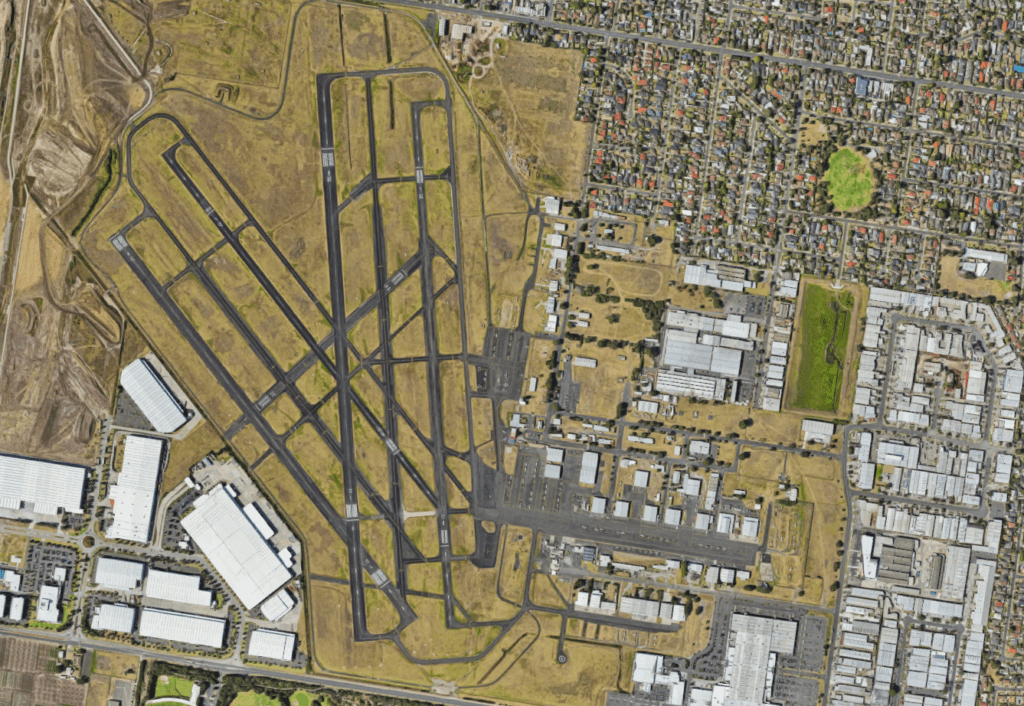
When is the best time to fly?
The best time to fly in Australia is generally from Spring through Summer and Autumn, as that period offers more daylight hours and less chance of inclement weather. The state of Victoria also has “Daylight Saving” time from October through to April which allows you to fly until much later (up to 9pm in Summer).
It is beneficial to your flight training to experience a variety of flyable weather conditions – and the changeable climate at LTF’s Melbourne base is perfect for that.
Before you start flight training, chat to one of our flight training specialists. Email [email protected]/en or go to https://drift.me/learntofly/meeting to book a meeting and school tour.
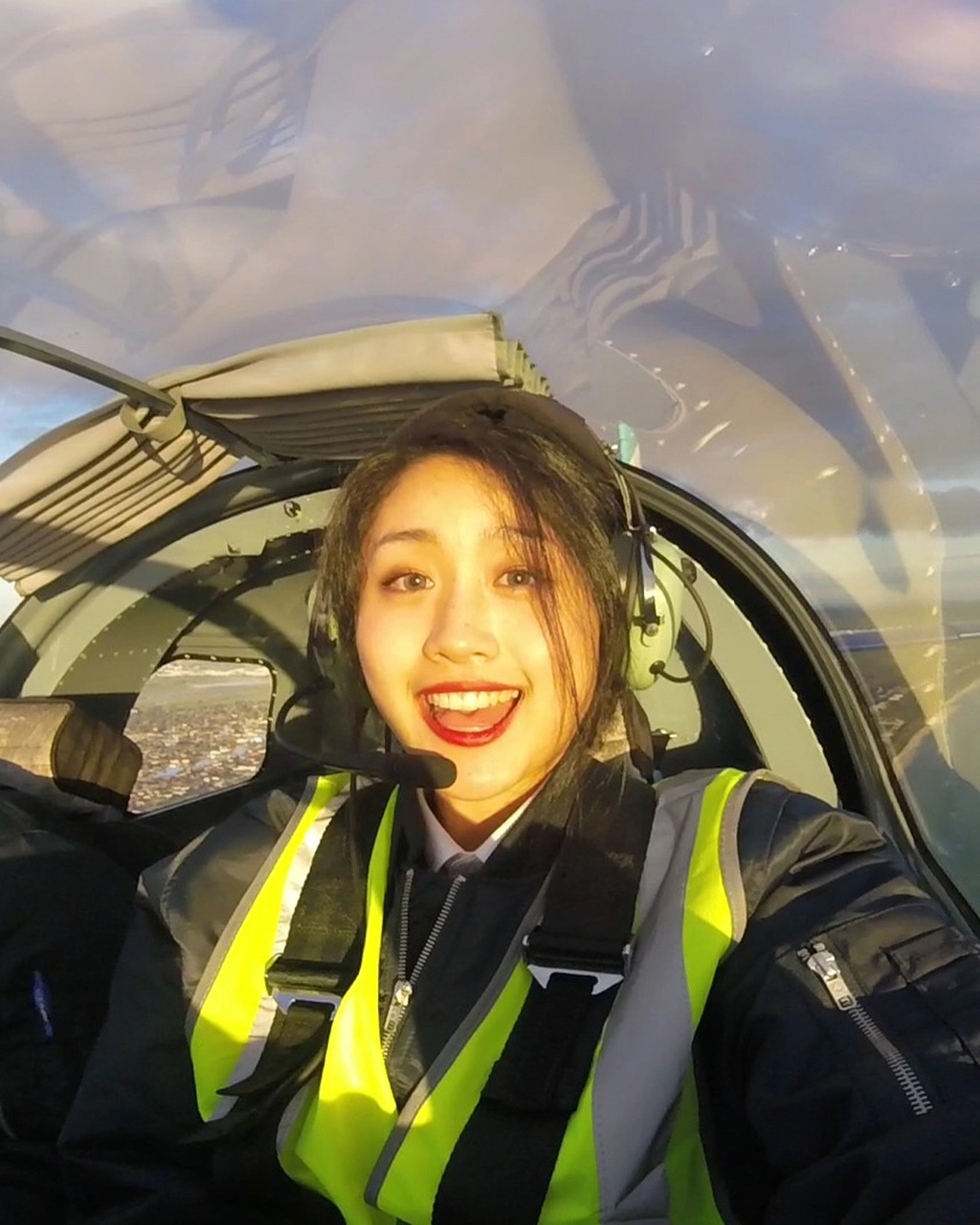
Learn to Fly at a Hong Kong Flight School
Google data shows us that many of you are searching for a Hong Kong flight school. While our main flight training base is located at Moorabbin Airport in Melbourne, Australia, we also have facilities in our Singapore and Hong Kong flight schools to help you get your pilot career off the ground.
Studying the flight theory components locally before progressing on to the practical flight training component can save you a lot of time and money.
The Current Status of Aviation
There is more than one way to fly a plane for a living!
Up until a few years ago, getting a pilot job was more difficult for overseas students. The Australian Federation of Air Pilots (AFAP) shows us that there are now far more General Aviation pilot jobs being listed. Many of these are open to international pilots who can legally work in Australia.
There is much speculation and misinformation about the airline industry’s future and pilot training in general. Now is a great time to become a pilot with opportunities broadening as commercial airlines relax their application criteria and demand for pilot instructors and charter pilots increases.
There are many opportunities for pilot hopefuls in Hong Kong, Singapore and Malaysia looking to pursue a flying career.
Plan with an Experienced Training Facility
If you’re in the early stages of searching for pilot training in Hong Kong, consult with an industry specialist. A Hong Kong flight school like ours will provide you with accurate and current information to help you choose the pilot pathway that suits your career aims, study capacity and budget.
Like any major study undertaking, do thorough research to ensure you are receiving a quality education with experienced instructors and value for money at a leading Hong Kong flight school.
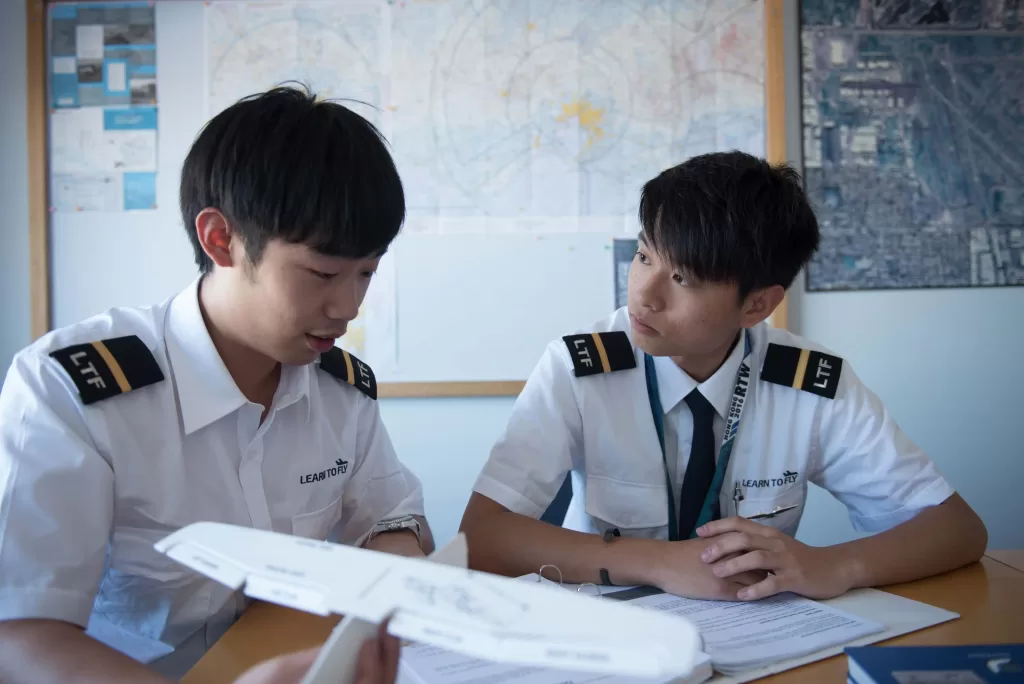
Student and Tourist Visas
Overseas students looking for a Hong Kong flight school can obtain a student visa to complete their practical flight training with Learn To Fly in Melbourne, Australia. We are pleased to have many international students at our school. We also have many graduates who have gone on to have successful pilot careers.
Pilot hopefuls looking at this option need to ensure they meet the criteria for Australian visa entry. They also need to satisfy the relevant course entry requirements. These can include:
– English proficiency
– Medical check
– Age
– Aviation security check
The Recreational Pilot Licence (RPL), Private Pilot Licence (PPL) and other programs that can be completed in under 3 months may be completed on a tourist visa.
For the Commercial Pilot Licence (CPL), which takes at least 12 months full time, students will most likely require a student visa. We can assist students in contacting registered migration agents to help with the application process. Visit the Australian Home Affairs website for further information on specific visa requirements.
The Temporary Skills Shortage (TSS) Visa
The Australian TSS Visa recognises skills that are in demand and grants visas to applicants for sponsored work in Australia. The demand for pilots, charter pilots and flight instructors in major cities has left many regional and rural flying schools with a shortage.
Some of these areas include larger regional cities. If you are willing to work there, you may well find that a flying school can sponsor you for full-time employment on a TSS visa. This will give you more experience and allowing you to build your flight hours.
Working Holiday Visa
Citizens of many countries like Hong Kong, Singapore, Taiwan, Malaysia are eligible for an Australian Working Holiday Visa. Working Holiday Visa holders need to change employers every 6 months. However, as a potential option, for example, you can easily become a flight instructor in that amount of time. Grade 2 Flight Instructors can work without supervision and are therefore in greater demand.
There are many great opportunities for student pilots from Hong Kong to complete their theory training locally. They can then complete their flight training in Australia. We boast many international graduates who have gone on to have fantastic pilot careers. We also have a range of online training options available.
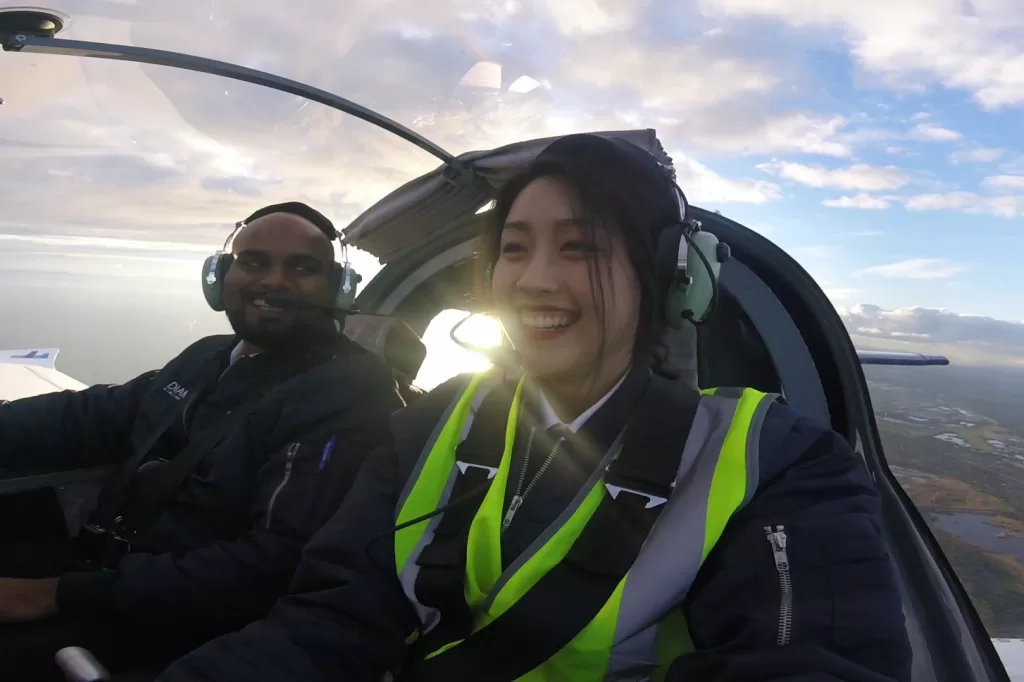
To find out more please email [email protected]/en. You can also go to https://drift.me/learntofly/meeting to book a meeting and school tour.

Pilot Flying Tips for Successful Flights
What are some tips for successful flights? Our instructors are a wealth of knowledge, so we asked them for their best pilot flying tips!
Across Australia and around the world, thousands of recreational and commercial pilots complete successful flights with accidents thankfully being rare. When accidents do occur, investigations often reveal that standard processes and simple practices weren’t carried out. In aviation, this is known as “human factors”.
There’s a lot to take in when you are learning how to fly, and sometimes the most simple of advice can help to make your flying safer and more enjoyable. So, here are some pilot flying tips from our experienced LTF flight instructor team!
Planning
Prior planning prevents poor performance. Adages like these become cliche for a reason. Have a thorough flight plan. Know your radio calls and frequencies, the landing airport layout, to making sure you ate recently, (take snacks and water, always) and are well-rested before take off.
Other essential planning tips for a successful flight include:
– Knowing the current weather and forecast on the route and at aerodromes
– Being aware of the aerodrome conditions and aircraft suitability
– Knowing ATC rules and procedures for that flight and NOTAMs
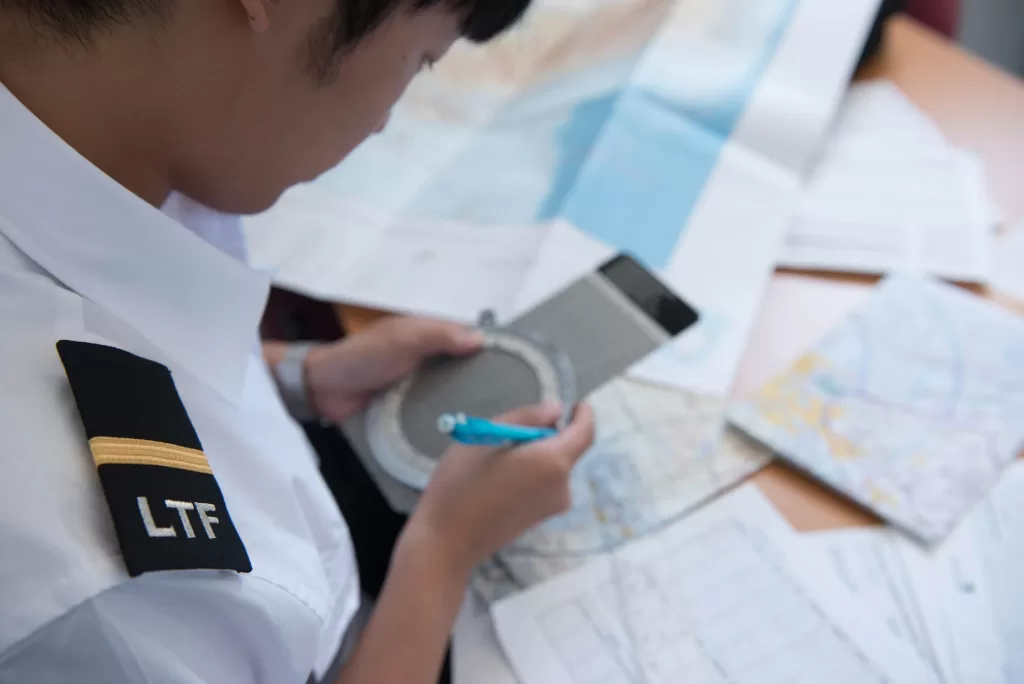
Familiar Territory
Flying can throw enough curveballs at a pilot without creating additional ones through oversight and inexperience. Recognisable and accustomed situations are ways of further minimising risk and avoiding threat situations.
Some examples of what we mean by that:
– Flying in a new aircraft? Fly it in good conditions and in a familiar place.
– Pick the best day to head to a new destination.
No matter how long you have been flying, one of the best pilot flying tips is to carry out one cockpit task at a time. Multitasking means spreading your attention thinly and potentially missing something. Another one of our pilot flying tips is that even if you have been in an emergency and survived (high five by the way), practice your emergency procedures.
Not Flying is OK!
It’s OK to decide not to fly when things happen like a change in weather, you forgot something or are running late. We know how much you want to get up there, but you can choose to fly another day if things aren’t aligning and subsequently putting pressure on your flight plan.
Good piloting comes from an honest assessment of all the factors that enable the safest flight experience. If you decide to push ahead, keep a cool head in situations like if the aerodrome is busy, and don’t succumb to passenger pressure or your own get-there-itis.
Know the Rules
Non-compliance is a contributing factor to many accidents, particularly fatal ones. Whether it is validity, memberships, operating in VMC conditions or one of the abundance of rules and regulations, they play heavily in tips for successful flights.
Being compliant is pivotal to safety, and the rules and regulations have come about not just from the fatal mistakes of past pilots but because our skies are increasingly busy with aircraft.
Brief Your Passengers
Whilst you’re the one behind the controls, an important pilot flying tip is to brief your passengers even if they are friends or family who fly with you regularly and in the same or similar aircraft. It’s good practice to always run through:
– No smoking in or near the aircraft
– Seatbelt adjustments
– Emergency procedure including life jacket and emergency equipment location
– Stowage of luggage and personal items.
Tell your passengers always to let you know if they aren’t feeling well, if they notice something with the aircraft or have questions during the flight. Check in with them throughout the trip (even short ones).
Evaluate and Improve
Being in the sky is one of the most vulnerable places on Earth. Very experienced pilots have failed before as frequently as novices. Experience can be your greatest asset or your blind spot by way of complacency or worse, cockiness. Soar to great heights but keep your ego grounded on terra firma.
Evaluate after every flight. You should be looking to improve something every flight. Professionals across all sectors, through to elite athletes all look at their last performance and see what can be improved.
Never stop learning. Write your own notes and study them. Doing a flight check with someone different every year is a great habit to get into in between your biennial flight reviews.
You can get more pilot flying tips by subscribing to our YouTube channel. We have RPL/PPL flying lessons, aircraft pre-flight check videos, and more. Click the button below to subscribe!
Chat to one of our flight training specialists to get your pilot training off the ground. Email [email protected]/en or go to https://drift.me/learntofly/meeting to book a meeting and school tour.
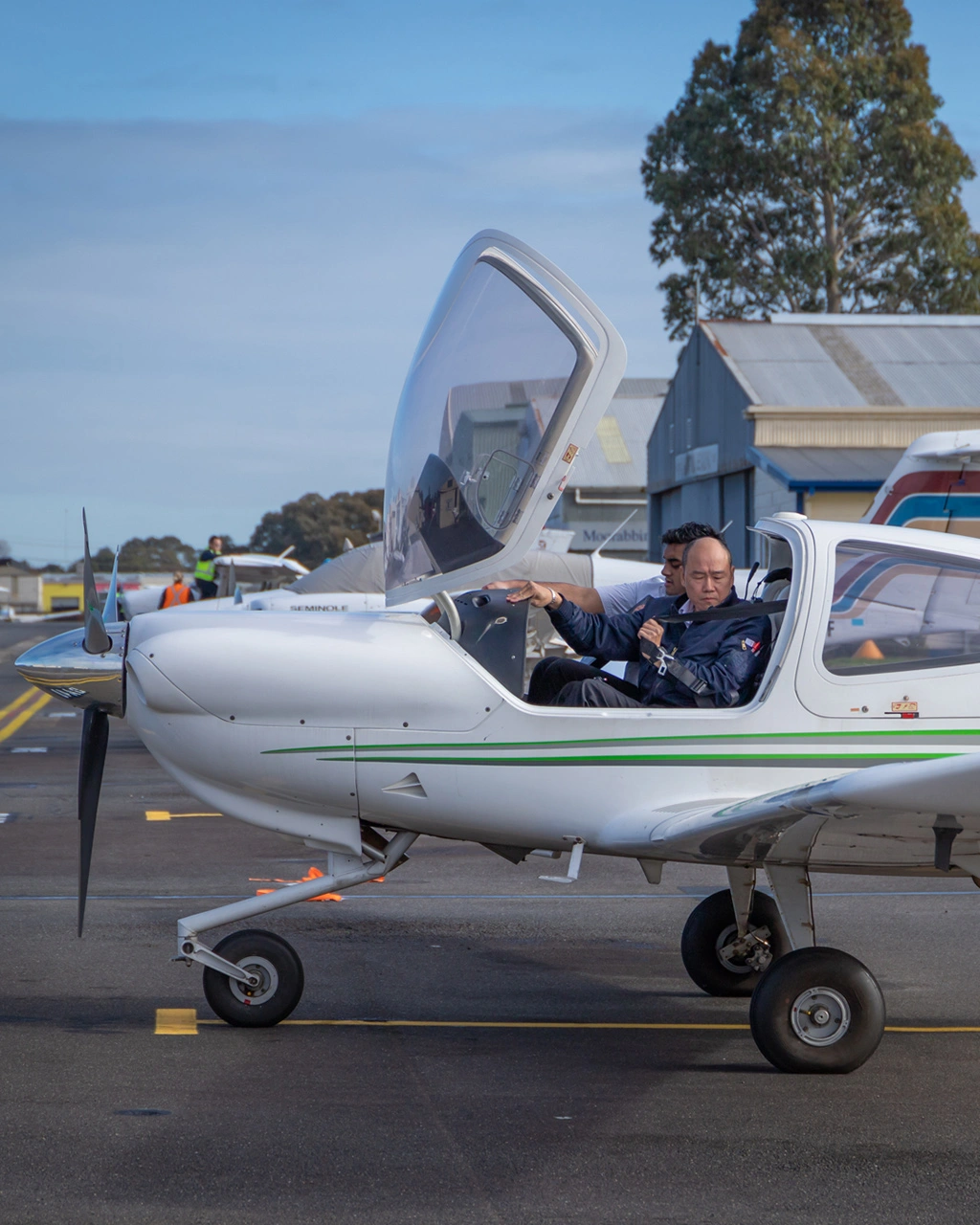
Training as a Mature Age Pilot: Learning to Fly in Your Fifties
You’re never too old to chase your dreams! Student pilot Kim shares with us his story of learning to fly in his fifties, training as a mature age pilot, and fulfilling his pilot dreams. This year he flew his first solo just shy of his 54th birthday.
Hailing from Singapore, like all citizens and second-generation permanent residents there, Kim had to join the armed forces. He still keeps in contact with two of his military friends who are established pilots and are currently captains for Singapore International Airlines.
“We have a WhatsApp group chat to keep in touch. The two pilots recently captained a flight together, and shared a photo of the two of them in their uniforms after the flight.”
I replied with a photo of myself after my first solo, next to a Diamond DA40 with the text “I may be 30 years behind you, but I am learning to fly”.
They were so happy and excited for me. One replied, “Kim, have fun. A small plane is fun to fly and lots of things to look around”.
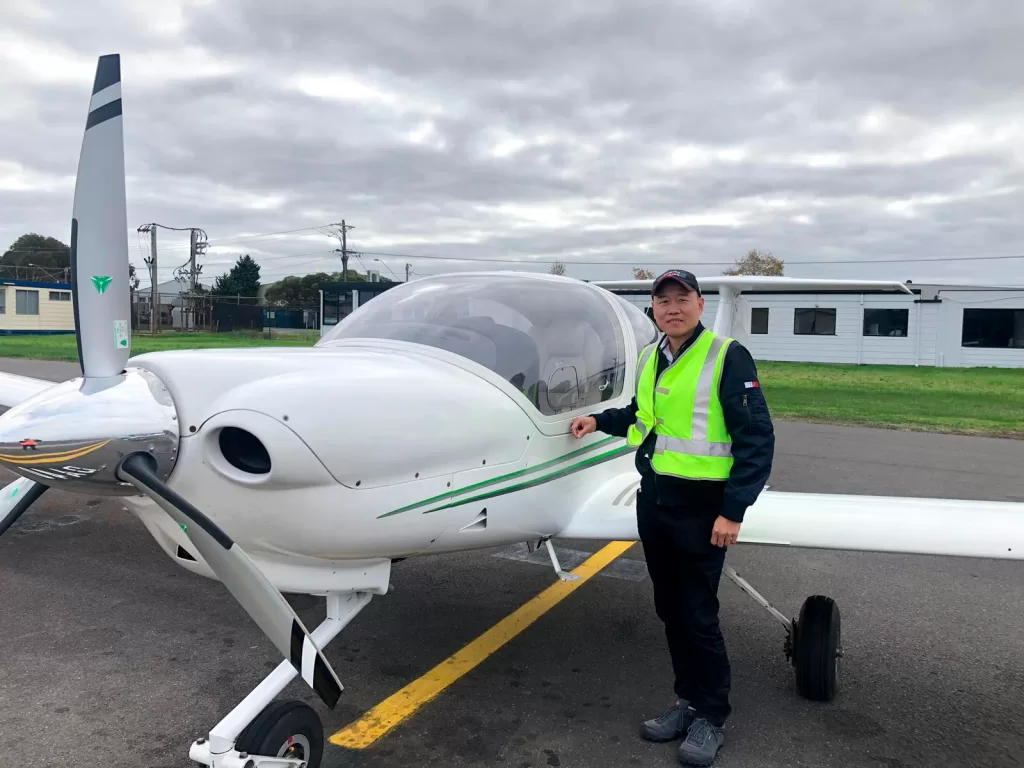
Did you always want to be a pilot?
I have always had a keen interest in aviation, like flight planning and Air Traffic Control. I tried to join the Singapore Air Force when I was younger but was rejected because of their eyesight requirements. So I missed that chance.
What are the issues with your eyesight?
I used to wear glasses for short-sightedness. For the air force your eyesight must be perfect. I had laser eye surgery 15 years ago, and now my vision is excellent. However, it was still too late to join the air force. The dream to fly remained, though. I’m retired and still healthy, I thought I would try again to be a pilot of some sort.
Which course are you studying?
Right now, I am doing my RPL. I will go through all the tests, and once I get my licence, I will go to the PPL. I can’t fly with an airline or the Air Force obviously, so I want to fly for fun.
What has been the highlight of the course?
Everybody says your first solo is the most memorable and most exciting moment as a pilot. Indeed it was for me, but not for the reasons you might think. I had to do three solo checks before I could fly. The weather changed, then the air traffic was too busy.
Then when I did get to fly, another issue was my own silly mistake. I didn’t line the aircraft nose up straight. My aircraft wheels weren’t straight either. When I powered up, the plane went to the left. I tried to use the rudder to straighten up, but that didn’t work to straighten the aircraft, and I was moving sideways. I had to hit the brakes and I went onto the grass. Then I advised the control tower I was aborting the flight. I came back to the training room to debrief. The instructors said I did the right thing calling off the flight, as after something like that you should come back and check for potential damage.
I was upset with myself. When something like that happens, it’s a big blow to your confidence. My instructor was a little surprised too because he thought I seemed ready. It was one small thing that I didn’t check. However, that is all behind me now. It has made me a better pilot. I won’t make that mistake again!
So a mistake that you made ended up being a highlight because you learned the lesson from it?
It made me more aware of things that can go wrong, even when you are focused and prepared. This can happen to anybody – even an experienced pilot.
What have you found to be the most difficult thing about mature age pilot training?
The weather and busy air traffic. Even when you get good weather and an aircraft, the airport is hectic. So there is lots of waiting. We only have a two-hour time slot to fly. More waiting around means less flying time. The weather here is the most challenging for me.
How did you go with the theory and exams?
I found the exams ok so far. You have to study hard, and you have to know the material – lots of memorising. I haven’t found it an issue, and I am currently preparing for a big theory exam. I will do that around mid-August. So by next week, I should have finished all my flying so I will have two weeks of intensive study and prepare myself for theory. When that is over, I can arrange for my flight test.
What would you say to anyone whose considering learning to fly later in life?
Live your dream if you want to fly. I feel, at 54, my age is not an issue. It is more about your mental will.
The other day I met a man who had come in for a Trial Introductory Flight. A retired businessman around my age who was asking me many questions. He was scared about the engine stopping mid-air and asking me what happens. I was explaining that pilots are trained to manage those situations. We got talking about how I was getting my Recreational Pilot Licence. He was saying he did want to learn to fly and now thought he was too old. He is 50, so I told him I am 54 and I am learning. So you are not too old!
Then when he went out for his flight, and the pilot let him glide. After landing, he came and spoke to me again. He was so excited.
So to people my age, I want to tell them, you are never too old. As long as you are medically fit and you have good motor reflexes, then you can fly.
This is what I always wanted to do. Now I am retired and have the resources. It took me a while, but here I am. I enjoy it so much. I’ve met some nice people. The instructors are great.
Thanks Kim for sharing your experience of learning to fly in your fifties. Best of luck for achieving your Recreational Pilot Licence.
Are you a mature age pilot looking to start your training? Get in touch with our flight training specialists. Email [email protected] or visit https://drift.me/learntofly/meeting to book a meeting and school tour.
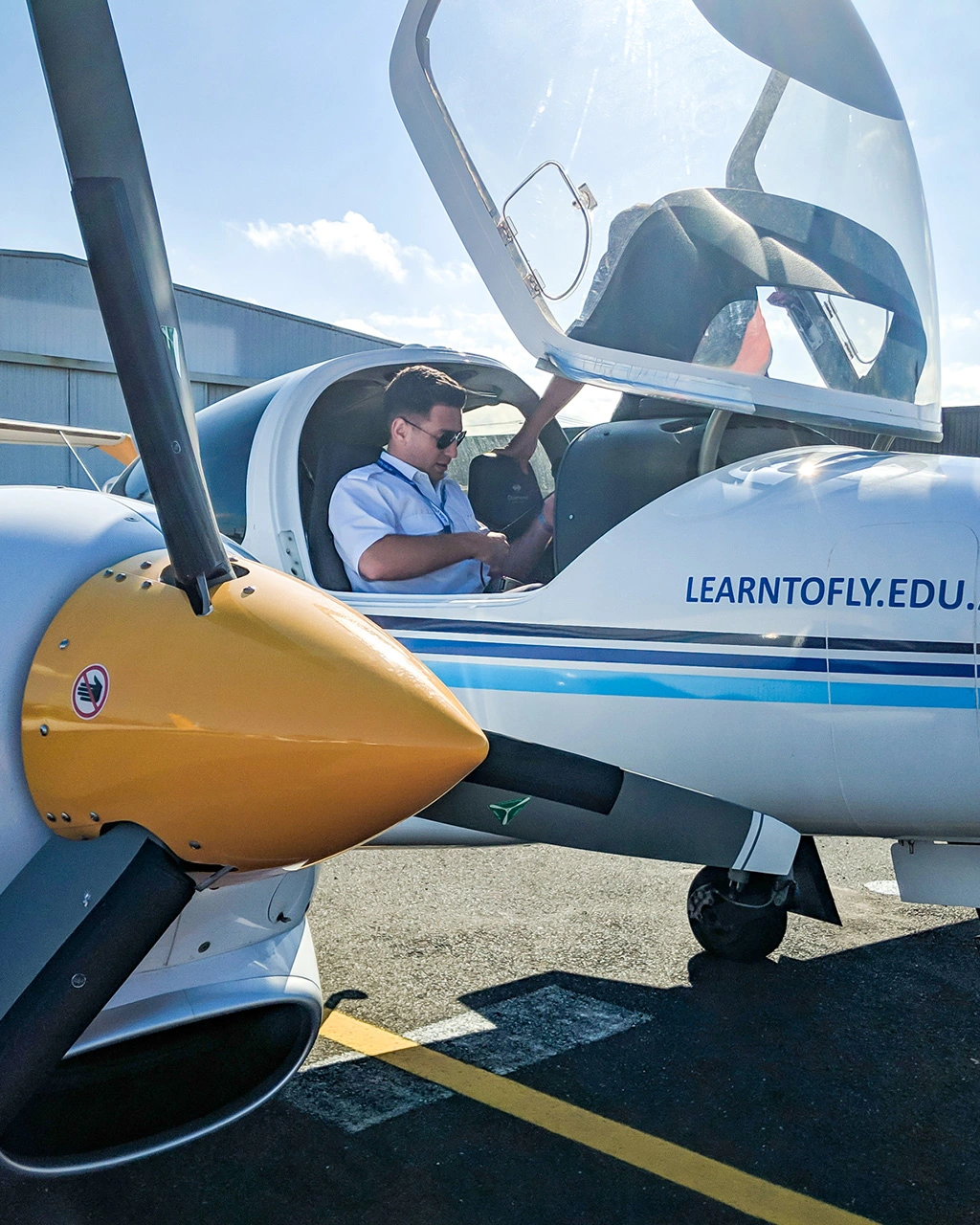
The IMSAFE for Pilots Method
Pilots know their pre-flight checklist inside and out to ensure the aircraft is safe and ready to fly. Of equal importance is the IMSAFE for pilots method, which is pre-flight wellbeing cross-check to determine that they are physically and mentally fit to fly aircraft.
Pilots will learn the IMSAFE checklist early in flight training because a multitude of human factors can impair pilot skills and decision making. Decisions that pilots make can bear far greater consequences than your average 9-5 job.
Passenger and pilot safety is paramount, and therefore conducting an IMSAFE check helps reduce the likelihood of errors.
IMSAFE for pilots stands for:
Illness (meaning, are you currently sick or have been recently?)
Medication (meaning are you taking prescription or over the counter medications?)
Stress (meaning are you experiencing psychological pressure or anxiety?)
Alcohol (meaning when did you last consume alcohol, or are you hungover?)
Fatigue (meaning are you exhausted or overtired? When did you last eat?)
Emotion (meaning are you upset about anything?)
It’s obviously a fairly tough time for current pilots, with huge disruptions to domestic and international travel. Major carriers like Qantas, Singapore Airlines and Cathay Pacific have had to stand down thousands of employees. Sadly this has included even experienced airline pilots. Many people may think that starting pilot training now is risky, but we think the future is bright. Read on to find out why!
Illness
A valid medical certificate is required for certain conditions, but it’s important to acknowledge less serious conditions as well. If you had a cold or flu, you would reschedule your medical until you were feeling better, so you should also reschedule your flight.
Please rest if you are sick. Cold, flu and seasonal allergies should not be underestimated. It’s a double-edged sword in how their symptoms in isolation can affect pilot performance, and then combine with any medication you take to relieve them.
Medication
Many prescription and over-the-counter medications can be dangerous for a pilot to take before flying. When medication is necessary, discuss it with an aviation medical examiner before you fly. Depending on the drug, it may mean there is a no-fly wait period post-consumption for pilot safety. It’s also worth investigating any long term effects of taking medication.
Stress
Stress is a regular part of life. However, we can likely agree that pilots have an inherent intensity that comes with the job. It’s above average and prolonged stress that affects us negatively. The kinds of stress to be aware of are:
Physiological: the physical body including fatigue, strenuous exercise, injury, changing time zones, diet, illness and physical ailments.
Environmental: external factors like temperature, noise, crowds, lighting, air quality.
Psychological: triggered by grief, family issues, conflict, financial troubles or a change in work schedule and obligations.
Stress can come from good things happening in our lives too including getting married, expecting a child, role promotion, a pending holiday, or even large purchases.
Develop positive habits and outlets to manage stress ongoing as part of your IMSAFE for pilots practices. Here are some ideas:
| Regular exercise | Yoga | Drink lots of water |
| Meditation | Eat nutritious food | Spend time outside |
| Quality sleep | Less screen time | Limit alcohol |
Having a clear mind is so important. If stress or anxiety is affecting your thought process before or during flights, talk to trusted family and friends or a professional.
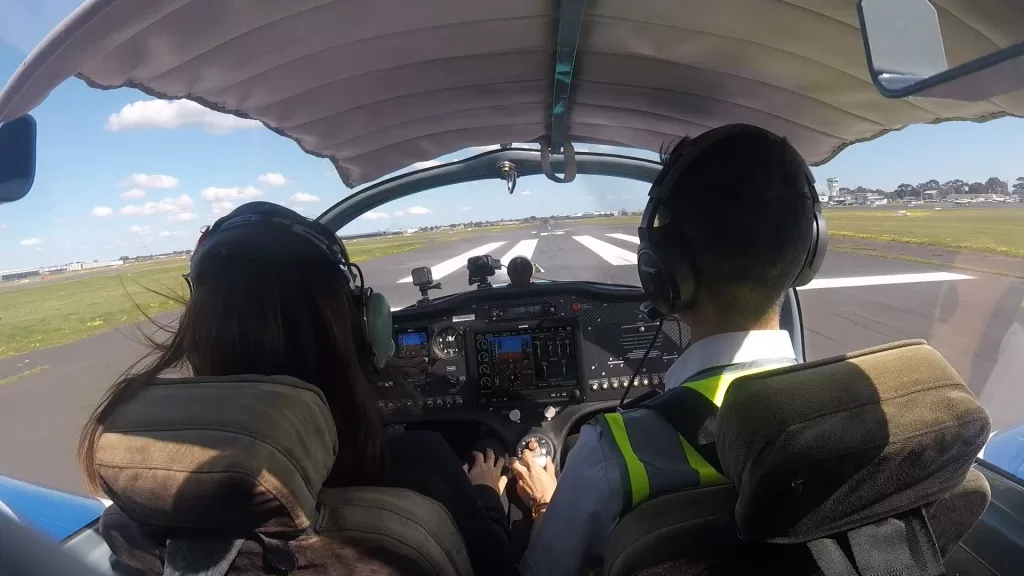
Alcohol
Alcohol’s effects are universally understood, and consuming alcohol within 8 hours of operating an aircraft is prohibited. This can be enforced with random breath testing.
“Eight hours from bottle to throttle” is also a slippery slope. While you might pass a random breath test, hangovers can’t always be cured by a buffet breakfast and Berocca. Nausea, vomiting, extreme fatigue, dehydration, foggy attention and dizziness are not symptoms you want to fly a plane with.
There’s the creeper hangover too. Have you ever woken up fine, but then several hours later want nothing more than a Gatorade, bed and darkroom? Resist the temptation, and avoid alcohol 24 hours before you get behind the instruments.
Fatigue
Fatigue is different from being tired and lifestyle, physical and mental health factors affect fatigue levels in everyone differently. If you know your body and understand what it needs to perform optimally then you can take steps to ensure fatigue doesn’t set in.
Food is fuel, and this means having a proper diet as well as eating regularly. Prolonged hunger can cause drops in blood sugar, which affects your mood, energy and concentration. Schedule in your mealtimes and keep nutritious snacks, confectionery, water or electrolyte drinks on hand.
Emotion
Pilots are encouraged to keep calm and carry on in all situations, but they are still human. Take the time to consider your own personal and professional baggage before you enter the cabin, and ask yourself:
– Is anything bothering or upsetting you?
– Are you angry or annoyed?
– Are you sad, anxious or depressed?
Negative emotions are part of the human experience. It might be something that happened today or an accumulation of things. No one is asking you toughen up and get over it. Taking an emotional inventory can help you compartmentalise it pre-flight and focus on the job. Be sure to seek out a trusted friend or family member, or professional help if you need support.
To find out more about our flight training courses please email [email protected]/en. You can also go to https://drift.me/learntofly/meeting to book a meeting and school tour.
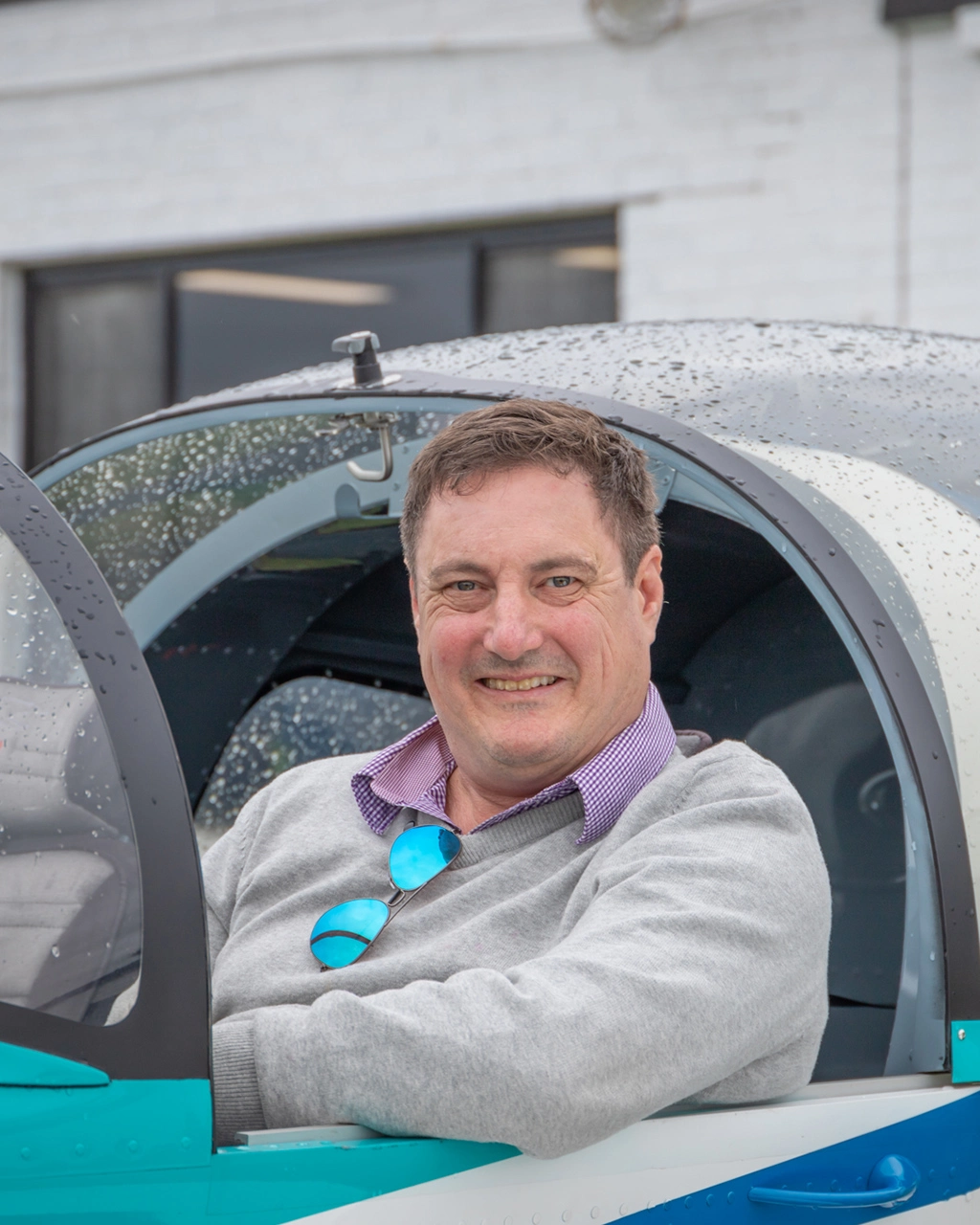
Taking to the Sky as a Mature Age Pilot
Want to learn to fly in Melbourne? Even in your later years, you can take to the sky as a mature age pilot.
Becoming a pilot is often considered a youthful pursuit. A majority of students who achieve their pilot licence with Learn to Fly are under 25 and go on to have successful pilot careers or fly recreationally. However, if you are well over 25 and still have pilot aspirations, you don’t have to give up on your dream. Even with certain medical conditions that some people perceive as a barrier to obtaining a pilot licence, as LTF student Pete Bain shows us, it’s an achievable goal.
We sat down with Pete, who is undertaking his GA Private Pilot Licence, for a quick chat to ask him about being in his fifties and deciding to become a pilot in Melbourne.
Did you always dream of becoming a pilot, or is this a new endeavour?
I had dreamt of becoming a pilot, but it never came to fruition. I joined the police force at 20 and followed that path instead.
I undertook some flying lessons when I lived in England many years ago and acquired about 10 hours. However, it became unaffordable for me, so I stopped. I then developed a condition in my eye that has left me virtually blind in my left eye. I just assumed that this would disqualify me from getting the medical clearance required, so once again, I didn’t pursue it any further.
When I moved to Australia, on a whim I started making some enquiries. It was in my investigations I discovered that being a monocular pilot is not uncommon. I also found out that becoming a pilot was more affordable in Australia than in the UK, so I decided to retake the plunge.
After some research and talking to some Melbourne flying schools, I decided on Learn To Fly. One of the reasons I chose this school because of the busyness of the airport, so I could get more experience with air traffic and radio communications.
I started here with the RA-Aus course, but I decided to transfer over to a Private Pilot Licence (PPL). However, that requires a Class 2 Medical clearance. I have been working with CASA to obtain this.
Tell us more about that. What has this meant for obtaining your PPL?
I started with LTF in November 2018. I have got roughly 40 flight hours. So I am at the stage where if I had my medical clearance, I would have been able to progress to solo and then go onto licences. So it has stagnated my progress a little. In the interim, I’ve continued with my instructors to keep practising things such as emergency forced landings and short field takeoff landings. However, again, I haven’t been able to fly solo and go and do that myself. I feel like I’ve been spinning my wheels a little at the moment.
“The bad news is time flies. The good news is, you’re the pilot” ~ Michael Altschuler.
What has been the highlight of learning to fly so far?
Today. I’ve had to jump through loads of hoops for CASA to get my Class 2 Medical Clearance. Today was the last hoop so it is looking good that I will get the required medical certificate so I can keep progressing with my PPL dream.
What have you found the most challenging about learning to fly?
For me, I guess it’s the workflow and the checklists. Remembering those and keeping on top of them. Every now and again, an instructor will ask you a question. For example ‘can you remember what we do for a steep turn’, and you think ‘I hadn’t thought of that in a while’ – so trying to remember those details of what you aren’t currently practising. It does become more and more familiar with the practice over time.
What is your ultimate goal as a pilot in Melbourne?
I want to get to PPL. I don’t want to be a commercial pilot. Besides, I’m 53. A job with an airline is not an option for me. I could get a job as a flight instructor or something like that. However, I’m happy doing what I am doing. I just want to fly.
The idea of flying my wife, or friends, or even my dog to an airfield for lunch or even a short break somewhere nice, and then coming back is pretty cool. I’ve got family in NZ and England and when they come over to visit it could be quite nice just to take them up and fly them around and Victoria from above.
Do you have any tips or advice for anyone who is considering being a mature age pilot?
Persevere. There might be hurdles to overcome in terms of balancing what’s required from a learning commitment point of view. You may also have to face obstacles concerning CASA medical clearance regulations, but that is all part of it. If you keep at it, you will get there. Take things at your own pace.
Thanks, Pete for showing others that the art of flying as a mature age pilot absolutely can be done!
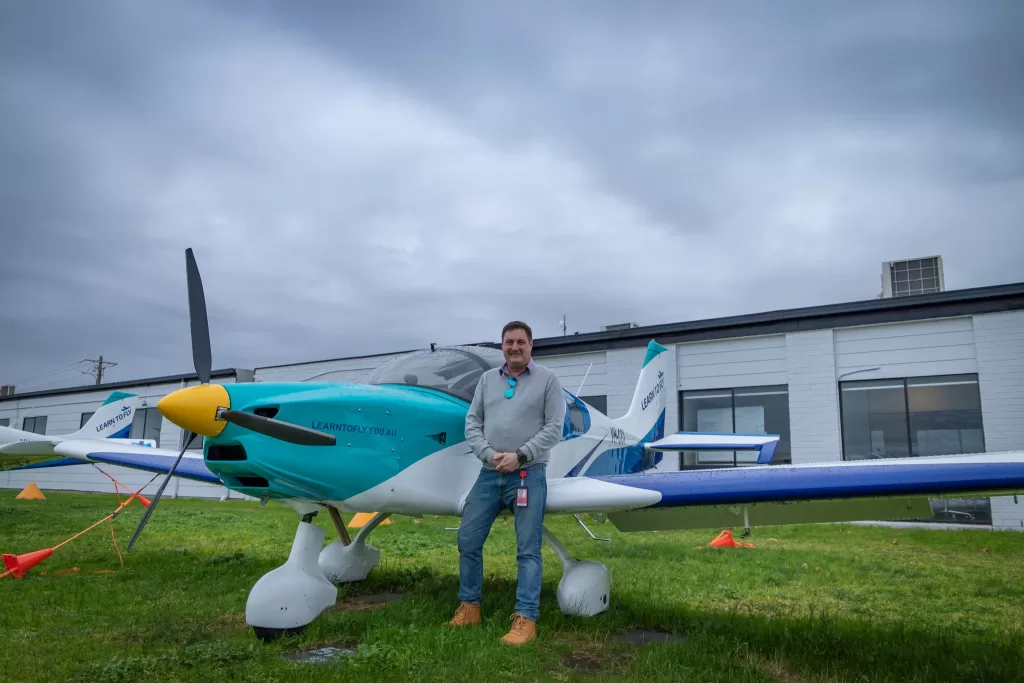
Are you a mature age pilot looking to start your training? Get in touch with our flight training specialists. Email [email protected] or visit https://drift.me/learntofly/meeting to book a meeting and school tour.
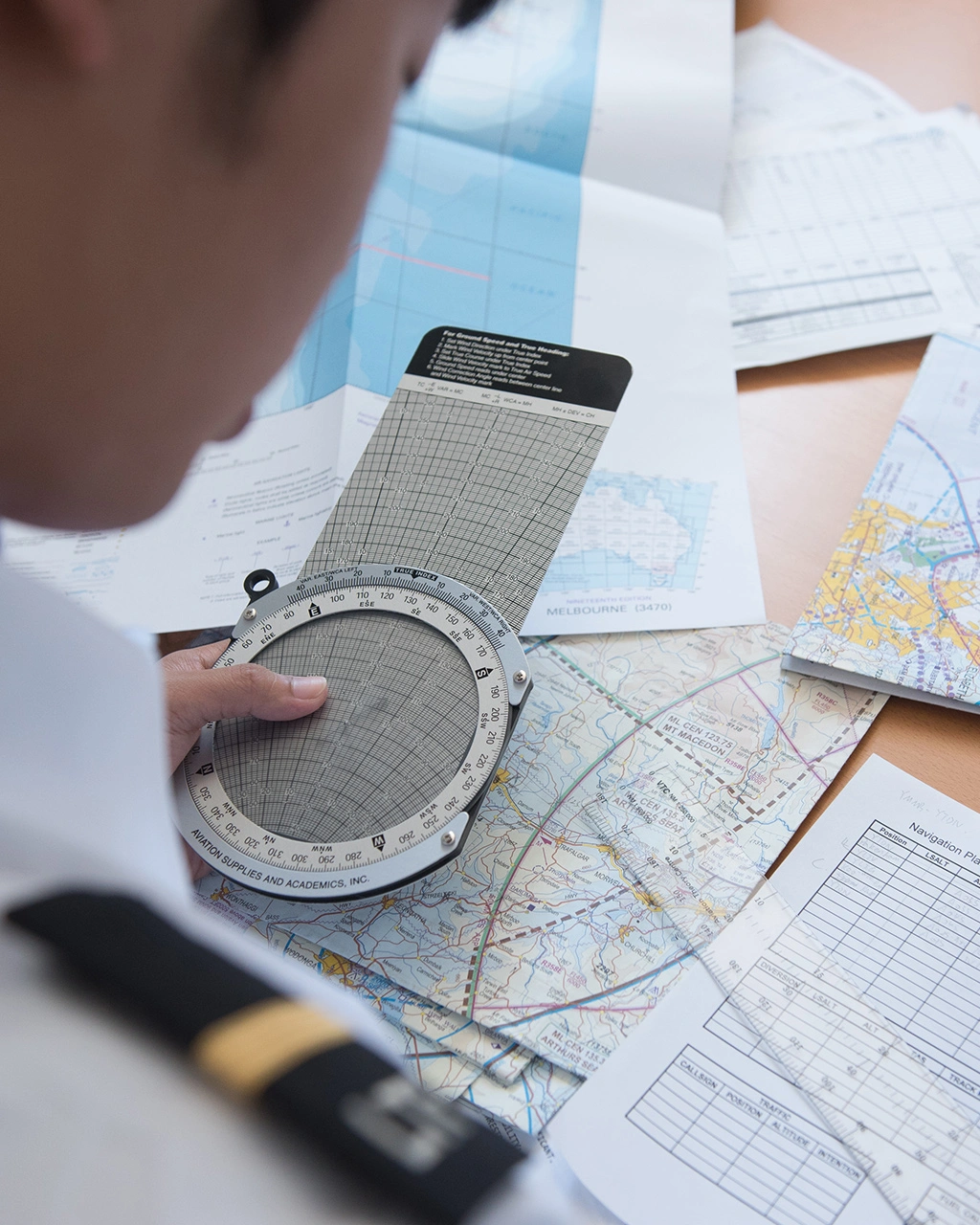
Basic Pilot Navigation Skills – PPL Training
If you have already learnt the fundamentals of flying and are hoping to obtain your Private Pilot Licence (PPL) or even a Cross Country Endorsement (for RA-Aus RPC holders), then learning basic pilot navigation skills is the next thing on your agenda.
The majority of the PPL syllabus centres around navigation, and you will learn both basic techniques and advanced skills to allow you to conduct flights to and from anywhere in Australia.
Whilst technology has provided us with incredibly powerful tools to assist with navigating in an aircraft, learning and understanding the principles is still extremely important for any pilot.
The Fundamentals of Navigating an Aircraft
Since there are no roads in the sky, navigating from Point A to Point B can potentially be a lot more difficult in the air to what it is on the ground.
The concepts of using maps, a compass, and landmarks or geographical features as navigational tools have been around since well before the first flight ever happened – but they are still central to navigating an aircraft today.
Maps and Charts
Student pilots learn about the different types of maps that exist, what aviation-specific maps and tools are available, and how to use them correctly. They will also need to have a detailed understanding of the terminology, symbols and scales used in aviation maps and charts.
Some of the maps and charts used for navigating an aircraft include:
– Visual Terminal Charts (VTC)
– Visual Navigation Charts (VNC)
– World Aeronautical Charts (WAC)
– Jeppesen Airways Manual Low Altitude Charts
– Jeppesen Low-Altitude En-Route Charts and Area Charts
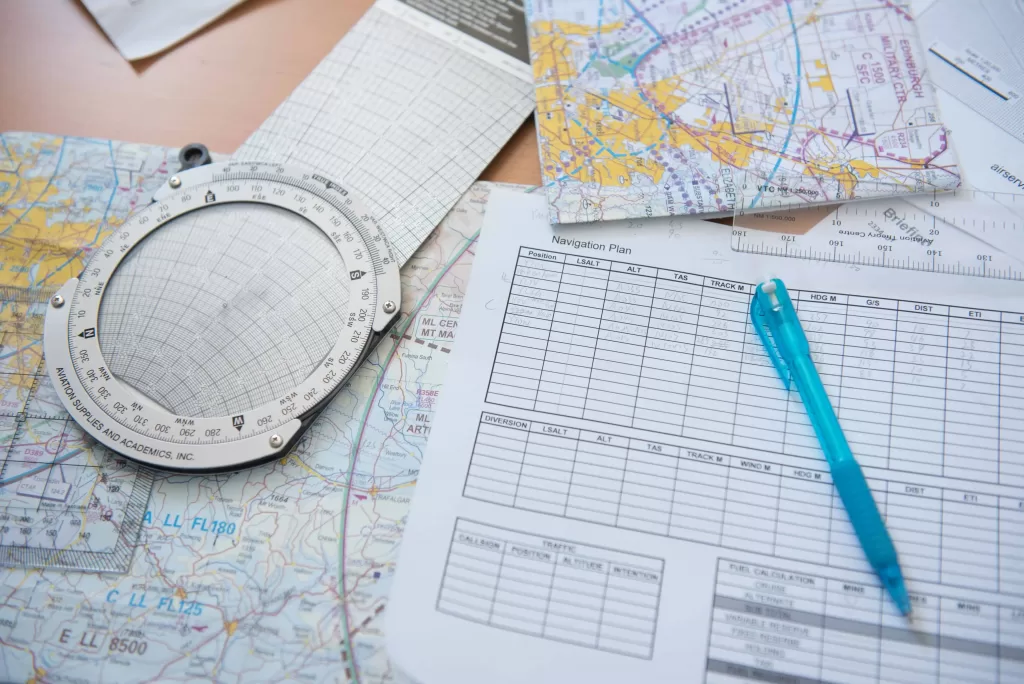
The Earth, Positioning, Distance, Direction and Time
The concepts for the most basic pilot navigation skills come from understanding the shape of the Earth, and how location positioning conventions have been applied to it. Student pilots will learn how co-ordinates for a specific point are determined, and look at key features including:
– Latitude and longitude
– The Poles
– The Equator
– Cardinal Points
– Great Circles and Rhumb Lines
– Time (Including Coordinated Universal Time UTC)
Understanding Velocity
The concepts relating to velocity and its effects on navigating an aircraft is sometimes referred to as the “Velocity Triangle”. Basically, this compares the direction and speed properties of a moving aircraft to the direction and speed properties of the wind to determine the effects on an aircraft’s track, and end destination.
To understand these concepts and perfect navigation solutions to the problems they pose, students learn about:
- Speed & Velocity
- Heading and bearing
- Track and Track Made Good (TMG)
- Vectors
- Indicated, calibrated and rectified airspeed
- Plotting
- Using Navigation Computers
Flight Planning
The next phase of basic pilot navigation skills involves applying the previously learnt concepts to the planning of flights, which include a number of waypoints or stops. Additional factors are included at this stage such as:
- Airspace classes
- Fuel planning
- Altitudes
- Weather forecasts
There’s a lot to take in when you are learning how to fly, and sometimes the most simple of advice can help to make your flying safer and more enjoyable. So, here are some pilot flying tips from our experienced LTF flight instructor team!
Practical navigation exercises
Of course the most fun part of learning basic pilot navigation skills is putting them into practical use!
Integrated PPL syllabus will combine theory and practical flying as you go, gradually building to more complex navigational flight exercises as more concepts are learnt and grasped.
Many of the concepts and calculations that student pilots learn relating to navigation can nowadays be effectively managed or guided by computerised avionics. At Learn To Fly, we have fully analogue aircraft as well as aircraft with the latest Garmin G1000 technology.
We believe it’s essential for a pilot to understand and be able to apply concepts without the aid of computers, but it is also important for them to learn what technology is available and how it can reduce the potential for human factor errors.
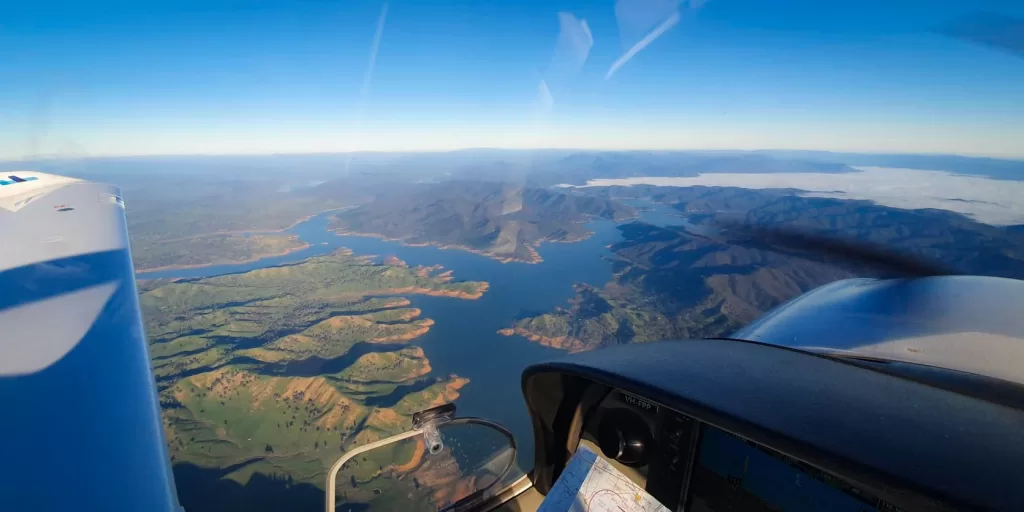
You can get more pilot flying tips by subscribing to our YouTube channel. We have RPL/PPL flying lessons, aircraft pre-flight check videos, and more. Click the button below to subscribe!
Chat to one of our flight training specialists to get your pilot training off the ground. Email [email protected]/en or go to https://drift.me/learntofly/meeting to book a meeting and school tour.
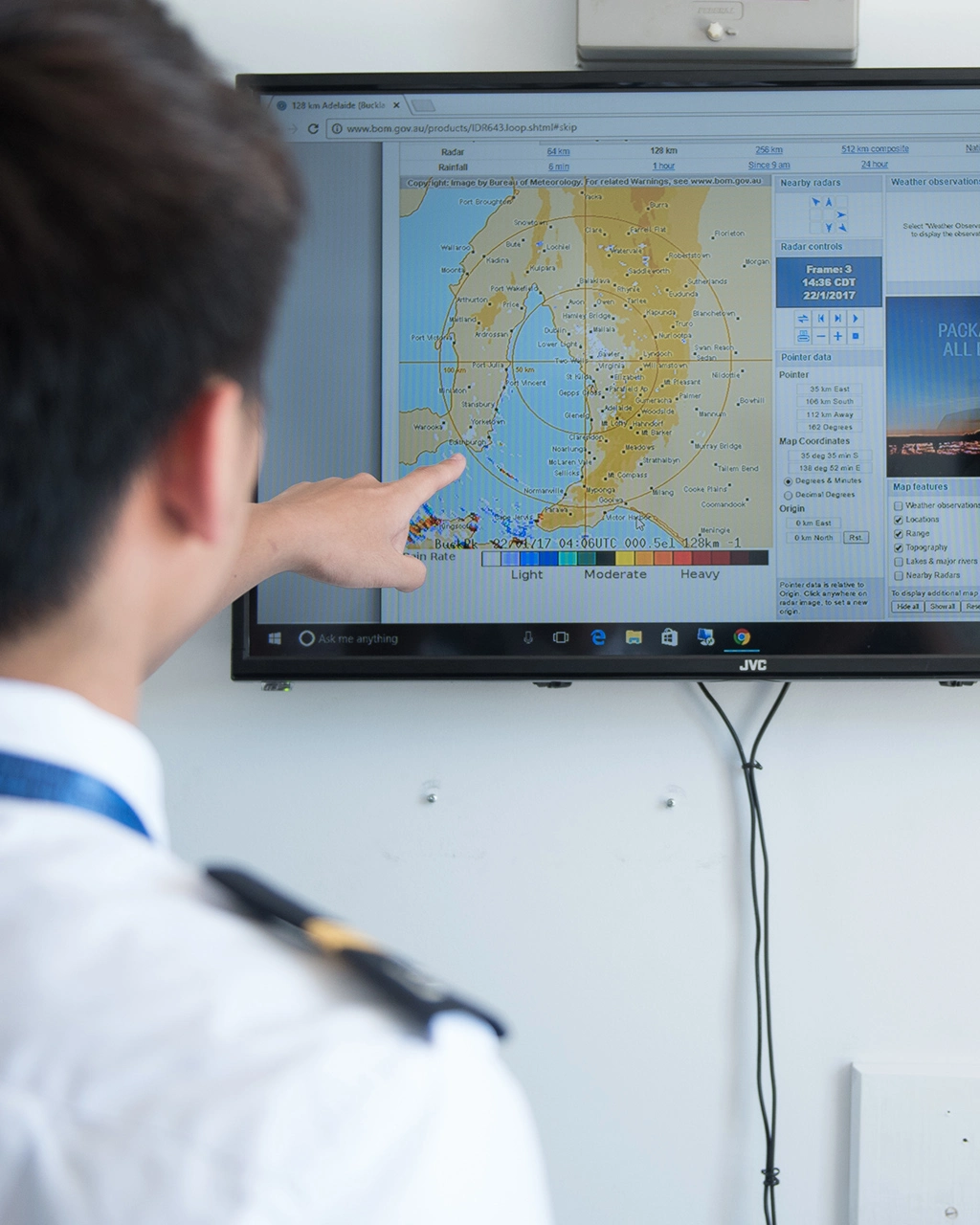
The Best Aviation Websites for Student Pilots
According to studies, the average person apparently spends nearly seven hours a day on the internet in some way, shape or form. When you take away social media, endless perfectly posed selfies, cute puppies, and videos of cats doing hilarious things – there is actually an incredible amount of useful information out there on anything you might need to know, including aviation websites for student pilots.
Pilots rely on internet-based information for many things. This can include anything from training resources and simulation, to live flight data, navigational aids and real-time weather. For those pilots that may not know where to look, we have put together a list of the best aviation websites for student pilots.
Information Websites:
Civil Aviation Safety Authority (CASA)
Over the last few years, the CASA website has seen significant improvement in terms of functionality and training resource availability. This governing body aviation website includes:
– Aerodrome and airspace information
– Aircraft register and airworthiness information
– Written and multimedia training and education resources
– Rules, regulations and safety information
– Licensing information
– Medical information and links
CASA also has a YouTube channel featuring videos that target topics including human factors, safety management, fatigue, drones and flight crew licensing and training.
Recreational Aviation Australia (RA-Aus)
With nearly 10,000 pilot members, RA-Aus is the peak body in Australia responsible for administering ultralight, recreational and Light Sport Aircraft (LSA) operations. On the website you will find:
– Membership and member event information
– Training information
– Accident summaries
RA-Aus offers a host of scholarships for flight instructors, maintainers and people of any age who wish to enter the aviation industry, and also publishes a print magazine called Sport Pilot.
Airservices Australia
Airservices Australia is a government-owned organisation providing the aviation industry with telecommunications, aeronautical data, navigation services and aviation rescue and firefighting services. They are also the provider of NAIPS – the pilot briefing service which covers flight plan filing, NOTAMs and safety information. The website has:
– Navigation information
– Flight briefing services
– Career information for air traffic control, aviation rescue and firefighting
– Charts, navigational supplements and other products available for purchase online
Bureau of Meteorology (BoM)
Through regular forecasts, warnings, monitoring and advice covering both Australia and Antarctica, BoM provides one of the most fundamental and widely used government services.
They also offer an aviation weather service that provides pilots with meteorological information necessary for safe operations within the technical and regulatory framework of the International Civil Aviation Organization (ICAO) and the World Meteorological Organization (WMO). Some of the information of the website includes:
– Interactive Local and national weather maps and forecasts
– Interactive weather radars
– Synoptic charts and forecasts
– Aviation weather warnings
– Downloadable resources and historical data
– Graphical Area Forecasts (GAF)
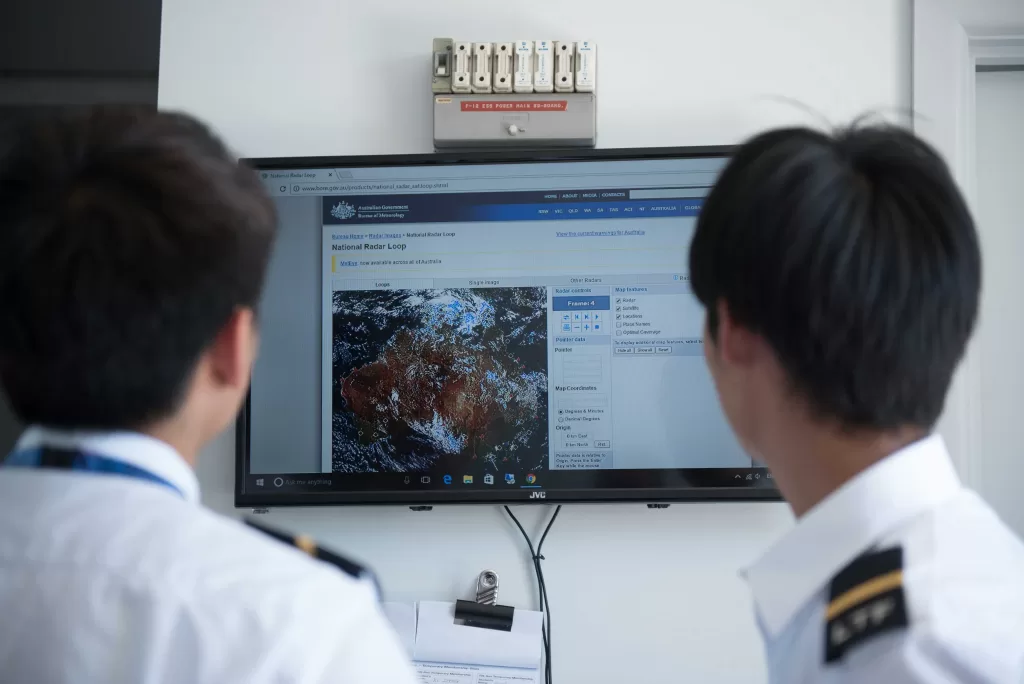
Aviation News Websites:
There are many aviation news websites available online that contain a range of information including industry updates and news, training-related articles, regulatory changes, reviews, features, events, galleries, videos, competitions and more. Here are some of our favourites:
Australian Flying
Australian Aviation
Flight Safety Australia
Avweb
Flight Planning Websites:
AvPlan EFB
AvPlan is an Australian flight planning application for Apple iPad, iPhone and Android devices. It is CASA approved and therefore can be used as a legal replacement for paper maps, ERSA, DAP, AIP and AIP SUP. The website includes:
– Tutorials, tips and webinars
– Virtual co-pilot
– Airfield directories
AvPlan EFB also offers flight plan transfers from Jeppesen, FliteDeck, Command Flight Planner and Champagne.
OzRunways EFB
Available for Apple and Android devices, OzRunways is an Australian electronic flight bag, approved by CASA as a data provider, meaning that Australian pilots can use it to meet all requirements for document carriage in flight. It provides worldwide airport weather, NOTAMS and full area briefings in Australia. The website offers:
– Subscriptions (free trial offer as well)
– User manuals
– Online support
Flight Tracking Websites:
There are a few websites that provide real-time flight tracking information around the globe, with the ability to zoom into local areas for more detailed information. We recommend:
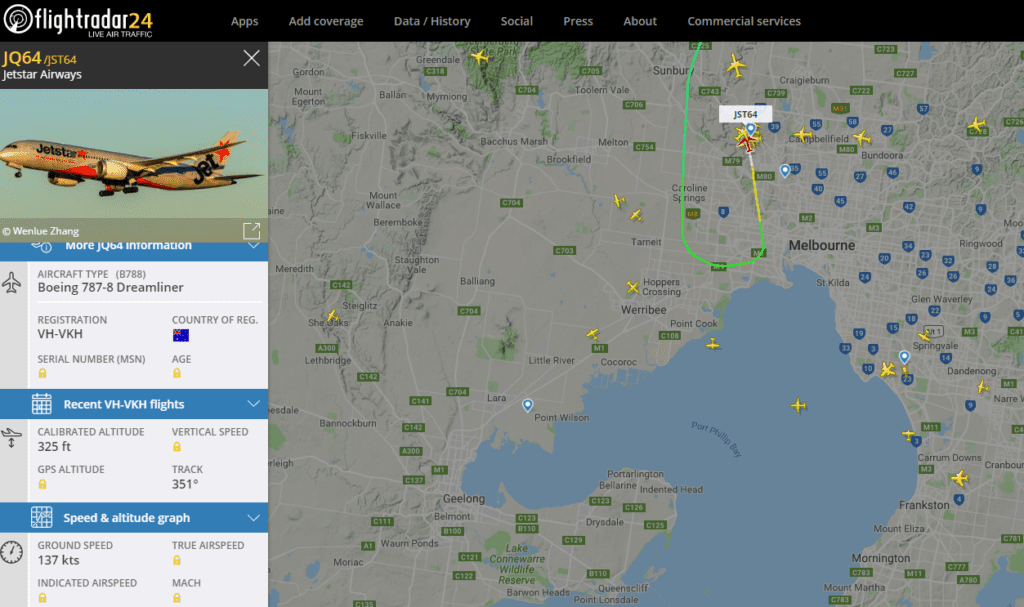
Aviation Careers:
Aviation Australia
A registered training organisation, Aviation Australia was established to support the development and growth of the aviation and aerospace industries in both the Australian and international markets. On this aviation website you can find:
– Aviation courses
– Student support
– Aviation employment services
Pilot Career Centre Oceania
The PCC is a global team of present-day airline pilots. The site offers a wealth of relevant industry insight, recent airline interview experience, and career advice, including:
– Pilot shortage news
– Aviation news and updates
– Pilot jobs
– Training information
– Pilot CV assistance
– Tips for airline interview preparation
The Learn To Fly YouTube Channel
Learn To Fly’s YouTube channel is a great resource for students. We post regular content including RPL/PPL flying lessons, pre-flight check videos for our aircraft and more. Check out the video and click the button below to subscribe.
Before you start flight training, chat to one of our flight training specialists. Email [email protected]/en or go to https://drift.me/learntofly/meeting to book a meeting and school tour.
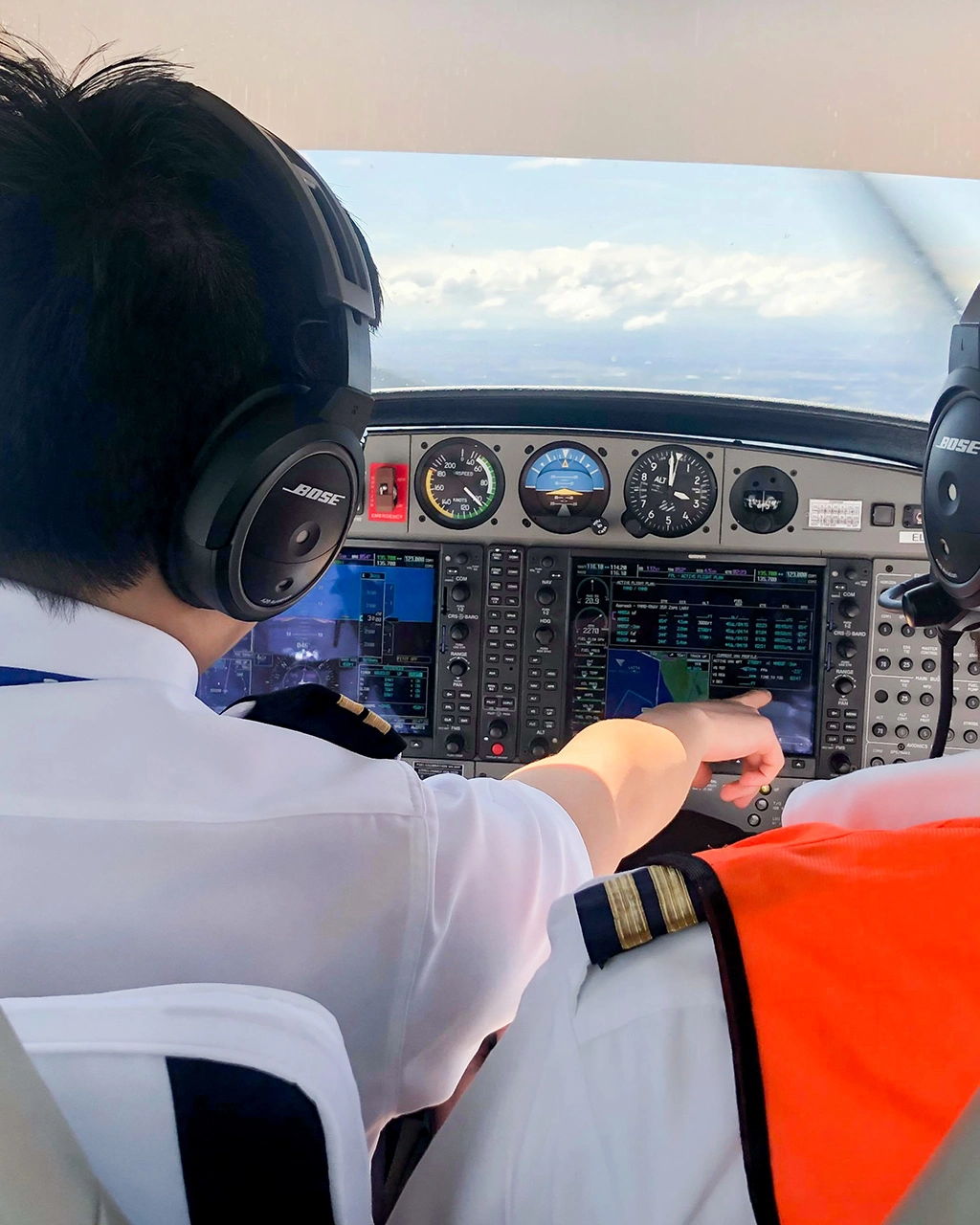
The Most Common Student Pilot Mistakes
In our last blog, we asked our instructors for their top tips on how to make the most out of your time at a flying school. In this blog, we asked them what they thought were some of the most common student pilot mistakes.
Studying to become a pilot isn’t easy, and there are plenty of opportunities for error when learning how to master the controls of an aircraft. Making mistakes is a part of learning anything. This blog has tips helps you to avoid some of the biggest ones when flying.
Being underprepared
According to our instructors, the most common student pilot mistake relates to preparation. Many student pilots make the mistake of thinking that they know more than what they actually do know, and then find themselves out of their depth.
Preparation is crucial, and it’s impossible to over prepare. Poor preparation commonly sees students struggling with exams, or wasting valuable flying hours going over things that they should already know.
Not using checklists
Australia has one of the best aviation safety records in the world.
Students will confirm their pre-flight checklist items before takeoff such as checking the auxiliary fuel pump, setting the altimeter and exercising the propeller. However, a mistake students often make regarding preparation is not using their flight checklists.
Not conducting a pre-landing checklist is another common student pilot mistake. One that can result in failing their final flight test. Checklist items may feel like second nature, and you have the information in your head, but you must manually go through them every time.
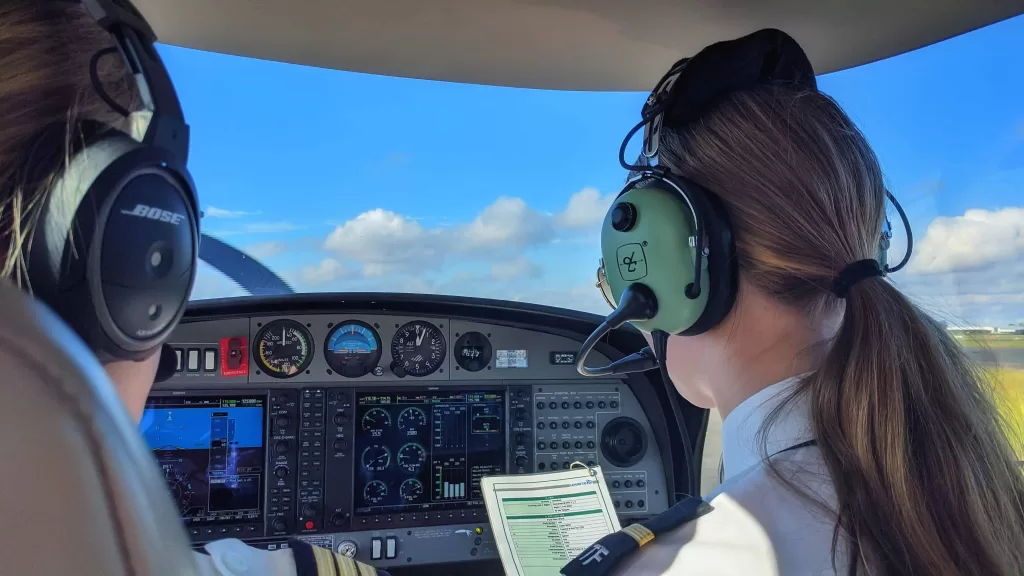
Impatience
There is no fast track to becoming a pilot, and nor should there be.
Flying is a distinguished skill that takes time to learn. Whilst there may be key competencies that you can pick up quickly, the process overall needs patience. Many students tend to want to jump ahead, and find it frustrating when things aren’t moving faster.
This results in misaligned over-confidence and rushing through components that require more attention. It can also make students disillusioned with their pilot pathway when they aren’t grasping things through lack of practice.
Not looking outside the cockpit
Just like driving a car, it’s important to look out the window when piloting an aircraft. Inexperienced pilots can unknowingly find themselves staring at the flight and screen controls rather than picking up visual and audio cues that indicate the performance of the aircraft, traffic and weather.
Students must remember to develop and hone their pilot instincts. This means not constantly relying on the flight controls to provide the information they need, and being continually aware of what is happening in the sky around them.
Lack of radio communication skills
Airports and their airspace are constantly busy. Communication over radio is rapid-fire and can be daunting for new students. Reluctant students can become hesitant to jump in during quiet moments over radio, and don’t communicate sufficiently with ground crew and air traffic controllers.
Clear and direct communication skills are essential for professional pilots. Practice your scripts when contacting the controller, and develop your skills to ensure you are confident and clear in your radio communication.
Not bribing your instructors with coffee
Believe it or not, this was actually the top response – every single instructor agreed that their students not buying them coffee was the most common mistake that they see during training.
We’re totally joking. But are we…? 😉

You can get more pilot flying tips by subscribing to our YouTube channel. We have RPL/PPL flying lessons, aircraft pre-flight check videos, and more. Click the button below to subscribe!
Chat to one of our flight training specialists to get your pilot training off the ground. Email [email protected]/en or go to https://drift.me/learntofly/meeting to book a meeting and school tour.
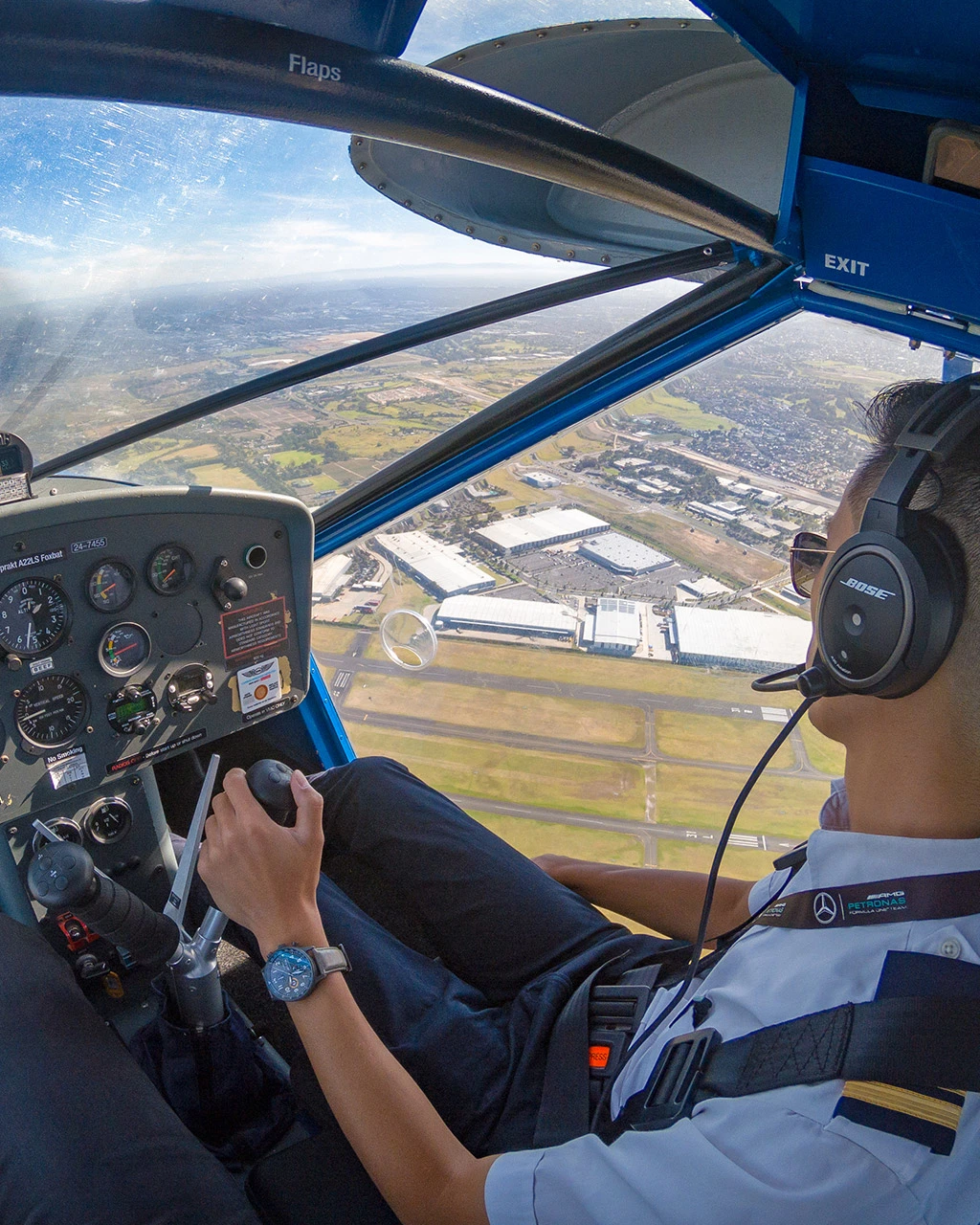
Maximise Your Time In The Sky With These Top Flight Training Tips
You’re passionate about aviation, and you’ve made the commitment to learn how to fly. Make no mistake. Becoming a pilot is a huge investment of your time and finances. Like learning anything, you can be certain that the more effort you put in, the more you will get out of it – and the more successful you will be. We asked our Senior Flight Instructors for their top flight training tips.
1. Be well prepared
Just like many things in life, preparation is the key. Study before your lessons the theory course materials and other information available to you. The best student flight training candidates ensure they are well prepared for theory and flight lessons. It reduces the chances of having to repeat parts. Learning to fly isn’t cheap. Being well prepared will save you both time and money.
2. Observe other flights
– Always take the opportunity to join other training flights or sessions when they present themselves.
– Ask if you can come along as an observer and sit in the back seat on other students flights.
– Take notes whenever you can.
The more you are able to learn and build information outside of your own flying time, the faster you will grasp concepts. This can also help avoid the need to pay to fly extra hours to achieve your flight training objectives.
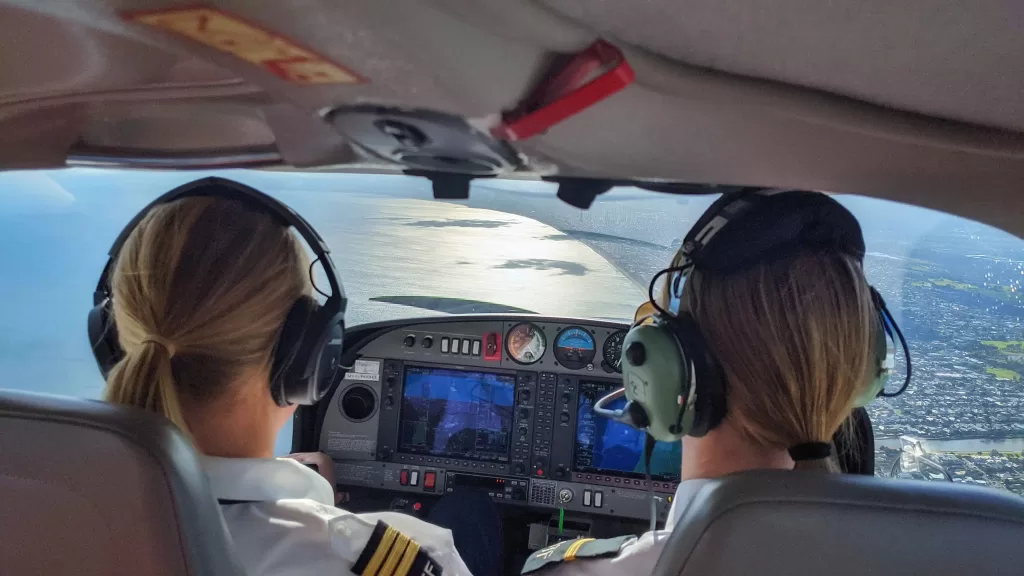
3. Be flexible with your schedule
Flexibility with your schedule is very important. There are many factors that can affect both instructor and aircraft availability, and if you are able to adapt to schedule changes then you will get more flight training time.
Always keep an eye on the weather forecast, and the upcoming flight schedule. Communicate regularly with your instructors to make the most of the times that look likely to be good flying conditions.
You should also try to schedule your theory lessons for when the weather is likely to be bad, as your instructors will be on the ground too.
4. Ask lots of questions
If you are completely new to the aviation world, it can feel pretty foreign. It comes with its own technical language, terminology, abbreviations, and that’s just the start.
You may feel uncomfortable asking questions, but you will find that everybody is more than happy to share their knowledge. What may seem like a silly question to you may be something that helps to piece together something far more important that greatly assists your flight training.
Don’t be afraid to ask a question. This gives you access to your instructor’s top flight training tips at any time!
5. Spend time at your flying school
The more time you spend at the school, the more chances you will have to join training flights as an observer at short notice. You can also then take advantage of cancellations and schedule changes where other students weren’t able to be as flexible as you.
It also goes without saying that spending more time around your instructors and the other student pilots will allow you more time to ask questions and share ideas.
6. Make use of flight simulators
Flight simulation technology now provides an exceptionally realistic representation of the cockpit, avionics, flight conditions, and aircraft behaviour. Flight sims form a crucial part of your training, and they are also a very economical way to hone certain skills, and to train for specific non-standard flight situations.
The more time you are able to spend learning your skills in a simulator, the more you can use your time in a real aircraft to put those skills into practice.
7. Fly as often as you can
Practice makes perfect. Repetition allows you to retain information and allow your skills to become second nature. If you don’t fly frequently, you may find that small bits of information have disappeared by the time you fly again, and you may need to repeat certain things.
If you are spending your flying hours going over things you’ve already learnt then you won’t be able to progress your flight training as quickly. Fly as much as you can!
8. Have fun!
This may be the most important point of them all. When it feels like hard work, try to remember why you wanted to fly in the first place. You’re learning to do something that many people dream about, but will never experience for themselves.
Celebrate your successes, be proud of your achievements in an aircraft, and never forget – YOU ARE FLYING!
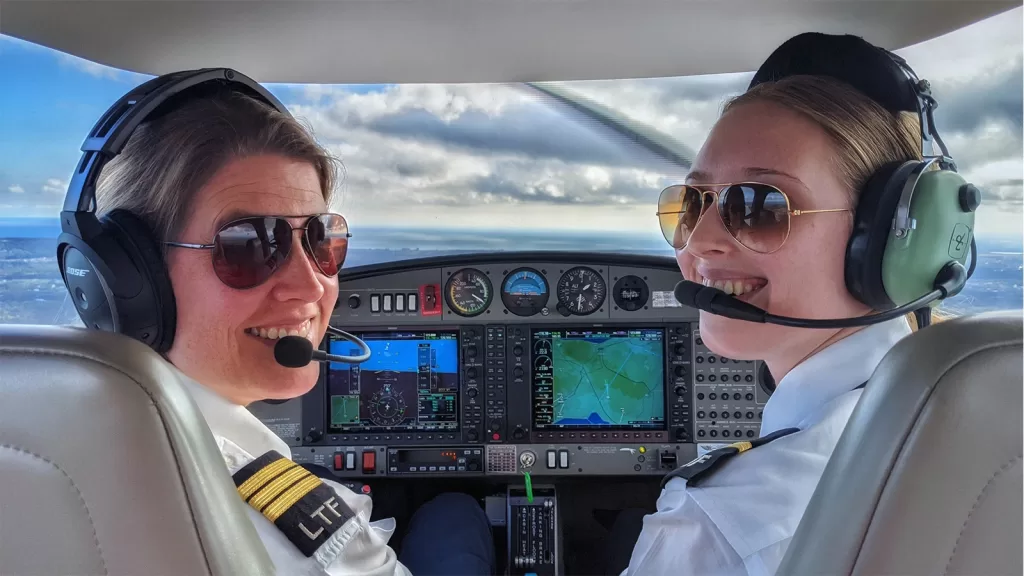
You can get more flight training tips by subscribing to our YouTube channel. We have RPL/PPL flying lessons, aircraft pre-flight check videos, and more. Click the button below to subscribe!
Chat to one of our flight training specialists to get your pilot training off the ground. Email [email protected]/en or go to https://drift.me/learntofly/meeting to book a meeting and school tour.
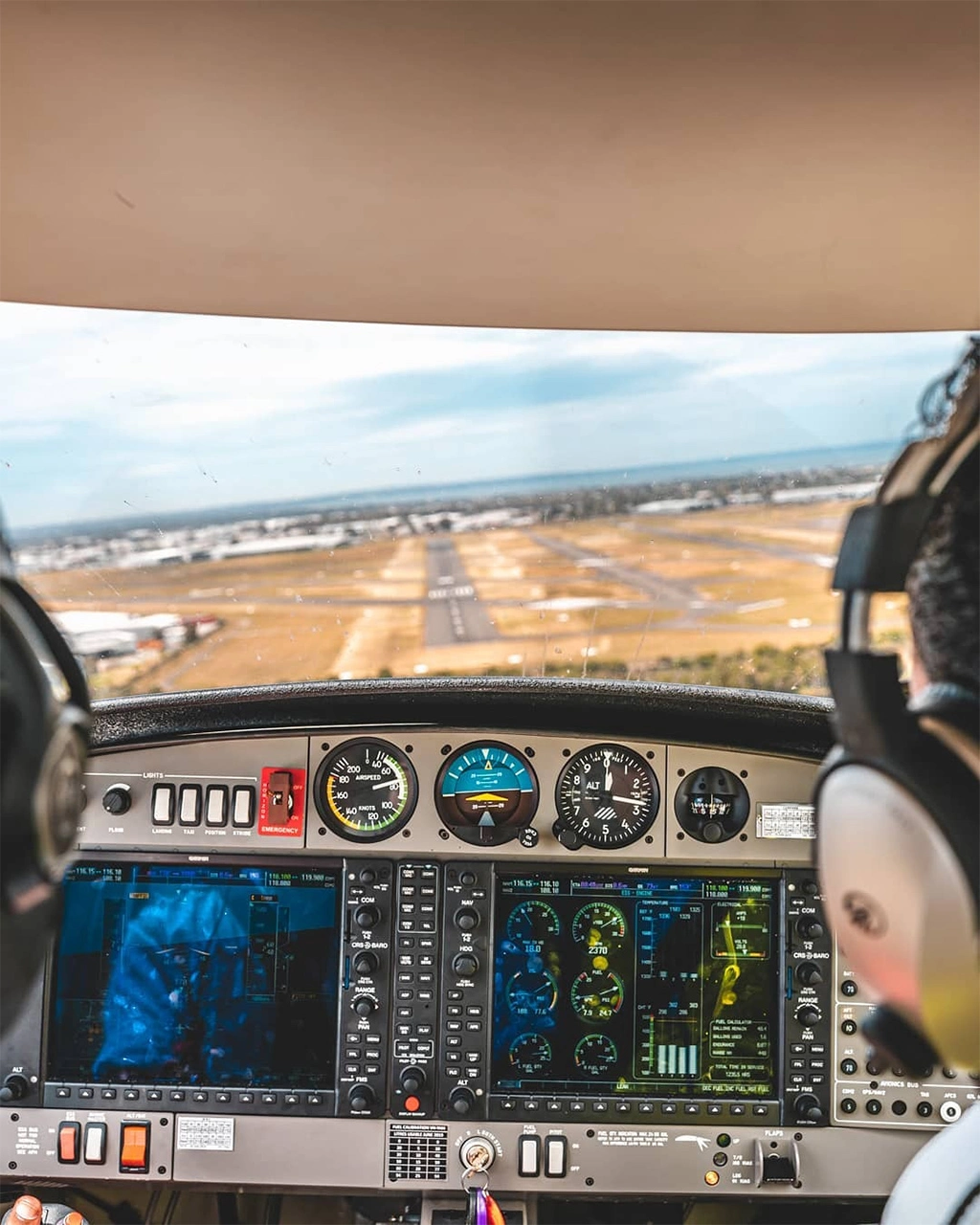
Circuit Flying Tips – The Perfect Circuit From Start To Finish
For student pilots, flying repeat circuit pattern procedures around their aerodrome will form a large part of their training. In this blog, we reveal circuit flying tips to help you get it right from start to finish.
What is a “circuit”?
CASA describes standard circuit procedure as follows:
“The standard aerodrome traffic circuit pattern facilitates an orderly flow of traffic and is normally a circuit pattern made with all turns to the left. When arriving at an aerodrome to land, a pilot will normally join the circuit upwind, crosswind (mid-field), or downwind (before mid-downwind). Landings and take-offs should be made on the active runway or the runway most closely aligned into wind. If a secondary runway is being used, pilots using this secondary runway should avoid impeding the flow of traffic on the active runway.”
The circuit pattern is the orderly take-off and landing flow of aerodrome traffic. Maintaining it is crucial to even the most major airports. Procedures will vary locally at different aerodromes that may have other factors to consider (terrain etc).
There are five basic legs to circuits:
– Take-off Leg
– Crosswind Leg
– Downwind Leg
– Base Leg
– Final Leg
While it might seem like a fairly standard or boring flying procedure to many people, circuit flying forms the basis of any pilot’s training.
Circuit flying includes fundamental flying syllabus including take-offs, climbs, climbing turns, medium level turns, straight and level flying, descending, descending turns, slow flying and landing. It’s also crucial to developing your separation skills as the presence of other air traffic is common.
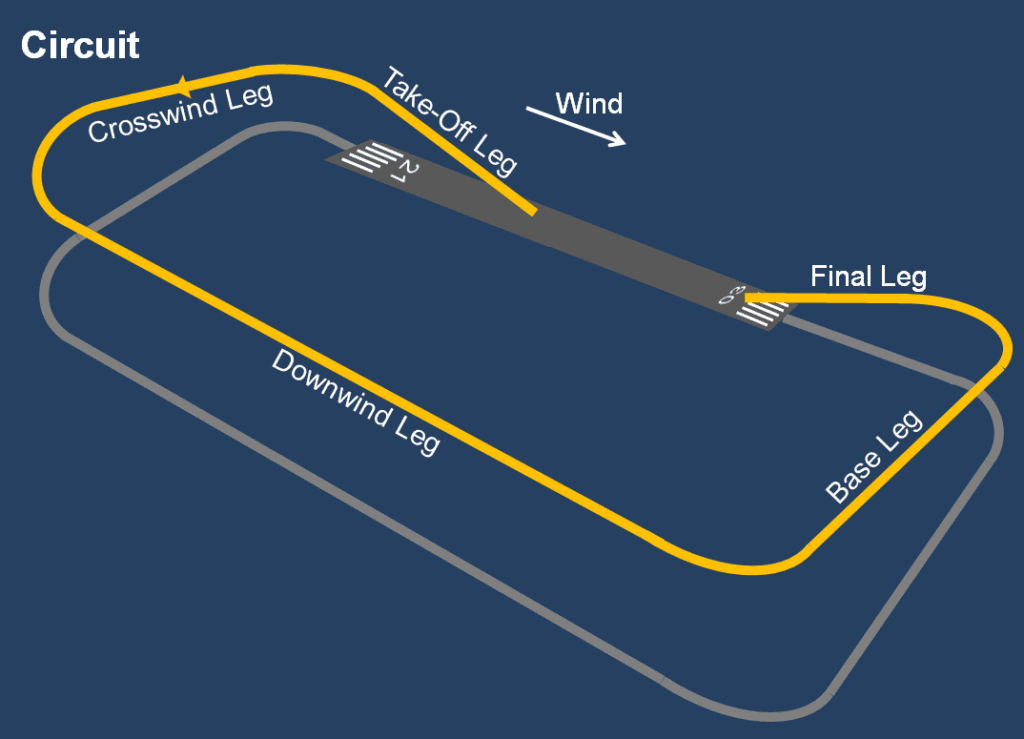
The definition of a perfect circuit
According to CASA, a perfect circuit will see the pilot completing the following:
– Take-off and then climb to 500ft (approx 150 metres)
– Turn onto crosswind leg (perpendicular to the extended runway centreline)
– Climb to 1,000ft (approx 300 metres)
– Reference aerodrome for turn point and turn onto downwind leg
– Reduce power, turn onto base and commence descent
– Turn onto final leg and land
There are many factors that can intervene and subsequently make it harder for you to complete that textbook perfect circuit flight. These include:
– Traffic
– Wind
– Light
– Glare
External factors aside, the best method for putting together a perfect circuit is to look at perfecting each of the legs individually.
Departure (take-off) leg
When airborne, find the attitude that allows you your nominated climb speed on full power. As soon as the attitude is established, find a reference point on the horizon and aim at that.
Once you have established your climb to a safe altitude (300ft or above), complete your take-off checks including a glance back to ensure your reference point is maintaining the extended runway centreline. Look for a reference point for your turn, just ahead of your left wing’s leading edge.
A clean take-off and a good setup into your first turn is essential for smooth circuit flying.
Crosswind leg
Begin your turn after you have reached an altitude of at least 500ft, although 750ft is the CASA recommendation. As it is a climbing turn, look to bank the aircraft at a 15 degree angle.
As other aircraft commonly join a circuit pattern on the crosswind eg at circuit height, keep a good lookout for traffic, and then adjust to maintain separation. Once the turn is made, maintain your attitude and power, and look for a reference point for the downwind turn.
Downwind leg
The turn onto downwind is generally made when your aircraft is at 45 degrees to the upwind threshold, onto a suitable reference point so as to track parallel to the runway. Depending on adjustments made for separation, you will either need to be level the aircraft at circuit height (1000ft) before, during or after the turn onto downwind. Lookout is again stressed, as traffic may also be joining the circuit on the downwind leg.
If a downwind radio call is required, it should be made when abeam of the upwind threshold. You should confirm your position in the circuit. Making a visual search by scanning from the threshold back along the final approach to base and then to downwind ahead of you. Identifying other aircraft positions within the circuit.
Maintain straight parallel flight by visually running the runway through the wingtip. Then you can complete your landing checks. Say each one out loud as you do them. Consider a reference point for your turn to base.
Base leg
As you are reaching a point in line with a 45° angle from the threshold, pick your reference point along the wing. Then make the base radio call if required. The best time to make the call is just before commencing the turn, as a turning aircraft is more easily seen by others in the circuit.
Reduce the power (1500-1700rpm as a guide) and then start a medium level (30°) turn. There’s no need to adjust your trim, as you will naturally wash speed in the turn whilst holding height at reduced power. Continue the turn onto your reference point, allowing for drift, until the leading edge of the wing is parallel to the runway.
Before the descending turn onto final, look carefully for traffic, especially along the approach path to ensure no other aircraft are on long final. Try to anticipate the roll out onto the approach (final) leg. This will help to ensure that the wings are level at the same time as your aircraft aligns itself with the runway centreline.
Throughout the turn, the angle of bank should be adjusted to achieve this by about 500ft. Adjust your altitude to maintain the nominated approach airspeed.
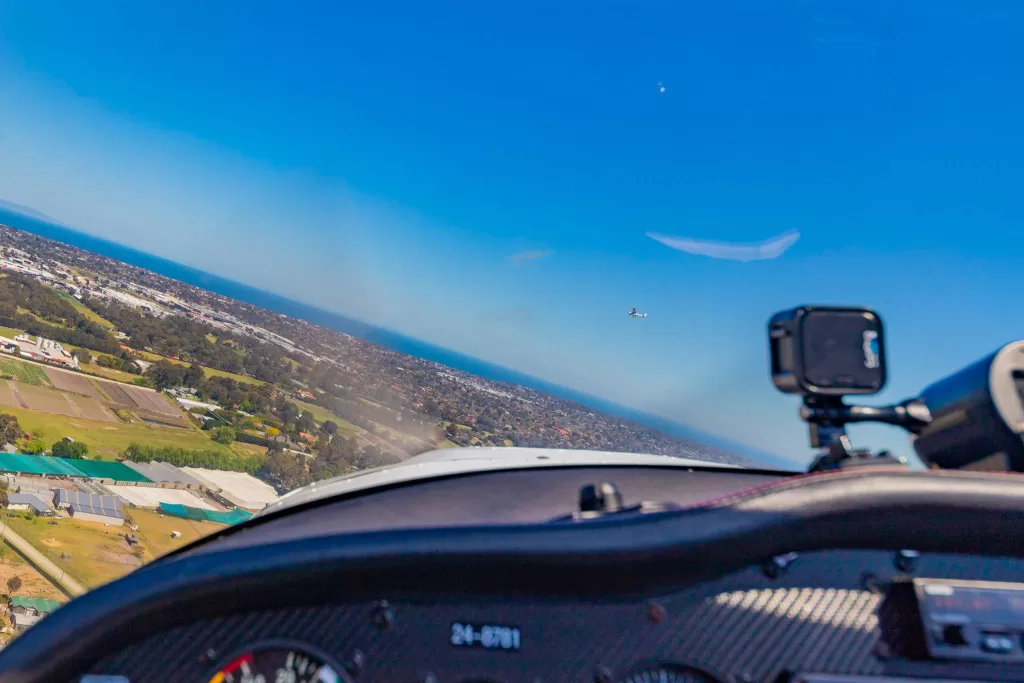
Final (approach) leg and landing
During the approach, as with all phases of flight where the intent is to maintain a specific airspeed, it is important to emphasise that you should select, hold and trim the correct altitude for the desired airspeed.
When established on final, select full flap at the appropriate time and maintain your airspeed. Or allow it to decrease through attitude adjustment. Avoid extending your flaps during the turn onto final.
Select an aiming point on the runway (commonly the numbers, or the threshold), and then monitor and adjust your power as required to maintain a steady rate of descent to touchdown. If the aiming point moves up the windscreen, increase power – and if the aiming point moves down the windscreen, decrease power.
If you have trimmed the aircraft correctly, then the power adjustments should be small.
Your landing should be one smooth manoeuvre that slows the rate of descent to zero, and the speed to just above the stall speed, as the wheels touch the ground. When you have have assured your landing, often described as “crossing the fence”, close the throttle and progressively raise the attitude of the nose.
Gradually increase backpressure to achieve the correct attitude, so that your touchdown is light and on the main wheels only. Following touchdown on the main wheels, gently lower the nosewheel to the runway using the elevator. Use a reference point at the end of the rudder to keep straight on the runway centreline with your rudder, and then apply your brakes as required.
And there you have it! There will always be factors that require you to adjust things, but if you use this as a guide, then you will be well on your way to perfecting your circuit flying.
You can get more flight training tips by subscribing to our YouTube channel. We have RPL/PPL flying lessons, aircraft pre-flight check videos, and more. Check out our lesson on circuit flying, the click the button below to subscribe!
Chat to one of our flight training specialists to get your pilot training off the ground. Email [email protected]/en or go to https://drift.me/learntofly/meeting to book a meeting and school tour.
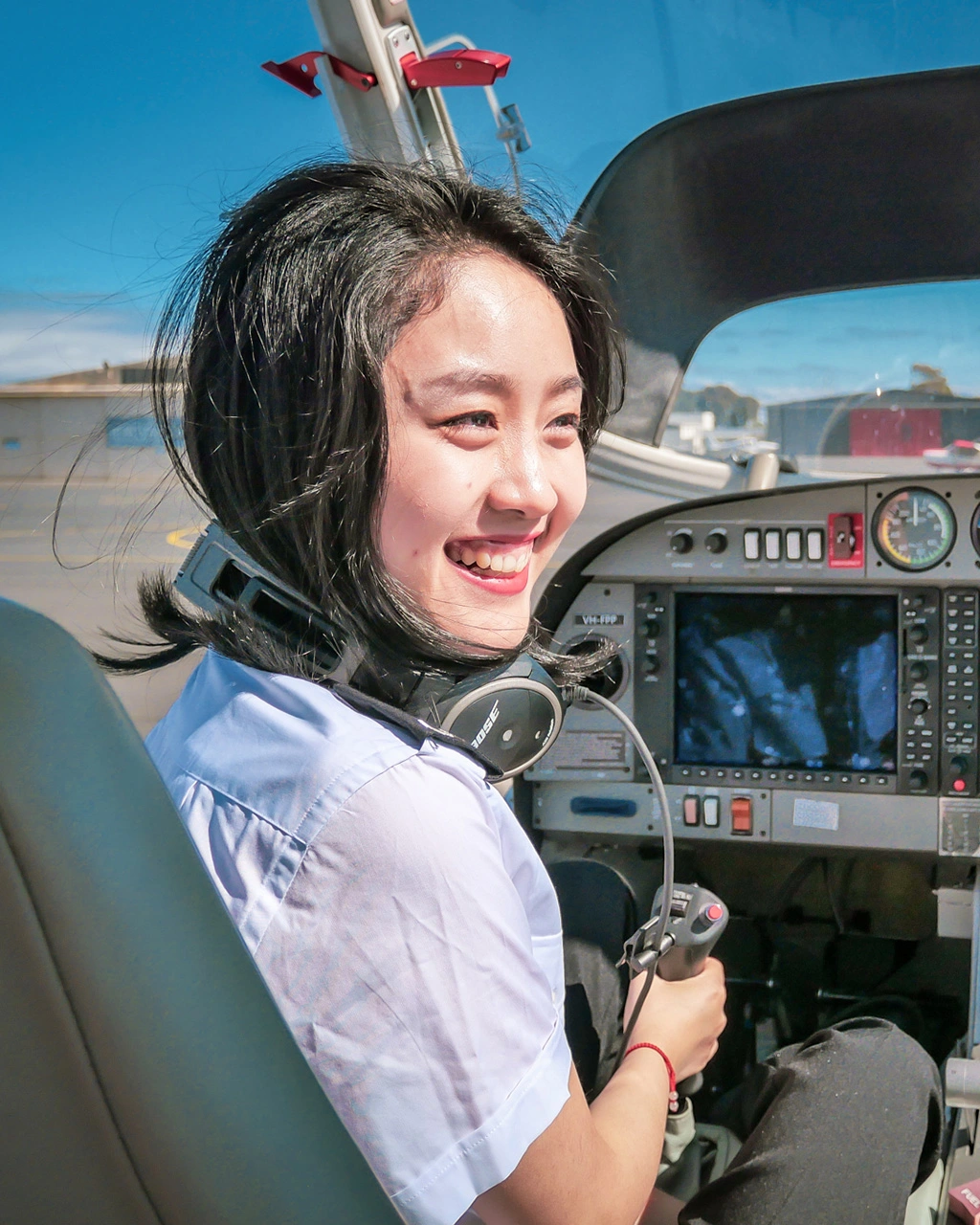
How to Pass Your ICAO Aviation English Exam with Flying Colours
Effective communication is an important skill for any pilot. Being able to pass your ICAO Aviation English Exam with flying colours is crucial to your career. It is a requirement for radio communications with aircraft and air traffic control, advising your flight intentions, and with colleagues both in and around aircraft.
To ensure consistency, global standard English is the recommendation from ICAO for communication. It forms an essential part of pilot training. It covers a range of topic areas including the use of relevant terminology, vocabulary, and protocols. Pilots will be tested on Aviation English throughout their career.

Background
The language proficiency standards were established by the International Civil Aviation Organisation (ICAO) in 2008, and then applied to flight crew licensing and signatory countries soon after.
Although one may speak English well, it’s also critical that pilots can listen to and comprehend instructions given over the radio. Accents from controllers and pilots can vary from flight to flight. Overcoming the challenge of accents alone can mitigate issues, and consequently play a significant part in making a flight run smoothly.
Listening Skills
Taking the time to observe and listen to Air Traffic Control (ATC) can be a valuable strategy prior to your ICAO Aviation English test. Live ATC allows individuals to listen to various control centres globally. You can listen to ground control, control towers, and en-route centres at a number of locations around the world.
When developing your listening skills, accents from both pilots and controllers will become apparent. This allows you to effectively tune your ears to a range of accents and instructions that you will likely experience daily as a pilot. This will ultimately then make this component of the ICAO English test more achievable.
Vocabulary skills
In addition to honing your Air Traffic Control listening skills, pilots need a broad spoken vocabulary in practical aviation. Reviewing aviation images or scenes online and then describing them out loud can be a valuable technique in determining the depth of your vocabulary.
Google search for aviation scenes and images. Practice describing what you see in random scenes or images verbally using known aviation terminology. Practice this technique regularly to help expand both your aviation vocabulary and flow of communication. You will need to execute this for the Aviation English Proficiency Test.
Preparation is Key
Clear and effective communication will always be critically tested and assessed for any pilot candidate. Utilise the resources available to you immediately and then start applying techniques in preparation. Expanding and improving your own listening and communication skills will prepare you well as a future pilot in a rapidly developing and growing industry.
Darren McPherson
ACS – Aviation Consulting Services 2019
You can get more flight training tips by subscribing to our YouTube channel. We have RPL/PPL flying lessons, aircraft pre-flight check videos, and more. Click the button below to subscribe!
If you need more information about how to pass the ICAO Aviation English exam, chat to one of our flight training specialists. Email [email protected]/en or go to https://drift.me/learntofly/meeting to book a meeting and school tour.
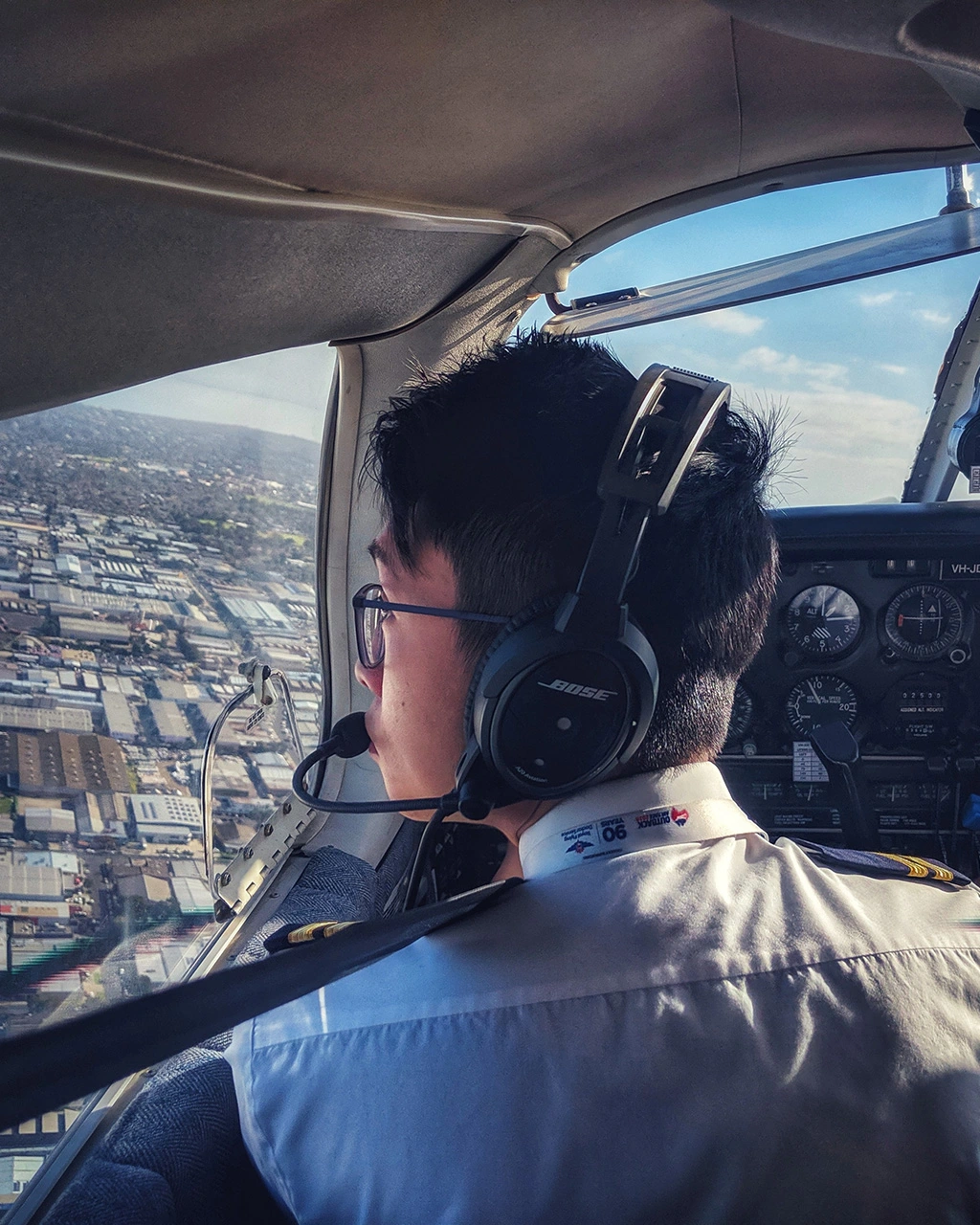
Human Factors in Aviation. Are Pilotless Planes The Future of Air Travel?
As technology progresses faster and faster in the modern world, there are many processes that are becoming automated. So where do human factors in aviation sit in an increasingly automated world?
What are human factors?
Even with automated tasks and processes, humans still need to either control, manage, intervene, or interact with technology at many stages.
Human Factors in its widest definition describes all the many aspects of human performance which interact with their environment to influence the outcome of events. These may be related to either the physiological or psychological aspects of human capability. Both of which are able to directly affect the way in which the human operator performs in different circumstances.
Human Factors knowledge reduces the likelihood of errors, and builds more error tolerant and more resilient systems.
What are the effects of human factors in aviation?
Things have changed a lot from when we had to manually start an aircraft’s propeller. And also from when pilots had to exclusively use landmarks to visually navigate during flight. But even with all of the latest technology installed in aircraft, human factors still play an enormous role.
The human factors involved in the operation and interpretation of even the most modern technology remain of the utmost importance in ensuring the safety of aircraft operations.
Negative human factor impacts
Most of the world’s worst aviation disasters have been a direct result of human factors, including the following. An example of this is the Tenerife disaster in 1977. A runway collision between two B747 airliners, due to misinterpreted radio communication form the captain of one of the aircraft. It resulted in 583 casualties.
There are examples of failed interactions between humans and technology. One such incident is the mid-air collision between a chartered Tu-154 passenger flight and a B757 DHL cargo jet over Überlingen, Germany in 2002. This resulted from ambiguous air traffic control and TCAS (traffic collision avoidance system) instructions. The automated TCAS instructions were in fact correct in warning the pilots of nearby traffic. It directed them to change their respective altitudes accordingly. The intervention of a fatigued air traffic controller however, who was unable to access the full scope of information he needed, resulted in the TCAS instructions being ignored, and the aircraft collided.
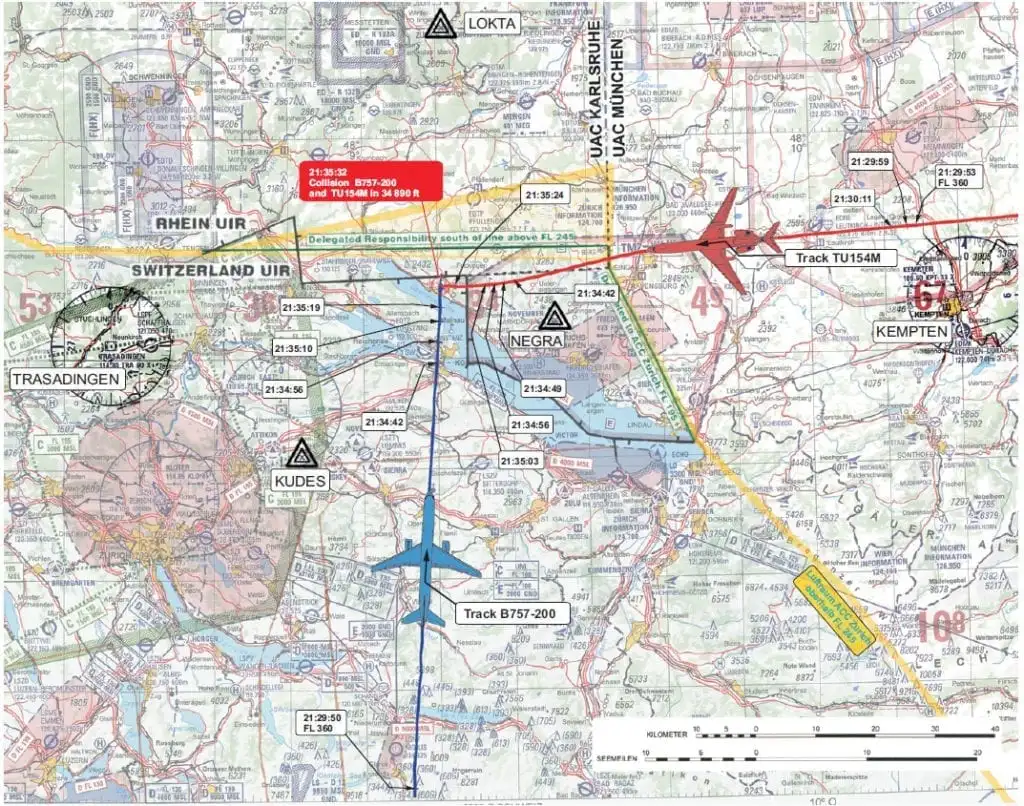
Positive human factor impacts
Whilst human factors such as stress, fatigue and psychology can no doubt be discussed in relation to negative impacts on aviation, there are many situations where human factors are essential to the safe operation of a flight.
Most technology still requires a human to either operate it, manage it or translate it. In flight in particular, there are so many variables that at this stage it is very difficult to rely entirely on an automated system to make decisions.
A perfect example of the above lies in the recent tragedies involving Boeing 737MAX aircraft. This led to the grounding of the aircraft globally while software systems were checked and upgraded. There is evidence to support that the failing system was overridden by a pilot on the LionAir aircraft during flight the day before the subsequent accident occurred.
Investigation into human factors decisions that have proven to be efficient in breaking a chain of events that would have led to an accident is very important in improving aviation safety overall. This is helping to develop better technology.
Would you trust flying in an entirely automated aircraft?
The only way to eliminate human factors in aviation contributing to accidents is to completely eliminate human involvement. In other words, become 100% automated. But is this feasible, and would you trust an entirely automated aircraft?
The use of commercial and military drones shows the technology for pilotless plane travel exists and is in regular use. But whilst the world’s most common types of passenger aircraft rely heavily on computers to execute the commands of pilots and crew, a completely unmanned flight poses many potential issues.
Would there be teams of pilots on the ground controlling the aircraft? Who is in charge of the plane when it is in the air, and what would happen if an emergency situation with a passenger on board occurred?
It is incredibly difficult to think of scenarios that would not require human involvement at some level. Therefore, human factors are still relevant at some point in the process.
What do pilots think?
Naturally, pilots are concerned about flight safety. Steve Landells, flight safety specialist for the British Airline Pilots Association, says:
“Automation in the cockpit is not a new thing – it already supports operations. However, every single day pilots have to intervene when the automatics don’t do what they’re supposed to. While moving pilots to a control tower on the ground might eventually save airlines money, there would need to be huge investment to make this possible, and even more to make it safe.”
Where do human factors fit in the future of aviation?
Negative human factor influences may be accountable for most aviation accidents. But how many accidents have been avoided through positive human factor intervention?
The study of human factors in relation to aviation is incredibly important to maintain and improve the safety of flight operations in today’s world, as well as for the future of air travel.
With technology accelerating and offering more in the way of automation, the nature of the relationship between human factors and aviation will continue to change. Human management, interaction and involvement with technology and automated processes in aviation now is no less crucial than it was in the management of fully manual processes in the past.
We have developed our own Human Factors Awareness Training course, that all of our staff attend. This course is also open external applicants who want to learn more about human factors in aviation. To learn more, chat to one of our flight training specialists. Email [email protected]/en or go to https://drift.me/learntofly/meeting to book a meeting and school tour.

Step By Step Guide to the Qantas Airline Pilot Selection Process
With a global pilot shortage, major carriers are opening up recruitment programs to attract pilots looking for an airline career. Even though there are many more opportunities now available to join an airline, the selection process remains challenging and competitive.
Preparation is the key. To help you to understand what airlines are looking for and hopefully improve your chances of success, we have created a blog series to take you through the selection process for some of the major airlines.
Preparation courses, where we go into specific airline interview processes in great detail, to coach you towards achieving your dream airline pilot job.
Read our last blog on the topic featuring the Cathay Group
Let’s look at Qantas Group airline pilot selection process including Qantas and Qantaslink.
Qantas (Mainline) and Qantaslink (Direct Entry)
1. Remote computer psychometric testing
Remote screening of applicants is conducted prior to an invitation for further assessments. Following this, you can expect additional Group Skills and Exercises, an HR interview and evaluation.
Key indicators consist of general personality, intelligence, numerical reasoning, verbal reasoning and eye-hand co-ordination; all of which are essential benchmarks before further testing can be attempted.
2. Group skills and exercises
Groups skills focusing on various scenarios and situations are developed and assessed as to how a candidate works within a team. These Qantas pilot selection process exercises will examine aspects within a number of situations and tasks that need to be completed in a dynamic and evolving scenario.
Key qualities assessed are communication, leadership, general problem solving, as well as threat management. These scenarios are dynamic, fast-paced and will change throughout the exercises; subsequently testing a candidate’s ability to update, reassess and implement strategies or changes throughout.
3. HR interview and assessment
Human Resources (HR) examines a candidate’s personal and career history. With particular emphasis on enthusiasm and attitudes, it also evaluates problem-solving skills in dynamic theoretical situations.
Skill sets that are considered closely include communication, leadership, general problem solving and threat management during a number of both individual and group settings.
4. Simulator exercise and training aptitude and assessment
Flight simulator assessment will allow the candidate to demonstrate flying skills that are an essential part of any pilot position. A sound demonstration of skills is required to demonstrate a solid foundation of basic instrument flying skills.
Whilst not expected to fly the simulator at the level of a qualified or endorsed pilot, candidates will be assessed on their ability to process new tasks in the aircraft and training environment.
5. Detailed reference check
A final step in the Qantas pilot selection process is the professional and personal reference check. Speaking to previous employers, flight instructors, supervisors or vendors helps validate the candidate’s true character as opposed to an artificial or pre-rehearsed interview candidate.
Learn To Fly offers 3 dedicated courses to help you in preparation for airline applications, and we can customise the syllabus based on the process of whatever your chosen airlines are. The courses are run in conjunction with ACS- Aviation Consulting Services and are facilitated by international airline Captain Darren McPherson.
Over the last 2 years, these programs have assisted nearly 80 applicants to successfully be accepted into 10 different airlines around the world. Learn more below:
– Future Cadet Pilot Program (FCPP)
– Airline Interview Coaching Session
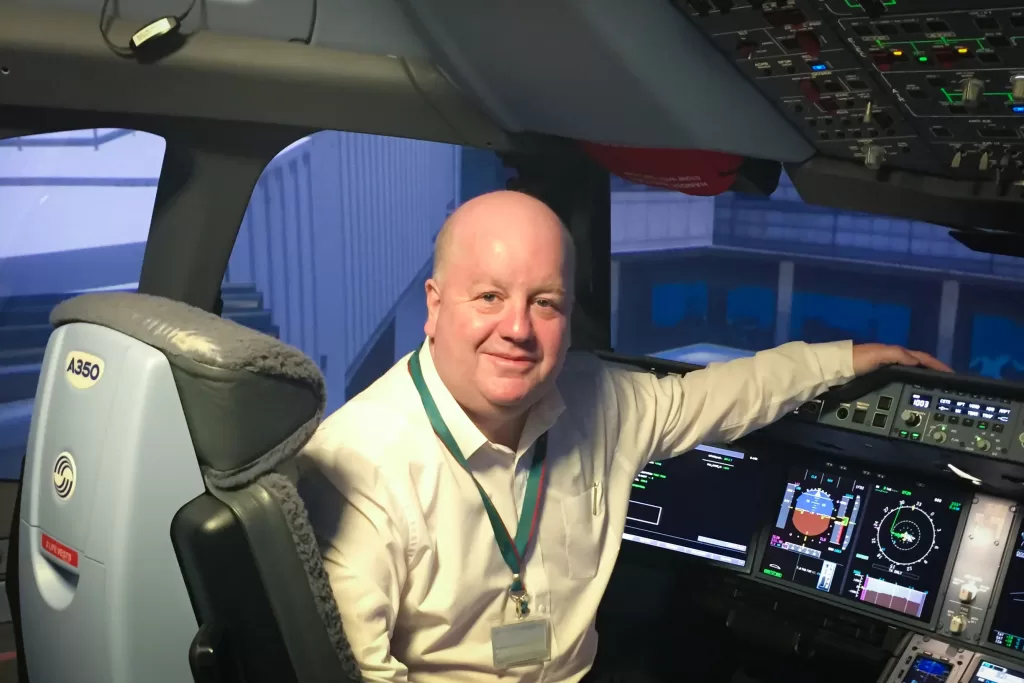
For further information or to register your interest in these modules, email [email protected] or visit https://drift.me/learntofly/meeting to book a meeting and school tour.

Singapore Airlines Pilot Selection Process: Step By Step Guide
Want to know more about the Singapore Airlines Group pilot selection process (including Singapore Airlines and Scoot)?
We also have airline selection process blog posts for Cathay Group and Qantas Group.
One of the biggest ongoing aviation news stories in 2018 was the current and future global pilot shortage, and the rapid expansion of cadet pilot programs from most of the world’s biggest airlines. With new opportunities opening up around the world, a career as an airline pilot is more achievable now than it has ever been.
The selection process is still challenging and very competitive. Preparation is absolutely essential if you hope for success.
To give you the edge over other applicants we offer a range of highly successful Airline Pilot Interview Preparation courses. These courses can be tailored specifically to your target airlines, and provide you with comprehensive training on how to make the most of your applications.
Learn more about the Singapore Airlines pilot selection process (including Scoot Airlines) and how our courses can help you below.
Singapore Airlines Pilot Selection Process
1. Remote computer psychometric testing
Designed to screen applicants and look at key qualities that are desired for the role as a pilot, the psychometric test covers general personality, intelligence, numerical reasoning and eye hand coordination.
Our airline interview preparation courses give you the opportunity to complete example psychometric tests similar to those used by the airlines. We will then thoroughly analyse your results with you, based on what airlines are looking for.
2. General HR Interview
This closely assesses the candidate’s overall motivation towards the role and to the airline, as well as some technical knowledge. In particular, enthusiasm and general attitude are assessed through detailed and focused questions about their dedication to becoming a pilot.
International airline Captain Darren McPherson has 30 years industry experience. He will teach you how to best present yourself and your documents. Darren will thoroughly review your CV, enhance your HR skills and technical knowledge based on what specific airlines are looking for.
3. Prepared written essay
A number of word-limited and topic-based questions are prepared by the candidate prior to the next stage of the process. Answers document the applicant’s motivation towards becoming a pilot and furthermore working for the airline specifically.
As part of our programs, we work through example questions with you and assist you in constructing your responses. From extensive experience, we are able to guide you on the type of content and response structure that the airline is looking for.
4. Detailed HR and technical interview
These interviews may be conducted by personnel from both the HR and Flight Operations department, and delve deeper into the candidate’s attitudes towards work, studies, life experiences, preparation and aviation knowledge.
In a simulated mock interview environment, we will work through advanced airline-specific HR questions and response methods, and perfect interview presentation techniques. The technical session will outline effective levels required for the various airline entry points. This will help identify your current level of knowledge, and any areas that you should upskill prior to interview.
Scoot Pilot Selection Process
1. Online assessment
A detailed online computer screening process is conducted with specific evaluation of key indicators including personality, intelligence, numerical reasoning, verbal reasoning and co-ordination. Tasks are specifically time-limited to place the candidate under pressure, looking for composure and consistency of results.
We are able to provide our program students with online assessment tools similar to those used by the airlines. We discuss and then work through results to track performance in specific areas most likely to be highlighted by airlines, and assist with improving on any areas of potential deficiency.
2. Group skills and assessment
These timed exercises place candidates in a range of dynamic scenarios to identify skills such as communication, leadership, mathematical problem solving and threat management. Tasks may be re-presented with modified group numbers or participants to analyse different dynamics and results. All scenarios are thoroughly debriefed and discussed to review applicants’ ability for self-assessment.
Group skills have become a significant factor in the airline pilot recruitment phase. We will practice group activities and review the effects of different personality types and examine leadership qualities as well as effective problem solving techniques within a group, through airline-based scenarios.
3. HR Interview
In this interview the applicant’s personal and career history are examined with particular emphasis on enthusiasm, and attitudes; whilst concurrently closely examining problem solving skills in theoretical yet dynamic situations. Additional problem-solving tasks are presented on short notice. This is to demonstrate, test and reinforce previously established group skills displayed during the earlier assessment.
We will thoroughly review your CV and then analyse your HR skills and technical knowledge. In addition, we will conduct a range of mock interview scenarios. This will link in with previous group exercises, to fine-tune your presentation technique and skills.
Learn To Fly offers 3 dedicated courses to help you in preparation for airline applications, and we can customise the syllabus based on the process of whatever your chosen airlines are. The courses are run in conjunction with ACS- Aviation Consulting Services and are facilitated by international airline Captain Darren McPherson.
Over the last 2 years, these programs have assisted nearly 80 applicants to successfully be accepted into 10 different airlines around the world. Learn more below:
– Future Cadet Pilot Program (FCPP)
– Airline Interview Coaching Session

For further information or to register your interest in these modules, email [email protected] or visit https://drift.me/learntofly/meeting to book a meeting and school tour.
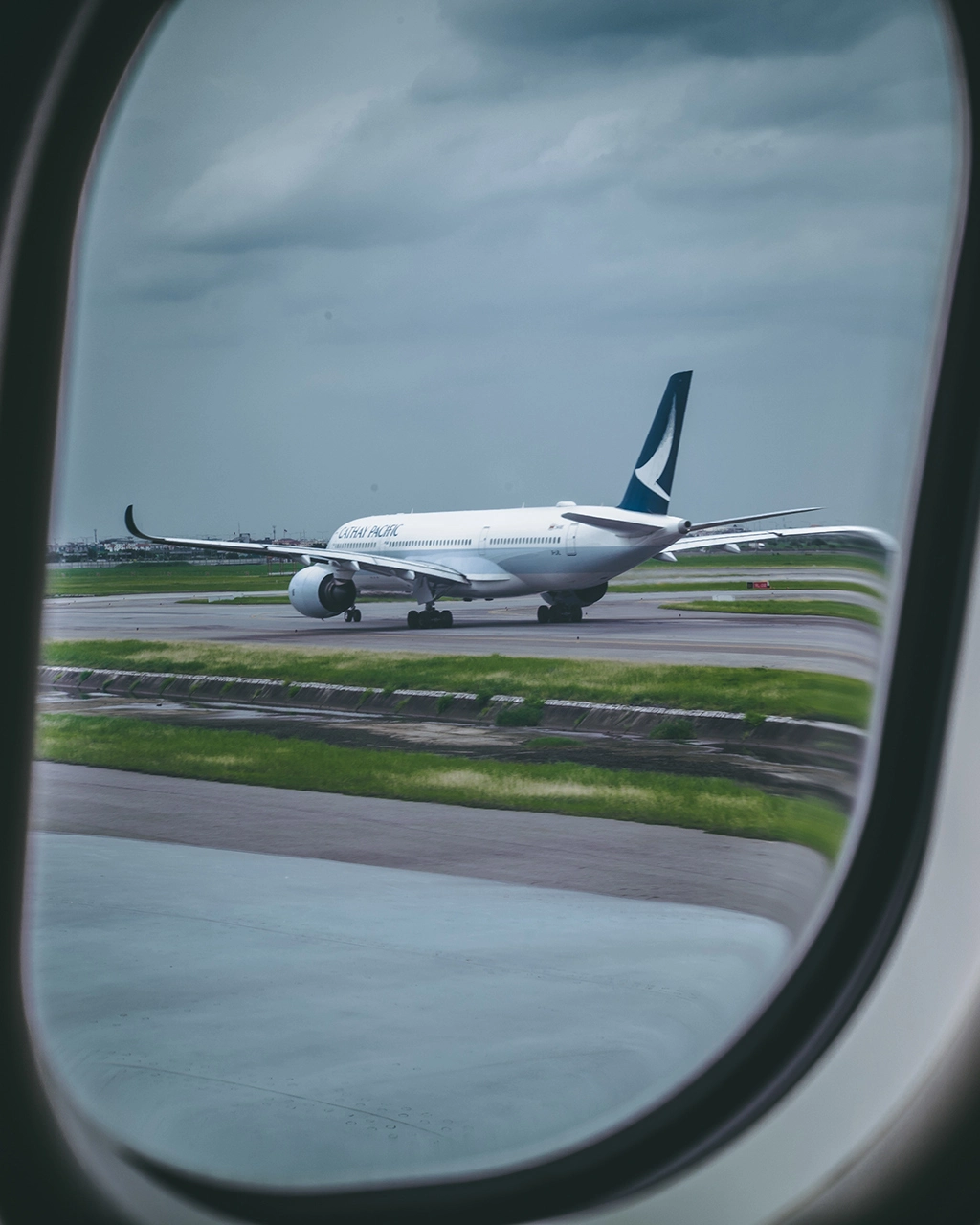
A Guide to the Cathay Pacific Pilot Selection Process
This is the first in a series of blogs that will discuss the selection process for 3 of the major airline groups, and how we can help you with each stage. Today we discuss the Cathay Pacific pilot selection processes.
One of the biggest ongoing aviation news stories in 2018 was the current and future global pilot shortage, and the rapid expansion of cadet pilot programs from most of the world’s biggest airlines. With new opportunities opening up globally, an airline pilot career is more achievable now than it has ever been.
The selection process is still challenging though, and very competitive, and preparation is absolutely essential if you hope for success.
Cathay Pacific Airways Cadet Pilot Selection
Stage 1A. Initial Psychometric Testing
Designed to screen applicants and look at key qualities that are desired for the role as a pilot, the psychometric test covers the general personality, intelligence, numerical reasoning and eye-hand coordination.
Our airline interview preparation courses give you the opportunity to complete example psychometric tests similar to those used by airlines. We will then thoroughly analyse your results with you, based on what airlines are looking for.
Stage 1B. Initial HR & Technical Screening Interview
This closely assesses the candidate’s overall motivation towards the role and to the airline, as well as some technical knowledge. In particular, enthusiasm and general attitude are assessed through detailed and focused questions about their dedication to becoming a pilot.
International airline Captain Darren McPherson will teach you how to best present yourself and your documents, based on 30 years of industry experience. During the program, he will thoroughly review your CV, as well as enhance your HR skills and technical knowledge specifically based on what airlines are looking for.
Stage 2A. Group Skills & Exercises
These timed exercises place candidates in a range of dynamic scenarios to identify skills such as communication, leadership, mathematical problem solving and threat management. Tasks may be re-presented with modified group numbers or participants to analyse different dynamics and results. All scenarios are thoroughly debriefed and discussed with to review applicants’ ability for self-assessment.
Group skills have become a significant factor in the airline pilot recruitment phase. We will practice group activities and review the effects of different personality types and examine leadership qualities as well as effective problem-solving techniques within a group, through airline-based scenarios.
Stage 2B. Detailed HR & Technical Interview
These interviews may be conducted by personnel from both the HR and Flight Operations department. They delve deeper into the candidate’s attitudes towards work, studies, life experiences, preparation and aviation knowledge.
In a simulated mock interview environment, we will work through advanced airline-specific HR questions and response methods, and perfect interview presentation techniques. The technical session will outline effective levels required for the various airline entry points. This will help identify your current level of knowledge, and any areas that you should upskill prior to interview.
Cathay Pacific Airways – Direct Entry Second Officer Selection
Stage 1. Group Skills & Exercises
Group exercises form an important part of the Cathay pilot selection process.
These timed exercises place candidates in a range of dynamic scenarios to identify skills such as communication, leadership, mathematical problem solving and threat management. You will have the opportunity to re-present tasks with modified group numbers or participants to analyse different dynamics and results. All scenarios are thoroughly debriefed and discussed to review applicants’ ability for self-assessment.
Group skills have become a significant factor in the airline pilot recruitment phase. We will practice group activities and review the effects of different personality types and examine leadership qualities as well as effective problem-solving techniques within a group, through airline-based scenarios.
Stage 2. Simulator Exercise & Assessment
Flight simulator assessment will allow the candidate to demonstrate flying skills that are an essential part of any pilot position. You will need to demonstrate a sound knowledge of basic instrument flying skills. Furthermore, a number of selected training events are presented to assess the candidate’s aptitude as to their “rate or learning” and the ability to process new tasks in the aircraft and training environment.
Learn To Fly has partnered with Flight Experience to be able to offer our students direct access to a Boeing-endorsed B737 flight simulator. Our preparation courses can not only prepare you for the things assessors will look for, but can also guide you through practically on the actual simulator.
Stage 3. Detailed HR & Technical Interview
Personnel from both the HR and Flight Operations department may conduct these interviews. They will delve deeper into the candidate’s attitudes towards work, studies, life experiences, preparation and aviation knowledge.
In a simulated mock interview environment, we will work through advanced airline-specific HR questions and response methods. We will also perfect interview presentation techniques. The technical session will outline effective levels required for the various airline entry points. This will help identify your current level of knowledge, and any areas that you should upskill prior to interview.
We also have airline selection process blog posts for Cathay Group and Qantas Group.
Learn To Fly offers 3 dedicated courses to help you in preparation for airline applications, and we can customise the syllabus based on the process of whatever your chosen airlines are. The courses are run in conjunction with ACS- Aviation Consulting Services and are facilitated by international airline Captain Darren McPherson.
Over the last 2 years, these programs have assisted nearly 80 applicants to successfully be accepted into 10 different airlines around the world. Learn more below:
– Future Cadet Pilot Program (FCPP)
– Airline Interview Coaching Session

For further information or to register your interest in these modules, email [email protected] or visit https://drift.me/learntofly/meeting to book a meeting and school tour.
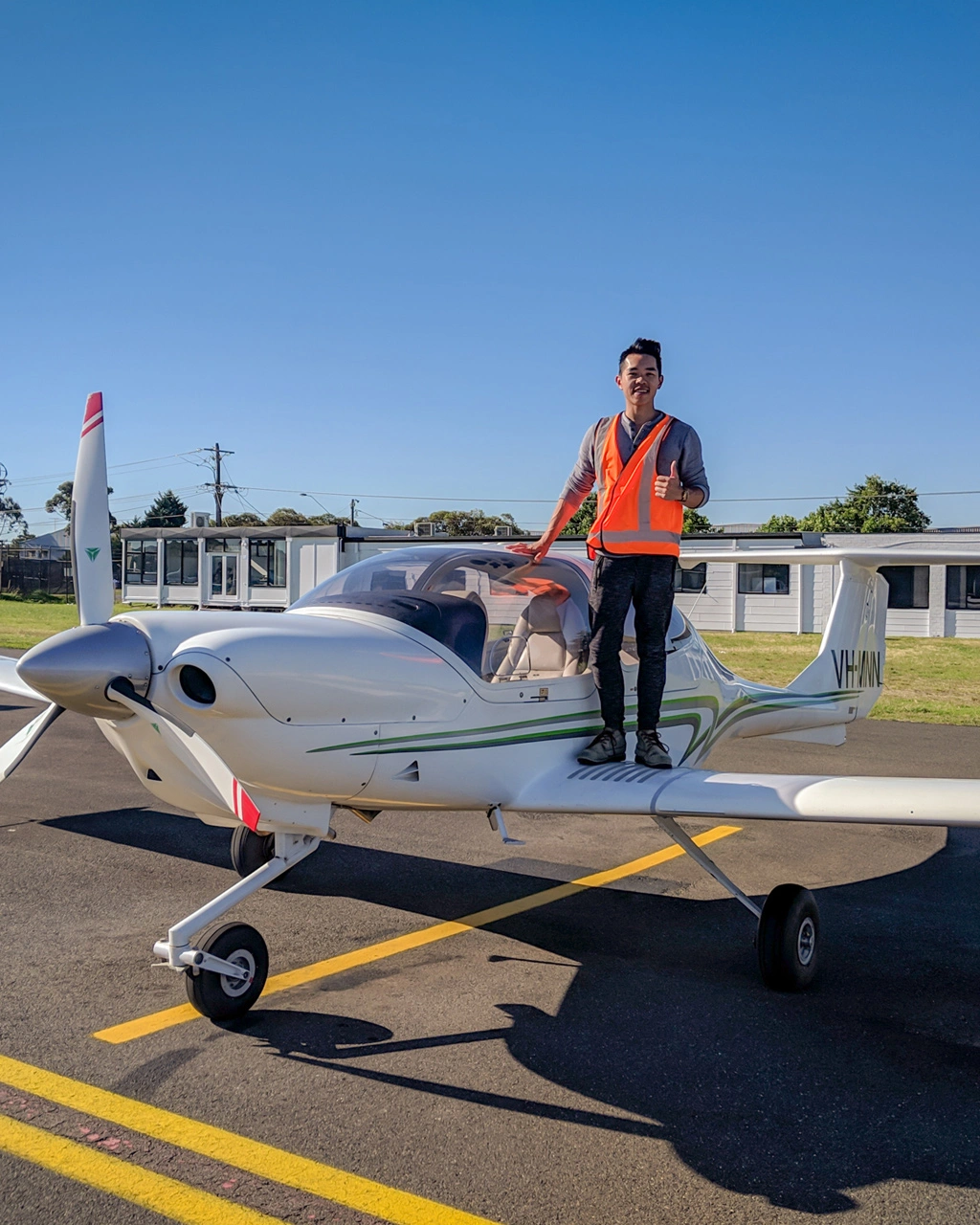
Learn To Fly Scholarship Recipient Dean Shing Starts at Cathay Pacific
We recently offered a Learn To Fly scholarship for our highly successful Future Cadet Pilot Program to a Hong Kong student. The scholarship allowed the successful applicant to come to Australia and complete the flight training component of the program.
Our scholarship recipient was Dean Shing, who has been accepted into the Cathay Pacific cadetship program. He came to Melbourne to complete his flight training and fly solo, and we caught up with him to talk about the process, as well as his love for flying.
Dean’s Flight Story
The Beginning
The moment I became determined to be a pilot was when I did my first flight training in Canada in May 2018. But my Learn To Fly Scholarship program preparation started a lot earlier than this. Allow me to share a bit of my aviation journey.
I was never an aviation person, and being a pilot to me was just like being an astronaut. It was something I never thought was possible. But all that changed in December 2015 when I was travelling around New Zealand, looking for fun and exciting things to do
That was when I did a trial flight. It was an absolutely beautiful and amazing experience. I still remember after my instructor aligned the Cessna 172 to the runway centreline, he asked me to apply full throttle, and then pull back on the control yoke, and the C172 just lifted off; and here it was, my first takeoff, flying me into my aviation journey.
Ever since then I started to be interested. Part of me thought having flying as a hobby was a pretty cool thing to do. It’s silly I know, but that’s how I started. What I did was mostly self-studying, and later joining AAEP (Advanced Aviation Education Programme, by Hong Kong Air Cadet Corps) after I came back to Hong Kong. It was during the course I realized that being a pilot is not just about flying. It involves a lot of planning, decision-making, and multi-crew working, etc. That really attracted me, and that’s also when I started studying really hard for the Learn To Fly Scholarship program.
To confirm my passion, I went to Canada for my first flight training. It was during the fight training I found out that not only did I enjoy the flying part so much, I enjoyed literally everything including all the ground preparation with my instructors, the late night study with my batch mates; and the satisfaction of flying in the sky is incomparable. That’s when I became determined to be a pilot, so I made my move, and here I am!
Preparing and Applying for the Cathay Pacific Cadet Pilot Program
My preparation for the Cathay Pacific cadet program was divided into two parts – technical knowledge and HR Interview, both of which require teamwork.
Firstly for the technical knowledge, I did a lot of self-study, reading mostly Bob Tait’s. Apart from books and Google, I have learnt a lot about Meteorology and Engineering through YouTube. Another thing I did was having study group meetings. During these we discussed different technical knowledge, shared question banks, and had mock interviews with each other. In my opinion, it is important to do it on a regular basis with different people. In that way not only did I learn from different perspectives, but knowing that I’m not alone in pursuing this dream actually energised me. It’s important to always ask “why”, and know that it is not only the cadet pilot interview that I’m preparing for, it is the career.
Secondly for the HR interview, the most important thing is knowing yourself from inside out. Let’s first talk about CVs and portfolios. Simply put, each item on my CV and portfolio is there for a reason – they can either show my passion for flying or show what kind of person I am (in a good way). If they can’t serve either of the two purposes, they shouldn’t be there.
For the interview part, I think it’s important to treat it not as an interview, but more like meeting new friends, or even having a speed date. It’s really the process for your new friends to know about you, and, to a lesser extent, for you to know about your new friends. Be calm, act normal, and show them why you’re suitable. Of course it’s easier said than done. To prepare I had a lot, I mean really a lot, of mock interviews with different people; and I have also applied for different jobs just to gain “real” interview experience. In this way, I was calmer when facing the real one. I also learnt when to talk more, and when to stop, i.e., talk like a normal person in an interview.
Before applying, I also did 12 hours of flight training in Canada. I think it’s important to at least try a couple hours of flying to know whether you really like it or not, before committing to a life-long career. And the pursuit of a career is always a team game. Joining some courses or programmes is a good way to start your preparation. Not only you’ll learn the knowledge in a proper manner, but you’ll also meet people who may as well become your batch mates in cadet training in the future.
The Interview Process
At the time of my application, there were 3 stages:
– 1A – Aptitude Test + Technical Quiz
– 1B – HR Interview
– 2 – Flight Planning Exercise, Group Exercise, and Technical Interview
The 2 interviews were more relaxing than I expected. They were really just like chatting, letting them know why I want to be a pilot, and what makes me suitable to be one. You need to familiarise yourself with the whole process, know what to expect, and therefore what to prepare. Nothing should come as a surprise if you are well-prepared.
The most difficult and time-consuming part of the preparation was the interviews, and therefore HR questions. Others were pretty straight forward. From my experience, when preparing for HR interview it’s easy to fall into a trap – pretending to be someone we’re not. It’s important what we say in the interview match what we have done in the past (shown on our CVs). To prepare for this, I would suggest first you need to figure out what kind of qualities the airline is looking for in you. And then you can start judging from those essential qualities to see which ones you have. This process could take a lot of time so it’s better to start preparing earlier.
I found that quite a lot of people I met would try to hide their past failures or mistakes. To me they’re actually a great selling point if you know how to use them. It doesn’t matter what failures or mistakes you had, it matters what you have done about them. Show the interviewers what you have learnt from them, and how you have improved. Once again, match what you say with what you have done.
Flying in Melbourne with Learn To Fly
Flying with LTF was an amazing experience for me, and has built up my confidence in flying. During my last flight training in Canada, I was struggling on landing and because of that I wasn’t able to do my 1st solo. Before I started my training with LTF this time, I had already expressed my concern. Not only did LTF construct the training schedule to fit my particular needs, my instructor Uly also gave me a lot of encouragement and guidance. After some bouncing on the runway, I was finally able to land the Diamond DA40, and achieved my 1st solo.
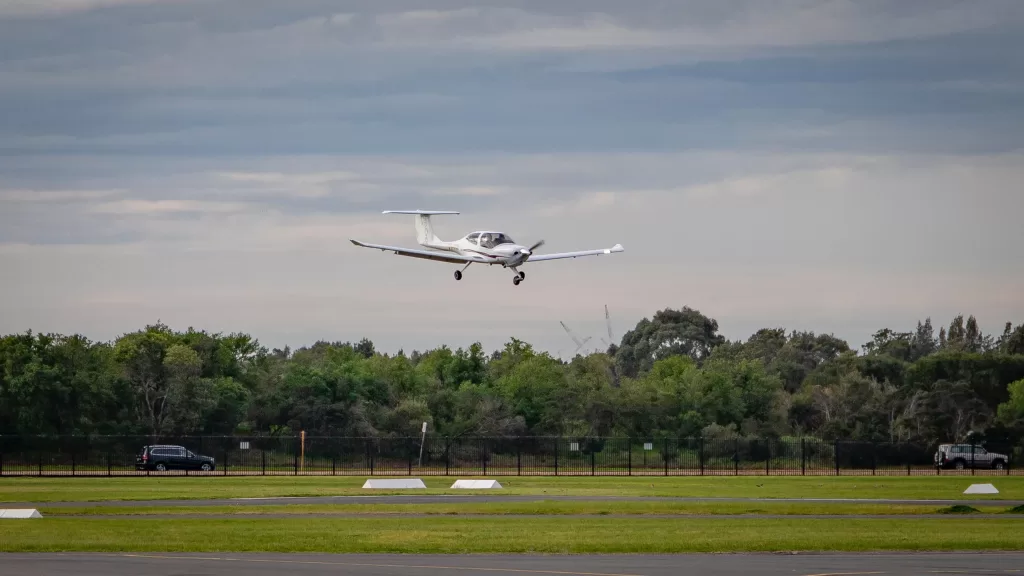
It was amazing! Words simply couldn’t describe how happy and satisfied I was, and I still am. To me, it’s not only about the joy of flying the plane by myself, but what’s more important is knowing that I can actually handle an aircraft, and that has really built up my confidence and made me feel like a pilot for the first time. For this reason I couldn’t be more grateful to LTF and my instructor Uly.
Looking back a little bit before I went to Melbourne, and before I started preparing for my flight training, I had thought flying in Moorabbin Airport was so difficult. It has 5 physical runways, each one crossing the other one. On top of that, the numerous taxiways crossing different runways makes it a bit of a maze to begin with! Thankfully LTF prepared a starter kit that listed out the detailed route map and the standard procedures for Moorabbin Airport. This preparation took away my worries about navigating the runways, and made my flight training smooth.
The other thing I have to point out is that the LTF aircraft are so beautiful. They’re probably the most beautiful ones in the airport – all looking new and colourful. It’s an enjoyment simply looking at them, and taking selfies of course! Other than flying, I do enjoy hanging around in the office. There is a big classroom for students to study and chat. I have met a lot of aviation enthusiasts there, sharing thoughts and talking about aviation.
All that being said, I’m really looking forward to coming back for more!
The Learn To Fly Future Cadet Pilot Program Scholarship
The Learn To Fly scholarship has helped me in a lot of ways. I mean the grant of the scholarship itself already means a lot to me. It is not just the flying hours that I get, but more importantly it’s the recognition of my passion and hard work – it’s a real encouragement.
Before I went to Melbourne, we already had a consensus about my flight training goals, and LTF delivered. They didn’t simply try to put me up for my 1st solo, but they constructed a training program, including the aircraft, the checklist, the procedures etc, to prepare me for the upcoming cadet training. Of course, completing my 1st solo was a simply a bonus, and a bonus that I really love.
During my time there, not only did I massively improve on my flying skills, but I have also learnt more about what it takes to become a good pilot through sharing stories with the instructors, something I find of true value.
All in all, with the help from LTF, I am now confident and ready for the upcoming challenge. I hope soon enough I could be as a good pilot as my instructors here at LTF. And I’m really glad LTF has given such a chance for Hong Kong locals to pursue their dreams. It’s never easy to take on this career in Hong Kong, but with the LTF Future Cadet Pilot Program now, the path seems to be a little bit easier.
We thank Dean for giving us this great insight into his aviation journey. We also wish him well with his training at Cathay Pacific, and hope to see him in Australia again sometime.

For further information about Learn To Fly scholarship opportunities, email [email protected] or visit https://drift.me/learntofly/meeting to book a meeting and school tour. Our highly successful Future Cadet Pilot Program is run in partnership with Captain Darren McPherson from ACS – Aviation Consulting Services.
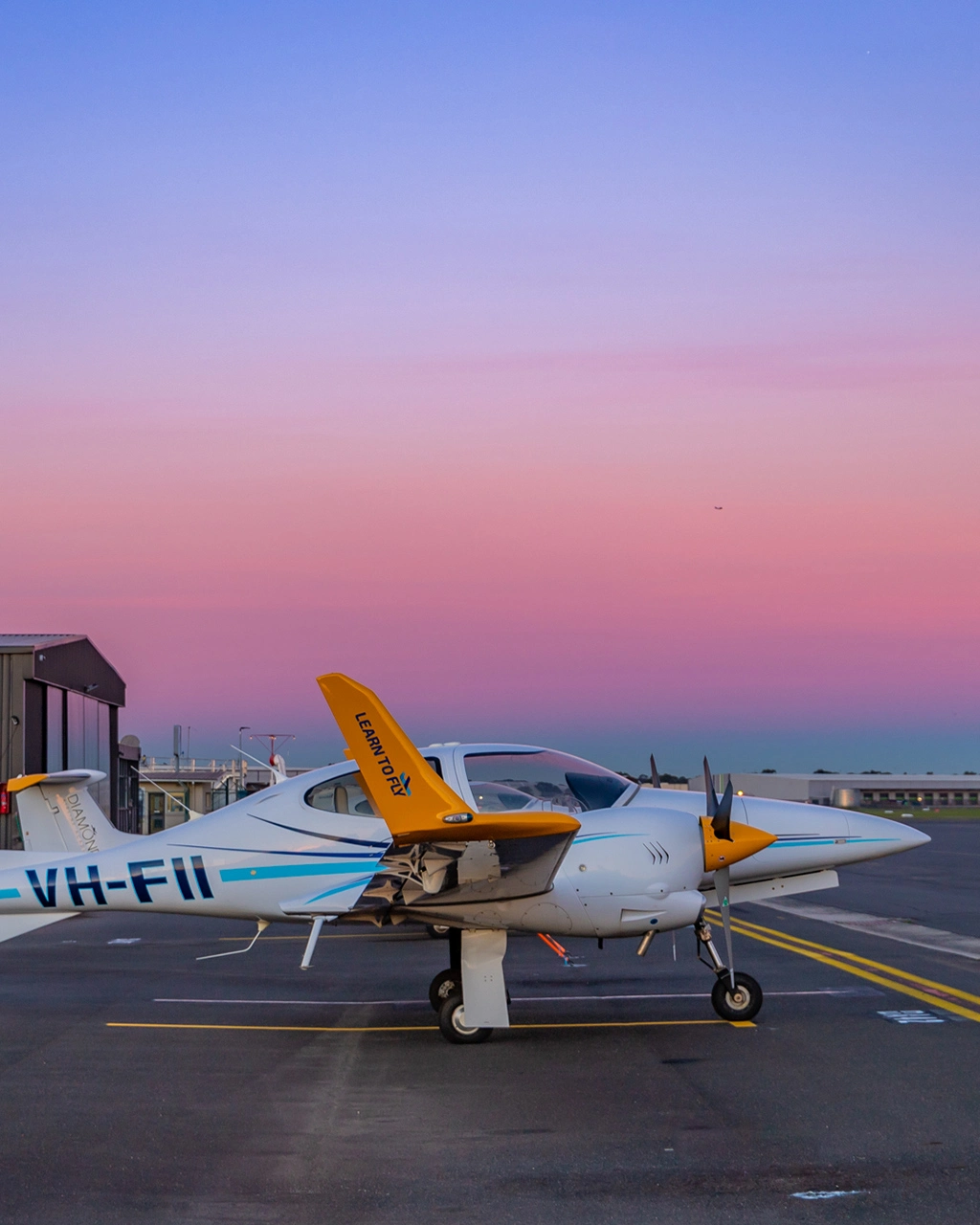
Pilot Stories: International Ferry Pilot Flies LTF Diamond DA42 From Canada To Melbourne
We have just taken delivery of our 2 brand new twin-engine Diamond DA42 aircraft here in Melbourne. They were built at the Diamond Factory in Canada. After that, international ferry pilot Stuart Caling flew them all the way to us here at Moorabbin Airport.
The journey involved flying from Canada to California first. The next part involved island-hopping across the Pacific Ocean to the Gold Coast. And then, flying south to Melbourne.
As you could imagine, the role of a professional ferry pilot is a very interesting one. We caught up with Stuart for a chat about his career.
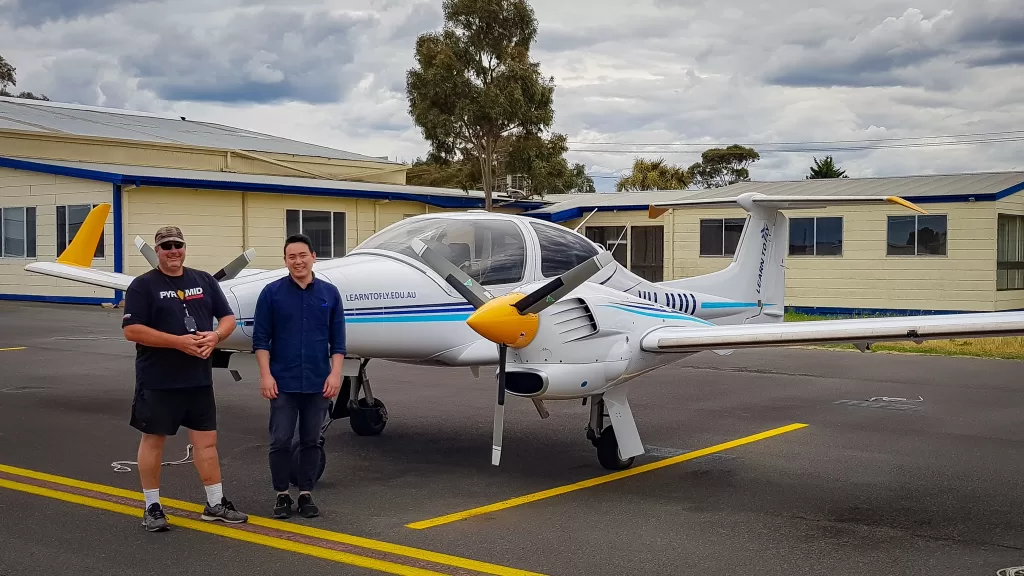
Tell us a bit about your flying background, how you became a ferry pilot, and what the role is like
I got my CPL in 1998, and my early pilot career involved flying charters in Queensland. During this time I also built up close to 5,000 hours as a flight instructor. I learnt about the role of ferry pilot through legendary Australian aviator Jim Hazelton, and flew my first ferry role from Italy in 2010.
I’ve now logged over 3,000 hours as a ferry pilot, and have lapped the globe probably 14 times.
The ferry pilot job isn’t easy, and requires an intimate knowledge of aircraft engineering and mechanics, particularly relating to weight dynamics. Many pilots see it as a fairly straight forward job and a way to build hours, which isn’t the case. You’re flying long distances without a break, sometimes over large bodies of water. So when problems occur you need to know how to handle them on your own.
What do you love most about the ferry pilot job?
It’s definitely not a monotonous job, being able to see so many different locations around the world. Having the opportunity to learn about and fly so many different types of aircraft is also great. I love seeing the factories where the aircraft are produced, as well as the engineering side of the role.
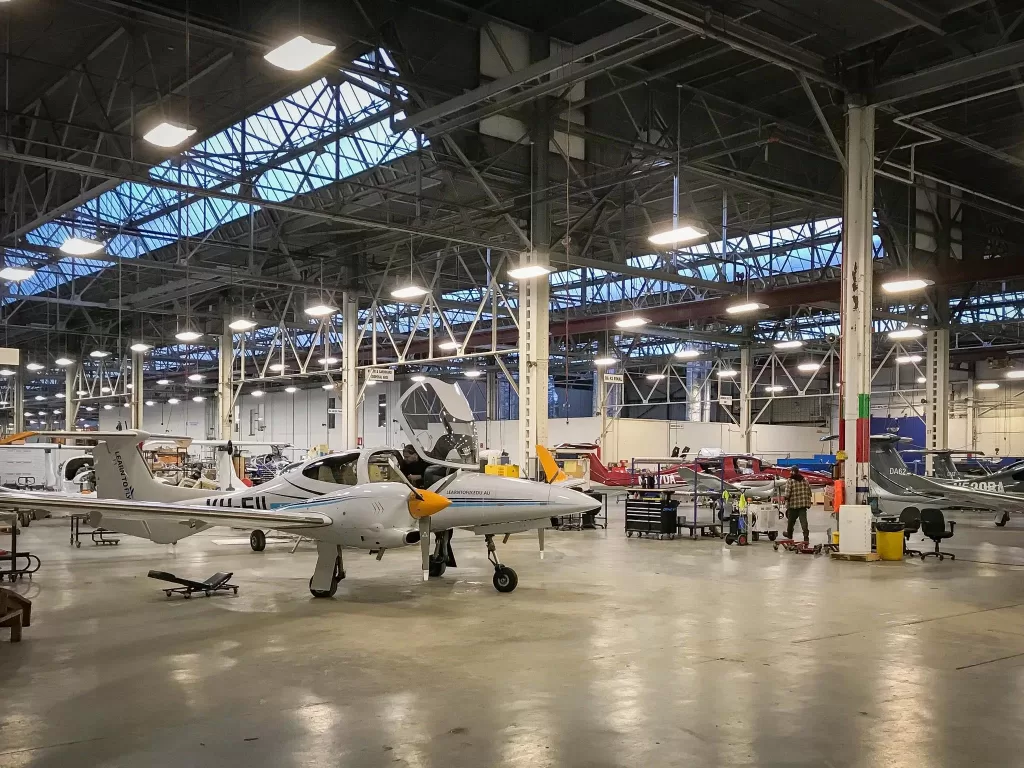
What is the best/most unique aircraft you have flown so far?
The Vulcanair A-Viator AP68TP – a 10-seat twin-engine aircraft powered by Rolls Royce Nomad engines. I flew this aircraft from Avalon Airport in Melbourne to Germany, and am currently the only Australian pilot endorsed to fly it.
If you had the opportunity to fly any aircraft in the world, what would it be and why?
The Hawker Sea Fury FB11, or the Lockheed P38 Lightning. I have had the opportunity to fly some warbirds including the North American T28 Trojan.
What is the longest distance you’ve had to ferry an aircraft?
The longest overall journey was probably ferrying a Beechcraft Baron from Perth in Australia to West Virginia in the USA. The leg from California to Hawaii is the longest single over-water leg in the world, at close to 2,300 nautical miles – which is one of the legs I flew taking the Diamond DA42 to Melbourne.
What is the most exotic destination you’ve been to on a ferry flight?
Kiribati Atoll is an extremely unique place, sitting in between Hawaii and Pago Pago (American Samoa) in the Pacific Ocean. It is an Australian territory, and was once a nuclear testing site, but since the 1990s it is primarily a launch site for satellites and ongoing monitoring of spacecraft.
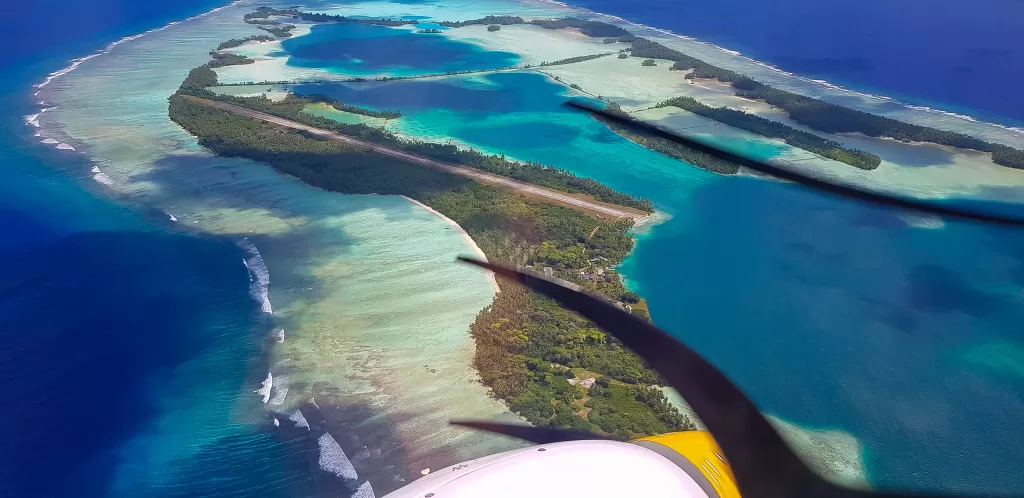
What are some of the craziest experiences you have had in your role as an international ferry pilot?
Flying over the Persian Gulf on a ferry flight from Iran to Pakistan, I had a pair of US FA/18 Hornets escort me, which was pretty amazing. I have also experienced aircraft-related issues such as an engine fire near Thailand, and engine warning lights coming on during a long leg over open ocean.
How did you find flying our Diamond DA42s to Melbourne?
They are very easy to fly, and very spacious and comfortable – especially when taking into consideration the long Pacific Ocean legs. The first ferry flight I did in a Diamond DA42 was from Jordan (in the Middle East) to the Gold Coast in Australia, which was a pretty long haul as well.
What’s your next international ferry pilot role?
I’m flying a Britten-Norman BN-2 Islander aircraft from New Zealand to Fiji, and then I’ll be heading to the Diamond Factory in Austria after that for more ferry flights in Diamond aircraft.
We’re thrilled to have our Diamond DA42 aircraft here in Melbourne, and very thankful to Stuart for delivering them safely to us. It was great hearing about some of his experiences as an international ferry pilot, and amazing to see some of the images he captured during the trips – including the below one with our DA42 in front of a pair of USAF F-22A Raptors in Hawaii!
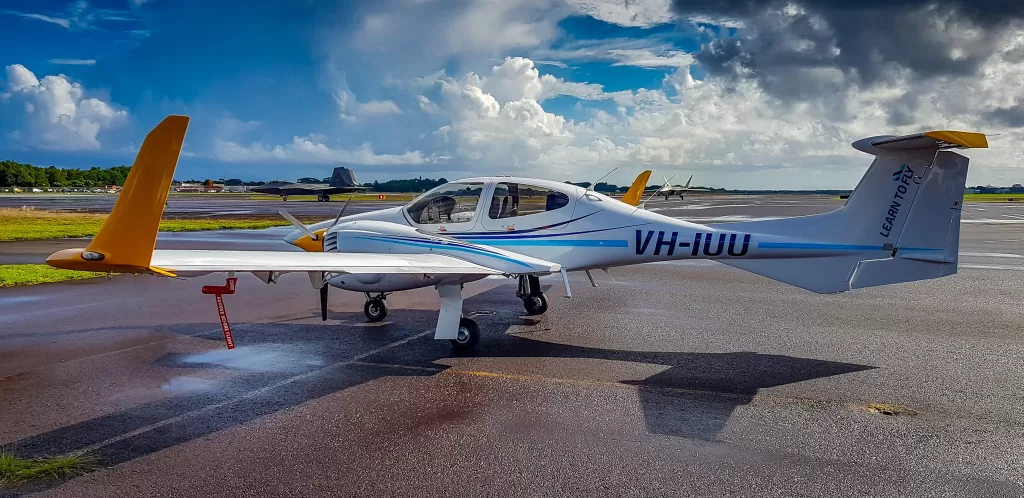
Before you start flight training, chat to one of our flight training specialists. Email [email protected]/en or go to https://drift.me/learntofly/meeting to book a meeting and school tour.

Airline Cadet Pilot Interviews: How Many Flying Hours Are Required?
Over the previous years, I have seen airline cadet pilots candidates apply for interview with varied amounts of flying experience. Some applicants have zero flight hours, and some have as many as 50 flight hours. This brings to light an important question. “Before I apply for for airline cadet pilot interviews, how many flying hours do I need?”
This answer will certainly vary from person to person, and even airline to airline.
Typical responses from airlines can again vary from “we will train you”, to “the more experience the better”. There are even in extreme examples such as “why would you waste your time doing any flying beforehand?”
All of these are very subjective responses.
So is there a right or wrong answer to this question?
From my own personal experiences with cadet pilot interview requirements, I feel that previous flying hours are an important part of preparation. This is important not just at the interview stage, but is also advantageous once successful applicants start their cadet training.
Typically, zero time cadets may not have had any exposure to flight at all. Considering flying introduction programs are certainly worthwhile. Firstly, to see if aviation and the flying environment actually interests you. Secondly, to see if you are suited to a flying role and the challenges that this presents.
Over the previous 2 years most of the successful airline cadet pilot interview applicants have completed a basic flying program as a minimum.
Beyond initial flight training, further training is of course up to the individual. You can pursue programs that help you towards achieving your first solo flight. Beyond that you could even look at obtaining a Recreational Pilot Licence or Private Pilot Licence. This certainly does help towards not just the interview process and understanding aviation, but the future role that one is about to pursue as an airline cadet pilot after the successful interview.
Recent airline cadet pilot interview applicants have given feedback that practical aviation exposure and flying hours is a must. This experience greatly assists with actual practical knowledge of flying beyond a purely theoretical approach.
Further to considering airline cadet pilot interviews and the flying hours required beforehand, it’s also a great idea to think about completing a flying program before starting your actual cadet training. This is especially beneficial if you complete a course in a similar aircraft type to the one you will fly during your training.
Captain Darren McPherson from ACS – Aviation Consulting Services is our specialist airline interview consultant. He runs our highly successful airline interview courses, which includes the Future Cadet Pilot Program (FCPP) and the Airline Interview Coaching Session.

Learn To Fly’s Airline Pilot Interview Programs have been created specifically to give airline pilot applicants the best possible preparation. The Future Cadet Pilot Program (FCPP) also offers practical flying training, which makes a valuable addition to your technical knowledge.
For further information or to register your interest in these modules, email [email protected] or visit https://drift.me/learntofly/meeting to book a meeting and school tour.
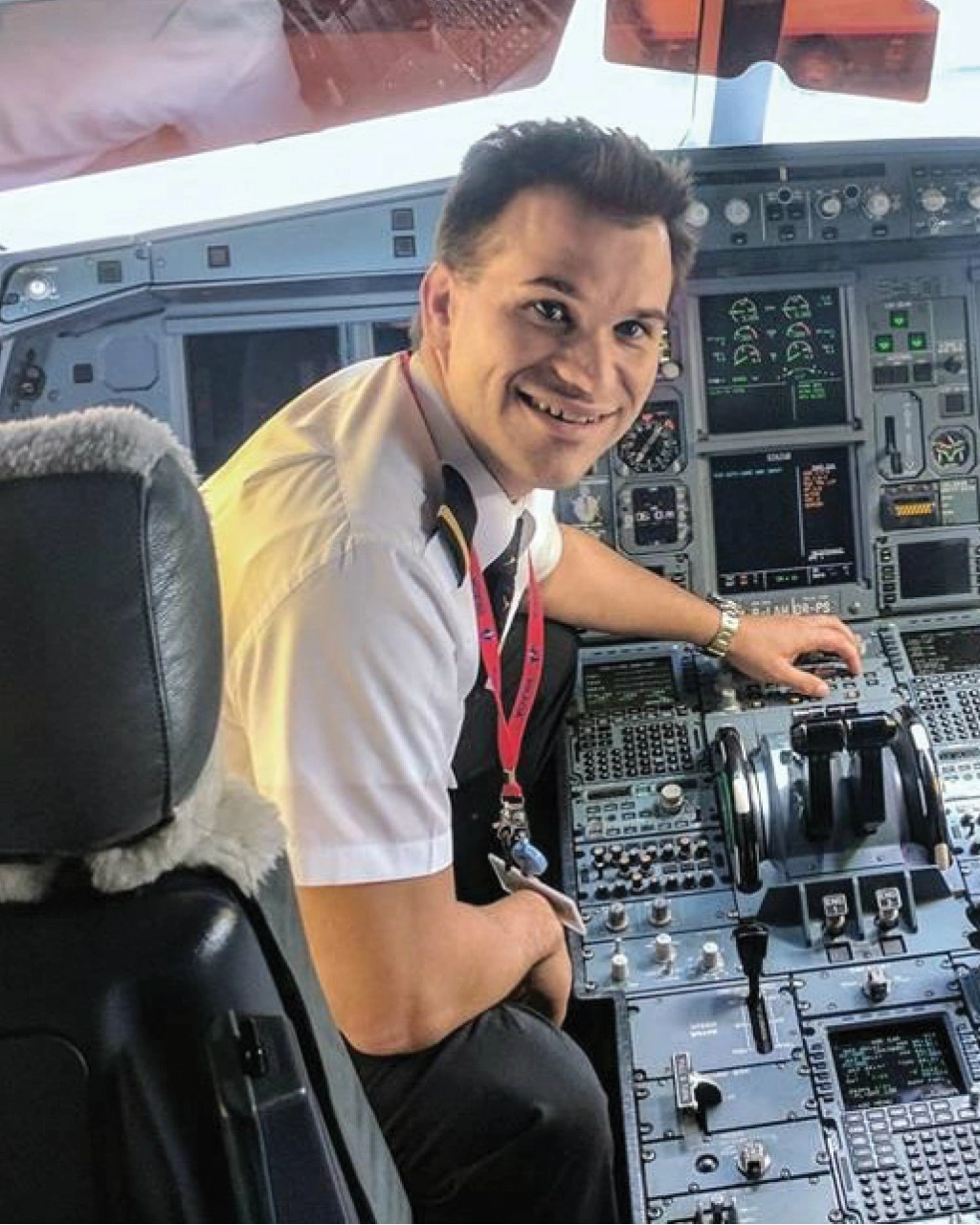
Pilot Stories: The Road to Becoming an Airline Second Officer – Matt Waterton
We spoke to Matt Waterton, one of the success stories of our Airline Interview Coaching Session about his passion for flying, his experiences in applying and being accepted into a cadet program, and then becoming an airline Second Officer. Matt is well on his way to achieving his aviation dreams in the airline industry.
Even for those young men and women who have already taken steps towards being a pilot, until very recently a career as an airline pilot has still seemed out of reach. Many major airlines are opening up their doors, increasing numbers in their cadet and direct entry programs and offering new entry points into the industry.
Tell us a bit about your background and what made you interested in flying
I travelled regularly as a child and found myself more interested in what type of aircraft I was flying on, rather than the trip itself. In the days when it was legal, I used to visit the flight deck where I found myself fascinated by the complexity of the dials and switches. I remained in the cockpit during landing on several flights, and it was on one of these occasions when the captain allowed me to wear headphones and listen to Air Traffic Control, that I realised flying was my passion.
What do you love most about flying?
I still find that there is still nothing quite like accelerating down the runway and taking off. However, I do enjoy looking at the night sky and observing things I wouldn’t usually be able to see; the International Space Station, shooting stars, and the ever-changing scenery down below.
If you were given the opportunity to fly any aircraft in the world, what would it be?
Unfortunately for me, I have always had a soft spot for the Concorde. It flew higher and faster 50 years ago than any airliners in active service today. The Concorde truly made the world a much smaller place. It amazes me that Concorde was designed and engineered in a time without computers as we know them.
What is your ultimate flying goal?
I’d love to be the captain of an airliner into London or my hometown of Brisbane.
Tell us about your current airline Second Officer role
I’m currently a Second Officer at a major airline based in Asia. It’s a great job – I mainly fly sectors back to Australia, so I always get to catch up with my family. The crew are fantastic and easy to talk to, and very supportive if I’m due for any upcoming training sims.
Did you have any flying experience before you decided to apply for airlines?
I used to fly skydivers in a Cessna aircraft. It was a great job for getting used to manually handling an aircraft and seeing how they perform. I then worked as a charter pilot in a twin-engine piston aircraft based in Queensland. I primarily flew passengers to remote towns in Australia, landing on some interesting landing strips.
Was the interview process what you expected?
Yes, it was indeed. I made sure I did everything I could to prepare for the process. I found the interview itself to be less confronting than I had expected, that was a big relief! I had to pass an initial interview, followed by two days of testing before I was accepted. The two days encompassed a group interview with other candidates (a problem-solving activity), psychometric testing, a simulator assessment in a 747 simulator, and finally a panel interview.
What are the main things that you found challenging during the interview process, and what advice would you give to future applicants?
Waiting to see if I was successful or not was agonising. I’d jump every time I received an email! Make sure you receive all the help you can for your interview; interview preparation, reading through online forums to see what to expect, and running through the simulator assessment on a flight simulator.
Make sure you’re completely familiar with the airline you’re applying to. That includes where they fly to, knowing about the country in which the airline is based, which aircraft they operate, and most importantly – what is expected of you in the position you’re applying for. Knowing you’ve done everything you can makes it that much easier to stay calm and be yourself during the interview.
Airline Pilot Interview Preparation Courses
Whilst now is the perfect time to look at an airline career, getting there is still very competitive and challenging. To give yourself the best possible chance of success, you need an edge. That edge is preparation, and knowledge from people experienced in how both the cadet program itself and the industry in general works.
Captain Darren McPherson from ACS – Aviation Consulting Services is our specialist airline interview consultant. He runs our highly successful airline interview courses, which includes the Future Cadet Pilot Program (FCPP) and Airline Interview Coaching Session.
Matt becoming an airline Second Officer is just one of many success stories to come out of these courses, which give you a proven edge over other applicants. We’d like to thank Matt for sharing his story and experiences.

For further information or to register your interest in our airline interview preparation courses, email [email protected] or visit https://drift.me/learntofly/meeting to book a meeting and school tour.
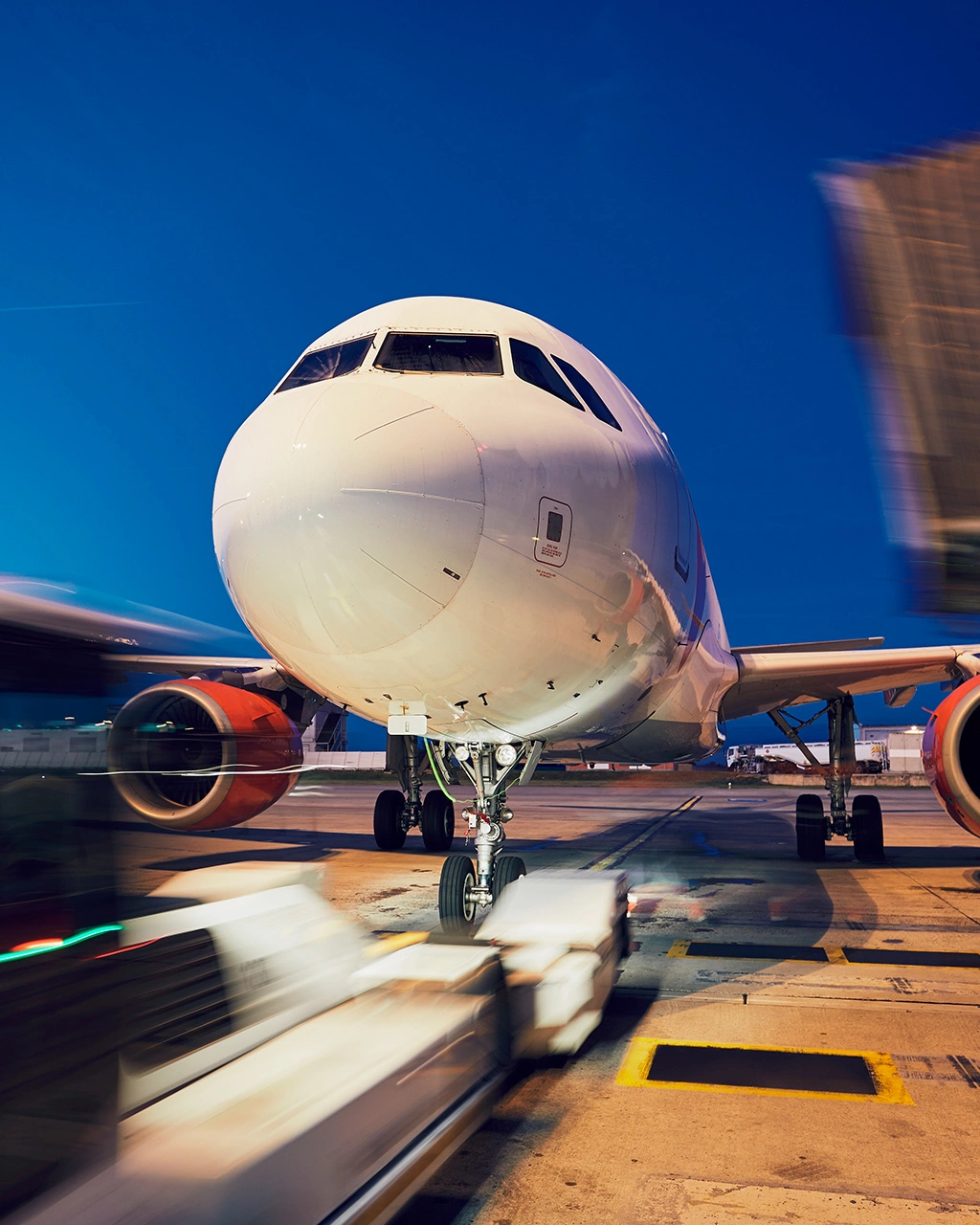
Recommended Pathways for Becoming an Airline Pilot for Overseas Students
When talking to student pilot hopefuls from Hong Kong, Singapore, Malaysia etc about becoming an airline pilot, many still think there is a huge risk paying to study their Commercial Pilot Licence (CPL), because they think that they will never get a flying job.
This may have been difficult a few years ago, however, the aviation industry has completely changed recently. If you want to become an airline pilot – or a pilot in general – there has never been a better time than right now to get into the aviation industry. In this blog, we discuss the pathways available to overseas students with a deep desire in becoming an airline pilot.
What do you do after getting your Commercial Pilot Licence (CPL)?
To improve their chances of becoming an airline pilot after completing their CPL, most students choose to work as a Charter Pilot or a Flight Instructor. This allows them to gain more flying experience before applying to an airline.
For an overseas student, this may have been difficult a few years ago. However, looking at the Australian Federation of Air Pilots (AFAP) website now, there are far more General Aviation (GA) pilot jobs listed, many of which are open to overseas pilots who are able to work legally in Australia.
Even as a fresh graduate, Junior Flight Instructors are now offered a full time job, whereas in the past they were commonly only offered a no-guarantees role with an hourly rate.
Flying schools in regional or remote areas are now struggling to find Instructors to work for them because it’s so much easier to get a job in major cities like Melbourne and Sydney. Pilots that would have previously needed to take whatever job they could find, regardless of location, are no longer willing to work and stay in the middle of nowhere.
Airlines are hiring!
Cathay Pacific, for example, are offering Direct Entry Second Officer roles that only require a CPL and 500 flying hours. Singapore Airlines and Scoot are offering both Direct Entry Second Officer and Direct Entry Junior First Officer with no minimum flying hours requirement.
This is a strong message from the airlines to everyone who might be thinking about becoming an airline pilot, saying “go and get your licences and we will offer you a chance at a career”.
The recommended pathways for overseas students
Below are are the recommended pathways for overseas students who are investigating becoming an airline pilot. Planning is extremely crucial though – for example, if you are planning to get an Aviation Degree, you may want to consider the following path:
Option 1
Study the Diploma of Aviation (CPL) and get your Commercial Pilot Licence with a flying school in Australia
Study to obtain your Flight Instructor Rating (FIR) straight away after completing the Diploma program
Choose a university and enrol in the Bachelor of Aviation course with your Diploma certificate. You can most likely claim up to 12 months’ credit, meaning that you may only need to study for 18 months to finish off the Bachelor program
While you are studying at university, your student visa will allow you to work up to 20 hours a week, which means you can work as a part-time Junior Flight Instructor and study at the same time
After 2 years when you graduate with your Bachelor Degree, you will become a Grade 2 Senior Flight Instructor with roughly 800 flying hours already
At this stage, you will already fulfil many of the airlines’ entry requirements and will be able to apply for an airline pilot job, or you can continue to work as a flying instructor until your visa expires
This is a much better pathway to becoming an airline pilot, than just enrolling in a Bachelor of Aviation course at the start. It also gives you a much more flexible career pathway.
Option 2
If you are not planning to study at university there are still many ways to work legally in Australia, and you may want to consider the following path:
Study the Diploma of Aviation (CPL) and get your Commercial Pilot Licence with a flying school in Australia
Study to obtain your Flight Instructor Rating (FIR) straight away after completing the Diploma program
Apply for either Working Holiday Visa / Work Holiday Visa (depending on which country you are coming from) OR a Temporary Skills Shortage Visa.
Work as a full-time Flight Instructor
After accumulating 200 instructional flying hours, you can become a Grade 2 Flight Instructor and continue to work as a flying instructor until your visa expires
At this stage, you will already fulfil many of the entry requirements for becoming an airline pilot.
Visa Options
Working Holiday Visa:
Citizens of many countries are eligible for this visa including Hong Kong, Singapore, Taiwan, Malaysia etc. Work and Holiday Visa and Working Holiday Visa holders need to change employer every 6 months, but after 6 months’ working as a Flight Instructor for one employer you will most likely become a Grade 2 Flight Instructor. This means that there will be many jobs available to you at other flying schools since Grade 2 Flight Instructors can work without supervision and are therefore in high demand.
Temporary Skills Shortage Visa (TSS):
The TSS visa is a sponsored work visa that recognises skills that are in high demand in Australia. As mentioned previously, the recent demand for Flight Instructors in major cities has left many regional and rural flying schools with a shortage and unable to recruit enough pilots. Some of these areas even include larger regional cities, and if you are willing to work there, you may well find that a flying school is able to sponsor you for full time employment on a TSS visa.
Becoming an airline pilot is easier when you consult with a specialist
Whichever path you choose, planning is the most important aspect – and you can only plan properly when you have accurate information. Stop listening to people who may not know about the current situation for flight training in Australia, or who may not know about the Australian Aviation industry in general.
Captain Darren McPherson from ACS – Aviation Consulting Services is our specialist airline interview consultant. He runs our highly successful airline interview courses, which includes the Future Cadet Pilot Program (FCPP) and Airline Interview Coaching Session.

For further information or to register your interest in our airline interview preparation courses, email [email protected] or visit https://drift.me/learntofly/meeting to book a meeting and school tour.
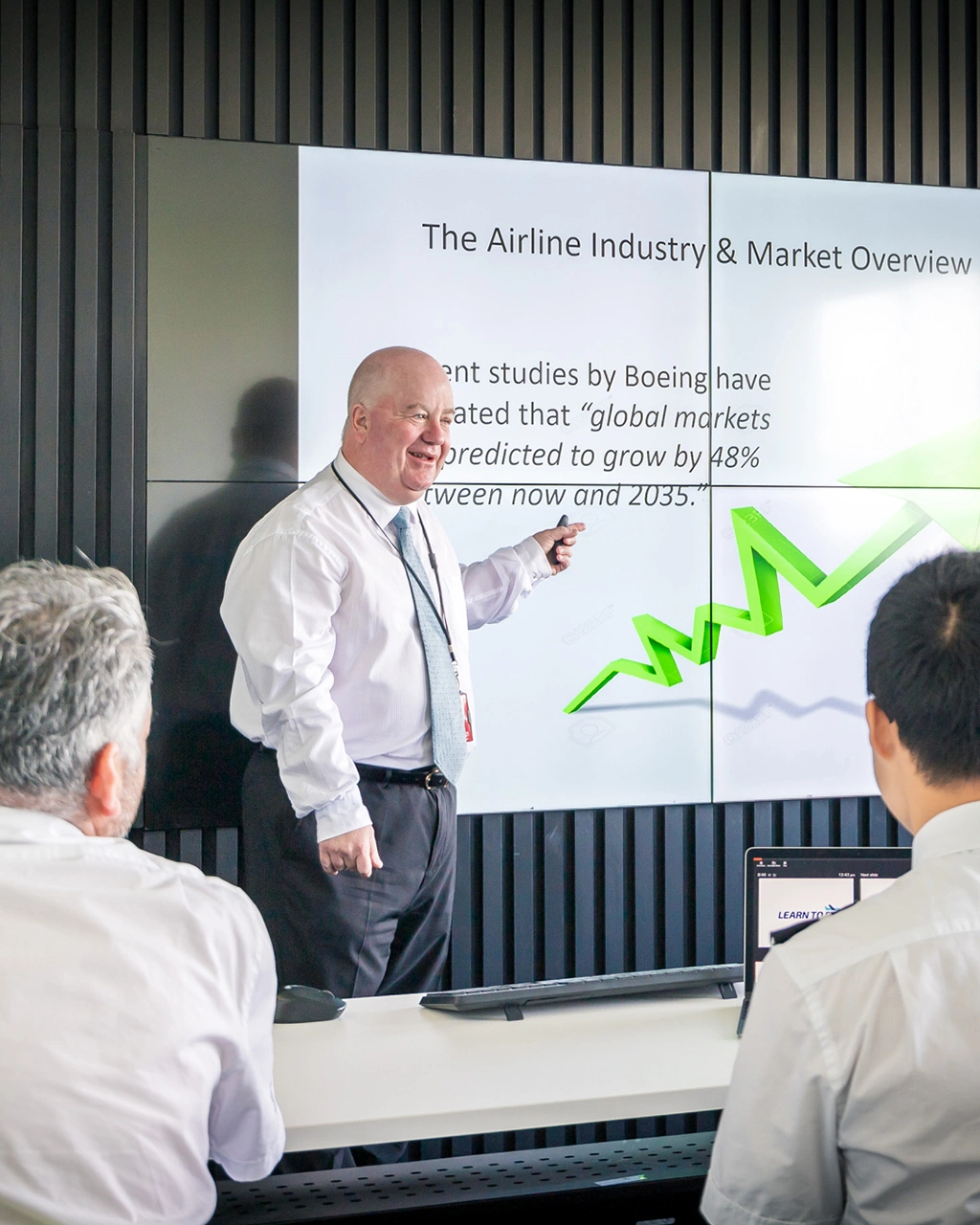
6 Frequently Underestimated Pilot Interview Questions
What are some of the most underestimated pilot interview questions?
As a result of airline interview preparation courses with ACS – Aviation Consulting Services and Learn to Fly, we have had many successful candidates who are now flying large turboprop and jet airliners with airlines around the world. We have assisted candidates through the interview process, and successfully improved both preparation techniques and interview performance.
Let’s take a look at some overall preparation tips, as well as some specific pilot interview questions that we have found are underestimated at times.
Overall Preparation: The Earlier The Better
As always, the key to any interview is preparation, and the earlier you start this the better.
It’s important to take into account your interview lead up time. If the interview date is within 1 month, then a lot of preparation is essential. It is essential to step back from initial individual or group preparation sessions and think about your responses. You are then able to develop or evolve more complex answers, and display more knowledge depth during interview.
Most applicants know that they need to get their practical and theoretical flying knowledge right. On top of this though, for many airlines the HR questions play an important role. It is these HR pilot interview questions that we have found often get mistakenly seen as a low priority.
Over the previous 2 years with more than 75 airline job offers from 8 major airlines, the typical successful candidate started their HR preparation at least 6 weeks before the interview. Ideally this time frame is at least 8 weeks. Starting that far in advance allows enough time to develop a strong, well thought out and prepared candidate.
Top 6 Underestimated Questions During Pilot Interviews
Through experience, a number of broader areas and specific pilot interview questions have become apparent. It is these concepts that candidates need to develop further more consistently.
At times the focus can be strong on standard yet obvious questions, such as:
“Why should we employ you?” or
“What are you going to get from working for our organisation?”
Other questions tend to remain underestimated and therefore require more consideration. The top 6 questions during pilot interviews that consistently require more consideration are as follows:
1. Discuss your understanding of the role you are applying for
2. Where do you see yourself in the long term ie 5, 10 and 20 years from now?
3. What has been the most satisfying part of your career so far?
4. Discuss a time when you have been under pressure, and how did you overcome this?
5. What is your PLAN B if you are unsuccessful today?
6. How can your role as a pilot be used to improve the customer experience, and our product?
Whilst the HR components for different airlines have differing focuses in their pilot interview questions, reviewing these areas will give you a great overall base to answer most questions. Developing responses to these will allow you to present as a more well thought out candidate, and ultimately, will make you seem a better person for the job than other less considered applicant responses.
Our Airline Interview Preparation Courses
Captain Darren McPherson from ACS – Aviation Consulting Services is our specialist airline interview consultant. He runs our highly successful airline interview courses, which includes the Future Cadet Pilot Program (FCPP) and Airline Interview Coaching Session.

Learn To Fly’s Airline Pilot Interview Programs have been created specifically to give airline pilot applicants the best possible preparation. The Future Cadet Pilot Program (FCPP) also offers practical flying training, which makes a valuable addition to your technical knowledge.
For further information or to register your interest, email [email protected] or visit https://drift.me/learntofly/meeting to book a meeting and school tour.

Sharing Experiences: How I Passed My Singapore Airlines Cadet Pilot Interview
We love sharing experiences here at Learn To Fly. Shaun Goh has just passed his Singapore Airlines Cadet Pilot Interview after completing our highly successful Future Cadet Pilot Program (FCPP).
About Shaun
Firstly some background about me – I got interested in aviation about 3 years ago (2015). Prior to that, I had absolutely no background on aviation at all, no flying experience, no education, nothing. What sparked my interest was a rather chance encounter while I was working full time 3 years ago. Back then, I was working full time at my family’s business where we run a car workshop.
One of our customers happened to be a pilot from Singapore Airlines. I managed to speak to him for a bit while he was waiting for his car to be serviced. He sparked my interest in aviation. After he told me that Singapore Airlines was actively recruiting, I immediately had the thought of trying it out.
However, one thing that did come to mind for me is that there is a rather lengthy bond, 7 years from after your graduation from training. Now I know some people might think it is a small price to pay for sponsored training, but from what I gathered, most people do not realise this before applying. Are you really suited for flying, and can you meet the airline’s strict standards of training?
Singapore Airlines Cadet Pilot Program and Interview
I thought about if I was the interviewer and a candidate told me he is passionate about being a pilot but has never flown a plane before. It does not really sound believable or convincing, does it?
So I thought it wise to see if I was suited to fly first. After all, even if I did manage to get in, what if I got chopped halfway during training? It is a very real thing and it is still happening now. I have witnessed a few cadets being chopped as they are unable to handle the flight training.
Just for your info, for Singapore Airline’s cadetship, you have to complete ground school in Singapore first for 6 months. Only after passing the 14 ATPL papers will you then be sent to Jandakot in Perth to start flight training. There is a waiting period before being sent to Jandakot as well and it can range from 3 weeks to 2 months. So imagine if you are not able to handle the flight training and get chopped halfway through the course. It is not only a waste of your time, but it is also a wasted opportunity. This is why preparation is important.
Prior Flying Experience Is Important
In fact, in the first week when I reached Jandakot, the assistant Chief Flight Instructor (CFI) asked all of us who has the prior flying experience and pointed out that those with experience have a huge advantage over those who do not. This is because the school has strict limitations on the number of hours you can fly under training. It will not allow for multiple repeats. One major hurdle for many people is the first solo, and with prior flight training you can easily pass this.
My Singapore Airlines Cadet Pilot Interview Preparation
Okay, enough about the gloomy stuff. On to the preparation on how I got in.
The first thing I did was to book a simulator session at the now-defunct SG Flight Simulations (Airbus A320), and also one at Flight Experience Singapore (Boeing 737). The experience I had at both these simulators was enlightening, but it was not really as beneficial as I thought as I did not really have any idea what was going on and what I was doing. I thought about what I should do next. By coincidence, I chanced upon the Learn to Fly advertisement on Facebook. I was immediately attracted to it when I read about their Future Cadet Pilot Program (FCPP).
Not only did it offer flight training at a cheaper cost, but what really attracted me was the Airline Interview Coaching Session with one of the Senior Captains from a renowned international airline based in Asia – Darren Mcpherson. Darren has been an interviewer for cadets at his Airline before. He provided me with the much-needed feedback I required for my preparation for the interview. He was a great help to me – I had even gone through a few skype interview sessions with him before my actual SIA interview.
During my time in Melbourne, I must say that I enjoyed the flight training thoroughly. The instructors are friendly and helpful, and the planes are maintained well, despite the fact that it is cheaper than other general aviation schools. I made lots of new friends with similar goals, and we all helped each other out. There were a few hiccups here and there, but no one is perfect, and if you are considering enrolling in a flight school, I must forewarn you to adjust your expectations. Even with that said, the school manager is a very hardworking person and I am thankful that he was able to make arrangements for me to complete my training in 1.5 months as I was on a tight schedule.
Areas of Knowledge
I only applied to SIA after I came back from Melbourne. I prepared myself by reading up on the following:
– Air crash investigations – Ones such as Air France 447 and Air Asia 8501 which were pretty prominent cases at the time
– Latest news regarding SIA (destinations, new products, and so on)
– What the MPL program was all about
– Watching the video Inside Singapore Airlines by National Geographic
– Reading up about crew resource management
– Learning about incidents involving SIA planes (Herald is a good source)
– Reading up on SIA annual reports and shareholder reports to see how the company is doing
– Reading up about the fleet of SIA (plane models, engine name, maximum thrust, maximum endurance, max takeoff weight)
– Revising on what I had learned at learning to fly (aerodynamics, principles of flight, landing and crosswind procedures)
– Preparation for the HR side of questions, such as what are my strengths and weaknesses, examples of situations when I demonstrated leadership, problem-solving
– Working on a good introduction
The last point is especially important as the interview process is very fluid. They can really ask you about anything if they want to. Why a good introduction is important is because how the interview proceeds will depend on how you do your introduction. For me personally, both my initial and final interviews were very focused on my experience in Melbourne at Learn to Fly. This made it somewhat slightly less intimidating for me. It was more of a sharing session rather than a hard grilling compared to other interviewees.
Moment Of Truth
After completing the final Singapore Airlines Cadet Pilot interview, I got the news the very next day. Fortunately for me, I was selected. I was happy and at the same time grateful to have been given this opportunity. When I left Melbourne to return to Singapore, I remember feeling sad as I was unable to complete my navigation training. Now that I am given another chance to do so, I will cherish this opportunity.
For those of you who require more info on the application process to Singapore Airlines, the Hardwarezone Forum is a good resource. I read all of the pages of it. Also, some other good resources are Ace The Technical Pilot Interview by Gary V. Bristow and Flying The Big Jets by Stanley Stewart. I read both of these as well.
Thank you for reading. I wish you all the best in your application. Disclaimer: In no way am I representing the company. I am just sharing my personal experiences which may differ from person to person.
Captain Darren McPherson from ACS – Aviation Consulting Services is our specialist airline interview consultant. He runs our highly successful airline interview courses, which includes the Future Cadet Pilot Program (FCPP) and Airline Interview Coaching Session.

For further information or to register your interest in our airline interview preparation courses, email [email protected] or visit https://drift.me/learntofly/meeting to book a meeting and school tour.
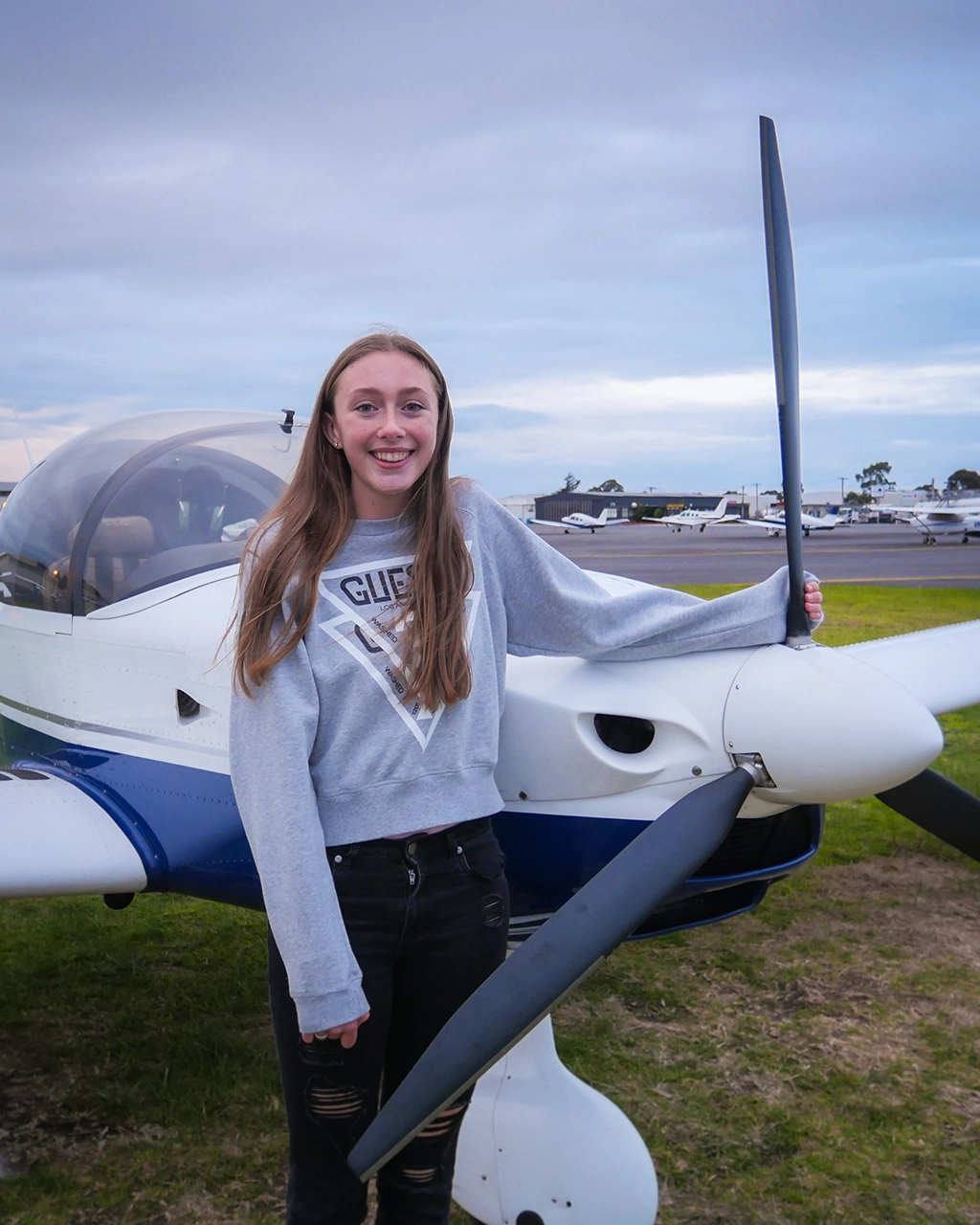
Fifteen Year Old Leeanne Kaplan on Her First Solo Flight
Learn to Fly RPC student Leeanne Kaplan won’t be forgetting her 15th birthday in a hurry, after completing her first solo flight.
Leeanne started studying the theory components for her Recreational Pilot Certificate (RPC) at age 13, patiently waiting until she was 14 to be allowed to take the controls of an aircraft in flight under the guidance of her instructor.
And then, on the day of her 15th birthday, Leeanne successfully completed her first solo flight. Given that 15 is the minimum legal age at which you are actually allowed to fly solo, Leeanne is surely one of very few people that have actually achieved that milestone so early.
We asked Leeanne a few questions following this amazing achievement:
1. How do you feel after your first solo flight?
To be perfectly honest, after flying solo for the first time, I felt really self-accomplished and proud of myself. In the hours leading up to my flight and on my way to Tooradin, I was incredibly nervous. I wasn’t worried that I would crash, but more that I would forget something and disappoint everyone. However, I got over my nerves and just did it, and I’m glad that I did!
2. What was the most challenging thing about it?
The most challenging part about it is deciding to actually do it. By this point my nerves had calmed down but the first time Anurag (Leeanne’s instructor) asked me if I wanted to do a circuit by myself I put it off and asked to do two more with him.
I found that I just had to commit to it and to know that I would be fine, which I was.
3. When did you decide that you wanted to get a pilot licence?
In December 2016 I went to the HASSE x NASA Space School in Houston (Texas, USA) for two weeks and they were talking about the different career paths NASA can offer, one of which was a pilot. Being able to fly a plane has always interested me, and when I came back from the USA I decided to pursue it.
4. What do your friends at school think?
My friends are completely obsessed with me flying and they hardly ever shut up about it. When I told them that I flew solo I was bombarded with comments, congratulations, and videos, anything where they could get their message across. Needless to say, they are extremely supportive of me but I always get asked this one question; “When can you fly me to _____?”
5. What is your ultimate goal for your aviation career?
I don’t have an exact goal for my aviation career. But I’m certain I would like to fly for a great airline like QANTAS. There are so many options and I know I have a long way to go. Plus I don’t have to decide now.
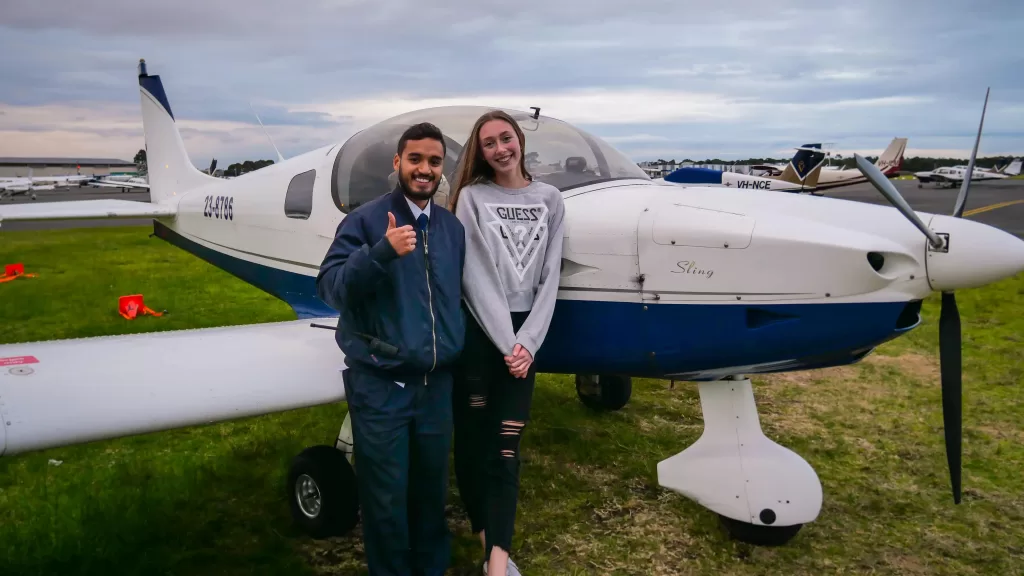
The Best Time To Start Flight Training
With an enormous increase in pilot demand predicted globally in the next 20 years, there’s never been a better time to consider an aviation career. It’s fantastic to see young people like Leeanne with the passion and enthusiasm to start so early.
The aviation industry has traditionally been somewhat male-dominated, but that is changing. There are many progressive airlines that are proactively looking to recruit more and more female pilots. It’s role models like Leeanne that will help to encourage more young females with a passion or interest in flying to have the courage and drive to pursue it.
Learn to Fly offers a range of courses to suit budding pilots of all ages and experience. For young people like Leeanne, the Recreational Pilot Certificate (RPC) is the best place to start. It allows you to commence learning and progress at a younger age than other courses such as the Recreational Pilot Licence (RPL).
After achieving your RPC, there are many other options available to you. You can add a Cross Country Endorsement, which allows you to fly further. You can also opt to convert to General Aviation training and progress towards a Private Pilot Licence (PPL).
Whether your aviation career goal is to be a flight instructor and teach other students, fly charters, or become a Captain with a major airline – you will find plenty of exciting opportunities within this fast growing industry.
We very much look forward to seeing where Leeanne’s flying career takes her.
Are you looking to start your pilot training? Get in touch with our flight training specialists. Email [email protected] or visit https://drift.me/learntofly/meeting to book a meeting and school tour.

LTF Enters A Team In The 2018 Outback Air Race
Late last year we posted a blog story announcing that two of our students were going to compete in the 2018 Outback Air Race. The annual event starts in Archerfield (near Brisbane) in QLD and finishes in Broome WA after eight individual flying legs.
Since 1996, the Outback Air Race has helped to raise much-needed funds for the Royal Flying Doctor Service. This year will see over 100 competitors in more than 40 teams take to the sky. The race covers approximately 2,132nm (or 3,940km), with the longest leg taking pilots from Bundaberg to Longreach.
Horace, who is currently studying for his PPL with Learn to Fly, has now been joined by Eason, who is studying his Diploma of Aviation and hoping to become an airline pilot one day. At 21 and 20 years old respectively, they will be the youngest team competing in this year’s event.
The race starts on August 18th, with Horace and Eason taking off from Moorabbin Airport here in Melbourne on August 15th to make their way north in our Sling 2 VH-LHH aircraft.
We asked Horace and Eason a few questions in the lead-up to the event:
What excites you the most about taking part in the 2018 outback air race?
Horace: I have always dreamed of circumnavigating Australia in an aircraft, and by the time I have completed the race and returned to Melbourne, I will have almost done that (Melbourne to Brisbane, across to Broome WA via the Northern Territory for the race, and then back to Melbourne). I am also looking forward to having a lot of fun and raising money for the Royal Flying Doctor Service.
Eason: I think this will be something amazing to be able to tell my grandchildren one day, and as a student pilot, taking part in the race will really improve my flying and navigational skills. I’m also really looking forward to having fun flying with Horace.
What have you been doing to prepare for the race?
Eason: We have been flying together as much as possible, and completing a lot of longer flight legs and navigation exercises together. It’s important that we can work as a really good team together.
Horace: We have been doing a lot of planning around how we will complete each leg of the race, and how we will split responsibilities whilst we are flying. The longest single distance I have flown in the Sling 2 is around 480nm (from Sydney to Melbourne).
What are your goals for the race?
Eason: The main goal is to finish the race successfully, but also we would love to actually win at least 1 leg.
Horace: We are also hoping to raise at least $2,000 each for the Royal Flying Doctor Service through our Everyday Hero fundraising page.
You can help Horace and Eason’s fundraising by donating on their Everyday Hero page here. We’ll be keeping track of their progress when the race starts on our social media, so make sure you are following our Facebook and Instagram accounts.

To find out more about our flight training courses, email [email protected] or visit https://drift.me/learntofly/meeting to book a meeting and school tour.

Joining the Jetstar Cadet Pilot Program
We are really excited to hear that one of our students, Silas Zhang, has been accepted into the Jetstar Cadet Pilot Program. Silas was previously a nurse before deciding that he wanted to make the transition into an exciting career in aviation.
Why are cadet pilot programs the best way to get into the airlines?
Cadet pilot programs are essentially a short cut to becoming an airline pilot. You can apply with no prior aviation experience. Other airline entry pathways generally require a minimum number of flying hours before you can apply.
It’s as close as you can get to a guaranteed job with an airline (subject to performance during training). More than 80% of cadets usually pass and becoming airline pilots straight away.
What is the Jetstar Cadet Pilot Program application process?
The application process for the Jetstar Cadet Pilot Program covers a number of different components. Each potential cadet will undertake the following:
– An aptitude test covering general and technical questions
– Group discussion, within a group of 6-9 other potential cadets. You will be allocated a task, and will then be observed on your contribution to the task. You will also be observed on how you interact with your other group members
– Two interviews, one with Jetstar and one with a flying school. These interviews will focus more on personality-based questions rather than technical questions
You are usually competing for acceptance into the program with hundreds of other applicants, and on average only around 15 students are accepted into the program for each class. Successful applicants are required to complete their training within 18 months.
What is the outcome of the Jetstar Cadet Pilot Program?
After successful completion of the training in Melbourne, cadets will complete a Type Endorsement for either the Airbus A320 or Boeing B787 aircraft, depending on Jetstar requirements at the time. Following an initial Line Check, the cadet will then join Jetstar to commence their flying career.
This obviously makes entry very competitive, so what is it that will give you that competitive edge?
The key to successful entry into the program is preparation more-so than passion (though passion is obviously still important).
Nearly every single candidate will say that they have passion to fly and to become an airline pilot – therefore, it’s not so much what you SAY, but what you DO to prove you have that passion. For example, if you haven’t done any aviation study or flight training, how do you prove you are passionate?
There are many things that can be done before the interview besides the theory knowledge and flying experience. How you perform during your interview is also very important.
Are you able to show Jetstar that you have the mindset and personality to become one of their pilots? Are you able to work well with other pilots in the cockpit? Do you have good decision-making skills and the level-headedness to handle emergency situations?
How can we help?
Learn to Fly offers a comprehensive Airline Interview Coaching Session, that covers all testing and interview processes. Basically, we will teach you how to pass all of the tests, giving you the best chance of success.
We will also provide you with the opportunity to practice, by providing you with example group discussions questions and then mentoring you on what the Jetstar Cadet Pilot Program interviewers’ expectations will likely be for each question.
Darren McPherson from ACS – Aviation Consulting Services is our Airline Interview Coaching Session instructor. He is an A330 and A350 Senior Captain with a major airline, and has already assisted more than 75 students to successfully pass their interviews and be offered pilot jobs. Successful students now fly for airlines including Qantas, Qantas Link, Jetstar, Cathay Pacific, Cathay Dragon, Singapore Airlines, Scoot, Virgin Australia, Air New Zealand, and Sky West.

For further information or to register your interest in our airline interview preparation courses, email [email protected] or visit https://drift.me/learntofly/meeting to book a meeting and school tour.
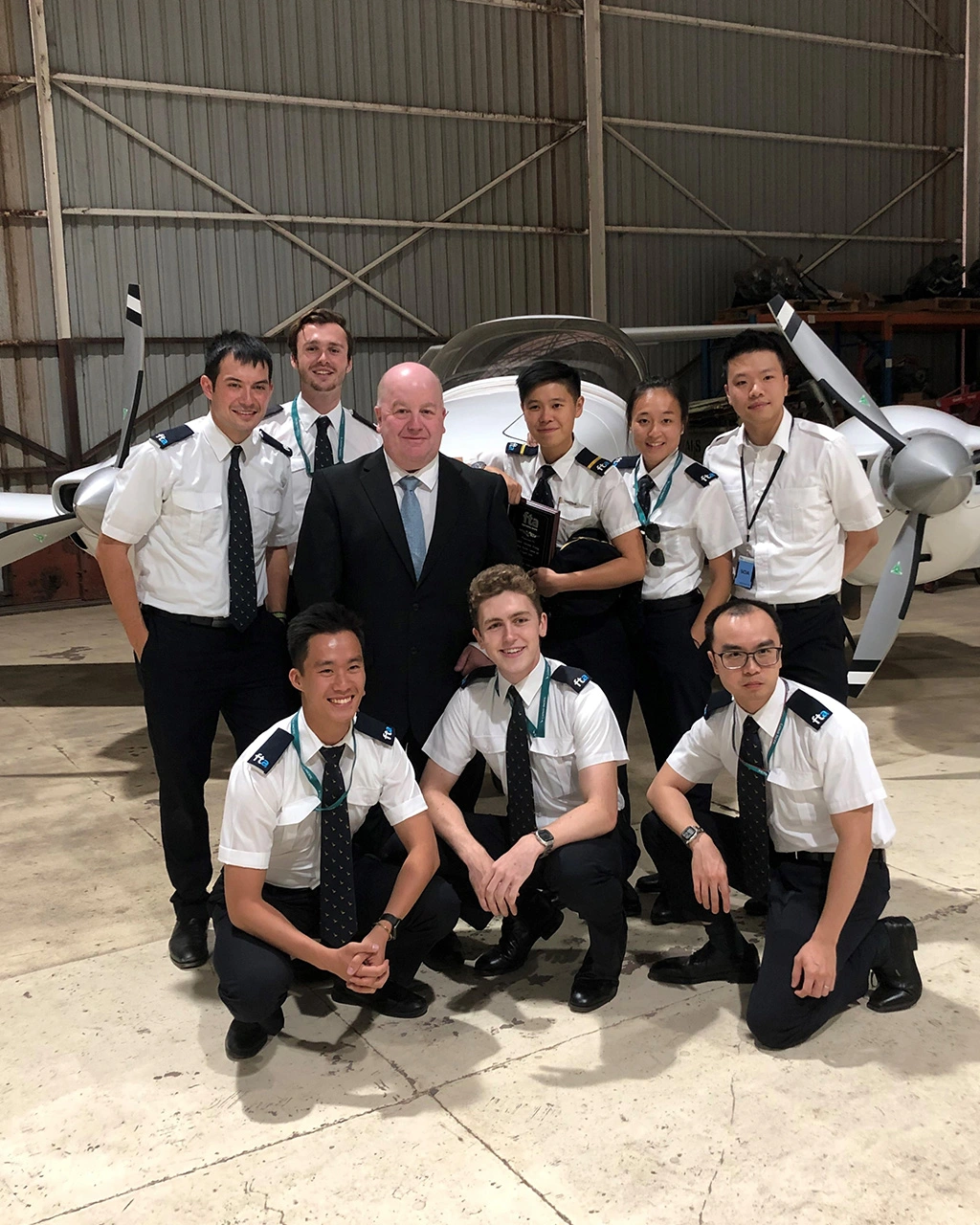
The Secret Weapon for 75 Successful Airline Pilot Interview Students
Discover the secret weapon to airline pilot interview success!
Learn to Fly is working with Senior Captain Darren McPherson from ACS (Aviation Consulting Services) to provide Airline Interview Training, and together we have helped numerous candidates successfully pass their airline interviews over the past 2 years.
These candidates have progressed onto various airlines such as Air New Zealand, Cathay Pacific Airways, Jetstar, Singapore Airlines, Scoot, and Qantas.
They are now flying a range of aircraft types from the smaller Dash 8 and ATR 72 all the way through to larger Airbus and Boeing types including the A330, A350, B747, B777 and B787.

Future Cadet Pilot Program (FCPP)
Now is a great time to get into the aviation industry. If you are hoping to potentially become an airline pilot by progressing through an Airline Cadetship Program, Learn to Fly can help you. Our Future Cadet Pilot Program (FCPP) aims to successfully equip graduates with the skills, qualifications and experience for any Airline Cadet Pilot Interview. The program will include the following training sessions:
Flight Training
The objective of the training is to give you a good and fair sampling of what flying feels like, as well as an insight into the flight training process.
Airline Interview Training
Darren McPherson from ACS (Aviation Consulting Services) will teach the interview training. As a Senior Captain at a major international airline with 30 years of experience, Captain Darren will teach you how to best present yourself for your interview. In the session he will thoroughly review your CV. He will also enhance your group discussion skills, human relations (HR) and technical knowledge.
Cadet Pilot Theory
The theory sessions will contain everything you need to know to have the best chance of passing the airline interview. They not only cover basic aerodynamics, but also technical knowledge related to airline operations.
Simulation Training
The training is separated into 2 parts. The first part will be conducted by Flight Experience Melbourne on their 737 flight simulator. You will then complete the second component on Learn to Fly’s state-of-the-art flight simulator
ICAO Aviation English
This component of the course prepares you to pass the ICAO Aviation English test. This is required by most airlines during the interview process
The FCPP has a proven record for airline pilot interview success.
Captain Darren McPherson from ACS – Aviation Consulting Services is our specialist airline interview consultant. He runs our highly successful airline interview courses, which includes the Future Cadet Pilot Program (FCPP) and Airline Interview Coaching Session.
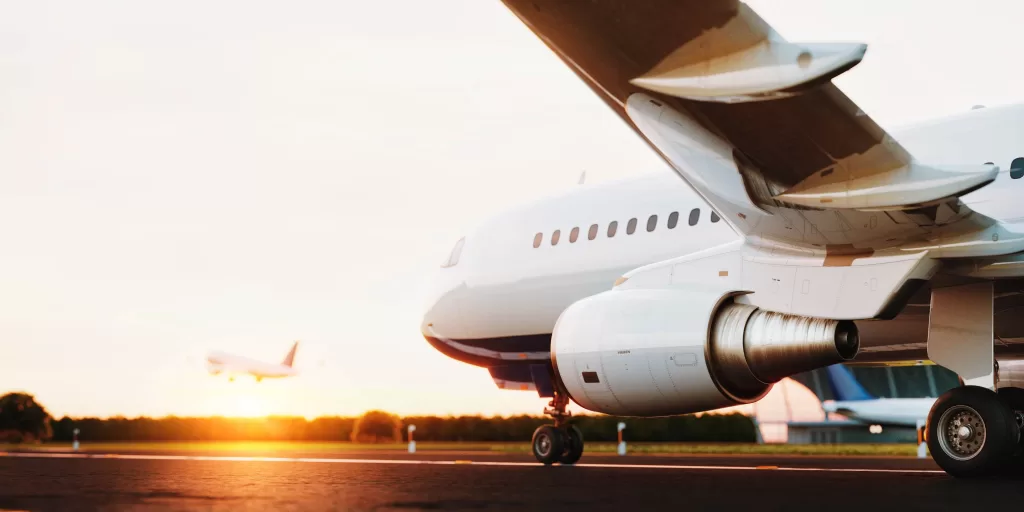
If you are thinking about an airline career, then email [email protected]. You can also visit https://drift.me/learntofly/meeting to book a meeting and school tour.

Tips On How To Pass Pilot Theory Exams
I know nothing grabs your attention like the words ‘exams’ and ‘theory.’ Here I will give you the scoop on what to expect, and provide some tips on how to pass pilot theory exams.
No matter which course you have enrolled in, you need to study – so let’s get pumped for pilot training exam preparation!
Aviation is a complex and sophisticated profession. Airlines are not looking for cowboys and hotshots, but well-rounded, intelligent statesmen and women. The purpose of this post is to remind you of the importance of approaching the exam runway carefully.
I’m in the fortunate position of having completed all seven of my CPL subjects (woo-hoo!). I have already passed my RPL and PPL exams. I’m not here to brag, but instead, offer my experiences to help you.
Let’s separate the post into three sections: Recreational Pilot Licence, Private Pilot Licence and Commercial Pilot Licence.
Recreational Pilot Licence (RPL) Theory Exam
First of all, congratulations on embarking on a dazzling journey in aviation. But before you hit the cockpit, you need to hit the books! Study is the best way to get your career off the ground. The RPL theory and subsequent RPL(A) theory exam covers:
Basic Aeronautical Knowledge
Basic Aerodynamics
Flight Instruments
Human Factors
Navigation and Flight Planning
Meteorology
Air Law
You may find some subjects harder than others, which is why thorough study is important. The exam is multiple choice, and can be completed online. You are allocated 2 hours, and the pass mark is 70%.
To tackle my RPL exam, I set aside two hours of homework each night after class. It allowed me to iron out weak spots and plug up any knowledge gaps. If you have any questions (and you should), or are finding certain areas tricky, always contact your instructor. They are there to help you pass! I would also recommend completing some practice/mock exams beforehand so you get an idea of the exam format.
The exam will only cover things included in the theory syllabus. That said, sometimes a question can have more than one right answer. You should choose the answer that sounds MOST CORRECT. That might sound funny, but it’s not just a matter of recalling information from memory. It’s important that you display your understanding of concepts.
Private Pilot Licence (PPL) Theory Exam
The PPL exam will cover a wide range of navigation-based topics, as well as knowledge learned during RPL. So it pays to brush up on RPL knowledge as well. The PPL exam has 55-60 questions, varying between multiple-choice and single answer. The pass mark is 70% and you are allowed 3.5 hours.
Some questions offer up to 3 marks and require calculations. It’s vital to answer as many of the extra point questions correctly as possible, as they can ultimately make or break your campaign. These questions mostly relate to take-off and landing distances, weight and balance, density, height and pressure calculations.
It’s advantageous to memorise the formulas for these problems as an over-reliance on the flight computer could throw off your answer due to rounding errors. Flight mathematics must be precise. Slight variants will result in an incorrect answer. There’s no room for guesstimates!
You are allowed to take charts and materials into the examination, so you need to be organised. It’s a good idea to familiarise yourself with the region(s) depicted in the charts as they’re based in Sydney. Most navigation questions require you to draw on the chart.
My best advice here is to take it slow. You have a sufficient amount of time to complete the exam. Slow and steady does win the race. Keep it neat. You don’t want your charts to look like a doctors prescription pad! There’s a saying in the military that applies to exams:
“Slow is smooth, smooth is fast.”
I found that taking the AIP (Aeronautical Information Publication) into the exam didn’t help me. I referenced the Visual Flight Rules Guide (VFRG), and that covered all my bases. This is the only exam which allows you to carry the VFRG – which is concise and easy to follow.
Commercial Pilot Licence (CPL) Theory Exams
Since there are seven separate exams for the Commercial Pilot Licence (CPL), I will give a bit of overview advice. The last thing I want to do is overwhelm you. All exams except Aerodynamics, Aircraft General Knowledge (AGK) and Human Factors, require reference materials and tools to complete the questions.
For all exams, a sound knowledge of the basic concepts is paramount as you could get quizzed on anything. The difficulty for each exam can fluctuate wildly, depending on whom you talk to. I found Aerodynamics and Aircraft General Knowledge easy, while others struggled with these.
It’s worth taking other students’ reports on an exam with a grain of salt. Everyone will have their strengths and weaknesses within each subject. The best bet is to be prepared for anything! You can always set yourself a practice exam (what better way to spend a Saturday night!). For my preparation, I tackled each exercise in the Bob Tait books twice, ensuring I scored above 90% in my practice exams before considering myself ready for the real thing.
Preparing for exams is stressful and tiring. If you’re flying AND studying for your CPL exams, it’s worth reducing your flying time. It sounds like a drag, but this is one case where too much multi-tasking can be your downfall. Use the extra energy to find which study times and locations suit you best. Some work better at home, in the morning – while others may be able to concentrate at school during the afternoon.
For subjects like Navigation and Performance, there are various calculations and chart reading exercises. You will benefit from completing the practice exercises and familiarising yourself with the formulas and formations. Again, it’s important to remember that rounding errors can jeopardise your entire exam.
Conclusion
To conclude, all exam success relies on sound study. Practice, be prepared and remember to take your time. Slow is smooth. There are no shortcuts to aviation knowledge, and being ready for all-weather is a good rule for life and an even better theory for flying. Good luck!
Thank you to student pilot Howard Lau for contributing these tips on how to pass your pilot theory exams.
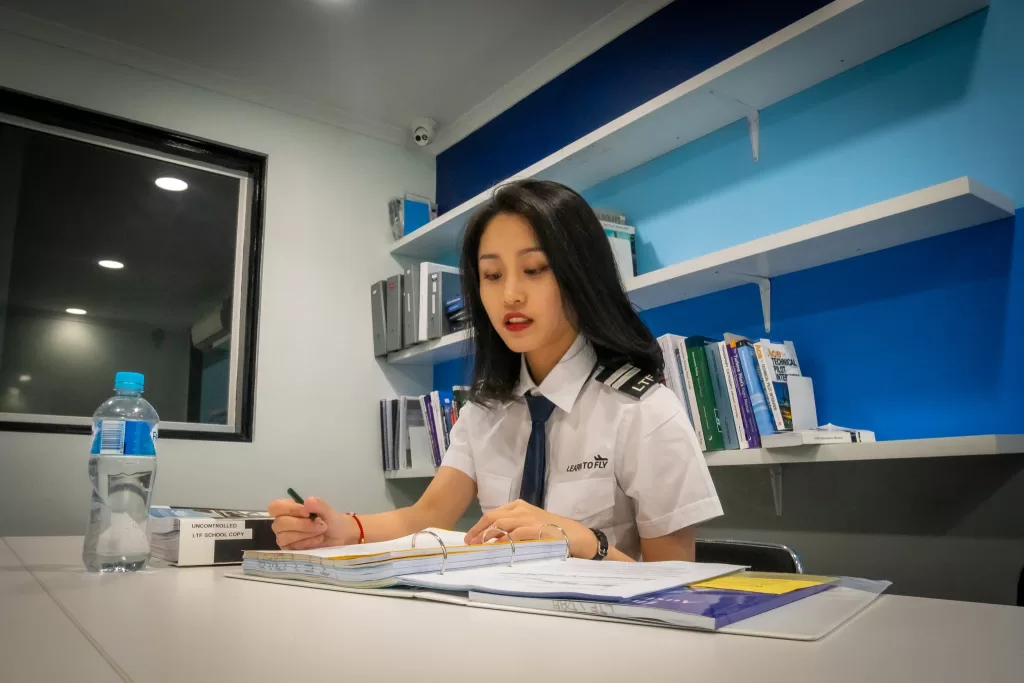
Chat to one of our flight training specialists to get your pilot training off the ground. Email [email protected]/en or go to https://drift.me/learntofly/meeting to book a meeting and school tour.
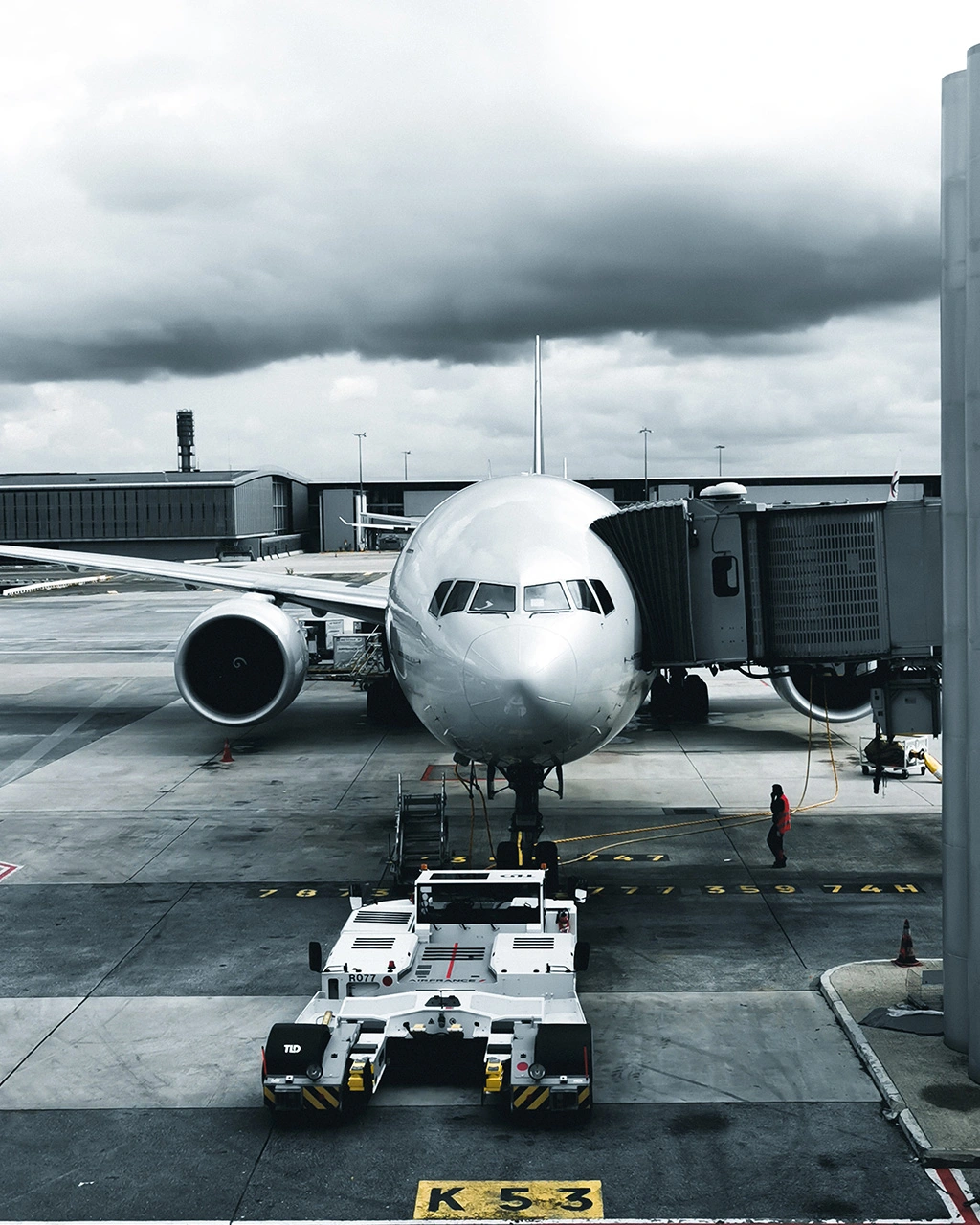
Airline Pilot Career Pathways
Are you serious about an airline pilot career? In this blog we discuss some of the airline pilot career pathways available to you.
Airline Cadet Pilot Pathway VS General Aviation / Direct Entry Pathway
There are two main airline pilot career pathways to consider. Both can lead to an equally fulfilling career as an airline pilot. These are via an airline cadetship or via General Aviation training leading to a direct entry application.
Cadets will need to pass several rounds of exams, including a group interview and aptitude test. Direct entry pilots will require some prior flying experience, often accumulated through work as a flight instructor or charter pilot. Both methods of entry are standard, and each has its advantages and challenges.
General Aviation / Direct Entry Pathway
For this pathway, students need to graduate from a flying school and obtain their Commercial Pilot Licence (CPL). This is the minimum qualification to work as a pilot. This can also be obtained in conjunction with a Diploma of Aviation or Bachelor of Aviation qualification.
After graduating, the next step is to gain flying hours whilst working. This can be done a number of ways. Some of the more common roles are instructing, scenic flights, parachute drops or single-engine charter. You can then advance to multi-engine aircraft and build more hours, again through similar opportunities such as instructing.
Different airlines have different hourly requirements, and these are far lower than what they were even 5 years ago.
Cadet Pilot Pathway
An airline cadetship usually involves an intense full-time course during which the cadet must also gain the minimum flying hours. Following this, successful cadets are offered a role with their respective airline.
Entry Points
Cadet Pilot Program
Many airlines now offer cadet pilot programs. There are many benefits, one of which is that airlines can teach pilots according to their protocols. This means they can iron out unaligned habits formed at flying schools. You can technically apply for a cadetship with no flying experience at all. Having said that, we strongly recommend having some flying experience prior to applying.
As there is such high demand for pilots, some airlines will even provide free training for their cadets. The cadetship path can be especially beneficial to students with limited finances.
Out of the two main airline pilot career pathways, the cadetship is the most accessible. But that doesn’t mean it’s easy! Competition for cadetships is fierce, with only a limited number of spaces available.
For example, an airline may receive a thousand applications each year but only select fifty cadets. This means applicants must demonstrate fervent attention to detail, impeccable attitude and dedication that sees them stand out from the rest. The interview process is rigorous and requires a great deal of preparation.
General Aviation / Direct Entry Pathway
Direct entry is the “traditional” pathway to becoming an airline pilot. You obtain your CPL, build hours, and then apply for relevant airline roles. The two most common direct entry options are for First Officer or Second Officer roles.
The airline will determine the minimum requirements for application, and this usually centres around the number of flying hours you have. Obviously, Second Officer direct entry requires less hours than First Officer direct entry.
The benefit of this pathway is that you are applying based on your flying skills and experience, so there are less variables. You won’t find the same level of fierce competition that you see with cadetships. You either have the hours and experience, or you don’t. Having said that, preparing your application well is still very important. It’s still a job interview after all, and the airline will still want to know that you will be a good fit.
The downside to this pathway is time and money. Learning to fly is expensive. Obtaining your CPL will likely take a minimum of 12 months and cost you $70K AUD at the very least. Only then will you be able to start earning money as a pilot. From there, building the hours you need for direct entry takes time.
Airline Pilot Career Pathway Job Prospects
Cadet Pilot Program
Past statistics suggest that between 85 – 90% of cadets go on to graduate. According to data, there is a 95% chance of a cadet pilot flying for the airline that trained them. Markets can fluctuate, however, and there are often outside factors that can affect employment.
Your level of success will always will always be determined by your level of dedication, aptitude, safety and attitude. Some airlines have been known arrange extra training so a cadet can meet requirements, but that is not a given. It’s not a free ride, and some would say that cadet training requires you to exceed expectations far more than a standard flight training process.
General Aviation / Direct Entry Pathway
The aviation industry is currently booming, with a high demand for pilots around the world. It’s now common for pilots in Australia to be poached by overseas airlines with salary packages they can’t refuse.
Major airlines such as CommutAir, SkyWest Airlines, Qantas, Air New Zealand, Cathay Pacific, Singapore Airlines and Scoot are hiring via direct entry. More recently, we have seen a huge reduction in the minimum hours required for both First and Second Officer direct entry applications.
In addition to this, many flying schools are hiring junior instructors as full-time pilots. That means that gaining a job post graduation is very much achievable, as is being able to build hours while you work.
Regardless of which of the airline pilot career pathways you choose, it is ultimately about skill, endeavour, performance and above all, attitude. After all, being a pilot isn’t just about flying machines; it is also about carrying people.
Captain Darren McPherson from ACS – Aviation Consulting Services is our specialist airline interview consultant. He runs our highly successful airline interview courses, which includes the Future Cadet Pilot Program (FCPP) and Airline Interview Coaching Session.
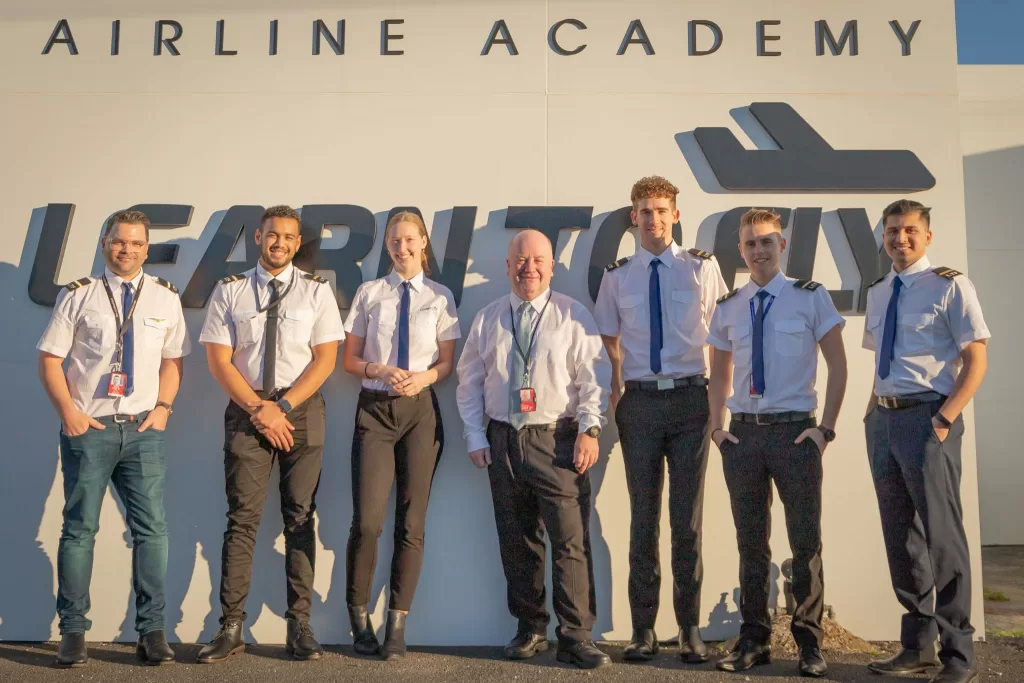
If you are thinking about an airline career, then email [email protected]. You can also visit https://drift.me/learntofly/meeting to book a meeting and school tour.

Common Pilot Phrases: What Are The Pilot Phrases You Should Know?
Have you listened to the way a pilot speaks over the intercom? Can you make out everything they say? ICAO Aviation English is the universal language of aviation. It is used by pilots, air traffic control, aircraft maintenance engineers, technicians, airport crew, and airline and cabin staff. Like any language, there is a lot to learn, but knowing it well will make you a far better pilot. So what are some of the most common pilot phrases that you should know?
Clear Communication
Passing the radio communications exam is compulsory for all trainee pilots. A pilots role is to be fluent and knowledgeable in the various technical words and abbreviations. A pilot who can respond swiftly and accurately with an air traffic controller will significantly reduce the margin for error. In the air, mishearing can lead to a big mistake.
Some of the worst plane disasters occurred with confusion from the pronunciation of certain words. A pilot must not just break through the sound barrier, but the language barrier as well.
The Phonetic Alphabet
The NATO spelling alphabet that you may already know (Alpha = A and Bravo = B) was first developed by the International Civil Aviation Organisation (ICAO) after World War II. Like all languages, the phonetic alphabet can differ slightly around the globe. Certain Scandinavian countries have altered letters and added symbols. Some words in the NATO alphabet are spelt differently to assist with international pronunciations.
For example, ‘Alfa’ is spelt without the ‘ph’ because some European languages would not pronounce it as an ‘f’. ‘Juliett’ is given an extra ‘t’ for similar reasons because, in French, with Juliet a single ‘t’ is silent.
Common Pilot Phrases
AFFIRM
Don’t believe everything you saw on Top Gun! Pilots don’t say “affirmative” for ‘yes’ – the correct term is “AY-firm”.
APPROACH
A plane coming into land.
MAYDAY
This is one you never want to use. It’s the distress call for emergencies, such as a complete engine failure. It comes from the French ’m’ aidez’, meaning ‘help me.’ When in trouble, a pilot will say it three times.
MEL
Minimum Equipment List. This means a part of the aircraft has malfunctioned but is not of vital importance to the flight.
PAN-PAN
This is the next level of distress down from ‘Mayday’. Apply it situations which are severe but not life-threatening. Pan-pan originates from the French word ‘panne’, meaning a breakdown. Like ‘Mayday’ it is said three times at the start of a call.
ROGER
Contrary to popular belief, not all men who work in aviation are called Roger. This code-word confirms the pilot has received a message but not yet complied.
SQUAWK
To squawk is to set your transponder (the device for receiving a radio signal) so that your location can be identified on radar. Pilots may be asked to ‘squawk Mode – – Charlie’ or ‘squawk ident’, which are individual settings to allow air traffic control to locate a plane.
STANDBY
Meaning “please wait”, this is said when the air traffic controller or pilot is too busy to receive a message.
WILCO
An abbreviation of “will comply”, meaning the message has is received, and the pilot will comply. The phrase ‘Roger Wilco’ has made its way into more popular use, but technically, the ‘Wilco’ part is the more important.
So, read up on common pilot phrases! Then combine them with clear pronunciation and eager listening skills, and you are clear for takeoff.
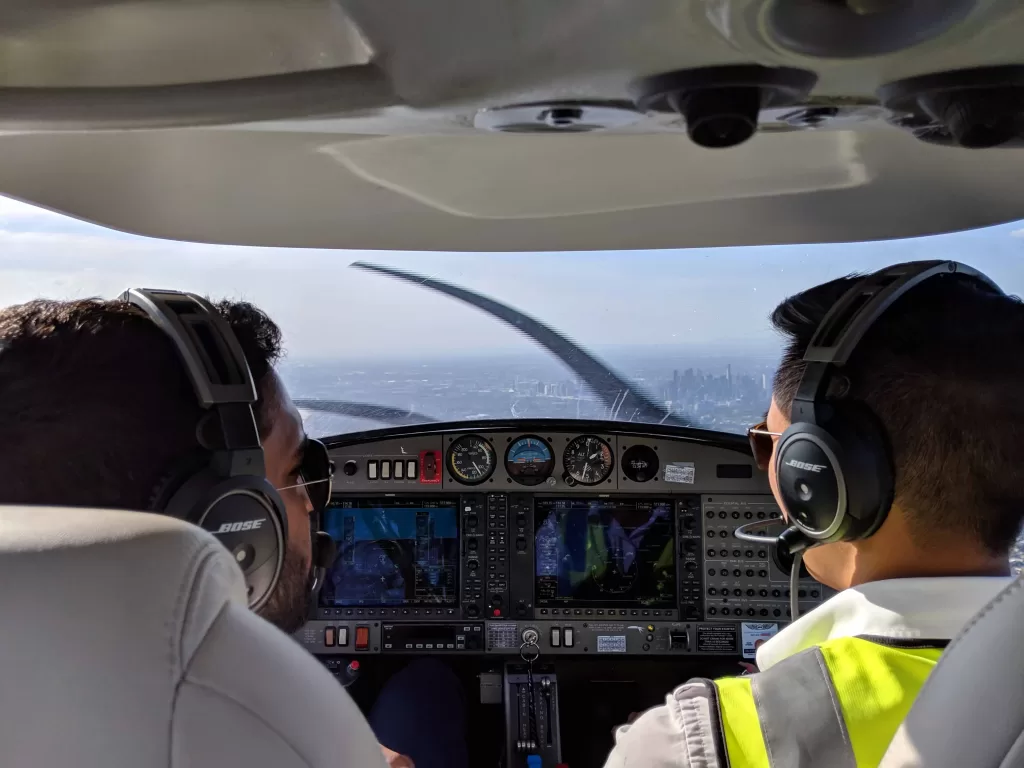
For information on our flying courses, email [email protected]/en or go to https://drift.me/learntofly/meeting to book a meeting and school tour. You can also get more handy flying tips by clicking below and subscribing to our YouTube channel!
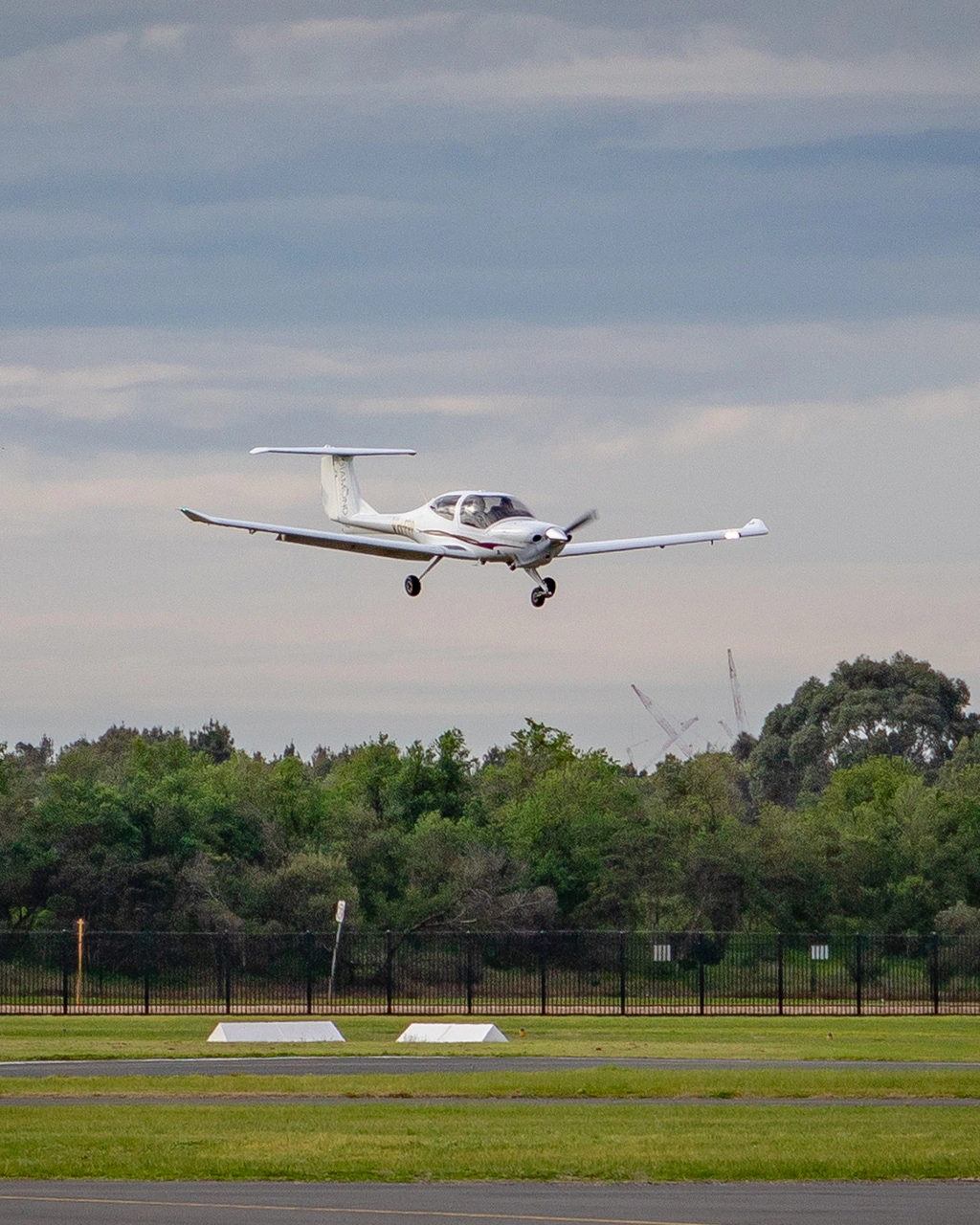
A Successful Forced Landing: Case Study (Part 2)
The case study of the successful forced landing has proved that other than having the tremendous flying experience, pilots need to be determined and make quick decisions.
Forced landings are simulations that we do when we are down to 500 feet and when we punch the power and overshoot; however, in reality, if your engine fails, you are literally flying the final 500 feet to the ground without training. The instructor did have the fortune to go through specialised forced landing training and he shared some excellent tips to students.
How do you sustain the seat crash tolerance?
According to the Federal Aviation Administration (FAA) regulations, aircraft that are manufactured before 1987 only require a seat crash tolerance of 9Gs in all directions while for others all seats have to exceed that tolerance.
A Cessna 172R has crashworthiness of 26Gs. As the impact in the incident was actually around 5–6Gs, it can be easy to exceed limitations if you botch something.
Tips for a successful forced landing in this aircraft:
To keep the cabin intact during the impact, you do not only need to fly at the minimum controller airspeed, but also use dispensable parts of the airplane to take the impact for you, such as the wings, landing gears and even the engine.
The crash energy goes up with the square of airspeed and using other parts of the airplane structure can help reduce that crash energy safely.
If you were to use trees as the instructor did in this case study, you should aim to impact the trees as horizontally as possible as that will allow the trees to reduce your forward kinetic energy.
How do you deal with engine failures?
A crucial takeaway from this case study is that not all engine failures are the ‘propeller stops spinning’ scenario that you might see in a textbook.
Most engine failures are in fact partial power loss. Some partial power losses can sustain level flight but in the case of the pilot in the case study, he didn’t have the power to sustain level flight, so essentially he was in a slightly powered glide.
How do you measure the best glide speed?
Tips:
If your flight is too high, then fly faster, which will allow you to be less efficient and fall faster. You just have to have the technique to slow it down.
If you want to lose altitude and you are not on final approach on a forced landing yet, it is advisable to pitch the nose over to the white arc speed in order to lose height even quicker.
In the end, you have two options, either side-slipping or S-turns or even a combination of both.
Do not be timid on S-turns! The instructor in this case study flies extremely wide S-turns, which is the only way for them to be effective.
Hopefully, this entry can inspire you to get up and practice some forced landings and consider that the last 500 feet will be the real make or break moment! Have fun and fly safe!
To learn more about forced flying techniques, head to Forced Landings: An Alternative Technique. Thanks to LTF student pilot Howard Lau for contributing this case study on completing a successful forced landing.
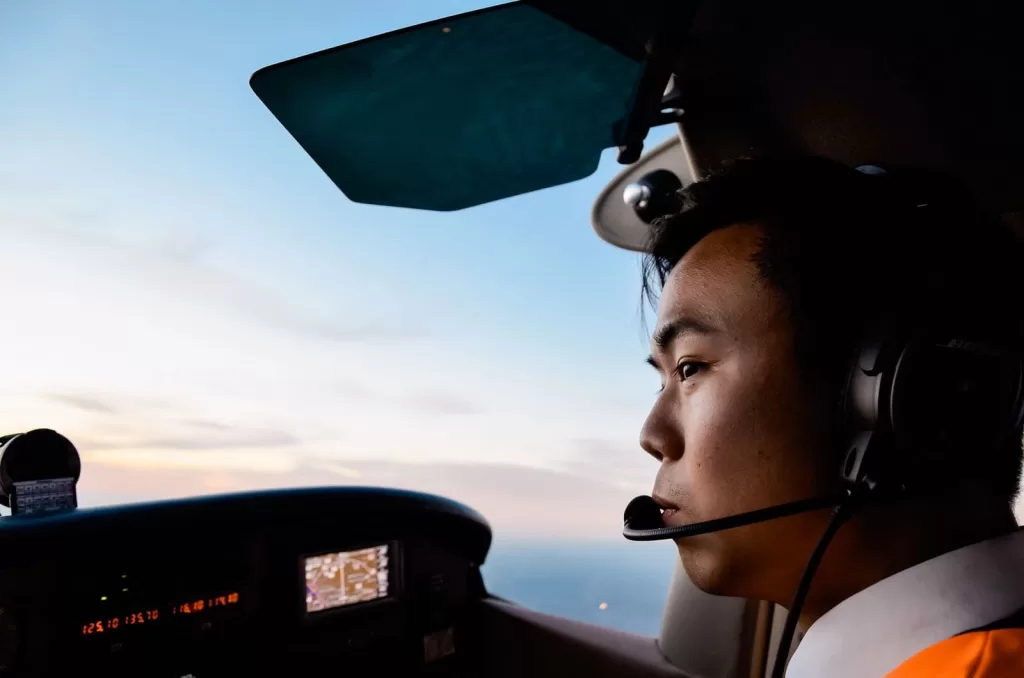
For information on our flying courses, email [email protected]/en or go to https://drift.me/learntofly/meeting to book a meeting and school tour. You can also get more handy flying tips by clicking below and subscribing to our YouTube channel!
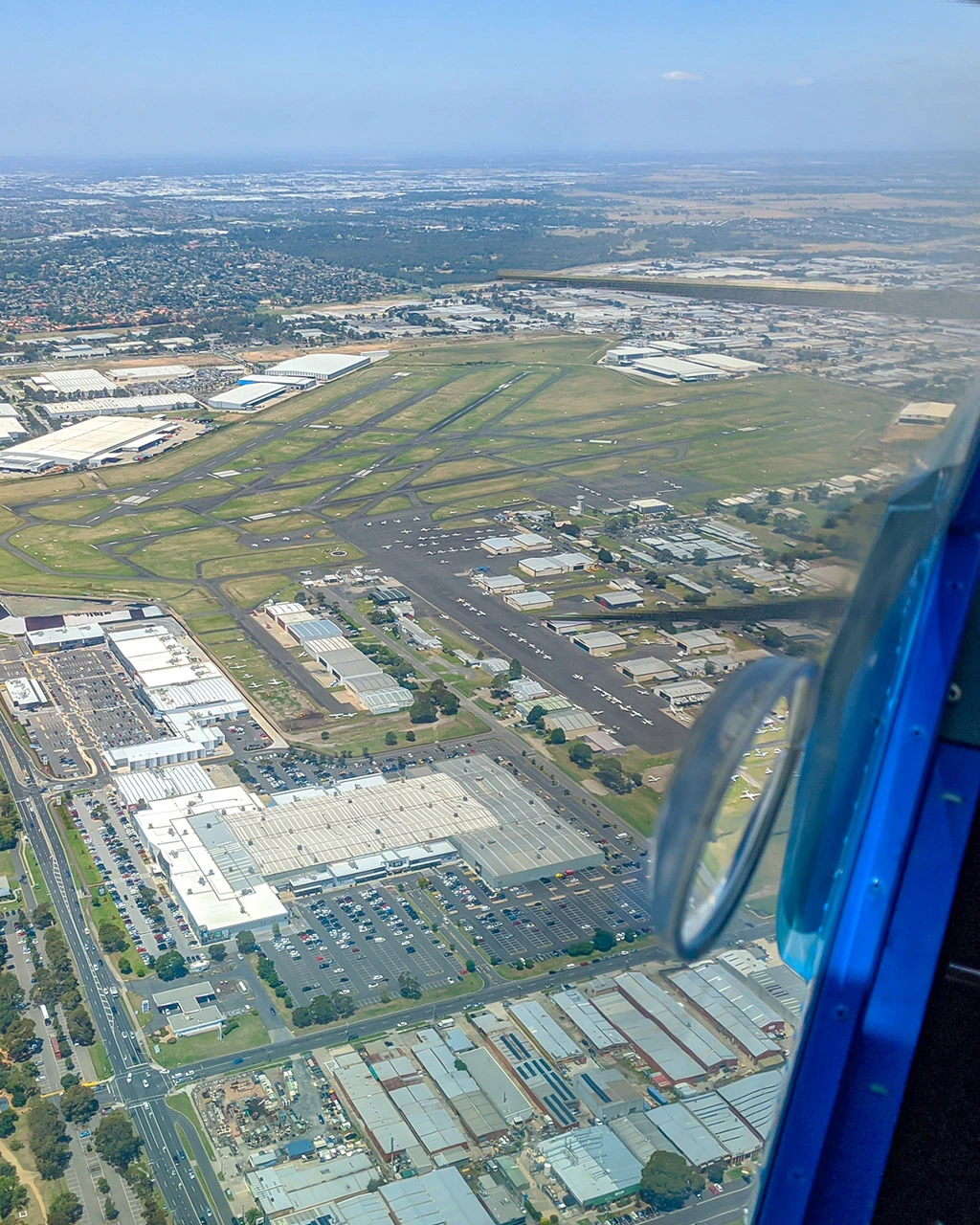
How To Execute A Forced Landing: Case Study (Part 1)
The man who sent me on my first solo flight in Hong Kong is full of wisdom and has a sense of humour in the cockpit. He shared a flying experience involving a forced landing in a Cessna 152 with me. I want to share this story with you now as a case study along with tips that will guide you on how to execute a forced landing.
This is his story:
Tolo Harbour, Hong Kong, Approximately 2,800 Feet
On the 26th of February, like any other Sunday, I was sitting in the flight operation office in Hong Kong. Little did I know, out there in the Tolo Harbour, a Cessna 152 was about to be at the centre of a whirlwind adventure involving a forced landing.
At the time, we were doing some pre-examination exercises for students, and we had just turned around towards the Shek Kong Airfield. The engine suddenly ran rough, so I pulled the carb heat out and went full throttle, but it did not change the situation.
I was thinking, “Is this my lucky day? Alternatively, a bad day?”. But really, you don’t have time to think or even pray.
Decision Time
A decision had to be made in around 10 seconds. I had 3 options.
1. Go back to Shek Kong, but in that case, I would fly over Tai Po and many buildings.
2. Fly over to the dam wall (of the Plover Cove Reservoir), but it was 11.30am on a Sunday which means many people were there.
3. Fly towards Three Fathoms Cove.
I thought of those three options and discarded the first two options as they were too populated. Either way, today was the day for learning how to execute a forced landing.
Altitude
When you are at that height you will have less than two minutes before ground impact. I was thinking, “if I drag on too much or if I drag on too long, I wouldn’t have the altitude to execute my approach.”
At this point, I still didn’t want to believe that I had to do a forced landing, and I always wanted to revive the engine and glide back into the airfield. I asked ATC for approval to climb above the vertical limit, and they said, “Sure, no problem.”
The Engine Will Not Revive Itself. Decision Time Again.
You can’t spend too much time hoping to recover the engine. Run your checklists and if it isn’t working, make the decision to execute a forced landing.
The rule of the thumb here is to get a plan and stick with it. If you keep switching plans and your aircraft keeps descending, you will eventually limit your options for the forced landing too much, which is more likely to have serious consequences.
Forced Landing: Into The Trees On The Golf Course!
So how did I manage to land in the trees of the golf course without injuries? And moreover, why did I choose the trees?
I was trained to approach a field with an escape route to overshoot and go around in case something miraculously happens to the engine. The most important thing is that you have a technique to slow down. I can do S-turns to bleed off the height and shorten the landing distance, and side-slipping helps as well.
I was at 70 knots, nowhere near 60, and I was out of options at the time. If I dived the aircraft into the golf course, I would gather up speed, which may result in a tumble and getting wet. I spotted a relatively flat spot in the trees. I went for it. With full flaps, I hit the trees at around 45 knots, close to the minimum controllable airspeed.
Intentionally, I aimed between two branches so the wings would hopefully lessen the impact. And it did. The left-wing was broken off, but we walked away unhurt.
Head to Part 2 of this case study to see the lessons learnt and gain some tips on how to execute a forced landing. Thanks to LTF student pilot Howard Lau for contributing this case study on how to execute a forced landing.
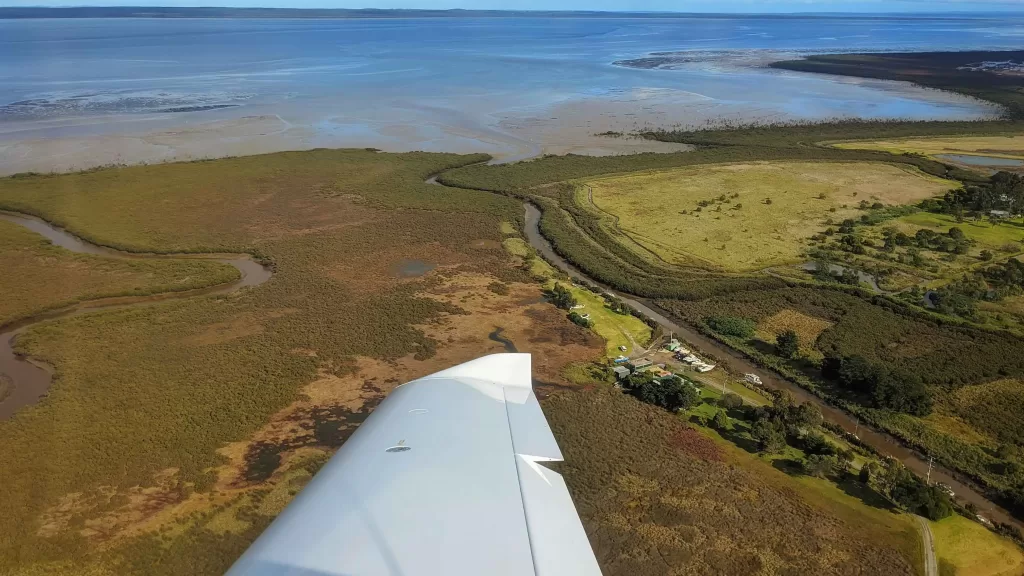
For information on our flying courses, email [email protected]/en or go to https://drift.me/learntofly/meeting to book a meeting and school tour. You can also get more handy flying tips by clicking below and subscribing to our YouTube channel!
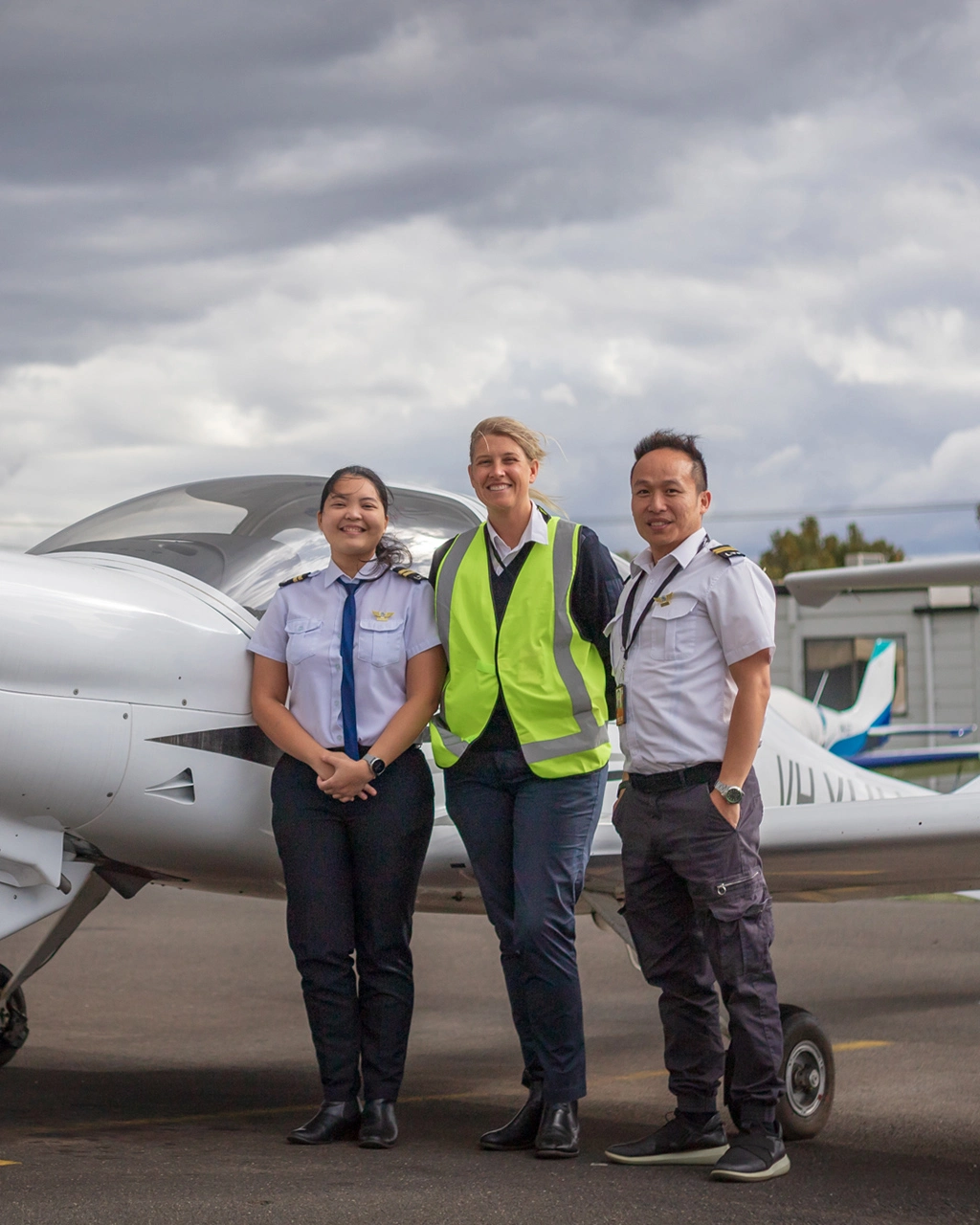
The Best Flight Instructors Make The Best Pilots
Flight instructors are the backbone of all successful pilots, whether that’s for a career or just flying recreationally. One of the most important considerations you can make when choosing a flight school is finding the one with the best flight instructors.
Here at Learn to Fly, the best flight instructors are training some of the brightest future pilots in Melbourne. Students are assigned primary and secondary flight instructors. However, this can obviously be flexible based on student progress and training requirements. We have a wide range of flight instructors with diverse backgrounds and varied areas of expertise for this very reason.
The best flight instructors will always be the ones you’re able to build a productive and trusting work relationship with. Regardless of how far into your aviation career you are, your instructor should always be someone you can rely on for guidance, assurance, advice and improvement.
Here are five great qualities all aviation students can expect from the right flight instructor:
They Have A Diverse Range Of Experience
Based on CASA guidelines, there are 3 levels of flight instructor for General Aviation. There are Grade 1 and Grade 2, and Grade 3 – with Grade 1 being the most senior. Beyond that, you have RA-Aus instructors and also instructors with specific capabilities such as IFR or multi-engine training.
Grade 1 instructors have extensive experience in not only flying, but also in instructing. To achieve that level of seniority, they have displayed their expertise in teaching both students and other instructors. Typically, your primary instructor at LTF will be a Grade 1 instructor.
It’s important to find a flight school that has instructors of all levels, and with a wide range of additional capabilities. But beyond what’s on paper as far as capabilities go, look for a diverse range of experiences. Our instructors come from multiple countries, and from different areas of aviation including airlines, charter and more.
Your Safety Is Their Priority
A large portion of flight training centres on emergency procedures. Stalls, wing drops, forced landings, engine failures, radio failures, and the list goes on! This is why our school standards require instructors to be not just be well-trained, but for safety to be their first priority.
A focus on safety is learned behaviour. A flight school with high safety standards passes this on to their instructors. The instructors then pass it on to you, the student. By treating EVERY safety detail as important – even the small things – bigger saefty issues become less likely.
The best instructors will respond immediately to any situation in which the risk outweighs the learning opportunity. This may mean that an instructor wants you to repeat something when you want to progress. That might be frustrating at the time, but it will make you a better pilot.
Beyond our instructors, our Chief Flying Instructor (CFI) and Safety Manager actively supervise all flight training operations and consistently check training records and documentation. This ensures compliance with Standard Operating Procedures (SOPs) and means students can always feel safe while flying!
They Bring Out The Best In You
What kind of learner are you?
Do you learn visually or kinesthetically?
Do you like to push yourself out of your comfort zone or take things step-by-step?
Are you goal orientated, or do you prefer to enjoy the ride?
You may not yet know the answers to these important questions. The best flight instructors will help you to learn these answers, and will be able to adjust their teaching style to bring out your best. Sometimes it becomes apparent that your primary or secondary instructors may not be best suited to your learning style. This is another reason why having a diverse range of instructors at a flying school is important.
Aside from the dos and don’ts of flying, an outstanding flight instructor will teach you the right attitude towards managing risks, valuing responsibilities and trusting in your abilities.
They Make You Confident
Confidence and self belief are huge factors when learning to fly. Not everybody is confident in their own abilities, or their own knowledge. It’s a very different feeling being 3000ft up with an experienced instructor next to you, and being up there alone.
The best flight instructors will help you to trust yourself.
It’s also important to ask as many questions as possible when learning to fly, and you should always be confident asking your instructor anything. Even the questions you may think are silly – because really, there are no silly questions.
The best flight instructors are excellent motivators who’ll help you overcome any self-doubts and boost your confidence. Remember – they were a student once too.
They Inspire You
Your teachers are always a part of your story in life. Whatever knowledge your instructors instill will remain long after they leave your side in the cockpit. And it’s this knowledge that you will often look to as your inspiration to fly.
Sometimes, learning can become a chore. You may be struggling to progress past a certain point. You may not find what you’re learning at the moment as exciting as some other areas. Let’s face it – some of that theory stuff can drag – especially when you just want to get airborne!
Whether you want to fly for fun or for a career, a great instructor will inspire your aviation journey. They’ll make you remember what drew you to flying in the first place, and inspire you to fly further and higher.
Find your perfect flight instructor at Learn To Fly. Email [email protected] or visit https://drift.me/learntofly/meeting to book a meeting and school tour.

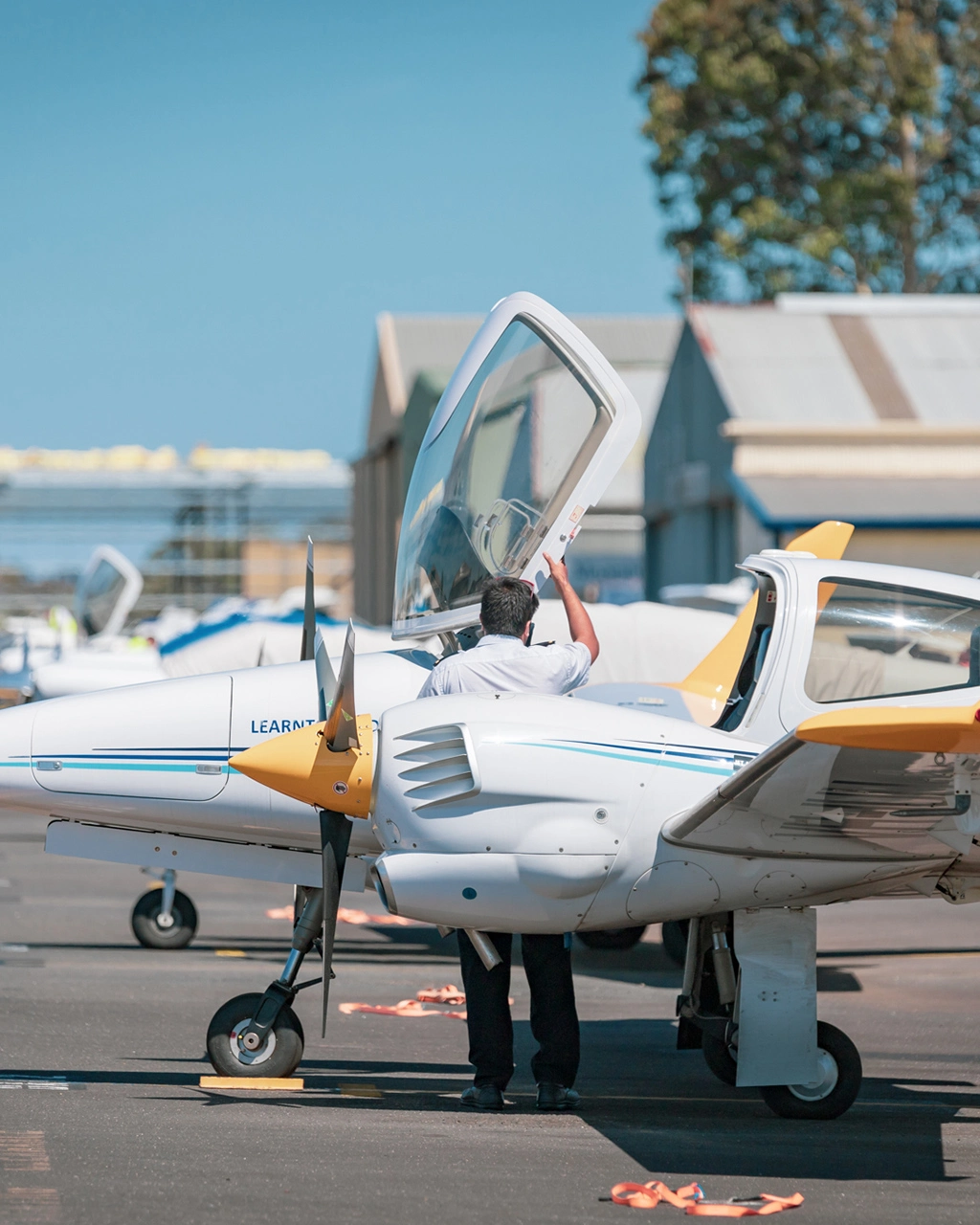
Learn To Fly Becomes The First Diamond DA42 Flight School In Victoria
We are proud to announce that we have ordered the Diamond DA42 aircraft, making us the first Diamond DA42 flight school in Victoria, Australia. The DA42 is an elite twin-engine aircraft equipped with a Garmin G1000 avionics system, produced Diamond factory in Ontario, Canada.
The DA42 will be the first new major multi-engine aircraft type introduced into LTF’s fleet since we started flying the Piper Seminole. This acquisition provides us with the ability to replace our older, less efficient aircraft and deliver better quality training. We believe students should have as many options as possible when it comes to flight training.
Training at a Diamond DA42 flight school in Victoria has many benefits for students. Here are our top five reasons why you should train in a DA42!
1. Amazing Specs & Performance
The twin-engine Diamond DA42 truly is a next-generation aircraft – it combines all the newest innovations to create a capable, robust aircraft that turns heads. The DA42 boasts carbon fibre construction, FADEC controls, glass cockpit with Garmin G100, and a 1000 nautical mile range.
There are very few planes that perform well enough to fly comfortably across the Atlantic at a lower altitude as well as through varied terrain. The Diamond DA42 does that in its sleep.
You will get to enjoy every moment flying, thanks to the panoramic wrap-around canopy and generous rear windows.
2. Advanced Avionics
The Garmin G1000 avionics system is complimented by several avionic options. These can suit almost any need and are usually only available on much more expensive aircraft. The advanced avionics and day and night weather capability offered by the aircraft means that a full variety of flying experiences await.
3. Safety
At Learn to Fly, safety is our priority. It’s only fitting that Diamond aircraft has one of the strongest safety records of any light aircraft in the general aviation industry today. Furthermore, aspiring airline pilots and private pilots alike can enjoy the impressive cross-country performance and safety of the DA42 twin-piston without the additional costs often associated with having a second engine — fuel, maintenance, etc.
4. Environmental Innovation
The DA42 is powered by with eco-friendly, fuel-saving and powerful engines. These engines have far less fuel burn than conventional engines. This dramatically reduces the flying costs for students.
5. Obtain Your Multi Engine Class Rating or MECIR
Thanks to the Diamond DA42, those hoping to become airline pilots can gain considerable experience with similar flight approaches, procedures, and conditions similar to those encountered by light jets and turboprops.
This makes the DA42 one of the best aircraft options when pursuing a Multi Engine Command Instrument Rating especially.
Learn To Fly Is The Only Diamond DA42 Flight School In Victoria
The purchase represents a new chapter for LTF, with the DA42 becoming a valuable addition to our fleet. It will allow students to complete their Recreational Pilot Licence (RPL), Private Pilot Licence (PPL), and Commercial Pilot Licence (CPL) training on the Diamond DA40 and then smoothly transition onto the DA42 for their multi engine training.
We will be ordering more Diamond D40 aircraft and another Diamond DA42 this year. As our flight training fleet expands, so does our capability to train the next generation of pilots.

Want to learn more about flying with the only Diamond DA42 flight school in Victoria? Email [email protected]. You can also visit https://drift.me/learntofly/meeting to book a meeting and school tour.
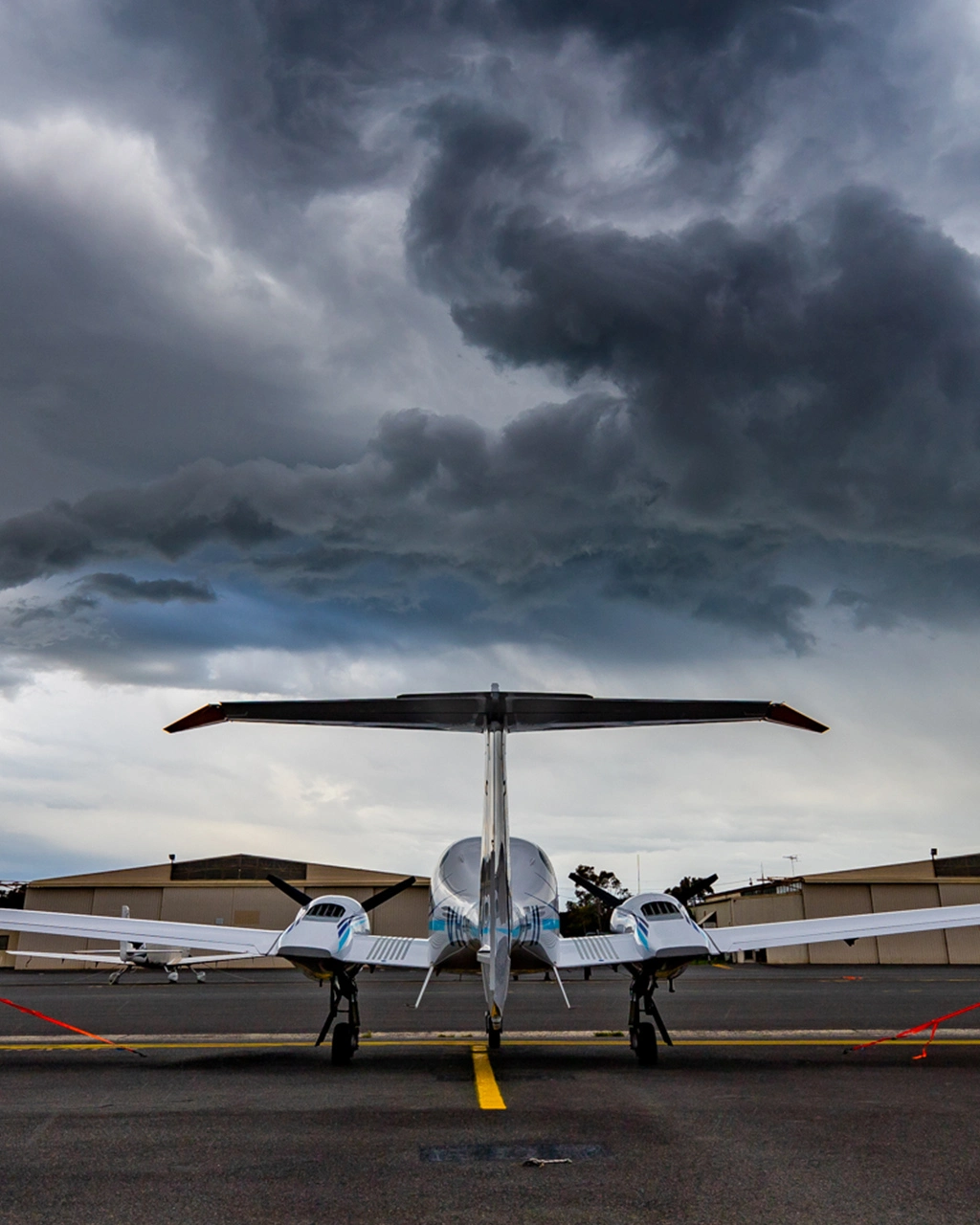
Flying In Marginal Weather: A Student Pilot Experience
Flying in marginal weather with an experienced instructor is a great way to gain experience and build confidence. As an aviation student, you will regularly be placed in unfamiliar situations that test your skill, airmanship and decision making. These judgements could even determine the entire outcome of a flight. It is paramount for all pilots to attain a weather briefing for all matters of flying, including flying circuits.
The 24th of September, 2017, was a definitive learning curb and monumental day for me in my aviation career. What was supposed to be a regular day of circuit flying soon turned into an unforeseen challenge.
The weather was marginal on that day, with gusts up to 20 knots and some showers, as the outer rainbands of a tropical depression were affecting us here in Hong Kong. However, it seemed safe enough to fly circuits at first glance.
Fly with an instructor who is comfortable with flying in marginal weather
This will allow you to test your limitations safely.
After pre-flight, I immediately requested not to be sent out solo due to the weather. Nevertheless, my instructor and I decided that today would be a wonderful opportunity to test my abilities safely under his supervision.
My instructor was comfortable with the conditions; however, we were both aware of a squall line brewing to the south of Hong Kong that could potentially affect us. We calculated that we had at least 45 minutes before the line hit, and we assumed we would be in the clear.
Think beyond the aviation weather briefing
Interpreting the weather does not stop there. It’s vital that you can visualise how the forecast can potentially affect your flight.
Heels to the floor, full power, RPMs in range, Ts and Ps in the green and as the aircraft passed 55 knots; I gently applied backpressure for a smooth take-off.
Almost as soon as I climbed above the tree-lines, the aircraft jolted to the right, and I corrected instinctively. I remembered exactly how to respond during turbulence – focus on holding the altitude of the plane, don’t chase the altitude and most importantly don’t bust manoeuvring speed.
As I rolled out on downwind, the aircraft was thrown around in all directions. My body, with the absence of double shoulder harnesses, was also thrown around alongside as the rain and turbulence worsened. I struggled but managed to get my pre-landing checks complete and radio call out. Despite my headset bumping the ceiling, in such turbulence, one must remember that the priority is always to fly the aircraft.
Fly the attitudes. It will save your life one day!
The final approach was terrible, the turbulence made me delay my full flaps selection and I felt as if the aircraft was being tossed around. It occurred to me that I was way too flat as I flared so I applied more back pressure to establish a landing attitude. Even so, it turns out that I was way too fast. I hit and bounced, holding the landing attitude before touching down once again. The conditions weren’t easing, and I really began to worry.
The rain and turbulence escalated and my headset fell off. The instructor took over as I tried to collect myself. It appeared the squall line on the radar image I saw before the flight was going to hit. I voiced to my instructor and knew that this was going to be a full stop.
Plan for unforeseen delays. Anything can close the runway
Prepared and eager to land, I rolled out on downwind, least expecting flight operations to declare a runway closure for 5 minutes over the radio.
The rain became menacing as I flew at circuit height and held, pelting onto the windshield, and obscuring my visibility. My instructor, however, remained silent to test my decision-making skills for flying in marginal weather.
Waiting for the all-clear seemed like forever. Panic began to set in as I came too close to losing control. “Don’t chase the instruments and hold the attitude,” I reminded myself.
“The runway is now all clear”
Thank goodness. My instructor sprang into action and decided to help me with radios. On the base leg, I set the appropriate attitude for 75 knots and trimmed—I feel very fortunate to be taught how to fly attitudes instead of chasing airspeed, the emphasis on attitude flying by Learn to Fly helped immensely.
Just as I was about to turn final, 75 knots plummeted to only 65 and I sank like a rock. I just had a wind shear of a 10-knot loss. Immediately I applied full power and performed a go-around.
On final approach, I focused on just flying by feel. The landing was hard; however, being back on the ground was all that mattered.
“A superior pilot uses his superior judgement to avoid situations which require the use of his superior skill” – Frank Borman, NASA Astronaut, Commander of Apollo 8
Fifteen minutes after landing, the squall line came through with heavy thunder and rain. It was at this moment I realised the outcome of today’s flight was merely a testament to my good judgement under pressure in a difficult situation. My instructor and I were both safe after I made the decision to call it off. It reiterated to me that as a student, we have the right to make a no-go decision! Because despite embracing every ounce of optimism, even for the simplest of tasks, it won’t change the weather outcome.
This flying in marginal weather experience strengthened my decision-making skills and confidence as a pilot. Contributed by LTF student Horace Ho.

For information on our flying courses, email [email protected]/en or go to https://drift.me/learntofly/meeting to book a meeting and school tour. You can also get more handy flying tips by clicking below and subscribing to our YouTube channel!
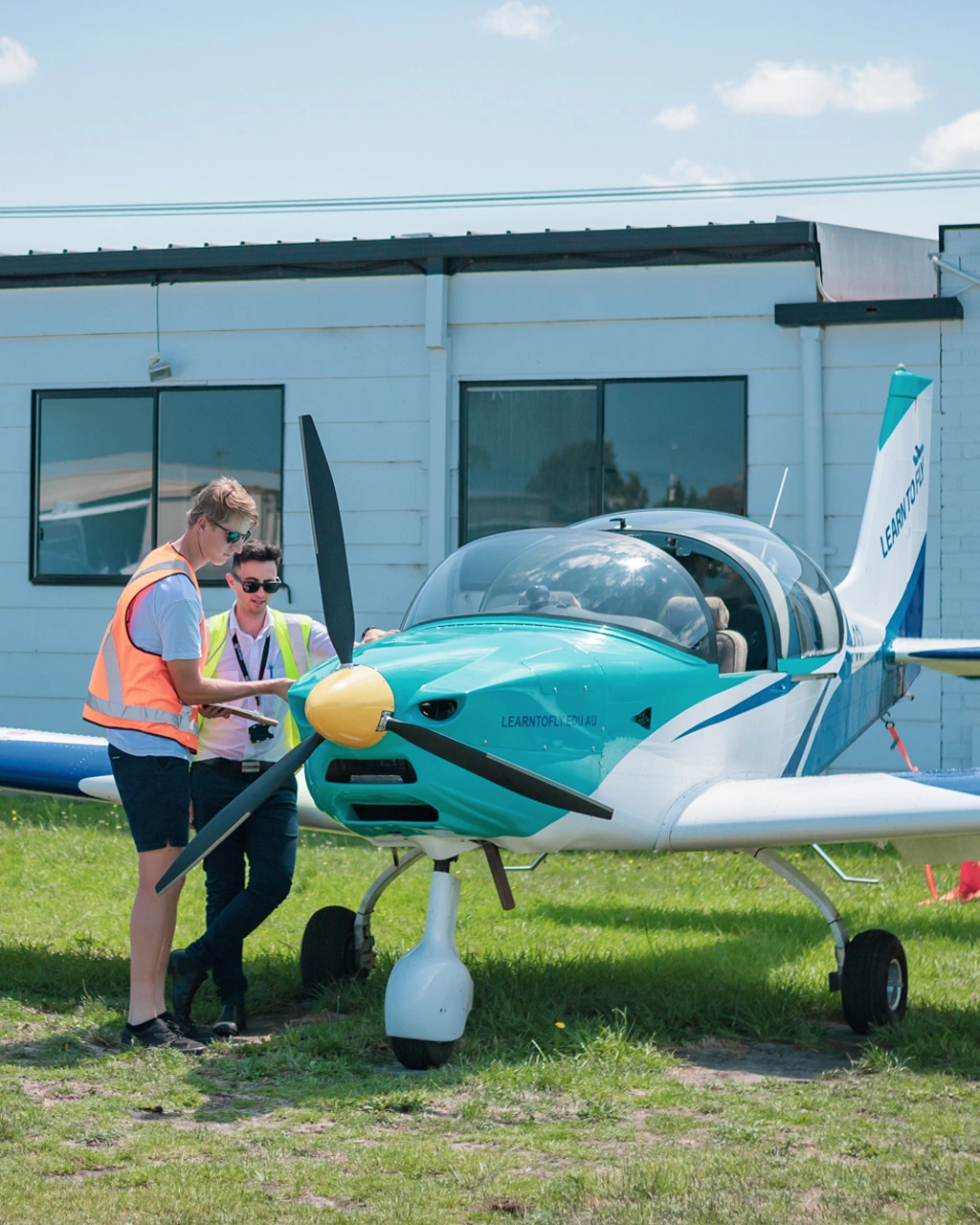
Passing The Recreational Pilot Licence (RPL) Flight Test
Every professional pilot once undertook and passed their Recreational Pilot Licence (RPL) flight test. You’ve completed your theory and your flight training, and your instructor has told you that you are ready. But what should you prepare for in order to pass the test with flying colours?
On the day of the test, the CASA-approved testing officer will sit with you and run through how they will be grading you. It may seem daunting, but don’t stress, going for and passing your Recreational Pilot Licence flight test really isn’t as scary as you make it out to be. Plus, it’s all based on knowledge and skills that you have already demonstrated.
In-flight, your testing officer will want to see how you can demonstrate the following:
1. Steep turn through 360 degrees and back onto the original heading
The best way to do this is to make sure you give a thorough lookout to ensure you are in the clear before the turn. When you’re ready, hold the required amount of back pressure on the control stick so as to stay more or less the same altitude or level out in anticipation as you come back upon your original heading.
2. Stall recovery
For this part of the test, your testing officer will want you to demonstrate stall in various configurations. Make sure you remember the HASELL checks—Height, Airframe, Security, Engine, Location, Lookout—and know how to identify the symptoms before entering a stall.
Your instructor may also ask you to demonstrate how to recover a stall with a wing drop. If you make sure to use rudder rather than the ailerons, in the opposite direction of the dropped wing, you’ll be fine!
3. Forced landing
An integral part of flying – and your responsibility – is to be prepared for anything. To make a forced landing successfully, maintain control of the aircraft and select the suitable field. It is important to carry out all emergency checks. Conduct the passenger brief and mayday call, and always make sure to reassure the “passengers” that you are a trusted pilot and have been trained to handle emergency situations.
4. Instrument flying
The testing officer will want to see your demonstrated ability to fly on instruments alone under the hood. To do so, ensure you stay within the +/- 100 of the requested altitude and +/- 10 of the requested heading.
5. Circuit flying
The final part of passing your RPL flight test will have you demonstrate how to fly a squared circuit pattern and control your speed and altitude when doing so. Make sure you can also land the plane with different approach configurations, and manage engine failure after take-off and in the circuit.
Remember your inbound radio calls as you return to Moorabbin Airport’s control zone, and congratulations, you’ve completed the test.
After passing the RPL flight test and obtaining their RPL, students are qualified to fly within 25 nautical miles of the departure airport and carry passengers, during daylight in good weather (VFR) conditions.
Remember that every professional pilot was once a student, itching to achieve their next milestone. Bombarding their flight instructors with questions about how many flying hours it would take for them to reach their First Solo, Training Area Solo, RPL, PPL and finally, CPL.
However, we know that while flying itself is a great adrenaline rush, you shouldn’t be in a rush when learning and attempting your exams. If you mess up any part of the RPL flight test, remember that it won’t be the end of the world. You will always be able to have another go.

For more information on our RPL course, email [email protected]/en or go to https://drift.me/learntofly/meeting to book a meeting and school tour. You can also get more handy flying tips by clicking below and subscribing to our YouTube channel!
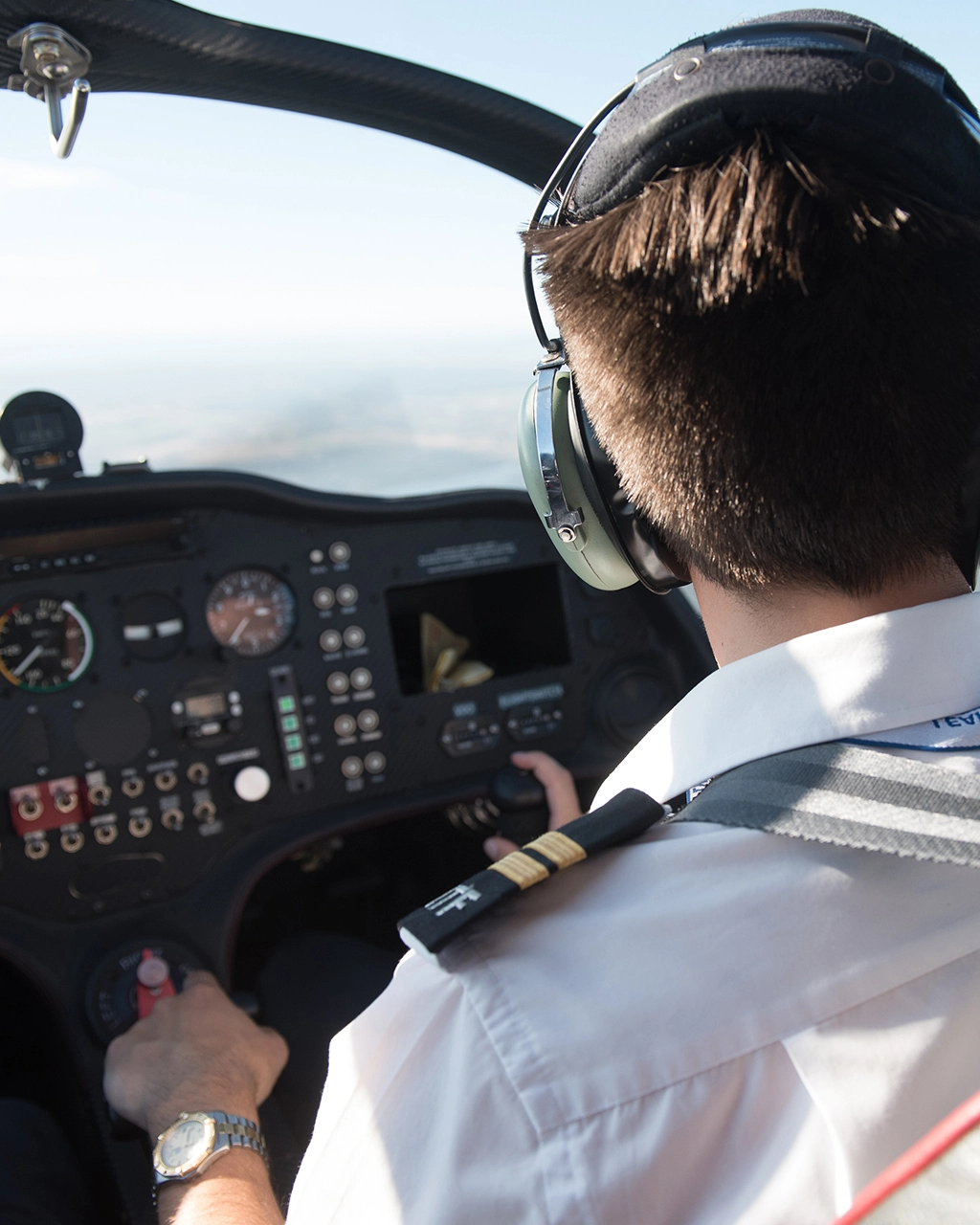
Aircraft Forced Landing Techniques
A situation that requires a forced landing is something that most pilots would rather not experience while flying. But the reality is, that while uncommon, it could happen at any time. It’s a pilot’s job to be prepared. Like anything, practice makes perfect. In this blog we look at aircraft forced landing techniques.
To complicate things a little, there are a couple of different aircraft forced landing techniques a pilot may be instructed to follow. Knowing them all gives you more flexibility to make the right decision should the need arise. Lets take a look at both the traditional and alternative methods.
Traditional High Key / Low Key Forced Landing Technique
The High Key /Low Key technique is the method traditionally taught in most civilian flying schools across the world. This technique depends on your judgement of the trajectory of the flight in order to hit 1500 feet by your low key position, which is normally abeam your IAP (Initial Aiming Point) on a downwind.
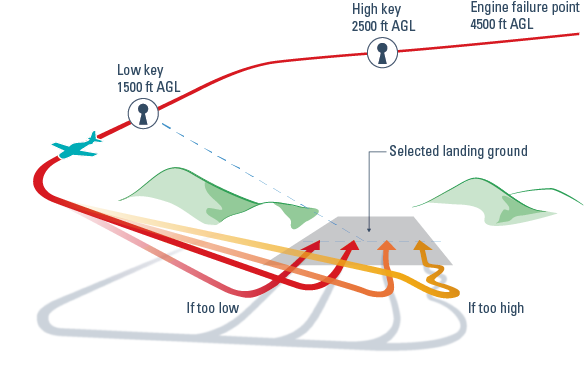
Some believe this technique to be somewhat flawed. There are a lot of factors to process in order to clearly judge the altitude of your aircraft in a glide at a particular arbitrary point. It also requires the pilot to be extremely knowledgeable about surrounding terrains and the elevation of the terrain they are flying over, which sometimes can be challenging.
Constant Aspect Technique
The Royal Air Force has developed a newer method, known as the Constant Aspect Technique. This method combats the issues of different aircraft, and the requirements for some undetermined judgements.
The principle of this aircraft forced landing technique is that it removes all the guessing of altitude and descent angle. It narrows down to one thing, which is called the “Sight Line Angle” or SLA. It is the perceived angle between the IAP of your landing field and the horizon.
Realistically, all you can look at during the forced landing with this technique is airspeed and the SLA.

The SLA is the “Aspect” which is part of this entire forced landing approach, and the “Constant” is basically the entire technique itself. The ultimate goal of the entire pattern is to keep your SLA constant as you approach the IAP.
How To Conduct The Constant Aspect Technique
The first step to fly this approach is to pick a landing field within safe gliding distance and meet the criteria set out by your instructor. Next, you can choose a sensible IAP within the first third of your landing field. This will be the “fulcrum” where your aircraft will pivot during the entire pattern, which ideally is a round pattern unlike the High/Low Key method with a rectangular pattern.
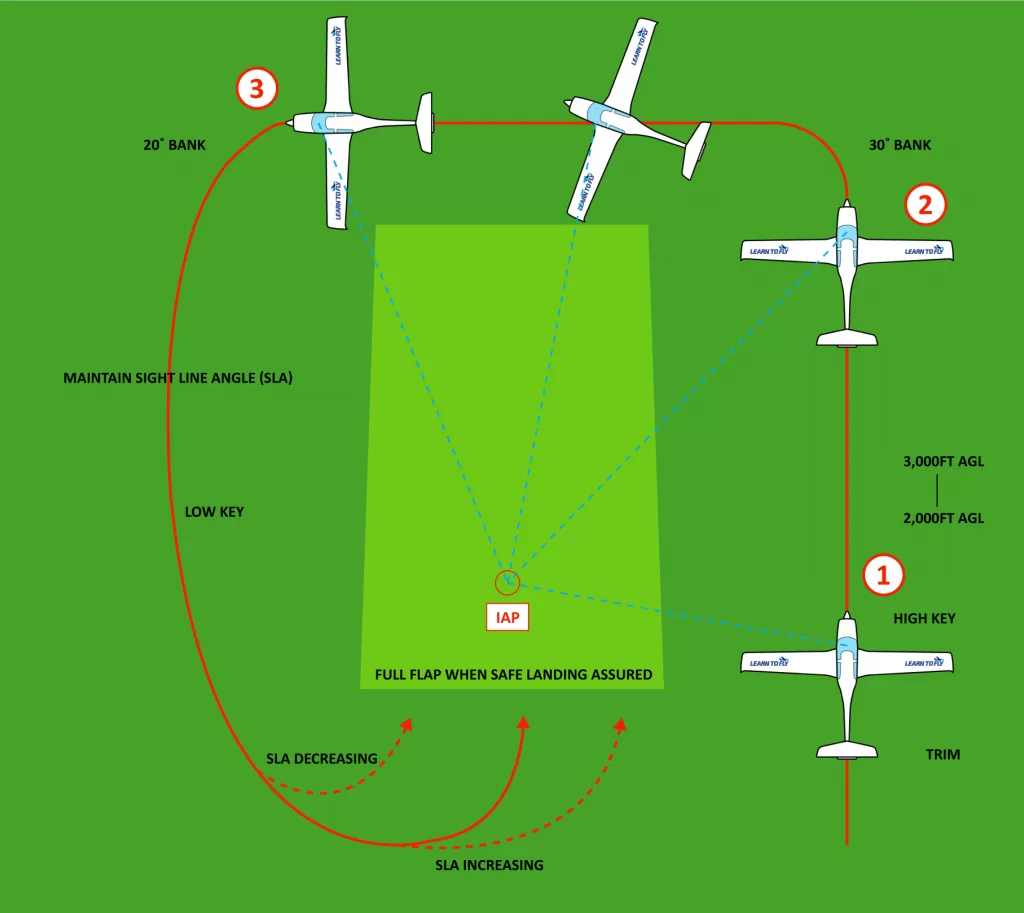
Ideally, you will join what is equivalent to a crosswind. However, depending on wind direction, it may be a direct downwind or a midfielder crosswind join into the “circuit”. It is important that your bank angle does not exceed 20 degrees during the approach. Otherwise, you may risk the SLA either increasing or losing airspeed and glide ratio due to the reduced vertical component of lift and increased drag.
If your SLA is increasing (getting too high), deviate from best glide speed or increase spacing.
If your SLA is decreasing (getting too low), decrease spacing, fly inwards.
When approaching final, you must make the turn in to directly approach your IAP. This is the time when you decide, using your knowledge of the trend of your SLA, whether you:
1. Cut in short
2. Fly a standard final, or
3. Overshoot and then turn back onto final depending on your height.
If the SLA is high, you have three options to get back onto glide path. You can use flaps, do S-turns or do a steep slip, or you can combine S-turns and steep slips if it is ridiculously high.
This technique is not only used by RAF but also being slowly accepted by flying schools around Europe and the UK.
It is recommended that everyone should practice the entire pattern all the way down into the flare and touchdown. You will find out, if you really are ridiculously high, you can still hold the slip into the flare, centralise the rudder when the aircraft sinks, and then continue to flare.
Experiment With Aircraft Forced Landing Techniques
Chat to your flight instructor about which method they prefer and why. Proactively seek to practice both aircraft forced landing techniques, so that you know which one you feel more comfortable with.
Thanks to LTF student pilot Howard Lau for contributing this article on aircraft forced landing techniques. For information on our flying courses, email [email protected]/en or go to https://drift.me/learntofly/meeting to book a meeting and school tour. You can also get more handy flying tips by clicking below and subscribing to our YouTube channel!

Victoria’s First Diamond DA40 Flight Training School
Our first Diamond DA40 has just landed to join our flight training fleet at Moorabbin Airport in Melbourne. This means that we are now officially Victoria’s first Diamond DA40 flight training school.
The arrival of the DA40 continues Learn To Fly Melbourne’s successful expansion over the past year. We have committed to building the state-of-the-art Learn To Fly Flight Training Centre on a new larger site, and have received our Part 142 qualification.
About The Diamond DA40
The DA40 is a reliable and durable four-seater aircraft, made out of lightweight and robust composite material. Powered by a Lycoming IO360 engine, and boasting a spectacular balance between performance and durability, the Diamond DA40 is a brilliant flight training aircraft.
Our DA40 has a Full Authority Digital Engine Control (FADEC) system, helping LTF students secure a seamless transition from RPL all the way through to CPL training. It also makes the aircraft both efficient and economical. This is particularly handy when completing long navigational flights for PPL, and for CPL hour building.
This state-of-the-art aircraft is decked out with both round instrument panels and the Garmin G1000 avionics. The cockpit has plenty of space, with a comfortable and ergonomic design, and excellent visibility.
We plan to order even more DA40s moving forward, further expanding our fleet. It is our goal to give our flight training students as much flexibility as possible.
Diamond DA40 Specs
Engine: Lycoming IO360
Avionics: Garmin G1000
Cruising Speed: 130 Knots
MTOW: 1,150 Kilograms
Wingspan: 11.9m
Landing Gear: Tricycle
Available Diamond DA40 Flight Training Courses
Given its versatility, the Diamond DA40 can be selected for most of our flight training courses. It is perfect for Recreational Pilot Licence, Private Pilot Licence, and Commercial Pilot Licence students. Its Manual Pitch Propeller Control (MPPC) means that we can now offer this as a design feature endorsement. The DA40’s Garmin G1000 means that it is also equipped for Instrument Ratings.
In addition to this, we have plans to order the DA40’s twin-engine sibling, the Diamond DA42, for multi-engine training. This will provide our students with an even more seamless transition from single engine training to multi engine training. Stay tuned!
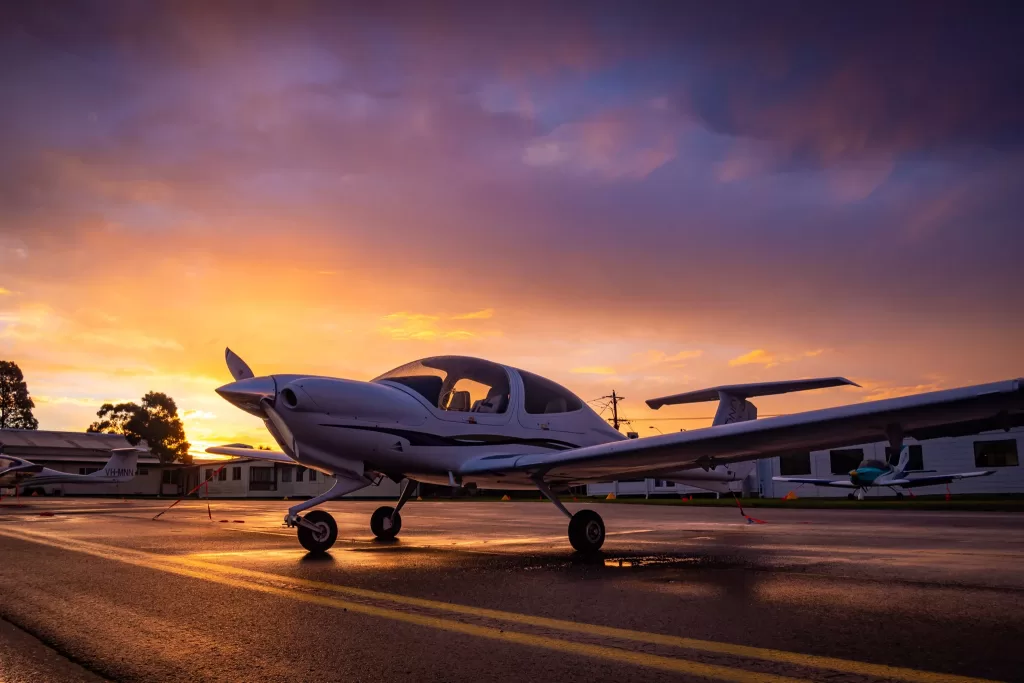
Want to learn more about flying with the only Diamond DA40 flight school in Victoria? Email [email protected]. You can also visit https://drift.me/learntofly/meeting to book a meeting and school tour.
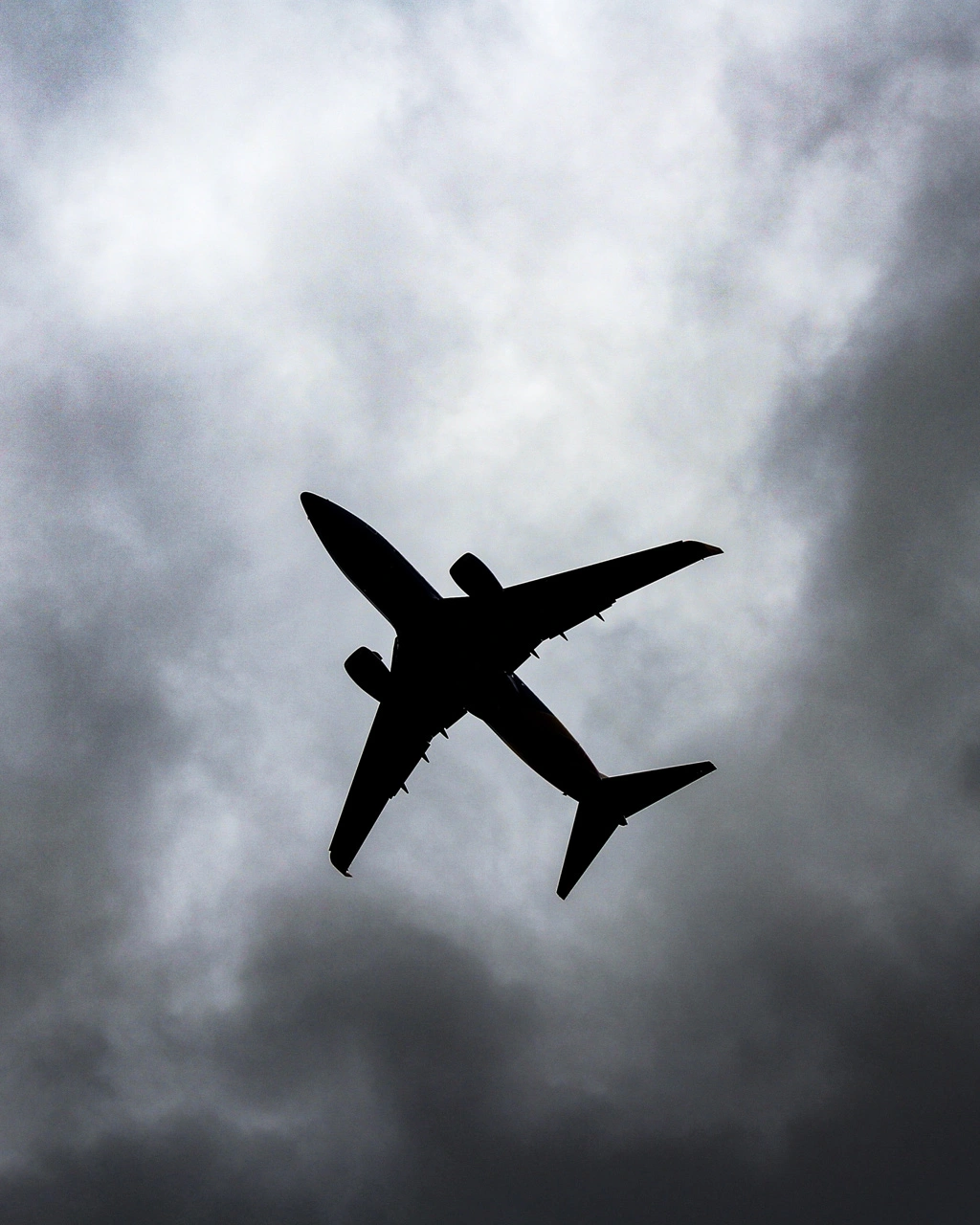
How Flying Critical Incidents Can Occur
When an aircraft flying under Visual Flight Rules (VFR) enters Instrument Meteorological Conditions (IMC), flying critical incidents can sometimes occur. In most cases, this is due to reduced visibility or inadvertent entry into clouds. Both of which happen because of the loss of the natural horizon.
Unfortunately, such flying critical incidents have cost the lives of many pilots.
You hope it will never happen to you
Before I began my pilot journey, I always seemed to find the time to read unfortunate accident reports where a non-instrument rated pilot on a VFR flight enters IMC. It is even more unfortunate to realise that many of these incidents become fatal accidents. The more I’ve read, the more I’ve tried to make myself believe, ‘It will never happen to me!’
For non-pilots, all of these accidents seem preventable. Reading the Terminal Area Forecast (TAF) and good weather knowledge are all valid and effective strategies to combat any similar occurrence from happening. However, today I will write about a time when this happened to me on a training flight, nonetheless with an experienced instructor on board.
The importance of sharing stories
Before undertaking the task of writing it, I had been wondering about whether or not I should really share my story. However, I made the decision to do so knowing it could help educate other pilots and student pilots about when flying critical incidents can occur.
Cloudy conditions and lower visibility
It was a very cold morning after a cold front came through the day before. I checked the METAR of Hong Kong International Airport and the forecast indicated cloud covers clearing and rising to 2500 feet with 9 kilometres of visibility. However, as I arrived in the flight operations office, we received PIREPs from other pilots of temporary visibility reduction to an estimate of fewer than 3 kilometres near the high ground. I knew this could become an issue upon exiting the airfield area into the training area via a gap in the mountains.
The aircraft from previous slots were rocking the circuit and about to finalise their return. Skies above Shek Kong Airfield were clearing and let in some warm sunlight. However, the area towards the exit route (Kadoorie Gap) into the training area was still rather cloudy. I saw clouds on the other side of the mountains and thought this could really be an issue for our flight today – we had some instrument flying planned.
Climbing to 1500 feet
My instructor had nearly 40 years’ experience in the UK as an aerobatic pilot and warbird pilot. He also holds an Instrument Rating – Restricted on his CAA license – although on his Hong Kong license he does not hold such rating. Even so, his instructor rating allows him to teach basic instrument flying and tracking. On this day, despite the clouds, I put my trust in his judgement and was well aware of his capabilities since we had flown together numerous times.
We taxied out to the runway after our run-up checks, only to notice something very strange. Our slot was supposedly fully booked out with our entire fleet expected to fly. However, there was no action on the aircraft apron. I recall looking to my right as I prepared to shift into full power for takeoff and witnessing all the aircraft sitting idly, waiting for the weather to clear. Still, I thought there was no time to waste and we took off.
We climbed to 1500 feet and tracked towards the exit. As soon as we switched frequencies for traffic information service we heard a rescue helicopter saying, “Visibility deteriorating to less than 3000 meters.” I wasn’t sure where the helicopter was, but in retrospect, it really should’ve been the warning to turn back. We pressed on and exited out of the mountain gap and went on to “the other side,” where all the nasty clouds were, maintaining 1500 feet all the way through.
Scary in-flight sights
As soon as the mountains disappeared from my peripheral vision, my instructor and I realised that visibility was not 9 kilometres, as we had initially projected, and I could only see what was in front of us by looking downwards.
The only visibility I had was of the ground below, including the roads, trees and buildings of Tai Po. I looked back and realised that our only escape route back to the airfield would be obscured if we kept going. Just as I was about to turn back, it became apparent that my instructor had the same idea in mind. “Bring us back,” he said.
Returning through the mountain gap
The direction indicator on that particular Cessna 172 was somewhat defective. This meant I started my timer on my watch and began a rate one turn to the left. I timed for 1 minute, which at 3 degrees a second would be a full 180-degree turn. Fortunately, the mountain gap remained in view this entire time and I instinctively throttled up to return quickly. We were pushed even lower as we entered the airfield airspace, finally descending to 1300 feet. It was very uncomfortable watching the mountains on either side of me come so painfully close.
Lessons learnt
Of course, we were fortunate that despite this being a VFR into IMC incident. The visibility was still sufficient for a safe turn-back manoeuvre.
Among the contributing factors to the success of this was the expertise of my instructor, who holds a restricted instrument rating in the UK, and the fact that at this time I had already completed an hour of instrument flight training. A serious lesson in how flying critical incidents can occur.
After landing, and during the debrief, we narrowed the causes down to the ‘get-there-itis’ that occurred as a result of wanting to squeeze more instrument flying time in for me and also the fact that my instructor was instrument-rated and we put such confidence in his expertise. In retrospect, we shouldn’t have even left the ground in the first place.
This flying incident is proof that pilots with any amount of experience can be sucked into this veil of complacency. They then can make decisions which go against rational and safer judgement. It is an incident my instructor and I will both go on to remember.
Safe flying everyone!
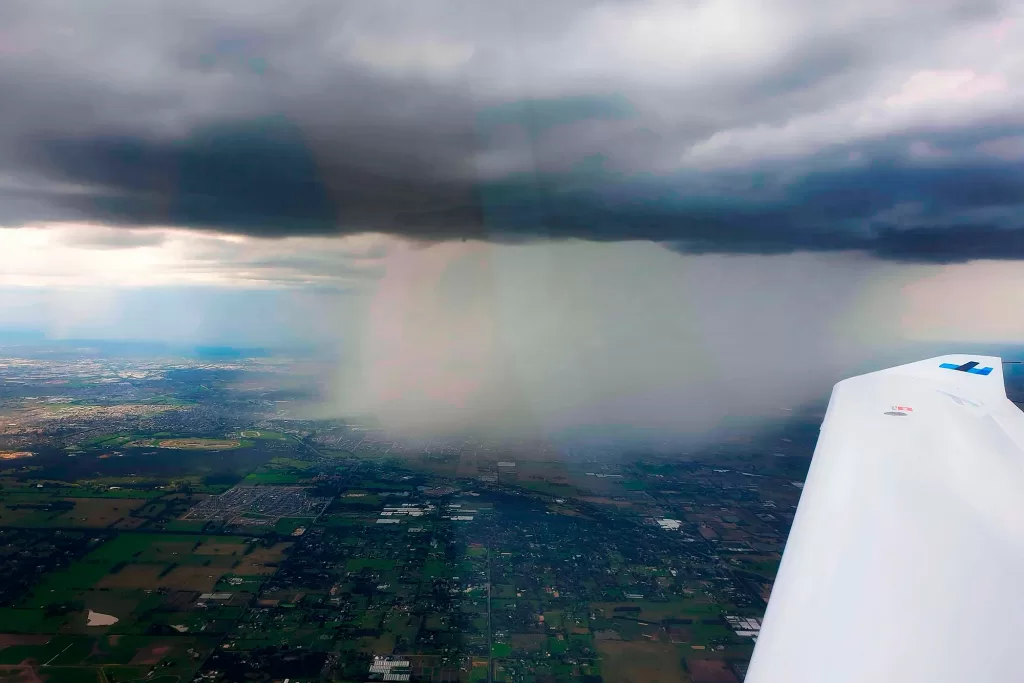
Thanks to LTF student pilot Howard Lau for contributing this article on how flying critical incidents can occur. For information on our flying courses, email [email protected]/en or go to https://drift.me/learntofly/meeting to book a meeting and school tour. You can also get more handy flying tips by clicking below and subscribing to our YouTube channel!
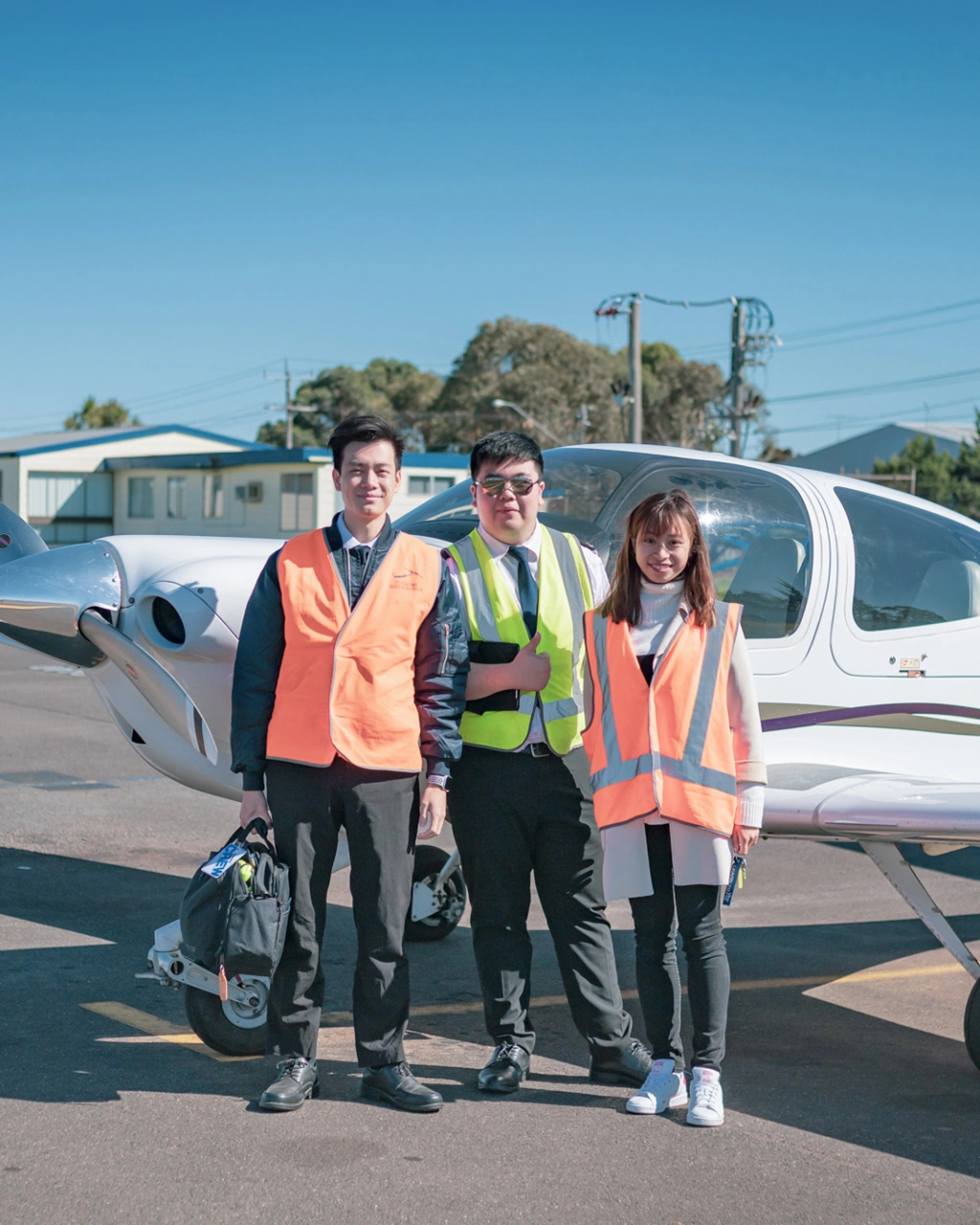
Five Benefits of Choosing a Part 142 Accredited Flying School in Australia
Learn to Fly Melbourne is excited to announce that we have become a Part 142 accredited flying school operator under the Civil Aviation Safety Regulation (CASR). This results from our new partnership with Australian Pilot Training Alliance (APTA).
Over the past few years, pilot licencing regulations in Australia have been reorganised and redeveloped. They have changed from older criteria to reflect a more global perspective regarding pilot licencing and standards.
This move may not be obvious to the customer or pilots. Yet it has given rise to new terms and extra regulations and definitions. Flight training organisations across Australia now have two main paths that they can follow when seeking to earn their air operator certificate: Part 141 and Part 142.
Why choose a Part 142 accredited flying school in Australia?
Less than 5% of flight schools in Australia have received the advanced Part 142 flight training qualification. This accreditation means that we can continuously expand our flight training operation to reflect the highest industry standard.
There are numerous benefits for students, pilots and instructors who fly at a Part 142 accredited flying school.
1. CASA Approved Syllabus
Part 142 organisations must provide a Civil Aviation Safety Authority (CASA) approved syllabus of training. This CASA approval caveat for Part 142 initiates the necessity for additional oversight of training programs within organisations.
This results in further internal development and higher levels of safety and training. That subsequently improves standards not just within individual organisations but also within the wider aviation community. Part 142 flying schools benefit from a consistently higher level of governance and checks from CASA.
2. Advanced Flight Training
Our comprehensive CASA approved flight training syllabus includes the following new courses and types of flight training:
Integrated flight training for Private Pilot Licence (PPL) or a Commercial Pilot Licence (CPL) courses
Multi-Crew Pilot Licence (MPL), Air Transport Pilot Licence (ATPL) and Flight Engineer Licence
Multi-Crew Cooperation (MCC) training
Contracted recurrent training and checking
Being able to offer integrated flight training is one of the major points of difference between the Part 141 and Part 142 qualification. What it means for students earning their CPL is that they can cut down their flight training hours from 200 to 150 – a 50-hour flight training discount when compared with Part 141 flying schools.
3. Increased Cost Effectiveness
Integrated flight training – Our 150 hours Integrated CPL syllabus which blends practical flying and theory-based training compared with the 200 hours CPL syllabus offered by other Part 141 schools – is just one of the ways that the Part 142 qualification is extending our commitment to provide students with cost-effective flight training.
4. Internal Training & Checking
Part 142 flight training organisations are required to have a professional development program for all personnel and flight instructors within the school. They must also have a quality assurance manager to ensure ongoing high standards.
This conditional improvement of know-how and standards applies not just to students, but trainers and instructors alike who continually develop their own skills within an organisation.
5. Enhanced Safety
All Part 142 flight training organisations must have:
A Safety Department & Safety Management System
A CASA Approved Safety Manager & Deputy Safety Manager
A Risk Management System
Regular safety meetings, audits and reviews
Safety oversight globally has become one of the main areas of focus in not just maintaining high aviation standards, but improving safety as a whole. This is most visible in the incorporation of formalised procedures for Safety Management Systems.
These systems actively monitor standards and safety within training organisations by promoting an ongoing awareness, attitude and approach towards threats and risk on a daily basis. The net result for pilot candidates is that these systems set a higher standard for all who come in contact with them, making not just the individual pilots safer, but organisations and the industry as a whole.
We are excited for students to enjoy the increased benefits of training with us now that we have achieved the CASA approved syllabus Part 142 qualification.

Want to learn more about the benefits of flying with a Part 142 accredited flight school? Email [email protected]. You can also visit https://drift.me/learntofly/meeting to book a meeting and school tour.
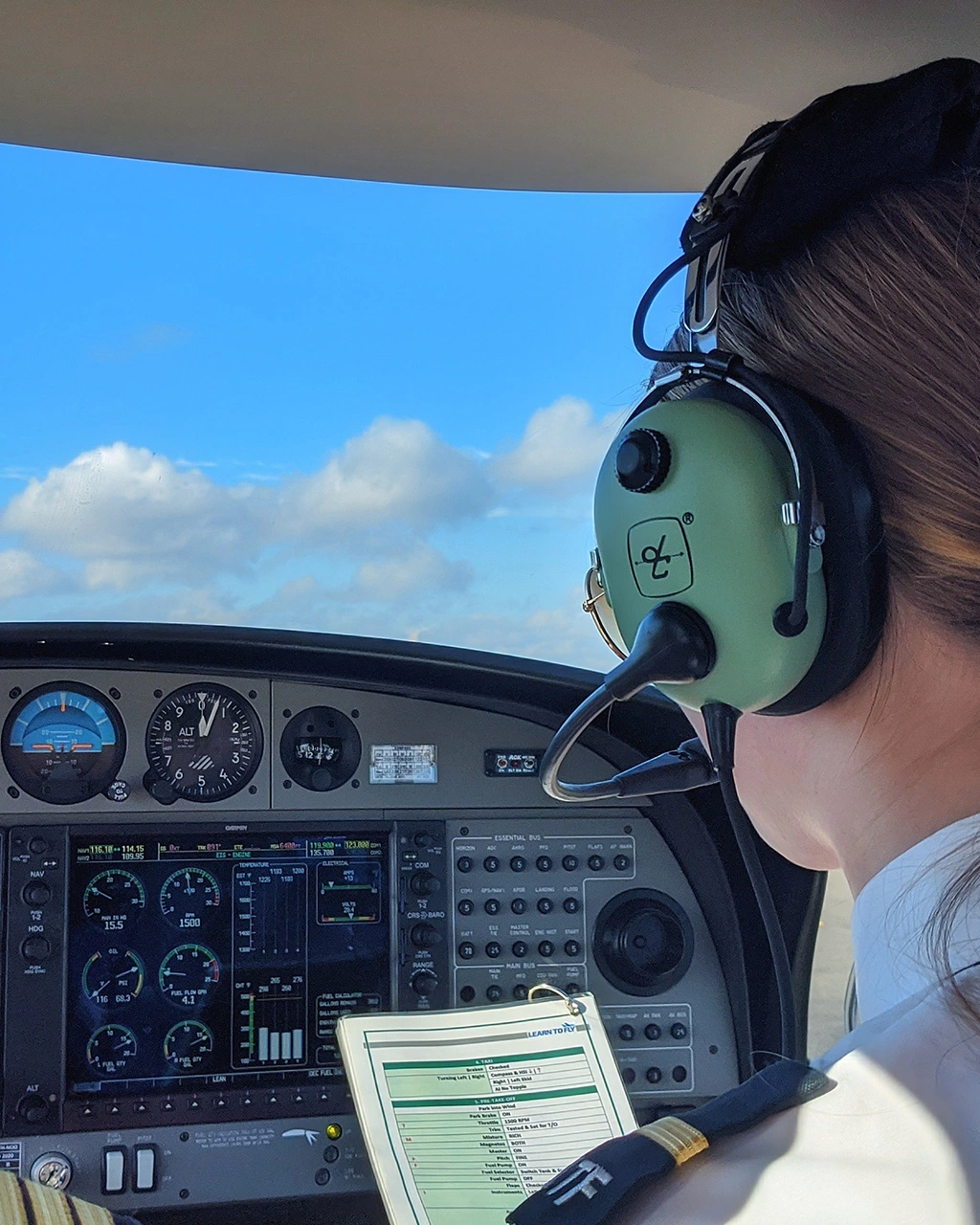
Pilot and Aircraft Safety at Learn To Fly
At Learn to Fly, pilot and aircraft safety is and always will be our number one priority. It is the cornerstone of our operation, and we strive to maintain a positive and transparent safety culture. We continue to uphold an impeccable safety record as conveyed on the Recreational Aviation Australia (RAAus) Accident and Defect Summaries.
The safety culture at Learn to Fly acknowledges that flying and flight training involves risk. It’s vital that students and instructors alike are educated about these risks and the processes involved in risk minimisation.
See how we carry out pilot and aircraft safety in our flight training operations at Learn To Fly.
Aircraft Maintenance
Each aircraft requires maintenance checks for every 50 and 100 hours of flying. All scheduled maintenance is planned in advance. We will never undertake any flights or flight training on planes requiring maintenance.
Pilots and engineers can write up a defect on the aircraft’s Maintenance Release (MR) at any time. For serious defects, the aircraft will immediately become unserviceable and simply will not go flying until maintenance is completed.
The Maintenance Release is required to be signed by a pilot (instructor or pilot certificate holder) before the first flight of each day to ensure that the aircraft has passed the daily inspection requirements and is suitable to fly.
Instructor Qualifications
Pilot and aircraft safety for us also means company standards require that instructors at Learn to Fly be well-trained. We will only employ instructors who we are confident, focused, alert and ready to respond immediately to any potential situation where the risk outweighs the learning opportunity.
Based on the current guidelines, all of our flight instructors are at an RAAus senior instructor level. This rating can only be achieved if the pilot accumulates certain flight training experiences and passes a flight test that is conducted by external RAAus certified flight testing officers.
Some of our students may become junior instructors when they graduate. However, it is a compulsory requirement that they are supervised by senior instructors when they work at the school.
In addition to this, our chief flying instructor (CFI) actively supervises all flight training operations and consistently checks training records and documentation. This ensures that Standard Operating Procedures (SOPs) are complied with for both instructors and students. SOPs compliance is checked at various times. This is usually by attending flights with students to confirm SOPs are maintained, and ensuring all instructors have current qualifications.
Flight Training
We ensure a safe learning environment every time. A student will not fly if the weather is not suitable for that particular lesson. For solo flights, these standards will be even stricter and reflect considerations such as turbulence, wind speed, daylight, student’s abilities etc so that we can provide
Before all flights, the aircraft will be thoroughly inspected. This ensures all controls are functional, check for obvious damage to the engine, airframe or structure before any flight is to take place. After engine start and prior to takeoff further checks are carried out as per the SOPs. This is recommended by both the aircraft manufacturer and in the aircraft’s Pilot’s Operating Handbook (POH) to further assure a safe and efficient flight takes place.
Each student’s flights are recorded in detail. Instructors will rate their performance to make sure students reach the standard or competency of that particular lesson. Students who do not meet these standards or competencies will have to redo the lesson sequence until this standard is met. Within the school, we have systems in place to cross-check and ensure that all training records are completed and updated in a timely manner.
Briefings are always done properly and consistently before and after each flight. This ensures that students are both aware of what they are going to do, and of the specific standard that is required for that particular lesson.
Prior to solo flights, instructors will double-check to make sure the students have all the required documents such as a medical certificate, student pilot licence etc. Training records must also show they have achieved all the necessary competencies prior to undertaking any solo operations.
Creating a Pilot and Aircraft Safety Culture
Further to the priorities and procedures outlined, we maintain our own Risk Management Plan and Safety Management System. This enables us to further minimise the potential risks associated with flight training. Despite this comprehensive system, we must not think that we are infallible. We encourage all of our staff and students to form a habit of looking, learning, and discussing potential risks we see as part of our normal day to day operation. This attitude allows us to evolve and update our systems regularly. That then helps to ensure a safe operating culture persists within the Learn To Fly organisation and group.
We encourage instructors and students to go through appropriate channels to advise safety concerns within or outside of our operation.
We believe that technology as a communication tool has great potential to assist safety operations. Flight training software can provide updates on aircraft unserviceability or if an aircraft may need to be grounded; through to communicating safety concerns or topics that instructors or students raise within the organisation.
Exceeding Expectations
We aim to have higher safety standards than other flight schools in Australia.
On top of the Public Liability Insurance and the RAAus Member Liability Insurance, we cover an additional A$5 million in Liability Insurance for all of our students.
We only buy brand new RA-Aus aircraft so we can be certain of the maintenance history for every plane.
All RA aircraft in our fleet is equipped with Rotax engines which have an outstanding reputation and operational safety history.
At Learn to Fly, we believe all these extra steps – combined with the safety culture exhibited by our individual pilots, instructors, and the student group – will allow us to go a long way in providing an extra margin of safety.
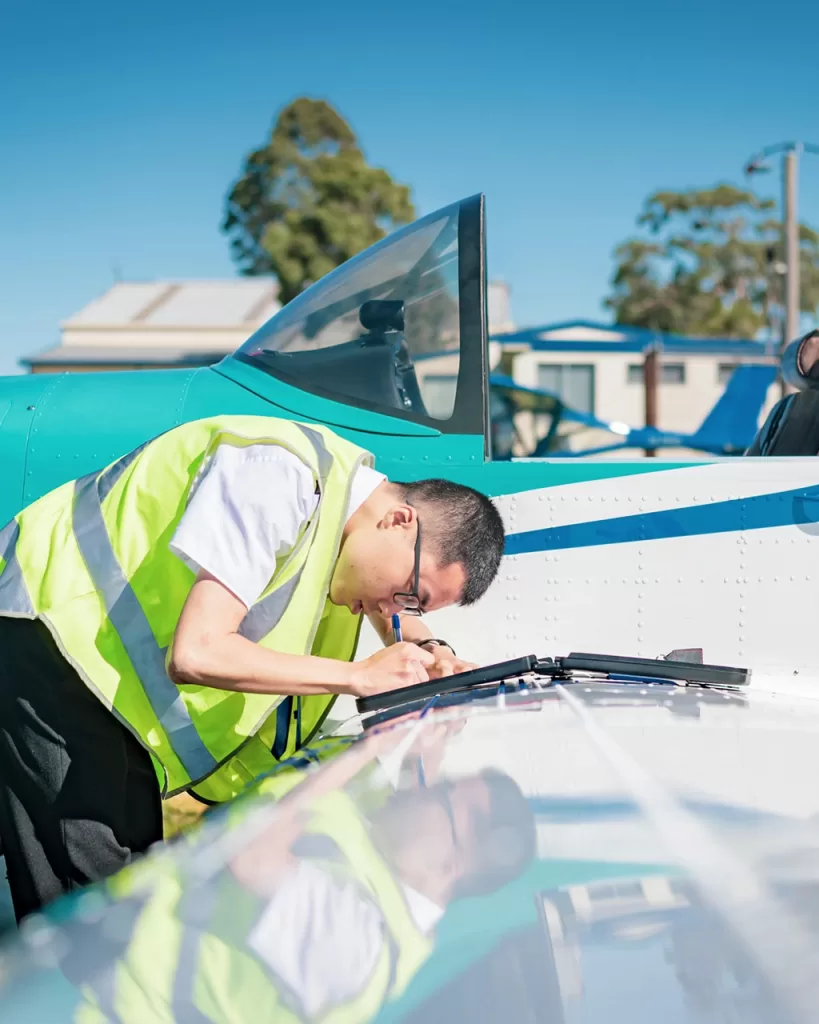
Want to fly with us? Email [email protected]. You can also visit https://drift.me/learntofly/meeting to book a meeting and school tour.
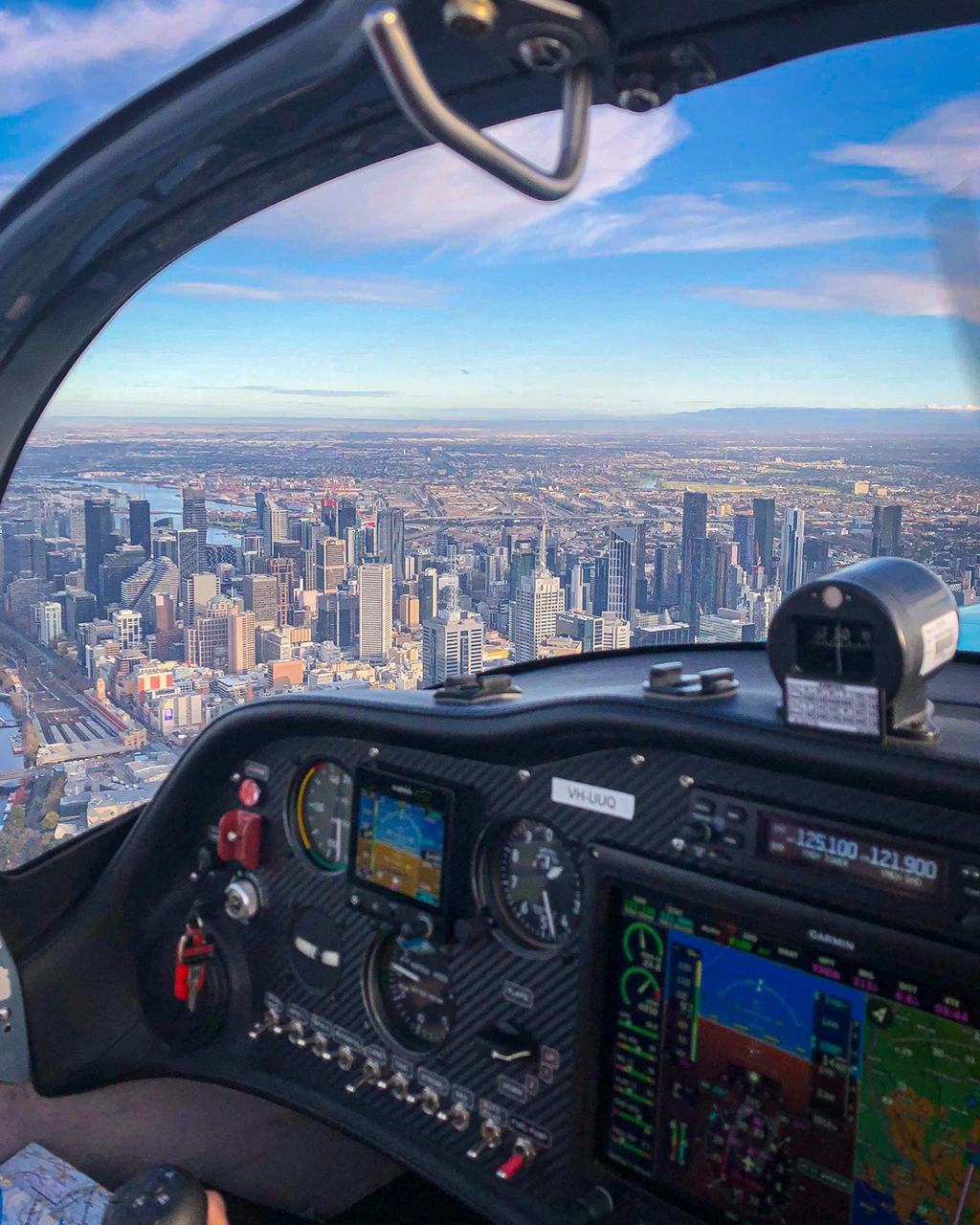
What is Threat and Error Management in Aviation?
Threat Error Management (TEM) in aviation is a term that has commonly been associated with airline operations. But it also extends to all other aspects of aviation. TEM is all about being a safe and well-prepared pilot.
The definition of Threat and Error Management in aviation
Threat Error Management (TEM) has been defined by various institutions. The Australian authority Civil Aviation Safety Authority (CASA), defines it as:
‘The process of detecting and responding to threats and errors to ensure that the ensuing outcome is inconsequential – the outcome is not an error, further error or undesired state’.
It wasn’t always called TEM
The term has evolved over time from Cockpit Resource Management (CRM) to Crew Resource Management (again CRM), to its current form as TEM.
Although these big words and terms sound noteworthy, you most likely won’t come to grips with what they are really about or how much of an impact they have on a pilot during a flight without exploring them in detail through study and practice.
Its impact extends beyond aviation
While TEM was first adopted by the airline industry, its importance for all of us should not be underestimated. TEM has impacted of all kinds of industries in a multitude of ways.
Threat and Error Management processes and practices have become the benchmark when approaching tasks and activities in a range of professions, including our flight training and other standard aviation procedures.
TEM gives us perspective on perception
Each of the key concepts in TEM relates to a specific aspect of a total process, and all are aimed at handling a particular threat.
What is a threat? Furthermore, what is a threat to you?
In many cases, this threat can be different to the one which is commonly perceived.
Threats can come in many forms, such as environmental. The weather, or other factors that may seem inconsequential such as:
Flying in a different aircraft compared to your usual one
Having a change of instructor on the day
Preparing adequately for your flight
Not having enough sleep the night before
All of these are considered threats as they can have an impact on the outcome of any flight.
Errors become easier to manage
Beyond the threats is the resulting error. Some errors may result in a further error, varying in size but depending on how we handle it may or may not impact on the safety of the flight. Ultimately, this aspect relies heavily on how the management of that error is addressed.
As pilots, we are the last line of defence when considering errors and, therefore, safety. The key responsibility to prevent this error from having an outcome or impact on the flight and placing one’s aircraft in an ‘undesirable state’.
This management should not be underestimated because a significant or undesirable outcome places one in a position that none of us would like to contemplate, irrespective of the size or aircraft type that we are operating.
TEM Invites closer analysis of safety
The question that arises is what should we do when handling threats and errors each time we go flying? The answer may vary, however, we should actively look around us and consider any factor that may be perceived as a threat.
Beyond this, consider what error could arise from this and how as an individual you would manage or handle this situation. Only then with constant attention, proactive discussion and consideration of factors around us will we improve our skills and awareness towards becoming better and potentially safer pilots of the future.
See how Threat and Error Management in aviation is discussed in one of our flying lessons on YouTube below. Don’t forget to subscribe for more great flight training content!
Want to fly with us? Email [email protected]. You can also visit https://drift.me/learntofly/meeting to book a meeting and school tour.
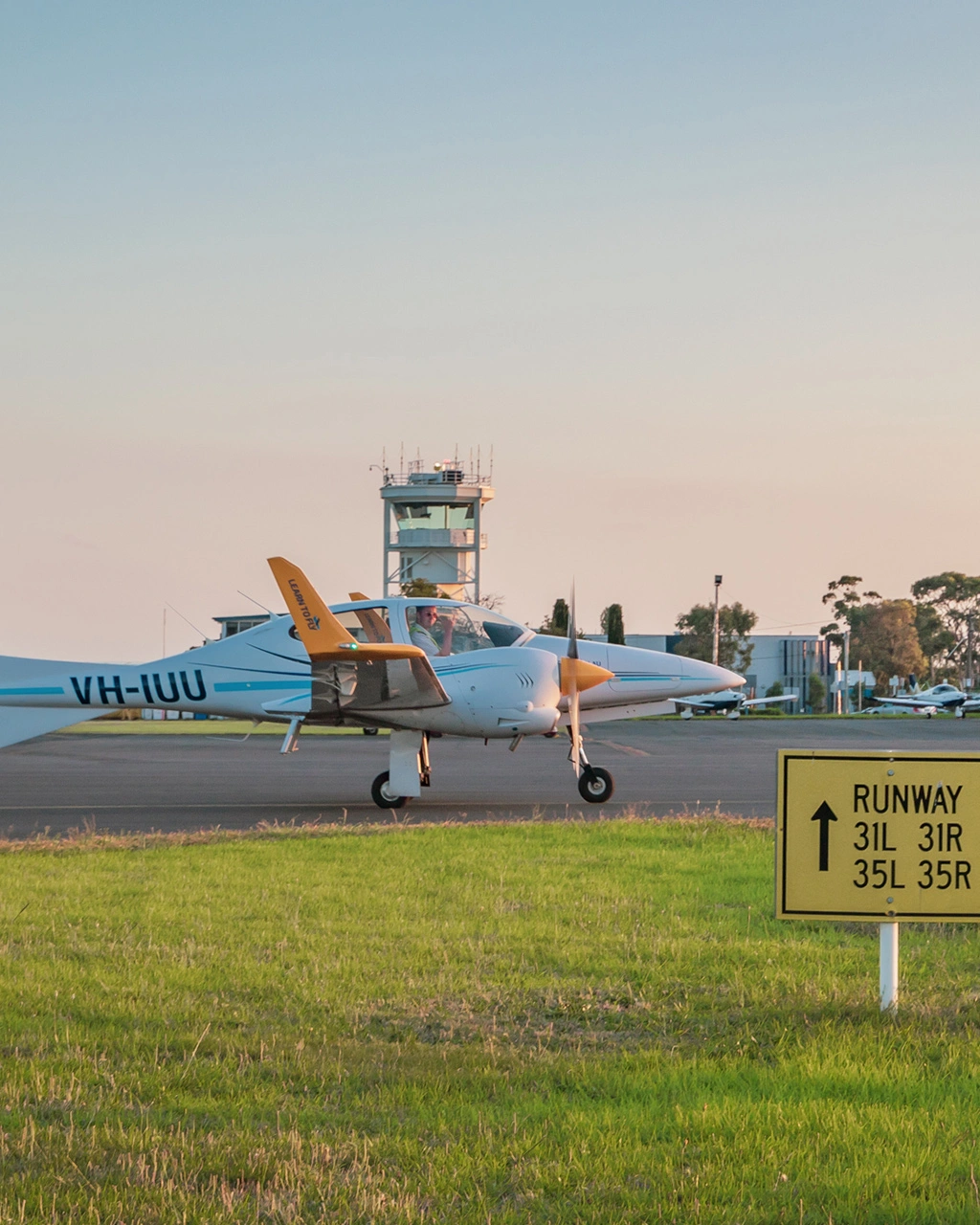
Final Flight Departure Procedures: Flight Departure Processes Part 3
In this blog series on flight departure processes we have covered engine starts, taxi checks, run-up checks and more. Now it’s time to run through the final flight departure procedures and take to the skies!
Use the TMPFISCH acronym
The proper acronym that applies whenever holding short is TMPFISCH, and it is what I usually use for my operations here in Hong Kong. It goes like this:
T – Trims set to the appropriate take-off position
M – Mixture rich, master on and magnetos on both
P – Primer in and locked (or fuel pump off)
F – Fuel is sufficient for the coming flight and flaps are set
I – Instruments’ Ts and Ps are in the green range
S – Switches (landing and strobe lights on)
C – Controls full and free
H – Hatches secure and harnesses secure
When you do your controls part of this departure check, make sure your box the controls. That means to move the controls in a movement of a box and ensure you have still got adequate freedom of movement. You might have a mile-long taxi, and something might have jammed the controls. Never skip this check as part of your final flight departure procedures.
Deliver your safety brief
You can do the EFATO brief (Engine Failure After Take-Off ) at any stage before the take-off, but I typically do it after run-ups. A typical brief should describe the actions that need to happen in the event of an engine failure at particular stages of the flight, such as:
During take-off
After rotation
Below 200 feet and with runway remaining
Above 200 feet with no runway remaining
Above 700 feet.
The brief goes something like this:
“If we have an engine failure on the ground, we stay on the ground. If we have an engine failure below 200 feet, we land on the remaining runway. If we have an engine failure above 200 feet, we land straight ahead or 30 degrees to the side. If we have an engine failure above 700 feet, we will turn back to find runway X.”
On a standard Cessna or Sling, 700 feet is plenty for a runway turn-back manoeuvre. However, during the turn back you MUST lower the nose to maintain airspeed and limit the angle of bank to 45 degrees. Never attempt a runway turn-back if an engine failure occurs below 700 feet!
Ready to go
You are lined up on the runway, and ready to take to the skies. It’as always an exciting moment for any pilot. However, discipline must be maintained during the final flight departure procedures.
Ensure you are on the correct runway by looking at your directional gyro, which will indicate the proper runway heading. It’s also a good practice to cross-check this reading with the magnetic compass as well. After that, you should triple-check with making sure that the runway numbers are indeed the intended runway. Everything checks out? Good.
Time to fly!
Now the take-off roll can begin. Ensure that your heels are on the floor and that you are controlling rudders only with the balls of your feet; this will ensure that you do not inadvertently apply the brakes! After you complete this, you should use full power – smoothly but with purpose – and count three, one-thousands before going all the way with to full strength.
After full power is applied, check on the RPM. They should be reading at or above the stated minimum static full-throttle RPM. At this stage, you should also check the oil temperatures and pressures and ensure that these are still sitting within the green range. Finally, you should check to ensure that the airspeed indicator is ‘alive’, meaning that it is indicating an acceleration.
At rotation speed, gradually apply back pressure and lift the nose wheel off the ground, allow the aircraft to fly off the runway and then adopt a Vy (best rate of climb) attitude to ensure maximum climb performance. Look outside! Once you are above 300 feet AGL and obstacles are cleared, move the flaps to up and auxiliary fuel pump (if applicable) to off. You should once again check the oil temperatures and pressures.
The result of following the correct final flight departure procedures? A smooth take-off, followed by another safe and beautiful flight!
Thank you to student pilot Howard Lau for contributing this great series on flight departure procedures.

Find out what it feels like to take to the sky! Email [email protected] or visit https://drift.me/learntofly/meeting to book a meeting and school tour.
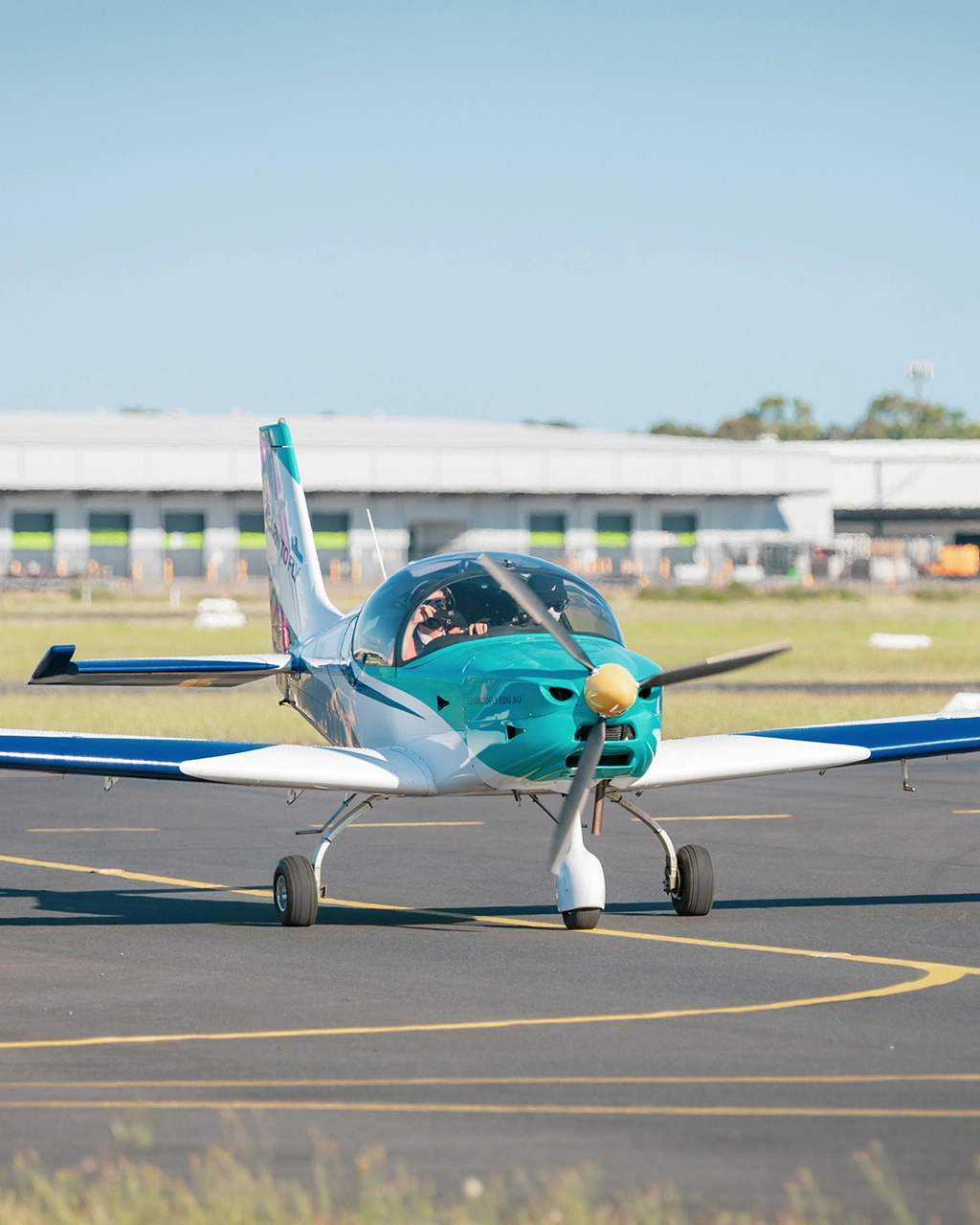
Flight Pre-Departure Checks: Flight Departure Processes Part 2
In Part 1 of our flight departure processes series, we laid the groundwork to set ourselves up. In this post, we will go through your flight pre-departure checks. This includes engine starts, taxi checks and run-up checks. Following these checks we’ll be heading to the runway.
Perfect priming
Let’s start our flight pre-departure checks with the most important thing. Safety. Crack open the window and say, ‘CLEAR PROP’. Make sure you give people time to stand clear and scan the area before you move on with your other procedures.
Next, place one hand on the throttle and start cranking the starter, but for no longer than ten seconds each time. If the engine does not fire within 10 seconds, stop cranking right away and wait a minute so the starter motor can cool down. Try some light priming when you’re ready to have another go—it works wonders.
When the engine fires, release the starter promptly. If you’re flying a plane with a fuel-injected Lycoming engine, adjust the mixture to full rich.
Green means go
After a successful engine start, you will need to check that the oil pressure is rising (or has correctly risen) into the green range. This is crucial because oil pressure indicates whether metal components in the engine are sufficiently lubricated.
If oil pressure is not within the green range, shut the engine down immediately and report this to the engineer.
As long as the pressure looks good, you can raise the flaps (if left down after pre-flight), turn on the taxi and navigation lights, and turn on the avionics master switch. Only now should you don and adjust your headsets.
Eyes forward
When taxiing, you should aim to minimise the time you spend with your head down – literally so you don’t bump into anything.
It has become normal for pilots to use GPS devices and iPads (used to run apps like OzRunways) in the cockpit. It is ironic, therefore, that when we attempt to program devices while taxiing we put ourselves at risk of having an accident.
The only exception I make to this rule of my flight departure process is to check the turn instruments. I like to quickly glance down and ensure that:
The slip ball is deflecting properly
The turn coordinator is indicating correctly
The direction gyro turns in the proper direction
The attitude indicator stays erect
The magnetic compass turns in the proper direction.
Remember the CIGAR acronym
I like to do my run-up checks using the acronym ‘CIGAR’. Here is how it works:
Controls – full and free and control surfaces deflect correctly
Instruments – all in the green range, the ammeter is charging and the suction is in the green range
Gas – check the mixture and fuel selector
Airframe – secure the canopy, doors and windows, and make sure your parking brake is on
Run-up – set the correct run-up RPM, check the brakes, check the magnetos, note when the RPM drops (on the Sling with the 912iS engine, one must check that both engine fuel pumps are working), pull the throttle to idle and ensure the engine does not seize at idle
After the run-up, the engine should be set to the ground idle speed as recommended in the POH.
Thank you to student pilot Howard Lau for contributing this great series on flight departure procedures. Stay tuned for the third and final instalment coming soon, as we head to the runway!
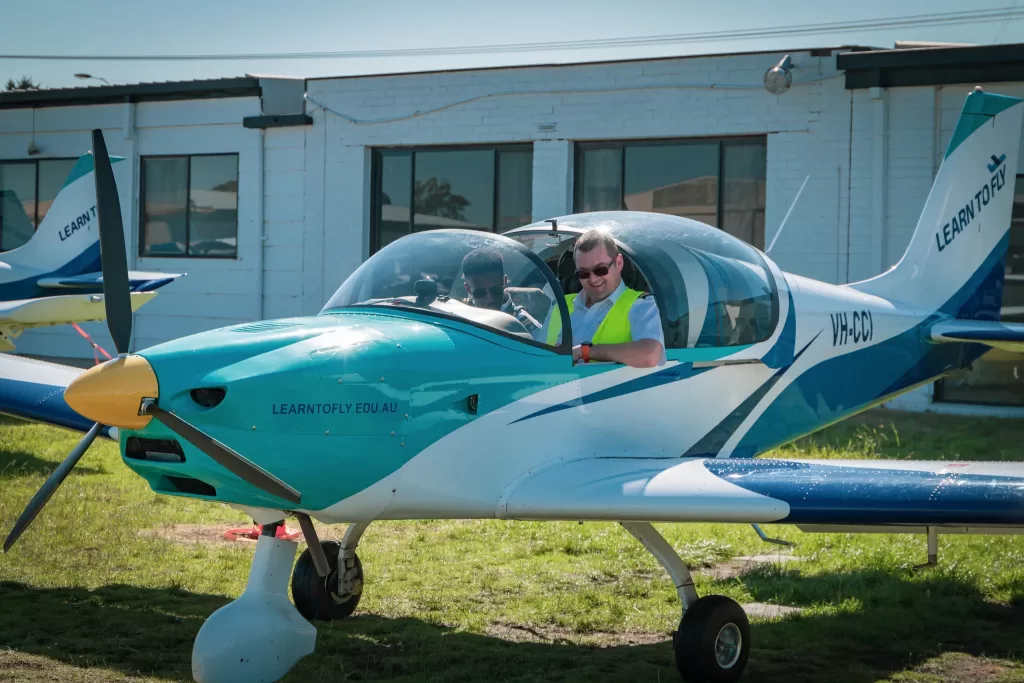
Find out what it feels like to take to the sky! Email [email protected] or visit https://drift.me/learntofly/meeting to book a meeting and school tour.
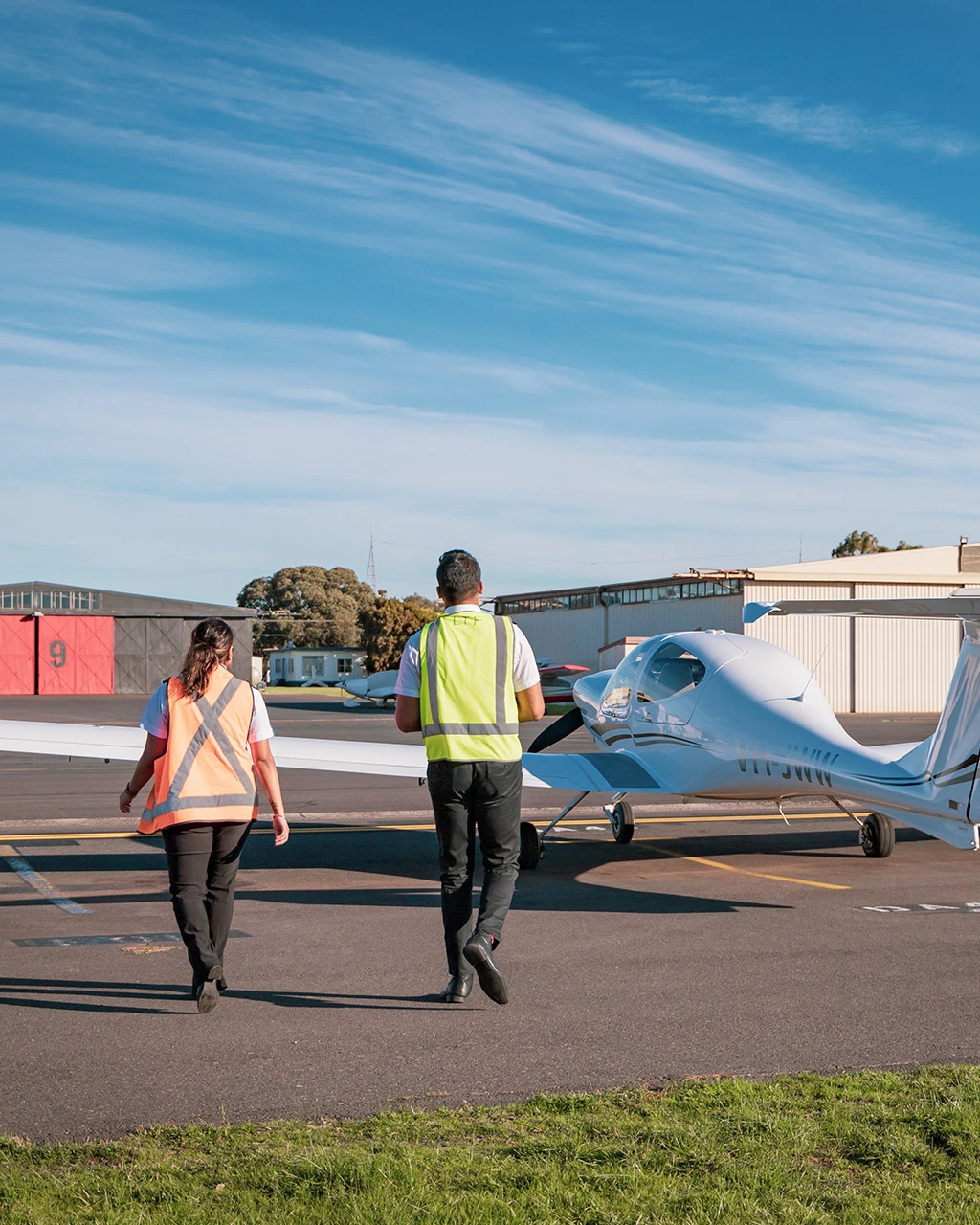
Flight Departure Processes: Part 1 of 3
With so many other things in life, it’s easy enough for you to just remember something once you know it. Then it’s no problem to repeat it. Like driving. But flying is different. There are checklists and acronyms (and more checklists) for a reason. There are far more safety considerations when you are flying, and following the right flight departures processes will help to ensure you have a smooth and safe flight, every time.
Walk the walk
A successful and safe flight begins before you even turn on the master switch. It all starts on the tarmac as you approach the aircraft. Your flight departure processes should involve asking yourself lots of questions:
Are the tie-downs done properly?
Are the tyres inflated correctly?
Is there any pink hydraulic fluid around the aircraft?
Is there any blue fluid around the aircraft reminiscent of Avgas?
It has been scientifically proven that asking yourself questions is the most effective way to stay in the loop of information.
Feel the wind
You should not only ask yourself about the aircraft or about the ‘now’ but also ask questions that will bring into effect a successful take-off. Personally, I like to ask myself these:
Should I use flaps or not?
What technique will I use for these conditions? Short field or normal?
Should I delay my rotation for density altitude, load or gusts?
What crosswind correction should I be using during taxi and initial roll?
These questions really are the basis for me completing smooth and safe flight procedures. They help me make sure I’m always ready to respond to new information. On that note, try to make sure you always pay attention to your surroundings. Feel the wind, look at the windsock, listen to the wind and feel the temperature on your skin. Forming attentive habits and looking out for these cues will allow you to prepare for a better flight.
Take it easy
After a normal interior and exterior pre-flight check has been completed, and the aircraft is confirmed to be in safe working order, we can proceed to the engine start. My secret tip is don’t rush!
I’ve had the fortune to fly with the training captain of a major airline in Hong Kong, who is also a tailwheel aircraft instructor and aerobatic pilot. He said these wise words I will never forget, ‘Don’t rush because if you rush you will kill yourself one day.’ I could not believe the severity of his words given his experience in aviation! Needless to say, I listened to his advice.
Get ready for ignition
Before I start the engine, I like to plug in the key, and with the master switch off, I rotate the key to start and then release it. The key should immediately snap back to the both position. This is a simple pre-start ignition check that I learned during my time as an aircraft maintenance intern in Hong Kong.
What this check does is make sure that the starter motor does not engage when the master switch is off, the key locks into position properly and the spring mechanism works.
Prepare the cabin
With the pre-start ignition check completed, I check the cabin. This is when you should adjust your harnesses and seats to your satisfaction, and keep a window or the canopy open. After ensuring that the propeller area is clear, flip on the beacon light switch and the master switch.
Look at your ammeter—it should show a discharge. Check your oil temperature to gauge the amount of priming required or (if it’s the Rotax 912ULS equipped Sling 2 or the Bristell at Learn to Fly) the use of choke. Ensure all circuit breakers are in and the avionics master switch is off.
Wait for it
One of my pet peeves at this stage is pilots who don their headsets before the engine has started. What if someone was trying to get your attention about an unfolding emergency? With the headset on, you wouldn’t be able to hear them. Instead, remove the headset from the dashboard and put it on your lap so you can have maximum visibility out of the windscreen.
An unwritten rule
Set the fuel selector in accordance to the POH and prime as required. After priming, ensure the primer pump is in and locked or, alternatively, that the auxiliary fuel pump is off. If the plane has a fuel-injected Lycoming machine, check that the mixture is set to full rich. If you’re ever in doubt, start with no prime. This will avert the possibility of flooding the cylinder heads due to excessive priming.
Thank you to student pilot Howard Lau for contributing this great series on flight departure processes. Stay tuned for the next part, where we run through flight pre-departure checks.

Find out what it feels like to take to the sky! Email [email protected] or visit https://drift.me/learntofly/meeting to book a meeting and school tour.
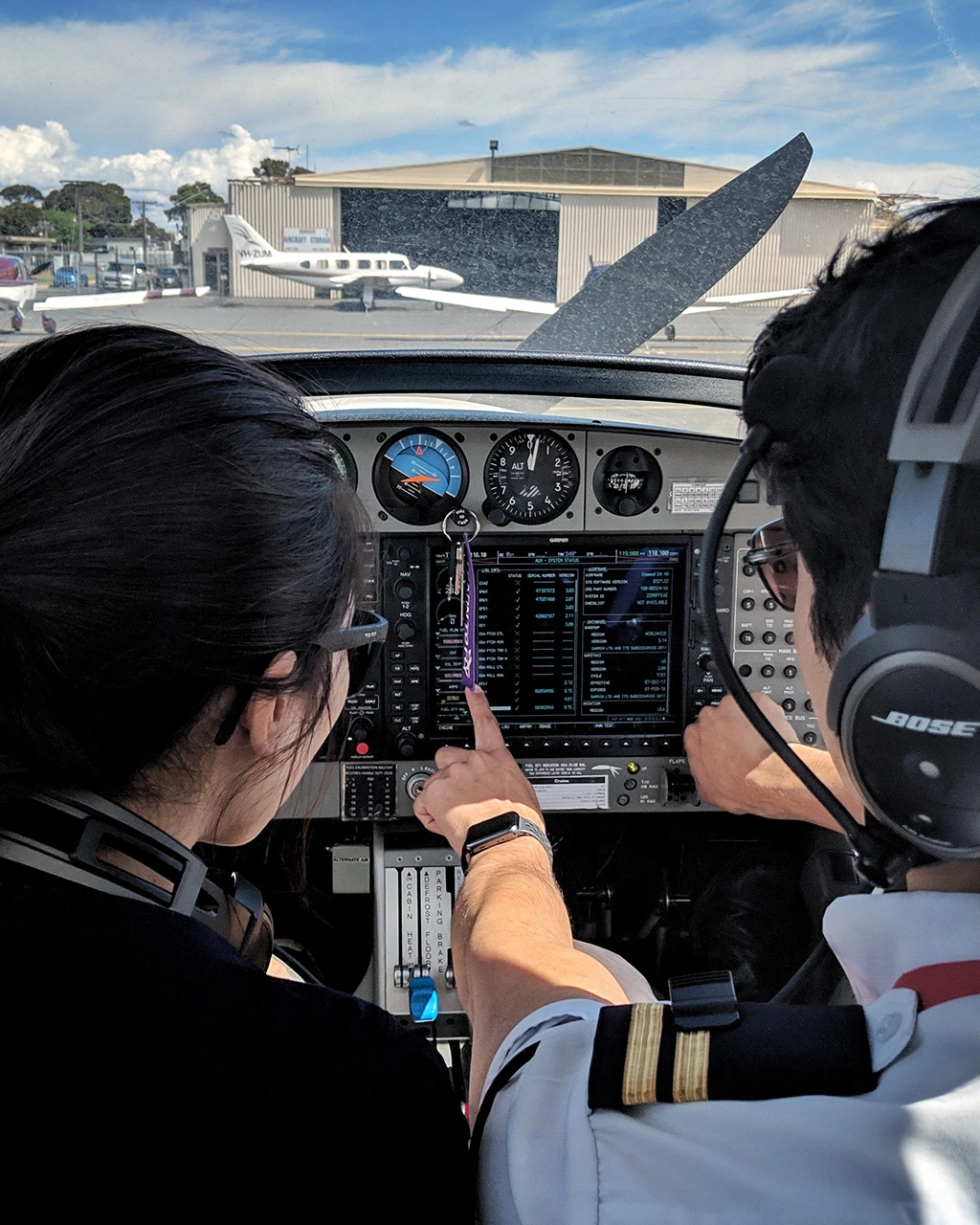
6 Ways to Maintain Pilot Proficiency and Safety
Once you achieve the Recreational Pilot Licence (RPL) or Private Pilot Licence (PPL), as well as any endorsement or rating on top of that, you must apply yourself to the tasks required to maintain pilot proficiency and safety.
Commercial pilots do this by flying a lot of hours, but unfortunately, a lot of RPL and PPL pilots don’t have this luxury, which means their skills diminish over time. Here are six ways to make sure this doesn’t happen to you.
1. Know yourself
For the sake of common sense and for safety, a pilot should keep analysing their performances and keep practicing. More than anything, they should be aware of their limitations. It’s your responsibility to assess where you’re with your skills and knowledge at all times and compare it with where you aim to be. If you ever find there’s room for improvement, take the time before your next flight to prepare for it.
2. Show safety in your attitude
Flying is an attitude and a way of thinking. It’s about one thing above all else, and that is a concern for safety. To maintain pilot proficiency and safety means turning up focused for the flight. It’s what will keep you on track to maintain your relevant skills and qualifications down the line. Even better is if you can start putting this attitude into effect while you’re still on the ground.
3. Watch the weather
You can download the relevant weather from www.bom.gov.au or NAIPS on a regular basis to see how it is expected to develop during the course of the flight. When you know what to expect from the weather you will automatically start solving related problems prior to the flight. It will set up your in-flight decision making for success and quicken your response time when adjustments are called for.
4. Refresh your knowledge
Maintaining pilot proficiency and safety requires a high level of skill. It’s about doing what you can when you’re not physically in the cockpit, and preparing yourself for the next flight. For example, when a pilot doesn’t fly a particular aircraft for some time, particularly if it is a complex aircraft, they should study critical aspects such as speed, RPM settings and emergency procedures before flying again.
5. Seek out other pilots
Refreshing your accumulated knowledge in aviation should always be self-directed, but this doesn’t mean you can’t reach out to other pilots to get support and advice. If you’re in doubt, ask an instructor at your flying school to test you on the spot or give you ideas about who to contact.
Although things like a check flight will normally be conducted by the flight school automatically, you must be disciplined throughout your training, so that you can later recognise when this is necessary and follow through.
6. Build up your ratings and endorsements
Another way to maintain your proficiency is to go and get a new endorsement or rating. This can take your flying to a whole new level and benefit all areas of your competency to fly. While this training will add to your existing skills, it will also force you to go over what you have learnt already.
Bonus tip! Enjoy the ride!
Pilots have no shortage of things to learn and all of this needs to be maintained in the long term. Hopefully, your competency rewards you with better, easier flying experiences over time. Many pilots come to love the many small details in their regular procedures that allow them to exert an amount of control over a flight, which changes the technical success of every journey.
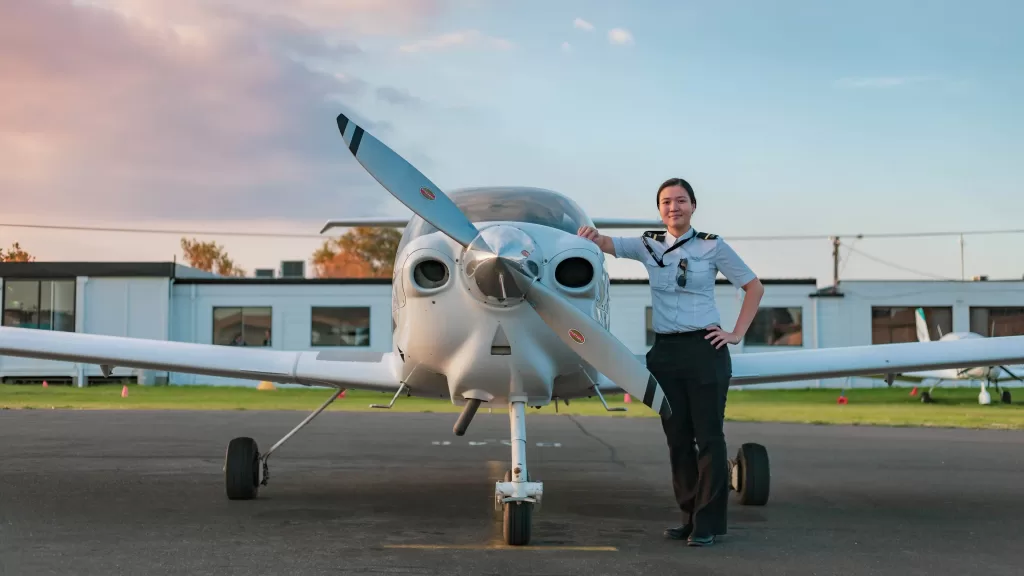
Want to fly with us? Email [email protected]. You can also visit https://drift.me/learntofly/meeting to book a meeting and school tour. For more great flying tips and the latest flying videos, click below and subscribe to our YouTube channel!
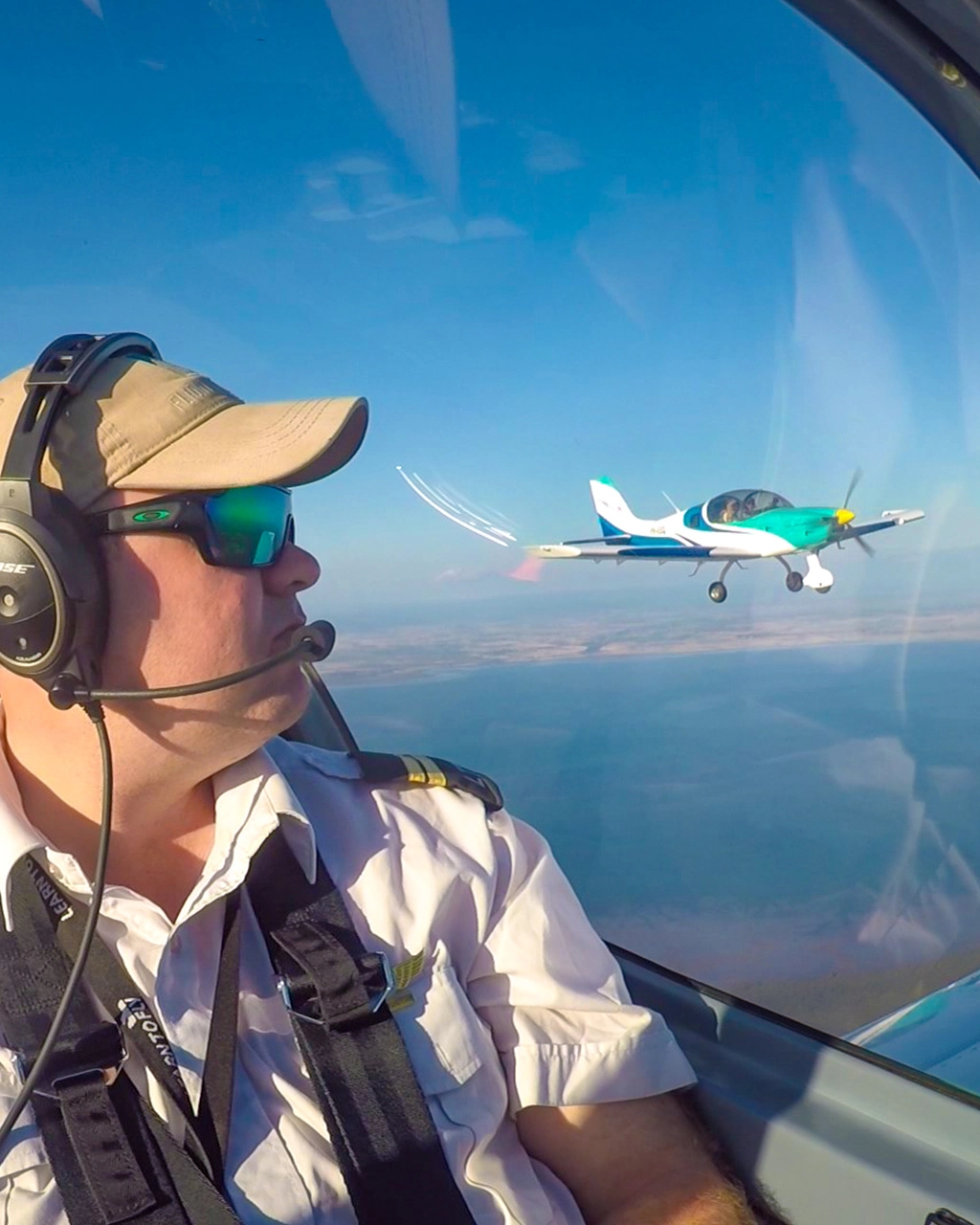
Training Beyond the Private Pilot Licence (PPL)
After completing your Private Pilot Licence you might wonder, “what’s next?” As strange as it may sound, many pilots are still keen to do more training after achieving their initial goals. Realistically, if you want to fly regularly or as a job, learning is ongoing. Let’s take a look at training beyond the Private Pilot Licence.
Fly more aircraft types
Why limit yourself to flying just the one aircraft type? Why not fly aircraft that are bigger, faster, have more than one engine, or maybe even can land on water?! There are ratings and endorsements that can open up a whole new range of aircraft to you. These include a Tailwheel Undercarriage Endorsement, Multi-Engine Class Rating, and more.
Having the capability to fly more aircraft types increases your skill level, and gives you a lot more options when organising recreational flying trips.
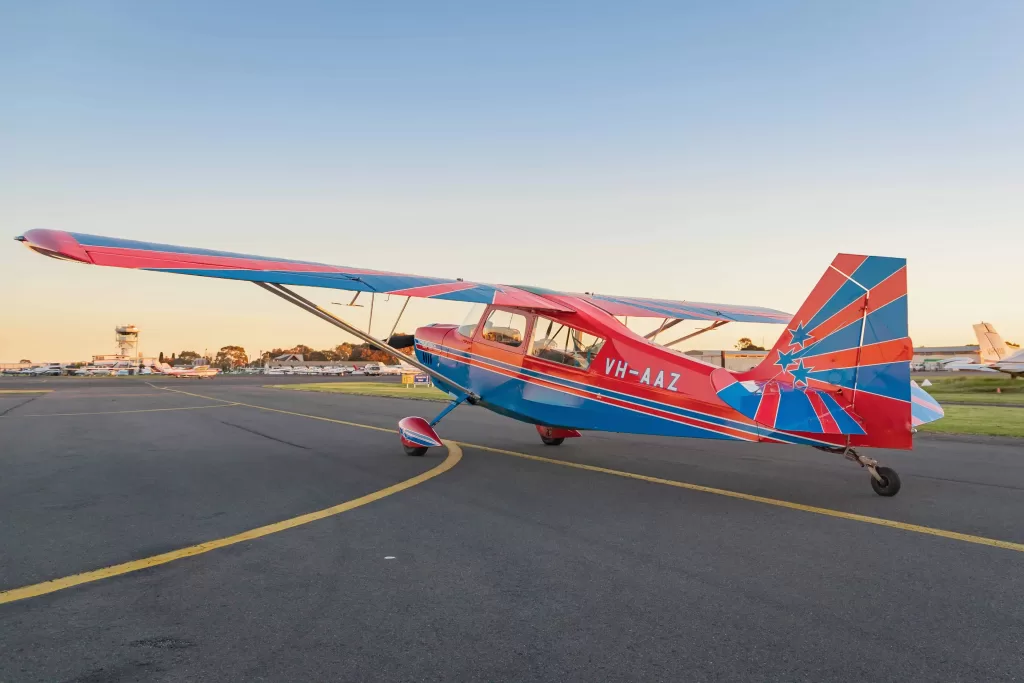
Fly at night
Flying at night is an amazing experience. If you live near a major city, seeing the sparkling lights from above is absolutely spectacular. Completing a Night Visual Flight Rules (VFR) course. will allow you to fly at night, in otherwise good weather and visibility conditions.
Fly in more weather conditions
One of the most important areas of training beyond your Private Pilot Licence will allow you to plan and conduct flights in far more weather and light conditions. Instrument flying is a great skill to have, not just for your own flying abilities, but for added convenience when planning flights. It allows you to fly in inclement weather conditions, cloudy conditions, and at night.
Flying under Visual Flight Rules (VFR) alone can be quite restrictive, especially in areas with changeable weather like Melbourne. A Private Instrument Flying (PIFR) course can be customised to your needs, making it a great option.
Flight activity endorsements
There are some seriously fun flight activity endorsements that you can add to your repertoire.
Formation flying is an experience that even the most seasoned pilots get a huge thrill from. Taking off, flying, performing manoeuvres and landing with another aircraft right next you is surreal. Flying in formation is also a very good tool for honing your precision skills, with precise control movements required for accuracy.
Another popular endorsement is aerobatics and spinning. Aside from being a huge amount of fun, this type of flying is again great for your skillset. Knowing how your body reacts and how you can recover from high G situations and unusual attitudes is actually very important.
As you can see, there is no shortage of options for training beyond your Private Pilot Licence. Additional endorsements will enhance your ability to get the most out of your PPL, and also help you to keep your skills sharp.

Find out about our extensive range of ratings and endorsements for PPL holders! Email [email protected]. You can also visit https://drift.me/learntofly/meeting to book a meeting and school tour. For more great flying tips and the latest flying videos, click below and subscribe to our YouTube channel!

6 Ways to Improve Flight Training Efficiency
We are always thinking about ways to help our students get the most out of their flight training course. We believe it’s so important for students to be able to motivate themselves as they work through their training hours. Part of this is applying efficient learning tactics that keep everything progressing at a healthy rate. We are always looking for ways to improve flight training efficiency.
Efficient flight training results in less money and time spent, as well as an overall boost in learning gains over a period. So from every angle, there’s a benefit to the student who finds ways to learn more efficiently. Here are five to get the ball rolling!
1. Preparation
Make it a goal to come prepared. Student pilots who do preparation before their training get more out of their lessons. It makes sense that you have tried to improve your theoretical understanding of flying in between training sessions, you can more or less just work that into practice when you arrive on your training days.
Preparation can mean:
Doing practice radio calls
Studying theory
Knowing the flying pattern
Learning procedures at the training airport
Ask your instructor for details about your next lessons, and for ideas on any extra study that could help you get the most out of it. They will be happy to help!
2. Flight Simulation
Technology has a lot to do with efficiency. If your flying school has a Flight Simulator, you should be making use of it. For the first few lessons of flight training in particular, a Flight Simulator can help you get used to flying procedures. Learning these procedures in the simulated environment first means that time spent in the real cockpit can be used to test this knowledge rather than build its foundation, and it gives you more of an opportunity to hone other aspects of flying.
3. Teamwork
Find a peer to connect with over the course of your flight training. The enthusiasm generated between fellow enthusiasts becomes self-perpetuating and the interaction, both in the air and on the ground, can be highly motivating. If you’re generally quite hard on yourself, this is a great way to get another perspective on the training process and a greater boost from each of your achievements along the way.
4. Reflection
As a student, you should be thinking about the process of flying while on the ground as one of the ways to improve flight training efficiency. This will help you to focus your mind during flight, and get used what to expect and how the flight should progress. It will also help you to get ahead of the aircraft when transitioning to different stages of the flight, such as from take-off to the climb and then cruise.
5. Look for schools offering value
Look for a good flying school with high standards, and when comparing different schools think about them based on the value they offer you. Value doesn’t just mean finding the cheapest course. It combines quality of instruction, aircraft, facilities and of course, pricing. Find out if the school you’re looking at has instructors with a passion for mentoring others, and are not only accruing their teaching hours in order to get into other jobs. High standard flying schools all have one thing in common: they’re there for you, the student!
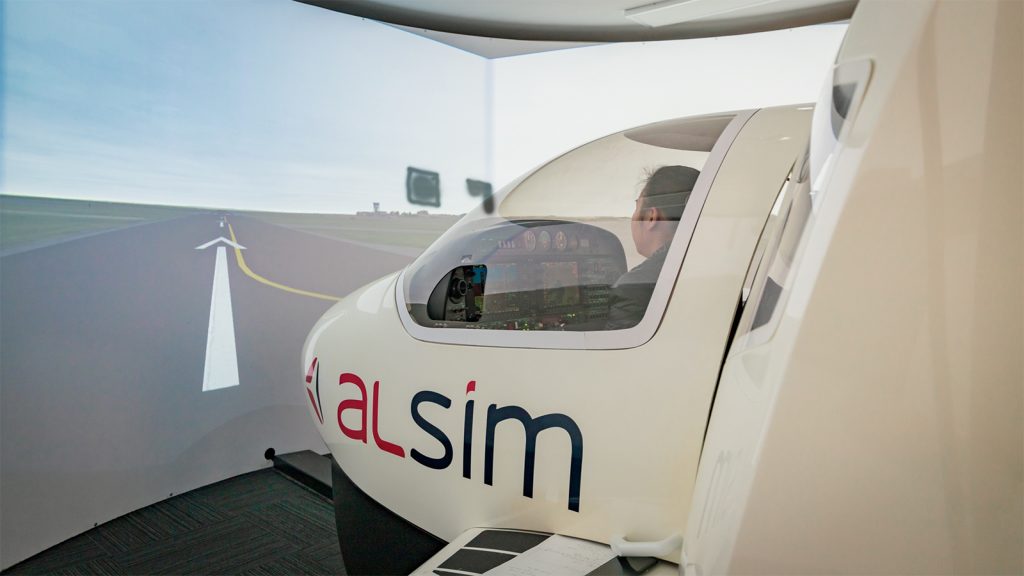
Find out how we can improve your flight training efficiency! Email [email protected]. You can also visit https://drift.me/learntofly/meeting to book a meeting and school tour. For more great flying tips and the latest flying videos, click below and subscribe to our YouTube channel!
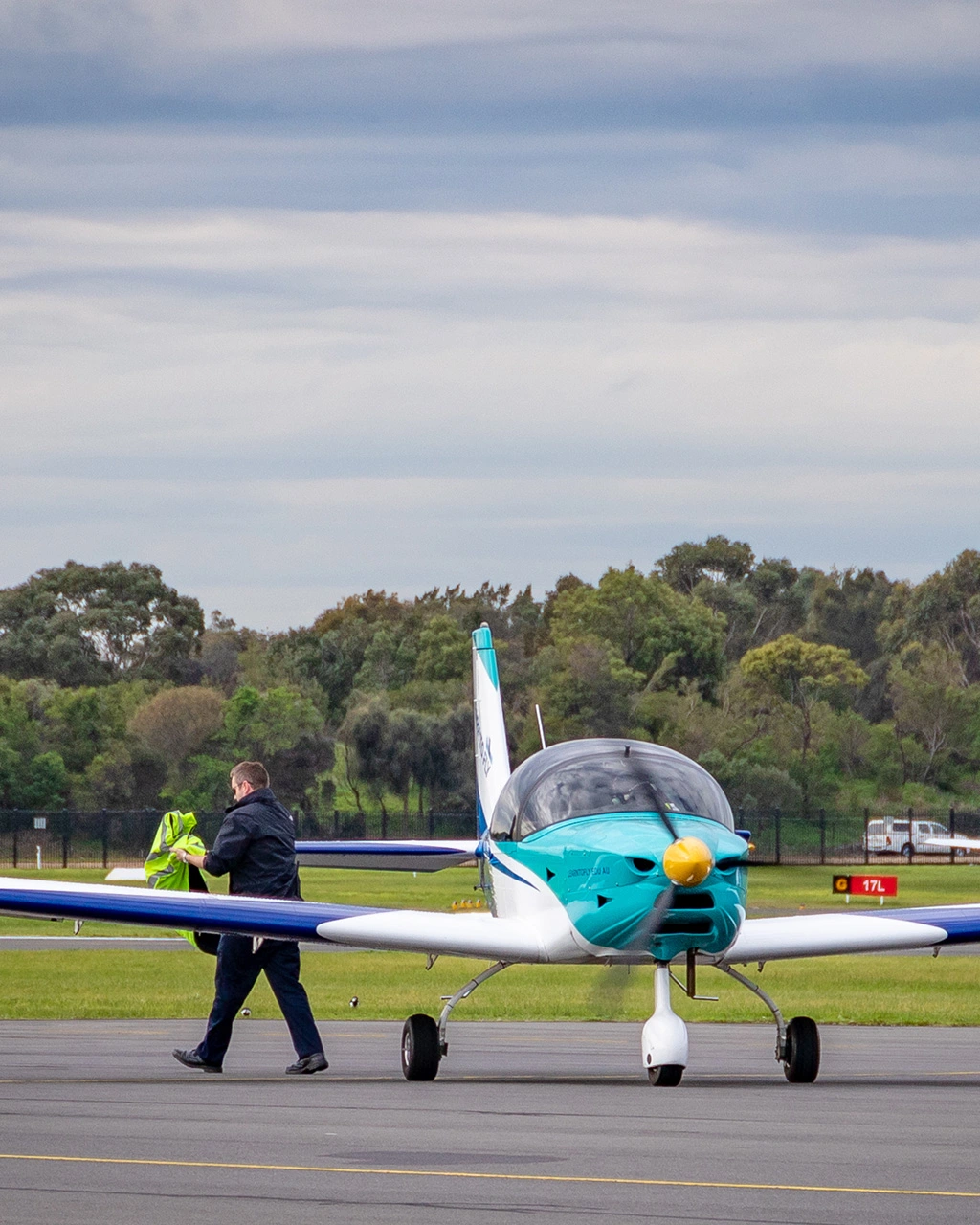
4 Important Tips to Help You Prepare For Your First Solo Flight
The time is here! Your very first solo flight! Just like the time you first drove your car alone after getting your licence, the feeling of flying solo can be exhilarating, but very overwhelming. There’s also a higher margin of error, as your instructor will not be next to you to guide you. But, once you’ve read these few tips to help you prepare for your first solo flight and completed all the solo flight training requirements, you’re ready to feel the independence that comes from flying solo!
Go easy on yourself
Remember, you are still learning. Just as when you were first learning how to drive, your reflexes were much slower, you weren’t that good at changing lanes or braking smoothly or at the dreaded parallel parking. That first solo drive must have been nerve-wracking, and you might have wanted to stop the car in the middle of the road and take off running.
Learning how to fly is much the same. You might get frustrated at the time it is taking you to master a new skill or learning how to land safely. But it is important to remember that calm and collected pilots make safe pilots. Stress and anxiety can affect our decision-making powers, thus putting us at risk of making even more mistakes! Remember to take a deep breath before each lesson and remind yourself that you’ve got this, even if it seems like it is taking forever!
Listen to your instructor
Your first solo flight will typically involve successfully taking off, completing a circuit pattern and safely touching back down on the ground without the help of an instructor. To prepare for your first solo flight, you will complete this exact same flight many times with your instructor sitting next to you. Use that time to soak up as much information you can, and use your instructor’s experience.
It’s very important that you listen to everything your instructor tells you, and that you are open to their advice and suggestions. Flight instructors have seen many pilots before you, all with different learning styles and different strengths and weaknesses. When an instructor identifies a weakness in your flying, this is the best opportunity to listen, learn, and make it into a strength.
Mental rehearsal and practice on the ground
In the days leading up to your first solo flight, practice flying mentally. This involves sitting on a chair and visualising that you are flying the circuit and thinking of how to fly the plane. It’s not even a bad idea to do this after every flight lesson, in order to make your movements muscle memory. This will save you time trying to figure out what comes next when you actually fly solo when it comes to procedures, radio talk and check as these things will already have become automatic by then. This method of training is also known as “chair flying”.
You can also prepare for your first solo flight by using a flight simulator. A flight simulator allows you to understand the controls and mechanics of the cockpit and repetitively practise taking off, manoeuvring, and touching down without ever leaving the ground. This is a safe way to gain the skills and expertise required to be able to fly solo.
Trust yourself
Finally, once you have successfully completed your solo flight training and your instructor deems that you are ready to take the aircraft on your first solo flight, it is important to trust yourself and trust the skills you have been taught. Get some good sleep every time before a solo flight and don’t let the negative thoughts take over. You know what you are doing and you have practised hours upon hours for this, both physically and mentally.
It might seem daunting at first, but once you step into the cockpit, you are likely to remember everything you have been taught and you will successfully complete your first solo flight like a bird flying in the sky—naturally and effortlessly. You’ve got this!
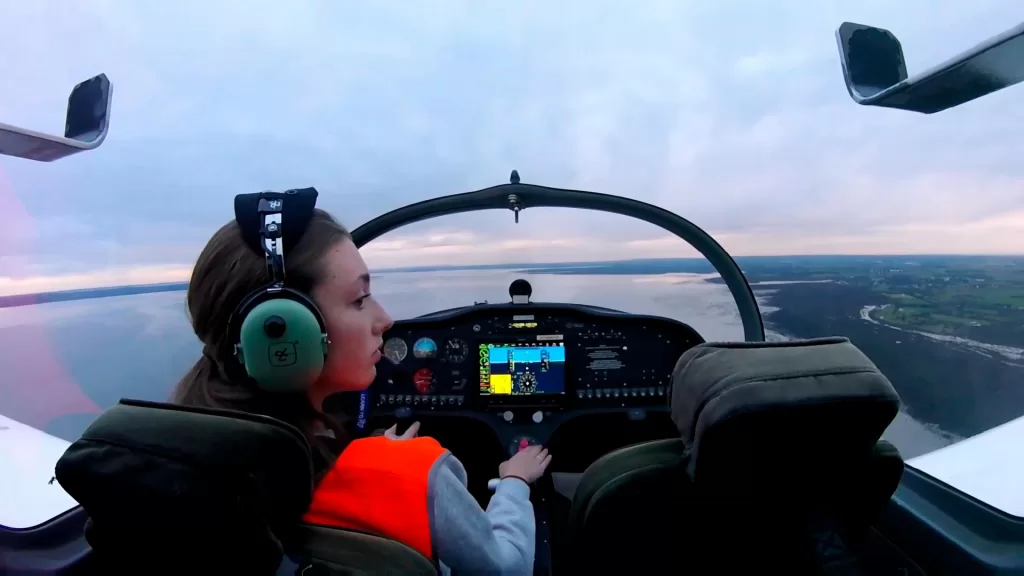
Want to experience flying solo? We have a range of courses to get you there. Email [email protected]. You can also visit https://drift.me/learntofly/meeting to book a meeting and school tour. For more great flying tips and the latest flying videos, click below and subscribe to our YouTube channel!
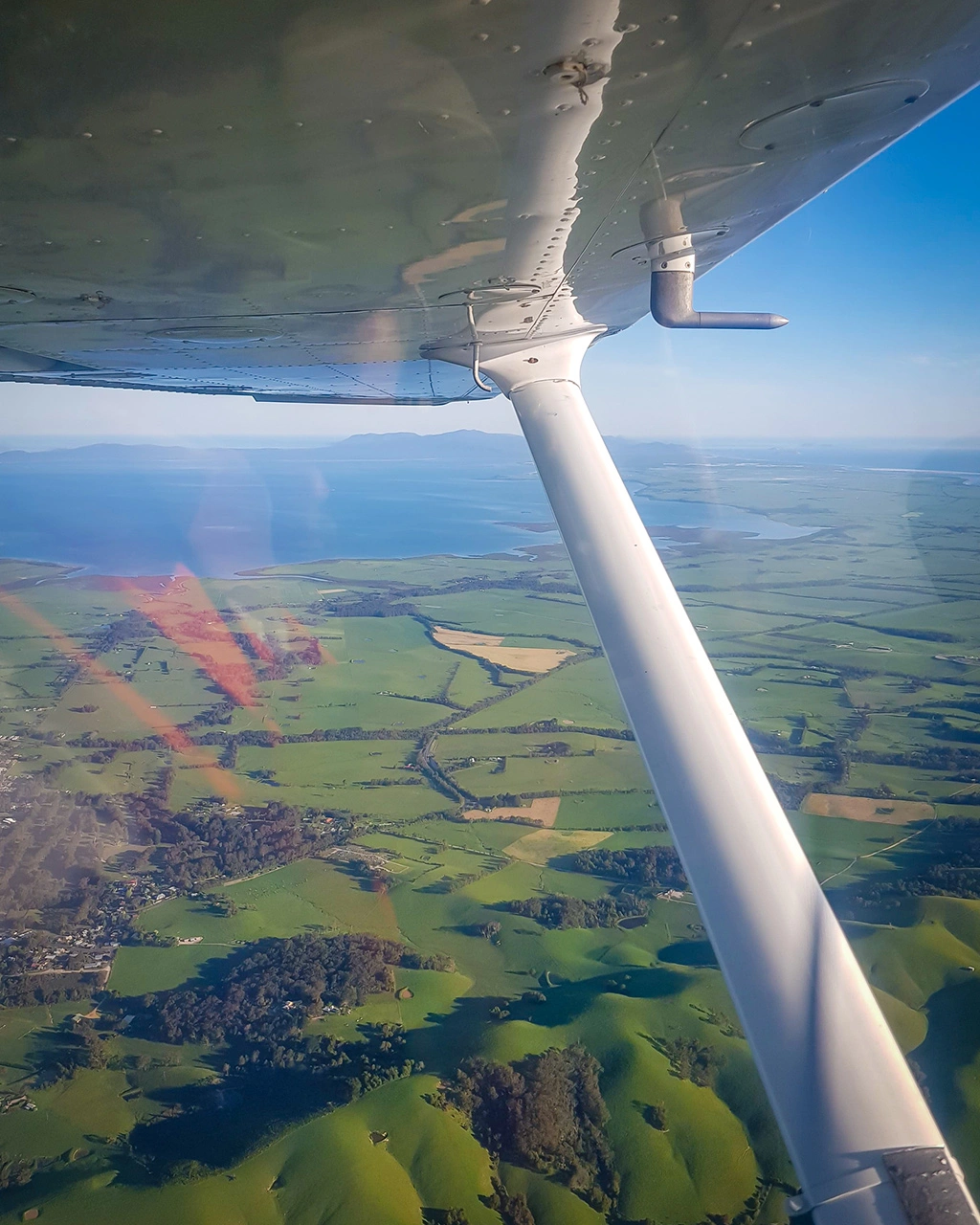
What is the Difference Between RPL and PPL?
It’s a common misconception that you must choose to between completing a Recreational Pilot Licence (RPL) or a Private Pilot Licence (PPL) when you start flight training. But they’re actually two milestones on the same flight training journey. But what is the difference between RPL and PPL?
It’s less about which licence you choose, but rather how far you want to take your flight training. Each licence and endorsement you earn along the journey will give you different skills and expand your freedom when you’re up in the air. It can be helpful to know what each licence entails so you can start planning your own flight training journey.
First stop: Recreational Pilot Licence (RPL)
A Recreational Pilot Licence (RPL) is the starting point for your pilot training. Whether you are training for fun or for a career in aviation, the Recreational Pilot Licence will be your first major milestone.
The RPL program will teach you basic flying techniques including climbing and descending, take-off and landing, dealing with emergencies etc. Every flight lesson will start with a classroom briefing on the techniques before they’re put into practice. You’ll need to pass several theory exams as well as complete practical flight training.
With a Recreational Pilot Licence, you’ll be able to fly as a Pilot in Command of a single-engine aircraft under the maximum take-off weight (MTOW) of 1500kgs, within a boundary of 25 nautical miles from the departure airport. This distance limitation is the main difference between RPL and PPL.
Next stop: Private Pilot Licence (PPL)
After completing your RPL, you can continue on to get your Private Pilot Licence (PPL). The PPL training focuses mainly on navigation. During the PPL training, you will learn how to navigate to and from different airports. You will go through the following steps:
1. Take-off, navigate around the ranges and control steps
2. Fly to a different airport and land
3. Take-off and navigate back to the original airport
Similar to the RPL program, you will need to pass several theory exams as well as complete practical flight training.
Once you have received your Private Pilot Licence, you will be allowed to act as a Pilot in Command and be endorsed to fly anywhere in Australia. You will also be able to carry up to five passengers and fly all over Australia.
If you decide that you want to continue towards a career as a pilot, your next step will be Commercial Pilot Licence (CPL) training syllabus.
It’s up to you how far you take your flight training, and you don’t need to have your journey planned when you first start out. Now you know the difference between RPL and PPL. But be warned, once you’ve gotten a taste for flying through the RPL it’s hard not to catch the bug and want to keep going!
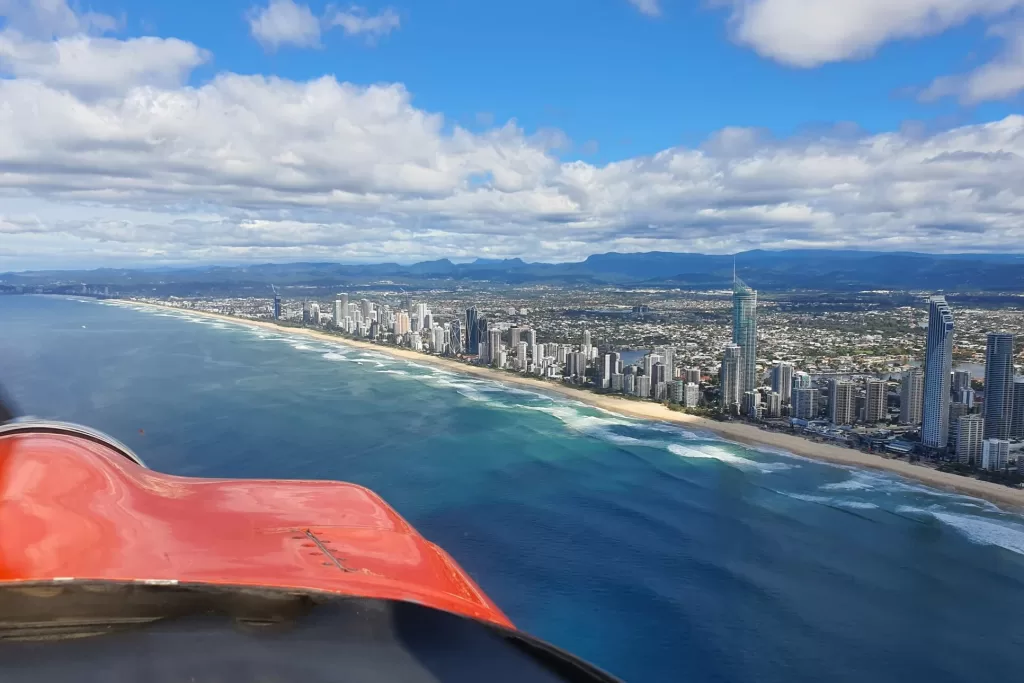
Complete your RPL or PPL with us! Email [email protected]. You can also visit https://drift.me/learntofly/meeting to book a meeting and school tour. For more great flying tips and the latest flying videos, click below and subscribe to our YouTube channel!










